Melaleuca decussata
Melaleuca densa
Melaleuca ericifolia
Melaleuca formosus
Melaleuca groveana
Melaleuca Hinchinbrook
Melaleuca hypericifolia
Melaleuca irbyana
Melaleuca lateritia
Melaleuca leucadendra
Melaleuca linariifolia
Melaleuca linearis
Melaleuca microphylla
Melaleuca nervosa
Melaleuca nesophila
Melaleuca nodosa
Melaleuca pachyphyllus
Melaleuca pallidus
Melaleuca pearsonii
Melaleuca polandii
Melaleuca quinquenervia
Melaleuca recurvus
Melaleuca rigidus
Melaleuca salicina
Melaleuca sieberi
Melaleuca spathulata
Melaleuca squamea
Melaleuca squarrosa
Melaleuca styphelioides
Melaleuca subulatus
Melaleuca tamariscina
Melaleuca thymifolia
Melaleuca uncinata
Melaleuca viminalis
Melaleuca viridiflora
Melaleuca williamsii
Melanthera biflora
Melastoma affine
Melia azedarach
Melichrus adpressus
Melichrus hirsutus
Melichrus procumbens
Melichrus gibberagee
Melichrus urceolatus
Melicope elleryana
Melicope hayesii
Melicope micrococca
Melicope rubra
Melicope vitiflora

Capalaba Qld.

Capalaba Qld.
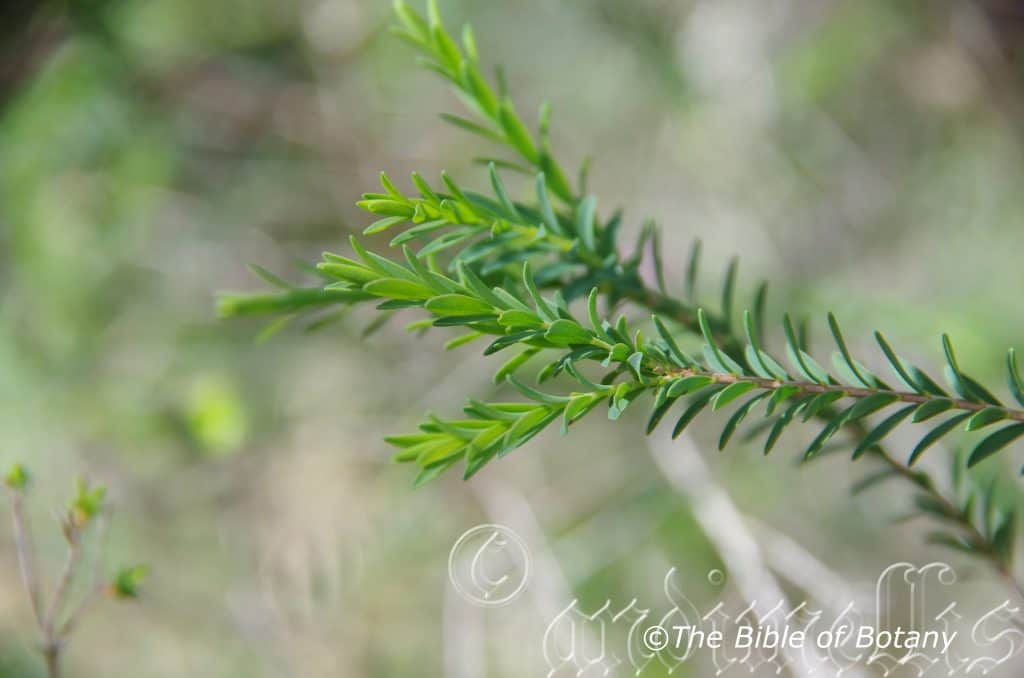
Capalaba Qld.
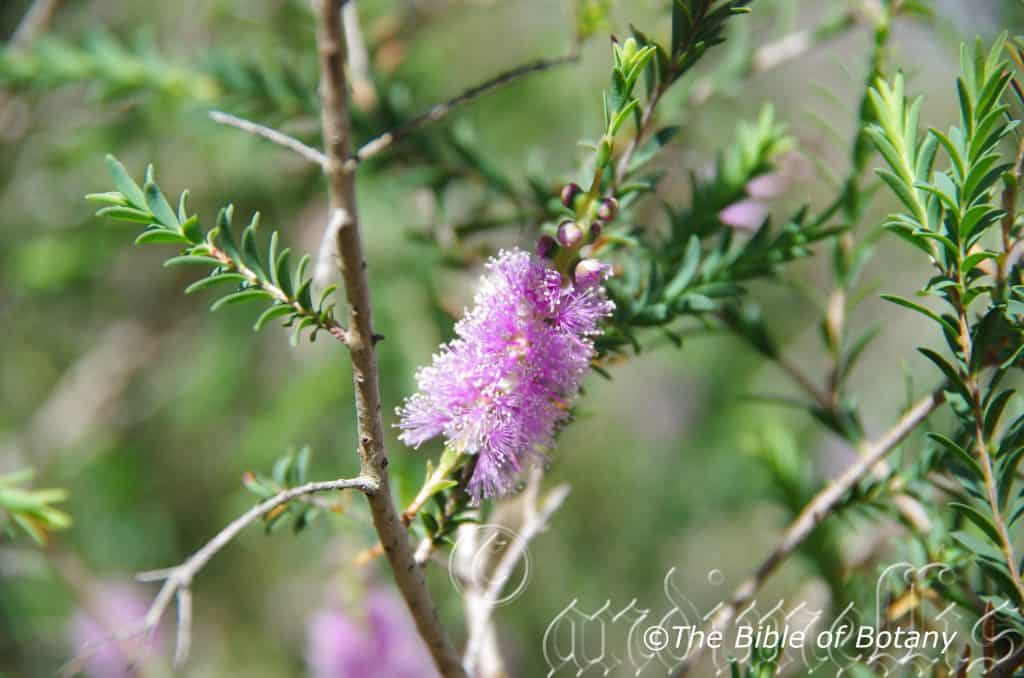
Capalaba Qld.

Capalaba Qld.
Melaleuca decussata
Classification:
Division: Eudicots
Division: Rosids
Order: Myrtales
Family: Myrtaceae
Subfamily: Myrtoideae
Tribe: Melaleuceae
Genus: From Melas, which is Ancient Greek for black and Leukos, which is Ancient Greek for white. It refers to plants, which usually have white papery barks that are often charred by fire thus the bark is black and white.
Specie: From Decussatum, which is Latin for having opposite leaves arranged alternatively at right angles. It refers to plants, which have the leaves arranged opposite and at right angles.
Sub species:
Common Name: Cross-leaf Honey Myrtle or Totem poles.
Distribution:
Melaleuca decussata is found east of Corrobinnie Hill and Mount Dutton in southern central South Australia to the Glenmaggie Flora Reserve.in central eastern Victoria.
https://avh.ala.org.au/occurrences/search?taxa=Melaleuca+decussata#tab_mapView
Habitat Aspect Climate:
Melaleuca decussata prefers full sun to light dappled shade. It usually grows adjacent to swamps coastal wallums or moist woodland heaths. The altitude ranges from 2 meter ASL to 828 meters ASL.
The temperatures range from minus 4 degree in August to 36 degrees in January.
The rainfalls range from lows of 300mm to an average of 900mm.
Rainfall is not as important as the terrain as the plants are often associated with marshy ground or flats that are seasonally inundated.
Soil Requirements:
Melaleuca decussata prefers poorer sandy loams to fine and course sands. The soils are usually derived from decomposed granite or sandstone. The soils pH. ranges from 4.5pH to 7.5pH. It usually avoids waterlogged soils and prefers sites that suffer from seasonal inundation and flooding. Non saline soils to extremely saline soils are tolerated as are salt laden winds.
Height & Spread:
Wild Plants: 2m to 3m by 2m to 3m.
Characteristics:
Melaleuca decussata’s is a densely branched shrub with a tight papery white to pale grey bark on the trunk and main stems. The new growth is glabrous and a pale, bright, yellow-green.
Melaleuca decussata‘s decussate leaves are arranged so that the leaves are in 4 rows along the stems. The linear, narrow elliptic or ovate and measure 4.5mm to 15mm in length by 0.5mm to 3mm in width. The leaves are somewhat concave in cross section. The base tapers to the stem, while the apex is acute. The concolourous laminas are deep green to deep sea-green and glabrous. Immature leaves are pale lime-green and glabrous. The main vein and lateral veins are not prominent on either lamina. The leaves are sessile or sub sessile. The subsessile petioles are glabrous and pale, bright, yellow-green. Despite having several prominent oil glands on their lower surface do not emit an odour when crushed.
The inflorescence of Melaleuca decussata has a single spikes born from the terminals, which grow out prior to opening. The rachis is glabrous and measures 20mm to 32mm in length by 14mm to 16mm in diameter. The pale pink to pale purple flowers rapidly fade to off white. There are 10 to 22 individual flowers along the spike in the globular head. They measure 6mm to 8mm in diameter. The 5 broad ovate petals are translucent pale pink to pale purple and measure 1.8mm to 2.3mm in diameter. The petals are persistent while the stamens fully develop but are dehiced shortly after fertilization.
The stamens are the most prominent part of the flowers. There are 12 to 26 stamens in each of the five claws. The claws measure 2mm to 3.5mm in length while the filaments measure 7mm to 8mm in length. The anthers and pollen are white.
The long, slender, deeper pink to purple style measures 10mm to 14mm in length. The base of the style is surrounded by the nectaries. The flowers, appear from early late August to early May with the peak being in November to February.
Melaleuca decussata‘s fruit is a sessile, cupped capsule are often fused together. The pale grey woody capsules measure 3mm to 3.5mm in length by 3mm to 3.5mm in diameter. The orifice is only slightly enclosed and measures 1.5mm to 2.5mm in diameter. The seeds are rusty-brown and are longer and thicker than the chaff.
Wildlife:
Melaleuca decussata supports native bees, native flies, native beetles and butterflies when in flower. It is one of the best Melaleuca species for attracting the many beautiful beneficial insects that coexist in our gardens.
Cultivation:
Melaleuca decussata is a beautiful upright bushy shrub for native gardens. It is suitable on all types of soils from sandy loams to heavy clays and are most suitable for small, medium and large gardens close to the coast in warm temperate, sub tropical gardens or semi-arid gardens. As garden subjects it will grow from 2.5 meters to 3.5 meters in height by 2.5 meters to 3.5 meters wide when grown in the open. It is cold tolerant to temperatures to minus 5 degrees once established but are very slow to establish itself and will suffer some tip burning and discolouration of the foliage in temperatures below this even when established. It will commence flowering from an early age even from seed. I have seen well grown shrubs with good flowers at only 3 of age.
It is very fast growing especially with a good fertilizing program and with a plenty of moisture growing more than 1 meter a year. To avoid stress and increase flowering the following season, give the plants a double dose of our recommended fertilizer following flowering and a good deep soaking mid-way through the dry season if good rains have not fallen or the sub soil becomes dry. This will prevent further stress and hold them over for several more months.
It can be used for light dappled shade and is an excellent shrub for areas that have drainage problems on light clay soils to heavy clay soils or on sandy soils where there is a seasonal or long term problems with the water tables coming to the surface or water lies for prolonged periods. When planting the shrubs in a heath scene scatter them using at least one in the foreground so the flowers can be fully enjoyed.
Try using it in an informal or formal manner in front of the house. Placed in from the corner they will breaking up rigid lines and soften the structures overall appearance. At the same time it can be used to highlight the contrasts between the two. On high set homes this can be achieved by planting a taller melaleuca like Melaleuca decora, Melaleuca viminalis or an upright form of Melaleuca citrina as a tree with 2 to 5 shrubs like Melaleuca pachyphyllus red flowering forms, Melaleuca pearsonii or Melaleuca pungens mixed together surrounding the base of the tree.
Plant them together with unequal gaps and free flowing curves to accentuate height and depth in front of large factories as it can really bring a park like scenario, peace and serenity to the work place. Use wider spacing where the building in the background is seen as dappled specks will soften it and where it is planted closer together will give a bolder contrast between the two. The red flowers of Melaleuca citrina during spring and early summer will complement the pale pink and lilac flowers when flowering simultaneously or extend a flowering period when flowering seperatly.
For a bush garden start with a small patch of three to five Melaleuca decussata as your feature shrubs and use Melaleuca pachyphyllus red flowering forms, Melaleuca pearsonii or Melaleuca pungens or other small red flowering Melaleuca‘s with large leaves at the sides so that the pale purple flowers are highlighted. These four plants will give a great contrast in colour and leaf shape. Scatter plant the area with other prostrate and vertical leaf plants in between to cover the ground in a mass of contrasting foliages. The flower colours will not be important and will be a fantastic bonus to be enjoyed for years to come.
It can be regularly tip pruned if a small hedge is required. This can be maintained with regular pruning in the early years and planting closer together with spacing of 1.5 meters. It responds very well to tip pruning, recovering quickly and increasing the number of terminal points for flowers in the following season.
Place 3 or 4 of them off center of a large rockery with other large or finer leaf ground covers and very small shrubs in the front. Plants with white or yellow flowers can be used where the pink flowering forms are used. Use pink, red or purple flowers in fore ground and background. This will lead your eyes directly to the array of vivid pink and purple flowers and the beautiful deep pink to salmon coloured leaves on the new growth and the pendulous branchlets for a longer period.
When mass or group planting Melaleuca decussata, use curves and irregular patterns in the garden beds so they can be viewed from different angles around the garden. There greatest potential in the garden is in attracting small native insects.
The plants should be monitored in Victorian gardens, as several locations have shown signs that the plant is spreading outside its natural range and is becoming a pest within its native range in Victoria.
Propagation:
Seeds: Melaleuca decussata seeds can be sown directly into a seed raising mix. Do not cover the seeds. Press them into the mix. Place the tray in a warm sunny position. When the seedlings are 15mm to 20mm tall, prick them out and plant them into 20mm native tubes using a good organic mix.
When the seedlings are 70mm to 90mm tall, prick them out and plant them into 50mm native tubes using a good organic mix or plant them out into their permanent positions.
Once the seedlings reach 150mm to 200mm in height they can be planted out into their permanent position.
Cuttings: Use 100mm to 150mm long half ripened material when growing from cuttings from the present season’s growth. Take them in warmer months of the year. Remove half the leaves from the bottom section being careful not to tear the bark.
1 Prepare the cutting mix by adding one third sharp clean river sand, one third peat and one third perlite. These ingredients are sterilize,
2 Select good material from non diseased plants,
3 Select semi green stems for cuttings. Look for a stem with two or three nodes,
4 Place the cutting on a flat, hard surface, and make a clean cut down one side of the cutting at the base for 10mm with a sharp sterile knife or razor blade. – This scarification of the node will increase the chances of roots emerging from this spot. Now remove all but one or two the leaves, leaving the apex leaves in tact. If the leaves are very large in proportion to the stem, cut off the apical halves.
5 Fill a saucer with water, and place a little medium strength rooting hormone into another container like a milk bottle top. Dip the node end of the cutting into the water and then into the rooting hormone. Tap off any excess hormone,
6 Use a small dipple stick or old pencil to poke a hole into the soilless potting mix. Ensure the hole is slightly larger than the stem diameter and be careful not to wipe the rooting hormone off the cuttings base, place the cuttings in a pattern ensuring the cuttings are not touching each other,
7 I like to place the pots in Plastic bags to help maintain temperature and moisture. Place in a semi shaded place like under 50mm shade cloth.
8 When the cuttings have struck, open the bag to allow air circulation for a few days to a week,
9 Once hardened off remove the cuttings from the bag and allow to further hardening for a few more days,
10 Transplant into a good potting mix to grow on.
Fertilize using seaweed, fish emulsion or organic chicken pellets soaked in water on an alternate basis. Fertilize every two months until the plants are established then twice annually in early September or March to maintain health, vitality and better flowering.
Further Comments from Readers:
Hi reader, it seems you use The Bible of Botany a lot. That’s great as we have great pleasure in bringing it to you! It’s a little awkward for us to ask, but our first aim is to purchase land approximately 1,600 hectares to link several parcels of N.P. into one at The Pinnacles NSW Australia, but we need your help. We’re not salespeople. We’re amateur botanists who have dedicated over 30 years to saving the environment in a practical way. We depend on donations to reach our goal. If you donate just $5, the price of your coffee this Sunday, We can help to keep the planet alive in a real way and continue to bring you regular updates and features on Australian plants all in one Botanical Bible. Any support is greatly appreciated. Thank you.
In the spirit of reconciliation we acknowledge the Bundjalung, Gumbaynggirr and Yaegl and all aboriginal nations throughout Australia and their connections to land, sea and community. We pay our respect to their Elders past, present and future for the pleasures we have gained.
Melaleuca densa
Classification:
Division: Eudicots
Division: Rosids
Order: Myrtales
Family: Myrtaceae
Subfamily: Myrtoideae
Tribe: Melaleuceae
Genus: From Melas, which is Ancient Greek for black and Leukos, which is Ancient Greek for white. It refers to plants, which usually have white papery barks that are often charred by fire thus the bark is black and white.
Specie: From Densus, which is Latin for packed close together. It refers to foliage or at times flowers, which bloom in profusion.
Sub species:
Common Name: Western Honey Myrtle or Lemon Honey Myrtle.
Distribution:
Melaleuca densa is found south from the southern Swan River Coastal Plain to the Esperance Coastal Plains near Albany.
https://avh.ala.org.au/occurrences/search?taxa=Melaleuca+densa#tab_mapView
Habitat Aspect Climate:
Melaleuca densa prefers full sun. It grows on moist flats, along rivers, in swamps and wet woodland heaths, Eucalyptus woodlands, tall heaths or sedge heaths. The altitude ranges from 2 meter ASL to 220 meters ASL.
The temperatures range from minus 2 degrees in August to 36 degrees in January.
The rainfalls range from lows of 450mm to an average of 1600mm however this is little consequence as the plants grow where there is permanent ground water.
Soil Requirements:
Melaleuca densa prefers poor to average quality sandy loams to medium clays or meander silts. The soils are usually derived from decomposed sandstone, laterites or granites. The soils pH. ranges from 5pH to 6pH. It tolerates seasonal waterlogged soils and seasonal high water tables. Non saline soils to moderately saline soils are tolerated as are salt lade winds.
Height & Spread:
Wild Plants: 0.5m to 2.5m by 1m to 2m.
Characteristics:
Melaleuca densa grows as a small erect or spreading shrub with pale cream to creamy fawn, papery bark. The smaller stems are creamy to pinkish-purple and slightly spongy to the touch. The branchlets are purple to purple-pink with white longitudinale lenticels.
Melaleuca densa’s crowded decastate, deltoid to ovate leaves measure 6mm to 8mm in length by 5mm to 7mm in width. The leaves are sessile while the bases are truncate while the apexes are broad acute to broad acuminate with a short pungent mucronate tip. The coriaceous, concolourous laminas are deep blue-green, dull and glabrous. Immature leaves are paler with a pinkish to salmon-pink tinge. The mid vein is slightly prominent on the lower lamina. The margins are entire.
The inflorescence of Melaleuca densa is a single dense spike born from the terminal shoots. The terminal shoots do not grow out before the flowers finish blooming. The rachis is glabrous and measures 24mm to 36mm in length by 25mm to 30mm in diameter. The flowers are born singularly with in each bract. There are 35 to 48 individual flowers on a spike. The 5 orbicular petals are creamy-green and measure 1.8mm to 2mm in length by 1.8mm to 2mm in width. It is persistent while the stamens fully develop. The new growth develops but does not grow out before the flowering is completed.
The cream to yellow stamens are the most prominent part of the flowers. The claws are opposite the petals. The filiform filaments measure 10mm to 13mm in length including the claws which measure 1.5mm to 2mm in length. The anthers are a deeper base colour of the filaments with cream pollen.
The short, slender, cream to yellow style measures 8mm to 12mm in length. The base of the style is surrounded by the nectaries. The honey scented flowers appear from early October to late November.
Melaleuca densa‘s fruits are small, glabrous globose capsules. The capsules measure 3mm to 4mm long by 3mm to 4.2mm in diameter. The enclosed orifice measures 2.5mm to 3.6mm in diameter. The coriaceous capsule is dull pale grey to grey. The capsules may contain hundreds of seeds and chaff. The seeds are deep brown, measure 0.6 to 0.8mm in length and look swollen compared to the chaff.
Wildlife:
Melaleuca densa supports many native bees, native flies, native beetles and butterflies when in flower. It also supports small honeyeaters which scurry over the flowers and seek protection from the bushy foliage.
Cultivation:
Melaleuca densa makes an excellent small dense foliage hedge or small specimen shrubs. It is suitable on all soil types of sandy loams and sandy clays and are most suitable for small, medium and large gardens close to the coast in temperate, sub tropical or semi-arid gardens. As garden subjects it is variable in their habit of growth and will grow from 1 meter to 3 meters in height by 1.5 meters to 4 meters in diameter when grown in the open. It is cold tolerant to temperatures at least as low as minus 6 degrees once established and surprisingly drought tolerant. It is very fast growing especially with a good fertilizing program and with a little moisture growing 1 meter a year.
2 or 3 planted back from a bend will become a very strong focal point whether it is in flower or not in smaller bush gardens or more in larger gardens. Whether you are coming or going they will attract your attention because of the contrasting foliage and stems and the clean look of the foliage even in the driest of times.
They can be regularly tip pruned if a smaller shrub is required. They respond well to tip pruning, recovering quickly and often increasing the number of flowers in the following season. Place them in the mid ground with other large leaf ground covers and very small shrubs in the front. To the rear, use fine leaf taller plants. Plants with pink or purple flowers can be used in both the fore ground and background. This will lead your eyes directly to the array of deep cream to yellow flowers and the unusual blue-green triangular leaves new growth and the pendulous branchlets for a longer period.
They make ideal plants for Bonsai collectors as I have seen some very twisted gnarled specimens on rock ledges and granite outcrops on the Fitzgerald River national Park.
Propagation:
Seeds: Melaleuca densa seeds can be sown directly into a seed raising mix. Cover the seeds with 1mm to 2mm of fine weed free mulch and keep moist. Place the tray in a warm sunny position. When the seedlings are 15mm to 20mm tall, prick them out and plant them into 20mm native tubes using a good organic mix.
When the seedlings are 70mm to 90mm tall, prick them out and plant them into 50mm native tubes using a good organic mix or plant them out into their permanent positions.
Once the seedlings reach 150mm to 200mm in height they can be planted out into their permanent position.
Cuttings: Use 100mm to 150mm long half ripened material when growing from cuttings from the present season’s growth. Take them in warmer months of the year. Remove half the leaves from the bottom section being careful not to tear the bark.
1 Prepare the cutting mix by adding one third sharp clean river sand, one third peat and one third perlite. These ingredients are sterilize,
2 Select good material from non diseased plants,
3 Select semi green stems for cuttings. Look for a stem with two or three nodes,
4 Place the cutting on a flat, hard surface, and make a clean cut down one side of the cutting at the base for 10mm with a sharp sterile knife or razor blade. – This scarification of the node will increase the chances of roots emerging from this spot. Now remove all but one or two the leaves, leaving the apex leaves in tact. If the leaves are very large in proportion to the stem, cut off the apical halves.
5 Fill a saucer with water, and place a little medium strength rooting hormone into another container like a milk bottle top. Dip the node end of the cutting into the water and then into the rooting hormone. Tap off any excess hormone,
6 Use a small dipple stick or old pencil to poke a hole into the soilless potting mix. Ensure the hole is slightly larger than the stem diameter and be careful not to wipe the rooting hormone off the cuttings base, place the cuttings in a pattern ensuring the cuttings are not touching each other,
7 I like to place the pots in Plastic bags to help maintain temperature and moisture. Place in a semi shaded place like under 50mm shade cloth.
8 When the cuttings have struck, open the bag to allow air circulation for a few days to a week,
9 Once hardened off remove the cuttings from the bag and allow to further hardening for a few more days,
10 Transplant into a good potting mix to grow on.
Fertilize using seaweed, fish emulsion or organic chicken pellets soaked in water on an alternate basis. Fertilize every two months until the plants are established then twice annually in early September or March to maintain health, vitality and better flowering.
Further Comments from Readers:
Hi reader, it seems you use The Bible of Botany a lot. That’s great as we have great pleasure in bringing it to you! It’s a little awkward for us to ask, but our first aim is to purchase land approximately 1,600 hectares to link several parcels of N.P. into one at The Pinnacles NSW Australia, but we need your help. We’re not salespeople. We’re amateur botanists who have dedicated over 30 years to saving the environment in a practical way. We depend on donations to reach our goal. If you donate just $5, the price of your coffee this Sunday, We can help to keep the planet alive in a real way and continue to bring you regular updates and features on Australian plants all in one Botanical Bible. Any support is greatly appreciated. Thank you.
In the spirit of reconciliation we acknowledge the Bundjalung, Gumbaynggirr and Yaegl and all aboriginal nations throughout Australia and their connections to land, sea and community. We pay our respect to their Elders past, present and future for the pleasures we have gained.
Melaleuca ericifolia
Classification:
Division: Eudicots
Division: Rosids
Order: Myrtales
Family: Myrtaceae
Subfamily: Myrtoideae
Tribe: Melaleuceae
Genus: From Melas, which is Ancient Greek for black and Leukos, which is Ancient Greek for white. It refers to plants, which usually have white papery barks that are often charred by fire thus the bark is black and white.
Specie: From Erica, which is Latin for heath and Folia, which is Latin for foliage. It refers to plants, which have foliage similar to the exotic Erica genus.
Sub species:
Common Name: In the Aboriginal language it is known as Barlan.
Distribution:
Melaleuca ericifolia is restricted to the coastal districts in the north of its range, extending to the Western Slopes in the south on the mainland. It is found south from Moonee Creek in north eastern coastal New South Wales to the Glenelg River in south western Victoria.
It is also found across the northern third of Tasmania and down the western and eastern coast and coastal ranges. There is a population on Lord Howe Island.
https://avh.ala.org.au/occurrences/search?taxa=Melaleuca+ericifolia#tab_mapView
Habitat Aspect Climate:
Melaleuca ericifolia prefers full sun to light dappled shade. It usually grows in coastal saline swamps, coastal wallums, moist or dry woodlands on the coastal ranges. The altitude ranges from 1 meter ASL to 300 meters ASL.
The temperatures range from minus 3 degree in August to 32 degrees in January.
The rainfalls range from lows of 600mm to an average of 2400mm however this is little consequence as the plants grow where there is permanent ground water.
Soil Requirements:
Melaleuca ericifolia prefers poor to better quality sandy loams to medium clays, creek, stream and river meander silts or coastal accumulated deposits. The soils are usually derived from decomposed fine sandstone shale or at times basalts, alluvial deposits or accumulated peaty beach sands and muds. The soils pH. ranges from 5.5pH to 8pH. It tolerates waterlogged soils and prefers sites that suffer from periodical inundation and flooding. Non saline soils to extremely saline soils are tolerated as are salt laden winds.
Height & Spread:
Wild Plants: 2m to 8m by 2m to 5m.
Characteristics:
Melaleuca ericifolia’s bark on the trunk and main stems is cream. When the thick fibrous papery bark is exposed the under lying bark is pale creamy yellow to creamy pink. The thick corky bark peels and splits as the trunk expands. The branchlets are white, pale cream to pale grey with the bark being tightly wrapped around the stems from an early age, while the newest shoots are pink to pale red-brown and are glabrous. The branches have a spreading habit and the plants vary considerably from having an open habit to densely foliaged as a tree to being very bushy as a shrub. Branches and branchlets are rather rigid.
Melaleuca ericifolia‘s linear to narrow elliptical leaves are in whirls of mostly 3 and measure 7mm to 17mm in length by 1mm to 2mm in width. The petioles measure 0.5mm to 1mm in length. The bases are cuneate while the apexes are acute. The concolourous laminas are deep green to deep sea-green and glabrous. Immature leaves are pale lime-green and glabrous. The main vein and lateral veins are not prominent on either lamina nor are they conspicuous. The leaves are not aromatic when crushed.
The inflorescences of Melaleuca ericifolia are multiple spikes born from the terminals. The flower terminal shoots begin to grow out before the last of the stamens bloom. The rachis is covered in short white tomentose hairs and measures 30mm to 50mm long by 20mm to 28mm in diameter. The flowers are born singly from each bract. There are 20 to 50 individual flowers along the spike in the cylindrical head. The 5 broad ovate to broad elliptical petals are white and measure 1mm to 1.5mm in length by 1mm to 1.5mm in width. It is persistent while the stamens fully developed.
The stamens are the most prominent part of the flowers. There are 7 to 13 white stamens in each of the 5 claws. The claws measure 5mm to 7mm in length while the filaments measure 2mm to 4mm in length. The anthers and pollen are white.
The long, rather thick, pastel lime-green to pale lime-green style measures 7mm to 8mm in length, while the orbicular stigma is pale lime-green. The base of the style is surrounded by the nectaries. The strongly honey scented flowers appear from early late November to late early February.
Melaleuca ericifolia‘s fruit is a sessile, cylindrical capsule. The capsules measure 3mm to 4mm in length by 2.5mm to 3mm in diameter. The orifice is only enclosed and measures 1.5mm to 3mm in diameter. The woody capsules are dull pale grey, dull and resinous. The seeds are rusty-brown and are longer and thicker than the chaff. The calyx lobes are not persistent on the hypanthia. The sepals persistent but obscure at the bae of the capsules.
Wildlife:
Melaleuca ericifolia supports myriads of native bees, native flies, native beetles and butterflies when in flower. It is one of the best Melaleucas for attracting the many beautiful insects that coexist in our gardens. It also supports some small honeyeaters which scurry over the flowers and seek protection amongst the bushy foliage. The shrubs are very popular with the red headed finch as a nesting shrub.
Cultivation:
Melaleuca ericifolia is a beautiful upright bushy shrub for native gardens or a magnificent small tree with spectacular bark which gives dappled light. It is suitable on all types of soils from sandy loams to heavy clays and are most suitable for small, medium and large gardens close to the coast in warm temperate, sub tropical gardens or semi-arid gardens. As garden subjects they will grow from 3 meters to 4 meters in height by 2 meter to 3.5 meters wide as a shrub or 6 meters to 8 meters tall by 4 meters to 5 meters in diameter as a small tree when grown in the open. It is cold tolerant to temperatures to minus 3 degrees once established but are very slow to establish themselves and will suffer some tip burning and discolouration of the foliage in temperatures below this even when established. They will commence flowering from an early age even from seed. I have seen well grown shrubs with good flowers at only 4 and 5 years of age.
It is very fast growing especially with a good fertilizing program and with a plenty of moisture growing more than 1 meter a year. To avoid stress and increase flowering if that is possible the following season, give the plants a double dose of our recommended fertilizer following flowering and a good deep soaking mid-way through the dry season if good rains have not fallen or the sub soil becomes dry. This will prevent further stress and hold them over for several more months.
They can be used for light dappled shade when grown as a small tree. It is an excellent tree for areas that have drainage problems on light clay soils to heavy clay soils or on sandy soils where there is a seasonal or long term problems with the water tables coming to the surface or water lies for prolonged periods. When planting the shrubs in a heath scene scatter them using at least one in the foreground so the flowers can be fully enjoyed.
Try using them in an informal or formal manner in front of the house. Placed in from the corner they will breaking up rigid lines and soften the structures overall appearance. At the same time they can be used to highlight the contrasts between the two. On high set homes this can be achieved by planting 1 as a tree with 2 to 5 shrubs like Melaleuca pachyphyllus red flowering forms, Melaleuca pearsonii or Melaleuca pungens mixed together near the base of the trees. Use only small shrubs or the magnificently decorative bark will be lost amongst the foliage of taller shrubs.
Plant them together with unequal gaps and free flowing curves to accentuate height and depth in front of large factories can really bring a park like scenario, peace and serenity to the work place. Use wider spacing where the building in the background is seen as dappled specks will soften it and where it is planted closer together will give a bolder contrast between the two. Melaleuca ericifolia contrast well with Melaleuca citrina can be used where a bold flowering contrast is warranted for many months of the year. The red flowers of Melaleuca citrinus during spring and summer will complement the white to cream flowers. Coupled with the thick white to pale grey bark protruding from the large deep green leaves of Melaleuca citrina will give a strong contrast throughout the year.
For a bush garden start with Melaleuca ericifolia as your tree and use Melaleuca ericifolia red flowering forms, Melaleuca pearsonii or Melaleuca pungens or other small red flowering with large leaves as the understory for a larger style wallum heath setting. These four plants will give a great contrast in colour and leaf shape. Scatter plant the area with other prostrate and vertical leaf plants in between to cover the ground in a mass of contrasting foliages. The flower colours will not be important and will be a fantastic bonus to be enjoyed for years to come.
A minimum of 200 square meters would be required for a wallum setting. Bog gardens can be made with a minimum of 6 square meters plus the area for a pond. A large area with sandy clay to medium clay base can be used. If the soil is heavy clay then add some course sand to the whole area and turn it over to a depth of 300mm. The sand may sound like an expensive additive but will be worth it in the long term. Now taper the sides up so that the edges are about 100mm to 150mm above the center section. Ensure that there is a drainage point on the lower side of the plain so that when the water fills up it will flow out and away along the natural drainage line. Doing this will act like a natural wallum where water will collect in times of rain below the surface to a depth of 100mm to 150mm. Similar to a what occurs naturally in a small shallow dam. This will save water and watering. Mulches can be used safely on the surface.
They can be regularly tip pruned if a tall hedge is required. This can be maintained with regular pruning in the early years and planting closer together with spacing of 2.5 meters. They respond very well to tip pruning, recovering quickly and increasing the number of terminal points for flowers in the following season.
Place 3 or 4 of them off center of a large rockery with other large or finer leaf ground covers and very small shrubs in the front. Plants with white or yellow flowers can be used where the pink flowering forms are used. Use pink, red or purple flowers in fore ground and background. This will lead your eyes directly to the array of vivid pink and purple flowers and the beautiful deep pink to salmon coloured leaves on the new growth and the pendulous branchlets for a longer period.
Ensure that the whole plant is on display from most sections of the garden as the bark is both very attractive.
When mass or group planting Melaleuca decora, use curves and irregular patterns in the garden beds so they can be viewed from different angles around the garden. There greatest potential in the garden is in attracting small and medium size honeyeaters and their prolonged flowering season.
Propagation:
Seeds: Melaleuca ericifolia seeds can be sown directly into a seed raising mix. Do not cover the seeds. Press them into the mix. Place the tray in a warm sunny position. When the seedlings are 15mm to 20mm tall, prick them out and plant them into 20mm native tubes using a good organic mix.
When the seedlings are 70mm to 90mm tall, prick them out and plant them into 50mm native tubes using a good organic mix or plant them out into their permanent positions.
Once the seedlings reach 150mm to 200mm in height they can be planted out into their permanent position.
Cuttings: Use 100mm to 150mm long half ripened material when growing from cuttings from the present season’s growth. Take them in warmer months of the year. Remove half the leaves from the bottom section being careful not to tear the bark.
1 Prepare the cutting mix by adding one third sharp clean river sand, one third peat and one third perlite. These ingredients are sterilize,
2 Select good material from non diseased plants,
3 Select semi green stems for cuttings. Look for a stem with two or three nodes,
4 Place the cutting on a flat, hard surface, and make a clean cut down one side of the cutting at the base for 10mm with a sharp sterile knife or razor blade. – This scarification of the node will increase the chances of roots emerging from this spot. Now remove all but one or two the leaves, leaving the apex leaves in tact. If the leaves are very large in proportion to the stem, cut off the apical halves.
5 Fill a saucer with water, and place a little medium strength rooting hormone into another container like a milk bottle top. Dip the node end of the cutting into the water and then into the rooting hormone. Tap off any excess hormone,
6 Use a small dipple stick or old pencil to poke a hole into the soilless potting mix. Ensure the hole is slightly larger than the stem diameter and be careful not to wipe the rooting hormone off the cuttings base, place the cuttings in a pattern ensuring the cuttings are not touching each other,
7 I like to place the pots in Plastic bags to help maintain temperature and moisture. Place in a semi shaded place like under 50mm shade cloth.
8 When the cuttings have struck, open the bag to allow air circulation for a few days to a week,
9 Once hardened off remove the cuttings from the bag and allow to further hardening for a few more days,
10 Transplant into a good potting mix to grow on.
Fertilize using seaweed, fish emulsion or organic chicken pellets soaked in water on an alternate basis. Fertilize every two months until the plants are established then twice annually in early September or March to maintain health, vitality and better flowering.
Further Comments from Readers:
Hi reader, it seems you use The Bible of Botany a lot. That’s great as we have great pleasure in bringing it to you! It’s a little awkward for us to ask, but our first aim is to purchase land approximately 1,600 hectares to link several parcels of N.P. into one at The Pinnacles NSW Australia, but we need your help. We’re not salespeople. We’re amateur botanists who have dedicated over 30 years to saving the environment in a practical way. We depend on donations to reach our goal. If you donate just $5, the price of your coffee this Sunday, We can help to keep the planet alive in a real way and continue to bring you regular updates and features on Australian plants all in one Botanical Bible. Any support is greatly appreciated. Thank you.
In the spirit of reconciliation we acknowledge the Bundjalung, Gumbaynggirr and Yaegl and all aboriginal nations throughout Australia and their connections to land, sea and community. We pay our respect to their Elders past, present and future for the pleasures we have gained.
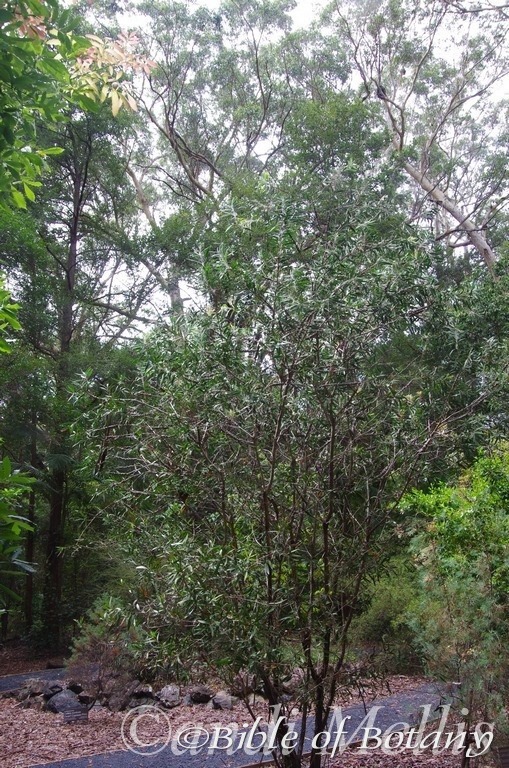
NCBG Coffs Harbour NSW
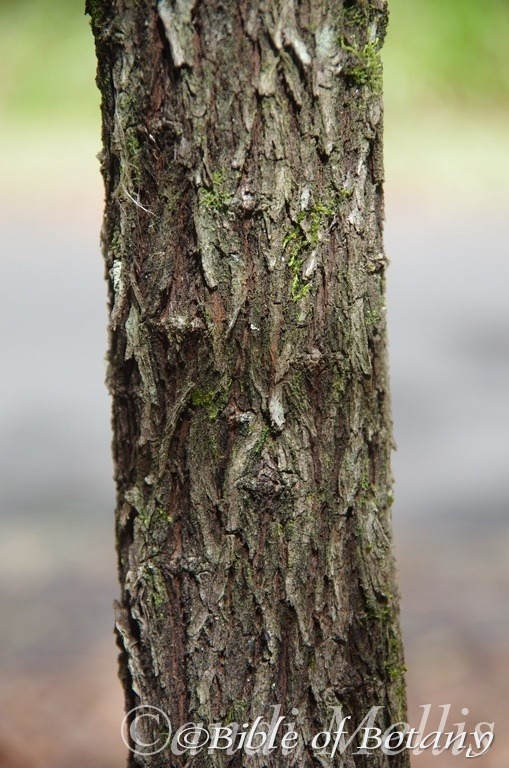
NCBG Coffs Harbour NSW

NCBG Coffs Harbour NSW
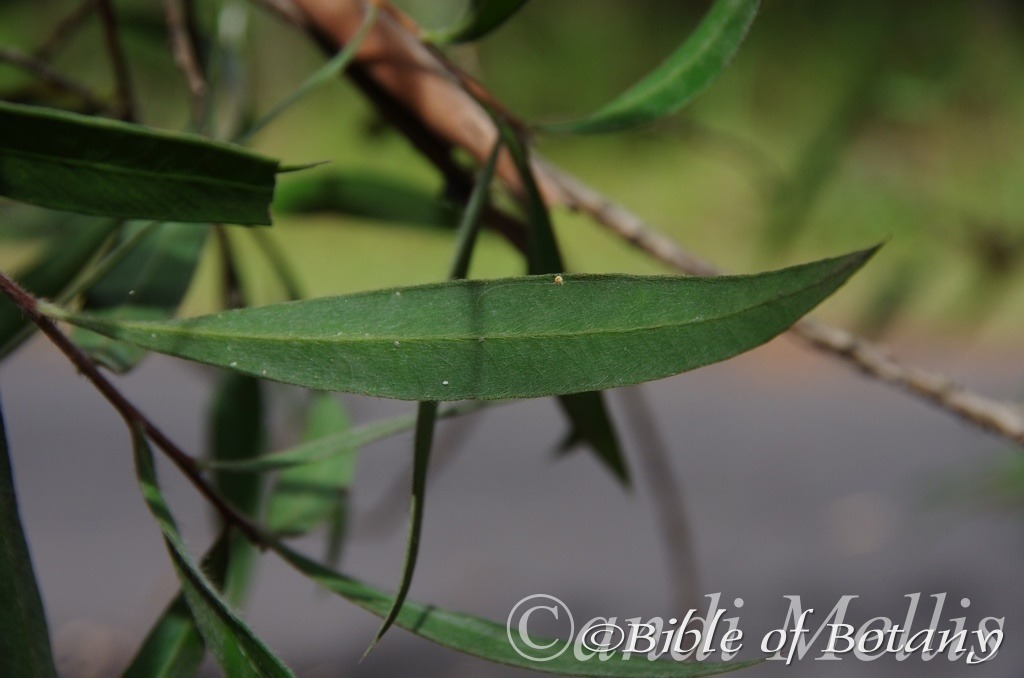
NCBG Coffs Harbour NSW
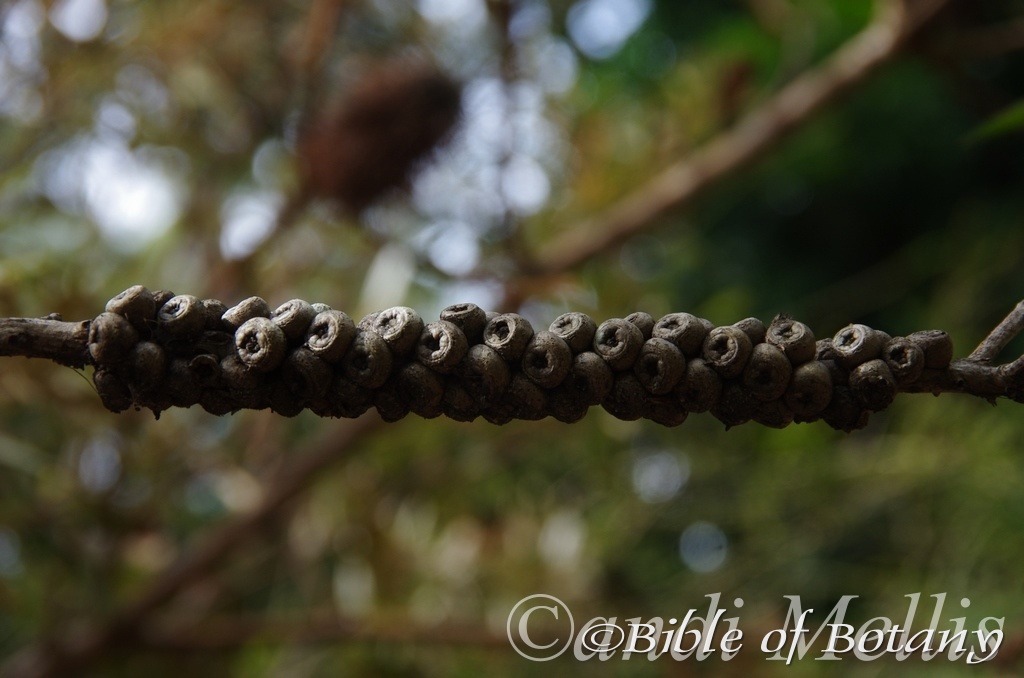
NCBG Coffs Harbour NSW

NCBG Coffs Harbour NSW
Melaleuca flammea
Classification:
Division: Eudicots
Division: Rosids
Order: Myrtales
Family: Myrtaceae
Subfamily: Myrtoideae
Tribe: Melaleuceae
Genus: From Melas, which is Ancient Greek for black and Leukos, which is Ancient Greek for white. It refers to plants, which usually have white papery barks that are often charred by fire thus the bark is black and white.
Specie: From Acuminata, which is Latin for being contracted or concave on the sides before protracting to a sharp point. It refers to apexes on the leaves or phyllodes, which have short sharp points.
(Presently still widely known as Callistemon acuminatus.) As there is a Melaleuca already named Melaleuca acuminata this specie will most likely be allocated a different specie name as the Melaleuca has precedent and the two names being similar would cause confusion. This species was formally known as Melaleuca flammea so may revert back to this name.
Sub species:
Common Name: Tapering Leaf Bottlebrush.
Distribution:
Melaleuca flammea is found in several disjunct populations in New South Wales south from the Clarence River to the Jervis River.
https://avh.ala.org.au/occurrences/search?taxa=Callistemon+acuminatus#tab_mapView
Habitat Aspect Climate:
Melaleuca flammea prefers full sun to light dappled shade. It grows on sandy slopes, dunes or hills in open Eucalyptus woodlands or mallee scrubs. The altitude ranges from 10 meters ASL to 350 meters ASL.
The temperatures range from minus 2 degree in August to 38 degrees in January.
The rainfalls range from lows of 600mm to an average of 1400mm.
Soil Requirements:
Melaleuca flammea prefers rocky slopes. The soils range from shallow sandy loams to sandy clays. The soils pH. ranges from 6pH to 7pH. It does not tolerate waterlogged soils. Non saline soils to moderately saline soils are tolerated.
Height & Spread:
Wild Plants: 1m to 3m by 1.5m to 2.5m.
Characteristics:
Melaleuca flammea‘s creamy fawn bark on the trunk and main stems is tightly packed and spongy. The branchlets are pale creamy fawn to pale creamy pink and are densely covered in short white appressed sericeous hairs. The plants vary considerably from having an open upright habit to being densely foliaged.
Melaleuca flammea‘s alternate leaves are narrowly-elliptical to narrow-lanceolate or narrow lanceolate to lanceolate and measure 50mm to 110mm in length by 8mm to 12mm in width. The base is tapering to tapering-cuneate while the apex is narrowly acuminate. The concolourous laminas are grass-green to sea-green and glabrous or covered in white caduceus pilose to pannate hairs. Immature leaves are silvery turning silvery-bronze before turning to the mature leaf colour. The laminas are undulating along while the margins are flat and irregularly toothed with minute teeth. The main vein and lateral veins are prominent on the lower lamina and are distinctly visible on the upper lamina. The petiole measures 1mm to 1.5mm in length.
The inflorescence of Melaleuca flammea is a single spike born from the terminals. The flower terminal shoots grow out before the last of the stamens bloom. The rachis and spikes are covered in white to silvery pilose hairs and measures 60mm to 100mm long by 50mm to 55mm in diameter. The flowers are born singularly from each bract. There are 46 to 72 individual flowers along the spike. They measure 12mm to 16mm in diameter. The crimson red stamens are the most prominent part of the flowers. The caduceous bracts are linear to narrow lanceolate and measure 8mm to 10mm in length. The hypanthium is pale silvery-green. The 5 broad semi ovate to broad elliptical petals are khaki, glabrous and measure 5mm to 6mm in length by 4.5mm to 5mm in width. It is persistent while the stamens fully develop and fall off with the stamens.
The deep crimson red to blood red stamens are free forming a ring around the inside of the hypanthia. The claws are opposite the petals. There are 18 to 26 stamens on a claw. The filaments measure 12mm to 15mm in length. The anther‘s pollen is white.
The long, slender, deep crimson red to blood red style measures 14mm to 17mm in length, while the stigma has 5 locules. The base of the style is surrounded by the nectaries. The arrowroot to weakly honey scented flowers, appear from early September to early November however some flowers will appear sporadically throughout the year especially under favourable conditions.
Melaleuca flammea’s fruit is a sessile, broadly globose capsule. The capsules measure 3mm to 4mm in length by 5mm to 7mm in diameter. The orifices are enclosed and funnel shape measuring 1.5mm to 2.2mm in diameter at the hypanthia. The woody capsule is dull pale grey to dull grey and resinous. The capsules may contain hundreds of seeds and chaff. The seeds are rusty-brown and are longer and thicker than the chaff. The calyx lobes are not persistent on the hypanthia.
Wildlife:
Melaleuca flammea supports native bees, native flies, native beetles and butterflies when in flower. It also supports many small honeyeaters which scurry over the flowers and seek protection amongst the bushy foliage.
Cultivation:
Melaleuca flammea is a beautiful upright bushy shrub for native gardens. It is suitable on all types of soils from sandy loams to light sandy clays particularly where there is a lot of rock or the parent rock lies close to the surface. It is most suitable for small, medium and large gardens close to the coast in warm temperate, sub tropical gardens or semi-arid gardens. As garden subjects they will grow from 3 meters to 3.5 meters tall by 1.5 meter to 2 meters wide. It is cold tolerant to temperatures to minus 3 degrees once established but are very slow to establish themselves and will suffer some tip burning and discolouration of the foliage in temperatures below this even when established. It is quite drought tolerant. This is one Melaleuca that is worth while trying on the west coast which originates from the east. They will commence flowering from an early age even from seed. I have seen well grown shrub with good flowers at only 4 and 5 years of age.
It is very fast growing especially with a good fertilizing program and with a little moisture growing more than 1 meter a year. They will drop some of their foliage when stressed during drought times but recover as soon as good rains fall. To avoid this, give the plants a double dose of our recommended fertilizer following flowering and a good deep soaking in mid-winter if good winter rains are not forthcoming. This will prevent further loss and hold them over for several more months.
They can be regularly tip pruned if a small hedge is required. This can be maintained with regular pruning and planting closer together with spacing of 1 meter. They respond very well to tip pruning, recovering quickly and increasing the number of terminal points for flowers in the following season. Pruning should be done immediately after the last flowers have bloomed trimming them back to just behind the old flowers. If seed is required leave one or two spikes from different sides of the shrub.
It is most suitable for use around sunny swimming pools, courtyards, besides pathways, sunny rockeries, along sandy or sandy clay banks, along drive ways or adjacent to natural bush gardens. Mass plantings of 5 or more plants even in small areas; really do the plants justification especially when it is in flower. If it is placed around a pool, courtyards or other confined spaces then plant them in small groups or scatter plant them for a more informal natural look against walls to help soften them.
When mass or group planting Melaleuca flammea, use curves and irregular patterns so they can be viewed from different angles around the garden. The flowers are really highlighted against the grass green undulating leaves so place them where it is highly visible.
Using rocks and small boulders can make the pool or any water feature appear like an oasis. The leaves and flowers can make a great start for the larger dry heath setting. Use large old stumps and roots so that they look larger. Select an area of ground and let your hair down and be imaginative. This is the plant that may just change your life. Remember this plant is rather large for this type of garden so be sparingly with all the plants when planting and remember that heaths are flat plains not steep hills so it is best to use a gentle slope or a basin with a small pool at the bottom. A billabong affect is the go, not a waterfall or cascades.
If water is used with this type of garden in semi shade or dappled light I would consider the use of ferns with fine or course deep green fronds to contrast the pale grass green of this Melaleuca. Train it so that it becomes a small tree, this way you can plant right up to the trunk utilizing all the available space for the ferns and other features. Judicious pruning with large rocks and stumps can make an area come alive.
Place 3 or 4 of them off center in a large rockery with other large or finer deep green leaf ground covers, and very small shrubs in the front. Plants with white, lilac, pink or yellow flowers can be used with great contrast.
In a bush garden place them near the edge using the deep green foliages to the rear. This will not only highlight them but give greater depth to the garden.
When mass or group planting Melaleuca flammea, use curves and irregular patterns in the garden beds so they can be viewed from different angles around the garden. There greatest potential in the garden is in attracting small and medium size honeyeaters and their prolonged flowering season.
Propagation:
Seeds: Melaleuca flammea seeds can be sown directly into a seed raising mix. Do not cover the seeds. Press them into the mix. Place the tray in a warm sunny position and keep moist not wet. When the seedlings are 15mm to 20mm tall, prick them out and plant them into 20mm native tubes using a good organic mix.
When the seedlings are 70mm to 90mm tall, prick them out and plant them into 50mm native tubes using a good organic mix or plant them out into their permanent positions.
Once the seedlings reach 150mm to 200mm in height they can be planted out into their permanent position.
Cuttings: Use 100mm to 150mm long half ripened material when growing from cuttings from the present season’s growth. Take them in warmer months of the year. Remove half the leaves from the bottom section being careful not to tear the bark.
1 Prepare the cutting mix by adding one third sharp clean river sand, one third peat and one third perlite. These ingredients are sterilize,
2 Select good material from non diseased plants,
3 Select semi green stems for cuttings. Look for a stem with two or three nodes,
4 Place the cutting on a flat, hard surface, and make a clean cut down one side of the cutting at the base for 10mm with a sharp sterile knife or razor blade. – This scarification of the node will increase the chances of roots emerging from this spot. Now remove all but one or two the leaves, leaving the apex leaves in tact. If the leaves are very large in proportion to the stem, cut off the apical halves.
5 Fill a saucer with water, and place a little medium strength rooting hormone into another container like a milk bottle top. Dip the node end of the cutting into the water and then into the rooting hormone. Tap off any excess hormone,
6 Use a small dipple stick or old pencil to poke a hole into the soilless potting mix. Ensure the hole is slightly larger than the stem diameter and be careful not to wipe the rooting hormone off the cuttings base, place the cuttings in a pattern ensuring the cuttings are not touching each other,
7 I like to place the pots in Plastic bags to help maintain temperature and moisture. Place in a semi shaded place like under 50mm shade cloth.
8 When the cuttings have struck, open the bag to allow air circulation for a few days to a week,
9 Once hardened off remove the cuttings from the bag and allow to further hardening for a few more days,
10 Transplant into a good potting mix to grow on.
Fertilize using seaweed, fish emulsion or organic chicken pellets soaked in water on an alternate basis. Fertilize every two months until the plants are established then twice annually in early September or March to maintain health, vitality and better flowering.
Further Comments from Readers:
Hi reader, it seems you use The Bible of Botany a lot. That’s great as we have great pleasure in bringing it to you! It’s a little awkward for us to ask, but our first aim is to purchase land approximately 1,600 hectares to link several parcels of N.P. into one at The Pinnacles NSW Australia, but we need your help. We’re not salespeople. We’re amateur botanists who have dedicated over 30 years to saving the environment in a practical way. We depend on donations to reach our goal. If you donate just $5, the price of your coffee this Sunday, We can help to keep the planet alive in a real way and continue to bring you regular updates and features on Australian plants all in one Botanical Bible. Any support is greatly appreciated. Thank you.
In the spirit of reconciliation we acknowledge the Bundjalung, Gumbaynggirr and Yaegl and all aboriginal nations throughout Australia and their connections to land, sea and community. We pay our respect to their Elders past, present and future for the pleasures we have gained.
Melaleuca formosus
Classification:
Division: Eudicots
Division: Rosids
Order: Myrtales
Family: Myrtaceae
Subfamily: Myrtoideae
Tribe: Melaleuceae
Genus: From Melas, which is Ancient Greek for black and Leukos, which is Ancient Greek for white. It refers to plants, which usually have white papery barks that are often charred by fire thus the bark is black and white.
Specie: From Formosus, which is Latin for beautiful or vivacious. It refers to the species being very beautiful. (Presently still widely known as Callistemon formosus.)
Sub species:
Common Name: Kingaroy Bottlebrush or Beautiful Bottlebrush.
Distribution:
Melaleuca formosus is found south from north of Kingaroy in south eastern Queensland to the Rock of Gibraltar and Kyogle in north eastern New South Wales.
https://avh.ala.org.au/occurrences/search?taxa=Melaleuca+formosus#tab_mapView
Habitat Aspect Climate:
Melaleuca formosus prefers full sun to dappled shade. It grows in dry rainforests or moist eucalyptus forests. The altitude ranges from 360 meter ASL to 600 meters ASL.
The temperatures range from minus 3 degrees in August to 38 degrees in January.
The rainfalls range from lows of 800mm to an average of 1150mm.
Soil Requirements:
Melaleuca formosus prefers poor to better quality well drained light gravelly clays to medium clays. The soils are usually derived from partially decomposed basalts or granites. The soils pH. ranges from 6pH to 7pH. It tolerates waterlogged soils and prefers sites that suffer from seasonal inundation and flooding. Non saline soils to moderately saline soils are tolerated.
Height & Spread:
Wild Plants: 7m to 8m by 3.5m to 5m.
Characteristics:
Melaleuca formosus grows as a medium densely foliaged tree with loose, flaky, papery bark with the outer sections peeling throughout the year. It is pale creamy fawn to creamy pink, thick and tightly wrapped around the trunk and larger branches splitting to display various colours and patterns. The smaller stems are creamy white to pale creamy yellow and spongy to the touch. The branchlets are pale creamy white to pale creamy yellow or creamy pink, while the newest shoots are green and glabrous.
Melaleuca formosus‘s alternate leaves are lanceolate and measure 40mm to 70mm in length by 6mm to 8mm in width. The bases are attenuate while the apex is narrowly acute. The concolourous laminas are deep olive green dull, glabrous and coriaceous. Immature leaves are pale pink to deep salmon pink and dull. The mid vein is slightly prominent on the lower lamina and is visible from the upper lamina. The margins are entire. The petiole measures 2mm to 4mm in length. The leaves are mildly aromatic to bland when crushed.
The inflorescence of Melaleuca formosus is a single dense spike born from the terminal shoots. The terminal shoots partially grow out before the flowers finish blooming and often grow another flower spike 20mm to 60mm further on following the first flowering. The rachis is covered in white pubescent hairs and measures 30mm to 45mm in length by 20mm to 30mm in diameter. The flowers are born singularly or in threes with in each bract. There are 14 to 32 individual flowers on a spike. They measure 8mm to 10mm in diameter. The calyx and calyx tube are lime-green and glabrous. The 5 ovate petals are pale creamy green and measure 0.8mm to 1mm in length by 1mm to 2mm in width. It is persistent while the stamens fully develop.
The creamy yellow to pale lemon stamens are the most prominent part of the flowers. The 20 to 30 stamens are free and form a ring around the hypanthia rim. The filaments measure 15mm to 20mm in length. The anthers are the same colour as the filaments with cream to pale yellow pollen and measure 0.8mm to 1mm in length.
The long, slender, creamy yellow to pale lemon style measures 20mm to 26mm in length, while the ovary glabrous. The base of the style is surrounded by the nectaries. The arrowroot crossed honey scented flowers appear from late August to late October.
Melaleuca formosus’s fruits are small, glabrous cupular capsules. The capsules measure 3.5mm to 4.5mm long by 3.5mm to 4.5mm in diameter. The enclosed orifice measures 2mm in diameter. The woody capsule is dull pale grey to grey. The capsules contain seeds and chaff. The seeds are deep brown, measure 0.6 to 0.8mm in length and look swollen compared to the chaff. The calyx lobes are persistent at the apex of the capsules.
Wildlife:
Melaleuca formosus supports many native bees, native flies, native beetles and butterflies when in flower. It also supports small honeyeaters which scurry over the flowers and seek protection from the bushy foliage.
The tree is a favoured tree in northern New South Wales for nesting Emerald Doves and White Headed Dove which occupied our trees every year once they reached 3.5 meters in height.
Cultivation:
Melaleuca formosus makes an excellent tall dense foliage hedge or small specimen trees. It is suitable on all soil types of sandy loams to medium clays and are most suitable for small, medium and large gardens close to the coast in temperate, sub tropical or semi-arid gardens. As garden subjects it is will grow from 7 meters to 8 meters in height by 4m high by 5m in diameter when grown in the open.
The flushes of new growth are particularly beautiful thus its common name.
This is an excellent tree for the home gardener who is looking for a densely foliaged small to medium columnar tree as the shape is very uniform.
It is cold tolerant to temperatures at least as low as minus 6 degrees once established and are surprisingly drought tolerant. It is very fast growing especially with a good fertilizing program and with a little moisture growing more than 1 meter a year. They will drop a lot of the foliage when stressed during drought times but recover as soon as good rains fall. When this occurs, give the plants a double dose of our recommended fertilizer and a good deep soaking. This will prevent further loss and hold them over for several more months.
It can be used for dense shade tree where the soils are wet and cluggy in the wet season and crack in the dry season.
It is an excellent small tree for starting a forest in the back yard or adjacent to an existing forest. Plant them so the foliage and flowers can be fully enjoyed and their natural bushy shape is not interfered with.
It is useful as a backdrop small tree contrasting with smaller broader leaf shrubs that are planted in the foreground. This gives the impression that they like being the center of attention which they deserve. The bark and new growth are strong characteristics for wanting to plant this tree.
Try using them in an informal or formal manner in front of buildings. This will aid in breaking up rigid lines and soften the structures overall appearance. At the same time they can be used to highlight the contrasts between the two. On taller buildings this can be done by planting them between shorter spreading type shrubs with finer or broader leaves. Plant them together with unequal gaps and free flowing curves to accentuate height and depth. Use wider spacing where the building in the background is seen as dappled specks will soften it and where it is planted closer together will give a bolder contrast between the two. The dwarf golden form of Melaleuca bracteata is particularly good where the buildings have a dark exterior and a strong contrast is required between the plants for most of the year or Melaleuca citrina where a bold flowering contrast is warranted for a couple of months of the year.
3 planted with a curve, back from a bend will become a very strong upright focal point whether it is in flower or not. In smaller bush gardens or more in larger gardens will gain a lot of attention forming a barrier for what lies behind them, enticing the walker to look further.
It can also enclose an area and make the fore ground seem a lot larger than it really is because of the slender growth habit of the trees. Whether you are coming or going they will attract your attention because of the contrasting foliage and stems and the clean look of the foliage even in the driest of times.
It can be regularly tip pruned if a tall hedge is required. This can be maintained with regular pruning and planting closer together. They respond well to tip pruning, recovering quickly and often increasing the number of flowers in the following season. This would make them ideal for topiary work.
Place 2 or 3 of them in the center with other large or finer leaf ground covers and very small shrubs in the front. Plants with red, pink or purple flowers can be used in both the fore ground and background. This will lead your eyes directly to the array of deep cream to yellow flowers and the beautiful pink to salmon coloured leaves on the new growth and the pendulous branchlets for a longer period.
Another unusual ideal in large gardens would be to plant a small spreading Ficus in the center and to surround it with melaleuca formosus for a strong silhouette or entrance to a compact rainforest garden full of ferns beneath.
Propagation:
Seeds: Melaleuca formosus seeds can be sown directly into a seed raising mix. Cover the seeds with 1mm to 2mm of fine weed free mulch and keep moist. Place the tray in a warm sunny position. When the seedlings are 15mm to 20mm tall, prick them out and plant them into 20mm native tubes using a good organic mix.
When the seedlings are 70mm to 90mm tall, prick them out and plant them into 50mm native tubes using a good organic mix or plant them out into their permanent positions.
Once the seedlings reach 150mm to 200mm in height they can be planted out into their permanent position.
Cuttings: Use 100mm to 150mm long half ripened material when growing from cuttings from the present season’s growth. Take them in warmer months of the year. Remove half the leaves from the bottom section being careful not to tear the bark.
1 Prepare the cutting mix by adding one third sharp clean river sand, one third peat and one third perlite. These ingredients are sterilize,
2 Select good material from non diseased plants,
3 Select semi green stems for cuttings. Look for a stem with two or three nodes,
4 Place the cutting on a flat, hard surface, and make a clean cut down one side of the cutting at the base for 10mm with a sharp sterile knife or razor blade. – This scarification of the node will increase the chances of roots emerging from this spot. Now remove all but one or two the leaves, leaving the apex leaves in tact. If the leaves are very large in proportion to the stem, cut off the apical halves.
5 Fill a saucer with water, and place a little medium strength rooting hormone into another container like a milk bottle top. Dip the node end of the cutting into the water and then into the rooting hormone. Tap off any excess hormone,
6 Use a small dipple stick or old pencil to poke a hole into the soilless potting mix. Ensure the hole is slightly larger than the stem diameter and be careful not to wipe the rooting hormone off the cuttings base, place the cuttings in a pattern ensuring the cuttings are not touching each other,
7 I like to place the pots in Plastic bags to help maintain temperature and moisture. Place in a semi shaded place like under 50mm shade cloth.
8 When the cuttings have struck, open the bag to allow air circulation for a few days to a week,
9 Once hardened off remove the cuttings from the bag and allow to further hardening for a few more days,
10 Transplant into a good potting mix to grow on.
Fertilize using seaweed, fish emulsion or organic chicken pellets soaked in water on an alternate basis. Fertilize every two months until the plants are established then twice annually in early September or March to maintain health, vitality and better flowering.
Further Comments from Readers:
Hi reader, it seems you use The Bible of Botany a lot. That’s great as we have great pleasure in bringing it to you! It’s a little awkward for us to ask, but our first aim is to purchase land approximately 1,600 hectares to link several parcels of N.P. into one at The Pinnacles NSW Australia, but we need your help. We’re not salespeople. We’re amateur botanists who have dedicated over 30 years to saving the environment in a practical way. We depend on donations to reach our goal. If you donate just $5, the price of your coffee this Sunday, We can help to keep the planet alive in a real way and continue to bring you regular updates and features on Australian plants all in one Botanical Bible. Any support is greatly appreciated. Thank you.
In the spirit of reconciliation we acknowledge the Bundjalung, Gumbaynggirr and Yaegl and all aboriginal nations throughout Australia and their connections to land, sea and community. We pay our respect to their Elders past, present and future for the pleasures we have gained.

Ebor NSW
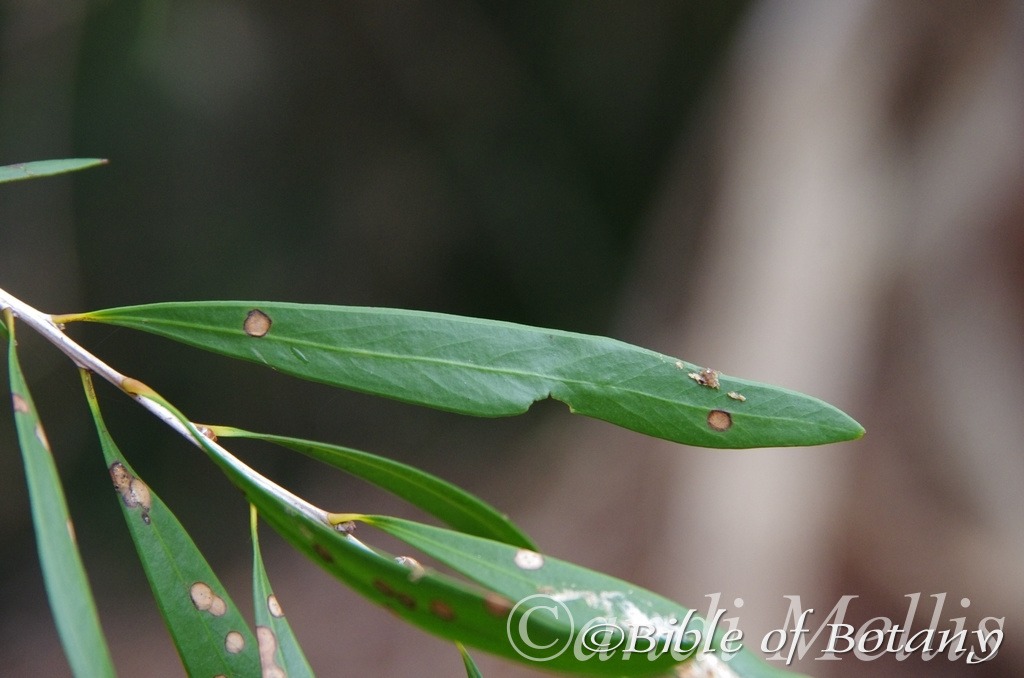
Ebor NSW

Ebor NSW

Ebor NSW
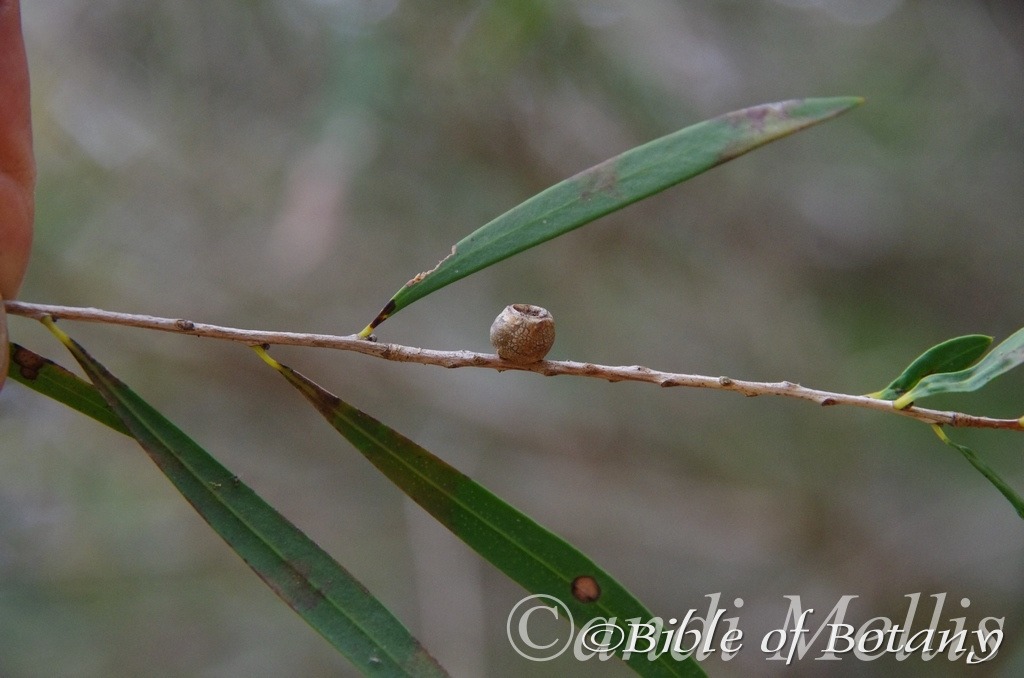
Ebor NSW
Melaleuca groveana
Classification:
Division: Eudicots
Division: Rosids
Order: Myrtales
Family: Myrtaceae
Subfamily: Myrtoideae
Tribe: Melaleuceae
Genus: From Melas, which is Ancient Greek for black and Leukos, which is Ancient Greek for white. It refers to plants, which usually have white papery barks that are often charred by fire thus the bark is black and white.
Specie: Is named in honour of C. H. Grove who collected the type specimen.
Sub species:
Common Name:
Distribution:
Melaleuca groveana is found south from the Blackdown Tablelands in central eastern Queensland to Newcastle in eastern New South Wales. It is found on and east of the Great Dividing Range to the coast.
https://avh.ala.org.au/occurrences/search?taxa=Melaleuca+groveana#tab_mapView
Habitat Aspect Climate:
Melaleuca groveana prefers full sun to light dappled shade. It grows in moist to wet highland heaths in exposed positions. The altitude ranges from 100 meter ASL to 800 meters ASL.
The temperatures range from minus 3 degrees in August to 38 degrees in January.
The rainfalls range from lows of 250mm to an average of 825mm but this is notas important as the terraine the plants grow.
Soil Requirements:
Melaleuca groveana prefers infertile sandy loams to light gritty clays. The soils are usually derived from decomposed sandstone, lateritic sandstones or granite. The soils pH. ranges from 4.5pH to 6pH. It tolerates waterlogged soils. Non saline soils to moderately saline soils are tolerated.
Height & Spread:
Wild Plants: 5m to 7m by 3m to 3.5m.
Characteristics:
Melaleuca groveana grows as a large spreading shrub or small erect tree with with firm fibrous-papery bark. It is pale creamy fawn to pale creamy grey, thick and tightly wrapped around the trunk and larger branches. The smaller stems are creamy white to pale creamy fawn and slightly spongy to the touch.
Melaleuca groveana‘s narrow elliptic leaves are alternate or in a 1:3 Fibonacci spiral and measure 20mm to 50mm in length by 3mm to 8mm in width. The petioles measure 1.5mm to 3mm in length. The base tapres to the petiole, while the apex is acute to apiculate. The concolourous laminas are blue-green glabrous and coriaceous. Immature leaves are pastel blue-green, dull and glabrous. The mid vein is barely prominent on the lower lamina, while the margins are entire.
The inflorescence of Melaleuca groveana are few to many spikes dense spike born from the terminal. The flower terminal shoots begin to grow out before the flowers finish blooming. The rachis is glabrous. The flowers are born singularly with in each bract. The 5 broad ovate, pale creamy-green petals measure 3.5mm to 4mm in length. They are persistent while the stamens fully develop but are discarded shortly after anthesis.
The white stamens are the most prominent part of the flowers. The claws are opposite the petals and measure 1mm to 3mm in length, while there are 11 to 26 stamens in each claw. The filaments measure 10mm to 12mm in length. The white basifixed anthers are spherical.
The long, slender, erect, cream to pale creamy white style measures 12mm to 14mm in length. The flowers are short lived and appear from late September to October.
Melaleuca groveana‘s fruits are barrel shaped, glabrous capsule. The capsules measure 4mm to 7mm in length by 3mm to 4mm in diameter. The enclosed orifice measures 2mm to 3mm in diameter. The woody capsules are dull pale grey to grey. The capsules contain seeds and chaff mixed together.
Wildlife:
Melaleuca groveana supports many native bees, native flies, native beetles and butterflies when in flower. It also supports small honeyeaters which attend the nectar rich flowers.
Cultivation:
Melaleuca groveana makes an excellent tall open foliage shrub for native gardens. It is suitable on all soil types of sandy loams to medium clays and are most suitable for small, medium and large gardens in temperate, sub tropical or semi-arid gardens. As garden subjects it will grow from 8 meters to 9 meters in height by 4 meters to 5 meters in diameter when grown as a small tree in the open. If it is pruned for a smaller shrub in height it will have a tendency to want to spread more and can attain 6 meters to 7 meters in diameter.
It is cold tolerant to temperatures at least as low as minus 6 degrees once established and are surprisingly drought tolerant. It is very fast growing especially with a good fertilizing program and with a little moisture growing more than 1 meter a year. They will drop a lot of the foliage when stressed during drought times but recover as soon as good rains fall. To avoid this, give the plants a double dose of our recommended fertilizer and a good deep soaking. This will prevent further loss and hold them over for several more months.
2, 3 or 5 planted with a curve, back from a bend will become a very strong upright focal point whether it is in flower or not. In medium to large bush gardens they will gain a lot of attention forming a barrier for what lies behind them, enticing the walker to investigate further. Whether you are coming or going they will attract your attention because of the contrasting foliage and stems and the clean look of the foliage even in the driest of times.
It can be regularly tip pruned if a tall hedge is required. This can be maintained with regular pruning and planting closer together. They respond well to tip pruning, recovering quickly and often increasing the number of flowers on lateral branchlets in the following season.
Place 2 or 3 of them in the center of a large rockery with other large or finer leaf ground covers and very small shrubs in the front. Plants with white, yellow, pink or purple flowers can be used in both the fore ground and background. This will lead your eyes directly to the array of deep pink, orange-red or red flowers and the beautiful pink to salmon coloured leaves on the new growth and the pendulous branchlets for a longer period.
Ensure that the whole plant or at least most of it is on display from most sections of the garden as the flowers are a real bonus.
When it is in flower these plants will catch your attention and the viewer will be transfixed on the display rather than watching the path. Plant them with 4 meter to 5 meter centers or scatter them through the bush for patches of pink and salmon over long periods.
Melaleuca groveana would make an excellent bonsai plant.
Propagation:
Seeds: Melaleuca groveana seeds can be sown directly into a seed raising mix. Cover the seeds with 1mm to 2mm of fine weed free mulch and keep moist. Place the tray in a warm sunny position. When the seedlings are 15mm to 20mm tall, prick them out and plant them into 20mm native tubes using a good organic mix.
When the seedlings are 70mm to 90mm tall, prick them out and plant them into 50mm native tubes using a good organic mix or plant them out into their permanent positions.
Once the seedlings reach 150mm to 200mm in height they can be planted out into their permanent position.
Cuttings: Use 100mm to 150mm long half ripened material when growing from cuttings from the present season’s growth. Take them in warmer months of the year. Remove half the leaves from the bottom section being careful not to tear the bark.
1 Prepare the cutting mix by adding one third sharp clean river sand, one third peat and one third perlite. These ingredients are sterilize,
2 Select good material from non diseased plants,
3 Select semi green stems for cuttings. Look for a stem with two or three nodes,
4 Place the cutting on a flat, hard surface, and make a clean cut down one side of the cutting at the base for 10mm with a sharp sterile knife or razor blade. – This scarification of the node will increase the chances of roots emerging from this spot. Now remove all but one or two the leaves, leaving the apex leaves in tact. If the leaves are very large in proportion to the stem, cut off the apical halves.
5 Fill a saucer with water, and place a little medium strength rooting hormone into another container like a milk bottle top. Dip the node end of the cutting into the water and then into the rooting hormone. Tap off any excess hormone,
6 Use a small dipple stick or old pencil to poke a hole into the soilless potting mix. Ensure the hole is slightly larger than the stem diameter and be careful not to wipe the rooting hormone off the cuttings base, place the cuttings in a pattern ensuring the cuttings are not touching each other,
7 I like to place the pots in Plastic bags to help maintain temperature and moisture. Place in a semi shaded place like under 50mm shade cloth.
8 When the cuttings have struck, open the bag to allow air circulation for a few days to a week,
9 Once hardened off remove the cuttings from the bag and allow to further hardening for a few more days,
10 Transplant into a good potting mix to grow on.
Fertilize using seaweed, fish emulsion or organic chicken pellets soaked in water on an alternate basis. Fertilize every two months until the plants are established then twice annually in early September or March to maintain health, vitality and better flowering.
Further Comments from Readers:
Hi reader, it seems you use The Bible of Botany a lot. That’s great as we have great pleasure in bringing it to you! It’s a little awkward for us to ask, but our first aim is to purchase land approximately 1,600 hectares to link several parcels of N.P. into one at The Pinnacles NSW Australia, but we need your help. We’re not salespeople. We’re amateur botanists who have dedicated over 30 years to saving the environment in a practical way. We depend on donations to reach our goal. If you donate just $5, the price of your coffee this Sunday, We can help to keep the planet alive in a real way and continue to bring you regular updates and features on Australian plants all in one Botanical Bible. Any support is greatly appreciated. Thank you.
In the spirit of reconciliation we acknowledge the Bundjalung, Gumbaynggirr and Yaegl and all aboriginal nations throughout Australia and their connections to land, sea and community. We pay our respect to their Elders past, present and future for the pleasures we have gained.
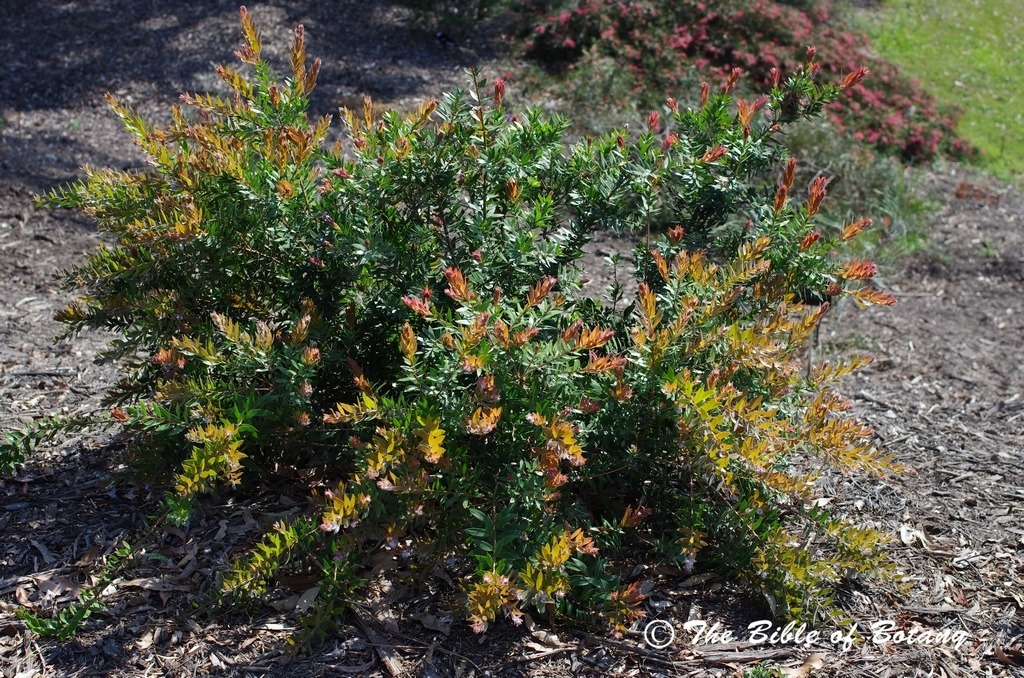
Mount Cootha Botanic Gardens Qld.
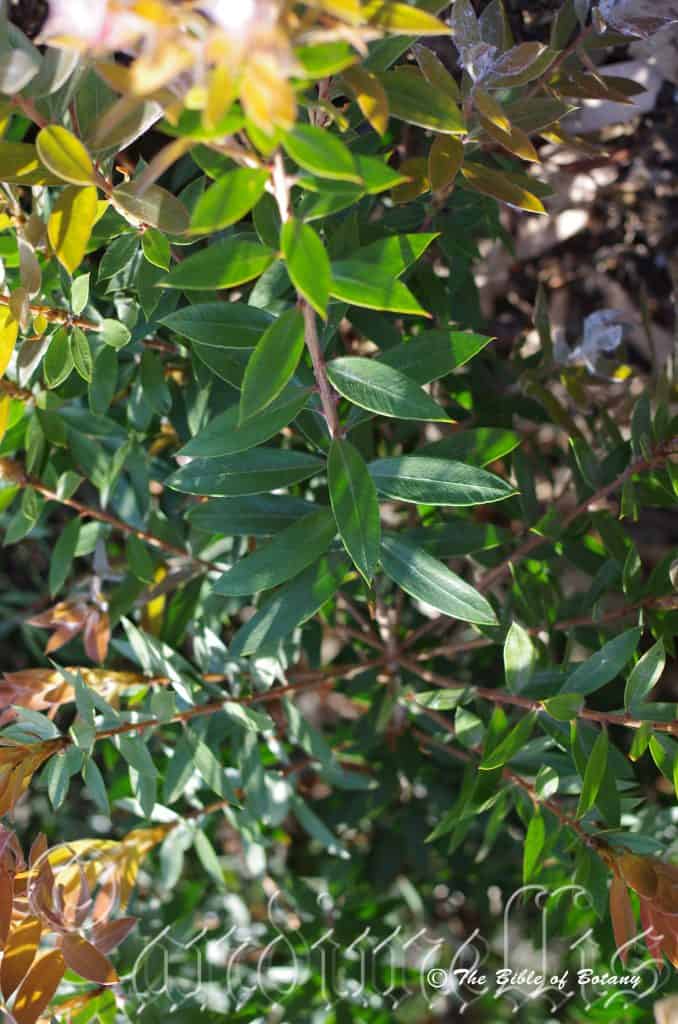
Mount Cootha Botanic Gardens Qld.
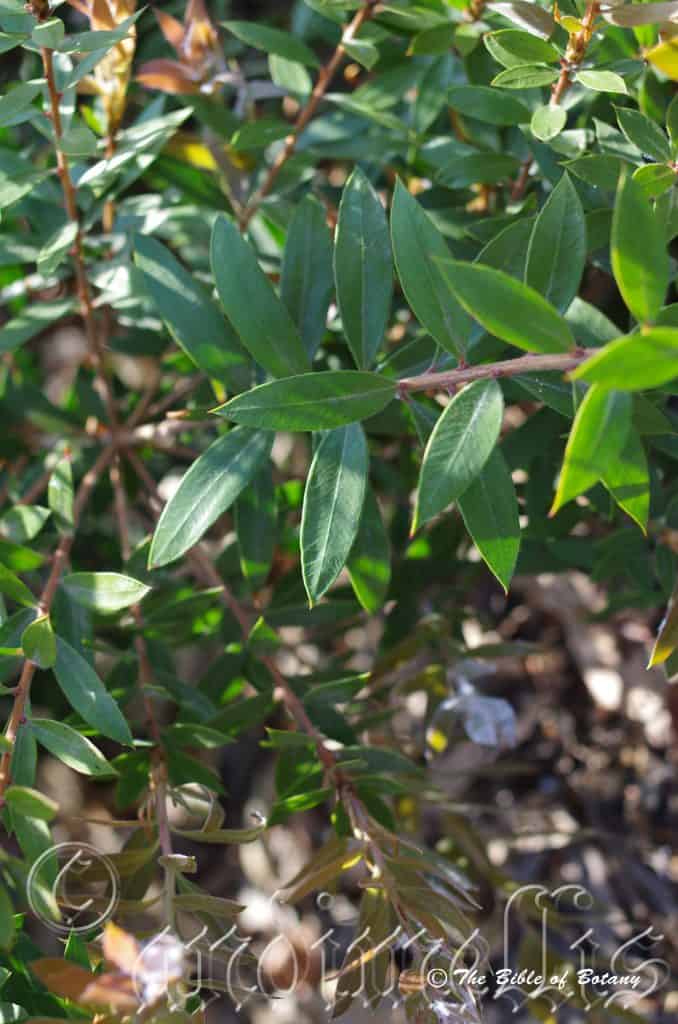
Mount Cootha Botanic Gardens Qld.
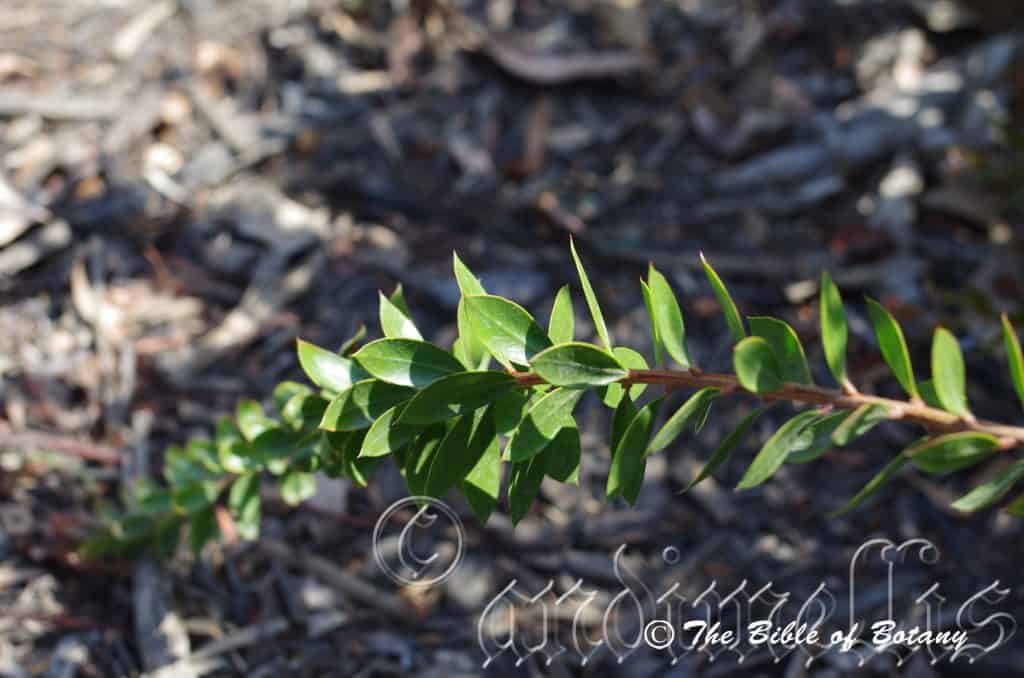
Mount Cootha Botanic Gardens Qld.
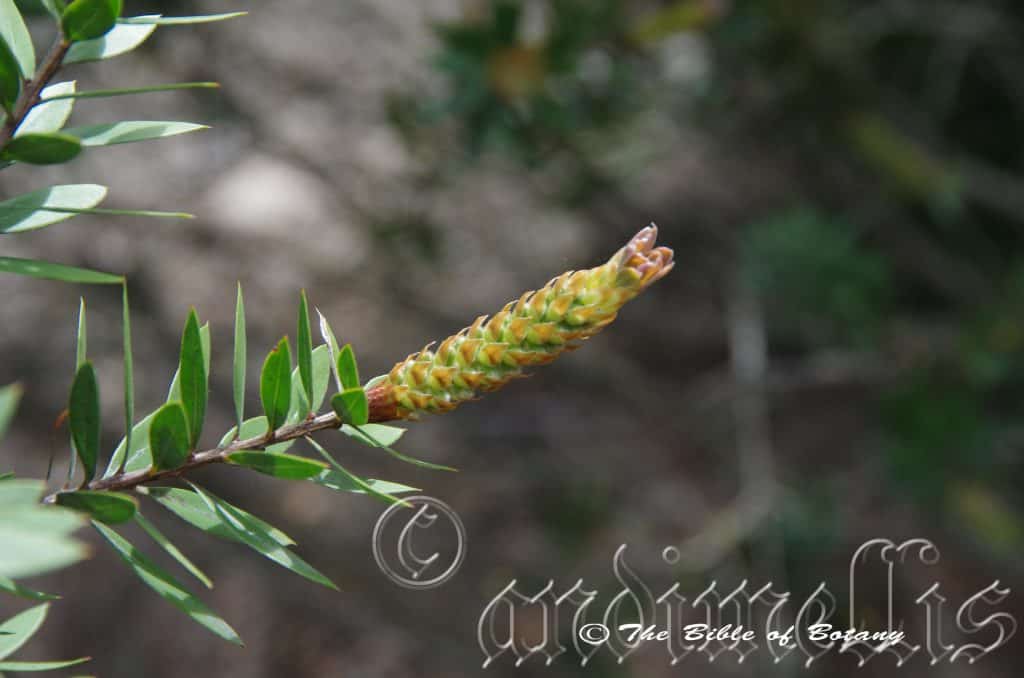
Author’s Garden The PInnacles NSW
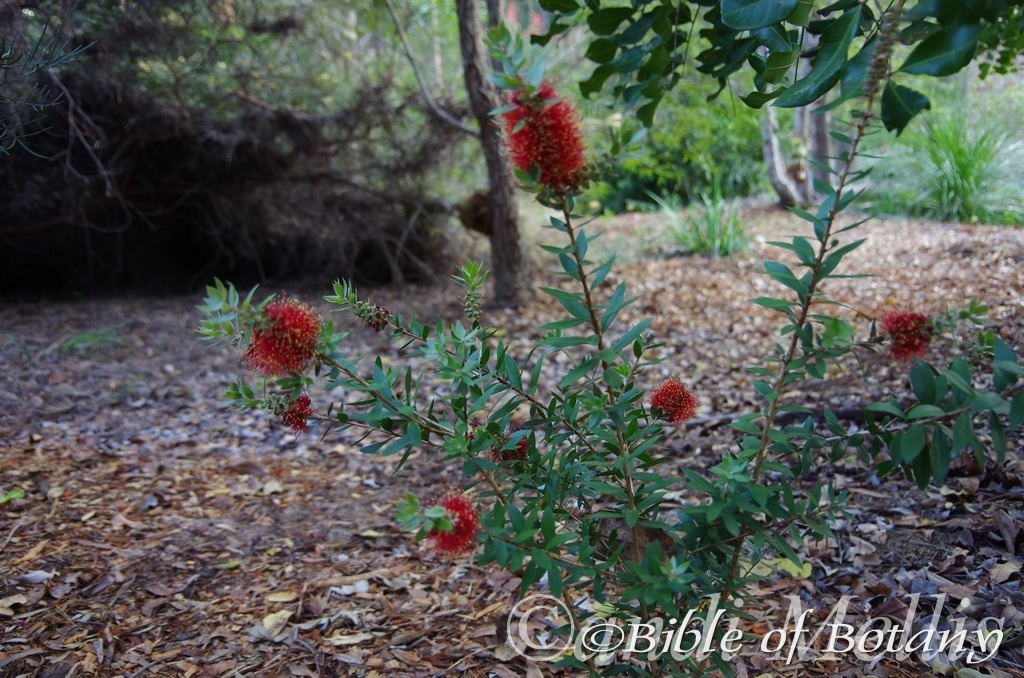
Author’s Garden The PInnacles NSW
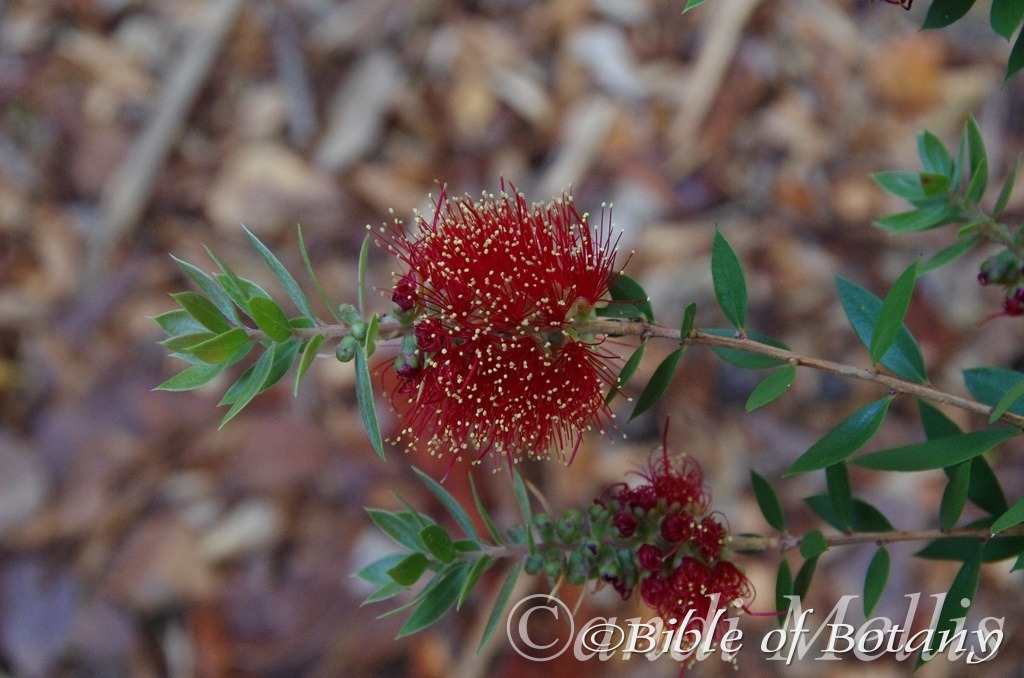
Author’s Garden The PInnacles NSW
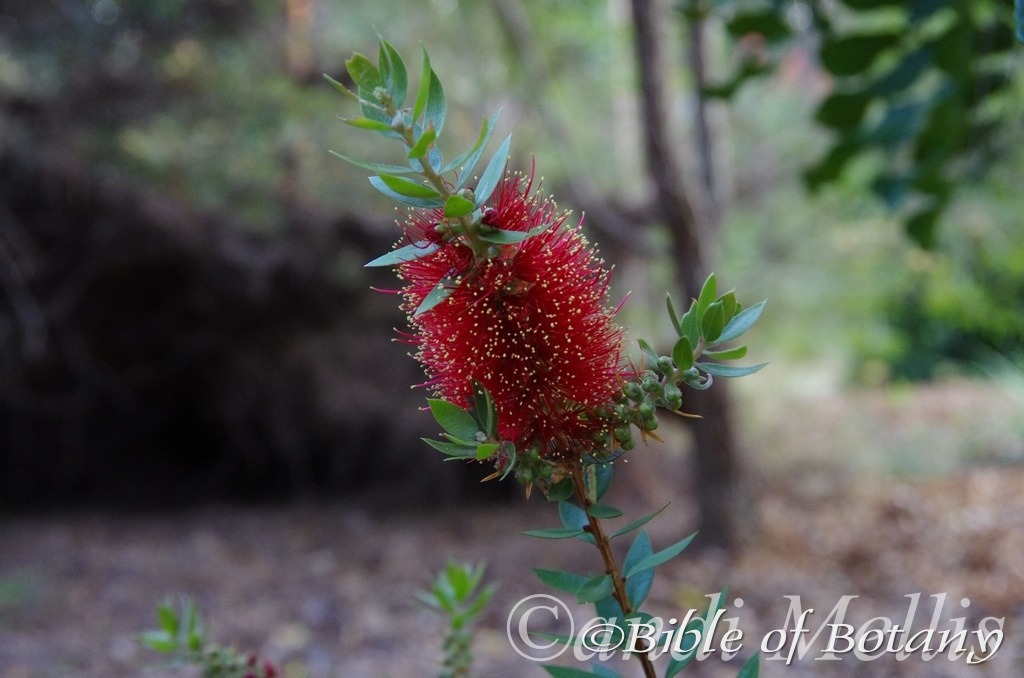
Author’s Garden The PInnacles NSW

Author’s Garden The PInnacles NSW
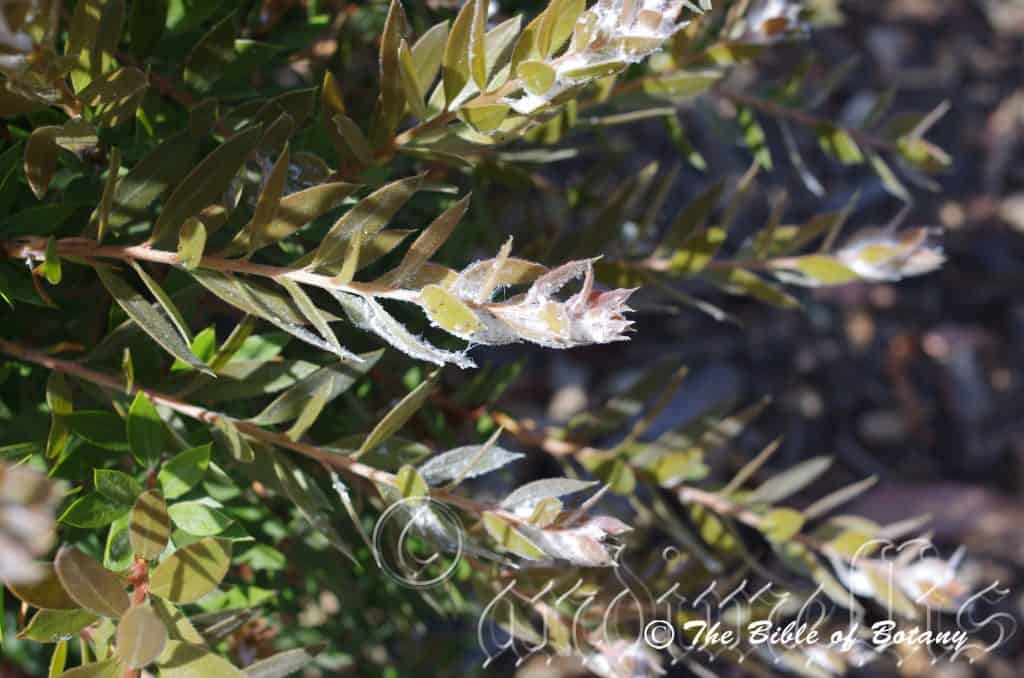
Mount Cootha Botanic Gardens Qld.
Melaleuca Hinchinbrook
Classification:
Division: Eudicots
Division: Rosids
Order: Myrtales
Family: Myrtaceae
Subfamily: Myrtoideae
Tribe: Melaleuceae
Genus: From Melas, which is Ancient Greek for black and Leukos, which is Ancient Greek for white. It refers to plants, which usually have white papery barks that are often charred by fire thus the bark is black and white.
Specie: From Hinchinbrook, is Latinized for the Island Hinchinbrook off the Queensland coast. It refers to plants which originated on Hinchinbrook Island. There is still debate over whether this is a distinct species or a naturally occurring hybrid. (it is still widely known as Callistemon Hinchinbrook.)
Sub species:
Common Name: Hinchinbrook Callistemon.
Distribution:
Melaleuca hinchinbrook is found on Hinchinbrook Island, surrounding Islands and the adjacent mainland in far north eastern Queensland.
https://avh.ala.org.au/occurrences/search?taxa=Melaleuca+hinchinbrook#tab_mapView
Habitat Aspect Climate:
Melaleuca hinchinbrook prefers full sun to light dappled shade. It grows in moist heathlands including headlands, on back dunes, woodlands or areas on sandstone cliffs with seepage. The altitude ranges from 2 meter ASL to 500 meters ASL.
The temperatures range from 8 degrees in August to 38 degrees in January.
The rainfalls range from lows of 1750mm to an average of 2143mm.
Soil Requirements:
Melaleuca hinchinbrook prefers poor to better quality sandy loams to medium clays. The soils are usually derived from decomposed granites or accumulated beach sands. The soils pH. ranges from 5pH to 8pH. It tolerates waterlogged soils though it prefers sites that are better drained but have seasonal high water tables. Non saline soils to moderately saline soils are tolerated as are salt lade winds.
Height & Spread:
Wild Plants: 1m to 1.5m by 0.7m to 1.2m.
Characteristics:
Melaleuca hinchinbrook grows as a small erect shrub with a tightly wrapped, creamy fawn to pale creamy grey, bark on the trunk and larger branches. The smaller stems are creamy white to pale creamy yellow and hard to the touch.
Melaleuca hinchinbrook‘s leaves occur in a 1:9 Fibonacci spiral. The nearly broad elliptical leaves measure 10mm to 45mm in length by 5mm to 11.5mm in width. The petioles measure 1mm to 1.2mm in length. The bases taper to the petiole, while the apexex are acute with a rigid point. The concolourous, coriaceous laminas are deep blue-green to emerald-green dull, glabrous or sparsely covered in short, white, pubescent hairs. The immature leaves are bright deep pink and moderately covered in white, pubescent hairs. The mid vein is slightly prominent on the lower lamina, while the indistinct lateral veins are set at 40 degrees. The margins are entire.
The inflorescence of Melaleuca hinchinbrook is a single dense spike born from the terminal or special lateral shoots from the stems. The terminal shoots grow out as the first basal blooms begin to open. The rachis is sparsely covered in short, white puberulent hairs and measures 60mm to 85mm in length. The flowers are born singularly with in each bract. There are 20 to 32 individual flowers on a spike. The hypanthium are lime-green and glabrous or sparsely covered in short white pubescent hairs. The 5 ovate petals are green with a reddish hyline margin and measure 3mm to 4mm in length by 3mm to 4mm in width. They are persistent while the stamens fully develop.
The deep red stamens are the most prominent part of the flowers and measure 25mm to 30mm in length. The avbaxial, oblong anthers are pale yellow, dehisce along the longitudinal axis and measure 0.9mm to 1.25mm in length by 0.6mm to 0.75mm in width.
The long, red, erect style style measures measure 27mm to 33mm in length, while the green stigma is inclined. The flowers appear over a long period between from September to late May.
Melaleuca hinchinbrook‘s fruit is a broad ovoid, glabrous capsule. The capsules measure 3.5mm to 4.5mm in length by 5mm to 6mm in diameter. The enclosed orifice measures 2mm to 3mm in diameter. The green capsules are moderately to densely covered in short, white, pubescent hairs and turn dull pale grey to grey and woody when mature. The capsules contain seeds and chaff mixed together.
Wildlife:
Melaleuca hinchinbrook supports many native bees, native flies, native beetles and butterflies when in flower.
It also supports small honeyeaters like the yellow face honeyeater,
Lichenostomus chrysops which attend the nectar rich flowers.
Cultivation:
Melaleuca hinchinbrook makes an excellent small dense foliaged shrub for native gardens. It is suitable on all soil types of sandy loams to medium clays and is most suitable for small, medium and large gardens in temperate, sub tropical or semi-arid gardens. As a garden subject it is will grow from 1.5 meters to 2 meters in height by 1.5 meters to 3 meters in diameter when grown in the open. If it is pruned for a smaller shrub in height it will become rather dense.
It is cold tolerant to temperatures at least as low as 2 degrees once established and tolerates great variation in soil moisture. It is very fast growing especially with a good fertilizing program and with a little moisture growing to its full potential in a few years.
2, 3 or 5 planted with a curve, back from a bend will become a very strong expansive feeling and add colour due to it having some flowers most of the year. In medium to large bush gardens it will gain a lot of attention.
If grown as a hedge it can be regularly tip pruned to maintain an excellent shape recovering quickly with a display of its bright deep pink new growth.
Place 2 or 3 of scattered in throughout a large rockery with plenty of space between to highlite the boulders and the symmetry of the plant will create a pleasing spectacle. Very short or prostrate plants with white, cream or yellow flowers will make it more majestic with a bold statement. Bold coloured flowers will destroy the affect. Such a display can be extremely useful in small back yards or as a strong feature in the front yard. Ensure the rocks or boulders are of a light colour to give the plants a strong position. Deep coloured basalts will deliver a more diminutive look.
Propagation:
Seeds: Melaleuca hinchinbrook seeds can be sown directly into a seed raising mix. Cover the seeds with 1mm to 2mm of fine weed free mulch and keep moist. Place the tray in a warm sunny position. When the seedlings are 15mm to 20mm tall, prick them out and plant them into 20mm native tubes using a good organic mix.
When the seedlings are 70mm to 90mm tall, prick them out and plant them into 50mm native tubes using a good organic mix or plant them out into their permanent positions.
Once the seedlings reach 150mm to 200mm in height they can be planted out into their permanent position.
Cuttings: Use 100mm to 150mm long half ripened material when growing from cuttings from the present season’s growth. Take them in warmer months of the year. Remove half the leaves from the bottom section being careful not to tear the bark.
1 Prepare the cutting mix by adding one third sharp clean river sand, one third peat and one third perlite. These ingredients are sterilize,
2 Select good material from non diseased plants,
3 Select semi green stems for cuttings. Look for a stem with two or three nodes,
4 Place the cutting on a flat, hard surface, and make a clean cut down one side of the cutting at the base for 10mm with a sharp sterile knife or razor blade. – This scarification of the node will increase the chances of roots emerging from this spot. Now remove all but one or two the leaves, leaving the apex leaves in tact. If the leaves are very large in proportion to the stem, cut off the apical halves.
5 Fill a saucer with water, and place a little medium strength rooting hormone into another container like a milk bottle top. Dip the node end of the cutting into the water and then into the rooting hormone. Tap off any excess hormone,
6 Use a small dipple stick or old pencil to poke a hole into the soilless potting mix. Ensure the hole is slightly larger than the stem diameter and be careful not to wipe the rooting hormone off the cuttings base, place the cuttings in a pattern ensuring the cuttings are not touching each other,
7 I like to place the pots in Plastic bags to help maintain temperature and moisture. Place in a semi shaded place like under 50mm shade cloth.
8 When the cuttings have struck, open the bag to allow air circulation for a few days to a week,
9 Once hardened off remove the cuttings from the bag and allow to further hardening for a few more days,
10 Transplant into a good potting mix to grow on.
Fertilize using seaweed, fish emulsion or organic chicken pellets soaked in water on an alternate basis. Fertilize every two months until the plants are established then twice annually in early September or March to maintain health, vitality and better flowering.
Further Comments from Readers:
Hi reader, it seems you use The Bible of Botany a lot. That’s great as we have great pleasure in bringing it to you! It’s a little awkward for us to ask, but our first aim is to purchase land approximately 1,600 hectares to link several parcels of N.P. into one at The Pinnacles NSW Australia, but we need your help. We’re not salespeople. We’re amateur botanists who have dedicated over 30 years to saving the environment in a practical way. We depend on donations to reach our goal. If you donate just $5, the price of your coffee this Sunday, We can help to keep the planet alive in a real way and continue to bring you regular updates and features on Australian plants all in one Botanical Bible. Any support is greatly appreciated. Thank you.
In the spirit of reconciliation we acknowledge the Bundjalung, Gumbaynggirr and Yaegl and all aboriginal nations throughout Australia and their connections to land, sea and community. We pay our respect to their Elders past, present and future for the pleasures we have gained.
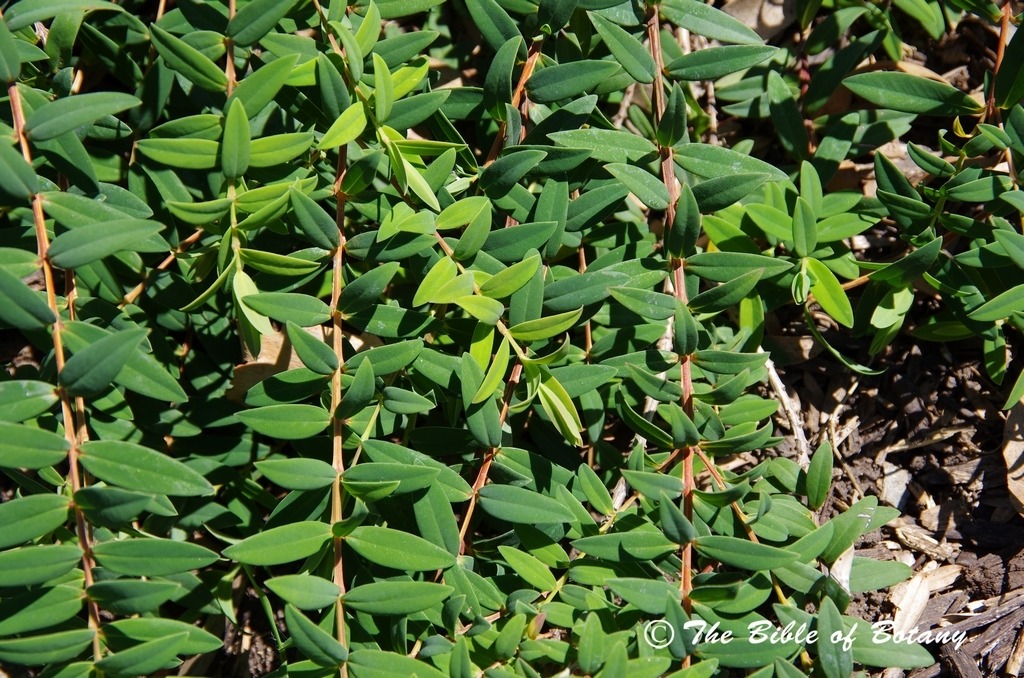
Mittagong NSW

Mittagong NSW
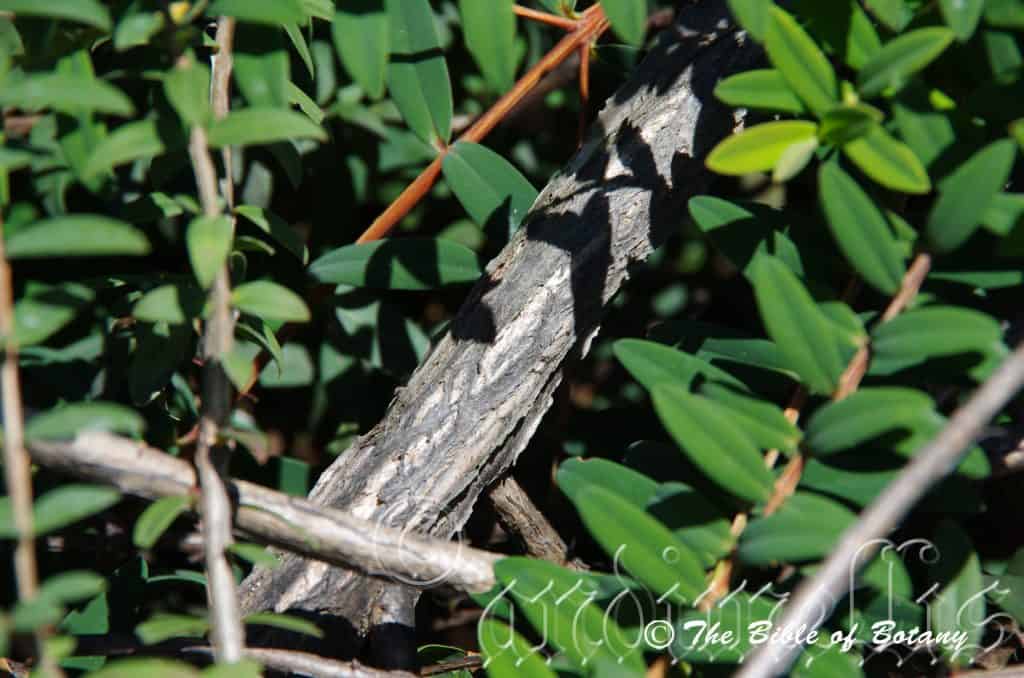
Mittagong NSW

Mittagong NSW

Mittagong NSW

Mittagong NSW

Mittagong NSW
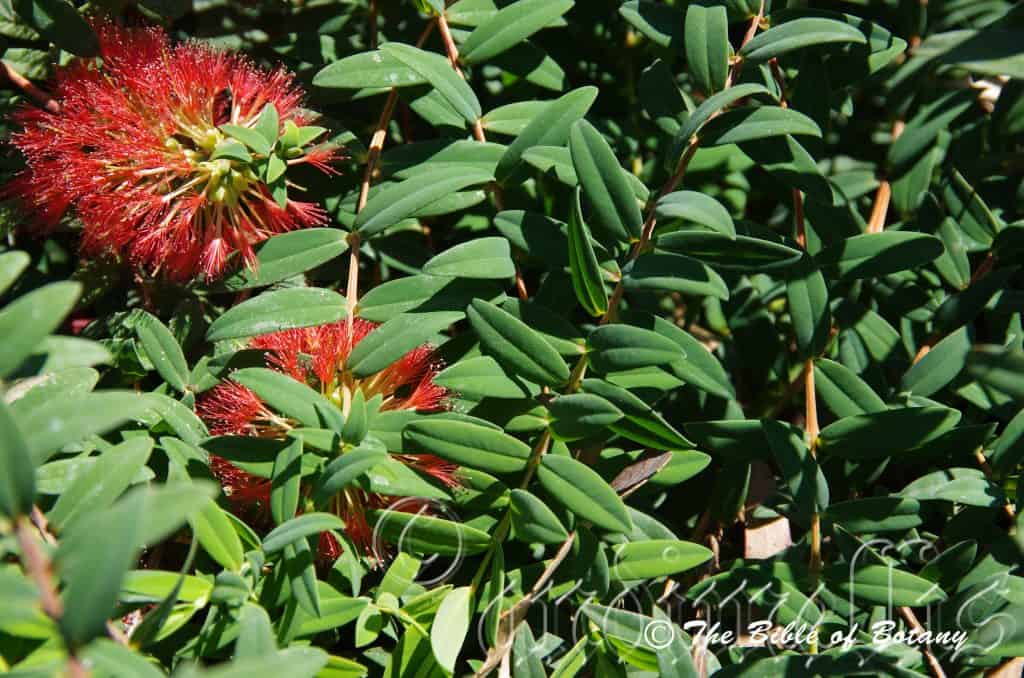
Mittagong NSW
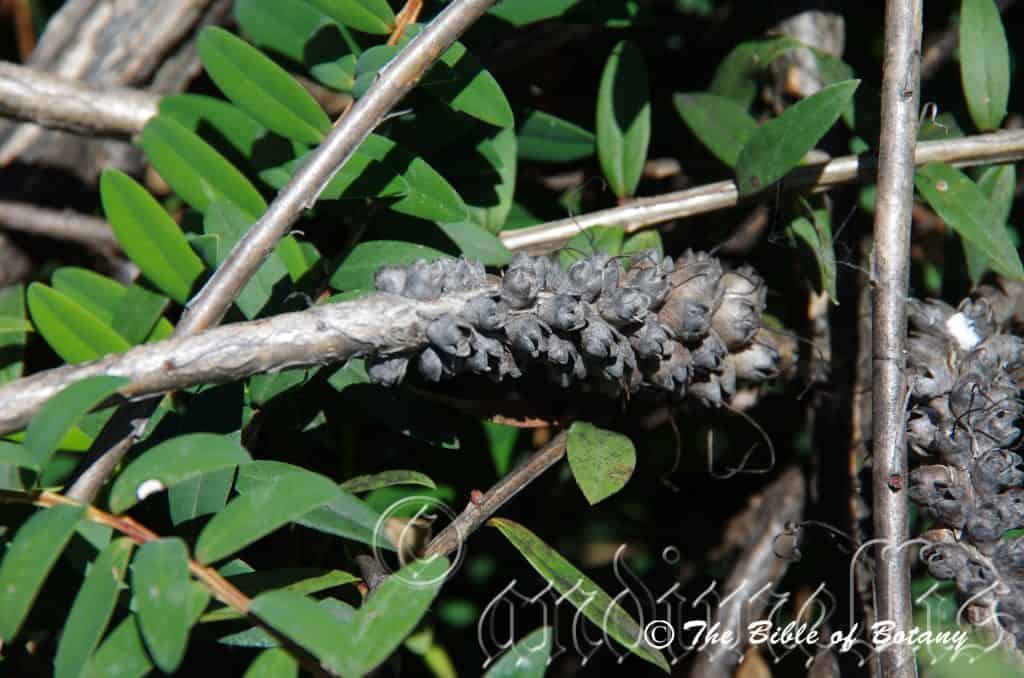
Mittagong NSW
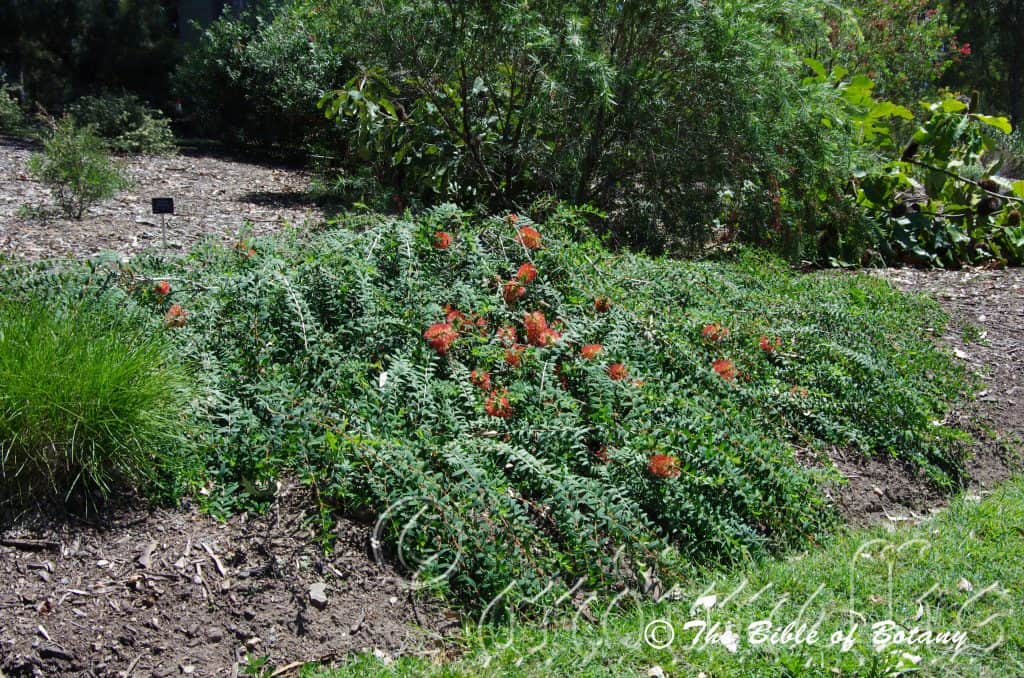
Mittagong NSW
Melaleuca hypericifolia
Classification:
Division: Eudicots
Division: Rosids
Order: Myrtales
Family: Myrtaceae
Subfamily: Myrtoideae
Tribe: Melaleuceae
Genus: From Melas, which is Ancient Greek for black and Leukos, which is Ancient Greek for white. It refers to plants, which usually have white papery barks that are often charred by fire thus the bark is black and white.
Specie: From Hyper, which is Ancient Greek for above or over, Eikon, which is Ancient Greek for a picture and Folia, which is Latin for foliage. It refers to the foliage resembling that of the Hypericum genus.
Sub species:
Common Name: Hill Hock Bottle Brush or Hill Hock Bush.
Distribution:
Melaleuca hypericifolia is found south from Newcastle to Bermagui in eastern New South Wales. It is found on and east of the Great Dividing Range to the coast.
There are 2 outlying populations in Victoria one south of Geelong to Angel Sea and the other near the coast from Dalyston to Wonthaggi.
https://avh.ala.org.au/occurrences/search?taxa=Melaleuca+hypericifolia#tab_mapView
Habitat Aspect Climate:
Melaleuca hypericifolia prefers full sun to dappled shade. It grows in moist heathlands including headlands, on back dunes, woodlands or areas on sandstone cliffs with seepage. The altitude ranges from 2 meter ASL to 828 meters ASL.
The temperatures range from minus 3 degrees in August to 38 degrees in January.
The rainfalls range from lows of 750mm to an average of 1200mm.
Soil Requirements:
Melaleuca hypericifolia prefers poor to better quality sandy loams to medium clays. The soils are usually derived from decomposed sandstone, lateritic sandstones or accumulated beach sands. The soils pH. ranges from 5pH to 7pH. It tolerates waterlogged soils though it prefers sites that are better drained but have seasonal high water tables. Non saline soils to moderately saline soils are tolerated as are salt lade winds.
Height & Spread:
Wild Plants: 3m to 6m by 3m to 3.5m.
Characteristics:
Melaleuca hypericifolia grows as a large spreading shrub or small tree with corky, papery bark. It is pale creamy fawn to pale creamy grey, thick and tightly wrapped around the trunk and larger branches. The smaller stems are creamy white to pale creamy yellow and spongy to the touch. The branchlets are pale creamy white to pale creamy yellow or creamy fawn, while the newest shoots are green and glabrous. The branches have a strong pendulous habit.
Melaleuca hypericifloia‘s opposite or nearly opposite leaves are lanceolate to oblong-elliptical and measure 10mm to 40mm in length by 5mm to 10mm in width. The base is rounded while the apex is broad acute to obtuse. The concolourous laminas are deep blue-green to emerald green dull, glabrous and coriaceous. Immature leaves are pale lemon-green with a pink tinge, dull and glabrous. The mid vein is slightly prominent on the lower lamina. The margins are entire. The petioles measure 1mm to 2mm in length.
The inflorescence of Melaleuca hypericifolia is a single dense spike born from the terminal or special lateral shoots from the stems. The flower terminal shoots begin to grow out before the flowers finish blooming. The rachis is covered in white puberulent hairs and measures 32mm to 50mm in length by 35mm to 45mm in diameter. The flowers are born singularly with in each bract. There are 18 to 42 individual flowers on a spike. They measure 6mm to 9mm in diameter. The hypanthium are lime-green and glabrous or sparsely covered in short white puberulent hairs. The 5 broad elliptical petals are pale creamy green and measure 4.5mm to 5mm in length by 3.5mm to 4mm in width. It is persistent while the stamens fully develop.
The brick red, deep pink, orange-red or red stamens are the most prominent part of the flowers. The claws are opposite the petals and measure 16mm to 20mm in length overall while there are 16 to 20 stamens in each of the 5 bundles. The filaments measure 8mm to 10mm in length. The anthers are deep burgundy with white pollen and measure 0.4mm to 0.5mm in length.
The long, slender, cream to pale creamy pink style measures 18mm to 20mm in length, while the stigma divides into 4 locules. The base of the style is surrounded by the nectaries. The flowers appear over a long period between from late September to late February.
Melaleuca hypericifolia‘s fruit is a broad ovoid, glabrous capsule. The capsules measure 6mm to 8mm in length by 8mm to 10mm in diameter. The enclosed orifice measures 4mm to 5mm in diameter. The woody capsule is dull pale grey to grey. The capsules contain seeds and chaff mixed together. The seeds are deep brown, measure 0.6 to 0.8mm in length and look swollen compared to the chaff. The calyx lobes are persistent and erect at the apex of the capsules.
Wildlife:
Melaleuca hypericifolia supports many native bees, native flies, native beetles and butterflies when in flower.
It also supports small honeyeaters, which inclued the Brown Honeyeater, Lichmera indistincta Lichmera indistincta Yellow Face Honeyeater, Lichenostomus chrysops and the Eastern spinebill, Acanthorhynchus tenuirostris which attend the nectar rich flowers.
Cultivation:
Melaleuca hypericifolia makes an excellent tall open foliage shrub for native gardens. It is suitable on all soil types of sandy loams to medium clays and are most suitable for small, medium and large gardens in temperate, sub tropical or semi-arid gardens. As garden subjects it is will grow from 3 meters to 5 meters in height by 2.5 meters to 3 meters in diameter when grown as a small tree in the open. If it is pruned for a smaller shrub in height they will have a tendency to want to spread more and can attain 4 meters to 5 meters in diameter.
It is cold tolerant to temperatures at least as low as minus 6 degrees once established and are surprisingly drought tolerant. It is very fast growing especially with a good fertilizing program and with a little moisture growing more than 1 meter a year. They will drop a lot of the foliage when stressed during drought times but recover as soon as good rains fall. To avoid this, give the plants a double dose of our recommended fertilizer and a good deep soaking. This will prevent further loss and hold them over for several more months.
2, 3 or 5 planted with a curve, back from a bend will become a very strong upright focal point whether it is in flower or not. In medium to large bush gardens they will gain a lot of attention forming a barrier for what lies behind them, enticing the walker to investigate further. Whether you are coming or going they will attract your attention because of the contrasting foliage and stems and the clean look of the foliage even in the driest of times.
They can be regularly tip pruned if a tall hedge is required. This can be maintained with regular pruning and planting closer together. They respond well to tip pruning, recovering quickly and often increasing the number of flowers on lateral branchlets in the following season.
Place 2 or 3 of them in the center of a large rockery with other large or finer leaf ground covers and very small shrubs in the front. Plants with white, yellow, pink or purple flowers can be used in both the fore ground and background. This will lead your eyes directly to the array of deep pink, orange-red or red flowers and the beautiful pink to salmon coloured leaves on the new growth and the pendulous branchlets for a longer period.
Ensure that the whole plant or at least most of it is on display from most sections of the garden as the flowers are a real bonus.
When it is in flower these plants will catch your attention and the viewer will be transfixed on the display rather than watching the path. Plant them with 4 meter to 5 meter centers or scatter them through the bush for patches of pink and salmon over long periods.
Melaleuca hypericifolia make excellent bonsai plants.
Propagation:
Seeds: Melaleuca hypericifolia seeds can be sown directly into a seed raising mix. Cover the seeds with 1mm to 2mm of fine weed free mulch and keep moist. Place the tray in a warm sunny position. When the seedlings are 15mm to 20mm tall, prick them out and plant them into 20mm native tubes using a good organic mix.
When the seedlings are 70mm to 90mm tall, prick them out and plant them into 50mm native tubes using a good organic mix or plant them out into their permanent positions.
Once the seedlings reach 150mm to 200mm in height they can be planted out into their permanent position.
Cuttings: Use 100mm to 150mm long half ripened material when growing from cuttings from the present season’s growth. Take them in warmer months of the year. Remove half the leaves from the bottom section being careful not to tear the bark.
1 Prepare the cutting mix by adding one third sharp clean river sand, one third peat and one third perlite. These ingredients are sterilize,
2 Select good material from non diseased plants,
3 Select semi green stems for cuttings. Look for a stem with two or three nodes,
4 Place the cutting on a flat, hard surface, and make a clean cut down one side of the cutting at the base for 10mm with a sharp sterile knife or razor blade. – This scarification of the node will increase the chances of roots emerging from this spot. Now remove all but one or two the leaves, leaving the apex leaves intact. If the leaves are very large in proportion to the stem, cut off the apical halves.
5 Fill a saucer with water and place a little medium strength rooting hormone into another container like a milk bottle top. Dip the node end of the cutting into the water and then into the rooting hormone. Tap off any excess hormone,
6 Use a small dipple stick or old pencil to poke a hole into the soilless potting mix. Ensure the hole is slightly larger than the stem diameter and be careful not to wipe the rooting hormone off the cuttings base, place the cuttings in a pattern ensuring the cuttings are not touching each other,
7 I like to place the pots in Plastic bags to help maintain temperature and moisture. Place in a semi shaded place like under 50mm shade cloth.
8 When the cuttings have struck, open the bag to allow air circulation for a few days to a week,
9 Once hardened off remove the cuttings from the bag and allow to further hardening for a few more days,
10 Transplant into a good potting mix to grow on.
Fertilize using seaweed, fish emulsion or organic chicken pellets soaked in water on an alternate basis. Fertilize every two months until the plants are established then twice annually in early September or March to maintain health, vitality and better flowering.
Further Comments from Readers:
Hi reader, it seems you use The Bible of Botany a lot. That’s great as we have great pleasure in bringing it to you! It’s a little awkward for us to ask, but our first aim is to purchase land approximately 1,600 hectares to link several parcels of N.P. into one at The Pinnacles NSW Australia, but we need your help. We’re not salespeople. We’re amateur botanists who have dedicated over 30 years to saving the environment in a practical way. We depend on donations to reach our goal. If you donate just $5, the price of your coffee this Sunday, We can help to keep the planet alive in a real way and continue to bring you regular updates and features on Australian plants all in one Botanical Bible. Any support is greatly appreciated. Thank you.
In the spirit of reconciliation, we acknowledge the Bundjalung, Gumbaynggirr and Yaegl and all aboriginal nations throughout Australia and their connections to land, sea and community. We pay our respect to their Elders past, present and future for the pleasures we have gained.
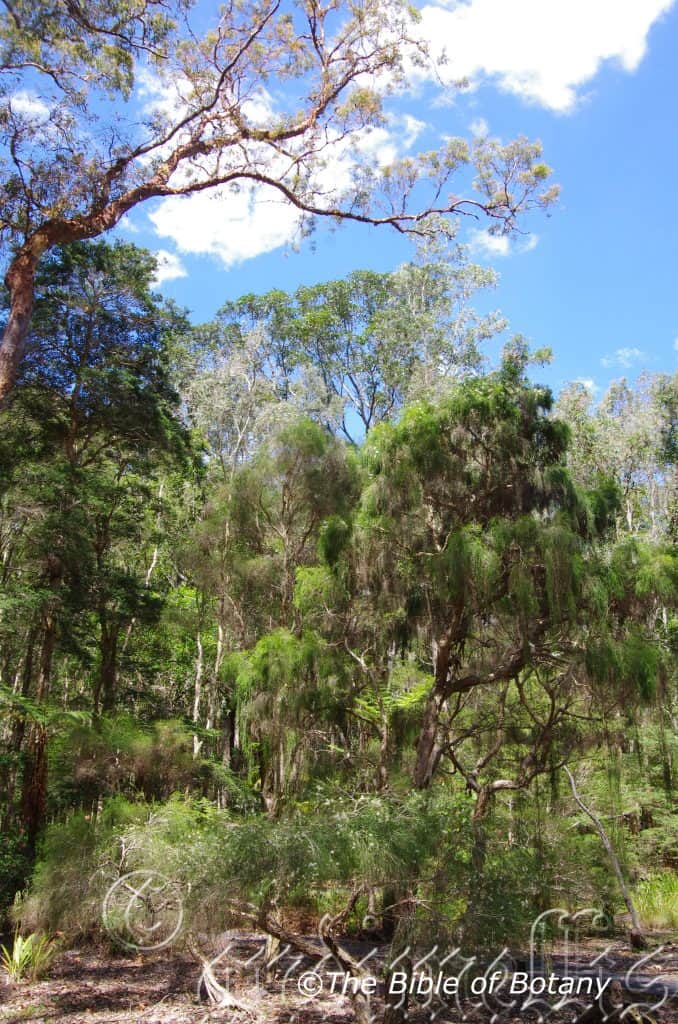
Koolkhan NSW

Koolkhan NSW
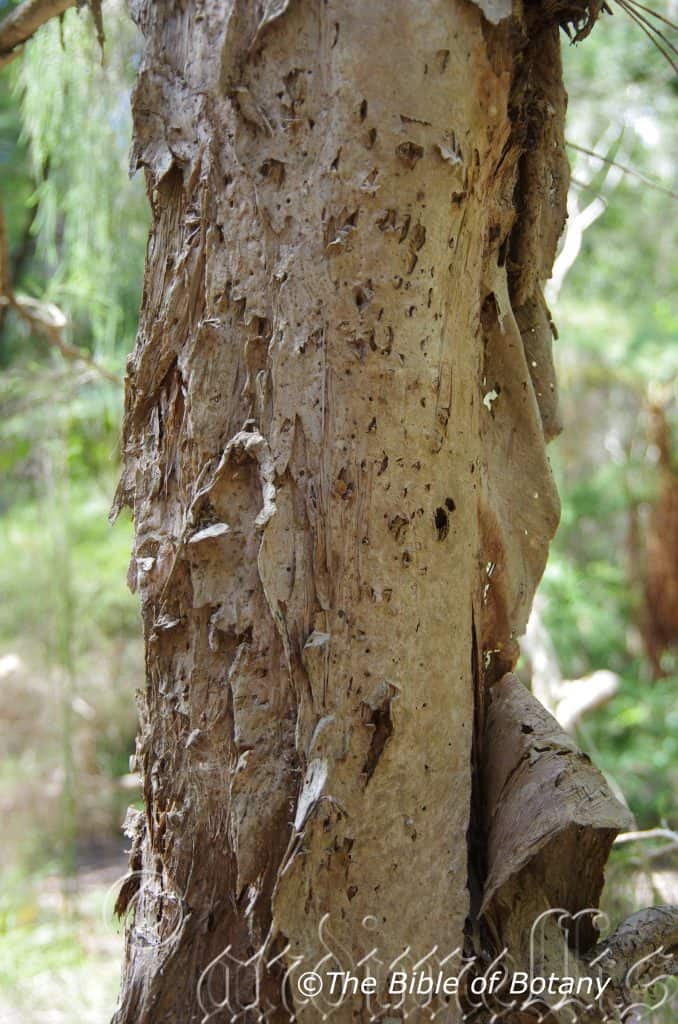
Koolkhan NSW

Koolkhan NSW
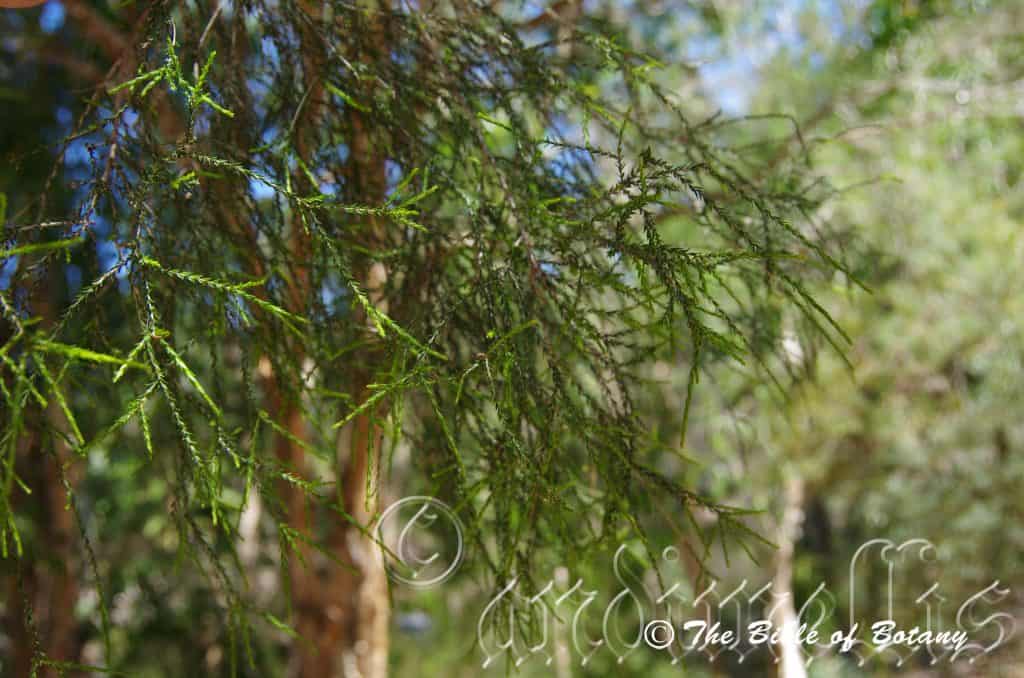
Koolkhan NSW
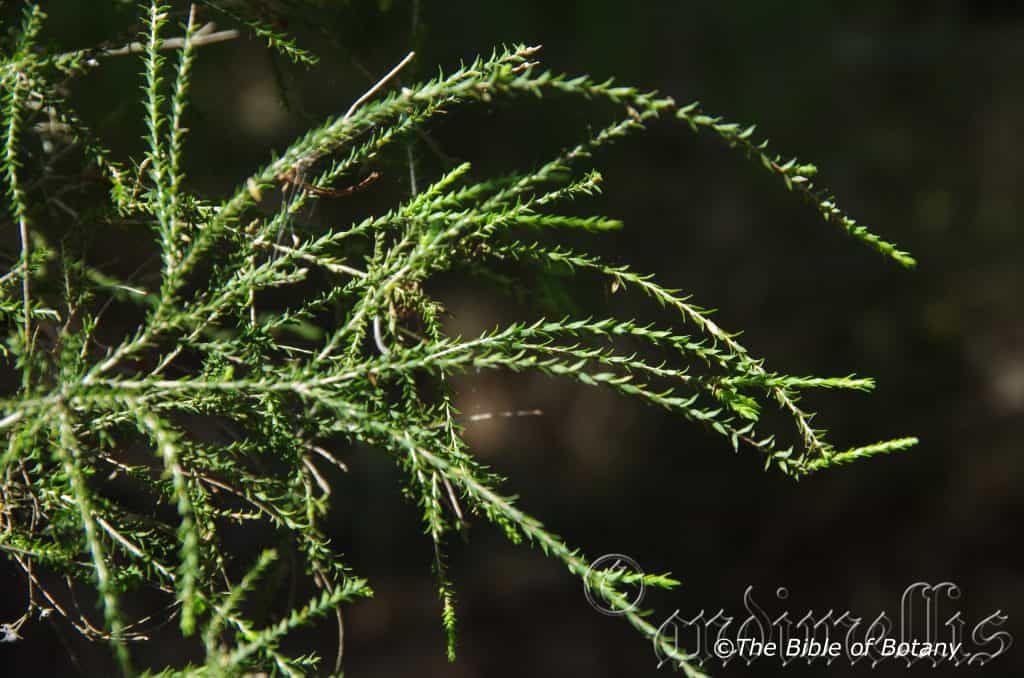
Koolkhan NSW
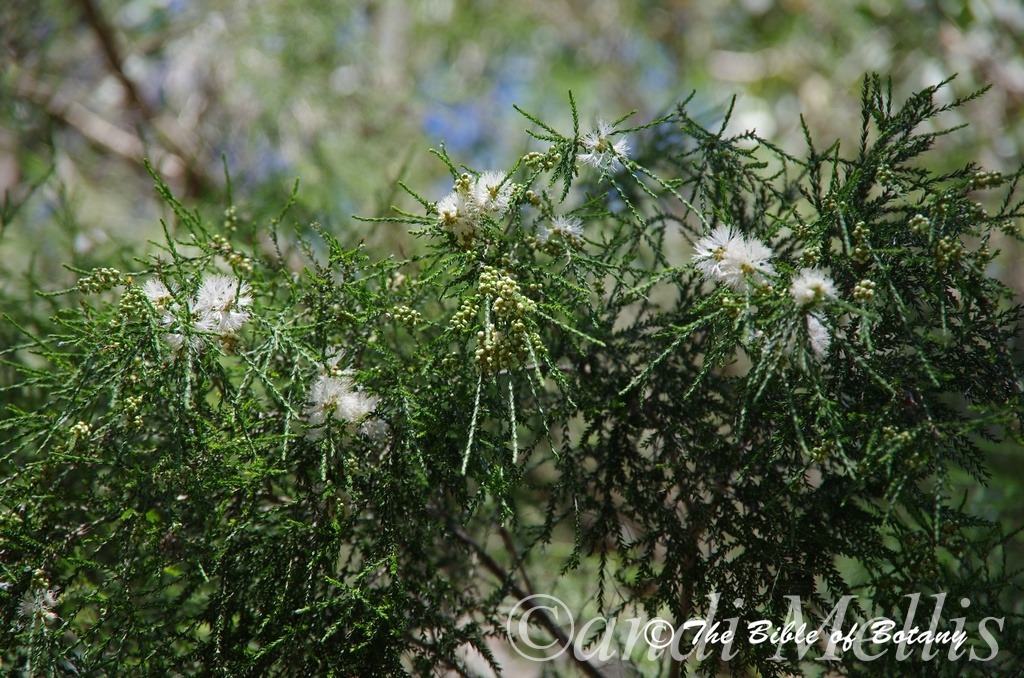
Koolkhan NSW
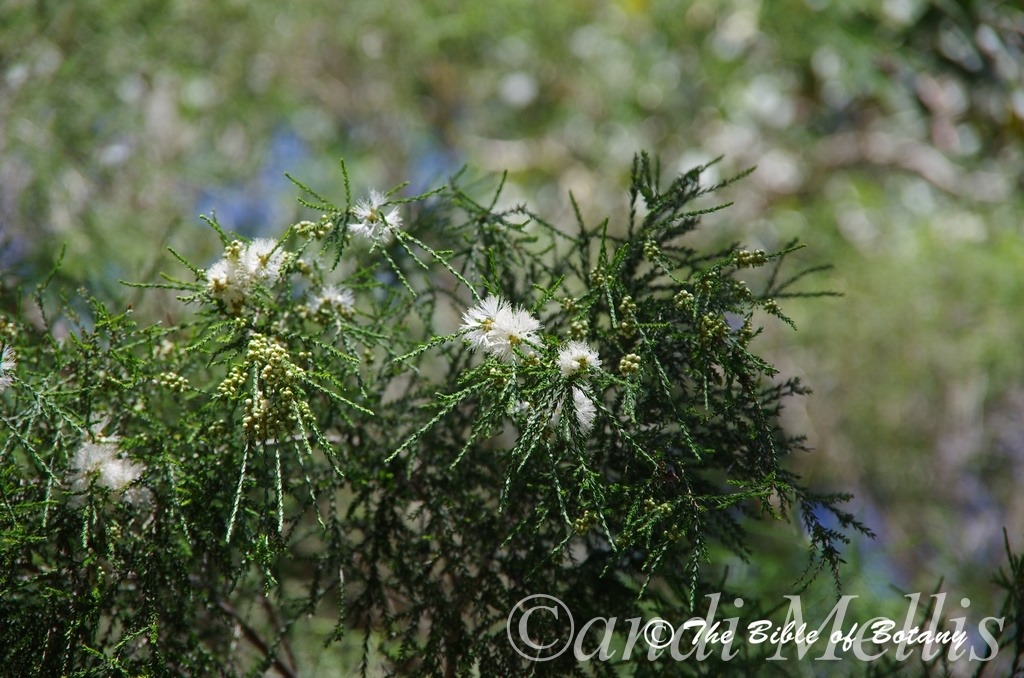
Koolkhan NSW
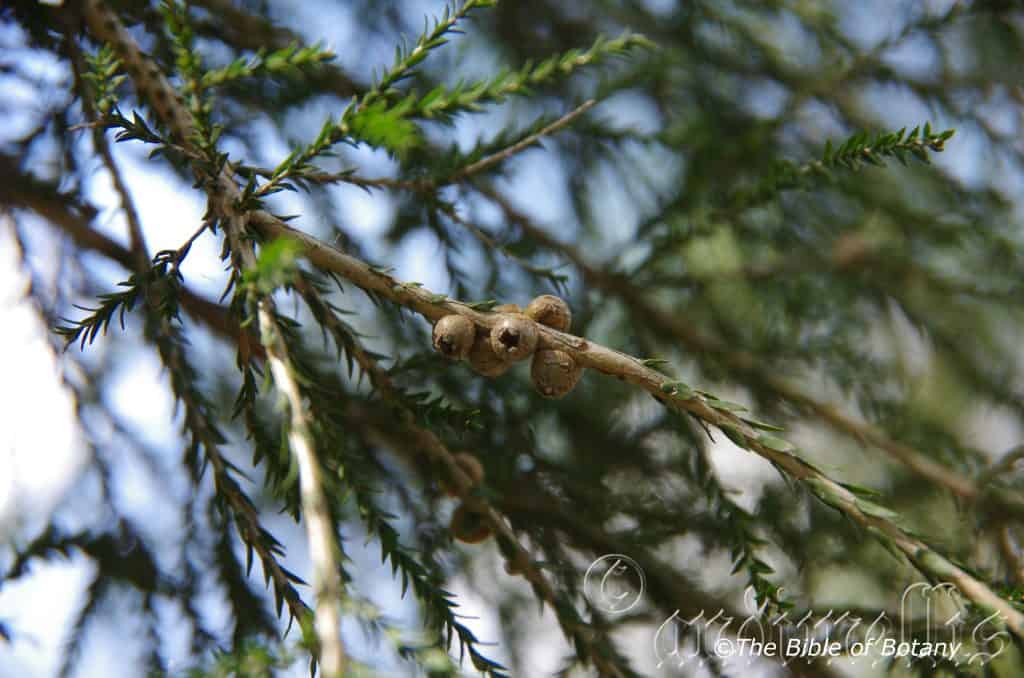
Koolkhan NSW
Melaleuca irbyana
Classification:
Division: Eudicots
Division: Rosids
Order: Myrtales
Family: Myrtaceae
Subfamily: Myrtoideae
Tribe: Melaleuceae
Genus: From Melas, which is Ancient Greek for black and Leukos, which is Ancient Greek for white. It refers to plants, which usually have white papery barks that are often charred by fire thus the bark is black and white.
Specie: From Hyper, which is Ancient Greek for above or over, Eikon, which is Ancient Greek for a picture and Folia, which is Latin for foliage. It refers to the foliage resembling that of the Hypericum genus.
Sub species:
Common Name: Weeping Paper Bark.
Distribution:
Melaleuca irbyana is found south from the upper Brisbane Valley in south eastern Queensland to Coutts Crossing south of Grafton in northern New South Wales. It is found east of the Great Dividing Range. There is an outlying population north of Taroom.
https://avh.ala.org.au/occurrences/search?taxa=Melaleuca+irbyana#tab_mapView
Habitat Aspect Climate:
Melaleuca irbyana prefers full sun to dappled shade. It grows in wet Eucalyptus forests on very poorly drained flat terrains. The altitude ranges from 20 meter ASL to 209 meters ASL.
The temperatures range from minus 3 degrees in August to 40 degrees in January.
The rainfalls range from lows of 800mm to an average of 1200mm.
Soil Requirements:
Melaleuca irbyana prefers poorly drained to well drain medium silts to heavy clays. The soils are usually derived from decomposed sandstones, brown basalts or shales laid down as alluvial deposits. The soils pH. ranges from 4.5pH to 5.5pH. It tolerates waterlogged soils and prefers sites that suffer from seasonal inundation and flooding. Non saline soils to moderately saline soils are tolerated.
Height & Spread:
Wild Plants: 3m to 8m by 4m to 5m.
Characteristics:
Melaleuca irbyana grows as a small tree with thick, corky, papery bark. The bark is pale creamy fawn to pale creamy brown, thick and tightly wrapped around the trunk and larger branches. The bark splits and peels back over the year. The smaller stems are creamy white to pale creamy yellow and spongy to the touch. The branchlets are pale creamy white to pale creamy yellow or creamy fawn, while the newest shoots are green and glabrous. The branches have a strong weeping habit.
Melaleuca irbyana‘s alternate strongly appressed leaves are elliptical to ovate and measure 2mm to 3mm in length by 1mm to 1.5mm in width on lateral shoots or 3mm to 5mm in length by 1mm to 1.8mm on the main stems. The base is rounded while the apex is acute to acuminate. The concolourous laminas are deep olive green dull, glabrous and coriaceous. Immature leaves are paler green to bronze-green, dull and are glabrous. The mid vein is slightly prominent on the lower lamina. The margins are entire. The leaves are sessile.
The inflorescence of Melaleuca irbyana is many spikes born from the special lateral shoots from the terminals. The flower terminal shoots grow out before the flowers finish blooming. The rachis is covered in white puberulent hairs and measure 12mm to 30mm long by 7mm to 10mm in diameter. The flowers are born three with in each bract. There are 5 to 20 individual flowers on a spike. They measure 4.5mm to 6mm in diameter. The 5 broad orbicular petals are pink to a dull pale red and measure 1.5mm to 1.7mm in length by 1.4mm to 1.5mm in width. It is persistent while the stamens fully develop.
The white to creamy yellow stamens are the most prominent part of the flowers. There are 6 to 12 stamens on each of 5 claws. The claws measure 3mm to 4mm in length while the filaments measure 4 mm to 6mm in length. The anthers are white with white pollen.
The short, slender, white to pale cream style measures 8mm to 11mm in length, while the ovary has 4 locules. The base of the style is surrounded by the nectaries. The flowers appear from late mid-August to early February.
Melaleuca irbyana‘s fruit is a globose, glabrous capsule. The capsules measure 4mm to 5mm long by 3.5mm to 4.5mm in diameter. The enclosed orifice measures 1mm to 2mm in diameter. The woody capsule is dull pale creamy fawn. The capsules contain seeds mixed with chaff. The seeds are deep brown, and measure 0.6 to 0.8mm in length and look swollen compared to the chaff. The calyx lobes are persistent and erect at the apex of the capsules.
Confusing Species:
Melaleuca irbyana‘s leaves measure 1.5mm to 2mm in length. The flowers spikes measure 10mm to 25mm in length. The capsules measure 3.5mm to 4mm in diameter.
Melaleuca tamariscina‘s leaves measure 2mm to 4mm in length. The flowers spikes measure 12mm to 60mm in length. The capsules measure 4mm to 5mm in diameter.
Wildlife:
Melaleuca irbyana supports many native bees, native flies, native beetles and butterflies when in flower. The beetle Eleale fasciata is frequently seen around the blooms of Melaleuca irbyana.
Cultivation:
Melaleuca irbyana makes an excellent medium size dense canopy tree for native gardens. It is suitable on wet drainage problem soils from light clays to heavy clays and are most suitable for small, medium and large gardens close to the coast in warm temperate and sub-tropical gardens or semi-arid gardens. As garden subjects it will grow from 6 meters to 8 meters in height by 3.5 meters to 4.5 meters in diameter as a small tree or 2.5 meters to 3 meters in height by 2.5 meters to 3.5 meters in diameter as a large shrub when grown in the open.
It is cold tolerant to temperatures at least as low as minus 4 degrees once established and are surprisingly drought tolerant. It is very fast growing especially with a good fertilizing program and with a little moisture will grow more than 1 meter a year. They will drop a lot of the foliage when stressed during drought times but recover as soon as good rains fall. To avoid this, give the plants a double dose of our recommended fertilizer and a good deep soaking during a prolonged drought and keep the soil well mulched to prevent any water loss to the atmosphere. This will prevent further loss and hold them over for several more months.
It can be used for light dappled shade. It is an excellent tree for areas that have drainage problems and slightly saline soils. When planting the trees for a forest try to place them near the edge so the weeping foliage and flowers can be fully appreciated, and their natural bushy canopy is not interfered with.
It is useful as a backdrop small tree contrasting with smaller broader leaf shrubs that are planted in the foreground. The bark is a strong character for wanting to plant this tree. Avoid strong wind areas as it may prematurely strip the trees of their bark or at the best make them look ragged.
Plant it together with shorter broad leaf plants using unequal gaps and free flowing curves to accentuate height and depth. Use wider spacing to give a softer horizontal affect or place them closer together for a more vertical look, to the background. Melaleuca citrina could be used where a bold flowering contrast is warranted for a couple of months of the year. The dwarf golden form of Melaleuca bracteata is particularly good where a strong contrast is required between the plants for most of the year. Here you would need a mid-size plant with larger pale green leaves to break up the fine leaves of the other two Melaleucas. Some good companion plants would be the medium size hybrids from Melaleuca viminalis in the background as you do not want to lose the beautiful affect from the papery bark.
Place 2 or 3 of them in the center of a large rockery with other large or finer leaf ground covers and very small shrubs in the front. Plant them off center to give the strongest affect. Plants with pink, red or purple flowers can be used in both the fore ground and mid ground. This will lead your eyes directly to the proliferation of cream to white flowers and the beautiful pendulous branchlets for a longer period.
Ensure that the whole plant or at least most of it is on display from most sections of the garden as the flowers are a real bonus.
When it is in flower these plants will catch your attention and the viewer will be transfixed on the display rather than watching the path. Plant them with 7 meters to 9-meter centers or scatter them through the bush for patches of white during the flowering season.
It makes an ideal plant for Bonsai collectors due to the fine leaves, its hardiness and supple pendulous branchlets.
Propagation:
Seeds: Melaleuca irbyana seeds can be sown directly into a seed raising mix. Cover the seeds with 1mm to 2mm of fine weed free mulch and keep moist. Place the tray in a warm sunny position. When the seedlings are 15mm to 20mm tall, prick them out and plant them into 20mm native tubes using a good organic mix.
When the seedlings are 70mm to 90mm tall, prick them out and plant them into 50mm native tubes using a good organic mix or plant them out into their permanent positions.
Once the seedlings reach 150mm to 200mm in height they can be planted out into their permanent position.
Cuttings: Use 100mm to 150mm long half ripened material when growing from cuttings from the present season’s growth. Take them in warmer months of the year. Remove half the leaves from the bottom section being careful not to tear the bark.
1 Prepare the cutting mix by adding one third sharp clean river sand, one third peat and one third perlite. These ingredients are sterilize,
2 Select good material from non diseased plants,
3 Select semi green stems for cuttings. Look for a stem with two or three nodes,
4 Place the cutting on a flat, hard surface, and make a clean cut down one side of the cutting at the base for 10mm with a sharp sterile knife or razor blade. – This scarification of the node will increase the chances of roots emerging from this spot. Now remove all but one or two the leaves, leaving the apex leaves in tact. If the leaves are very large in proportion to the stem, cut off the apical halves.
5 Fill a saucer with water, and place a little medium strength rooting hormone into another container like a milk bottle top. Dip the node end of the cutting into the water and then into the rooting hormone. Tap off any excess hormone,
6 Use a small dipple stick or old pencil to poke a hole into the soilless potting mix. Ensure the hole is slightly larger than the stem diameter and be careful not to wipe the rooting hormone off the cuttings base, place the cuttings in a pattern ensuring the cuttings are not touching each other,
7 I like to place the pots in Plastic bags to help maintain temperature and moisture. Place in a semi shaded place like under 50mm shade cloth.
8 When the cuttings have struck, open the bag to allow air circulation for a few days to a week,
9 Once hardened off remove the cuttings from the bag and allow to further hardening for a few more days,
10 Transplant into a good potting mix to grow on.
Fertilize using seaweed, fish emulsion or organic chicken pellets soaked in water on an alternate basis. Fertilize every two months until the plants are established then twice annually in early September or March to maintain health, vitality and better flowering.
Further Comments from Readers:
Hi reader, it seems you use The Bible of Botany a lot. That’s great as we have great pleasure in bringing it to you! It’s a little awkward for us to ask, but our first aim is to purchase land approximately 1,600 hectares to link several parcels of N.P. into one at The Pinnacles NSW Australia, but we need your help. We’re not salespeople. We’re amateur botanists who have dedicated over 30 years to saving the environment in a practical way. We depend on donations to reach our goal. If you donate just $5, the price of your coffee this Sunday, We can help to keep the planet alive in a real way and continue to bring you regular updates and features on Australian plants all in one Botanical Bible. Any support is greatly appreciated. Thank you.
In the spirit of reconciliation we acknowledge the Bundjalung, Gumbaynggirr and Yaegl and all aboriginal nations throughout Australia and their connections to land, sea and community. We pay our respect to their Elders past, present and future for the pleasures we have gained.

Mount Cootha Botanical Gardens Qld.

Mount Cootha Botanical Gardens Qld.
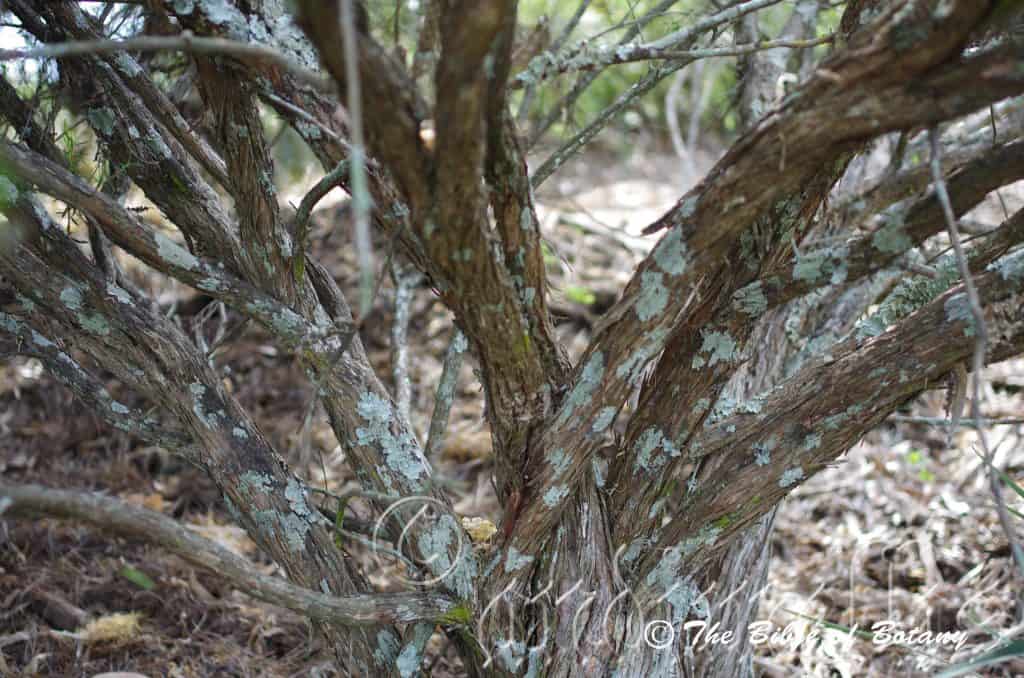
Mount Cootha Botanical Gardens Qld.
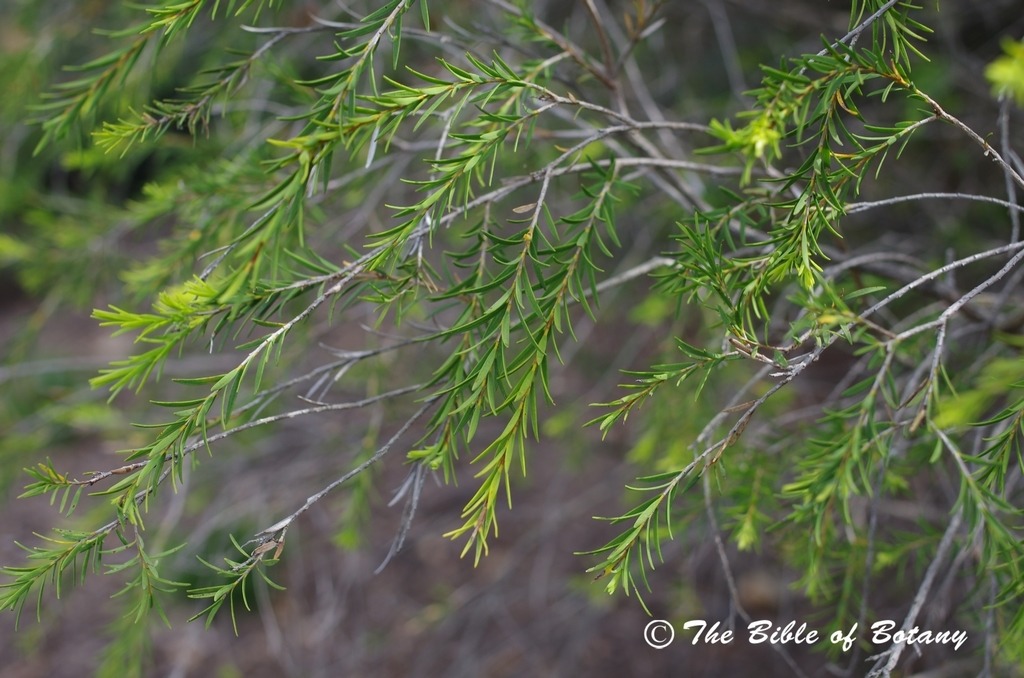
Mount Cootha Botanical Gardens Qld.

Mount Cootha Botanical Gardens Qld.
Melaleuca lateritia
Classification:
Division: Eudicots
Division: Rosids
Order: Myrtales
Family: Myrtaceae
Subfamily: Myrtoideae
Tribe: Melaleuceae
Genus: From Melas, which is Ancient Greek for black and Leukos, which is Ancient Greek for white. It refers to plants, which usually have white papery barks that are often charred by fire thus the bark is black and white.
Specie: From Latericius, which is Latin for brick red. It refers to the colour of the flowers being brick red in colour.
Sub species:
Common Name: Robin Red Breast.
Distribution:
Melaleuca laterita is found south from Geraldton along the coast to east of Albany. It extends inland in the Swan River catchment and east from Bunbury to Albany.
https://avh.ala.org.au/occurrences/search?taxa=Melaleuca+lateritia#tab_mapView
Habitat Aspect Climate:
Melaleuca laterita prefers full sun to dappled shade. It grows in swamps or wallum heath lands. The altitude ranges from 10 meter ASL to 250 meters ASL.
The temperatures range from 3 degrees in August to 38 degrees in January.
The rainfalls range from lows of 400mm to an average of 1200mm. The rainfall is of little importance as such as the shrubs grow where there is permanent water. It is found growing in the water for part of the year or where their roots can access permanent water from a high water table.
Soil Requirements:
Melaleuca laterita prefers a wide range of soil types from white sands, yellow or brown sandy loams to deep brown or black medium clays. The soils are usually derived from decomposed sandstone, sandstone laterites, granites or alluvial flats. The soils pH. ranges from 5pH to 7pH. It tolerates waterlogged soils though it prefers sites that are better drained but have seasonal high water tables. Non saline soils to moderately saline soils are tolerated as are salt laden winds.
Height & Spread:
Wild Plants: 1m to 2.5m by 0.6m to 1m.
Characteristics:
Melaleuca laterita grows as a small, open, erect shrub with grey-brown scabrous to glabrous stems. The smaller stems are creamy fawn to pale creamy white. The branchlets are pale creamy white to pale creamy yellow or creamy pink close to the apex, while the newest shoots are covered in white puberulent hairs. The branches have are upright habit and weep near the apex.
Melaleuca laterita‘s alternate leaves are linear and measure 18mm to 23mm in length by 1.5mm to 2.5mm in width. The base is rounded while the apex tapers to a point. The concolourous laminas are deep green to deep grey-green dull, glabrous and stiff. Immature leaves are paler green, dull and are covered in white caduceus puberulent hairs. The mid vein is slightly prominent on the lower lamina. The margins are entire and flat. The petiole is sessile or has a short petiole which measures less than 1mm. The leaves are bland when crushed.
The inflorescence of Melaleuca laterita is a single spike born from the special lateral shoots from along the stems the terminals. The flower terminal shoots grow out before the flowers finish blooming. The rachis is glabrous and measures 60mm to 90mm in length by 45mm to 50mm in diameter. The flowers are born in threes with in each bract. There are 50 to 86 individual flowers on a spike. They measure 10mm to 12mm in diameter. The 5 oblong petals are lime-green and measure 3mm to 3.5mm in length by 3mm to 3.1mm in width. It is persistent while the stamens fully develop.
The orange-red to brick red stamens are the most prominent part of the flowers. The claws are opposite the petals and measure 8mm to 12mm in length. There are 6 to 12 stamens in each of the 5 claws. The filaments measure 12mm to 15mm in length. The anthers are white with white pollen and measure 0.4mm to 0.5mm in length.
The long, slender, orange-red style measures 27mm to 30mm in length, while the ovary divides into 4 locules. The base of the style is surrounded by the nectaries. The flowers appear over a long period between from early September to January however flowers often appear as late as late April in favourable conditions.
Melaleuca laterita‘s fruit is a globose, glabrous capsule. The capsules measure 4.5mm to 5mm long by 4.8mm to 5.3mm in diameter. The square shaped and deeply enclosed orifice measures 2.8mm to 3mm in diameter. The woody capsule is grey. The capsules may contain hundreds of seeds and chaff.
Wildlife:
Melaleuca laterita supports many native bees, native flies, native beetles and butterflies when in flower. It also supports many small honeyeaters which are attracted to the plentiful supply of nectar.
Cultivation:
Melaleuca laterita makes an excellent small open foliage shrub for native gardens. It is suitable on all soil types of sandy loams to medium clays and are most suitable for small, medium and large gardens close to the coast in temperate, sub tropical or semi-arid gardens. As garden subjects it is will grow from 1.5 meters to 2.5 meters in height by 1.5 meters to 2.5 meters in diameter. It is cold tolerant to temperatures at least as low as minus 3 degrees once established and are surprisingly drought tolerant for a wallum plant.
It is very fast growing especially with a good fertilizing program and with a little moisture growing 1 meter a year. They will drop a lot of the foliage when stressed during drought times but recover as soon as good rains fall. To avoid this, give the plants a double dose of our recommended fertilizer and a good deep soaking. This will prevent further loss and hold them over for several more months.
2, 3 or 5 planted using curves, or near bends will become a very strong upright focal point when it is in flower. Melaleuca lateritia is one plant that benefits from either being mass planted for colour or scattered throughout the garden for splashes of brilliant colour at a time when there are few plants in flower.
They should be regularly tip pruned if a hedge is required or if you wish to maintain a shorter plant bushier shrub. This can be maintained with regular pruning and planting closer together. They respond well to tip pruning, recovering quickly and will increasing the number of flowers in the following season. To prolong the flowering period in the following season prune about a third of the present seasons growth back, ensuring that all the seed capsules have been removed. Follow this with a double dose of our recommended fertilizing program. After 1 or 2 days give them another deep soaking so that all the root zone is wet. Repeat this soaking every 6 weeks if good rains have not fallen. If this is carried out the plants will commence flowering as soon as the weather warms and will continue to do so until the end of April or the weather cools.
Place 2 or 3 of them in the center of a large rockery with other large or broader leaf ground covers and very small shrubs in the front. Plants with white, yellow, pink or purple flowers can be used in both the fore ground and background. This will lead your eyes directly to the array of deep orange-red flowers.
Ensure that the whole plant or at least most of it is on display from most sections of the garden as the flowers are a real bonus.
When it is in flower these plants are eye catching to the viewer who will be transfixed on the display rather than watching the path. Plant them with 0.8 meter to 1.2 meter centers or scatter them through the bush for patches of brilliant orange-red and salmon over long periods.
Propagation:
Seeds: Melaleuca laterita seeds can be sown directly into a seed raising mix. Cover the seeds with 1mm to 2mm of fine weed free mulch and keep moist. Place the tray in a warm sunny position. When the seedlings are 15mm to 20mm tall, prick them out and plant them into 20mm native tubes using a good organic mix.
When the seedlings are 70mm to 90mm tall, prick them out and plant them into 50mm native tubes using a good organic mix or plant them out into their permanent positions.
Once the seedlings reach 150mm to 200mm in height they can be planted out into their permanent position.
Cuttings: Use 100mm to 150mm long half ripened material when growing from cuttings from the present season’s growth. Take them in warmer months of the year. Remove half the leaves from the bottom section being careful not to tear the bark.
1 Prepare the cutting mix by adding one third sharp clean river sand, one third peat and one third perlite. These ingredients are sterilize,
2 Select good material from non diseased plants,
3 Select semi green stems for cuttings. Look for a stem with two or three nodes,
4 Place the cutting on a flat, hard surface, and make a clean cut down one side of the cutting at the base for 10mm with a sharp sterile knife or razor blade. – This scarification of the node will increase the chances of roots emerging from this spot. Now remove all but one or two the leaves, leaving the apex leaves in tact. If the leaves are very large in proportion to the stem, cut off the apical halves.
5 Fill a saucer with water, and place a little medium strength rooting hormone into another container like a milk bottle top. Dip the node end of the cutting into the water and then into the rooting hormone. Tap off any excess hormone,
6 Use a small dipple stick or old pencil to poke a hole into the soilless potting mix. Ensure the hole is slightly larger than the stem diameter and be careful not to wipe the rooting hormone off the cuttings base, place the cuttings in a pattern ensuring the cuttings are not touching each other,
7 I like to place the pots in Plastic bags to help maintain temperature and moisture. Place in a semi shaded place like under 50mm shade cloth.
8 When the cuttings have struck, open the bag to allow air circulation for a few days to a week,
9 Once hardened off remove the cuttings from the bag and allow to further hardening for a few more days,
10 Transplant into a good potting mix to grow on.
Fertilize using seaweed, fish emulsion or organic chicken pellets soaked in water on an alternate basis. Fertilize every two months until the plants are established then twice annually in early September or March to maintain health, vitality and better flowering.
Further Comments from Readers:
Hi reader, it seems you use The Bible of Botany a lot. That’s great as we have great pleasure in bringing it to you! It’s a little awkward for us to ask, but our first aim is to purchase land approximately 1,600 hectares to link several parcels of N.P. into one at The Pinnacles NSW Australia, but we need your help. We’re not salespeople. We’re amateur botanists who have dedicated over 30 years to saving the environment in a practical way. We depend on donations to reach our goal. If you donate just $5, the price of your coffee this Sunday, We can help to keep the planet alive in a real way and continue to bring you regular updates and features on Australian plants all in one Botanical Bible. Any support is greatly appreciated. Thank you.
In the spirit of reconciliation we acknowledge the Bundjalung, Gumbaynggirr and Yaegl and all aboriginal nations throughout Australia and their connections to land, sea and community. We pay our respect to their Elders past, present and future for the pleasures we have gained
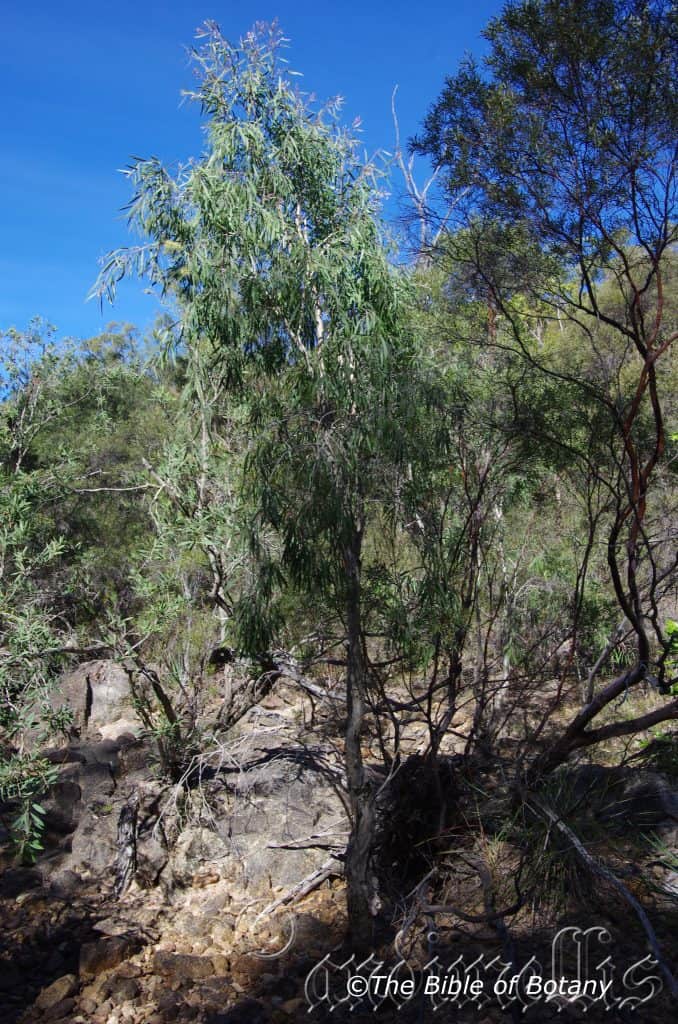
Crystal Creek Paluma Range National Park Qld.
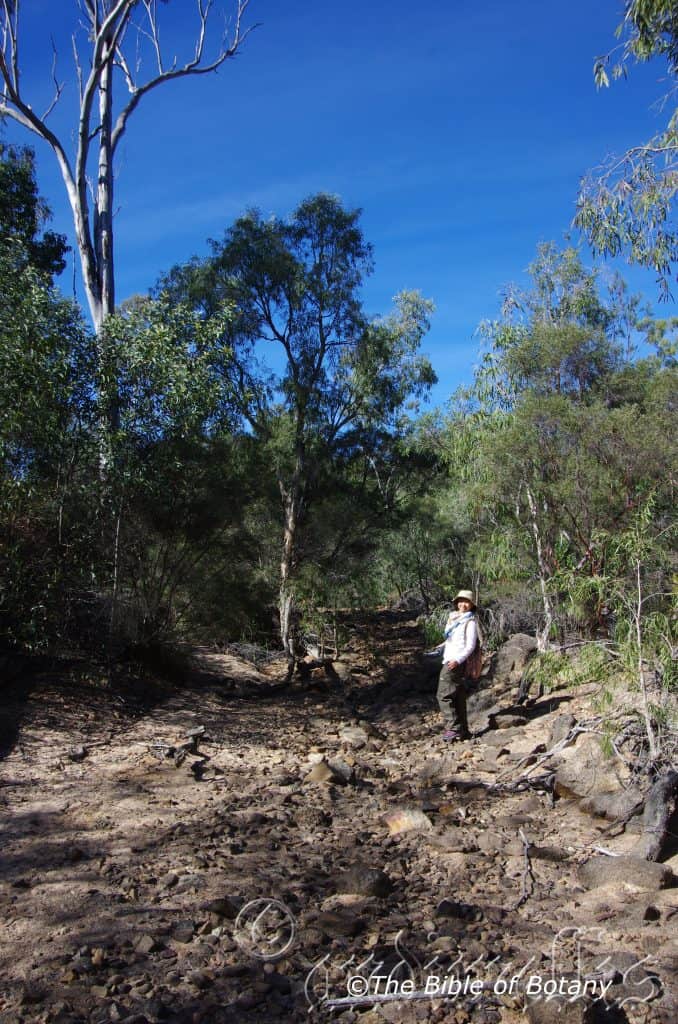
Crystal Creek Paluma Range National Park Qld.

Ross River Condon Qld.
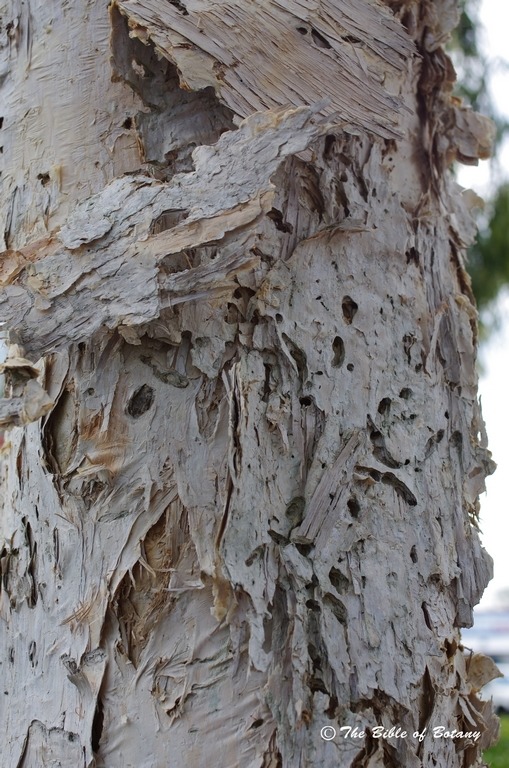
Brookside Qld.
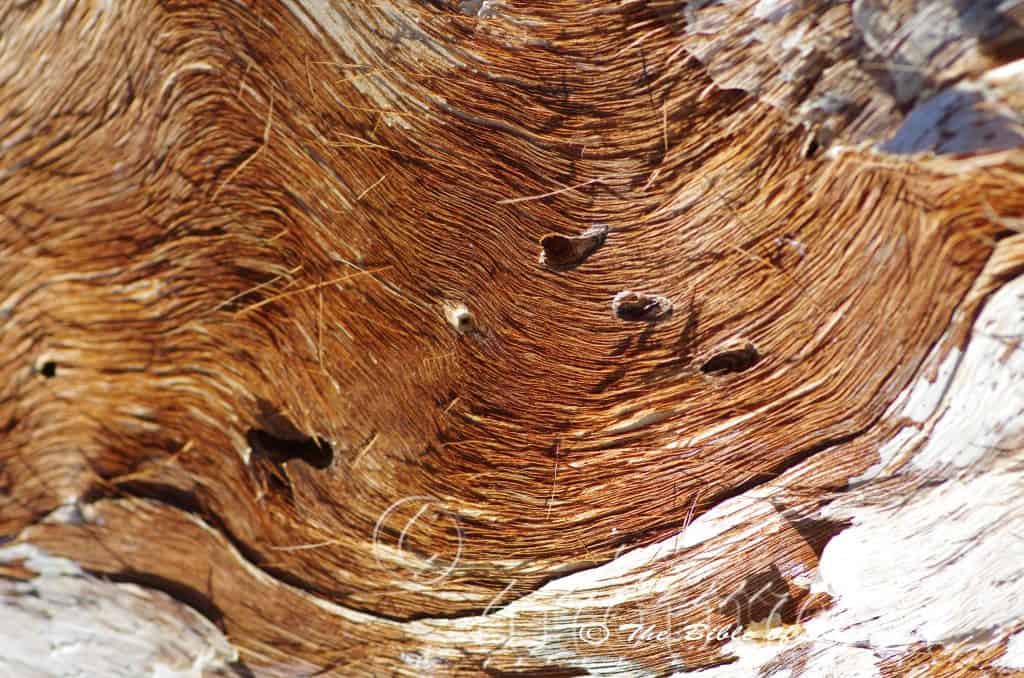
Ross River Condon Qld.
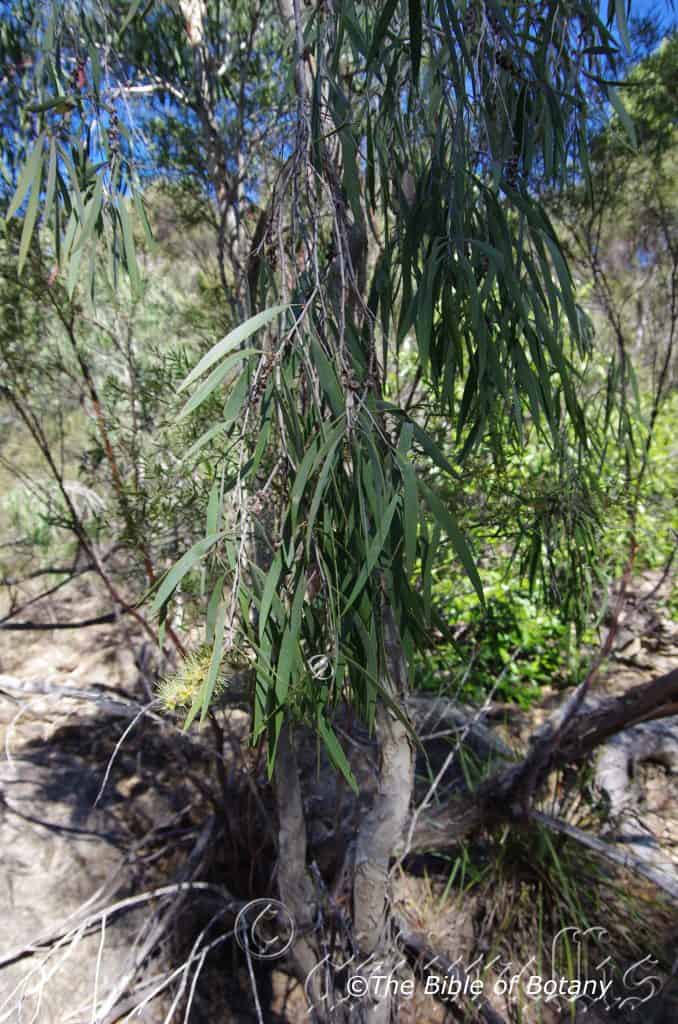
Crystal Creek Paluma Range National Park Qld.

Author’s Garden The Pinnacles NSW
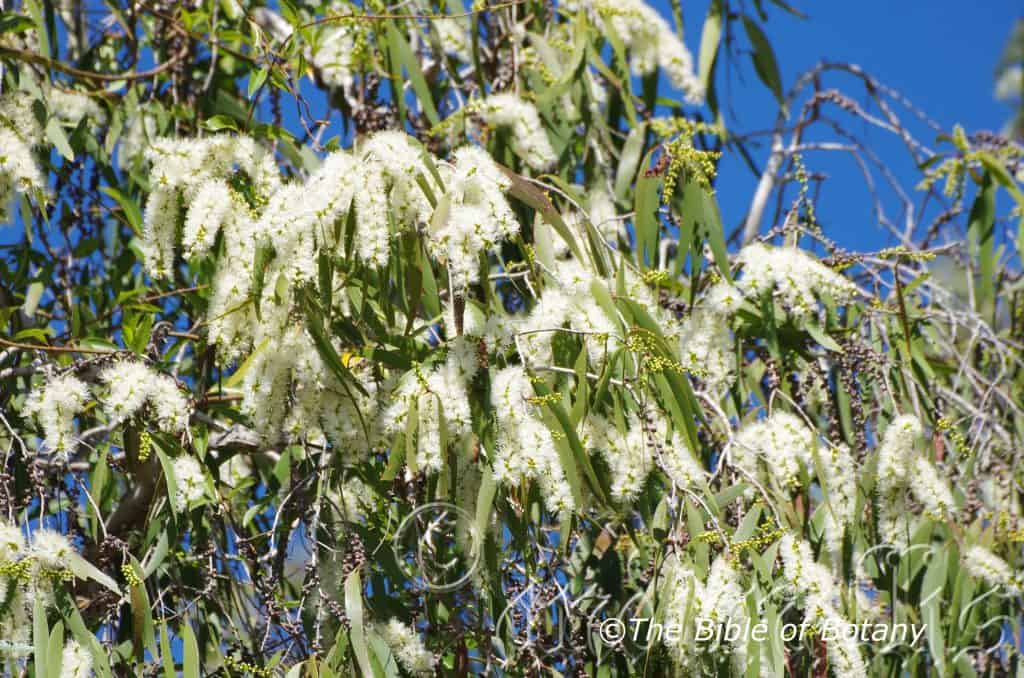
Crystal Creek Paluma Range National Park Qld.
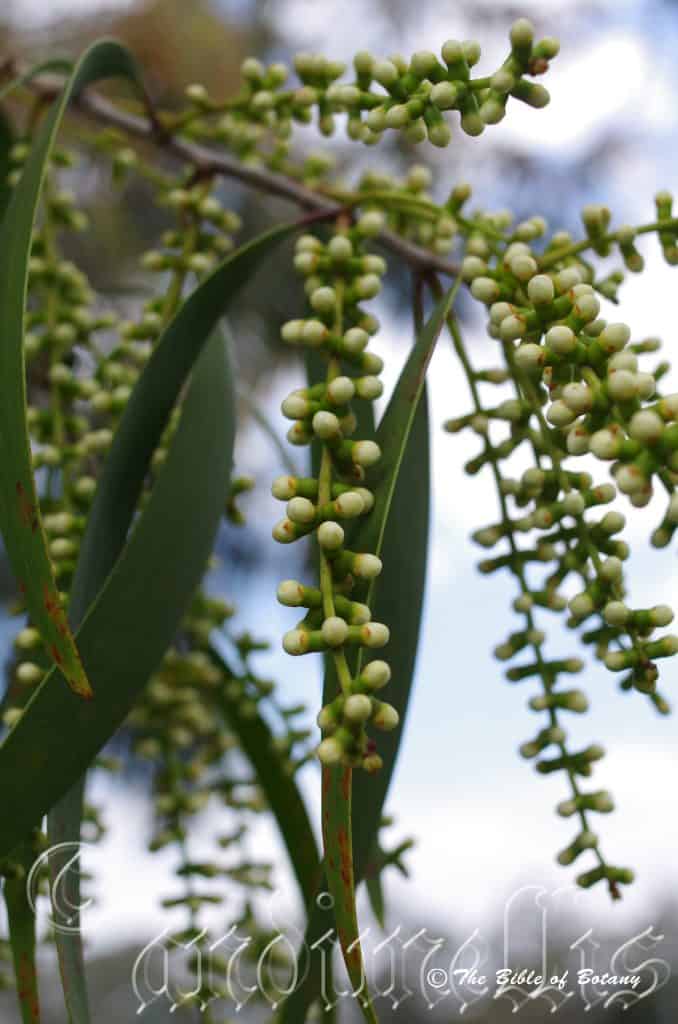
Crystal Creek Paluma Range National Park Qld.
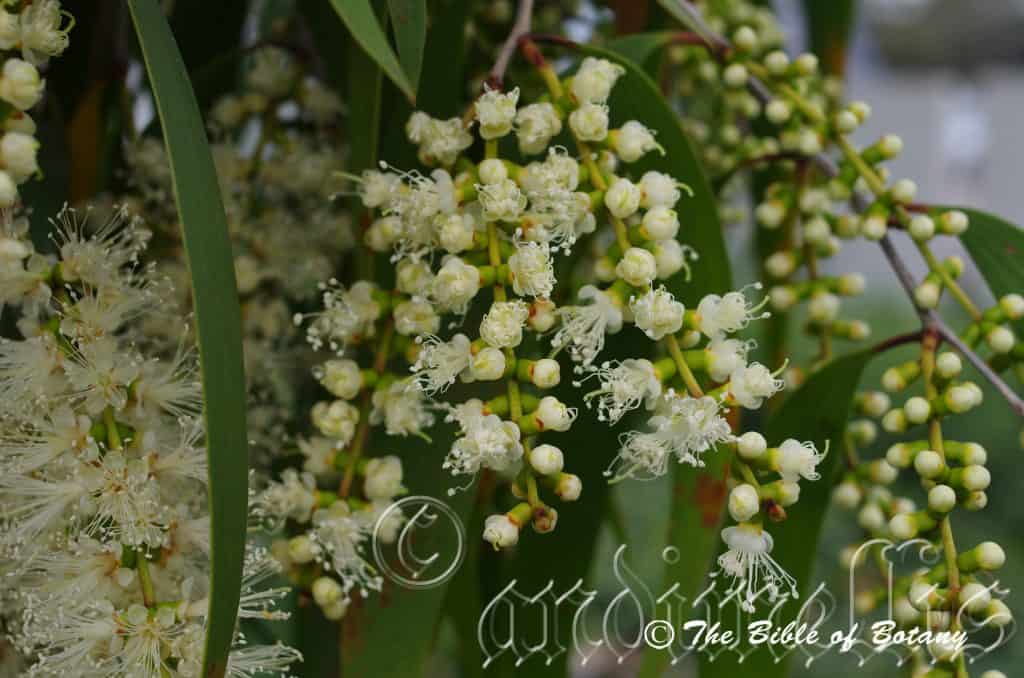
Crystal Creek Paluma Range National Park Qld.
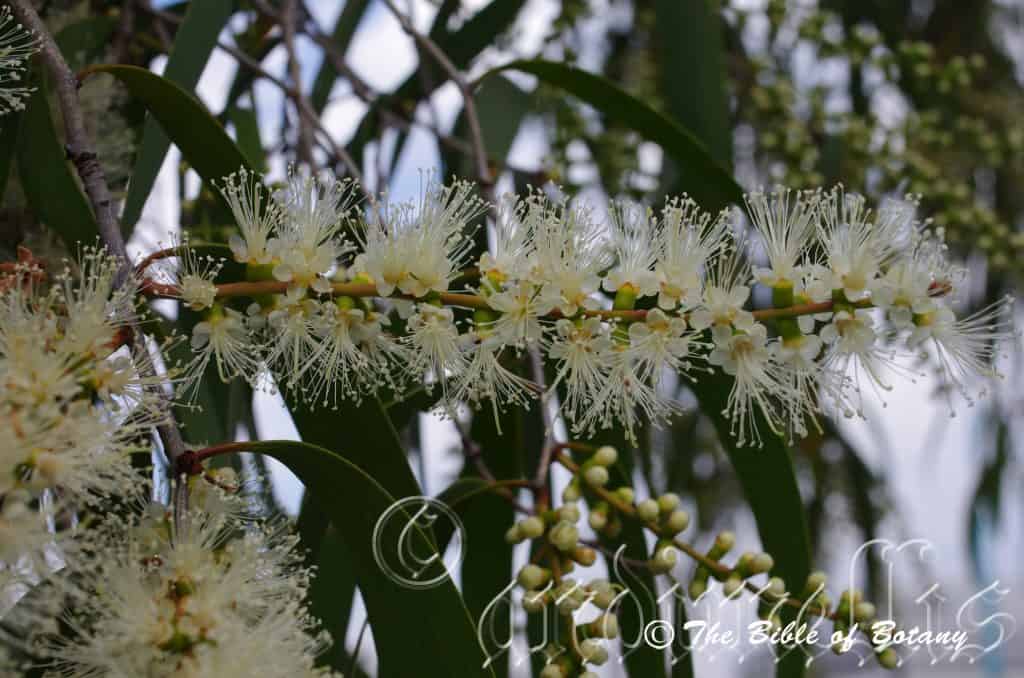
Grafton NSW
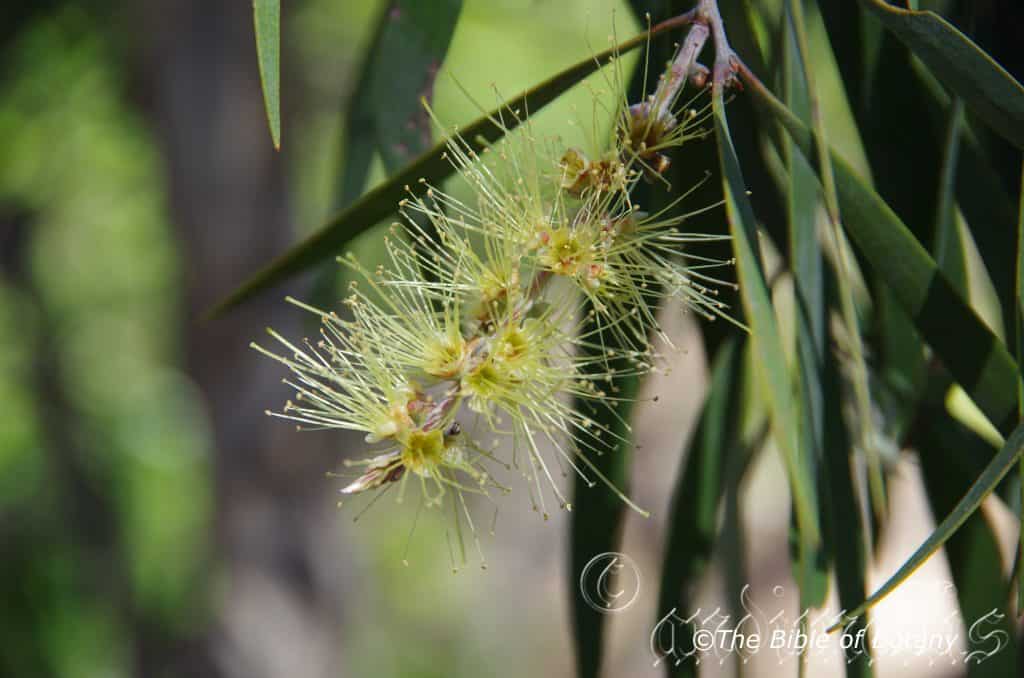
Crystal Creek Paluma Range National Park Qld.
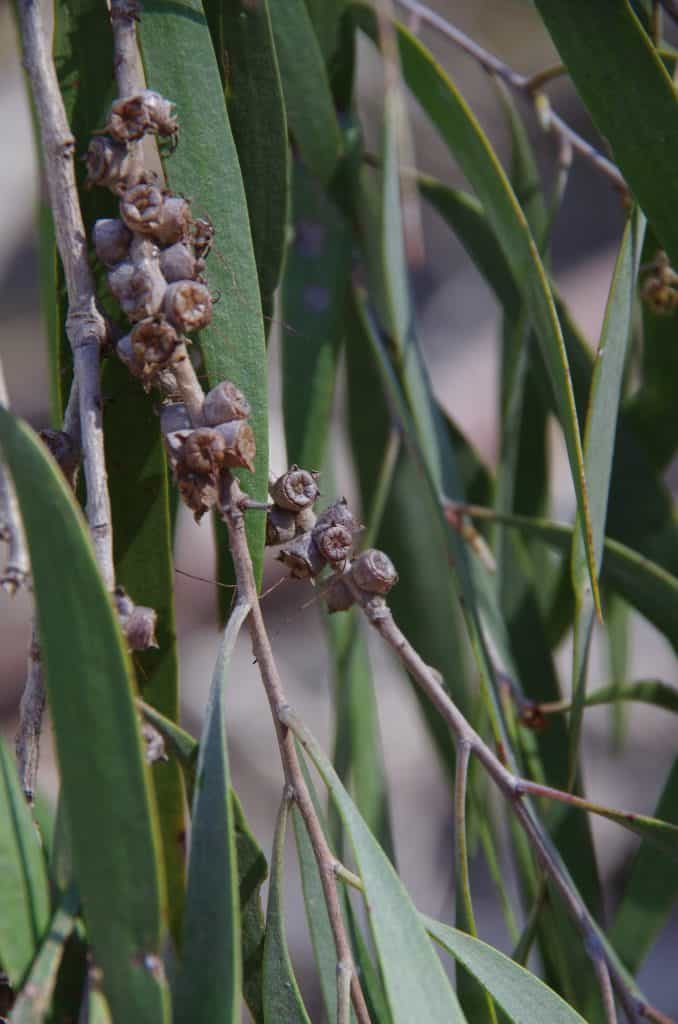
Crystal Creek Paluma Range National Park Qld.

Crystal Creek Paluma Range National Park Qld.
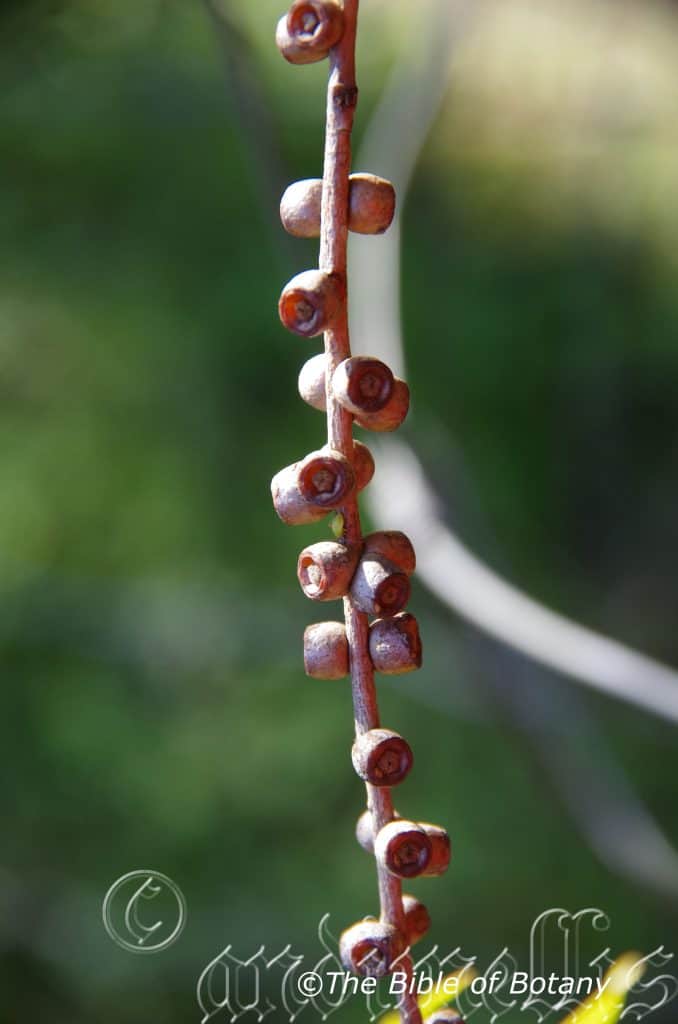
Crystal Creek Paluma Range National Park Qld.
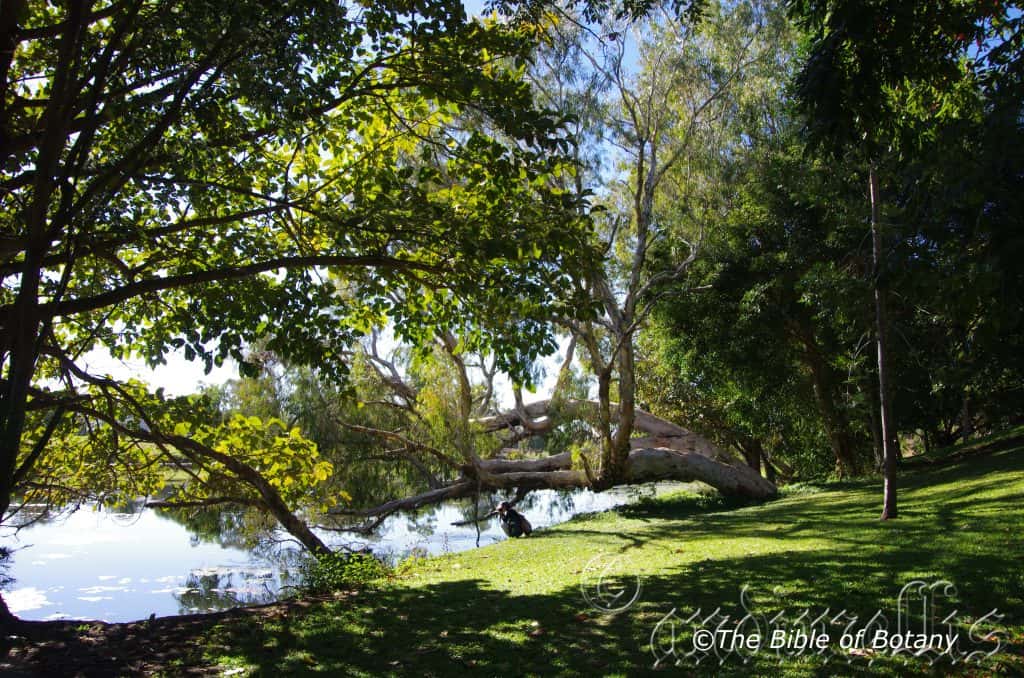
Ross River Condon Qld.
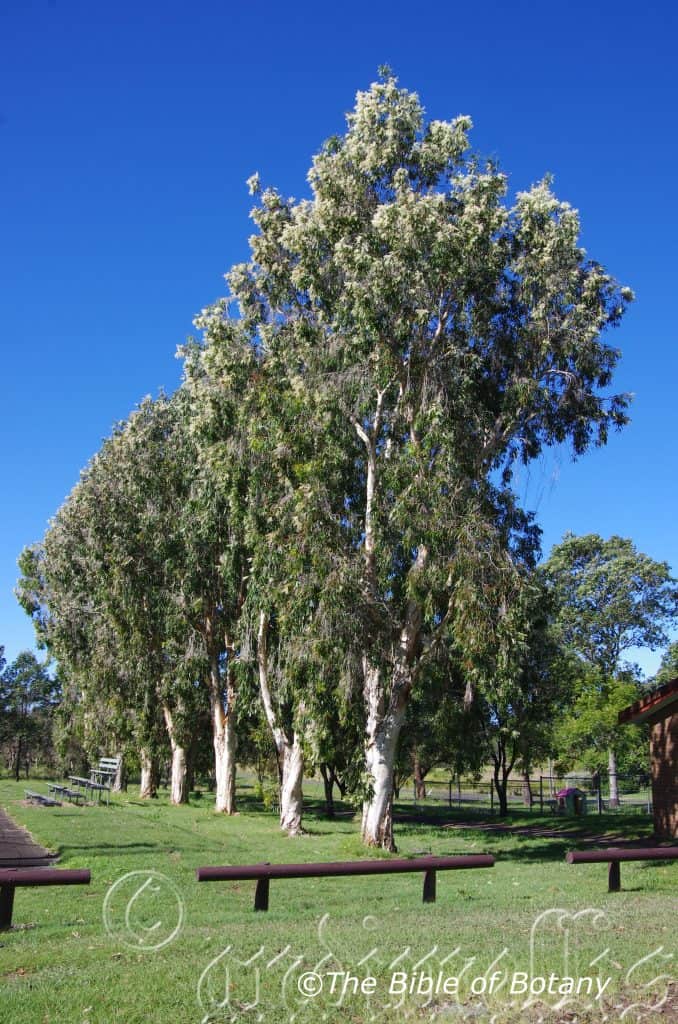
Melaleuca leucadendra
Classification:
Division: Eudicots
Division: Rosids
Class:
Order: Myrtales
Family: Myrtaceae
Subfamily: Myrtoideae
Tribe: Melaleuceae
Genus: From Melas, which is Ancient Greek for black and Leukos, which is Ancient Greek for white. It refers to plants, which usually have white papery barks that are often charred by fire thus the bark is black and white.
Specie: From Leukos, which is Ancient Greek for white and Dendron, which is Ancient Greek for a tree. It refers to plants, which are taller that have a chalky white papery bark compared to other species,which are mainly shrubs or small trees.
Sub species:
Common Name: Broad Leaf Paper Bark or White Paper Bark.
Distribution:
Melaleuca leucadendra is found east from north of Dampier Peninsula in north western coastal Western Australia to Fraser Island and Gladstone on the east coast of southern Queensland
There is an outlying population east of Port headland and on the Fortescue River south of Port headland.
https://avh.ala.org.au/occurrences/search?taxa=Melaleuca+leucadendra#tab_mapView
Habitat Aspect Climate:
Melaleuca leucadendra prefers full sun to dappled shade. It grows in moist Eucalyptus forests on very poorly drained soils subject to periodic inundation and along water courses, swamps, wallums and around billabongs where permanent water is located. The altitude ranges from 5 meters ASL to 700 meters ASL.
The temperatures range from 5 degrees in August to 43 degrees in the January.
The rainfalls range from lows of 240mm to an average of 3200mm. The rainfall is of little importance as such as the trees grow where there is permanent water. It is found growing in the water or where their roots can access permanent water.
Soil Requirements:
Melaleuca leucadendra prefers poor to better quality fertile sandy loams to medium clays or light silts to heavy silts. The soils are usually derived from decomposed sandstone and lateritic sandstones, granites, accumulated beach sands or alluvial deposits. The soils pH. ranges from 5pH to 7pH. It tolerates waterlogged soils and seasonal high water tables which may flood the land. Non saline soils to very saline soils are tolerated as are salt laden winds.
Height & Spread:
Wild Plants: 16m to 20m by 6m to 8m.
Characteristics:
Melaleuca leucadendra grows as a medium tree with thick papery, white to pale creamy pink bark that is loosely wrapped around the trunk and larger branches. The smaller stems are white to pale creamy yellow and spongy to the touch. The branchlets are pale creamy white to pale creamy yellow or creamy fawn, while the youngest shoots are green or green with a pinkish-red tinge and glabrous or densely covered in white puberulent hairs. The branches have a strong weeping habit.
Melaleuca leucadendra‘s alternate, coriaceous leaves are narrow lanceolate to narrow elliptical and measure 110mm to 170mm in length by 8mm to 21mm in width. The leaves hang pendulously from the stems. The base is cuneate while the apex tapers to acute. The concolourous laminas are blue-green or silvery-green, dull and glabrous. Immature leaves are pale blue-green or silvery-green, dull and are densely covered in silky white caduceus sericeous hairs. There are 5longnitudinal veins which are conspicuous on both laminas. The margins are entire and thickened. The petiole measures 3mm to 4mm in length and is green or pinkish-red. The leaves are highly aromatic when crushed.
The inflorescence of Melaleuca leucadendra has multiple spikes born from the terminal shoots. The flower spike usually forms an advanced bud but does not grow out before the stamens fall off. The rachis is covered in white puberulent hairs and measures 60mm to 90mm long by 25mm to 50mm in diameter. There are 28 to 40 individual flowers on a spike. They measure 15mm to 20mm in diameter. The 5 obovate petals are white to creamy white and measure 2mm to 4mm in length by 3mm to 5mm in width.
The creamy white stamens are the most prominent part of the flowers. The claws are adjacent to the petals, form a short column and measure 1.5mm to 2.5mm in length overall while there are 6 to 10 stamens in each of the 5 claws. The filaments measure 8mm to 13mm in length. The dorsifixed, white anthers are obloidal and measure 1mm to 1.5mm in length.
The long, creamy green style measures 8mm to 14mm in length, while the ovary divides into 3 locules. The base of the style is surrounded by large nectaries. The sweet honey scented flowers appear from early September to December.
Melaleuca leucadendra‘s fruit is a small glabrous cup shaped capsule. The capsules measure 5mm to 6mm long by 4mm to 5mm in diameter. The enclosed orifice measures 3mm to 4mm in diameter. The woody capsule is dull pale grey to pale fawn. The capsules contain seeds and chaff mixed together. The sepals are not persistent on the ripe capsules.
Wildlife:
Melaleuca leucadendra supports many native bees, native flies, native beetles and butterflies when in flower. It also supports many small to large honeyeaters which attracted to the large amounts of nectar. The trees also attract many insectivorous birds like thornbills. Many birds use the bark for lining their nests.
Cultivation:
Melaleuca leucadendra makes an excellent tall open foliage shrub for native gardens. It is suitable on all soil types of sandy loams to heavy clays and are most suitable for medium and large gardens close to the coast in temperate and sub tropical gardens or semi-arid gardens. As garden subjects it is will grow from 10 meters to 12 meters in height by 5 meters to 6 meters in diameter when grown in the open.
It is cold tolerant to temperatures at least as low as 1 degree once established. It is very fast growing especially with a good fertilizing program and with a little moisture growing more than 1 meter a year. They will drop a lot of the foliage when stressed during drought times so adequate moisture during droughts is essential. To avoid this, give the plants a double dose of our recommended fertilizer and a good deep soaking every month once a drought starts or half way through a normal dry if the roots do not receive a constant supply of water. This will prevent any possible loss of leaf and hold them over for several more months.
They can be used for light dappled shade. It is an excellent tree for areas that have drainage problems and slightly saline soils. When planting the trees for forests try to place them closer to the main source of water or along a drainage channels.
It is useful as a backdrop small tree contrasting with smaller broader or finer leaf shrubs that are planted in the foreground. This gives the impression that they like being the center of attention which they deserve. The bark is a strong reason for wanting to plant this tree.
Try using them in an informal or formal manner in front of buildings. This will aid in breaking up rigid lines and soften the structures overall appearance. At the same time they can be used to highlight the contrasts between the building and the tree. On taller buildings this can be done by planting them between shorter spreading type shrubs with finer or broader leaves. Plant them together with unequal gaps and free flowing curves to accentuate height and depth. Use wider spacing where the building in the background is seen as dappled specks will soften it and where it is planted closer together will give a bolder contrast between the two. Melaleuca viminalis Dawson River would be a smaller tree with beautiful contrasting foliage and flowers. The weeping habits of both these trees are complimentary and the foliages too are different in colour and structure offering a pleasant relaxing environment.
In Native gardens they can be used for attracting smaller medium to large honeyeaters and more aggressive nectar feeding birds like the rainbow and scaly breasted lorikeets, leather heads and noisy minor. Smaller birds like silver eyes which will seek the protection offered by the dense canopy and use the plants as a regular feed source.
When it is in flower these plants will catch your attention and the viewer will be transfixed on the display rather than watching the path. Plant them with 8 meter to 9 meter centers or scatter them through the bush for patches of cream over long periods. In a park scenario plant them at 15 meter to 20 meter centers so they can develop a full crown and the branches can weep almost back down to head height.
Propagation:
Seeds: Melaleuca leucadendra seeds can be sown directly into a seed raising mix. Cover the seeds with 1mm to 2mm of fine weed free mulch and keep moist. Place the tray in a warm sunny position. When the seedlings are 15mm to 20mm tall, prick them out and plant them into 20mm native tubes using a good organic mix.
When the seedlings are 70mm to 90mm tall, prick them out and plant them into 50mm native tubes using a good organic mix or plant them out into their permanent positions.
Once the seedlings reach 150mm to 200mm in height they can be planted out into their permanent position.
Cuttings: Use 100mm to 150mm long half ripened material when growing from cuttings from the present season’s growth. Take them in warmer months of the year. Remove half the leaves from the bottom section being careful not to tear the bark.
1 Prepare the cutting mix by adding one third sharp clean river sand, one third peat and one third perlite. These ingredients are sterilize,
2 Select good material from non diseased plants,
3 Select semi green stems for cuttings. Look for a stem with two or three nodes,
4 Place the cutting on a flat, hard surface, and make a clean cut down one side of the cutting at the base for 10mm with a sharp sterile knife or razor blade. – This scarification of the node will increase the chances of roots emerging from this spot. Now remove all but one or two the leaves, leaving the apex leaves in tact. If the leaves are very large in proportion to the stem, cut off the apical halves.
5 Fill a saucer with water, and place a little medium strength rooting hormone into another container like a milk bottle top. Dip the node end of the cutting into the water and then into the rooting hormone. Tap off any excess hormone,
6 Use a small dipple stick or old pencil to poke a hole into the soilless potting mix. Ensure the hole is slightly larger than the stem diameter and be careful not to wipe the rooting hormone off the cuttings base, place the cuttings in a pattern ensuring the cuttings are not touching each other,
7 I like to place the pots in Plastic bags to help maintain temperature and moisture. Place in a semi shaded place like under 50mm shade cloth.
8 When the cuttings have struck, open the bag to allow air circulation for a few days to a week,
9 Once hardened off remove the cuttings from the bag and allow to further hardening for a few more days,
10 Transplant into a good potting mix to grow on.
Fertilize using seaweed, fish emulsion or organic chicken pellets soaked in water on an alternate basis. Fertilize every two months until the plants are established then twice annually in early September or March to maintain health, vitality and better flowering.
Further Comments from Readers:
Hi reader, it seems you use The Bible of Botany a lot. That’s great as we have great pleasure in bringing it to you! It’s a little awkward for us to ask, but our first aim is to purchase land approximately 1,600 hectares to link several parcels of N.P. into one at The Pinnacles NSW Australia, but we need your help. We’re not salespeople. We’re amateur botanists who have dedicated over 30 years to saving the environment in a practical way. We depend on donations to reach our goal. If you donate just $5, the price of your coffee this Sunday, We can help to keep the planet alive in a real way and continue to bring you regular updates and features on Australian plants all in one Botanical Bible. Any support is greatly appreciated. Thank you.
In the spirit of reconciliation we acknowledge the Bundjalung, Gumbaynggirr and Yaegl and all aboriginal nations throughout Australia and their connections to land, sea and community. We pay our respect to their Elders past, present and future for the pleasures we have gained.

Laurieton NSW

Laurieton NSW

Wynumm Foreshore Qld.
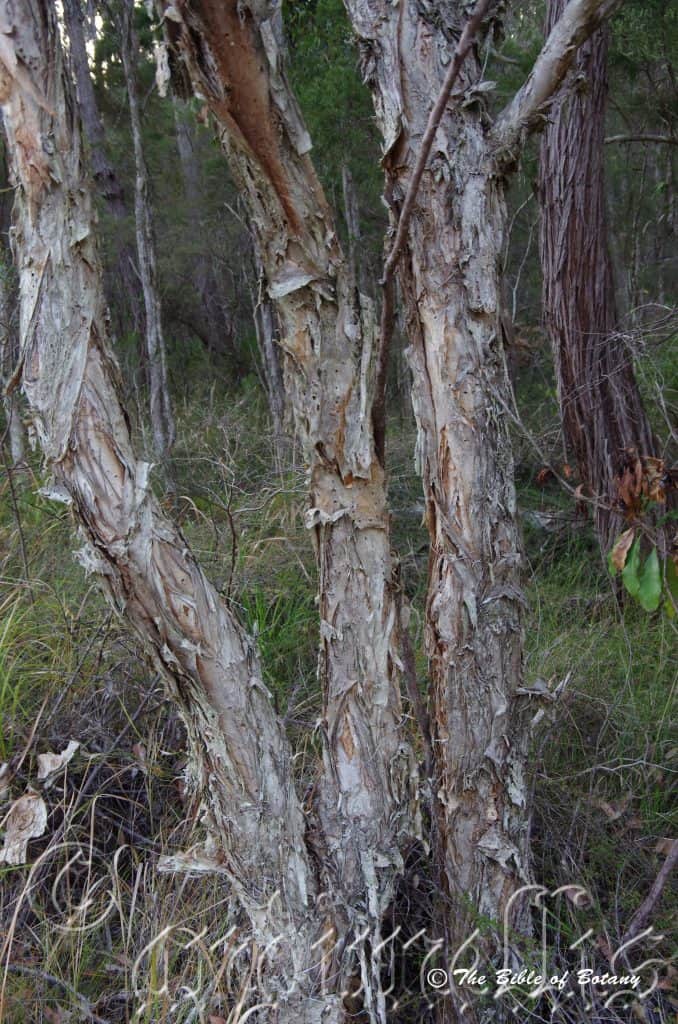
North Brother National Park NSW
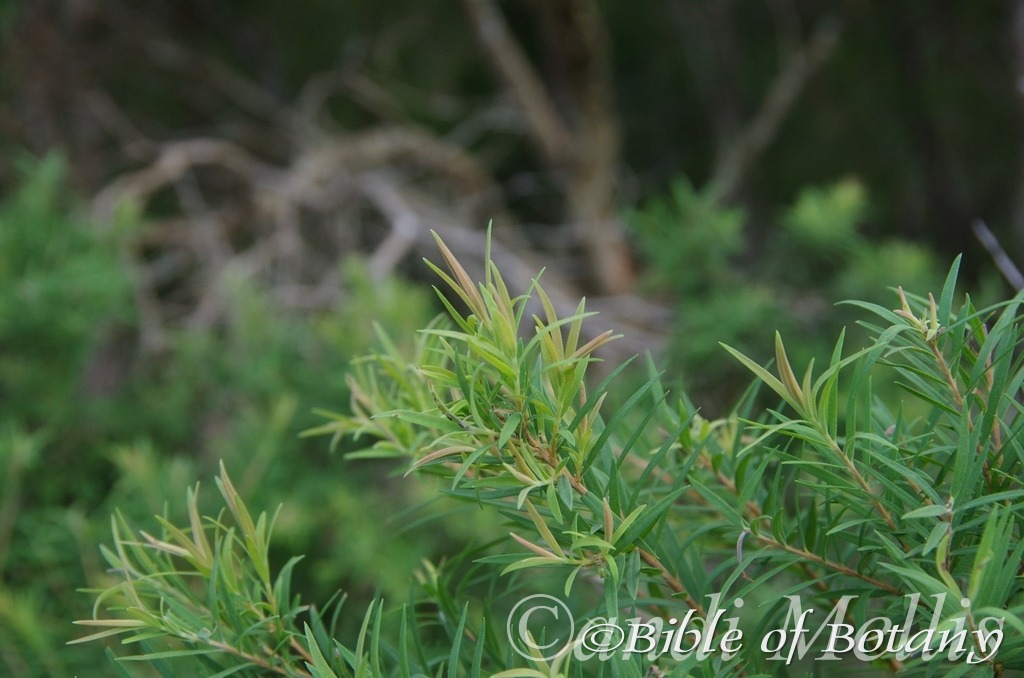
Innes Lake National Park NSW
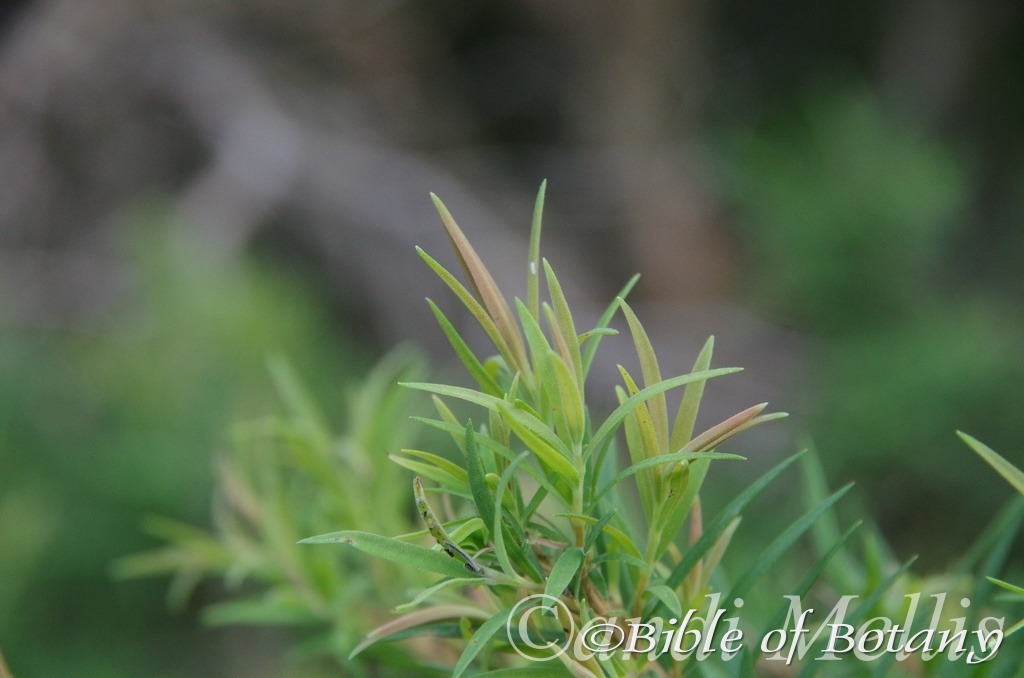
Innes Lake National Park NSW

Innes Lake National Park NSW
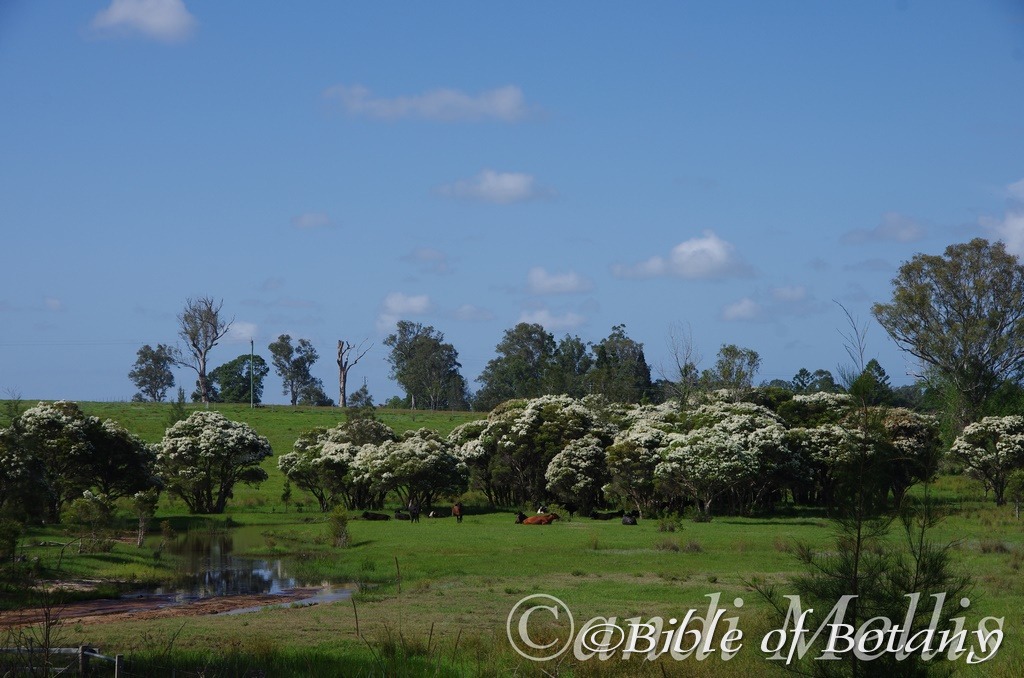
Laurieton NSW
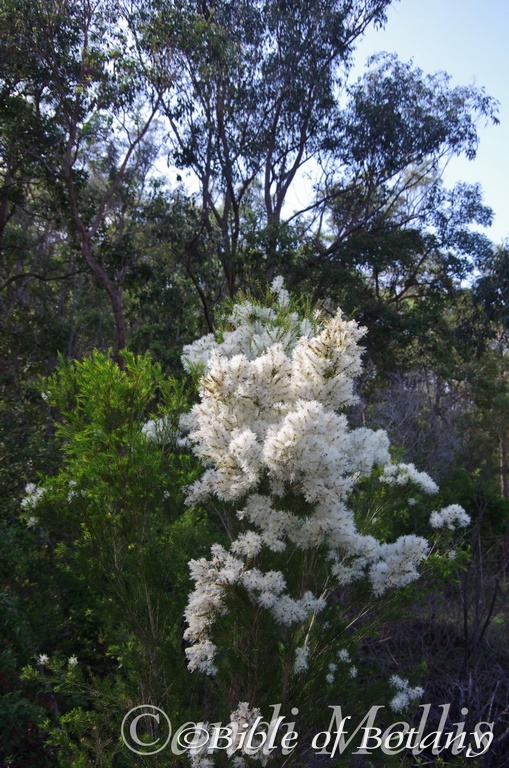
Brookside Qld.
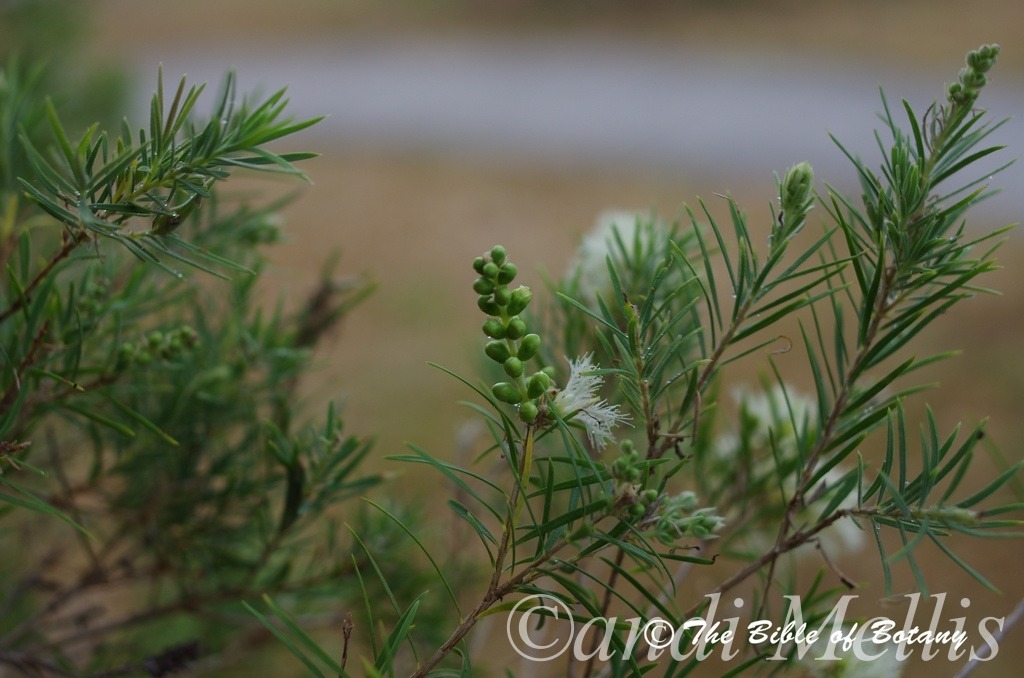
Brookside Qld.

Everton Park Qld.
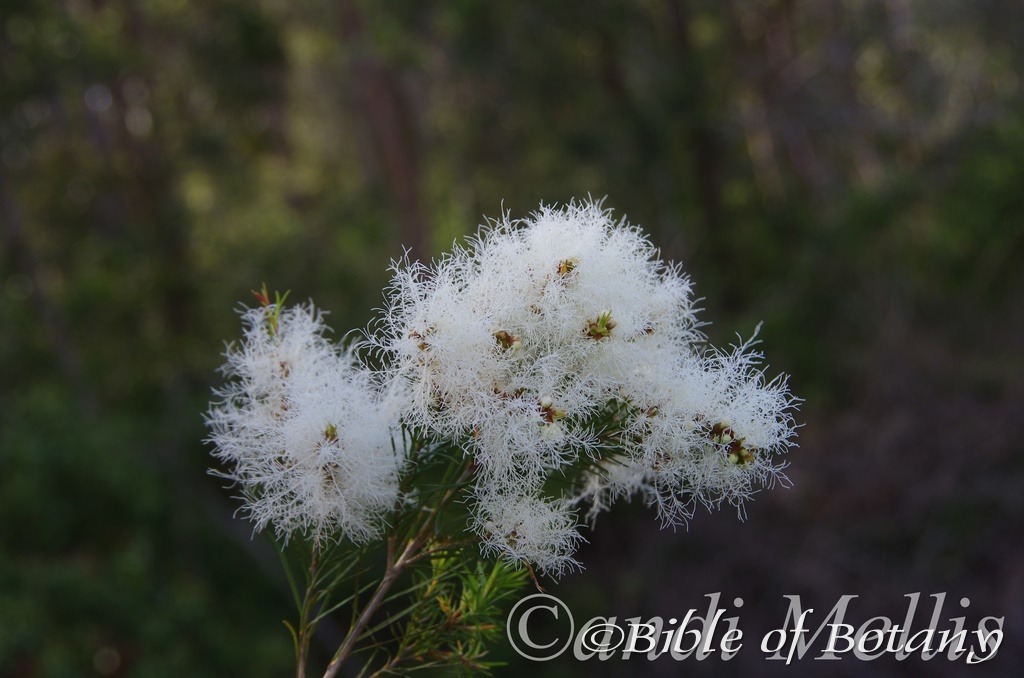
Norman Park Qld.
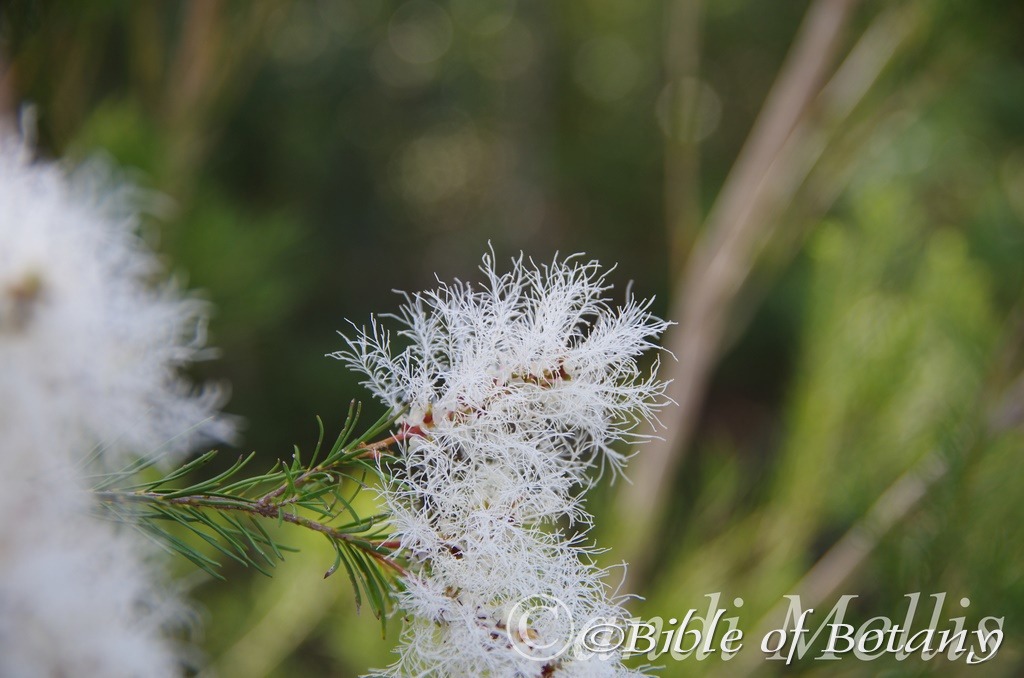
Norman Park Qld.
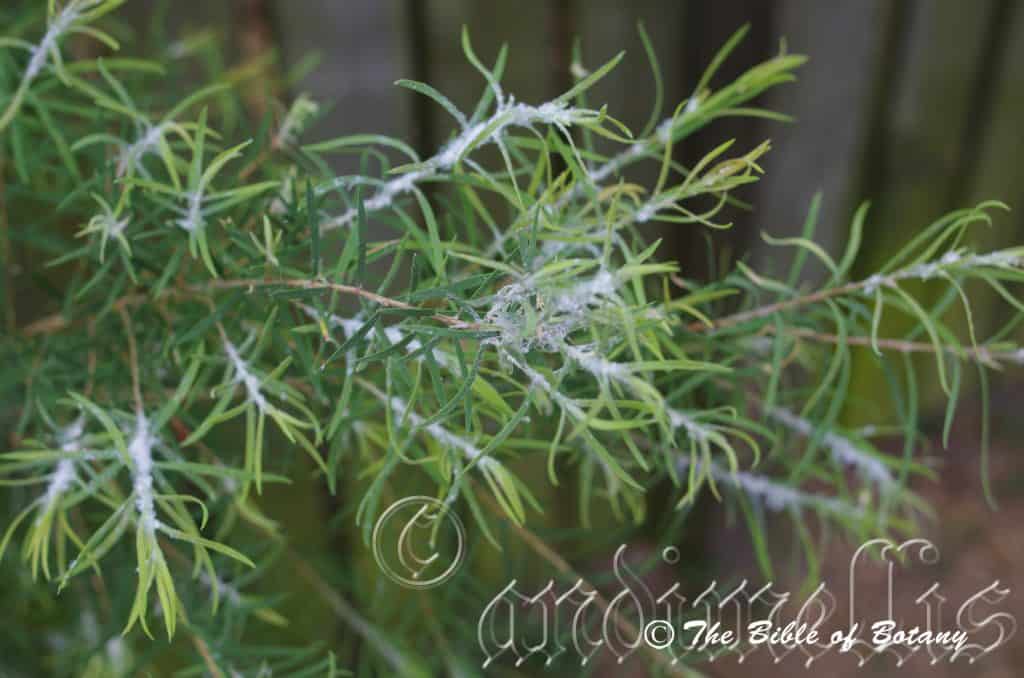
Norman Park Qld.
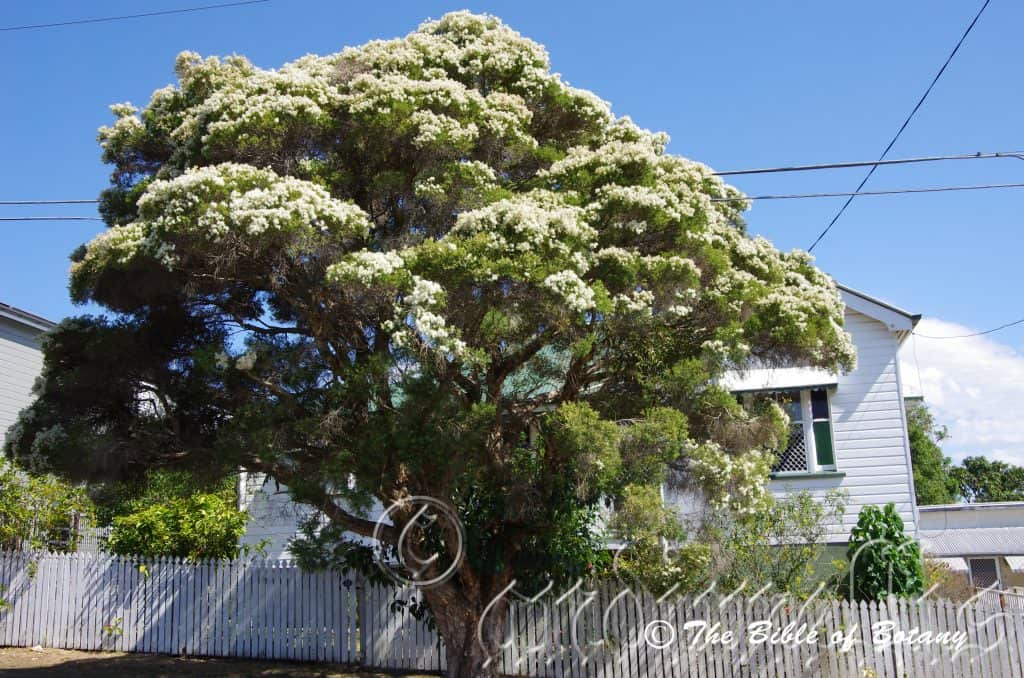
Norman Park Qld.
Melaleuca linariifolia
Classification:
Division: Eudicots
Division: Rosids
Order: Myrtales
Family: Myrtaceae
Subfamily: Myrtoideae
Tribe: Melaleuceae
Genus: From Melas, which is Ancient Greek for black and Leukos, which is Ancient Greek for white. It refers to plants, which usually have white papery barks that are often charred by fire thus the bark is black and white.
Specie: From Linearis, which is Latin for straight lines and Folium, which is Latin for foliage. It refers to leaves, which are narrow and where the veins appear in straight lines.
Sub species:
Common Name: Snow in Summer.
Distribution:
Melaleuca linariifolia is a widespread species found in several disjunct populations from around Cairns then south from Rockhampton to Brisbane in Queensland.
In New South Wales it is found south from Ballina to Bawley Point.
It is also found north of Melbourne in Victoria.
In central Australia it is found around Alice Springs to the MacDonald Ranges in the Northern Territory.
https://avh.ala.org.au/occurrences/search?taxa=Melaleuca+linariifolia#tab_mapView
Habitat Aspect Climate:
Melaleuca linariifolia prefers full sun to dappled shade. It grows in moist open Eucalyptus forests. The altitude ranges from 5 meter ASL to 650 meters ASL.
The temperatures range from minus 3 degrees in August to 40 degrees in January.
The rainfalls range from lows of 350mm to an average of 2400mm. Rainfall is not as important as the terrain which is flat and where permanent water lies below the surface.
Soil Requirements:
Melaleuca linariifolia prefers poorly drained to well drain sandy silts to heavy silts or medium clays to clays. The soils are usually derived from decomposed sandstone and shales laid down as alluvial. The soils pH. ranges from 4.5pH to 6pH. It tolerates waterlogged soils and prefers sites that suffer from seasonal inundation and flooding. Non saline soils to moderately saline soils are tolerated.
Height & Spread:
Wild Plants: 6m to 10m by 4m to 8m.
Characteristics:
Melaleuca linariifolia grows as a small tree with thick, cream, pale creamy yellow, to pale creamy grey papery bark. The bark splits as the trunk expands to reveal inner layers and is spongy to touch. It is pale creamy fawn to pale creamy brown, thick and tightly wrapped around larger branches. The smaller stems are creamy white to pale creamy yellow and spongy to the touch. The branchlets and shoots are blue-green and glabrous.
Melaleuca linariifolia‘s opposite or almost opposite leaves are narrowly elliptical to linear-lanceolate and measure 20mm to 45mm in length by 2mm to 3.5mm in width. The base is attenuate while the apex is acute. The laminas are concolourous with the laminas being blue-green. It is dull, and glabrous. Immature leaves are paler green, dull and are glabrous. The mid vein is slightly conspicuous on the lower lamina. The margins are entire and flat. The petiole measures 0.5mm to 1mm in length. The leaves are bland when crushed.
The inflorescence of Melaleuca linariifolia is many spikes born from the terminals. The flower terminal shoots grow out before the flowers finish blooming. The rachis is glabrous or very sparsely covered in white puberulent hairs and measure 35mm to 42mm in length by 25mm to 32mm in diameter. The flowers are born singularly with in each bract. There are 12 to 24 individual flowers on a spike. They measure 6mm to 10mm in diameter. The 5 broad obovate or broadly elliptical petals are pale creamy green to pale creamy yellow and measure 3mm to 3.3mm in length by 2.8mm to 3mm in width. It is persistent while the stamens fully develop.
The pure white stamens are the most prominent part of the flowers. The claws measure 12mm to 15mm in length while there are 30 to 60 divaricate white stamens on each of the 5 claws. The filaments measure 5mm to 8mm in length. The anthers are white with white pollen and measure 0.2mm to 0.4mm in length.
The short, slender, white styles measure 10mm to 12mm in length, while the ovary divides into 4 locules. The base of the style is surrounded by the nectaries. The flowers appear over a long period between from early December to late December.
Melaleuca linariifolia‘s fruit is a cylindrical to sub-globose, glabrous capsule. The capsules measure 3.5mm to 4mm in length by 3.5mm to 4mm in diameter. The orifice is almost level to level with the hypanthia and measures 2mm to 2.5mm in diameter. The woody coriaceous capsules are dull pale creamy fawn to pale grey. The capsules contain seeds and chaff. The seeds are deep brown. The calyx lobes are not persistent on the ripe capsules but are shed tardily.
Wildlife:
Melaleuca linariifolia supports many native bees, native flies, native beetles and butterflies when in flower along with many small insectivorous birds.
Cultivation:
Melaleuca linariifolia makes an excellent tall dense canopy small tree for native gardens. It is suitable on all soil types of sandy loams to medium clays and are most suitable for small, medium and large gardens close to the coast in temperate or sub tropical gardens or semi-arid gardens. As garden subjects it is will grow from 6 meters to 8 meters by 4 meters to 5 meters in diameter when grown in the open.
It is cold tolerant to temperatures at least as low as minus 5 degrees once established. It is surprisingly drought tolerant and grow well on cluggy soils that are wet and swampy in the wet season and crack open during the dry season.
It is very fast growing especially with a good fertilizing program and with a little moisture growing more than 1 meter a year. They will drop a lot of their foliage when stressed during drought times but recover as soon as good rains fall. To avoid this, give the plants a double dose of our recommended fertilizer and a good deep soaking. This will prevent further loss and hold them over for several more months.
It can be used for light dappled shade. It is an excellent tree for areas that have drainage problems. When planting the trees for a forest try to place them near the edge so the foliage and flowers can be fully enjoyed and their natural, bushy, small umbrella shape is not interfered with.
Try using them in an informal or formal manner in front of buildings. This will aid in breaking up rigid lines and soften the structures overall appearance. At the same time they can be used to highlight the contrasts between the two. On taller buildings this can be done by planting them between shorter spreading type shrubs with finer or broader leaves. Plant them together with unequal gaps and free flowing curves to accentuate height and depth. Use wider spacing where the building in the background is seen as dappled specks will soften it and where it is planted closer together will give a bolder contrast between the two. The dwarf golden form of Melaleuca bracteata is particularly good where the buildings have a dark exterior and a strong contrast is required between the plants for most of the year or Melaleuca citrina where a bold flowering contrast is warranted for a couple of months of the year. Another strong contrasting plant is Melaleuca hypericifolia with broad leaves and red flowers.
Place 2 or 3 of them in the center of a large rockery with other large or finer leaf ground covers and very small shrubs in the front. Plants with yellow, pink, red or purple flowers can be used in both the fore ground and background. This will lead your eyes directly to the array of deep pink, orange-red or red flowers and the beautiful pink to salmon coloured leaves on the new growth and the pendulous branchlets for a longer period.
Ensure that the whole plant or at least most of it is on display from most sections of the garden as the flowers are a real bonus.
When it is in flower these plants will catch your attention and the viewer will be transfixed on the display rather than watching the path. Plant them with 4 meter to 5 meter centers or scatter them through the bush for patches of pink and salmon over long periods.
They make ideal plants for Bonsai collectors as I have seen some very twisted gnarled specimens on rock ledges and sandstone flats near Grafton.
Propagation:
Seeds: Melaleuca linariifolia seeds can be sown directly into a seed raising mix. Cover the seeds with 1mm to 2mm of fine weed free mulch and keep moist. Place the tray in a warm sunny position. When the seedlings are 15mm to 20mm tall, prick them out and plant them into 20mm native tubes using a good organic mix.
When the seedlings are 70mm to 90mm tall, prick them out and plant them into 50mm native tubes using a good organic mix or plant them out into their permanent positions.
Once the seedlings reach 150mm to 200mm in height they can be planted out into their permanent position.
Cuttings: Use 100mm to 150mm long half ripened material when growing from cuttings from the present season’s growth. Take them in warmer months of the year. Remove half the leaves from the bottom section being careful not to tear the bark.
1 Prepare the cutting mix by adding one third sharp clean river sand, one third peat and one third perlite. These ingredients are sterilize,
2 Select good material from non diseased plants,
3 Select semi green stems for cuttings. Look for a stem with two or three nodes,
4 Place the cutting on a flat, hard surface, and make a clean cut down one side of the cutting at the base for 10mm with a sharp sterile knife or razor blade. – This scarification of the node will increase the chances of roots emerging from this spot. Now remove all but one or two the leaves, leaving the apex leaves in tact. If the leaves are very large in proportion to the stem, cut off the apical halves.
5 Fill a saucer with water, and place a little medium strength rooting hormone into another container like a milk bottle top. Dip the node end of the cutting into the water and then into the rooting hormone. Tap off any excess hormone,
6 Use a small dipple stick or old pencil to poke a hole into the soilless potting mix. Ensure the hole is slightly larger than the stem diameter and be careful not to wipe the rooting hormone off the cuttings base, place the cuttings in a pattern ensuring the cuttings are not touching each other,
7 I like to place the pots in Plastic bags to help maintain temperature and moisture. Place in a semi shaded place like under 50mm shade cloth.
8 When the cuttings have struck, open the bag to allow air circulation for a few days to a week,
9 Once hardened off remove the cuttings from the bag and allow to further hardening for a few more days,
10 Transplant into a good potting mix to grow on.
Fertilize using seaweed, fish emulsion or organic chicken pellets soaked in water on an alternate basis. Fertilize every two months until the plants are established then twice annually in early September or March to maintain health, vitality and better flowering.
Further Comments from Readers:
Hi reader, it seems you use The Bible of Botany a lot. That’s great as we have great pleasure in bringing it to you! It’s a little awkward for us to ask, but our first aim is to purchase land approximately 1,600 hectares to link several parcels of N.P. into one at The Pinnacles NSW Australia, but we need your help. We’re not salespeople. We’re amateur botanists who have dedicated over 30 years to saving the environment in a practical way. We depend on donations to reach our goal. If you donate just $5, the price of your coffee this Sunday, We can help to keep the planet alive in a real way and continue to bring you regular updates and features on Australian plants all in one Botanical Bible. Any support is greatly appreciated. Thank you.
In the spirit of reconciliation we acknowledge the Bundjalung, Gumbaynggirr and Yaegl and all aboriginal nations throughout Australia and their connections to land, sea and community. We pay our respect to their Elders past, present and future for the pleasures we have gained.
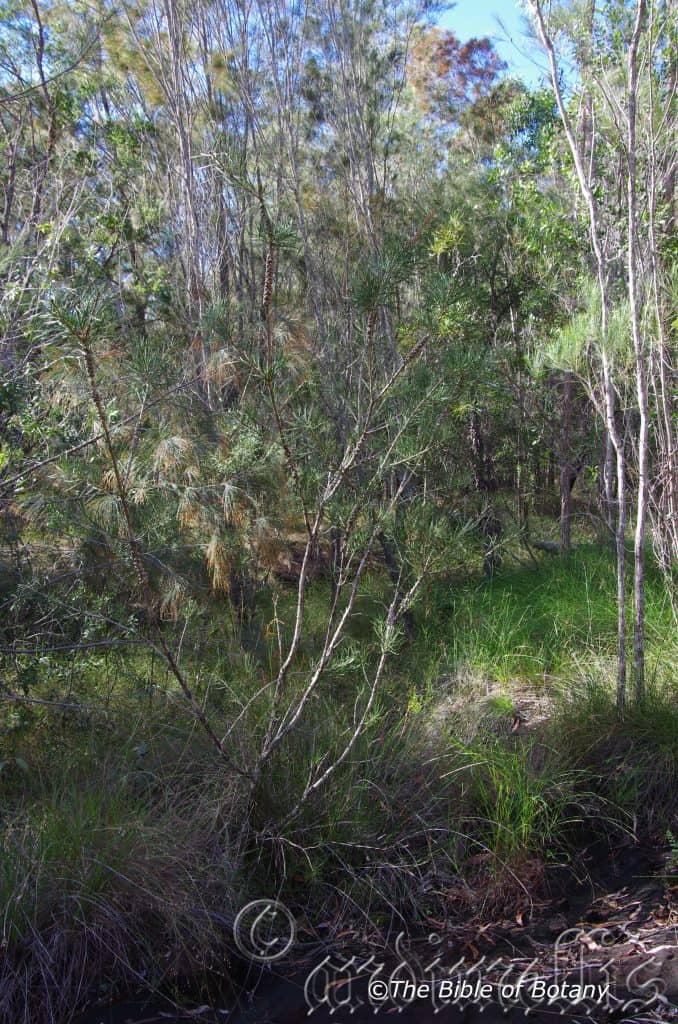
The Pinnacles NSW
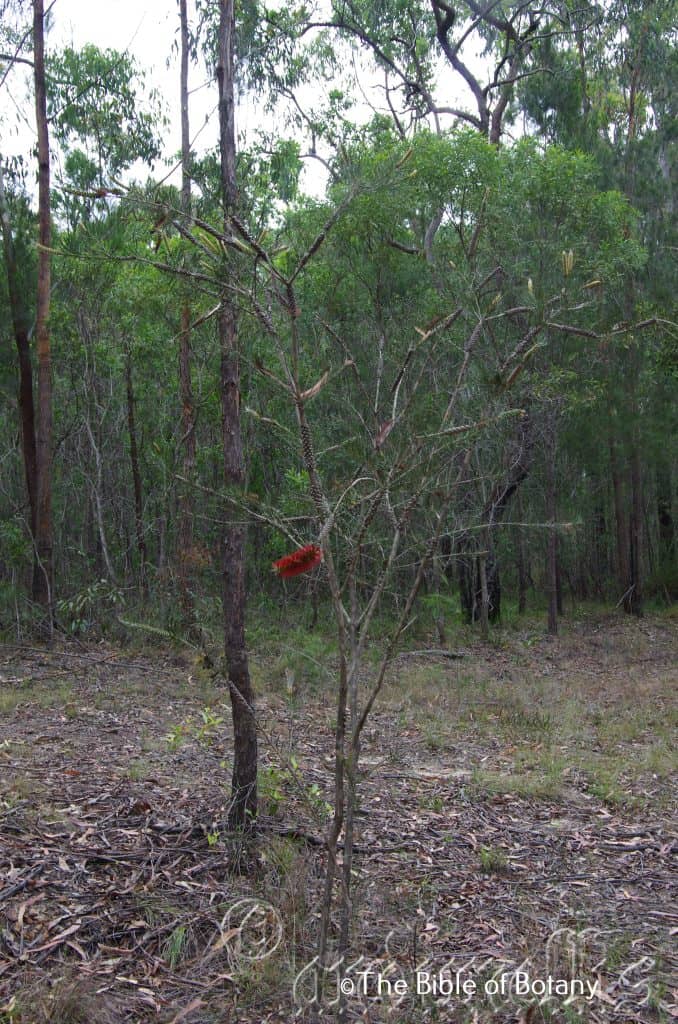
The Pinnacles NSW
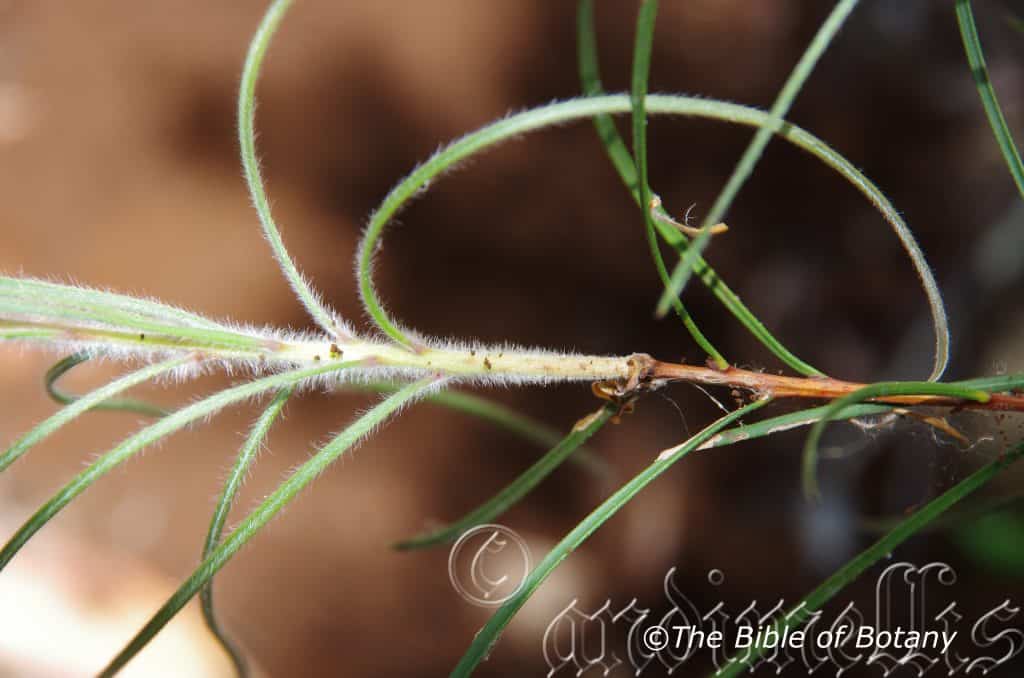
The Pinnacles NSW
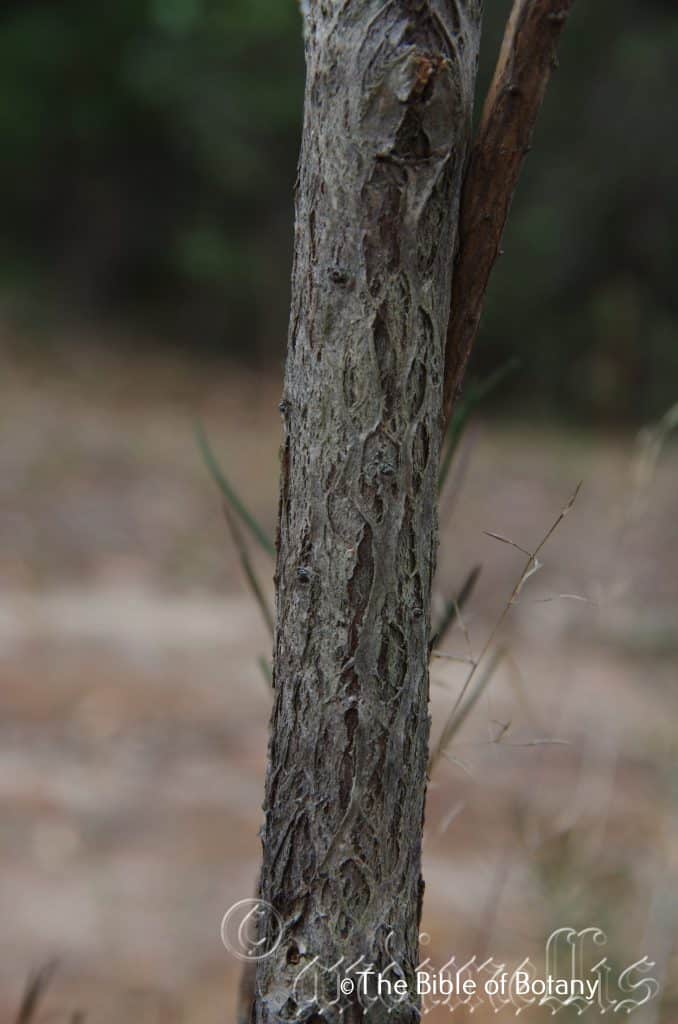
The Pinnacles NSW
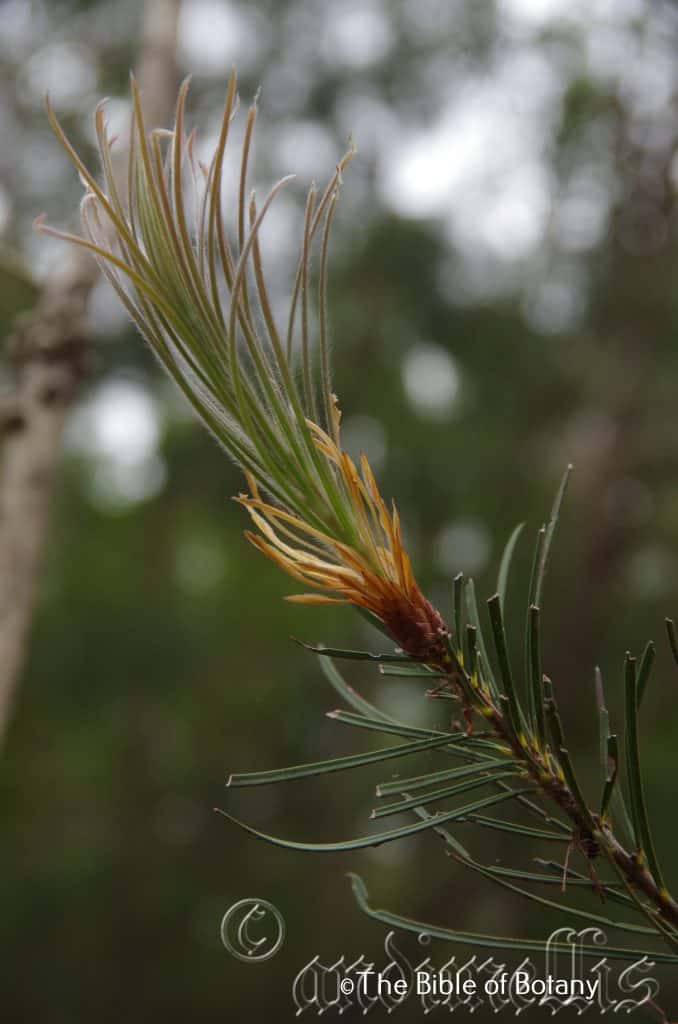
The Pinnacles NSW

The Pinnacles NSW

The Pinnacles NSW

The Pinnacles NSW
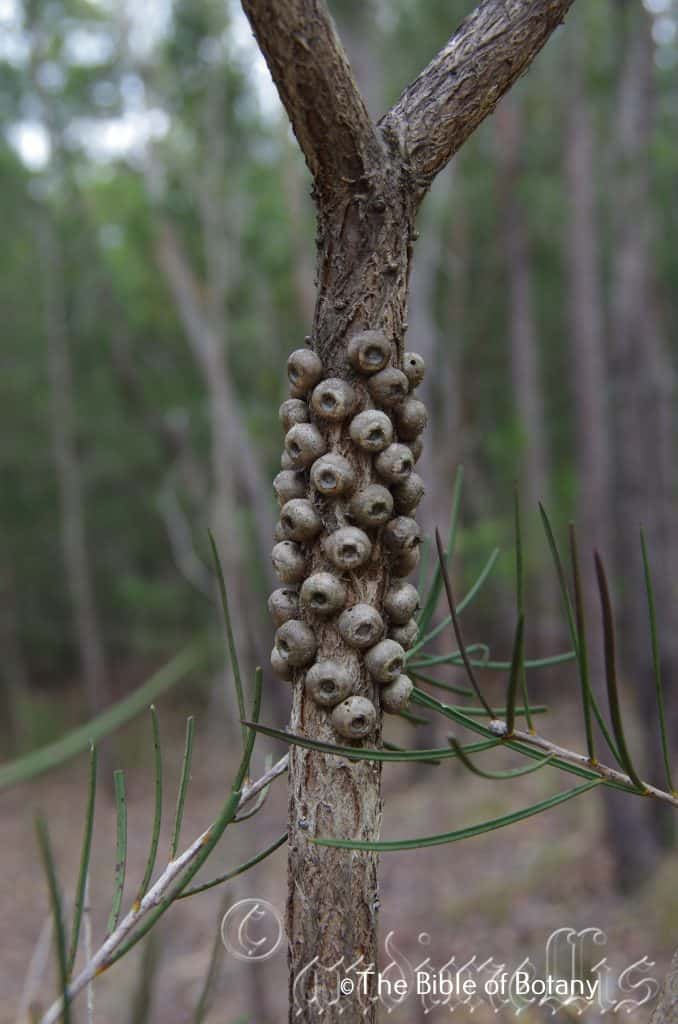
The Pinnacles NSW
Melaleuca linearis
Classification:
Division: Eudicots
Division: Rosids
Class:
Order: Myrtales
Family: Myrtaceae
Subfamily: Myrtoideae
Tribe: Melaleuceae
Genus: From Melas, which is Ancient Greek for black and Leukos, which is Ancient Greek for white. It refers to plants, which usually have white papery barks that are often charred by fire thus the bark is black and white.
Specie: From Linearis, which is Latin for straight lines. It usually refers to leaves, which are narrow and where the veins appear in straight lines.
Sub species:
Common Name:
Distribution:
Melaleuca linearis is a widespread species found in several disjunct populations south from Somerset dam in far south eastern Queensland to falls Creek near Nowra in far south eastern New South Wales.
In Victoria it is found in the Grampians, Barber Creek, Melbourne and Angelsea.
There is an isolated population in the Flinders rangers in south Australia.
https://avh.ala.org.au/occurrences/search?taxa=Melaleuca+linearis#tab_mapView
Habitat Aspect Climate:
Melaleuca linearis prefers full sun to light dappled shade. It grows in moist open Eucalyptus forests especially along drainage lines. The altitude ranges from 5 meter ASL to 650 meters ASL.
The temperatures range from minus 3 degrees in August to 40 degrees in January.
The rainfalls range from lows of 400mm to an average of 1800mm. Rainfall is not as important as the terrain which constitutes drainage lines, low depressions, wallums and highland heaths.
Soil Requirements:
Melaleuca linearis prefers poorly drained sandy silts to heavy silts or medium clays. The soils are usually derived from decomposed sandstone, granite, shales, alluvial flats or at times accumulated beach sands. The soils pH. ranges from 4.5pH to 7.5pH. It tolerates waterlogged soils and prefers sites that suffer from seasonal inundation and flooding. Non saline soils to moderately saline soils are tolerated.
Height & Spread:
Wild Plants: 2m to 3m by 2m to 3m.
Characteristics:
Melaleuca linearis grows as a small tree with thick, cream, pale creamy yellow, to pale creamy grey papery bark. The bark splits as the trunk expands to reveal inner layers and is spongy to touch. It is pale creamy fawn to pale creamy brown, thick and tightly wrapped around larger branches. The smaller stems are creamy white to pale creamy yellow and spongy to the touch. The branchlets and shoots are blue-green and glabrous.
Melaleuca linearis has opposite or almost opposite leaves are narrowly elliptical to linear-lanceolate and measure 20mm to 45mm in length by 2mm to 3.5mm in width. The base is attenuate while the apex is acute. The laminas are concolourous with the laminas being blue-green. It is dull, and glabrous. Immature leaves are paler green, dull and are glabrous. The mid vein is slightly conspicuous on the lower lamina. The margins are entire and flat. The petiole measures 0.5mm to 1mm in length. The leaves are bland when crushed.
The inflorescence of Melaleuca linearis is many spikes born from the terminals. The flower terminal shoots grow out before the flowers finish blooming. The rachis is glabrous or very sparsely covered in white puberulent hairs and measure 35mm to 42mm in length by 25mm to 32mm in diameter. The flowers are born singularly with in each bract. There are 12 to 24 individual flowers on a spike. They measure 6mm to 10mm in diameter. The 5 broad obovate or broadly elliptical petals are pale creamy green to pale creamy yellow and measure 3mm to 3.3mm in length by 2.8mm to 3mm in width. It is persistent while the stamens fully develop.
The pure white stamens are the most prominent part of the flowers. The claws measure 12mm to 15mm in length while there are 30 to 60 divaricate white stamens on each of the 5 claws. The filaments measure 5mm to 8mm in length. The anthers are white with white pollen and measure 0.2mm to 0.4mm in length.
The short, slender, white styles measure 10mm to 12mm in length, while the ovary divides into 4 locules. The base of the style is surrounded by the nectaries. The flowers appear over a long period between from early December to late December.
Melaleuca linearis‘s fruit is a cylindrical to sub-globose, glabrous capsule. The capsules measure 3.5mm to 4mm in length by 3.5mm to 4mm in diameter. The orifice is almost level to level with the hypanthia and measures 2mm to 2.5mm in diameter. The woody coriaceous capsules are dull pale creamy fawn to pale grey. The capsules contain seeds and chaff. The seeds are deep brown. The calyx lobes are not persistent on the ripe capsules but are shed tardily.
Wildlife:
Melaleuca linearis supports many native bees, native flies, native beetles and butterflies when in flower along with many small insectivorous birds.
Cultivation:
Melaleuca linearis makes an excellent tall dense canopy small tree for native gardens. It is suitable on all soil types of sandy loams to medium clays and are most suitable for small, medium and large gardens close to the coast in temperate or sub tropical gardens or semi-arid gardens. As garden subjects it is will grow from 6 meters to 8 meters by 4 meters to 5 meters in diameter when grown in the open.
It is cold tolerant to temperatures at least as low as minus 5 degrees once established. It is surprisingly drought tolerant and grow well on cluggy soils that are wet and swampy in the wet season and crack open during the dry season.
It is very fast growing especially with a good fertilizing program and with a little moisture growing more than 1 meter a year. They will drop a lot of their foliage when stressed during drought times but recover as soon as good rains fall. To avoid this, give the plants a double dose of our recommended fertilizer and a good deep soaking. This will prevent further loss and hold them over for several more months.
It can be used for light dappled shade. It is an excellent tree for areas that have drainage problems. When planting the trees for a forest try to place them near the edge so the foliage and flowers can be fully enjoyed and their natural, bushy, small umbrella shape is not interfered with.
Try using them in an informal or formal manner in front of buildings. This will aid in breaking up rigid lines and soften the structures overall appearance. At the same time they can be used to highlight the contrasts between the two. On taller buildings this can be done by planting them between shorter spreading type shrubs with finer or broader leaves. Plant them together with unequal gaps and free flowing curves to accentuate height and depth. Use wider spacing where the building in the background is seen as dappled specks will soften it and where it is planted closer together will give a bolder contrast between the two. The dwarf golden form of Melaleuca bracteata is particularly good where the buildings have a dark exterior and a strong contrast is required between the plants for most of the year or Melaleuca citrina where a bold flowering contrast is warranted for a couple of months of the year. Another strong contrasting plant is Melaleuca hypericifolia with broad leaves and red flowers.
Place 2 or 3 of them in the center of a large rockery with other large or finer leaf ground covers and very small shrubs in the front. Plants with yellow, pink, red or purple flowers can be used in both the fore ground and background. This will lead your eyes directly to the array of deep pink, orange-red or red flowers and the beautiful pink to salmon coloured leaves on the new growth and the pendulous branchlets for a longer period.
Ensure that the whole plant or at least most of it is on display from most sections of the garden as the flowers are a real bonus.
When it is in flower these plants will catch your attention and the viewer will be transfixed on the display rather than watching the path. Plant them with 4 meter to 5 meter centers or scatter them through the bush for patches of pink and salmon over long periods.
It makes an ideal plants for Bonsai collectors as I have seen some very twisted gnarled specimens on sandstone rock ledges and on shallow sands over sandstone flats near Grafton.
Propagation:
Seeds: Melaleuca linearis seeds can be sown directly into a seed raising mix. Cover the seeds with 1mm to 2mm of fine weed free mulch and keep moist. Place the tray in a warm sunny position. When the seedlings are 15mm to 20mm tall, prick them out and plant them into 20mm native tubes using a good organic mix.
When the seedlings are 70mm to 90mm tall, prick them out and plant them into 50mm native tubes using a good organic mix or plant them out into their permanent positions.
Once the seedlings reach 150mm to 200mm in height they can be planted out into their permanent position.
Cuttings: Use 100mm to 150mm long half ripened material when growing from cuttings from the present season’s growth. Take them in warmer months of the year. Remove half the leaves from the bottom section being careful not to tear the bark.
1 Prepare the cutting mix by adding one third sharp clean river sand, one third peat and one third perlite. These ingredients are sterilize,
2 Select good material from non diseased plants,
3 Select semi green stems for cuttings. Look for a stem with two or three nodes,
4 Place the cutting on a flat, hard surface, and make a clean cut down one side of the cutting at the base for 10mm with a sharp sterile knife or razor blade. – This scarification of the node will increase the chances of roots emerging from this spot. Now remove all but one or two the leaves, leaving the apex leaves in tact. If the leaves are very large in proportion to the stem, cut off the apical halves.
5 Fill a saucer with water, and place a little medium strength rooting hormone into another container like a milk bottle top. Dip the node end of the cutting into the water and then into the rooting hormone. Tap off any excess hormone,
6 Use a small dipple stick or old pencil to poke a hole into the soilless potting mix. Ensure the hole is slightly larger than the stem diameter and be careful not to wipe the rooting hormone off the cuttings base, place the cuttings in a pattern ensuring the cuttings are not touching each other,
7 I like to place the pots in Plastic bags to help maintain temperature and moisture. Place in a semi shaded place like under 50mm shade cloth.
8 When the cuttings have struck, open the bag to allow air circulation for a few days to a week,
9 Once hardened off remove the cuttings from the bag and allow to further hardening for a few more days,
10 Transplant into a good potting mix to grow on.
Fertilize using seaweed, fish emulsion or organic chicken pellets soaked in water on an alternate basis. Fertilize every two months until the plants are established then twice annually in early September or March to maintain health, vitality and better flowering.
Further Comments from Readers:
Hi reader, it seems you use The Bible of Botany a lot. That’s great as we have great pleasure in bringing it to you! It’s a little awkward for us to ask, but our first aim is to purchase land approximately 1,600 hectares to link several parcels of N.P. into one at The Pinnacles NSW Australia, but we need your help. We’re not salespeople. We’re amateur botanists who have dedicated over 30 years to saving the environment in a practical way. We depend on donations to reach our goal. If you donate just $5, the price of your coffee this Sunday, We can help to keep the planet alive in a real way and continue to bring you regular updates and features on Australian plants all in one Botanical Bible. Any support is greatly appreciated. Thank you.
In the spirit of reconciliation we acknowledge the Bundjalung, Gumbaynggirr and Yaegl and all aboriginal nations throughout Australia and their connections to land, sea and community. We pay our respect to their Elders past, present and future for the pleasures we have gained.
Melaleuca microphylla
Classification:
Division: Eudicots
Division: Rosids
Class:
Order: Myrtales
Family: Myrtaceae
Subfamily: Myrtoideae
Tribe: Melaleuceae
Genus: From Melas, which is Ancient Greek for black and Leukos, which is Ancient Greek for white. It refers to plants, which usually have white papery barks that are often charred by fire thus the bark is black and white.
Specie: From Mikros, which is Ancient Greek for small or very small and Phullon/Phyllon, which is Ancient Greek for a leaf. It refers to leaves, phyllodes or fronds, which are notably smaller or finer than other species in the genus.
Sub species:
Common Name:
Distribution:
Melaleuca microphylla is found in several disjunct populations south from Geraldton to around Bunbury and east from the Margaret River catchment to Albany.
https://avh.ala.org.au/occurrences/search?taxa=Melaleuca+microphylla#tab_mapView
Habitat Aspect Climate:
Melaleuca microphylla prefers full sun to dappled shade. It grows in swamps, wallums and along creek banks in open Eucalyptus forests, open Eucalyptus woodlands or open heaths. The altitude ranges from 5 meter ASL to 250 meters ASL.
The temperatures range from 3 degrees in August to 36 degrees in January.
The rainfalls range from lows of 250mm to an average of 1200mm. Rainfall is not as important as the terrain, where permanent water lies below the surface.
Soil Requirements:
Melaleuca microphylla prefers poorly drained to well drain sandy loams to light gritty clays. The soils are usually derived from decomposed sandstone, granites alluvial meander deposits often over granite substratas. The soils pH. ranges from 4.5pH to 6pH. It tolerates waterlogged soils and prefers sites that suffer from seasonal inundation and flooding. Non saline soils to moderately saline soils are tolerated.
Height & Spread:
Wild Plants: 1.5m to 4.5m by 2m to 5m.
Characteristics:
It grows as a medium, densely, rounded shrub or a small tree. The pale grey or white papery bark is tightly hugging on the stems. The branches have a spreading habit.
The linear to narrow lance leaves form longitudinal rows along the branchlets. They measure 3mm to 8mm in length by 0.3mm to 0.5mm in width. The base is broad while the apex is broadly acute with a somewhat pointed end. The concolourous, dull, glabrous laminas are mid green, deep green to blueish-green. The margins are entire and flat. The leaves are sessile.
The creamy-white inflorescence is a single spike born from terminals of short lateral shoots. The flower terminal shoots do grow out after anthesis. The rachis is glabrous and measures 45mm to 55mm in length by 18mm to 22mm in diameter. There are 10 to 50 individual flowers on a spike. The 5 broad obovate or broadly elliptical petals are pale creamy-green and measure 1mm to 2.2mm in length by 1.2mm to 2.2mm in width and have usually fallen by anthesis.
The white, pale cream to pale creamy-white stamens are the most prominent part of the flowers. The claws are opposite the petals and measure 12mm to 15mm in length overall. There are 4 to 10 stamens on each of the 5 claws. The filaments measure 6mm to 9mm in length. The anthers are pale yellow pollen.
The short, slender, white, cream to pale cream yellow style measures 8mm to 10mm in length. The honey scented flowers appear over a long period of time. It is prolific in flower with the flowers appearing from early September to November.
The fruit is a glabrous cupular, woody, capsule. The capsules measure 2mm to 3.5mm in length by 3mm to 4mm in diameter. The enclosed orifice is almost level to level with the hypanthium. The chaff like seeds are brown
Wildlife:
Melaleuca microphylla supports many native bees, native flies, native beetles and butterflies when in flower. It also supports small honeyeaters which scurry over the flowers and seek protection from the bushy foliage.
Cultivation:
Melaleuca microphylla makes an excellent large bushy shrub or small dense canopy medium shrubs for native gardens. It is suitable on all soil types of sandy loams to medium clays and are most suitable for small, medium and large gardens close to the coast in temperate or sub tropical gardens or semi-arid gardens. As garden subjects they will grow from 2 meters to 2.5 meters in height by 3 meters to 4 meters in diameter when grown in the open.
It is cold tolerant to temperatures at least as low as minus 2 degrees once established and are surprisingly drought tolerant. This is one Melaleuca that would be worth while trying on the east coast which originates from the west.
It is very fast growing especially with a good fertilizing program and with a little moisture growing more than 1 meter a year. They will drop some of their foliage when stressed during drought times but recover as soon as good rains fall. To avoid this, give the plants a double dose of our recommended fertilizer and a good deep soaking. This will prevent further loss and hold them over for several more months.
They can be used for light dappled shade when grown as a small tree. It is an excellent tree for areas that have drainage problems on sandy or sandy clay soils. When planting the trees in a heath scene try one in the back ground as a shrub and a second as a small tree trimming all the branches below 2 meters so the flowers and shape can be fully appreciated and their natural bushy shape is not interfered with. Use them as trees in this scenario only if you have a small area to be planted.
They can be regularly tip pruned if a tall hedge is required. This can be maintained with regular pruning and planting closer together with spacing of 2 meters. They respond very well to tip pruning, recovering quickly and increasing the number of flowers in the following season.
Place 2 or 3 of them in the center of a large rockery, with other large leaf ground covers and very small shrubs in the front. Plants with pink, red or purple flowers can be used in both the fore ground and background. This will lead your eyes directly to the array of deep pink, orange-red or red flowers and the beautiful pink to salmon coloured leaves on the new growth and the pendulous branchlets for a longer period.
Ensure that the whole plant or at least most of it is on display from most sections of the garden as the flowers are a real bonus.
When it is in flower these plants will catch your attention and the viewer will be transfixed on the display rather than watching the path.
They make ideal plants for Bonsai collectors as I have seen some very twisted gnarled specimens where the parent rock is close to the surface.
Propagation:
Seeds: The seeds can be sown directly into a seed raising mix. Do not cover the seeds Keep them moist and place the tray in a warm sunny position. When the seedlings are 15mm to 20mm tall, prick them out and plant them into 20mm native tubes using a good organic mix.
When the seedlings are 70mm to 90mm tall, prick them out and plant them into 50mm native tubes using a good organic mix or plant them out into their permanent positions.
Once the seedlings reach 150mm to 200mm in height they can be planted out into their permanent position.
Cuttings: Use 100mm to 150mm long half ripened material when growing from cuttings from the present season’s growth. Take them in warmer months of the year. Remove half the leaves from the bottom section being careful not to tear the bark.
1 Prepare the cutting mix by adding one third sharp clean river sand, one third peat and one third perlite. These ingredients are sterilize,
2 Select good material from non diseased plants,
3 Select semi green stems for cuttings. Look for a stem with two or three nodes,
4 Place the cutting on a flat, hard surface, and make a clean cut down one side of the cutting at the base for 10mm with a sharp sterile knife or razor blade. – This scarification of the node will increase the chances of roots emerging from this spot. Now remove all but one or two the leaves, leaving the apex leaves in tact. If the leaves are very large in proportion to the stem, cut off the apical halves.
5 Fill a saucer with water, and place a little medium strength rooting hormone into another container like a milk bottle top. Dip the node end of the cutting into the water and then into the rooting hormone. Tap off any excess hormone,
6 Use a small dipple stick or old pencil to poke a hole into the soilless potting mix. Ensure the hole is slightly larger than the stem diameter and be careful not to wipe the rooting hormone off the cuttings base, place the cuttings in a pattern ensuring the cuttings are not touching each other,
7 I like to place the pots in Plastic bags to help maintain temperature and moisture. Place in a semi shaded place like under 50mm shade cloth.
8 When the cuttings have struck, open the bag to allow air circulation for a few days to a week,
9 Once hardened off remove the cuttings from the bag and allow to further hardening for a few more days,
10 Transplant into a good potting mix to grow on.
Fertilize using seaweed, fish emulsion or organic chicken pellets soaked in water on an alternate basis. Fertilize every two months until the plants are established then twice annually in early September or March to maintain health, vitality and better flowering.
Further Comments from Readers:
Hi reader, it seems you use The Bible of Botany a lot. That’s great as we have great pleasure in bringing it to you! It’s a little awkward for us to ask, but our first aim is to purchase land approximately 1,600 hectares to link several parcels of N.P. into one at The Pinnacles NSW Australia, but we need your help. We’re not salespeople. We’re amateur botanists who have dedicated over 30 years to saving the environment in a practical way. We depend on donations to reach our goal. If you donate just $5, the price of your coffee this Sunday, We can help to keep the planet alive in a real way and continue to bring you regular updates and features on Australian plants all in one Botanical Bible. Any support is greatly appreciated. Thank you.
In the spirit of reconciliation we acknowledge the Bundjalung, Gumbaynggirr and Yaegl and all aboriginal nations throughout Australia and their connections to land, sea and community. We pay our respect to their Elders past, present and future for the pleasures we have gained.

Townsville Qld.

Townsville Qld.
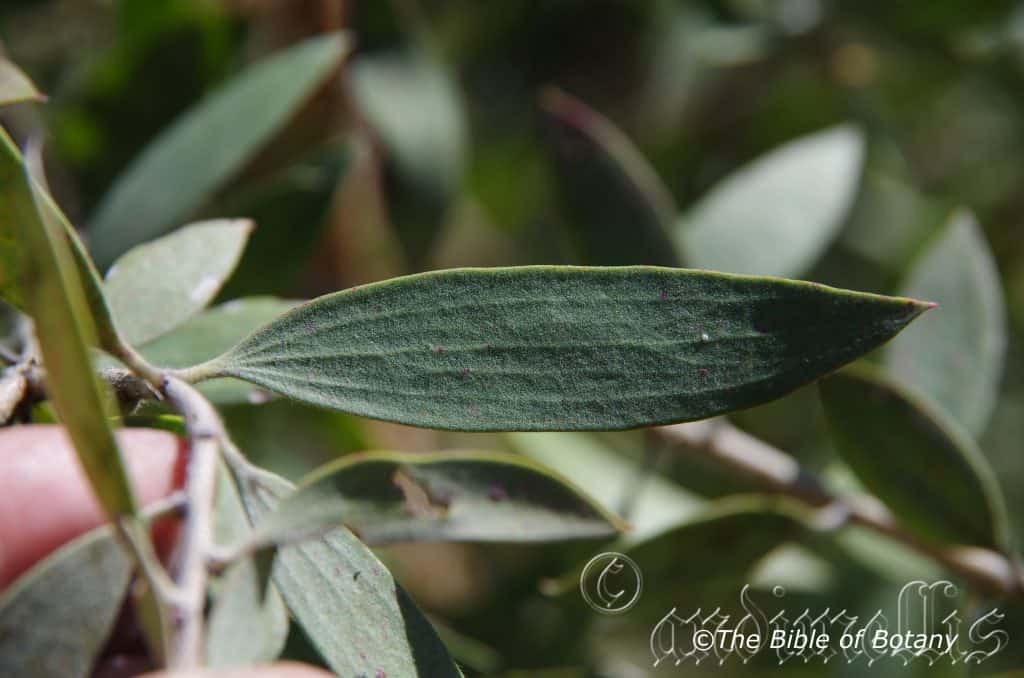
Townsville Qld.
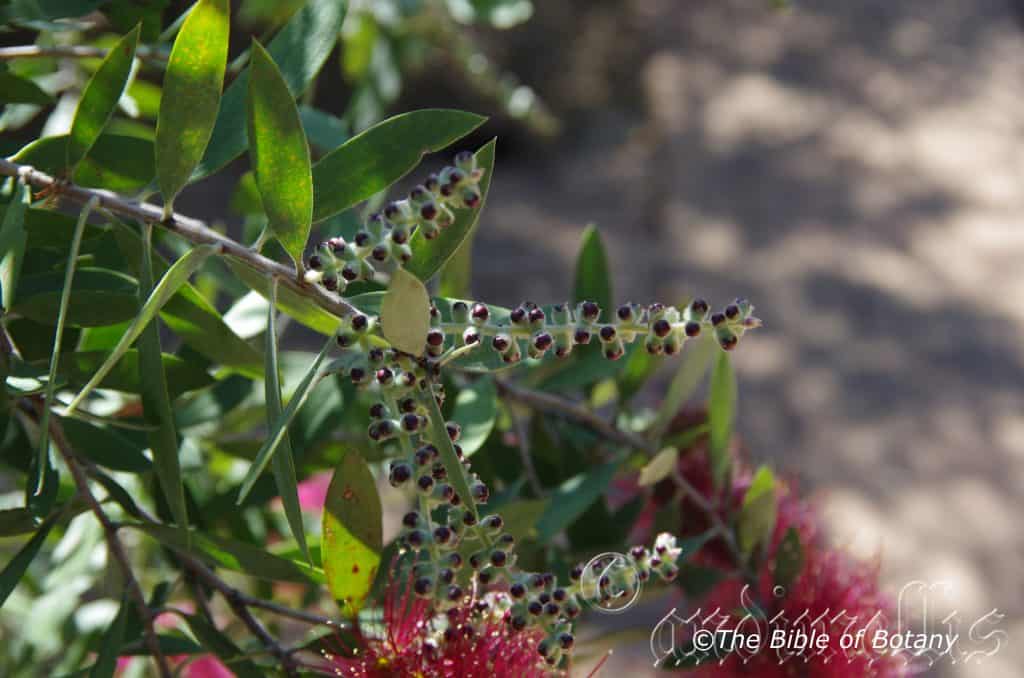
Townsville Qld.

Townsville Qld.

Townsville Qld.
Melaleuca nervosa
Classification:
Division: Eudicots
Division: Rosids
Class:
Order: Myrtales
Family: Myrtaceae
Subfamily: Myrtoideae
Tribe: Melaleuceae
Genus: From Melas, which is Ancient Greek for black and Leukos, which is Ancient Greek for white. It refers to plants, which usually have white papery barks that are often charred by fire thus the bark is black and white.
Specie: From Neuron, which is Ancient Greek, or later Nervosa, which is Latin for a nerve, tendon, sinewy or a piece of string. It usually refers to leaves that have a very prominent vein network. Here it refers to the strong leaf venation.
Sub species: Melaleuca nervosa subsp. nervosa From Neuron, which is Ancient Greek, or later Nervosa, which is Latin for a nerve, tendon, sinewy or a piece of string. It usually refers to leaves that have a very prominent vein network. Here it refers to the strong leaf venation.
Melaleuca nervosa subsp. crosslandiana is named in honour of Crosslandf
Common Name: Fibrebark.
Distribution:
Melaleuca nervosa is found in the northern third of Australia including the off shore islands.
Melaleuca nervosa subsp. nervosa is generally found further north and towards the coastal areas in the east.
It is also found in the southern coastline of New Guinee.
Melaleuca nervosa subsp. crosslandiana is generally found further south and does not cross the Great Dividing Range.
https://avh.ala.org.au/occurrences/search?taxa=Melaleuca+nervosa#tab_mapView
Habitat Aspect Climate:
Melaleuca nervosa prefers full sun to light dappled shade. It grows in a wide range of habitats from open woodlands, savanna, open Eucalyptus forests to coastal heaths, drainage lines, ephermeral creeks and streams. The altitude ranges from 5 meter ASL to 550 meters ASL.
The temperatures range from 0 degrees in August to 46 degrees in January.
The rainfalls range from lows of 300mm to an average of 3200mm.
Soil Requirements:
Melaleuca nervosa prefers to grow in a wide range of habitats including alluvial deposits, wet sandy soils, along watercourses, wet screes, in damp depressions and red sand dunes where sub surface water exists. The soils pH. ranges from 4.5pH to 8pH. It does not tolerate waterlogged soils however moisture retentive soils with seasonal floding and inundations are preferred. Non saline soils to moderately saline soils are tolerated as are salt laden winds.
Height & Spread:
Wild Plants: Melaleuca nervosa subsp. nervosa 3m to 15m by 3m to 7m.
Melaleuca nervosa subsp. crosslandiana 2m to 7m by 2m to 5m.
Characteristics:
Melaleuca nervosa grows as a bushy large shrub or medium tree. It has cream to pale reddish-brown or pale grey, papery bark on the trunk through to the erect branchlets. The juvenile stems are reddish-maroon and moderately covered in white hirsute hairs.
Melaleuca nervosa subsp. nervosa has alternate, dull grey-green, stiff, elliptical, coriaceous leaves with 5 to 7 longitudinal veins. The leaves measure, 50mm to 105mm by 10mm to 25mm in width. The new growth is moderately to densely covered in white hirsute hairs.
Melaleuca nervosa subsp. crosslandiana has alternate, dull grey-green, stiff, elliptical, coriaceous leaves with 3 to 5 longitudinal veins. The leaves measure, 30mm to 115mm by 5mm to 40mm in width. The new growth is moderately to densely covered in white hirsute hairs.
The flowers are arranged in 6 to 20 groups of three in long spikes that measure 70mm to 110mm in length by 40mm to 50mm in diameter. The stamens are arranged in five bundles with 3 to 7 stamens per bundle. The stamens are white, cream, creamy-green, yellow-green or at times crimson-red. The flowers appear from April to September.
The cupular fruits of Melaleuca nervosa subsp. nervosa are woody capsules that measure 2mm to 3mm millimetres in length by 2mm to 3mm in diameter.
The cupular fruits of Melaleuca nervosa subsp. crosslandiana are woody capsules that measure 3.5mm to 4mm millimetres in length by 3.5mm to 4mm in diameter.
Wildlife:
Melaleuca nervosa supports many native bees, native flies, native beetles and butterflies when in flower.
It also attracts small honeyeaters including the Brown Honeyeater, Lichmera indistincta and the Eastern Spinebill, Acanthorhynchus tenuirostris which are attracted to the flowers and seek protection from their predators amongst the bushy foliage.
Cultivation:
Melaleuca nervosa makes an excellent large bushy shrub or medium tree for native gardens. It is suitable on all types of soils and is most suitable for medium and large gardens close to the coast in temperate or sub tropical gardens or semi-arid gardens. As a garden subject it will grow from 2.5 meters to 12 meters in height by 3 meters to 8 meters in dimeter when grown in the open. It is cold tolerant to temperatures to at least minus 3 degrees once established and is surprisingly drought tolerant. This is one Melaleuca that is worth while trying much further south.
It is very fast growing especially with a good fertilizing program and with a little moisture growing more than 1 meter a year. Lightly trim the plants immediately after flowering, give the plants a double dose of our recommended fertilizer followed by a good deep soaking in mid-winter if good winter rains are not forthcoming on the west coast and in mid-summer if summer rains fail to bring good falls.
Try using them in an informal or formal manner in front of buildings. This will aid in breaking up rigid lines and soften the structures overall appearance. At the same time it can be used to highlight the contrasts between the two. On taller buildings this can be done by planting them between taller narrow type of trees with finer foliage like Casuarina species, Allocasuarina species or Callitris species. If flowering plants are required Melaleuca formosa would make a strong statement as would Melaleuca viminalis, Melaleuca quinquenervia, Melaleuca saligna or the red flowering Melaleuca viridiflora.
If you decide to use Melaleuca nesophila as the tree then melaleuca comboynensis or mass plantings of melaleuca citrine are two good companion plants. Small leptospermum or Grevilleas would make ideal companion plants in the west as well. Try using Leptospermum laevigatum or Leptospermum polygalifolium and Grevillea pteridifolia or even Hibiscus Heterophyllus.
Plant them together with unequal gaps and free flowing curves to accentuate height and depth. Use wider spacing where the building in the background is seen as dappled specks will soften it and where it is planted closer together will give a bolder contrast between the two.
2 or 3 planted with a curve, back from a bend will become a very strong upright focal point whether it is in flower or not. In larger gardens Melaleuca nesophila will gain a lot of attention forming a barrier for what lies behind them, enticing the walker to wander deeper into the garden.
It can be regularly tip pruned if a tall hedge is required. This can be maintained with regular pruning and planting closer together with spacing of 3 or 4 meters. It respond very well to tip pruning, recovering quickly and increasing the number of flowers in the following season.
Propagation:
Seeds: Melaleuca nervosa seeds can be sown directly into a seed raising mix. Do not cover the seeds Keep moist and place the tray in a warm sunny position. When the seedlings are 15mm to 20mm tall, prick them out and plant them into 20mm native tubes using a good organic mix.
When the seedlings are 70mm to 90mm tall, prick them out and plant them into 50mm native tubes using a good organic mix or plant them out into their permanent positions.
Once the seedlings reach 150mm to 200mm in height they can be planted out into their permanent position.
Cuttings:
Use 100mm to 150mm long half ripened material when growing from cuttings from the present season’s growth. Take them in warmer months of the year. Remove half the leaves from the bottom section being careful not to tear the bark.
1 Prepare the cutting mix by adding one third sharp clean river sand, one third peat and one third perlite. These ingredients are sterilize,
2 Select good material from non diseased plants,
3 Select semi green stems for cuttings. Look for a stem with two or three nodes,
4 Place the cutting on a flat, hard surface, and make a clean cut down one side of the cutting at the base for 10mm with a sharp sterile knife or razor blade. – This scarification of the node will increase the chances of roots emerging from this spot. Now remove all but one or two the leaves, leaving the apex leaves in tact. If the leaves are very large in proportion to the stem, cut off the apical halves.
5 Fill a saucer with water, and place a little medium strength rooting hormone into another container like a milk bottle top. Dip the node end of the cutting into the water and then into the rooting hormone. Tap off any excess hormone,
6 Use a small dipple stick or old pencil to poke a hole into the soilless potting mix. Ensure the hole is slightly larger than the stem diameter and be careful not to wipe the rooting hormone off the cuttings base, place the cuttings in a pattern ensuring the cuttings are not touching each other,
7 I like to place the pots in Plastic bags to help maintain temperature and moisture. Place in a semi shaded place like under 50mm shade cloth.
8 When the cuttings have struck, open the bag to allow air circulation for a few days to a week,
9 Once hardened off remove the cuttings from the bag and allow to further hardening for a few more days,
10 Transplant into a good potting mix to grow on.
Fertilize using seaweed, fish emulsion or organic chicken pellets soaked in water on an alternate basis. Fertilize every two months until the plants are established then twice annually in early September or March to maintain health, vitality and better flowering.
Further Comments from Readers:
Hi reader, it seems you use The Bible of Botany a lot. That’s great as we have great pleasure in bringing it to you! It’s a little awkward for us to ask, but our first aim is to purchase land approximately 1,600 hectares to link several parcels of N.P. into one at The Pinnacles NSW Australia, but we need your help. We’re not salespeople. We’re amateur botanists who have dedicated over 30 years to saving the environment in a practical way. We depend on donations to reach our goal. If you donate just $5, the price of your coffee this Sunday, We can help to keep the planet alive in a real way and continue to bring you regular updates and features on Australian plants all in one Botanical Bible. Any support is greatly appreciated. Thank you.
In the spirit of reconciliation we acknowledge the Bundjalung, Gumbaynggirr and Yaegl and all aboriginal nations throughout Australia and their connections to land, sea and community. We pay our respect to their Elders past, present and future for the pleasures we have gained.
Melaleuca nesophila
Classification:
Division: Eudicots
Division: Rosids
Class:
Order: Myrtales
Family: Myrtaceae
Subfamily: Myrtoideae
Tribe: Melaleuceae
Genus: From Melas, which is Ancient Greek for black and Leukos, which is Ancient Greek for white. It refers to plants, which usually have white papery barks that are often charred by fire thus the bark is black and white.
Specie: From Nesiotos, which is Ancient Greek for an Island and Philos, which is Ancient Greek for be loved or loving. It refers to plants, which prefer to grow on Islands, peninsulas or headlands.
Sub species:
Common Name: Pink Honey Myrtle or Showy Honey Myrtle.
Distribution:
Melaleuca nesophila is found from north east of Albany to the Fitzgerald River National Park. It is also found along the upper Margaret River catchment and near Sharks Bay in Western Australia.
It has been introduced to the east coast in South Australia it is now found around Adelaide and on the Naracoorte Coastal Plains in the south east of South Australia. In Victoria it is found south of Geelong to Aireys East Coastal Plain and on Phillip Island in Western Port Bay. Both states despite garden escapees it has not become a weed nor has it advanced much beyond where it was planted.
https://avh.ala.org.au/occurrences/search?taxa=Melaleuca+nesophila#tab_mapView
Habitat Aspect Climate:
Melaleuca nesophila prefers full sun to light dappled shade. It grows on plains and heaths in closed Eucalyptus forests, Eucalyptus woodlands or tall heaths close to the coast. The altitude ranges from 5 meter ASL to 250 meters ASL.
The temperatures range from 3 degrees in August to 34 degrees in January.
The rainfalls range from lows of 400mm to an average of 1200mm.
Soil Requirements:
Melaleuca nesophila prefers to grow on well drained sands. The soils are usually derived from coarse accumulated beach. The soils pH. ranges from 6pH to 7.5pH. It does not tolerate waterlogged soils. Non saline soils to moderately saline soils are tolerated as are salt laden winds.
Height & Spread:
Wild Plants: 0.6m to 5m by 2m to 4m. The usual growth is 1 meter to 2.5 meters in height by 1.5 meters to 2.5 meters in diameter.
Characteristics:
Melaleuca nesophila grows as a bushy large shrub or small tree. It has greyish-white, papery bark and a dense crown which often reaches to the ground on arching branchlets.
Melaleuca nesophila alternate leaves are elliptical to narrow elliptical and measure 10mm to 30mm in length by 4mm to 9mm in width. The base tapers to the short petiole while the apex is rounded often with a short blunt mucronate tip. The concolourous laminas are dull green and glabrous. Immature leaves are bright lime green with a coppery tinge near the apexes, or are initally tan and glabrous. The mid vein is not prominent on either lamina. The margins are entire and flat or taper very slightly upwards from the mid vein. The petiole measures 0.5mm to 2mm in length. The leaves are aromatic when crushed.
The lavender to rose pink “pom-pom” inflorescence of Melaleuca nesophila is a single spike born from the terminals or special side shoots. The flower terminal shoot does not grow out before the flowers finish blooming and die. The rachis is glabrous and measure 25mm to 30mm long by 25mm to 30mm in diameter. The flowers are born contain between 2 and 20 groups of flowers in threes. The petals are small, transluscent and are discarded prior to anthesis.
The hot pink stamens are the most prominent part of the flowers. The claws are opposite the petals and measure 10mm to 15mm in length overall. There are 5 to 6 stamens on each of the 5 claws. The filaments measure 9mm to 12mm in length. The anthers are white or cream with creamy white pollen and measure 0.5mm to 0.7mm in diameter.
The short, slender, white, lilac or hot pink styles measure 12mm to 16mm in length, while the ovary divides into 5 locules. The base of the style is surrounded by the nectaries. The flowers appear from early September to late January in ideal seasons. The flowers fade as they age so the shrubs have deep coloured flowers to very pale coloured flowers at the same time.
Melaleuca nesophila’s fruit is a tightly packed woody, globose, glabrous capsules which are squarer shaped at the base. The capsules measure 3mm to 5mm in length by 3mm to 5mm in diameter and are arranged in spherical heads. The sunken orifice is almost level with the hypanthia. The woody capsule is dull fawn to pale grey-tan. The capsules contain seeds and chaff mixed together. The seeds are brown.
Wildlife:
Melaleuca nesophila supports many native bees, native flies, native beetles and butterflies when in flower. It also supports small honeyeaters which are attracted to the flowers and seek protection from their predators amongst the bushy foliage.
Cultivation:
Melaleuca nesophila makes excellent large bushy shrubs for native gardens. It is suitable on all types of sandy loams and are most suitable for medium and large gardens close to the coast in temperate or sub tropical gardens or semi-arid gardens. As garden subjects they will grow from 2.5 meters to 3 meters in height by 3 meters to 4 meters in dimeter when grown in the open. It is cold tolerant to temperatures to at least minus 6 degrees once established and are surprisingly drought tolerant. This is one Melaleuca that is worth while trying on the east coast which originates from the west.
It is very fast growing especially with a good fertilizing program and with a little moisture growing more than 1 meter a year. Lightly trim the plants immediately after flowering, give the plants a double dose of our recommended fertilizer followed by a good deep soaking in mid-winter if good winter rains are not forthcoming on the west coast and in mid-summer if summer rains fail to bring good falls.
Try using them in an informal or formal manner in front of buildings. This will aid in breaking up rigid lines and soften the structures overall appearance. At the same time they can be used to highlight the contrasts between the two. On taller buildings this can be done by planting them between taller narrow type of trees with finer foliage like Casuarina species, Allocasuarina species or Callitris species. If flowering plants are required Melaleuca formosa would make a strong statement as would Melaleuca viminalis, Melaleuca quinquenervia, Melaleuca saligna or the red flowering Melaleuca viridiflora.
If you decide to use Melaleuca nesophila as the tree then melaleuca comboynensis or mass plantings of melaleuca citrine are two good companion plants. Small leptospermum or Grevilleas would make ideal companion plants in the west as well. Try using Leptospermum laevigatum or Leptospermum polygalifolium and Grevillea pteridifolia or even Hibiscus Heterophyllus.
Plant them together with unequal gaps and free flowing curves to accentuate height and depth. Use wider spacing where the building in the background is seen as dappled specks will soften it and where it is planted closer together will give a bolder contrast between the two.
2 or 3 planted with a curve, back from a bend will become a very strong upright focal point whether it is in flower or not. In larger gardens Melaleuca nesophila will gain a lot of attention forming a barrier for what lies behind them, enticing the walker to wander deeper into the garden.
They can be regularly tip pruned if a tall hedge is required. This can be maintained with regular pruning and planting closer together with spacing of 2 meters. They respond very well to tip pruning, recovering quickly and increasing the number of flowers in the following season.
Propagation:
Seeds: Melaleuca nesophila seeds can be sown directly into a seed raising mix. Do not cover the seeds Keep moist and place the tray in a warm sunny position. When the seedlings are 15mm to 20mm tall, prick them out and plant them into 20mm native tubes using a good organic mix.
When the seedlings are 70mm to 90mm tall, prick them out and plant them into 50mm native tubes using a good organic mix or plant them out into their permanent positions.
Once the seedlings reach 150mm to 200mm in height they can be planted out into their permanent position.
Cuttings:
Use 100mm to 150mm long half ripened material when growing from cuttings from the present season’s growth. Take them in warmer months of the year. Remove half the leaves from the bottom section being careful not to tear the bark.
1 Prepare the cutting mix by adding one third sharp clean river sand, one third peat and one third perlite. These ingredients are sterilize,
2 Select good material from non diseased plants,
3 Select semi green stems for cuttings. Look for a stem with two or three nodes,
4 Place the cutting on a flat, hard surface, and make a clean cut down one side of the cutting at the base for 10mm with a sharp sterile knife or razor blade. – This scarification of the node will increase the chances of roots emerging from this spot. Now remove all but one or two the leaves, leaving the apex leaves in tact. If the leaves are very large in proportion to the stem, cut off the apical halves.
5 Fill a saucer with water, and place a little medium strength rooting hormone into another container like a milk bottle top. Dip the node end of the cutting into the water and then into the rooting hormone. Tap off any excess hormone,
6 Use a small dipple stick or old pencil to poke a hole into the soilless potting mix. Ensure the hole is slightly larger than the stem diameter and be careful not to wipe the rooting hormone off the cuttings base, place the cuttings in a pattern ensuring the cuttings are not touching each other,
7 I like to place the pots in Plastic bags to help maintain temperature and moisture. Place in a semi shaded place like under 50mm shade cloth.
8 When the cuttings have struck, open the bag to allow air circulation for a few days to a week,
9 Once hardened off remove the cuttings from the bag and allow to further hardening for a few more days,
10 Transplant into a good potting mix to grow on.
Fertilize using seaweed, fish emulsion or organic chicken pellets soaked in water on an alternate basis. Fertilize every two months until the plants are established then twice annually in early September or March to maintain health, vitality and better flowering.
Further Comments from Readers:
Hi reader, it seems you use The Bible of Botany a lot. That’s great as we have great pleasure in bringing it to you! It’s a little awkward for us to ask, but our first aim is to purchase land approximately 1,600 hectares to link several parcels of N.P. into one at The Pinnacles NSW Australia, but we need your help. We’re not salespeople. We’re amateur botanists who have dedicated over 30 years to saving the environment in a practical way. We depend on donations to reach our goal. If you donate just $5, the price of your coffee this Sunday, We can help to keep the planet alive in a real way and continue to bring you regular updates and features on Australian plants all in one Botanical Bible. Any support is greatly appreciated. Thank you.
In the spirit of reconciliation we acknowledge the Bundjalung, Gumbaynggirr and Yaegl and all aboriginal nations throughout Australia and their connections to land, sea and community. We pay our respect to their Elders past, present and future for the pleasures we have gained.

Innes Lake National Park NSW

The Pinnacles NSW
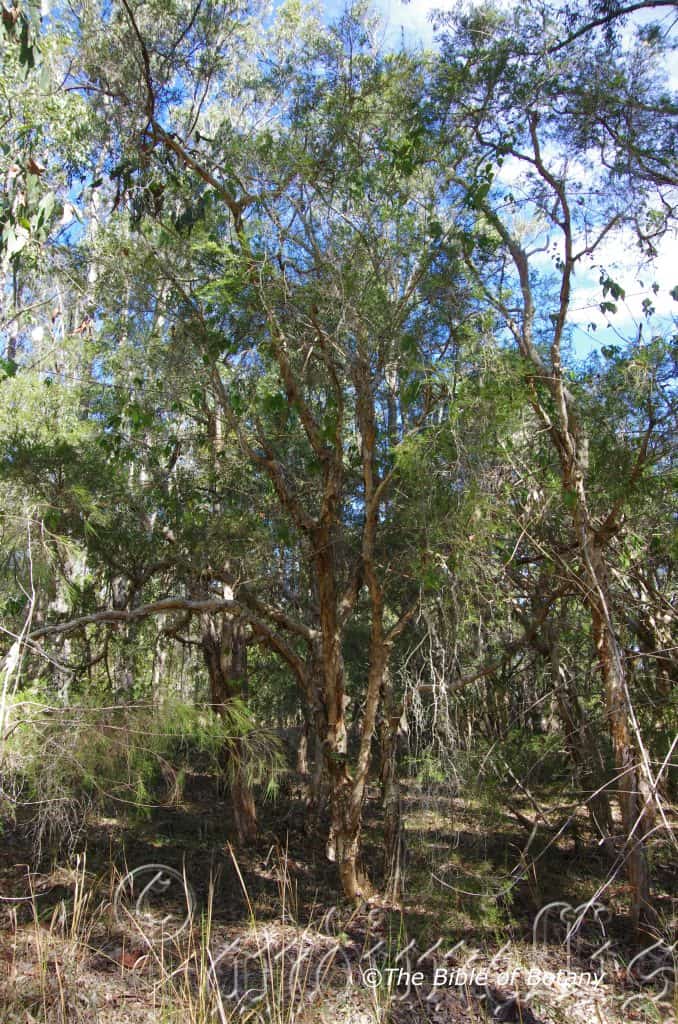
Pillar Valley NSW

Pillar Valley NSW

The Pinnacles NSW

Carbrook Qld.

Carbrook Qld.
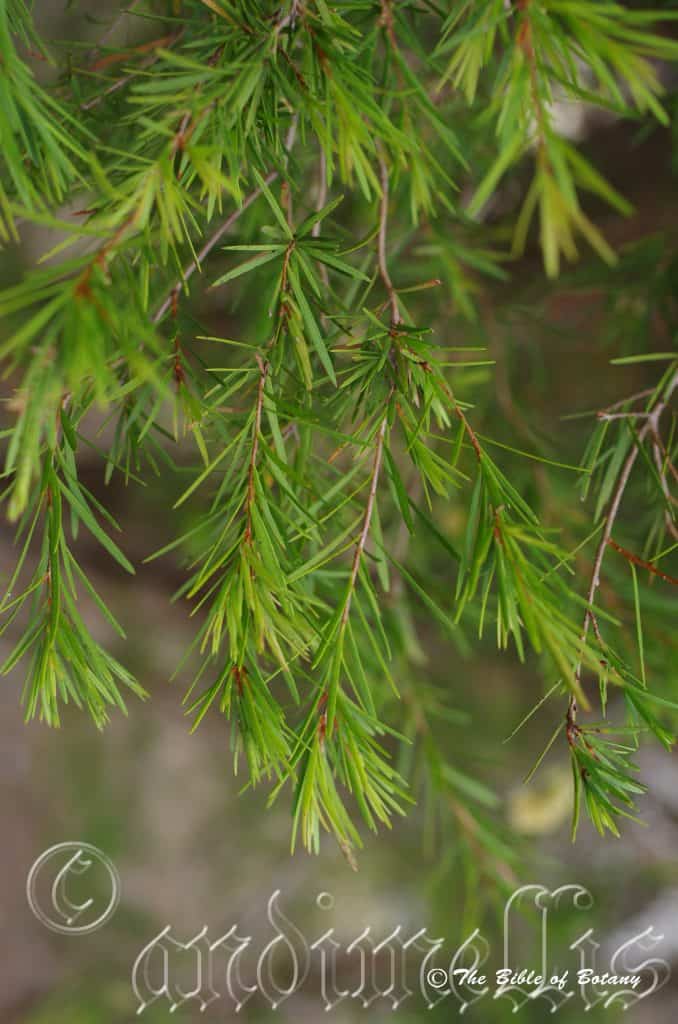
Norman Park Qld.
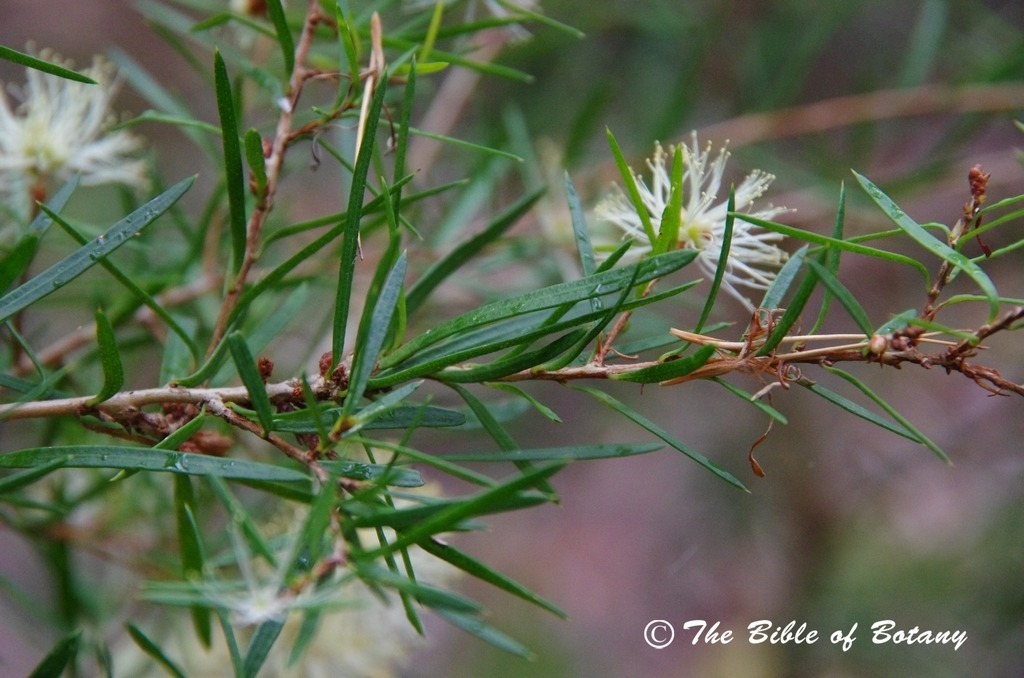
Innes Lake National Park NSW
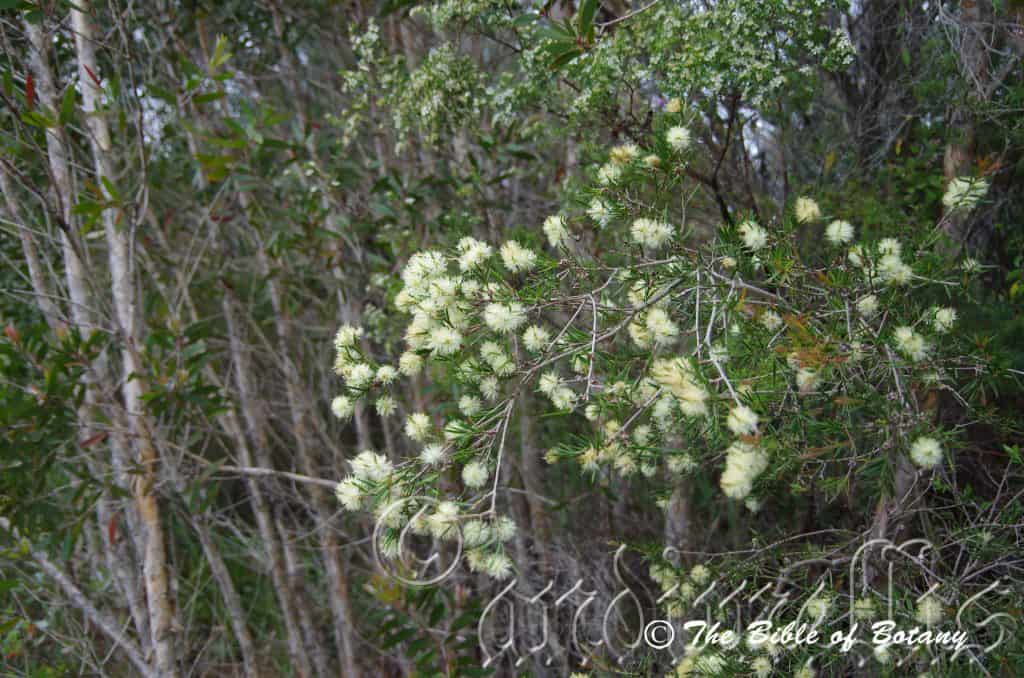
Innes Lake National Park NSW

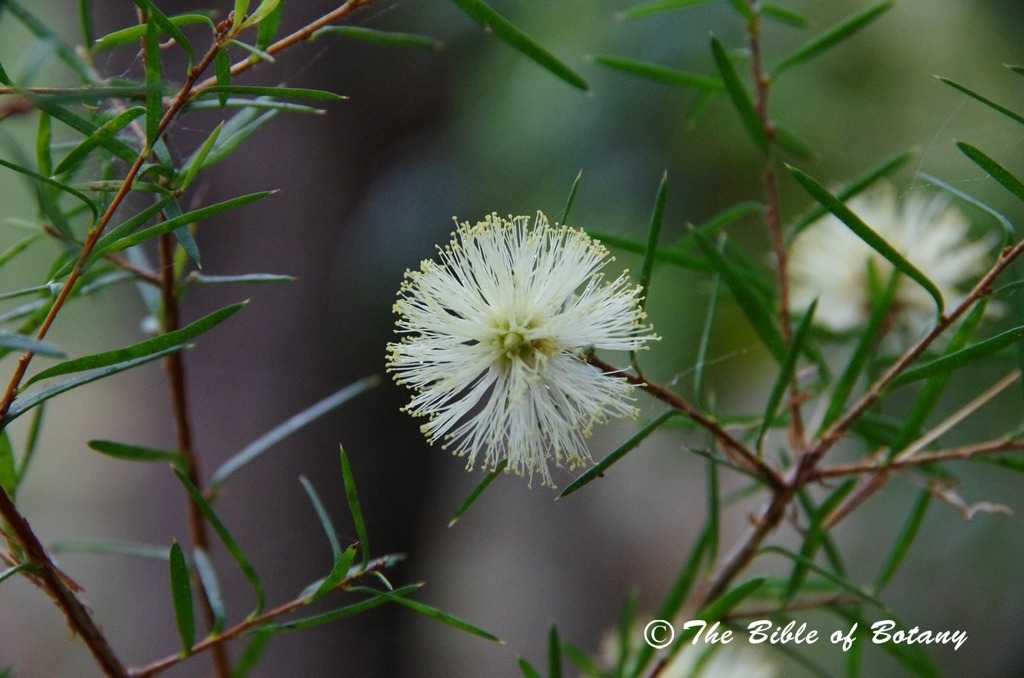
Innes Lake National Park NSW
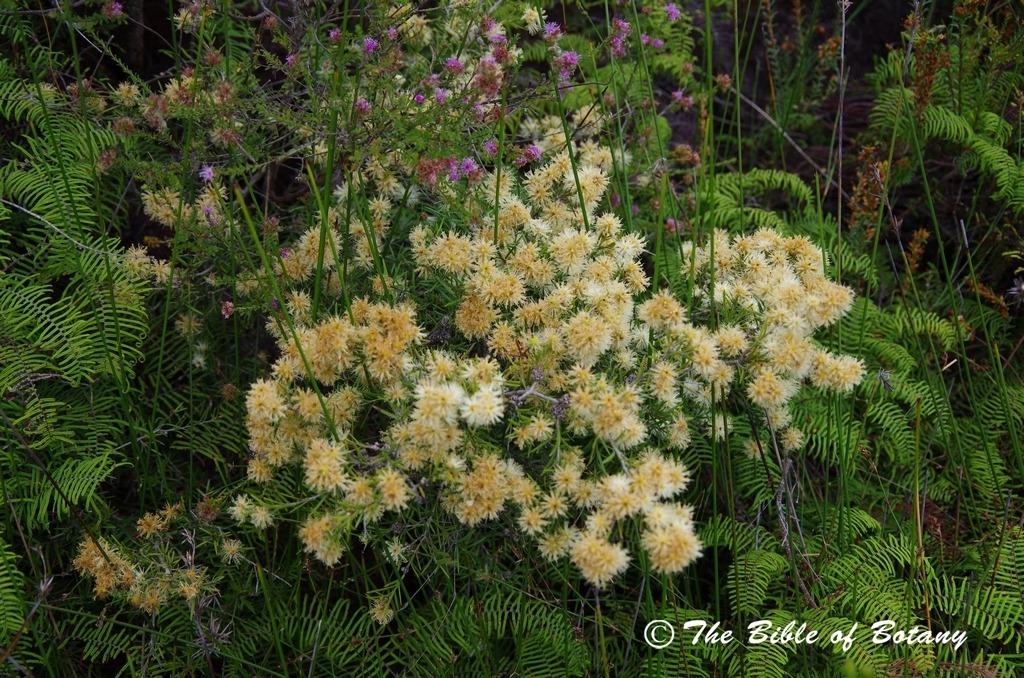
Innes Lake National Park NSW

Norman Park Qld.
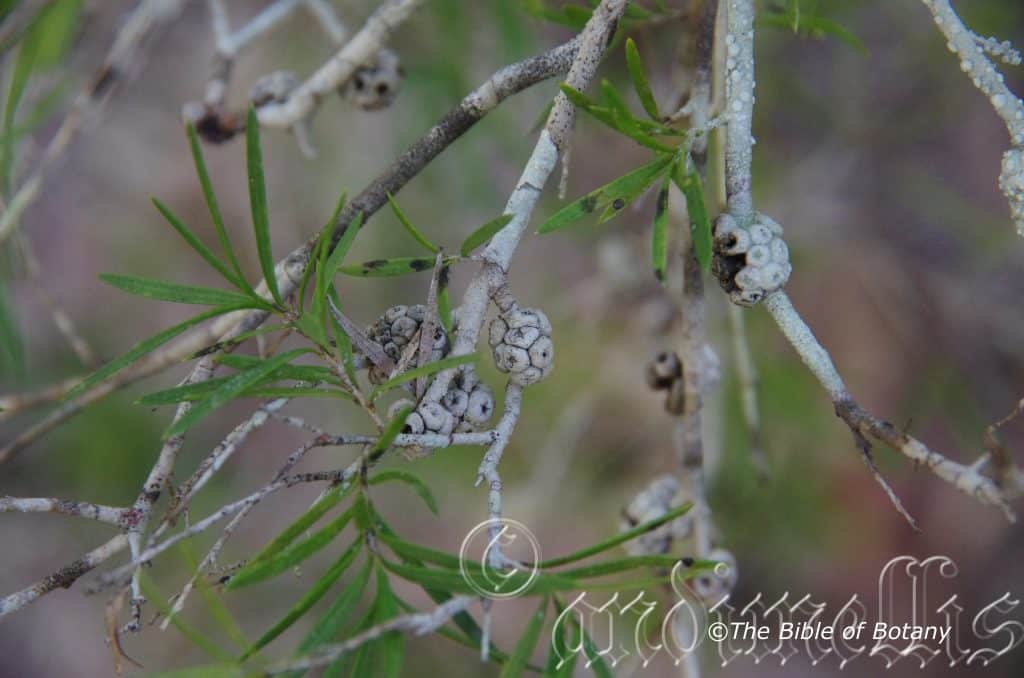
Innes Lake National Park NSW

Archerfield Qld.
Melaleuca nodosa
Classification:
Division: Eudicots
Division: Rosids
Class:
Order: Myrtales
Family: Myrtaceae
Subfamily: Myrtoideae
Tribe: Melaleuceae
Genus: From Melas, which is Ancient Greek for black and Leukos, which is Ancient Greek for white. It refers to plants, which usually have white papery barks that are often charred by fire thus the bark is black and white.
Specie: From Nidita, which is Latin for a knotted like swelling. It refers to stems which have many swellings or lumps. Here it refers to the shape of the fruiting clusters.
Sub species:
Common Name: Prickly Honey Myrtle or Prickly Paper Bark.
Distribution:
Melaleuca nodosa is found in several disjunct populations south from Cairns in north east Queensland to Wollongong in central coastal New South Wales. It is mainly found on Western Plains, Western Slopes, on and east of the Great Dividing Range to the coast.
https://avh.ala.org.au/occurrences/search?taxa=Melaleuca+nodosa#tab_mapView
Habitat Aspect Climate:
Melaleuca nodosa prefers full sun to light dappled shade. It grows on coastal wallum heaths and depressions in closed Eucalyptus forests, open Eucalyptus forests open woodland heaths where water lies for long periods or drains very slowly. It also favours estuary flats where on rare occasions salt water will cause inundation due to very high storm surges or abnormally high king tides. The altitude ranges from 5 meter ASL to 950 meters ASL.
The temperatures range from minus 3 degrees in August to 36 degrees in January.
The rainfalls range from lows of 900mm to an average of 2600mm.
Soil Requirements:
Melaleuca nodosa prefers to grow on poorly drained heavy sandy silts to heavy clays. The soils are usually derived from decomposed shales, podsolic clays laid down as alluvial deposits. The soils pH. ranges from 4.5pH to 6.5pH. It tolerates waterlogged soils and prefers sites that suffer from seasonal inundation and flooding. Non saline soils to very saline soils are tolerated.
Height & Spread:
Wild Plants: 2m to 4.5m by 2m to 4m.
Characteristics:
Melaleuca nodosa grows as a medium shrub to small tree with cream, pale creamy fawn to creamy salmon colour bark. The bark is thick corky and papery. The bark splits as the trunk expands to reveal a salmon layer that is corky but still spongy to touch. The branches are pale creamy fawn to pale creamy salmon, thick with the bark being tightly wrapped around the larger branches. The branchlets are pale creamy white to pale creamy yellow or creamy fawn and tightly wrapped around the stems, while the newest shoots are deep grey-green and glabrous. The branches are strongly arching.
Melaleuca nodosa’s alternate leaves are linear, narrow-oblong and terete in cross section. They measure 12mm to 40mm in length by 1mm to 3mm in width. The base tapers to the petiole while the apex tapers to a pungent point. The concolourous laminas are deep sea-green dull, glabrous and rigid. Immature leaves are paler green with a coppery tinge near the apexes, dull and are sparsely covered in soft white caduceus hirsute hairs. The mid vein is not prominent on either lamina. The margins are entire. The petioles measure 0.6mm to 1mm in length. The leaves are not aromatic when crushed.
The inflorescence of Melaleuca nodosa is a single globose spike born from the terminals or special lateral shoots. The flower terminal shoots do not grow out before the flowers finish blooming. The rachis is covered in soft, white, hirsute hairs and measure 22mm to 26mm long by 22mm to 26mm in diameter. The flowers are born singularly, two or three with in each bract. There are 12 to 18 individual flowers on the globular spike. They measure 10mm to 12mm in diameter. The 5 orbicular petals are pale cream to yellow and measure 1mm to 1.5mm in length by 1mm to 1.5mm in width. It is persistent while the stamens fully develop.
The white, cream to yellow or lemon stamens are the most prominent part of the flowers. The claws are opposite the petals and measure 1mm to 2mm in length. There are 3 to 5 stamens on each of the 5 claws. The filaments measure 4mm to 5.5mm in length. The anthers are cream or yellow with creamy yellow to yellow pollen and measure 0.5mm to 0.6mm in length.
The short, slender, white, cream to deep yellow style measures 7mm to 8mm in length, while the stigma divides into 5 locules. The base of the style is surrounded by the nectaries. The strong honey scented flowers, appear over a long period of time. It is prolific in flowers with the flowers appearing from mid-October to late November.
Melaleuca nodosa‘s fruit is a tightly packed angular ovoid, glabrous capsule. The capsules measure 1.3mm to 2.2mm in length by 2mm to 3mm in diameter. The inserted orifice measures 1mm to 1.6mm in diameter. The woody capsule is dull fawn to pale tan. The capsules contain seeds and chaff mixed together. The seeds are brown. The sepals are usually not persistent on the ripe fruits.
Wildlife:
Melaleuca nodosa supports myriads of native bees, native flies, native beetles and butterflies when in flower. It also supports small honeyeaters which scurry over the flowers and seek protection from the pungent bushy foliage. Red head or red browed finches, Double bars, Thornbills, Wrens, some small honey eaters and many other small native birds favour these trees as nesting sites.
Cultivation:
Melaleuca nodosa makes an excellent small to medium bushy shrub for native gardens. It is suitable on all types of sandy loams to medium clays and are most suitable for small, medium and large gardens close to the coast in temperate, sub tropical or tropical gardens or semi-arid gardens. As garden subjects the multi stemmed shrubs will grow from 2 meter to 2.5 meters in height by 2 meters to 3 meters in diameter or grown as a single trunk tree they will grow from 4.5 meters to 5 meters tall by 3 meters to 3.5 meters in diameter as a small tree. It is cold tolerant to temperatures to minus 8 degrees once established and are surprisingly drought tolerant. This is one Melaleuca that is worth while trying on the west coast which originates from the east.
Melaleuca nodosa has not been widely accepted into the horticultural field probably because of its common name and often straggly appearance of parent material gathered from the wild in the early days. They certainly deserve a second chance as it is easy to maintain and give a fantastic display when in flower. It is very fast growing, very densely foliaged especially when a good fertilizing program with a little additional moisture is given growing more than 1 meter a year. They will drop some of their foliage when stressed during drought times but recover as soon as good rains fall. To avoid this, give the plants a double dose of our recommended fertilizer following flowering and a good deep soaking in mid-winter if good winter rains are not forthcoming. This will prevent further loss and hold them over for several more months.
They can be used for light dappled shade when grown as a small tree. It is an excellent tree for areas that have drainage problems on sandy or sandy clay soils near the coast. When planting the trees in a heath scene scatter them using at least one in the background so the flowers can be fully enjoyed and their natural bushy shape is not interfered with. Use them as trees in this scenario unless you have a very large area to be planted.
Try using them in an informal or formal manner in front of the house. Placed in from the corner they will breaking up rigid lines and soften the structures overall appearance. On high set homes this can be achieved by planting 1 as a tree and 2 or 3 near the base as shrubs. Melaleuca citrina can be used where a bold flowering contrast is warranted for a couple of months of the year. The red and yellow flowers coupled with the different shapes of the flowers will stand out in the crowd.
They can be regularly tip pruned if a hedge is required. This can be maintained with regular pruning and planting closer together with spacing of 2 meters. They respond very well to tip pruning, recovering quickly and increasing the number of terminal points for flowers in the following season. This makes them ideal for large hedge rows which have an impenetrable prickly surface against cats and dogs, yet small birds will find them a safe corridor to travel along.
Place 2 or 3 of them off center of a large rockery with other large or finer leaf ground covers and very small shrubs in the front. Plants with pink, red or purple flowers can be used in both the fore ground and background. This will lead your eyes directly to the array of cream to yellow flowers.
Ensure that the whole plant or at least most of it is on display from most sections of the garden as the flowers and bark are both very attractive.
When it is in flower these plants will catch your attention and the viewer will be transfixed on the display rather than watching the path. Scatter plant them with 4 meter to 5 meter centers or scatter them through the bush for patches of cream or yellow over long periods.
The Redland Bay end of Carbrook, south east of Brisbane has a particularly good form worthy of horticulture. The flowers are a deep lemon yellow to golden yellow, large, prolific flowering while the trees have a very dense habit of growth or as shrubs are shorter with very dense foliage.
They make ideal plants for Bonsai collectors as I have seen some very twisted gnarled specimens where the parent rock is close to the surface.
Propagation:
Seeds: Melaleuca nodosa seeds can be sown directly into a seed raising mix. Cover the seeds with 1mm to 2mm of fine weed free mulch and keep moist. Place the tray in a warm sunny position. When the seedlings are 15mm to 20mm tall, prick them out and plant them into 20mm native tubes using a good organic mix.
When the seedlings are 70mm to 90mm tall, prick them out and plant them into 50mm native tubes using a good organic mix or plant them out into their permanent positions.
Once the seedlings reach 150mm to 200mm in height they can be planted out into their permanent position.
Cuttings: Use 100mm to 150mm long half ripened material when growing from cuttings from the present season’s growth. Take them in warmer months of the year. Remove half the leaves from the bottom section being careful not to tear the bark.
1 Prepare the cutting mix by adding one third sharp clean river sand, one third peat and one third perlite. These ingredients are sterilize,
2 Select good material from non diseased plants,
3 Select semi green stems for cuttings. Look for a stem with two or three nodes,
4 Place the cutting on a flat, hard surface, and make a clean cut down one side of the cutting at the base for 10mm with a sharp sterile knife or razor blade. – This scarification of the node will increase the chances of roots emerging from this spot. Now remove all but one or two the leaves, leaving the apex leaves in tact. If the leaves are very large in proportion to the stem, cut off the apical halves.
5 Fill a saucer with water, and place a little medium strength rooting hormone into another container like a milk bottle top. Dip the node end of the cutting into the water and then into the rooting hormone. Tap off any excess hormone,
6 Use a small dipple stick or old pencil to poke a hole into the soilless potting mix. Ensure the hole is slightly larger than the stem diameter and be careful not to wipe the rooting hormone off the cuttings base, place the cuttings in a pattern ensuring the cuttings are not touching each other,
7 I like to place the pots in Plastic bags to help maintain temperature and moisture. Place in a semi shaded place like under 50mm shade cloth.
8 When the cuttings have struck, open the bag to allow air circulation for a few days to a week,
9 Once hardened off remove the cuttings from the bag and allow to further hardening for a few more days,
10 Transplant into a good potting mix to grow on.
Fertilize using seaweed, fish emulsion or organic chicken pellets soaked in water on an alternate basis. Fertilize every two months until the plants are established then twice annually in early September or March to maintain health, vitality and better flowering.
Further Comments from Readers:
Hi reader, it seems you use The Bible of Botany a lot. That’s great as we have great pleasure in bringing it to you! It’s a little awkward for us to ask, but our first aim is to purchase land approximately 1,600 hectares to link several parcels of N.P. into one at The Pinnacles NSW Australia, but we need your help. We’re not salespeople. We’re amateur botanists who have dedicated over 30 years to saving the environment in a practical way. We depend on donations to reach our goal. If you donate just $5, the price of your coffee this Sunday, We can help to keep the planet alive in a real way and continue to bring you regular updates and features on Australian plants all in one Botanical Bible. Any support is greatly appreciated. Thank you.
In the spirit of reconciliation we acknowledge the Bundjalung, Gumbaynggirr and Yaegl and all aboriginal nations throughout Australia and their connections to land, sea and community. We pay our respect to their Elders past, present and future for the pleasures we have gained.
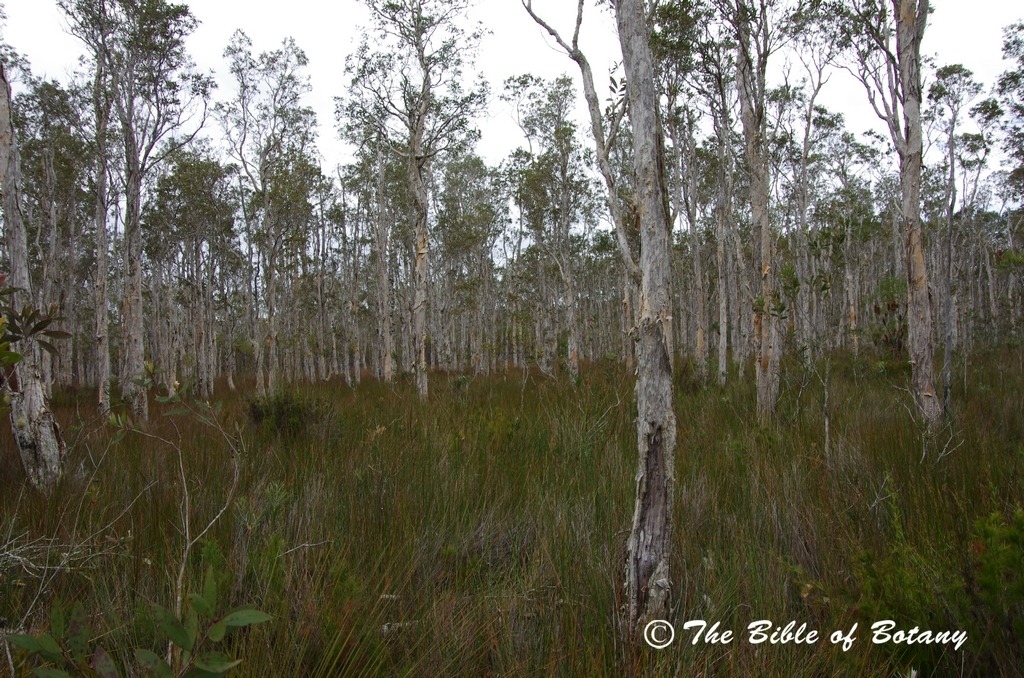
Laurieton NSW
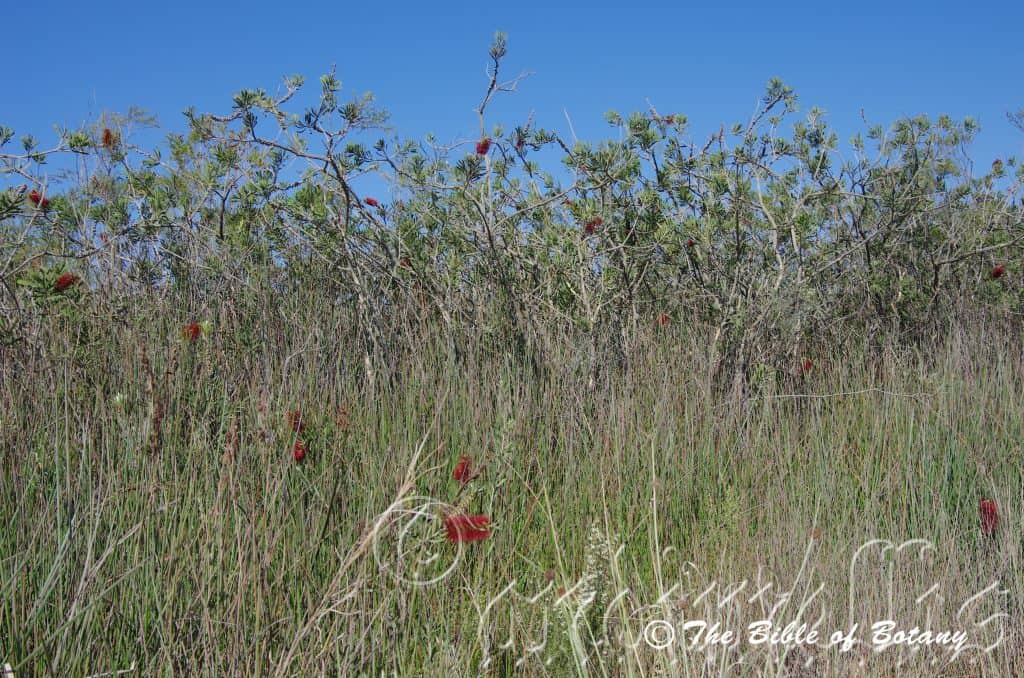
Laurieton NSW

Laurieton NSW

Laurieton NSW

Laurieton NSW
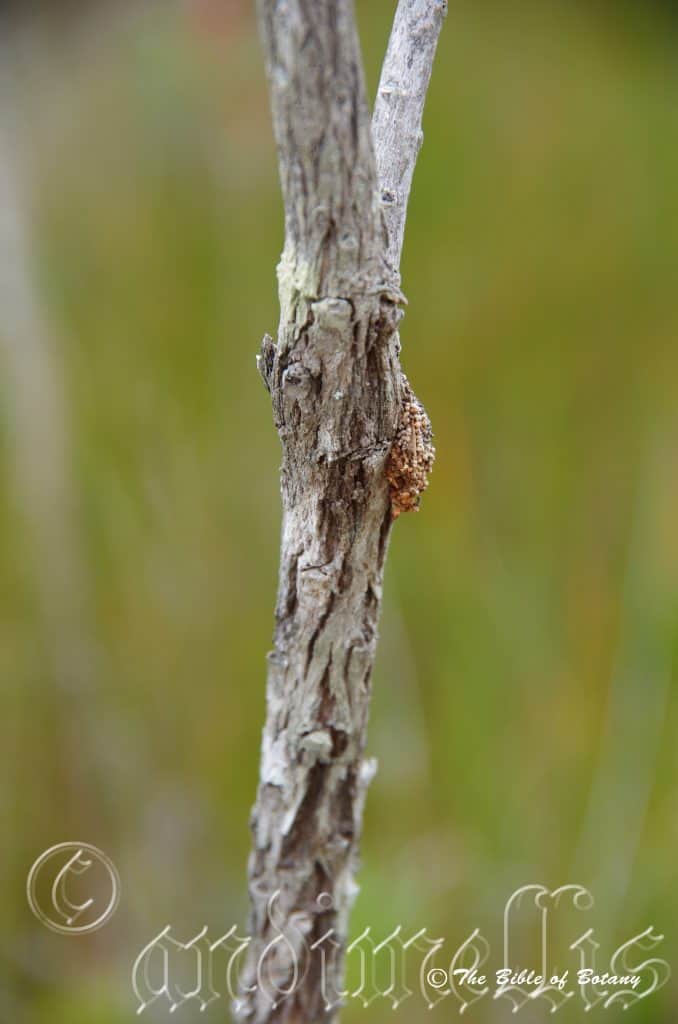
Laurieton NSW
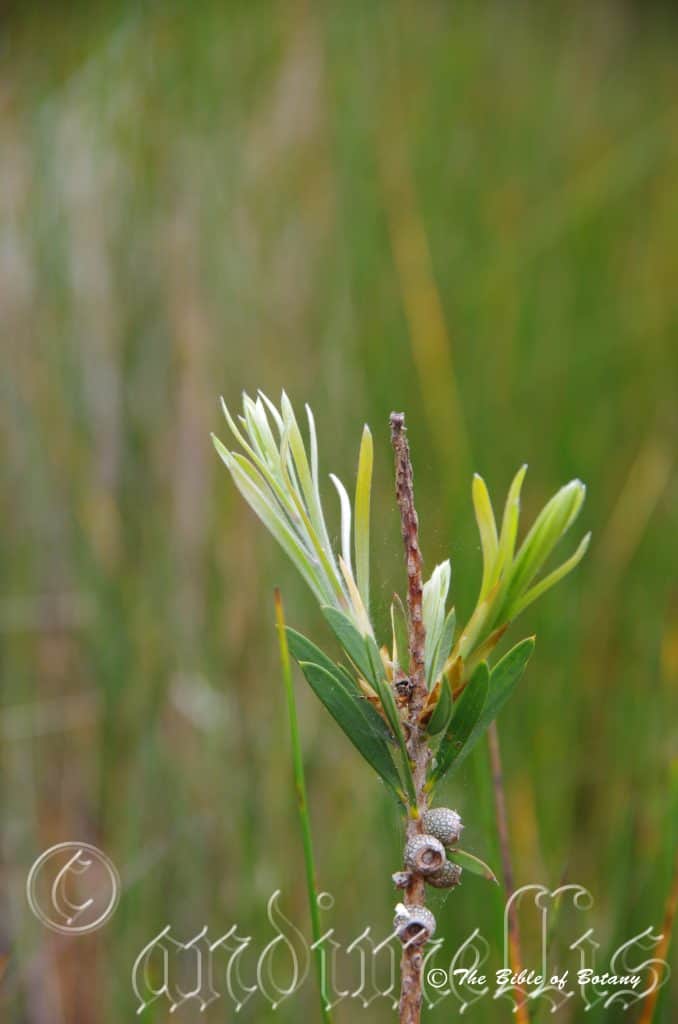
Laurieton NSW
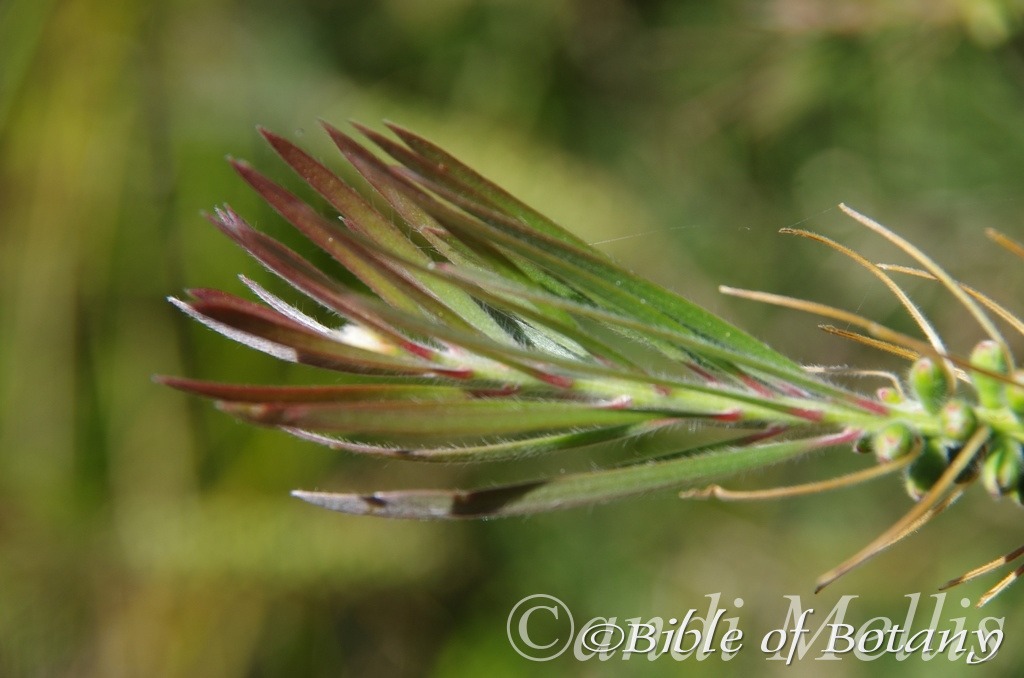
Rosser Gardens Benowa Qld.
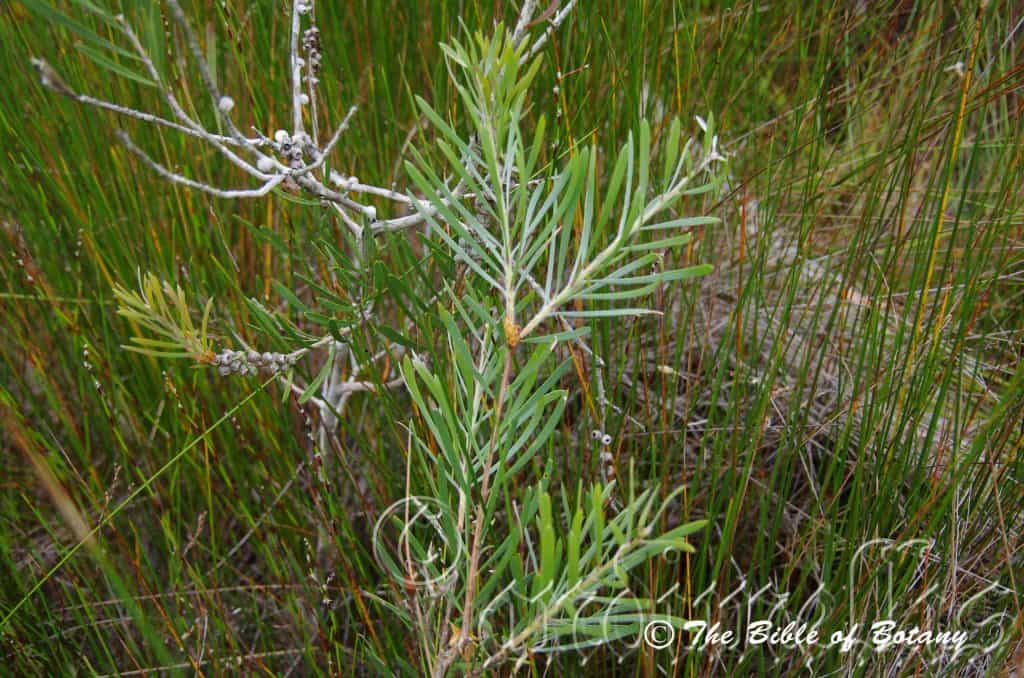
Laurieton NSW
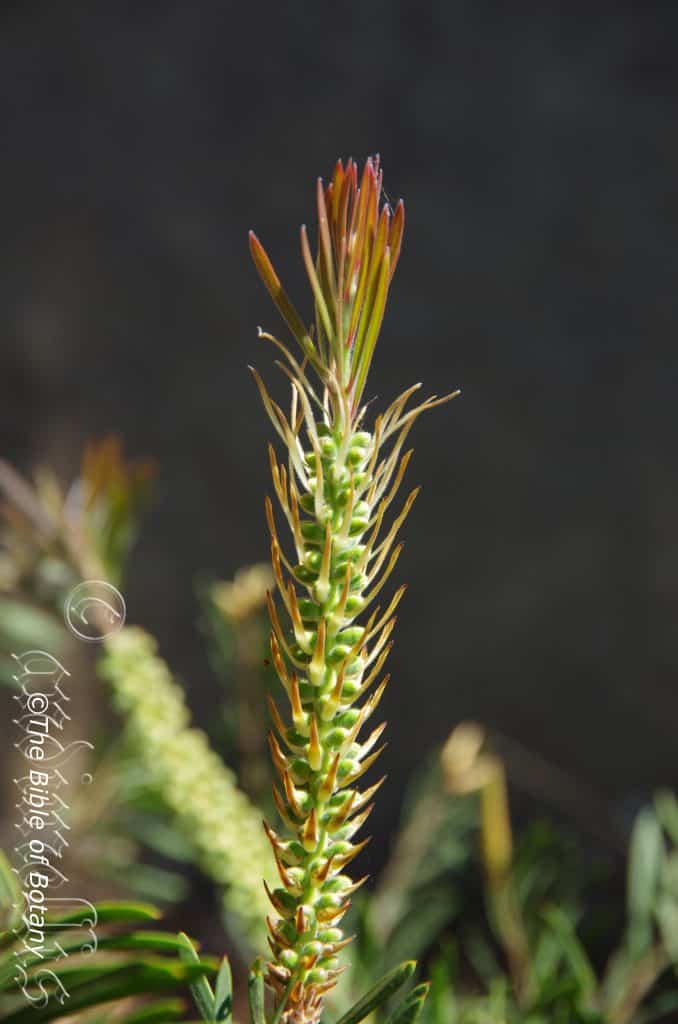
Rosser Gardens Benowa Qld.

Rosser Gardens Benowa Qld.
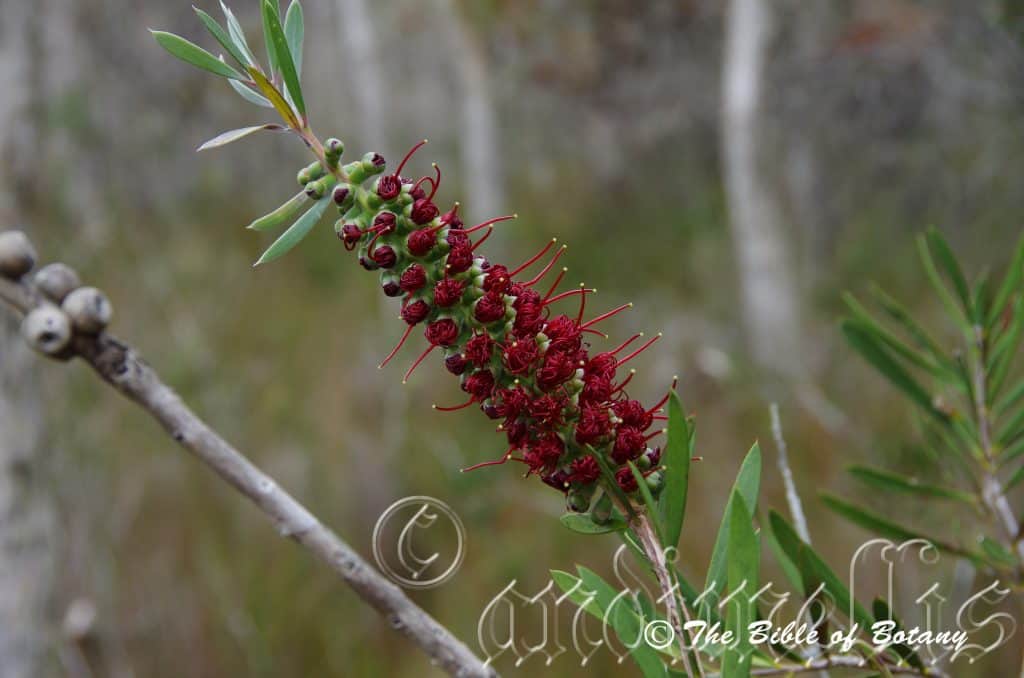
Laurieton NSW
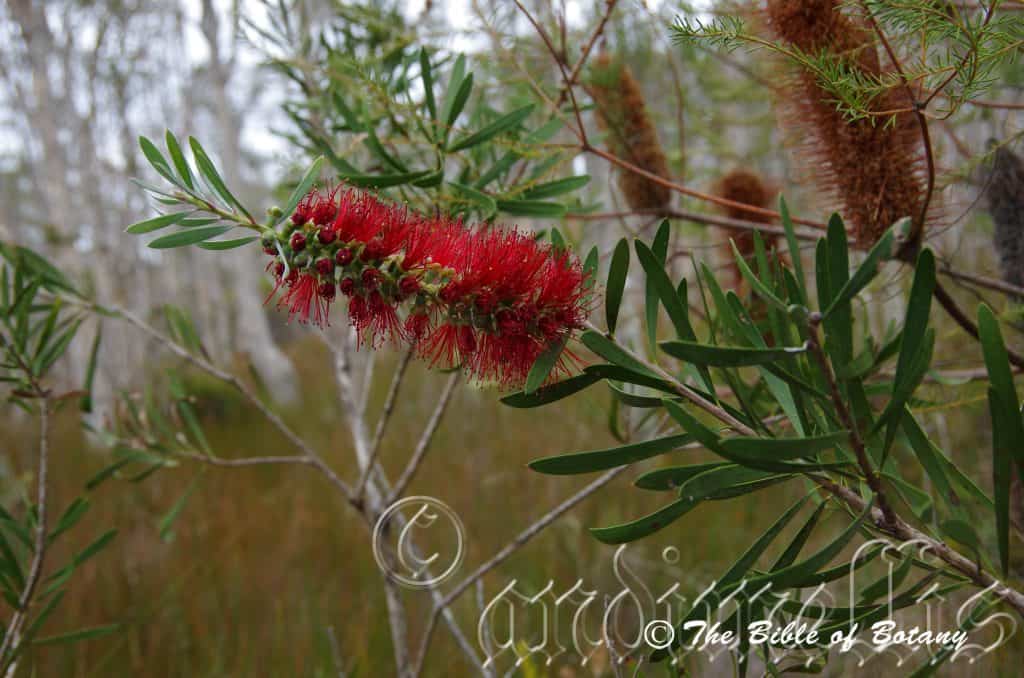
Laurieton NSW

Laurieton NSW
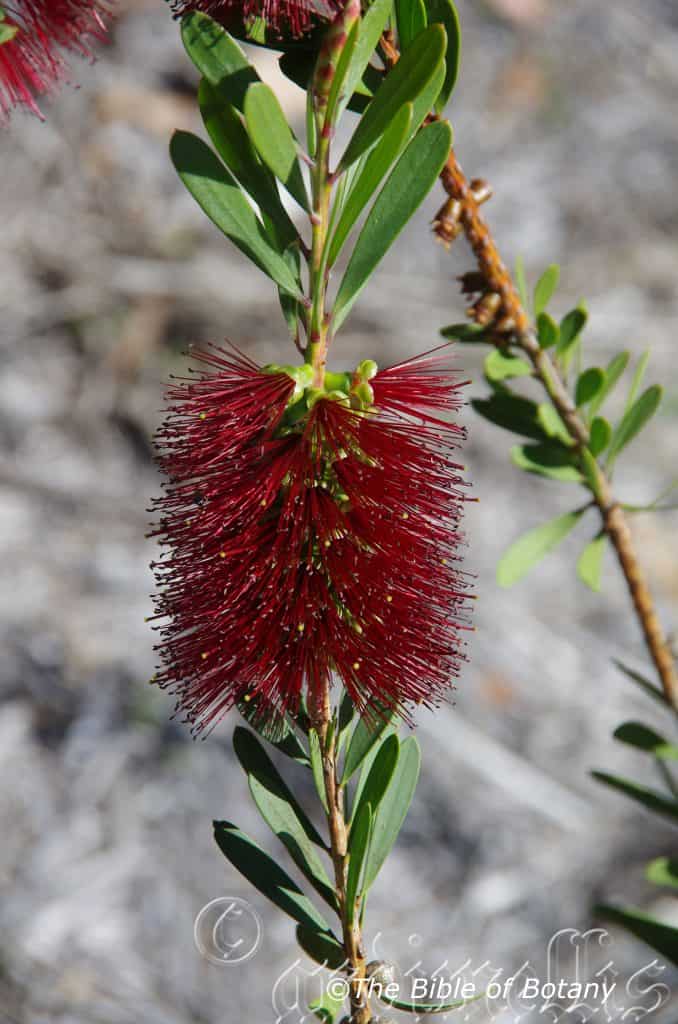
The Pinnacles NSW
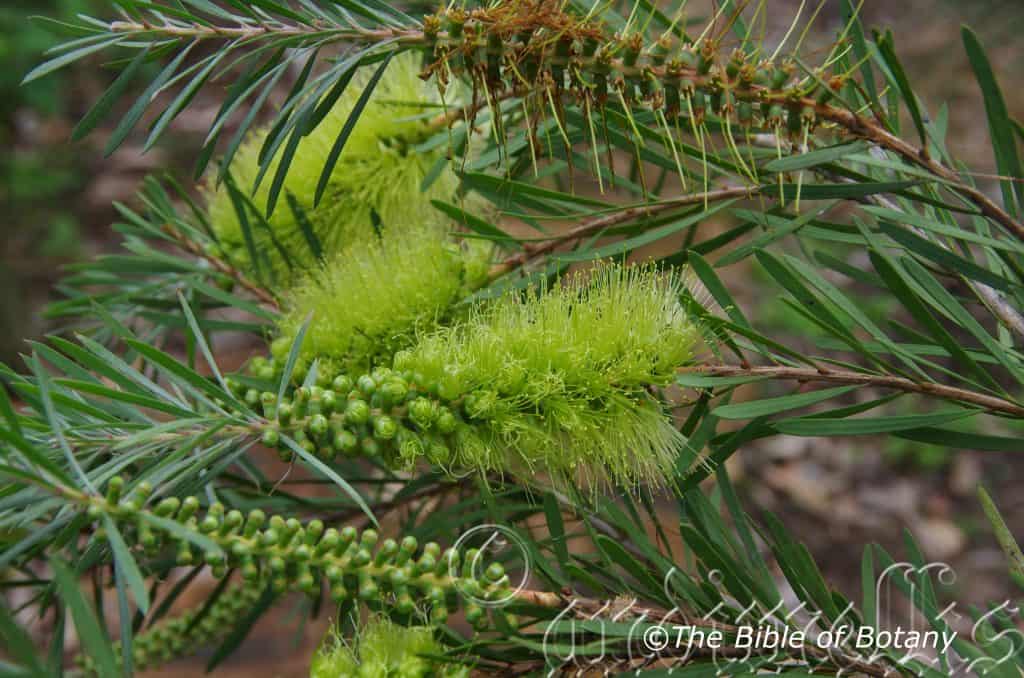
Author’s Garden The Pinnacles NSW

Author’s Garden The Pinnacles NSW
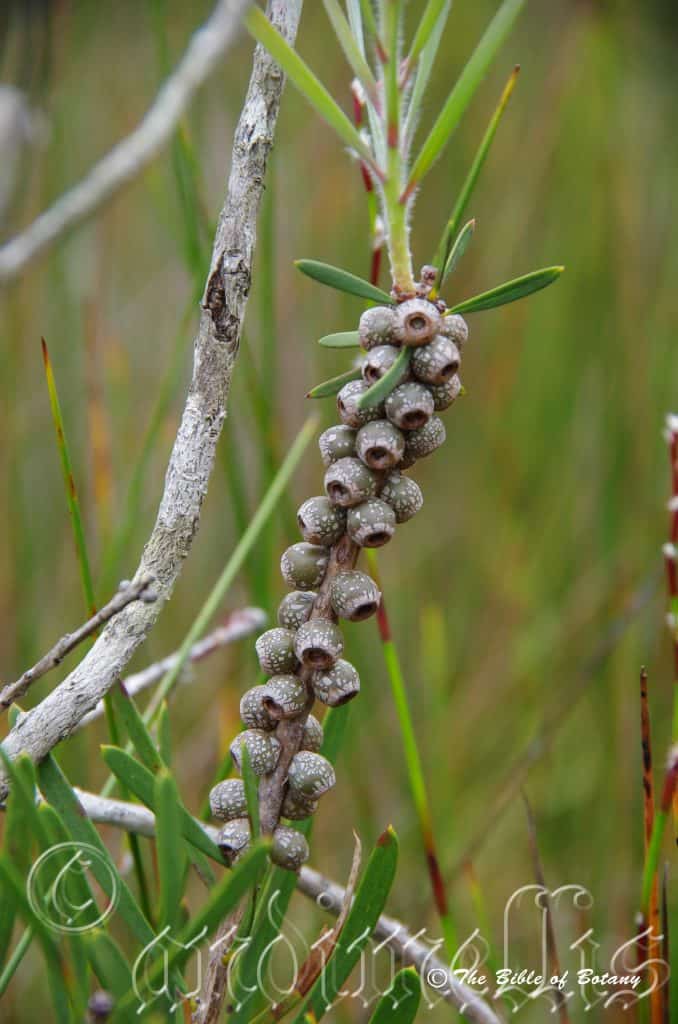
Laurieton NSW

Laurieton NSW

Laurieton NSW

Rosser Gardens Benowa Qld.
Melaleuca pachyphyllus
Classification:
Division: Eudicots
Division: Rosids
Class:
Order: Myrtales
Family: Myrtaceae
Subfamily: Myrtoideae
Tribe: Melaleuceae
Genus: From Melas, which is Ancient Greek for black and Leukos, which is Ancient Greek for white. It refers to plants, which usually have white papery barks that are often charred by fire thus the bark is black and white.
Specie: From Pakhús, which is Ancient Greek for thick or thickness and Phullon/Phyllon, which is Ancient Greek for a leaf. It refers to the leaves, which are much thicker than other species in the genus. (Presently still widely known as Callistemon pachyphyllus. All the varieties are still awaiting transfer from Callistemon.)
Variety: Melaleuca pachyphylla var. angustifolius. From Angusta, which is Latin for narrow and Folium, which is Latin for foliage. It refers to leaves, which are rather narrow but not linear.
Variety: Melaleuca pachyphylla var. pachyphylla. From Pakhús, which is Ancient Greek for thick or thickness and Phullon/Phyllon, which is Ancient Greek for a leaf. It refers to the leaves, which are much thicker than other species in the genus.
Variety: Callistemon pachyphyllus var. rubrolilacinus. From Rubens, which is Latin for reddish and Lilacanum, which is Latin for lilac. It refers to structures, organs or flowers, which have a delicate pink to lilac colour.
Variety: Melaleuca pachyphylla var. viridis. From Virens, which is Latin for green. It refers to structures, organs or flowers, which is bright green. Here it refers to the flowers.
Note: it has been mentioned that the four varieties may all be slight variations on the type species and thus maybe all be resolved as a single species without any varieties or subspecies.
Common Name: Wallum Bottle Brush.
Distribution:
Melaleuca pachyphylla is found south from the northern tip of Fraser Island in coastal central Queensland to Raymond Terrace in central coastal New South Wales. It is mainly found east of the Great Dividing Range on the coast, with a few outlying populations on the Range itself. Most of the varieties overlap each other.
https://avh.ala.org.au/occurrences/search?taxa=Melaleuca+pachyphyllus#tab_mapView
Habitat Aspect Climate:
Melaleuca pachyphylla prefers full sun to light dappled shade. It grows on coastal wallums behind the frontal dunes, wet headland heaths or heaths or on depressions. The altitude ranges from 5 meter ASL to 200 meters ASL.
The temperatures range from 1 degree in August to 36 degrees in January.
The rainfalls range from lows of 850mm to an average of 2000mm.
Soil Requirements:
Melaleuca pachyphylla prefers coarse, sands, fine sands or peaty sands. The soils are usually derived from accumulated peaty beach sands or at times decomposed sandstones. The soils pH. ranges from 4.5pH to 7pH. It tolerates waterlogged soils especially those with high water tables and seasonal surface water. Non saline soils to moderately saline soils are tolerated.
Height & Spread:
Wild Plants: 1m to 1.5m by 0.8m to 1m.
Characteristics:
Melaleuca pachyphylla. The branchlets are grey and covered in the old leaf scars. The new growth is glabrous to densely covered in white or pale grey pulverulent hairs. The plants vary considerably from having an open straggly habit to open upright and densely foliaged.
Melaleuca pachyphylla alternate leaves are narrowly oblanceolate and measure 50mm to 90mm in length by 4mm to 9mm in width. The base is asymmetrical cuneate while the apex is obtuse with a stiff mucronate point. The concolourous laminas are deep green, deep grey-green to grey-green. It is dull, glabrous and rigid. Immature leaves are paler green with a coppery tinge, dull and glabrous. The mid vein and intramarginal veins are prominent on the lower lamina and are distinctly visible and rounded on the upper lamina. The margins are entire, flat and thickened. The golden yellow, red, purple or orange petioles measure 2mm to 4mm in length. The leaves are not aromatic when crushed.
The inflorescence of Melaleuca pachyphylla is a single spike born from the terminals. The flower terminal shoots grow partially out to fully develop prior to the flowers finishing blooming and often have the first leaves appearing between the individual flowers that are closer to the apex. The rachis is glabrous and measures 60mm to 100mm in length by 50mm to 60mm in diameter. The flowers are born singularly with in each bract. There are 44 to 68 individual flowers along the spike. They measure 10mm to 12mm in diameter. The hypanthium, 5 sepals and 5 petals are densely covered in silvery sericeous hairs. The brown, ovate sepals have a cream margin which are densely covered in silvery ciliata hairs measure 1mm to 1.5mm in length by 1.5mm to 2mm in width. The 5 ovate cupular petals are green with a pale hyaline margin which are sparsely covered in silvery sericeous hairs. They measure 4.5mm to 5.2mm in length. It is persistent while the stamens fully develop.
The blood red, deep crimson, red, orange orange-yellow stamens are the most prominent part of the flowers on Melaleuca pachyphyllus var. pachyphylla and greenish yellow on Melaleuca pachyphylla var. viridis. The 26 to 30 stamens are free and form a ring around the hypanthia. The filaments measure 25mm to 28mm in length. The oblique anthers which are usually yellow, yellow-green but can be deep red to deep rich crimson or purple on the red flowers measure 0.8mm to 1mm in length.
The long, cream to deep yellow-green or deep red to deep crimson style measures 26mm to 31mm in length, while the ovary divides into 3 locules. The base of the style is surrounded by the nectaries. The arrowroot to honey scented flowers, appear over a long period of time. The flowers appear from early mid late November to late February however odd flowers will appear in most warmer months of the year.
Melaleuca pachyphylla fruit is a globose, glabrous capsule. The capsules measure 6.2mm to 7.2mm in length by 6mm to 7mm in diameter. The orifice is enclosed and measures 3mm to 3.4mm in diameter. The woody capsule is dull pale grey-brown. The capsules contain seeds and chaff mixed together. The seeds are brown.
Confusing Subspecies Varieties:
Melaleuca pachyphylla var. pachyphylla flowers are red, crimson to orange-red.
Melaleuca pachyphylla var. viridis’s flowers are green to greenish yellow
Wildlife:
Melaleuca pachyphylla supports native bees, native flies, native beetles and butterflies when in flower. It also supports small honeyeaters like the New Holland Honey Eater (Phylidonyris novaehollandiae) and the White Cheeked Honey Eater (Phylidonyris nigra).
Cultivation:
Melaleuca pachyphylla makes an excellent small to medium bushy or open twisted gnarled shrub for native gardens. It is suitable on all types of sandy loams to light clays and are most suitable for small, medium and large gardens close to the coast in temperate, sub tropical or tropical gardens. As garden subjects they will grow from 1 meter to 2.5 meters in height by 1 meter to 1.5 meters in diameter when grown in the open. It is cold tolerant to temperatures to minus 4 degrees once established and are surprisingly drought tolerant. This is another Melaleuca that is worth while trying on the west coast which originates from the east.
It is very fast growing and produce more flowers especially when a good fertilizing program and moisture conditions prevail. They will drop some of their foliage when stressed during drought times but recover as soon as good rains fall. To avoid this, give the plants a double dose of our recommended fertilizer following flowering and a good deep soaking in mid-winter if good winter rains are not forthcoming. This will prevent further loss and hold them over for several more months.
It can be regularly tip pruned if a dense small hedge to 1 meter is required. This can be maintained with regular pruning and planting closer together with spacing of 1 meter. They respond very well to tip pruning, recovering quickly and increasing the number of terminal points for flowers in the following season.
It is most suitable for use around sunny swimming pools, courtyards, besides pathways, shady rockeries, along sandy or sandy clay banks, along drive ways or adjacent to natural bush gardens. Mass plantings of 5 or more plants even in small areas; really do the plants justification especially when it is in flower. If it is placed around a pool, courtyards or other confined spaces then plant them in small groups or scatter plant them for a more informal natural look against walls to help soften them.
When mass or group planting Melaleuca pachyphylla, use curves and irregular patterns so they can be viewed from different angles around the garden. The flowers are really highlighted against the deep green leathery leaves so place them where it is highly visible.
Using rocks and small boulders can make the pool or any water feature appear like an oasis. The leaves and flowers can make a great start for the larger heath setting. Use large old stumps and roots so that they look larger. Select an area of ground and let your hair down and be imaginative. This is the plant that may just change your life. Remember this plant is rather large for this type of garden so be sparingly with the other plants when planting and remember that heaths are flat plains not steep hills so it is best to use a gentle slope or a basin with a small pool at the bottom. A billabong affect is the go, not a waterfall or cascades. With this type of garden I would prune the plants so that it is gnarled and twisted emphasizing the harshness of its environment. Some forms are naturally gnarled with an open habit while others are upright and bushy so try to source the gnarled twisted forms. These often exhibited this naturally at an early stage so they can be recognized in a 200mm pot. Again look at the flower colours you wish to end up with as these are extremely variable and seed grown plants are reasonably true to colour but variation will exist.
The gnarled forms would make ideal plants for Bonsai collectors.
Propagation:
Seeds: Melaleuca pachyphylla seeds can be sown directly into a seed raising mix. Do not cover the seeds. Press them into the mix. Place the tray in a warm sunny position. When the seedlings are 15mm to 20mm tall, prick them out and plant them into 20mm native tubes using a good organic mix.
When the seedlings are 70mm to 90mm tall, prick them out and plant them into 50mm native tubes using a good organic mix or plant them out into their permanent positions.
Once the seedlings reach 150mm to 200mm in height they can be planted out into their permanent position.
Cuttings: Cuttings must be used if a particular variety, flower colour, form and flowering in the following season is required.
Use 100mm to 150mm long half ripened material when growing from cuttings from the present season’s growth. Take them in warmer months of the year. Remove half the leaves from the bottom section being careful not to tear the bark.
1 Prepare the cutting mix by adding one third sharp clean river sand, one third peat and one third perlite. These ingredients are sterilize,
2 Select good material from non diseased plants,
3 Select semi green stems for cuttings. Look for a stem with two or three nodes,
4 Place the cutting on a flat, hard surface, and make a clean cut down one side of the cutting at the base for 10mm with a sharp sterile knife or razor blade. – This scarification of the node will increase the chances of roots emerging from this spot. Now remove all but one or two the leaves, leaving the apex leaves in tact. If the leaves are very large in proportion to the stem, cut off the apical halves.
5 Fill a saucer with water, and place a little medium strength rooting hormone into another container like a milk bottle top. Dip the node end of the cutting into the water and then into the rooting hormone. Tap off any excess hormone,
6 Use a small dipple stick or old pencil to poke a hole into the soilless potting mix. Ensure the hole is slightly larger than the stem diameter and be careful not to wipe the rooting hormone off the cuttings base, place the cuttings in a pattern ensuring the cuttings are not touching each other,
7 I like to place the pots in Plastic bags to help maintain temperature and moisture. Place in a semi shaded place like under 50mm shade cloth.
8 When the cuttings have struck, open the bag to allow air circulation for a few days to a week,
9 Once hardened off remove the cuttings from the bag and allow to further hardening for a few more days,
10 Transplant into a good potting mix to grow on.
Fertilize using seaweed, fish emulsion or organic chicken pellets soaked in water on an alternate basis. Fertilize every two months until the plants are established then twice annually in early September or March to maintain health, vitality and better flowering.
Further Comments from Readers:
Hi reader, it seems you use The Bible of Botany a lot. That’s great as we have great pleasure in bringing it to you! It’s a little awkward for us to ask, but our first aim is to purchase land approximately 1,600 hectares to link several parcels of N.P. into one at The Pinnacles NSW Australia, but we need your help. We’re not salespeople. We’re amateur botanists who have dedicated over 30 years to saving the environment in a practical way. We depend on donations to reach our goal. If you donate just $5, the price of your coffee this Sunday, We can help to keep the planet alive in a real way and continue to bring you regular updates and features on Australian plants all in one Botanical Bible. Any support is greatly appreciated. Thank you.
In the spirit of reconciliation we acknowledge the Bundjalung, Gumbaynggirr and Yaegl and all aboriginal nations throughout Australia and their connections to land, sea and community. We pay our respect to their Elders past, present and future for the pleasures we have gained.

Gibraltar Range National Park NSW
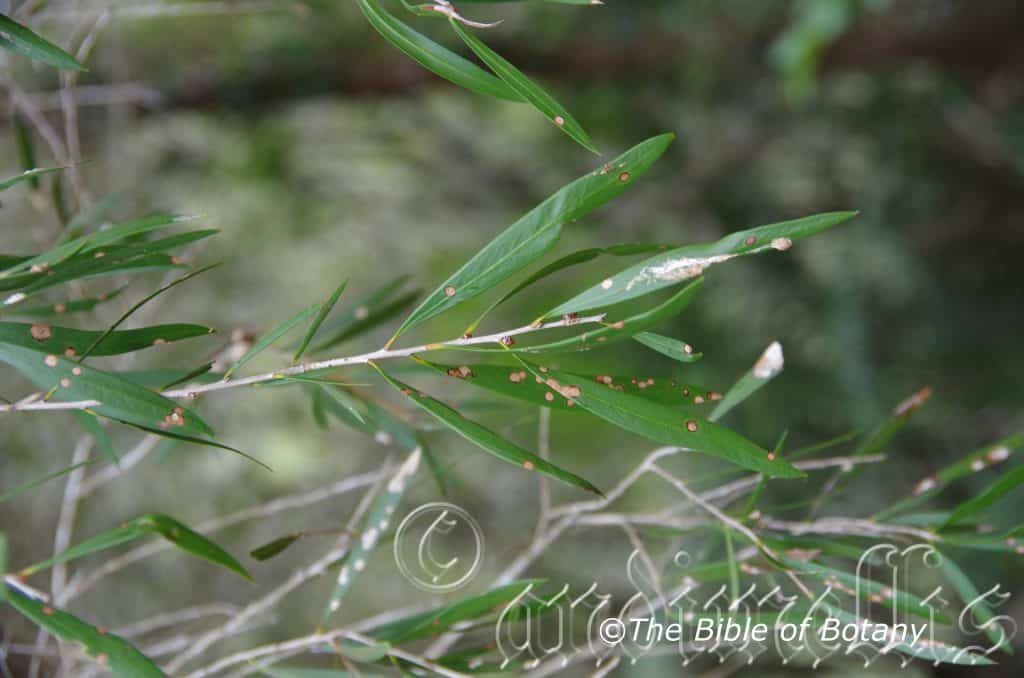
Gibraltar Range National Park NSW

Gibraltar Range National Park NSW

Gibraltar Range National Park NSW
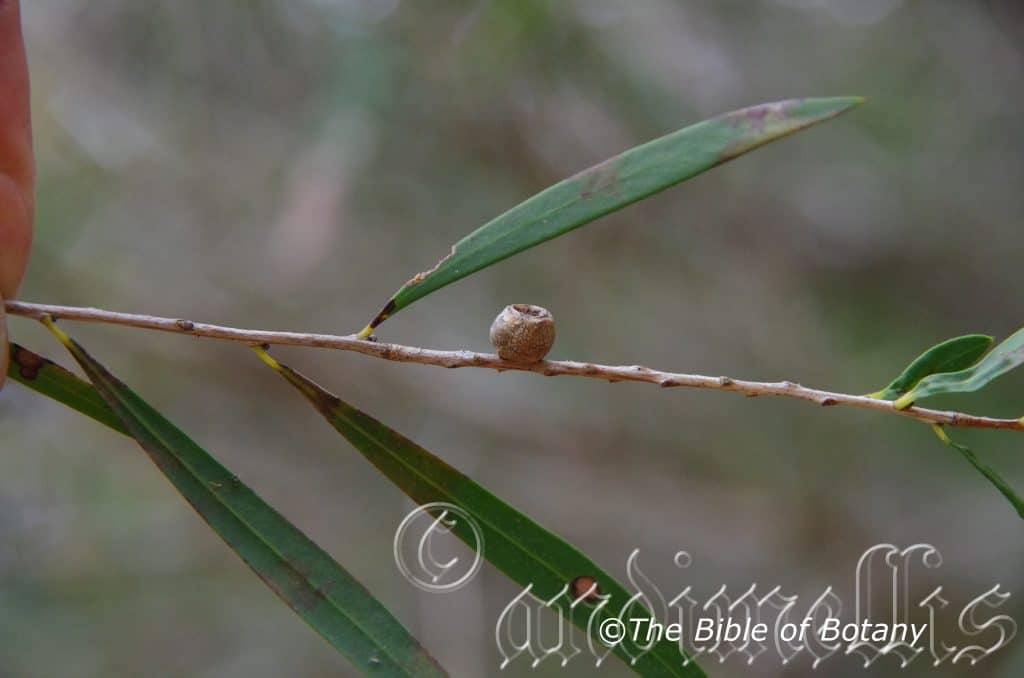
Gibraltar Range National Park NSW
Melaleuca pallida
Classification:
Division: Eudicots
Division: Rosids
Class:
Order: Myrtales
Family: Myrtaceae
Subfamily: Myrtoideae
Tribe: Melaleuceae
Genus: From Melas, which is Ancient Greek for black and Leukos, which is Ancient Greek for white. It refers to plants, which usually have white papery barks that are often charred by fire thus the bark is black and white.
Specie: From Paludosa/Pallida which is Greek or Palis/ Palidosum, which is Latin for wallums, swamps or marshes. It refers to the habitats, which are very wet as in wallums marshes or swamplands. (Presently still widely known as Callistemon pallidus also Melaleuca pallida.)
Sub species:
Common Name: Lemon Bottlebrush.
Distribution:
Melaleuca pallida is mainly found from the Nattai River in southern New South Wales south to Croajingolong National Park and west to Suggan Buggan in Victoria. It is found on the Western slopes, on and east of the Great Dividing Range to the coast.
In Tasmania it is found on the eastern two thirds of the main island and the flinders island group in Bass Strait
https://avh.ala.org.au/occurrences/search?taxa=Melaleuca+pallidus#tab_mapView
Habitat Aspect Climate:
Melaleuca pallidus prefers full sun to dappled shade. It grows along creeks, streams or coastal wallums. The altitude ranges from 35 meter ASL to 1400 meters ASL.
The temperatures range from minus 8 degrees in August to 32 degrees in the January.
The rainfalls range from lows of 800mm to an average of 1200mm. it is drought hardy.
Soil Requirements:
Melaleuca pallidus prefers well drained light rocky clays to medium rocky clays. The soils are usually derived from partially decomposed granites and basalts. The soils pH. ranges from 4.5pH to 6pH. It tolerates waterlogged soils and prefers sites that suffer from seasonal inundation and flooding. Non saline soils to moderately saline soils are tolerated.
Height & Spread:
Wild Plants: 3.5m to 5m by 2m to 3m.
Characteristics:
Melaleuca pallidus grows as medium shrub to tall shrub with fawnish to pale grey, hard spongy touch bark. Branchlets are grey and glabrous. The bark is slightly furrowed on older trees and has a twisted, spiral or abrupt furrows. The bark is grey to grey-brown on the branches and is scabrous while the branchlets are tawny to red-brown and glabrous to slightly scabrous. The branchlets are strongly weeping.
Melaleuca pallidus has alternate leaves are densely packed along the stems. The elliptical to oblanceolate leaves measure 30mm to 70mm in length by 9mm to 15mm in width. The base is tapering to cuneate and slightly asymmetrical while the apex is acuminate with a short pungent mucronate point. The concolourous laminas are deep blue-green, very thick, dull, glabrous and coriaceous to rigid. Immature leaves are deep reddish purple or silvery. The main vein and lateral veins are barely conspicuous. The laminas are covered in oil glands. It is dull and glabrous. The margins are entire and flat. The leaf petiole measures 4mm to 7mm in length. The leaves are not aromatic when crushed.
The inflorescences of Melaleuca pallidus are dense single spikes born from the terminals. The terminal shoots grow out as the stamens begin to die. The shoots are red-tan in colour, glabrous and semi glossy. The rachis is glabrous. The flowers are born singularly with in each bract. The flowers measures 35mm to 70mm in length by 30mm to 50mm in diameter. There are 48 to 60 individual flowers along the spike. The individual flowers measure 10mm to 14mm in diameter. The 5 ovate petal apexes are broadly acute-obtuse and are creamy yellow. The petals measure 5mm to 6.5mm in length by 4.5mm to 5.5mm in width. It is persistent while the stamens fully develop.
The cream to lemon yellow stamens is the most prominent part of the flowers. The 30 stamens are free around the edge of the hypanthia. The stamens measure 16mm to 24mm while the anthers measure less than 1.5 mm to 1.8mm in in length and are pale creamy fawn to pale fawn.
The long cream, thick style measures 16mm to 24mm in length while the ovary has 3 locules. The base of the style is surrounded by the nectaries. The honey scented flowers, appear from early September to late February.
Melaleuca pallidus has a sessile squat, globular and glabrous capsule with a slightly constricted neck. The capsules measure 4mm to 6mm in length by 4mm to 6mm in diameter. The orifice is enclosed and measures 1.5mm to 2.5mm in diameter. The woody capsule is dull grey, glabrous and resinous. The capsules contain seeds and chaff mixed together. It is brown and look swollen compared to the chaff. The calyx lobes are not persistent on the hypanthia.
Wildlife:
Melaleuca pallidus supports native bees, native flies, native beetles and butterflies when in flower.
It also supports small to medium size honeyeaters which scurry over the flowers and seek protection from the bushy foliage.
Cultivation:
Melaleuca pallidus is an excellent small bushy or open medium shrub for native gardens. It is suitable on all types of sandy loams to medium clays and are most suitable for small, medium and large gardens close to the coast in cool temperate to cool sub tropical gardens at higher altitudes. As a garden subject it will grow from 4 meters to 5.5 meters in height by 2 meter to 3 meters in diameter when grown in the open
Melaleuca pallidus has been largely ignored in the past as a horticultural plant on the coast but should be considered in any aspect where prolonged cold winters are the norm or late frosts are frequently experienced. It is cold tolerant to temperatures to at least minus 8 degree once established but are very slow to establish themselves and will suffer some tip burning below these temperatures. It is drought tolerant. It will commence flowering from an early age even from seed.
It is very fast growing especially with a good fertilizing program and require regular watering to keep them at their best. They will drop some of their foliage when stressed during drought times so should not be allowed to dry out. To avoid this and to increase flowering give the plants a double dose of our recommended fertilizer following the autumn flowering as it starts to rain and a good deep soaking in the dry season if good rainfalls do not eventuate . This will prevent further loss and hold them over for several more months.
It can be regularly tip pruned if a small hedge or bushier shrub is required. This can be maintained with regular pruning and planting closer together with spacing of 2.5 meter. It responds very well to tip pruning, recovering quickly. It is best however if left to grow into their natural habit with long pendulous outer stems to a meter or more in length.
It is great in large rockeries as the main feature. Here it can be planted in small groups of 2 or 3 scattered between the rocks or boulders or as a standalone plant to create a more isolated affect. If it is surrounded by shorter plants with fine foliages and red, pink or orange flowers they will create a strong contrast in colour and outline. This is one plant that benefits highly from being mass planted or planted in scattered clumps.
Propagation:
Seeds: Melaleuca pallidus seeds can be sown directly into a seed raising mix. Do not cover the seeds. Press them into the mix. Place the tray in a warm sunny position. When the seedlings are 15mm to 20mm tall, prick them out and plant them into 20mm native tubes using a good organic mix.
When the seedlings are 70mm to 90mm tall, prick them out and plant them into 50mm native tubes using a good organic mix or plant them out into their permanent positions.
Once the seedlings reach 150mm to 200mm in height they can be planted out into their permanent position.
Cuttings: Cuttings must be used if the strong weeping forms are desired. Use 100mm to 150mm long half ripened material when growing from cuttings from the present season’s growth. Take them in warmer months of the year. Remove half the leaves from the bottom section being careful not to tear the bark.
1 Prepare the cutting mix by adding one third sharp clean river sand, one third peat and one third perlite. These ingredients are sterilize,
2 Select good material from non diseased plants,
3 Select semi green stems for cuttings. Look for a stem with two or three nodes,
4 Place the cutting on a flat, hard surface, and make a clean cut down one side of the cutting at the base for 10mm with a sharp sterile knife or razor blade. – This scarification of the node will increase the chances of roots emerging from this spot. Now remove all but one or two the leaves, leaving the apex leaves in tact. If the leaves are very large in proportion to the stem, cut off the apical halves.
5 Fill a saucer with water, and place a little medium strength rooting hormone into another container like a milk bottle top. Dip the node end of the cutting into the water and then into the rooting hormone. Tap off any excess hormone,
6 Use a small dipple stick or old pencil to poke a hole into the soilless potting mix. Ensure the hole is slightly larger than the stem diameter and be careful not to wipe the rooting hormone off the cuttings base, place the cuttings in a pattern ensuring the cuttings are not touching each other,
7 I like to place the pots in Plastic bags to help maintain temperature and moisture. Place in a semi shaded place like under 50mm shade cloth.
8 When the cuttings have struck, open the bag to allow air circulation for a few days to a week,
9 Once hardened off remove the cuttings from the bag and allow to further hardening for a few more days,
10 Transplant into a good potting mix to grow on.
Fertilize using seaweed, fish emulsion or organic chicken pellets soaked in water on an alternate basis. Fertilize every two months until the plants are established then twice annually in early September or March to maintain health, vitality and better flowering.
Further Comments from Readers:
Hi reader, it seems you use The Bible of Botany a lot. That’s great as we have great pleasure in bringing it to you! It’s a little awkward for us to ask, but our first aim is to purchase land approximately 1,600 hectares to link several parcels of N.P. into one at The Pinnacles NSW Australia, but we need your help. We’re not salespeople. We’re amateur botanists who have dedicated over 30 years to saving the environment in a practical way. We depend on donations to reach our goal. If you donate just $5, the price of your coffee this Sunday, We can help to keep the planet alive in a real way and continue to bring you regular updates and features on Australian plants all in one Botanical Bible. Any support is greatly appreciated. Thank you.
In the spirit of reconciliation we acknowledge the Bundjalung, Gumbaynggirr and Yaegl and all aboriginal nations throughout Australia and their connections to land, sea and community. We pay our respect to their Elders past, present and future for the pleasures we have gained.
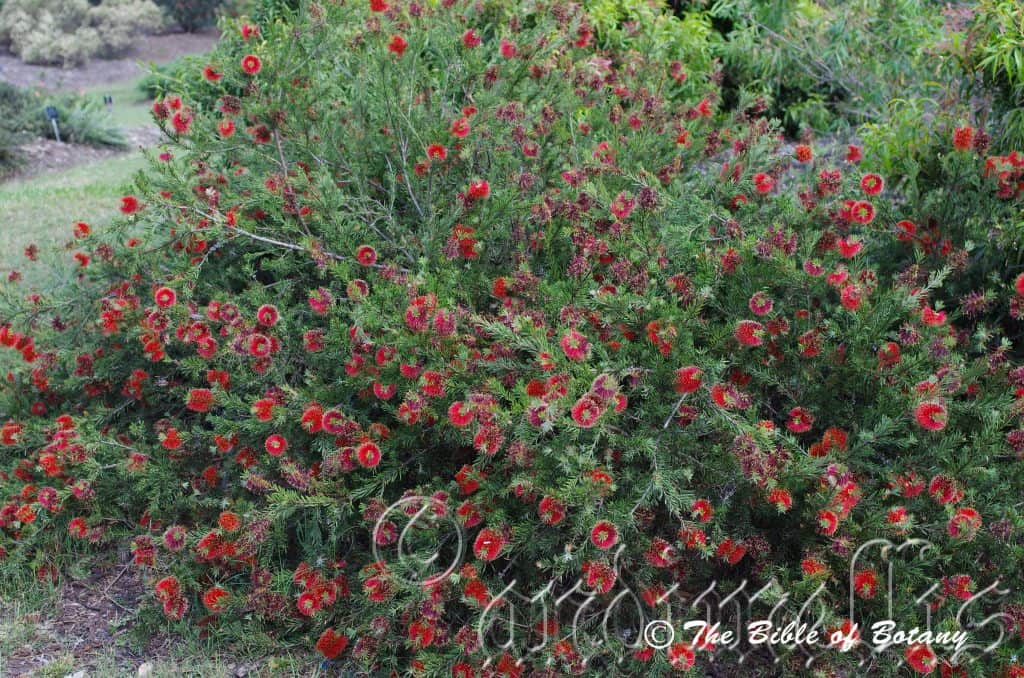
Mount Cootha Botanical Gardens NSW

Author’s Garden the Pinnacles NSW
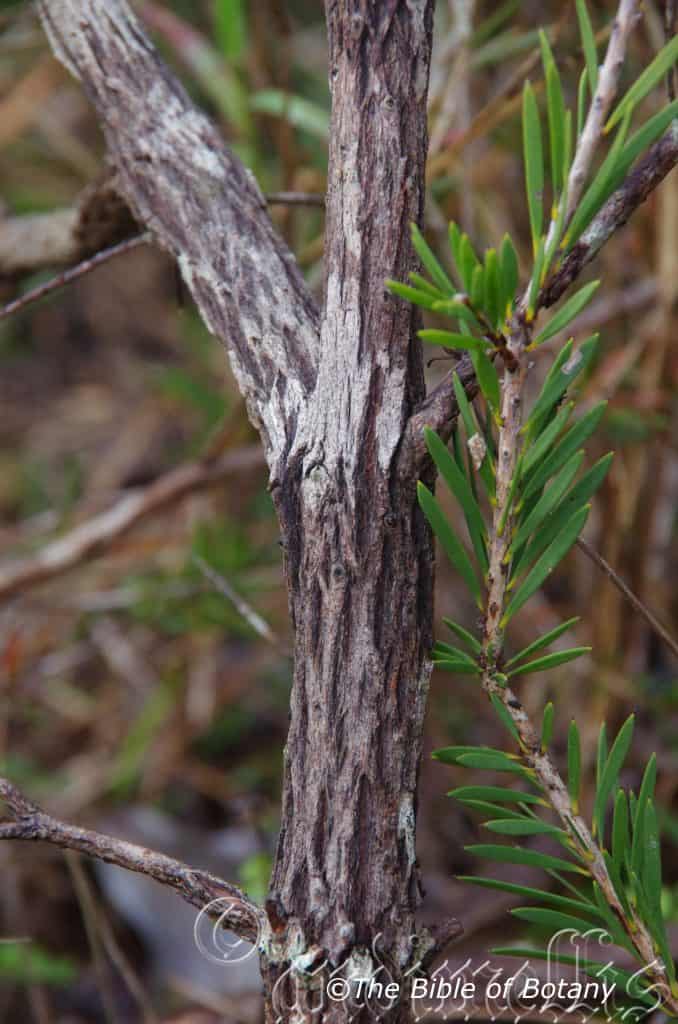
Author’s Garden the Pinnacles NSW
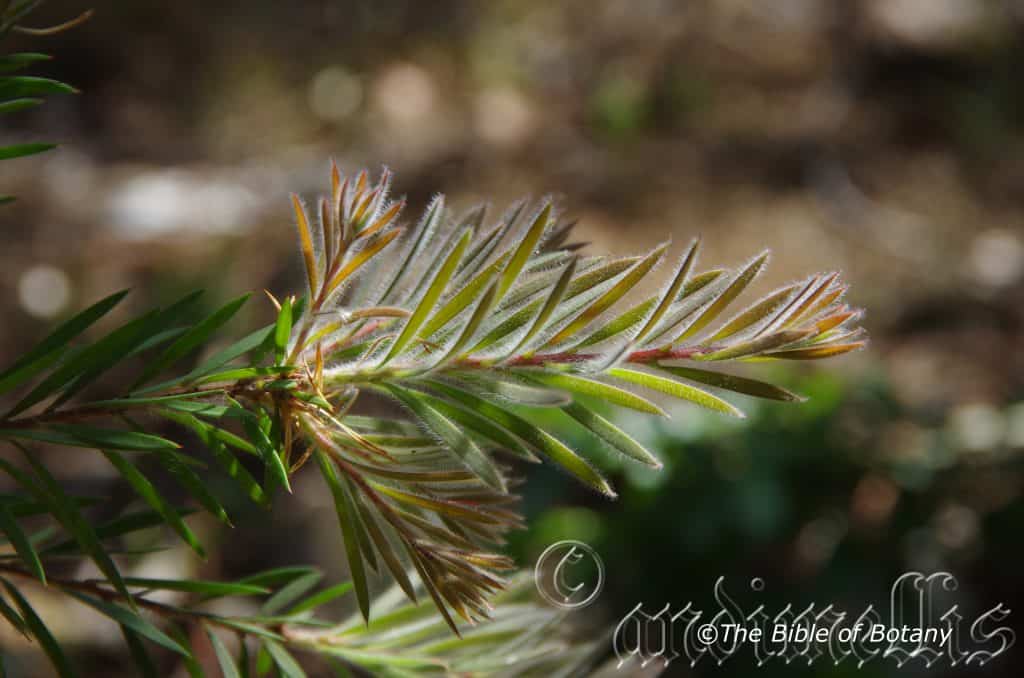
Author’s Garden the Pinnacles NSW
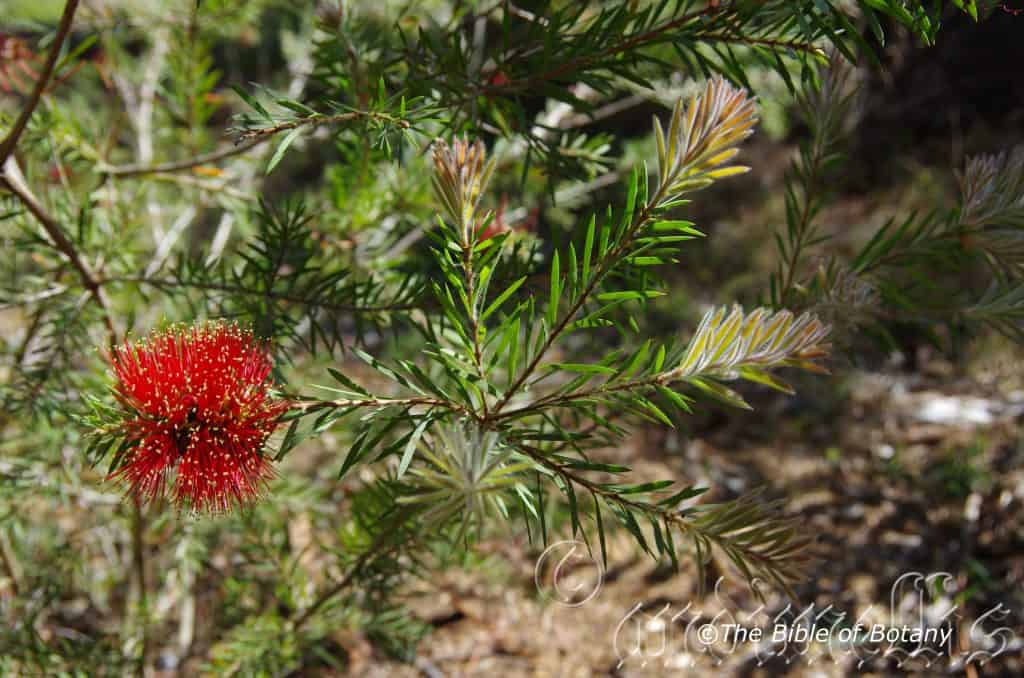
Author’s Garden the Pinnacles NSW
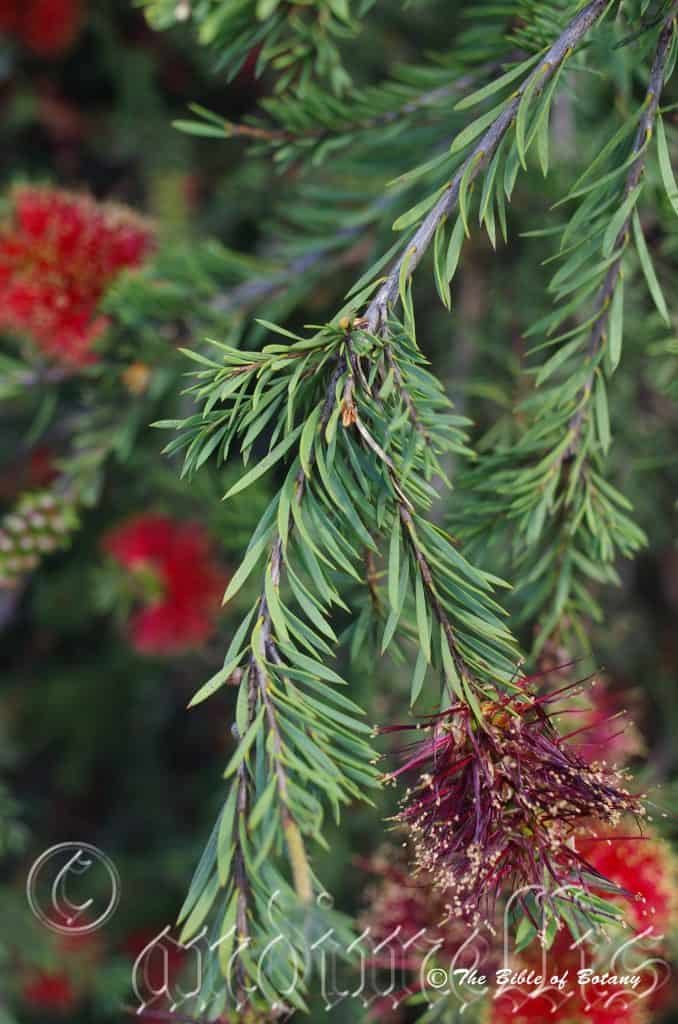
Author’s Garden the Pinnacles NSW

Mount Cootha Botanical Gardens Qld.
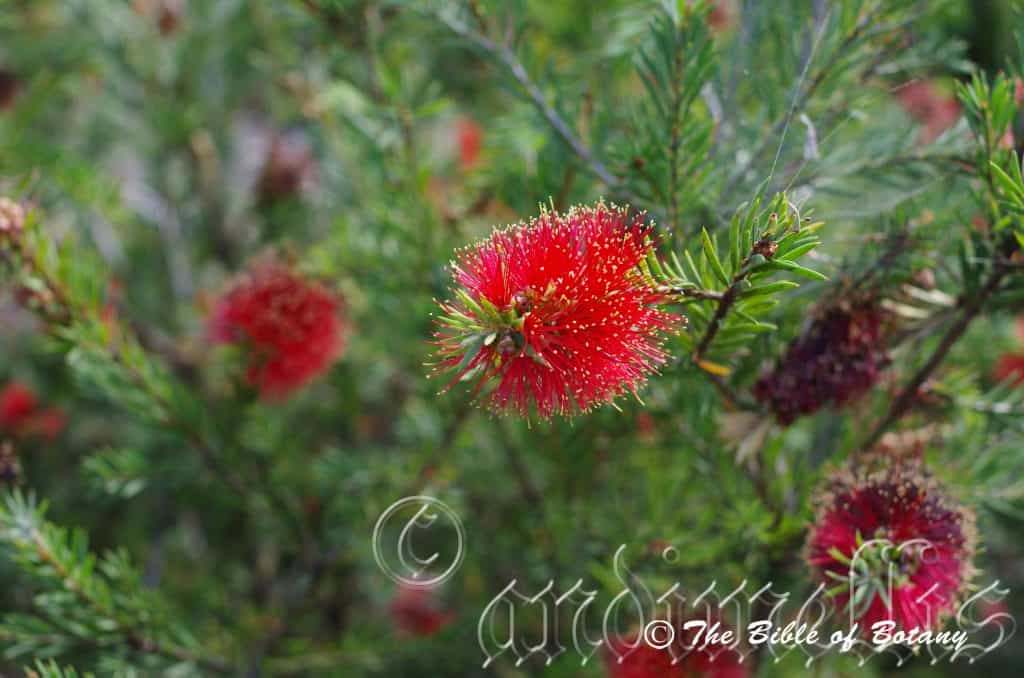
Mount Cootha Botanical Gardens Qld.
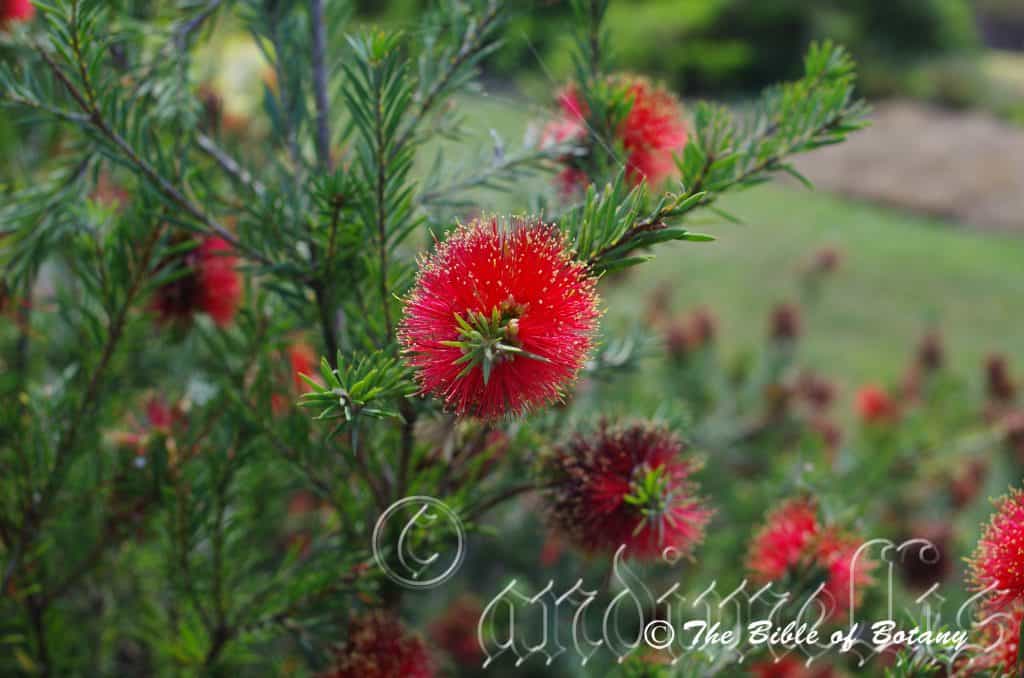
Mount Cootha Botanical Gardens Qld.
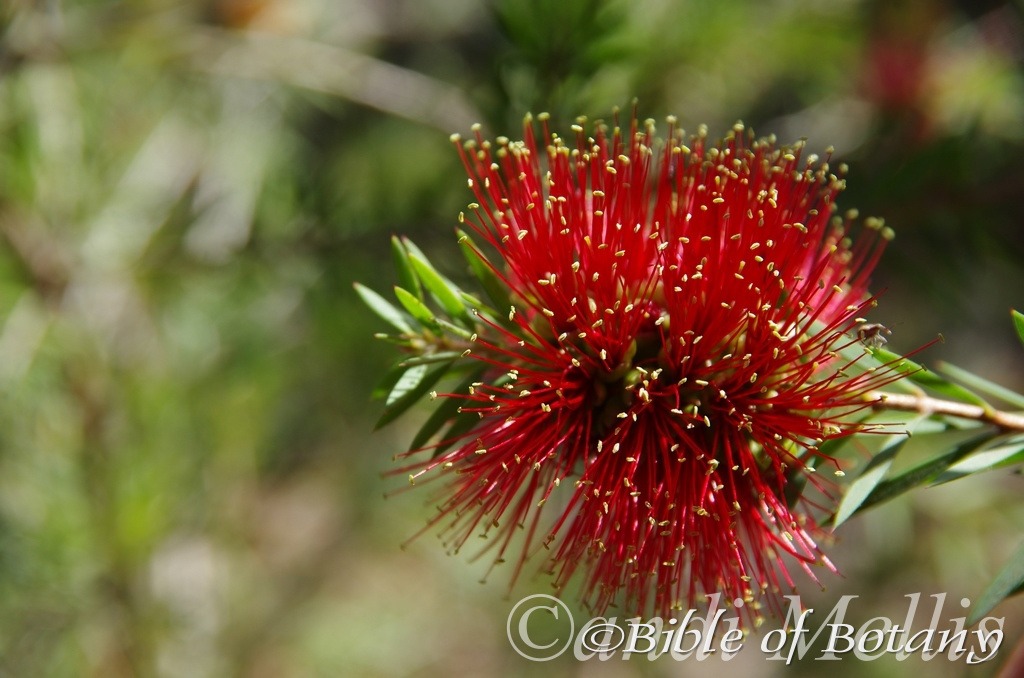
Author’s Garden The Pinnacles NSW

Mount Cootha Botanical Gardens Qld.
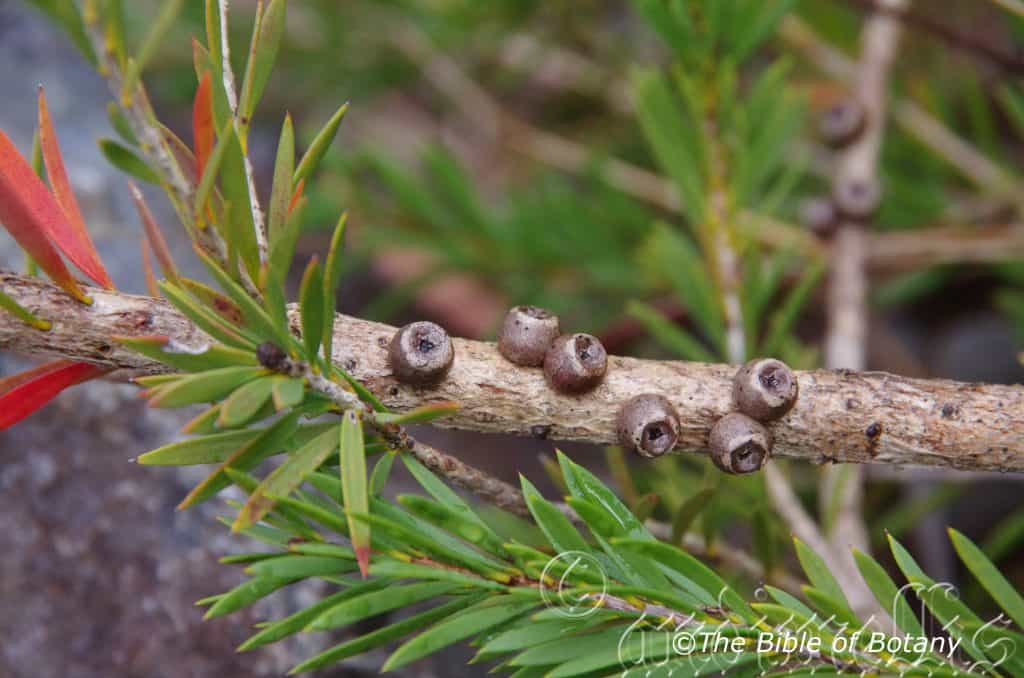
Author’s Garden The Pinnacles NSW
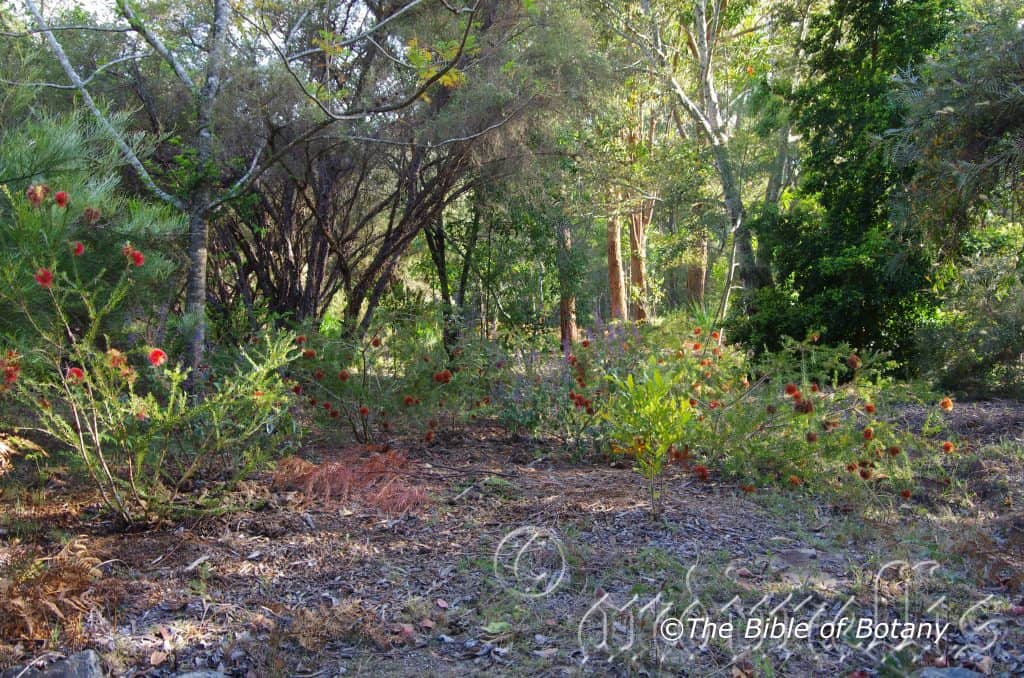
Author’s Garden The Pinnacles NSW
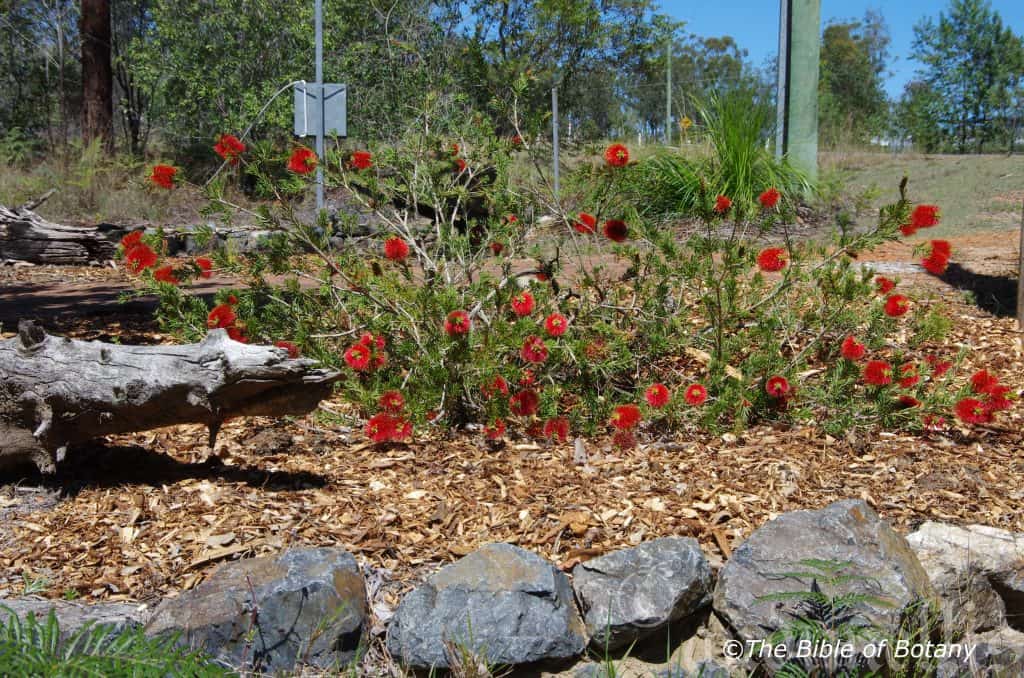
Author’s Garden The Pinnacles NSW
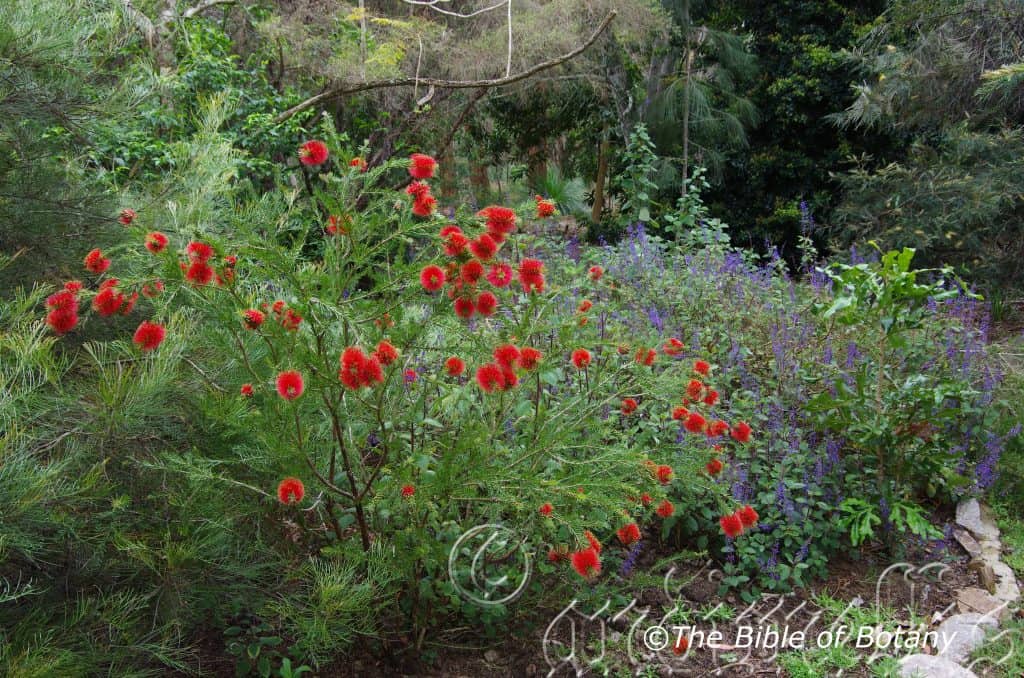
Author’s Garden The Pinnacles NSW
Melaleuca pearsonii
Classification:
Division: Magnoliophyta
Class: Magnoliopsida
Superorder: Rosane
Order: Myrtales
Family: Myrtaceae
Subfamily: Myrtoideae
Tribe: Melaleuceae
Genus: From Melas, which is Ancient Greek for black and Leukos, which is Ancient Greek for white. It refers to plants, which usually have white papery barks that are often charred by fire thus the bark is black and white. (Presently sill widely known as Callistemon pearsonii)
Specie: Is named in honour of William Henry Pearson; 1849-1923, who was an English herpaticologist (studied liverworts).
Sub species:
Common Name: Blackdown Tablelands Bottle Brush.
Distribution:
Melaleuca pearsonii is found in a restricted area on the Blackdown Tablelands National Park west of Rockhampton.
https://avh.ala.org.au/occurrences/search?taxa=Melaleuca+pearsonii#tab_mapView
Habitat Aspect Climate:
Melaleuca pearsonii prefers full sun. It grows in the gorges within the Blackdown Tablelands National Park. The altitude ranges from 350 meter ASL to 650 meters ASL.
The temperatures range from 4 degrees in August to 38 degrees in January.
The rainfalls range from lows of 400mm to an average of 800mm.
Soil Requirements:
Melaleuca pearsonii prefers well drained sandy sandy loams to light fatty clays. The soils are usually derived from decomposed sandstone. The soils pH. ranges from 5pH to 6pH. It does not tolerate waterlogged soils. Non saline soils to moderately saline soils are tolerated.
Height & Spread:
Wild Plants: 1 meter to 2 meters by 1 meter to 1.5 meters.
Characteristics:
Melaleuca pearsonii‘s stems are grey or grey-brown, hard and corky. The branchlets are pale grey-green, while the new shoots are pink to pink-green and covered in white pilose hairs.
Melaleuca pearsonii‘s alternate linear to narrow lanceolate leaves are crowded along the stems and measure 22mm to 33mm in length by 2.5mm to 3.5mm in width. The base is tapering while the apex is acute with a pungent tip. The concolourous laminas are pale grass-green, dull and covered in white caduceus, pilose hairs. Immature leaves are pale pink, dull and densely covered in white pilose hairs. The mid vein is not visible from either lamina. The margins are entire, flat and slightly thickened. The petiole measures 0.5mm to 1mm in length.
The inflorescence of Melaleuca pearsonii is a single spike born from the terminal shoots or short lateral shoots. They grow out before the buds open. The rachis is densely covered in white pilose hairs and measures 25mm to 30mm long. The flowers are born singularly with in each bract. There are 36 to 45 individual flowers on a spike. They measure 15mm to 25mm in diameter. The 5 ovate petals are pale green and measure 2mm to 2.5mm in length by 2mm to 2.5mm in width.
The deep scarlet red stamens are the most prominent part of the flowers. The 30 to 45 stamens are free and form a ring around the hypanthia. The filaments measure 17mm to 20mm in length. The anthers are yellow and measure 0.6mm to 0.8mm in length.
The long, slender, red style measures 18mm to 21mm in length, while the stigma divides into 4 locules. The base of the style is surrounded by the nectaries. The flowers appear from late October to early March but may have some flowers in most months of the year when the seasons are favourable.
Melaleuca pearsonii‘s fruit is a small woody cupular capsule. The capsules measure 3mm to 5mm long by 3mm when ripe. The capsules contain mainly chaff with a few viable seeds. The calyx lobes are persistent on the capsules.
Wildlife:
Melaleuca pearsonii supports many native bees, native flies, native beetles and butterflies when in flower.
It also supports small honeyeaters which are bold enough to feed on or close to the ground or ledges.
Cultivation:
Melaleuca pearsonii makes an excellent dense foliage ground cover in small and medium size gardens. It is suitable on all sandy and sandy clays to medium clays soil types. It is most suitable for small, medium and large gardens close to the coast in temperate, sub tropical, tropical or semi-arid gardens. As a garden subject it will grow from 100m to 300mm in height by 1.5 meters to 2 meters in diameter. It is cold tolerant to temperatures at least as low as minus 2 degrees once established. It is very fast growing especially with a good fertilizing program and with a little moisture.
This is one of the most beautiful ground cover plants in Australia especially if you love the old Callistemon species or Melaleuca species. The foliage is dense and a fresh bright green, coupled with a long flowering season and hardiness should place them at the top of the home gardeners list of plants.
It is most suitable for use around sunny swimming pools, courtyards, besides pathways, sunny rockeries, along sandy clay banks or along drive ways or adjacent to natural bush gardens. Mass plantings of 5 or more plants even in small areas; really do the plants justification especially when it is in flower. Medium fish or frog ponds will benefit from this Melaleuca.
If shrubs are required, try using some of the finer leaf Leptospermums adjacent to them which have white or pink flowers. The different coloured and shaped foliages, flowers and growth habits add great interest and the contrasts make for a great display.
Six or more planted back from a bend will become a very strong focal point when in flower. They gain a lot of attention whether you are coming or going because of the fresh clean look of the foliage even in the driest of times. They can be regularly tip pruned if a smaller ground cover is required. They respond well to pruning recovering quickly and often increasing the number of flowers in the following season. Plants that were accidently mown over at the Pinnacles recovered very quickly and gave an exceptional flowering the following season.
Place it in the fore ground with other large leaf ground covers and very small shrubs. To the rear, use large leaf taller plants. Plants with white, white, pale pink or pale purple flowers can be used in both the mid ground and background. This will lead your eyes directly to the red flowers directly in front of them. Ensure that it is not over crowded or will become smothered in the future. I have mass planted a single Melaleuca pearsonii along one side of my driveway below widely spaced Cupaniopsis anacharioides and Leptospermum trnervium, with a mass planting of 5 further back; over a small rill, mingled with Coleus blakei which I believe look really great together.
Propagation:
Seeds: Melaleuca pearsonii seeds can be sown directly into a seed raising mix. Cover the seeds with 1mm to 2mm of fine weed free mulch. Place the tray in a warm sunny position and keep moist. When the seedlings are 15mm to 20mm tall, prick them out and plant them into 20mm native tubes using a good organic mix.
When the seedlings are 70mm to 90mm tall, prick them out and plant them into 50mm native tubes using a good organic mix or plant them out into their permanent positions.
Once the seedlings reach 150mm to 200mm in height they can be planted out into their permanent position.
Cuttings: Cuttings must be used if flowering in the following season are required.
Use 100mm to 150mm long half ripened material when growing from cuttings from the present season[‘s growth. Take them in warmer months of the year. Remove half the leaves from the bottom section being careful not to tear the bark.
1 Prepare the cutting mix by adding one third sharp clean river sand, one third peat and one third perlite. These ingredients are sterilize,
2 Select good material from non diseased plants,
3 Select semi green stems for cuttings. Look for a stem with two or three nodes,
4 Place the cutting on a flat, hard surface, and make a clean cut down one side of the cutting at the base for 10mm with a sharp sterile knife or razor blade. – This scarification of the node will increase the chances of roots emerging from this spot. Now remove all but one or two the leaves, leaving the apex leaves in tact. If the leaves are very large in proportion to the stem, cut off the apical halves.
5 Fill a saucer with water, and place a little medium strength rooting hormone into another container like a milk bottle top. Dip the node end of the cutting into the water and then into the rooting hormone. Tap off any excess hormone,
6 Use a small dipple stick or old pencil to poke a hole into the soilless potting mix. Ensure the hole is slightly larger than the stem diameter and be careful not to wipe the rooting hormone off the cuttings base, place the cuttings in a pattern ensuring the cuttings are not touching each other,
7 I like to place the pots in Plastic bags to help maintain temperature and moisture. Place in a semi shaded place like under 50mm shade cloth.
8 When the cuttings have struck, open the bag to allow air circulation for a few days to a week,
9 Once hardened off remove the cuttings from the bag and allow to further hardening for a few more days,
10 Transplant into a good potting mix to grow on.
Fertilize using seaweed, fish emulsion or organic chicken pellets soaked in water on an alternate basis. Fertilize every two months until the plants are established then twice annually in early September or March to maintain health, vitality and better flowering.
Further Comments from Readers:
Hi reader, it seems you use The Bible of Botany a lot. That’s great as we have great pleasure in bringing it to you! It’s a little awkward for us to ask, but our first aim is to purchase land approximately 1,600 hectares to link several parcels of N.P. into one at The Pinnacles NSW Australia, but we need your help. We’re not salespeople. We’re amateur botanists who have dedicated over 30 years to saving the environment in a practical way. We depend on donations to reach our goal. If you donate just $5, the price of your coffee this Sunday, We can help to keep the planet alive in a real way and continue to bring you regular updates and features on Australian plants all in one Botanical Bible. Any support is greatly appreciated. Thank you.
In the spirit of reconciliation we acknowledge the Bundjalung, Gumbaynggirr and Yaegl and all aboriginal nations throughout Australia and their connections to land, sea and community. We pay our respect to their Elders past, present and future for the pleasures we have gained.
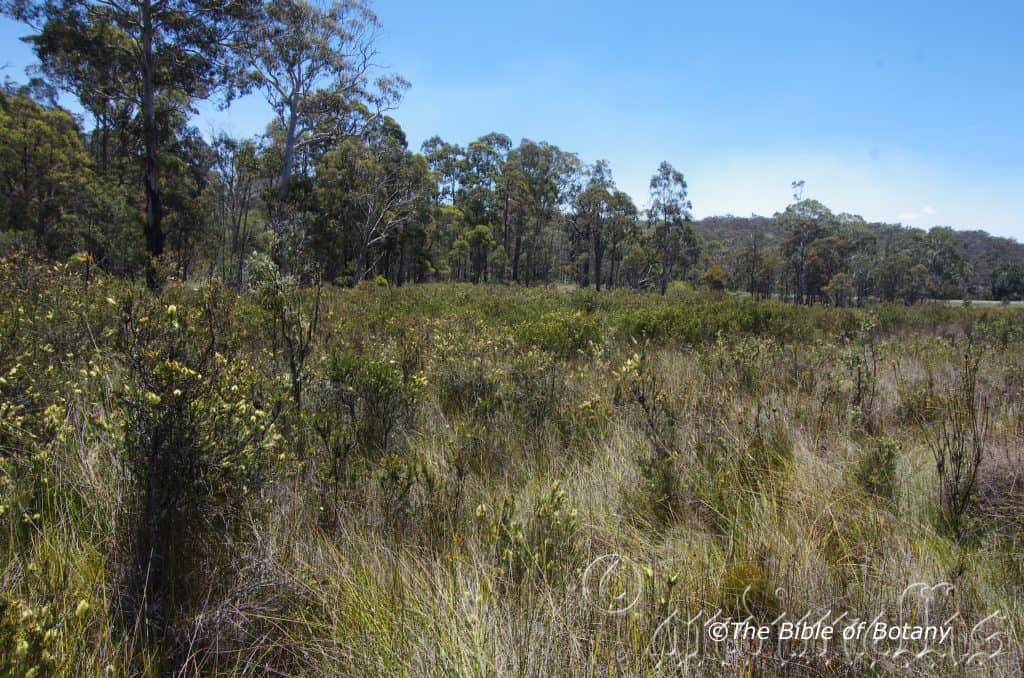
Ebor NSW
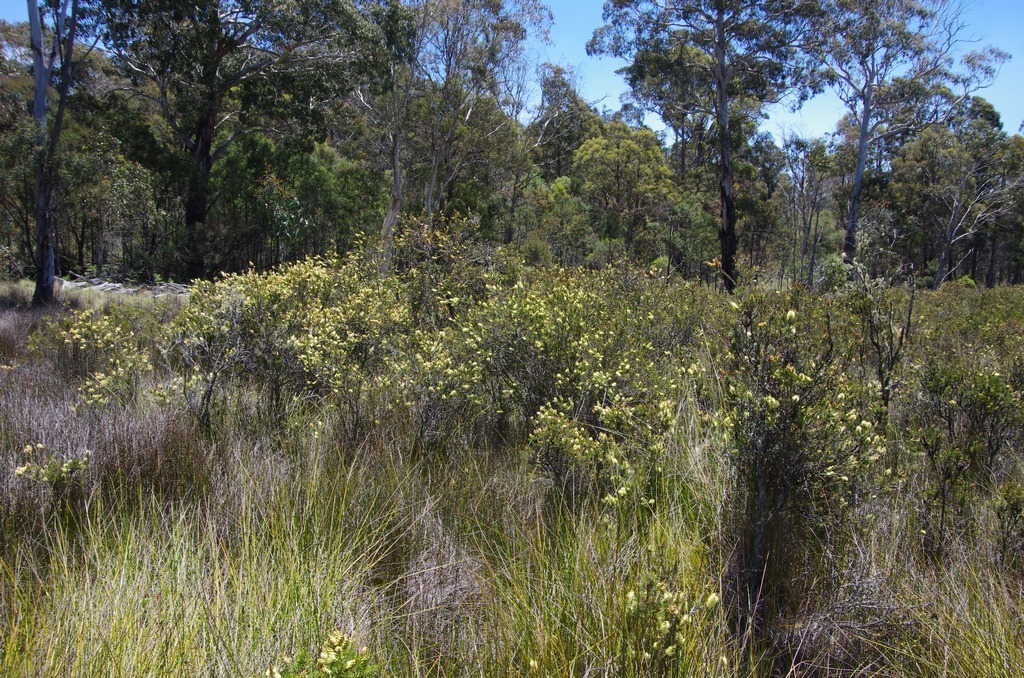
Ebor NSW
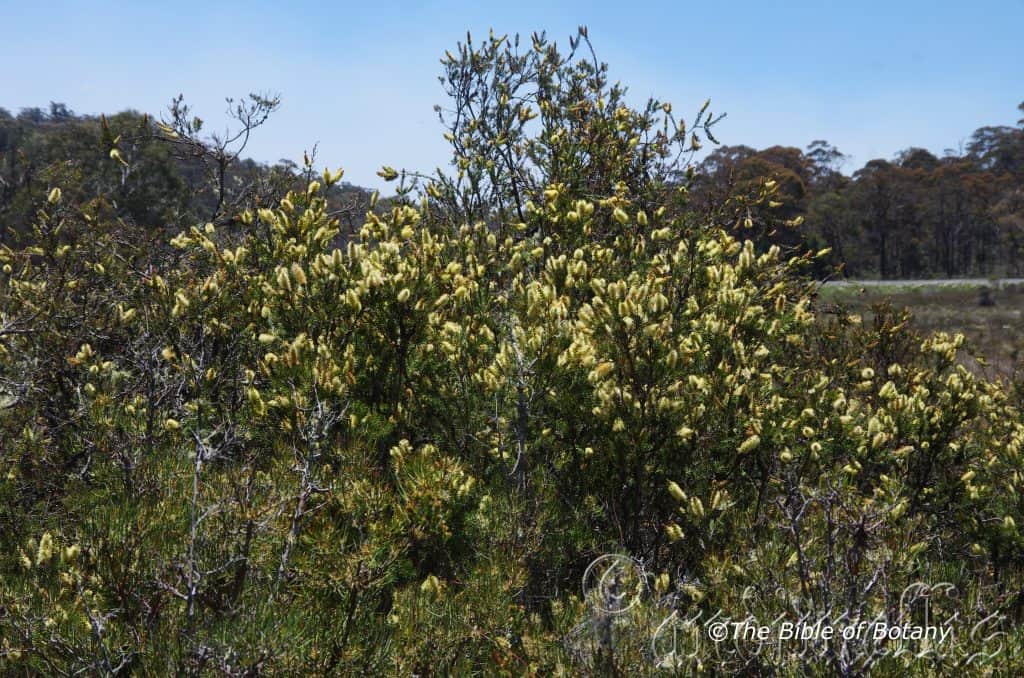
Ebor NSW

Ebor NSW
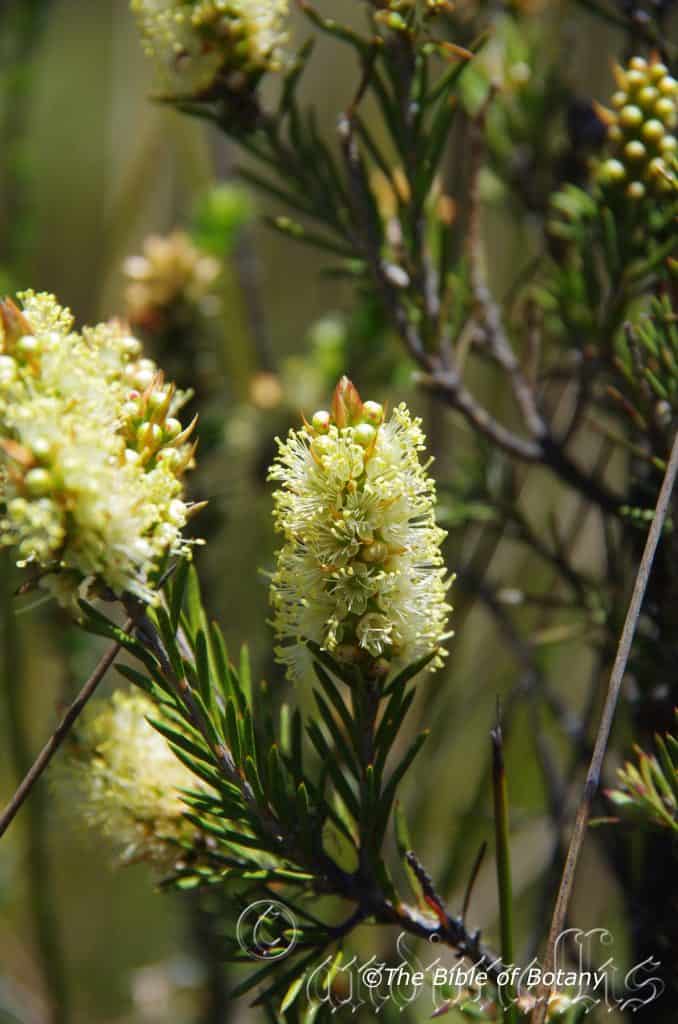
Ebor NSW
Melaleuca pityloides
Classification:
Division: Magnoliophyta
Class: Magnoliopsida
Superorder: Rosane
Order: Myrtales
Family: Myrtaceae
Subfamily: Myrtoideae
Tribe: Melaleuceae
Genus: From Melas, which is Ancient Greek for black and Leukos, which is Ancient Greek for white. It refers to plants, which usually have white papery barks that are often charred by fire thus the bark is black and white. (Presently sill widely known as Callistemon pityoides)
Specie: From Pitys, which is Ancient Greek for a pine tree and Oides/ Eidos, which is Ancient Greek for alike, similar to or resembles. It refers to plants, which resemble a pine tree. Here it refers to the compact shape of a near prostrate or erect form similar to a pine tree when not in flower.
Sub species:
Common Name: Alpine Bottlebrush.
Distribution:
Melaleuca pityloides is found south from Stanthorpe in far south east Queensland to Mount Baw Baw in eastern Victoria.
There is an isolated population in the Coominglah State Forest near Monto in central eastern Queensland.
https://avh.ala.org.au/occurrences/search?taxa=Melaleuca+pityloides#tab_mapView
Habitat Aspect Climate:
Melaleuca pityloides prefers full sun. It grows in alpine wallums, shallow depressions and can form thickets at the exclusion of all competition. The altitude ranges from 700 meter ASL to 1950 meters ASL.
The temperatures range from minus 8 degrees in August to 38 degrees in January.
The rainfalls range from lows of 400mm to an average of 800mm however this is not as important as the terraine which is normally that of wallums or shallow depressions.
Soil Requirements:
Melaleuca pityloides prefers well drained sandy loams to light fatty clays. The soils are usually derived from decomposed granites. The soils pH. ranges from 5pH to 6pH. It tolerates prolonged seasonal waterlogged soils. Non saline soils to slightly saline soils are tolerated.
Height & Spread:
Wild Plants: 2 metres to 3 metres by 1m to 1.5m.
Characteristics:
Melaleuca pityloides has stems are deep grey to deep grey-brown, hard and somewhat corky. The juvenile shoots are silvery grey and sparsely covered in short, fine, white pubescent hairs.
Melaleuca pityloides has thick, decussate, linear leaves and measure 12mm to 22mm in length by 0.75mm to 2mm in width. The yellow, glabrous, terete petiole measures 2mm to 3.5mm in length. The base tapers to the petiole, while the apex is pungently acute. The concolourous laminas are deep green, dull and covered in relatively larges oil glands mostly on the lower lamina. The immature leaves are pale pink, dull and sparsely covered in short, fine, white pubescent hairs. The mid vein is inconspicuous on the upper lamin and is faintly visible on the basal half of the lower lamina. The margins are entire and flat.
The inflorescence of Melaleuca pityloides are aborn as a single spike up to heads of 5 pikes born from the terminal shoots. They grow out before the buds fully open. The rachis is sparsely covered in white pubescent hairs and measures 30mm to 70mm in length by 15mm to 22mm in diameter. The individual flowers are born singularly with in each bract. The long lanceolate bracts are a soft pinkish-red and measure 6mm to 7mm in length. The cupular calyx has 5 shallow obtuse lobes. The 5 relatively large, ovarte lemon petals measure 2.8mm to 3mm in length by 2.4mm to 2.6mm in width.
The golden yellow, pale lemon or cream stamens are sometimes tinged with green or pink and are the most conspicuous part of the flowers. The 25 stamens are free and form a ring around the pastel green hypanthia. The filaments measure 6mm to 9mm in length. The pale yellow, cylindrical anthers are basifixed and measure 0.9mm to 1mm in length.
The long, slender, pale lemon style measures 7mm to 10mm in length, while the stigma is blunt. The base of the style is surrounded by the nectaries. The flowers appear from late October to early December.
Melaleuca pityloides has fruits, which are small woody cupular capsule. The capsules measure 3mm to 5mm long by 3mm to 4mm in diameter when ripe. The capsules contain mainly chaff with a few viable seeds.
Wildlife:
Melaleuca pityloides supports many native bees, native flies, native beetles and butterflies when in flower.
It also supports many small honeyeaters including the Brown Honeyeater, Lichmera indistincta and the Eastern Spinebill, Acanthorhynchus tenuirostris and small insect eating birds like the eastern Silver Eye, Zosterops lateralis.
Cultivation:
Melaleuca pityloides makes an excellent dense foliage small erect shrub in small and medium size gardens. It is suitable on all wet or drainage problem sandy and sandy clays to medium clays soil types. It is most suitable for small, medium and large gardens in alpine and subalpine locations. It would be worthwhile trying it outside the alpine areas and temperate Australia closer to the coast in areas. As a garden subject it will grow from 0.8meters to 3metres in height by 1.5 meters to 2 meters in diameter. It is cold tolerant to temperatures at least as low as minus 8 degrees once established. It is slow growing even with a good fertilizing program and with a little moisture.
This is one of the most beautiful compact Melaleucas in Australia especially if you love the old Callistemon species or Melaleuca species. It is particularly attractive as the soft pinkish-red, lanceolate bracts which surround the developing buds first appear before the buds break out. It also has one of the largest petals in the genus being a delightful pale lemon.
It is most suitable for use around large sunny swimming pools, courtyards, besides pathways, sunny rockeries, along sandy clay banks or along drive ways or adjacent to natural bush gardens. Mass plantings of 5 or more plants even in small areas; really do the plants justification especially when it is in flower. Medium fish or frog ponds will benefit from Melaleuca pityloides being planted in the background
If a smaller shrub is required, tip pruning is all that is required.
Six or more planted back from a bend will become a very strong focal point when in flower. It will gain a lot of attention whether you are coming or going because of the fresh clean look of the foliage even in the driest of times.
This is one of the few native plants that can be used in a very formal manner along driveways, fences either side of a BBQue, entrances or as stand alone features.
Place it in the fore ground with other large leafy ground covers like Scaevola aemula or Goodenea grandiflora both of which will be in good flower at the same time.
Propagation:
Seeds: Melaleuca pityloides seeds can be readily propagated from seed extracted from the oldest capsules collected that are at least one year old. Sow the seeds directly into a seed raising mix. Cover the seeds with 1mm to 2mm of fine weed free mulch. Place the tray in a warm sunny position and keep moist.
When the seedlings are 15mm to 20mm tall, prick them out and plant them into 20mm native tubes using a good organic mix.
When the seedlings are 70mm to 90mm tall, prick them out and plant them into 50mm native tubes using a good organic mix or plant them out into their permanent positions.
Once the seedlings reach 150mm to 200mm in height they can be planted out into their permanent position.
Cuttings: Cuttings must be used if flowering in the following season are required.
Use 80mm to 120mm long half ripened material when growing from cuttings from the present season’s growth. Take them in warmer months of the year. Remove half the leaves from the bottom section being careful not to tear the bark.
1 Prepare the cutting mix by adding one third sharp clean river sand, one third peat and one third perlite. These ingredients are sterilize,
2 Select good material from non diseased plants,
3 Select semi green stems for cuttings. Look for a stem with two or three nodes,
4 Place the cutting on a flat, hard surface, and make a clean cut down one side of the cutting at the base for 10mm with a sharp sterile knife or razor blade. – This scarification of the node will increase the chances of roots emerging from this spot. Now remove all but one or two the leaves, leaving the apex leaves in tact. If the leaves are very large in proportion to the stem, cut off the apical halves.
5 Fill a saucer with water, and place a little medium strength rooting hormone into another container like a milk bottle top. Dip the node end of the cutting into the water and then into the rooting hormone. Tap off any excess hormone,
6 Use a small dipple stick or old pencil to poke a hole into the soilless potting mix. Ensure the hole is slightly larger than the stem diameter and be careful not to wipe the rooting hormone off the cuttings base, place the cuttings in a pattern ensuring the cuttings are not touching each other,
7 I like to place the pots in Plastic bags to help maintain temperature and moisture. Place in a semi shaded place like under 50mm shade cloth.
8 When the cuttings have struck, open the bag to allow air circulation for a few days to a week,
9 Once hardened off remove the cuttings from the bag and allow to further hardening for a few more days,
10 Transplant into a good potting mix to grow on.
Fertilize using seaweed, fish emulsion or organic chicken pellets soaked in water on an alternate basis. Fertilize every two months until the plants are established then twice annually in early September or March to maintain health, vitality and better flowering.
Further Comments from Readers:
Hi reader, it seems you use The Bible of Botany a lot. That’s great as we have great pleasure in bringing it to you! It’s a little awkward for us to ask, but our first aim is to purchase land approximately 1,600 hectares to link several parcels of N.P. into one at The Pinnacles NSW Australia, but we need your help. We’re not salespeople. We’re amateur botanists who have dedicated over 30 years to saving the environment in a practical way. We depend on donations to reach our goal. If you donate just $5, the price of your coffee this Sunday, We can help to keep the planet alive in a real way and continue to bring you regular updates and features on Australian plants all in one Botanical Bible. Any support is greatly appreciated. Thank you.
In the spirit of reconciliation we acknowledge the Bundjalung, Gumbaynggirr and Yaegl and all aboriginal nations throughout Australia and their connections to land, sea and community. We pay our respect to their Elders past, present and future for the pleasures we have gained.

Castle Hill Townsville Qld.
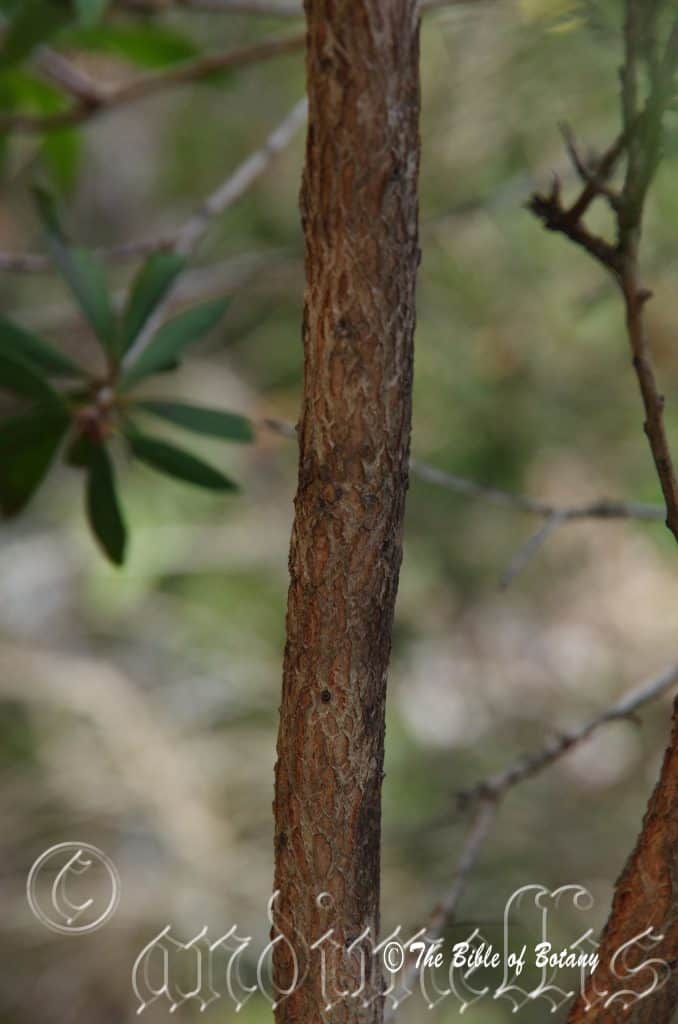
Castle Hill Townsville Qld.
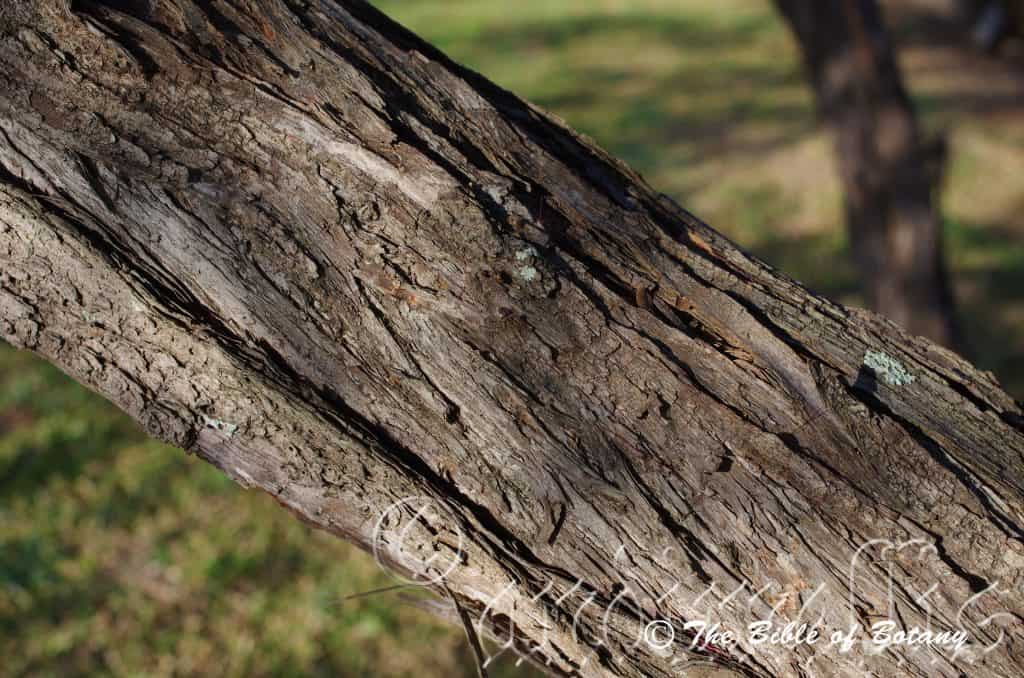
Everton Park Qld.

Everton Park Qld.

Everton Park Qld.
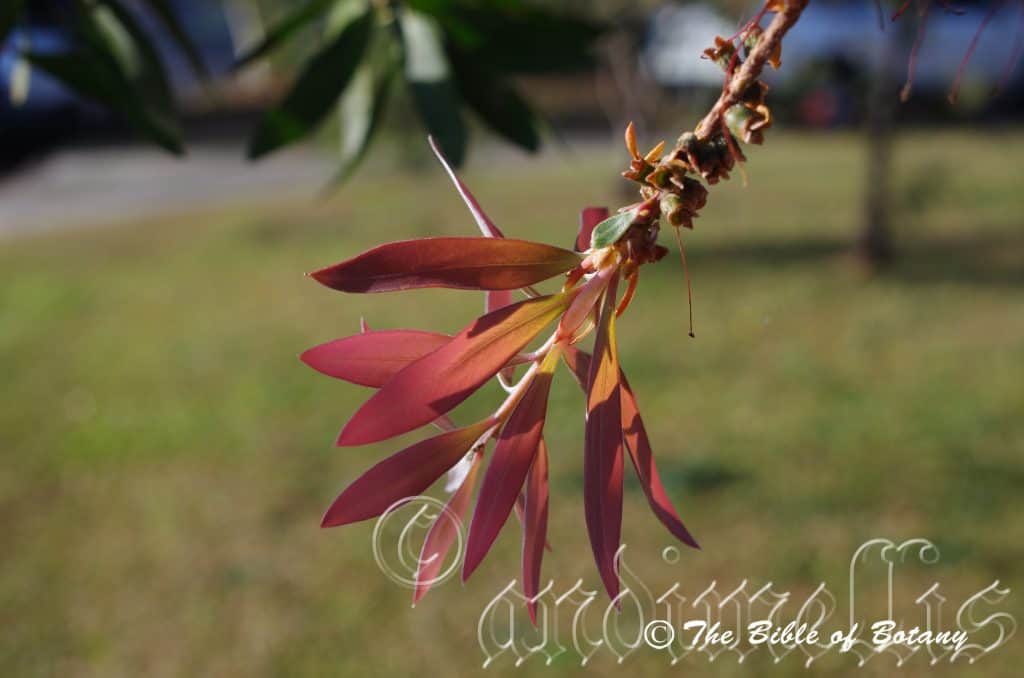
Everton Park Qld.
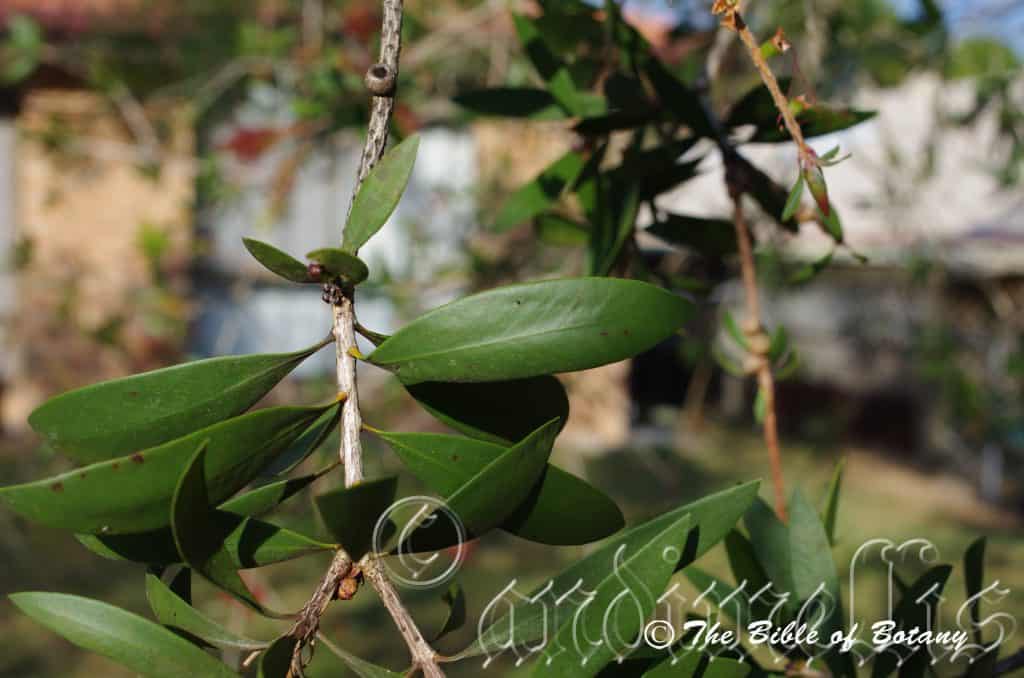
Everton Park Qld.

Paluma National Park Qld.
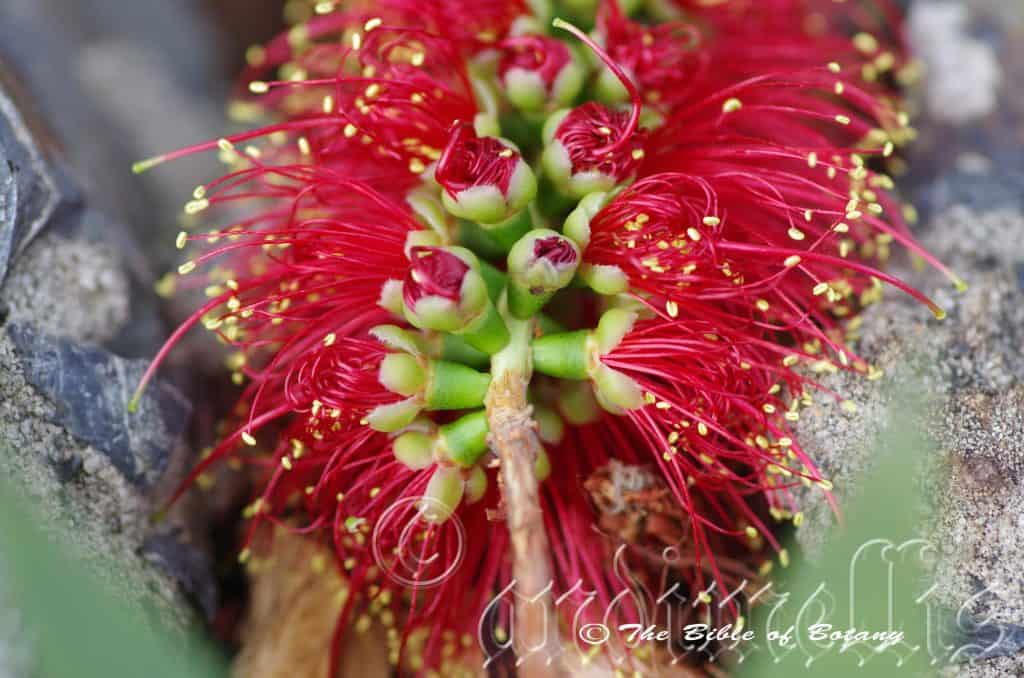
Paluma National Park Qld.
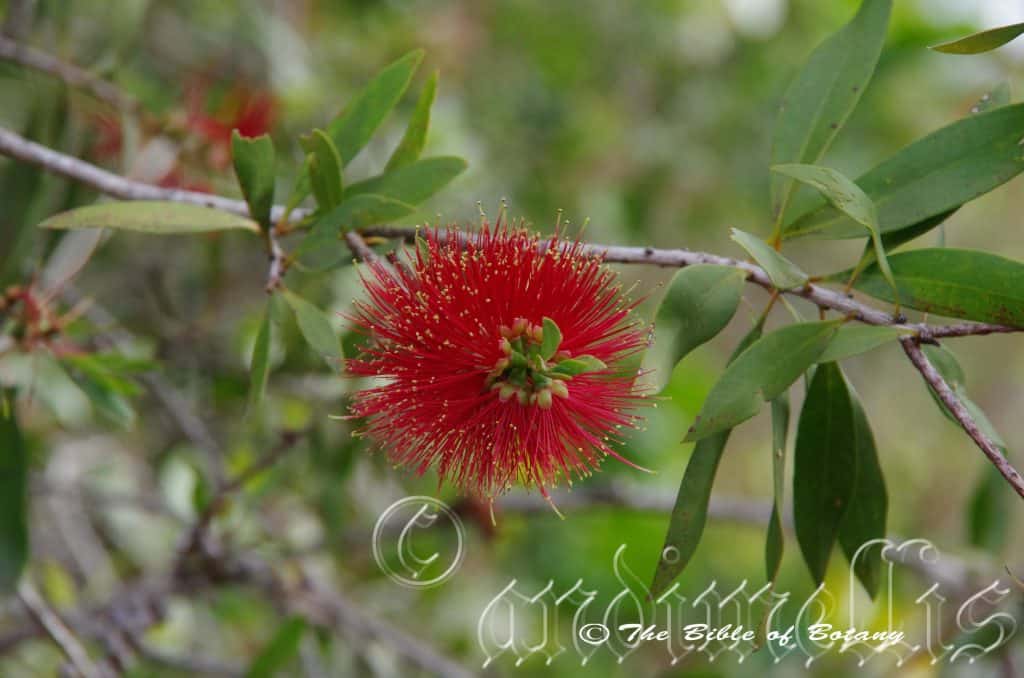
Castle Hill Townsville Qld.

Everton Park Qld.
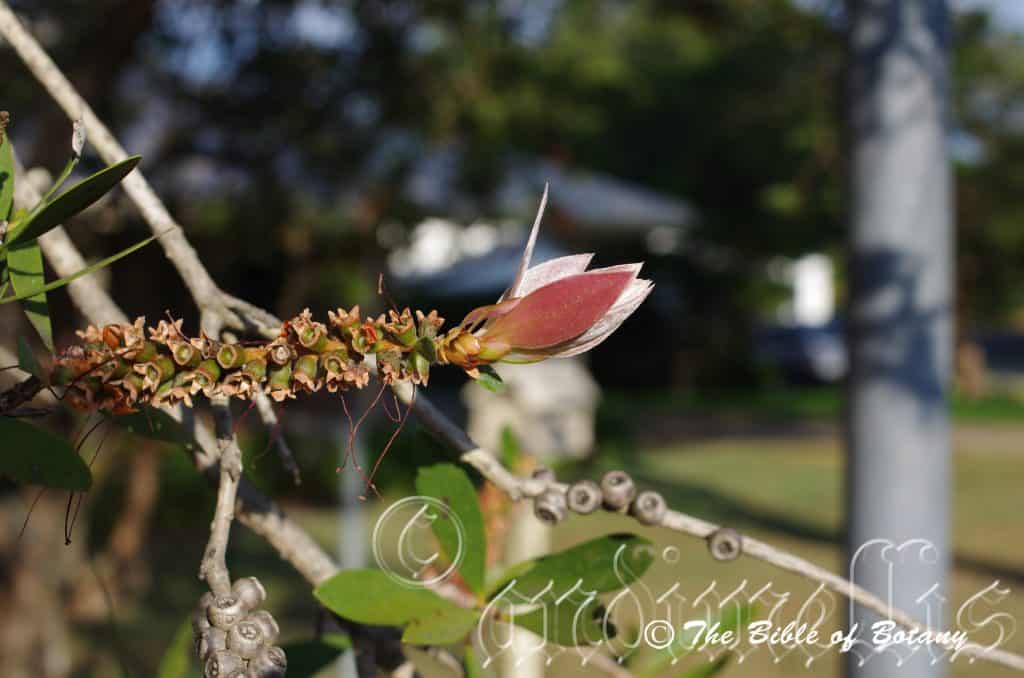
Everton Park Qld.
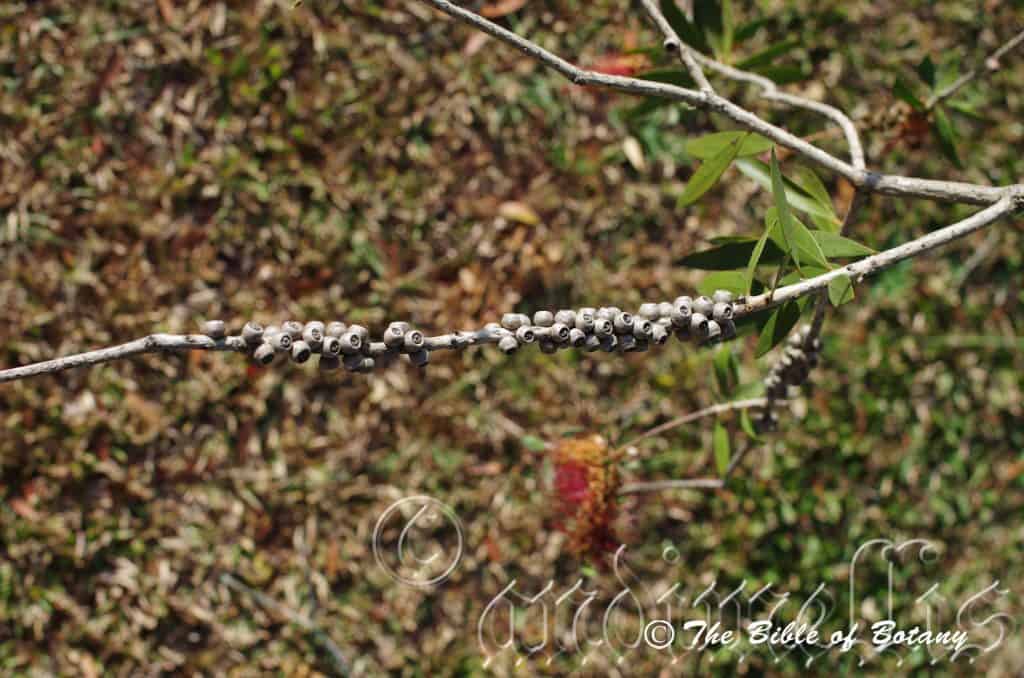
Everton Park Qld.

Everton Park Qld.

Everton Park Qld.
Melaleuca polandii
Classification:
Division: Eudicots
Division: rosids
Class:
Order: Myrtales
Family: Myrtaceae
Subfamily: Myrtoideae
Tribe: Melaleuceae
Genus: From Melas, which is Ancient Greek for black and Leukos, which is Ancient Greek for white. It refers to plants, which usually have white papery barks that are often charred by fire thus the bark is black and white. (Presently still widely known as Callistemon polandii.)
Specie: Is named in honour of Wilhelm Georg Friedrich Poland; 1866-1955, who was a Bulvarian missionary at Wujal who discovered the first plant at the missionary.
Sub species:
Common Name: Yellow Tipped Bottle Brush.
Distribution:
Melaleuca polandii is found south from Cooktown in several disjunct populations to Rundle National Park west of Curtis Island on the central Queensland coast near Gladstone.
https://avh.ala.org.au/occurrences/search?taxa=Melaleuca+polandii#tab_mapView
Habitat Aspect Climate:
Melaleuca polandii prefers full sun to light dappled shade. It grows on steep mountain slopes and cliffs. The altitude ranges from 50 meter ASL to 450 meters ASL.
The temperatures range from 6 degree in August to 36 degrees in January.
The rainfalls range from lows of 900mm to an average of 3000mm.
Soil Requirements:
Melaleuca polandii prefers well drained light clays to medium clays. The soils are usually derived from decomposed granite or brown basalts. The soils pH. ranges from 5pH to 6pH. It does not tolerate waterlogged soils. Non saline soils to moderately saline soils are tolerated.
Height & Spread:
Wild Plants: 1.5m to 4.5m by 2m to 4m.
Characteristics:
Melaleuca polandii grows as a small open shrub with grey, rough course and hard-corky stems. The bark forms longitudinal furrows as the trunk expands but is still only slightly spongy to touch. The branches are grey to pale grey. The branchlets are pale creamy fawn to creamy grey and tightly wrapped around the stems, while the newest shoots are deep pink and are densely covered in short white sericeous hairs. The branchlets are upright or have an arching to weeping habit and the plants vary considerably from having an open straggly habit to open upright and densely foliaged.
Melaleuca polandii‘s alternate leaves are narrowly ovate to lanceolate and measure 60mm to 100mm in length by 8mm to 15mm in width. The pale red-brown petioles turn golden yellow-brown when mature and are covered in caduceous, white appressed sericeous hairs and measure 2mm to 4.5mm in length. The basses are cuneate to attenuate while the apexes are broad acute to mucronate point. The coriaceous concolourous laminas are deep green to sea-green, dull, glabrous and rigid. The mid vein is slightly prominent on the upper lamina and is distinctly visible on the lower lamina. The margins are entire, flat and slightly thickened. The leaves are not aromatic when crushed.
Immature leaves are deep pink, dull and are densely covered in white to pale grey sericeous hairs.
The inflorescence of Melaleuca polandii is a single spike born from the terminals. The flower terminal shoots grow out as the last of the individual flowers on the spike begin to bloom. The rachis is densely covered in white sericeous to tomentose hairs and measures 80mm to 120mm long by 50mm to 60mm in diameter. The flowers are born singularly with in each bract. There are 45 to 68 individual flowers along the spike. They measure 10mm to 12mm in diameter. The 5 cupuliform, green petals measure 2mm to 3mm in length by 2.5mm to 3.5mm in width. It is persistent on the fully developed flowers even after anthesis. The tips grow out prior to anthesis.
The bright, deep, scarlet red stamens are the most prominent part of the flowers. The 28 to 32 stamens are free and form a ring around the hypanthia. The filaments measure 27mm to 32mm in length. The bright yellow, dorsifixed, oblong anthers measure 1mm to 1.5mm in length.
The long, slender, scarlet red to deep red styles measure 26mm to 35mm in length, while the ovary divides into 5 locules. The base of the style is surrounded by the nectaries. The arrowroot to honey scented flowers, appear over a long period of time from early late July to late September however odd flowers may appear in most of the warmer months of the year.
Melaleuca polandii fruit is a globose, glabrous capsule. The capsules measure 7mm to 9mm in length by 5mm to 6mm in diameter. The enclosed orifice measures 4mm to 5mm in diameter. The woody capsule is dull brown and glabrous. The capsules may contain hundreds of seeds and chaff. The seeds are brown, measure 0.6 to 0.8mm in length and look swollen compared to the chaff. The calyx lobes are persistent on the hypanthia.
Wildlife:
Melaleuca polandii supports myriads of native bees, native flies, native beetles and butterflies when in flower.
It also supports small honeyeaters which include the Brown honeyeater, Lichmera indistincta the Yellow Face Honeyeater, Lichenostomus chrysops the New Holland Honeyeater, Phylidonyris novaehollandiae the Red Headed honeyeater, Myzomela erythrocephala the leatherhead Philemon corniculatus the Eastern spinebill, Acanthorhynchus tenuirostris, which all scurry over the flowers. With the smaller birds seeking protection from the bushy foliage.
Cultivation:
Melaleuca polandii makes an excellent small to medium bushy or open shrub or small tree for native gardens. It is suitable on all types of sandy loams to medium clays and are most suitable for small, medium and large gardens close to the coast in temperate, sub tropical or tropical gardens or semi-arid gardens. As garden subjects they will grow from 2 meters to 2.5 meters in height by 1.5 meter to 2.5 meters in diameter when grown in the open. It is cold tolerant to temperatures to minus 4 degrees once established but are very slow to establish themselves. It is quite drought tolerant provided deep watering is maintained once or twice a year. This is another Melaleuca that is worth while trying on the west coast which originates from the east.
It is very fast growing especially with a good fertilizing program and with a little moisture growing more than 1 meter a year. They will drop some of their foliage when stressed during drought times but recover as soon as good rains fall. To avoid this, give the plants a double dose of our recommended fertilizer following flowering and a good deep soaking in mid-winter if good winter rains are not forthcoming. This will prevent further loss and hold them over for several more months.
Place 3 or 4 of them off center of a large rockery with other large or finer leaf ground covers and very small shrubs in the front. Plants with white or yellow flowers can be used in both the fore ground and background. This will lead your eyes directly to the array of red flowers and the beautiful deep pink to salmon coloured leaves on the new growth and the pendulous branchlets for a longer period.
When mass or group planting Melaleuca polandii, use curves and irregular patterns so they can be viewed from different angles around the garden. The flowers are really highlighted against the deep green leathery leaves so place them where it is highly visible.
Using rocks and small boulders can make the pool or any water feature appear like an oasis. The leaves and flowers can make a great start for the larger heath setting. Use large old stumps and roots so that they look larger. Select an area of ground and let your hair down and be imaginative.
A single tree in a sunny court yard with judicially placed rocks can be very impressive. It will break up hard lines yet its trunk will also give a hard line of irregularity while the weeping branches and green leaves soften the surroundings. When it flowers the whole courtyard is transformed into something very special.
The gnarled forms would make ideal plants for Bonsai collectors and can with stand fairly harsh conditions.
Propagation:
Seeds: Melaleuca polandii seeds can be sown directly into a seed raising mix. Do not cover the seeds. Press them into the mix. Place the tray in a warm sunny position. When the seedlings are 15mm to 20mm tall, prick them out and plant them into 20mm native tubes using a good organic mix.
When the seedlings are 70mm to 90mm tall, prick them out and plant them into 50mm native tubes using a good organic mix or plant them out into their permanent positions.
Once the seedlings reach 150mm to 200mm in height they can be planted out into their permanent position.
Fertilize using Seaweed, fish emulsion or a half strength solution of organic chicken pellets soaked in water on an alternate basis. Fertilize every few months.
Cuttings:
. Cuttings must be used if flowering in the following season are required.
Use 100mm to 150mm long half ripened material when growing from cuttings from the present season’s growth. Take them in warmer months of the year. Remove half the leaves from the bottom section being careful not to tear the bark.
1 Prepare the cutting mix by adding one third sharp clean river sand, one third peat and one third perlite. These ingredients are sterilize,
2 Select good material from non diseased plants,
3 Select semi green stems for cuttings. Look for a stem with two or three nodes,
4 Place the cutting on a flat, hard surface, and make a clean cut down one side of the cutting at the base for 10mm with a sharp sterile knife or razor blade. – This scarification of the node will increase the chances of roots emerging from this spot. Now remove all but one or two the leaves, leaving the apex leaves in tact. If the leaves are very large in proportion to the stem, cut off the apical halves.
5 Fill a saucer with water, and place a little medium strength rooting hormone into another container like a milk bottle top. Dip the node end of the cutting into the water and then into the rooting hormone. Tap off any excess hormone,
6 Use a small dipple stick or old pencil to poke a hole into the soilless potting mix. Ensure the hole is slightly larger than the stem diameter and be careful not to wipe the rooting hormone off the cuttings base, place the cuttings in a pattern ensuring the cuttings are not touching each other,
7 I like to place the pots in Plastic bags to help maintain temperature and moisture. Place in a semi shaded place like under 50mm shade cloth.
8 When the cuttings have struck, open the bag to allow air circulation for a few days to a week,
9 Once hardened off remove the cuttings from the bag and allow to further hardening for a few more days,
10 Transplant into a good potting mix to grow on.
Fertilize using seaweed, fish emulsion or organic chicken pellets soaked in water on an alternate basis. Fertilize every two months until the plants are established then twice annually in early September or March to maintain health, vitality and better flowering
Further Comments from Readers:
Hi reader, it seems you use The Bible of Botany a lot. That’s great as we have great pleasure in bringing it to you! It’s a little awkward for us to ask, but our first aim is to purchase land approximately 1,600 hectares to link several parcels of N.P. into one at The Pinnacles NSW Australia, but we need your help. We’re not salespeople. We’re amateur botanists who have dedicated over 30 years to saving the environment in a practical way. We depend on donations to reach our goal. If you donate just $5, the price of your coffee this Sunday, We can help to keep the planet alive in a real way and continue to bring you regular updates and features on Australian plants all in one Botanical Bible. Any support is greatly appreciated. Thank you.
In the spirit of reconciliation we acknowledge the Bundjalung, Gumbaynggirr and Yaegl and all aboriginal nations throughout Australia and their connections to land, sea and community. We pay our respect to their Elders past, present and future for the pleasures we have gained.
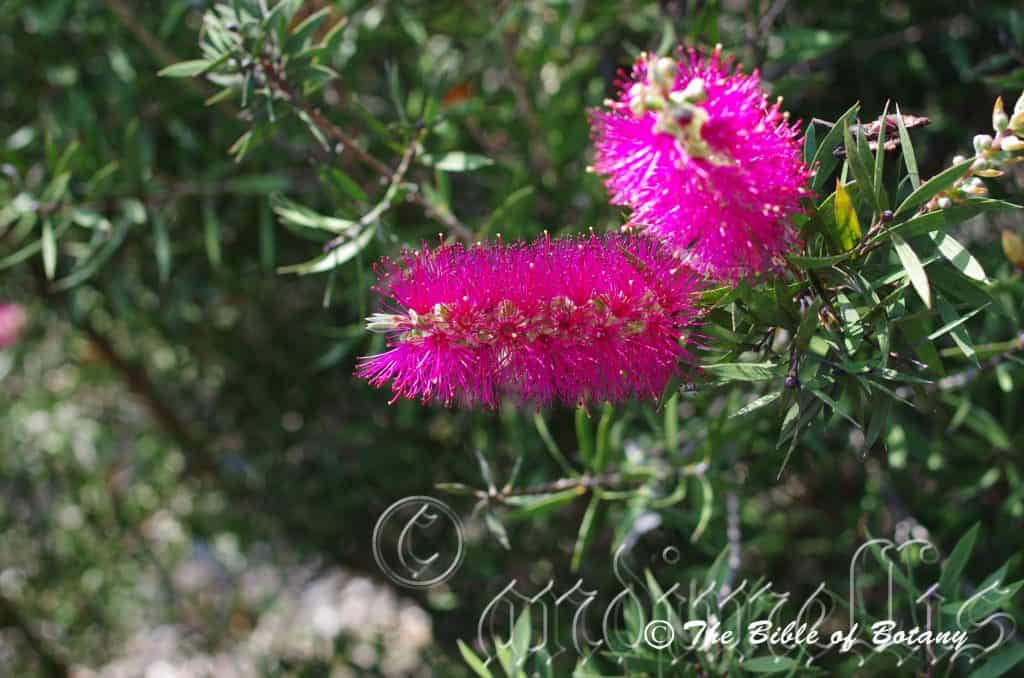
Mount Cootha Botanical Gardens Qld.
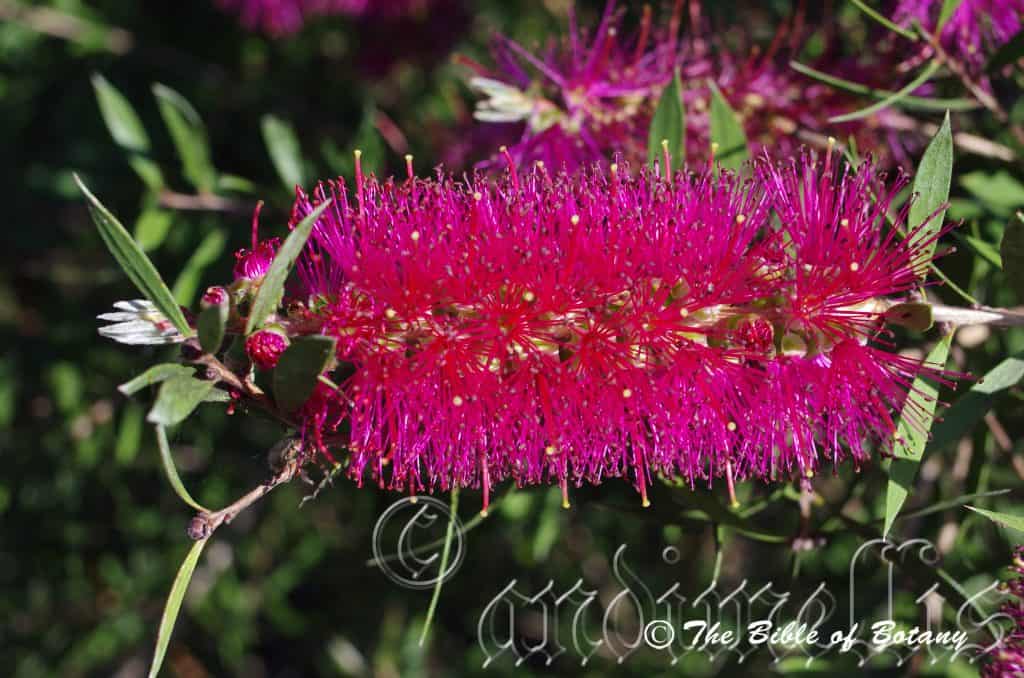
Mount Cootha Botanical Gardens Qld.
Melaleuca pungens
Classification:
Division: Eudicots
Division: rosids
Class:
Order: Myrtales
Family: Myrtaceae
Subfamily: Myrtoideae
Tribe: Melaleuceae
Genus: From Melas, which is Ancient Greek for black and Leukos, which is Ancient Greek for white. It refers to plants, which usually have white papery barks that are often charred by fire thus the bark is black and white.
Specie: From Pungens, which is Latin for pricking, puncturing or stinging. It refers to plants, which have leaves that have a sharp pungent apex.
Sub species: Melaleuca pungens var. pungens from Pungens, which is Latin for pricking, puncturing or stinging. It refers to plants, which have leaves that have a sharp pungent apex.
Melaleuca pungens var. obtusifolia from Obtusum, which is Latin for blunt, dull or nearly obtuse. It refers to organs or structures, which have a blunt, not quite obtuse or they are truncate. Here it refers to the leaf apexes.
Common Name: Yellow Tipped Bottle Brush.
Distribution:
Melaleuca pungens var. pungens is found in 4 disjunct populations south from North Kalgarin to the upper reaches of the Swan River in the south west corner of Western Australia.
Melaleuca pungens var. obtusifolia is found south and between Badgingarra, Mount Barker and the Fitzgerald River National Park in the south west corner of Western Australia.
https://avh.ala.org.au/occurrences/search?taxa=Melaleuca+pungens#tab_mapView
Habitat Aspect Climate:
Melaleuca pungens prefers full sun to light dappled shade. It grows on sandy plains, gravel, laterite and granite on hillsides and flats. The altitude ranges from 10 meter ASL to 500 meters ASL.
The temperatures range from minus 1 degrees in August to 42 degrees in January.
The rainfalls range from lows of 200mm to an average of 600mm.
Soil Requirements:
Melaleuca pungens prefers poorly drained course to fine sands to light clays. The soils are usually derived from decomposed sandstone, granite, screes alluvial deposits or accumulated sands. The soils pH. ranges from 5pH to 8pH. It tolerates seasonal waterlogged soils. Non saline soils to moderately saline soils are tolerated.
Height & Spread:
Wild Plants: 0.5m to 1m by 0.5m to 1m.
Characteristics:
Melaleuca pungens grows as a small open to bushy shrub with pale grey, hard-corky stems. The juvenile stems are erect and are moderately covered with fine, soft pubescent hairs.
Melaleuca pungens has sessile, spread in all directions, linear leaves that measure 10mm to 36mm in length by 1mm to 2mm in width. The bases taper to the stems while the acute apexes have a small, sharp, rigid tip making them exceptionally prickly. The coriaceous, concolourous laminas are deep green to deep blue-green, dull and glabrous. The mid vein and lateral veins are indistinguishable on both laminas. The margins are entire. The leaves are not aromatic when crushed.
Immature leaves are deep pink, dull and are sparsely covered in spft, white pubescent hairs.
The inflorescence of Melaleuca pungens is a single, bright yellow spike born from the terminals. The flower terminal shoots do not grow out before anthesis. The globular to cylindrical flowers is sparsely covered in soft, white pubescent hairs and measures 12mm to 18mm in length by 12mm to 15mm in diameter. The flowers are born singularly with in each bract. The 5 cupuliform, green petals measure 2mm to 3mm in length by 2.5mm to 3.5mm in width. It is persistent on the fully developed flowers even after anthesis. The tips grow out prior to anthesis.
The long, slender, deep yellow styles and stamens measure 8mm to 10mm in length. The base of the style is surrounded by the nectaries. The flowers appear in September and October
Melaleuca pungens has fruits that are globose, glabrous capsule. The capsules are fused together in clusters and measure 3mm to 4.5mm in length by 3mm to 4.5mm in diameter. The woody capsules are dull brown and glabrous.
Wildlife:
Melaleuca pungens wildlife is unknown to the author.
Cultivation:
Melaleuca pungens makes an excellent small bushy or open shrub or semi prostate shrub for native gardens. It is suitable on all types of sandy loams to light gravelly clays and is most suitable for small, medium and large gardens close to the coast in temperate, sub tropical or semi-arid gardens. As a garden subject it will grow from 0.5 meters to 0.75 meters in height by 1 meter to 1.5 meters in diameter when grown in the open. It is cold tolerant to temperatures to minus 4 degrees once established but are very slow to establish themselves. It is quite drought tolerant provided deep watering is maintained once or twice a year. This is another Melaleuca that is worth while trying closer to the coast in Western Australia.
It is very fast growing especially with a good fertilizing program and with a little moisture growing more than 1 meter a year.
Place 3 or 4 of them off center of a large rockery with other large or finer leaf ground covers and very small shrubs in the front. This will make the rocks appear larger than they actually are.
When mass or group planting Melaleuca pungens, use curves and irregular patterns so they can be viewed from different angles around the garden. The flowers are really highlighted against the deep green leathery leaves so place them where it is highly visible.
Using rocks and small boulders can make a pool or any water feature appear more natural ad larger when small clump plants are used. The leaves and flowers can make a great start for a heath setting. Use large old stumps and roots so that they look larger. Select an area of ground and let your hair down and be imaginative.
A single plant or a few scattered in a sunny court yard with judicially placed logs can be very impressive. It will break up hard lines yet its growth habit will soften the surroundings. When it flowers the whole courtyard is transformed into something very special.
The gnarled forms would make ideal plants for Bonsai collectors and can with stand fairly harsh conditions.
Propagation:
Seeds: Melaleuca pungens seeds can be sown directly into a seed raising mix. Do not cover the seeds. Press them into the mix. Place the tray in a warm sunny position. When the seedlings are 15mm to 20mm tall, prick them out and plant them into 20mm native tubes using a good organic mix.
When the seedlings are 70mm to 90mm tall, prick them out and plant them into 50mm native tubes using a good organic mix or plant them out into their permanent positions.
Once the seedlings reach 150mm to 200mm in height they can be planted out into their permanent position.
Fertilize using Seaweed, fish emulsion or a half strength solution of organic chicken pellets soaked in water on an alternate basis. Fertilize every few months.
Cuttings: Cuttings must be used if flowering in the following season are required.
Use 100mm to 150mm long half ripened material when growing from cuttings from the present season’s growth. Take them in warmer months of the year. Remove half the leaves from the bottom section being careful not to tear the bark.
1 Prepare the cutting mix by adding one third sharp clean river sand, one third peat and one third perlite. These ingredients are sterilize,
2 Select good material from non diseased plants,
3 Select semi green stems for cuttings. Look for a stem with two or three nodes,
4 Place the cutting on a flat, hard surface, and make a clean cut down one side of the cutting at the base for 10mm with a sharp sterile knife or razor blade. – This scarification of the node will increase the chances of roots emerging from this spot. Now remove all but one or two the leaves, leaving the apex leaves in tact. If the leaves are very large in proportion to the stem, cut off the apical halves.
5 Fill a saucer with water, and place a little medium strength rooting hormone into another container like a milk bottle top. Dip the node end of the cutting into the water and then into the rooting hormone. Tap off any excess hormone,
6 Use a small dipple stick or old pencil to poke a hole into the soilless potting mix. Ensure the hole is slightly larger than the stem diameter and be careful not to wipe the rooting hormone off the cuttings base, place the cuttings in a pattern ensuring the cuttings are not touching each other,
7 I like to place the pots in Plastic bags to help maintain temperature and moisture. Place in a semi shaded place like under 50mm shade cloth.
8 When the cuttings have struck, open the bag to allow air circulation for a few days to a week,
9 Once hardened off remove the cuttings from the bag and allow to further hardening for a few more days,
10 Transplant into a good potting mix to grow on.
Fertilize using seaweed, fish emulsion or organic chicken pellets soaked in water on an alternate basis. Fertilize every two months until the plants are established then twice annually in early September or March to maintain health, vitality and better flowering.
Further Comments from Readers:
Hi reader, it seems you use The Bible of Botany a lot. That’s great as we have great pleasure in bringing it to you! It’s a little awkward for us to ask, but our first aim is to purchase land approximately 1,600 hectares to link several parcels of N.P. into one at The Pinnacles NSW Australia, but we need your help. We’re not salespeople. We’re amateur botanists who have dedicated over 30 years to saving the environment in a practical way. We depend on donations to reach our goal. If you donate just $5, the price of your coffee this Sunday, We can help to keep the planet alive in a real way and continue to bring you regular updates and features on Australian plants all in one Botanical Bible. Any support is greatly appreciated. Thank you.
In the spirit of reconciliation we acknowledge the Bundjalung, Gumbaynggirr and Yaegl and all aboriginal nations throughout Australia and their connections to land, sea and community. We pay our respect to their Elders past, present and future for the pleasures we have gained.
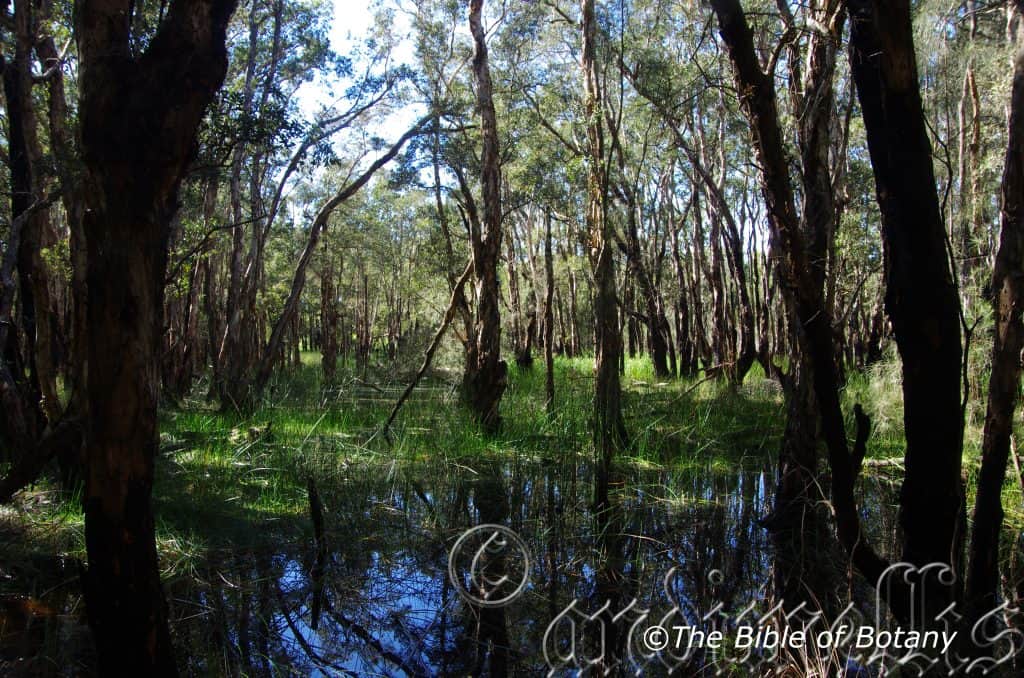
Goolawar National Park NSW
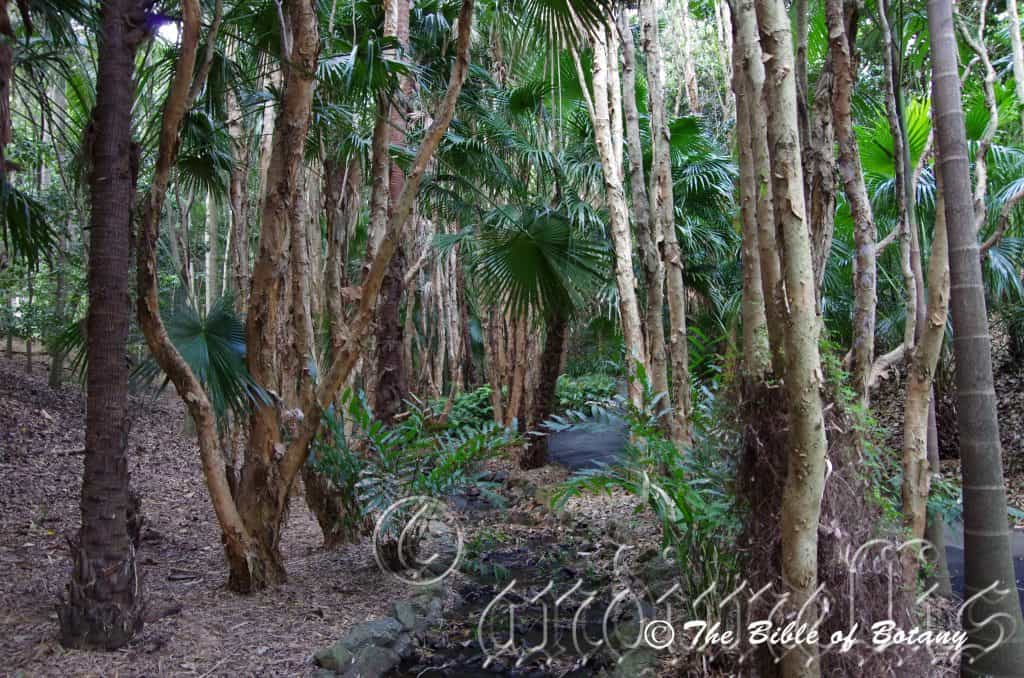
Mount Cootha Botanical Gardens Qld.
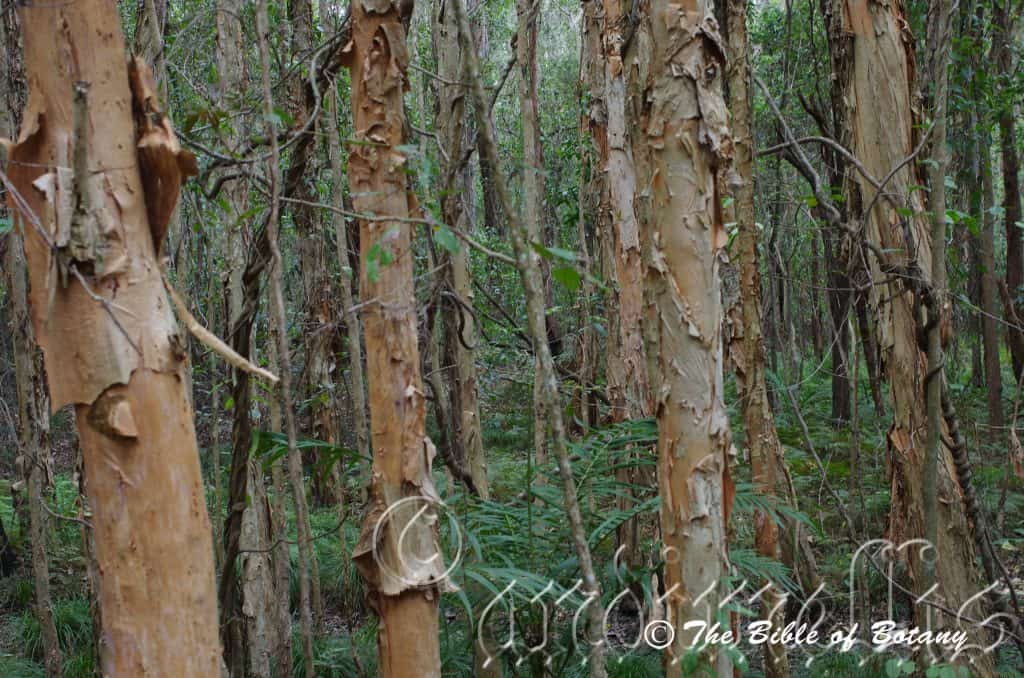
Toohey Forest Qld.
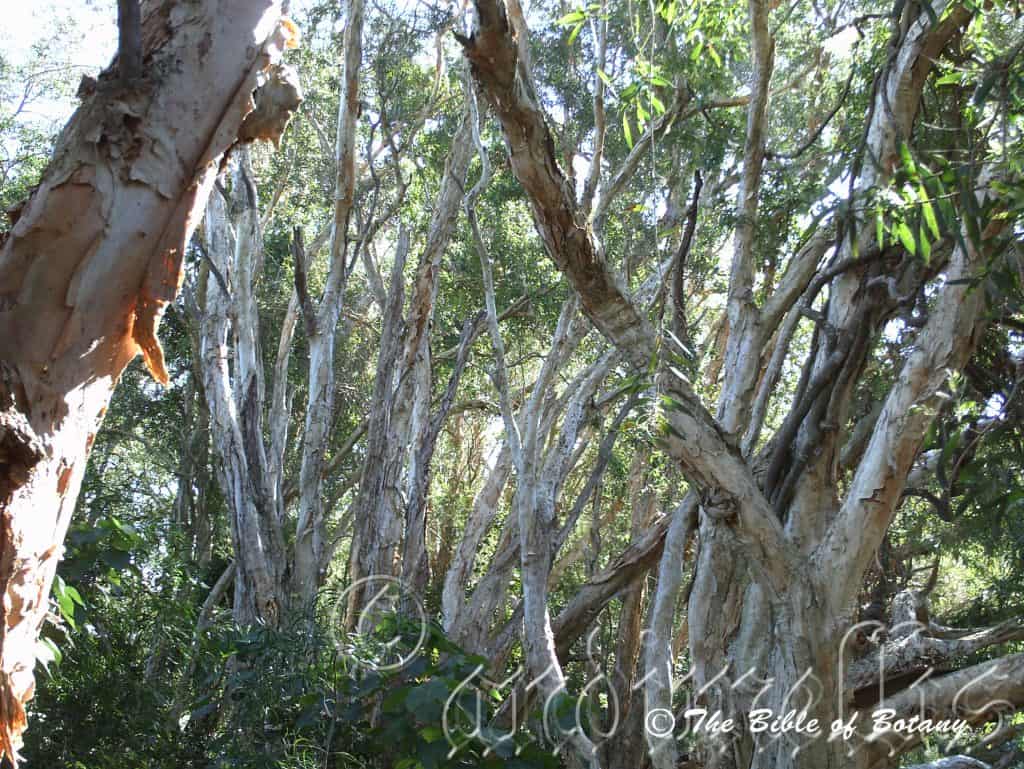
Wellington Point Wetlands Qld.
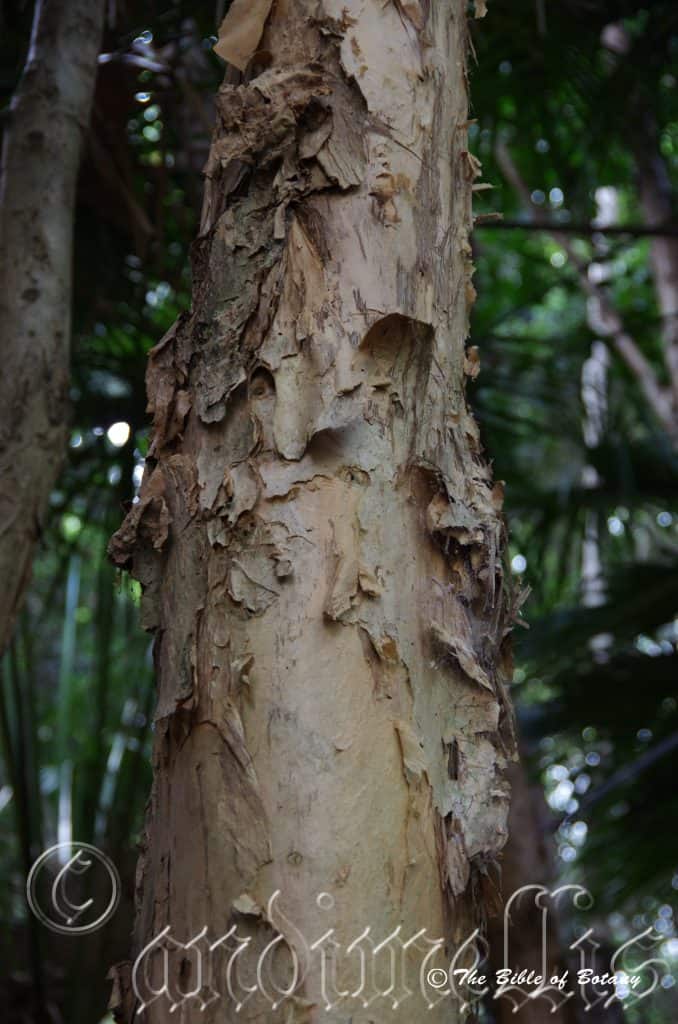
Mount Cootha Botanical Gardens Qld.
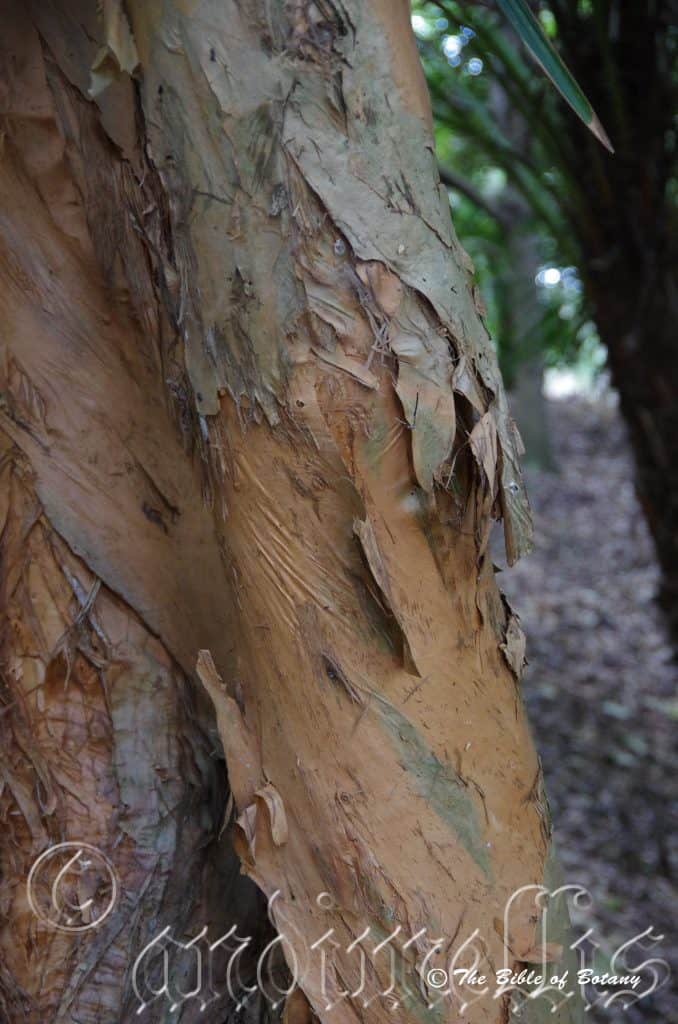
Mount Cootha Botanical Gardens Qld.
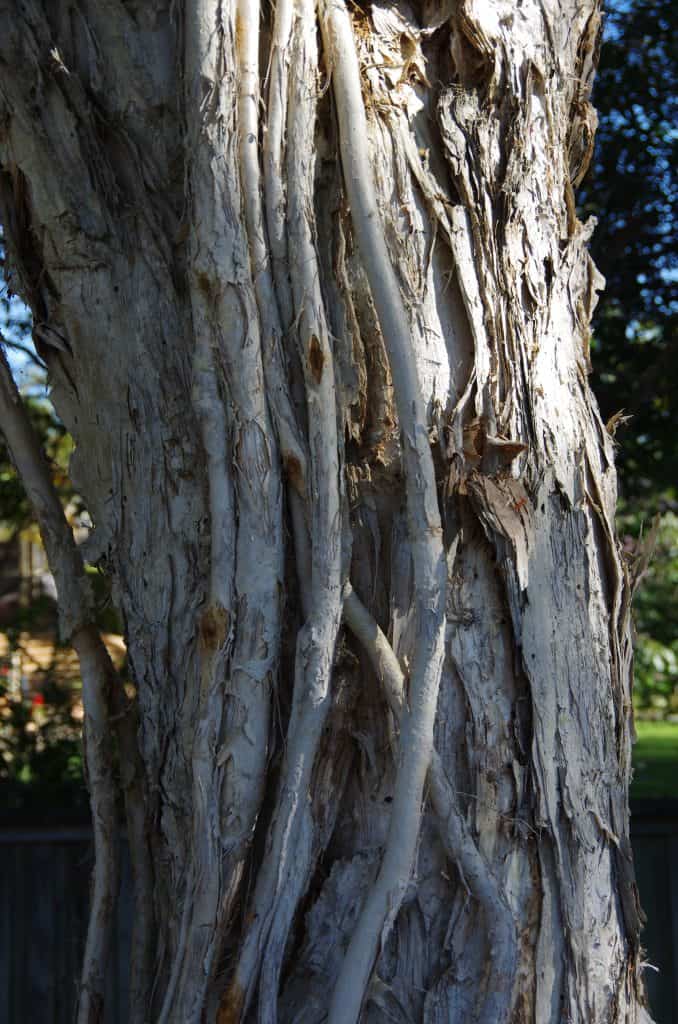
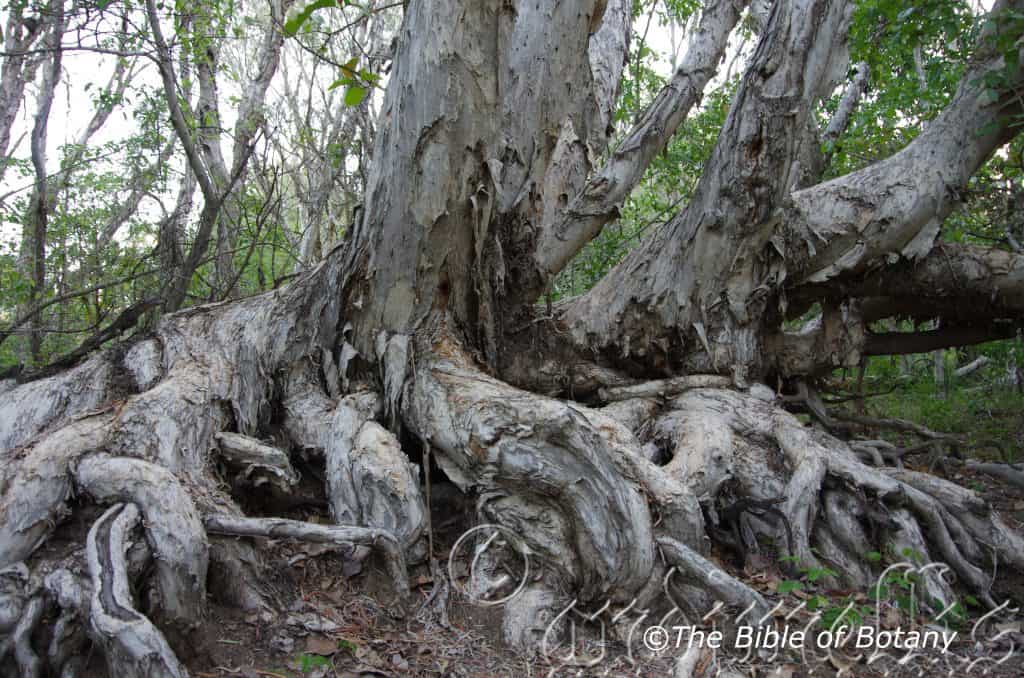
Ross River Condon Qld.
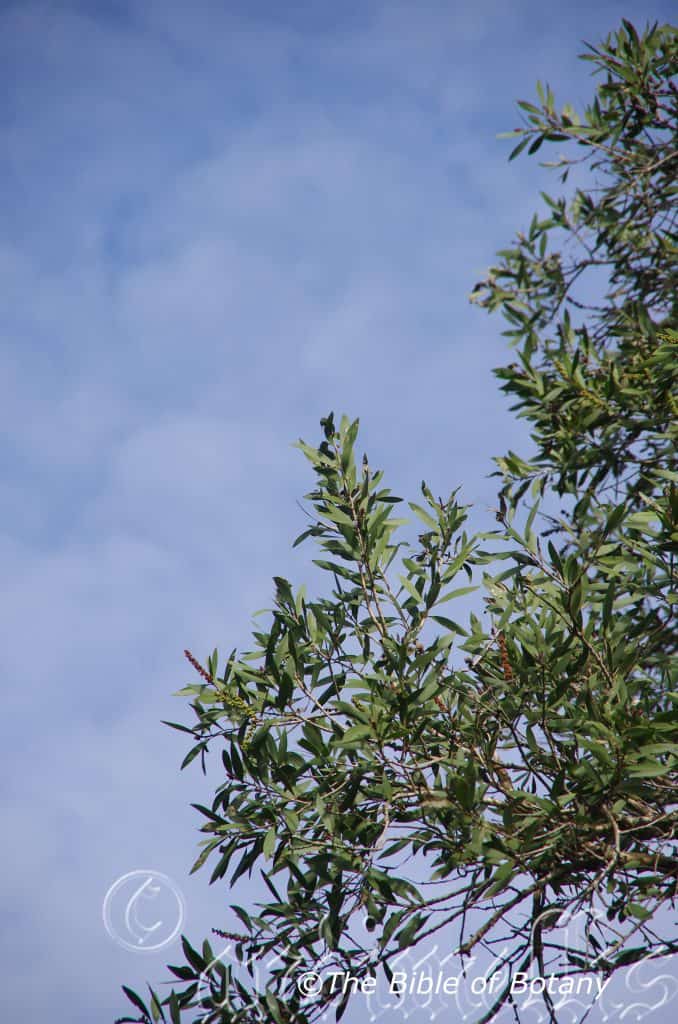
Grafton NSW
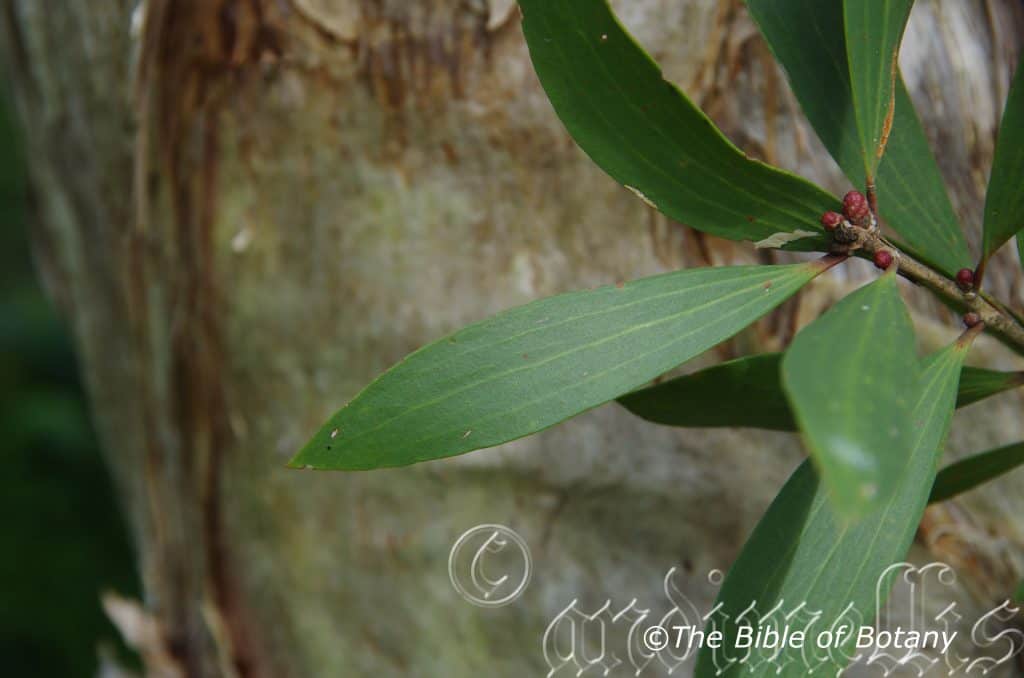
Grafton NSW
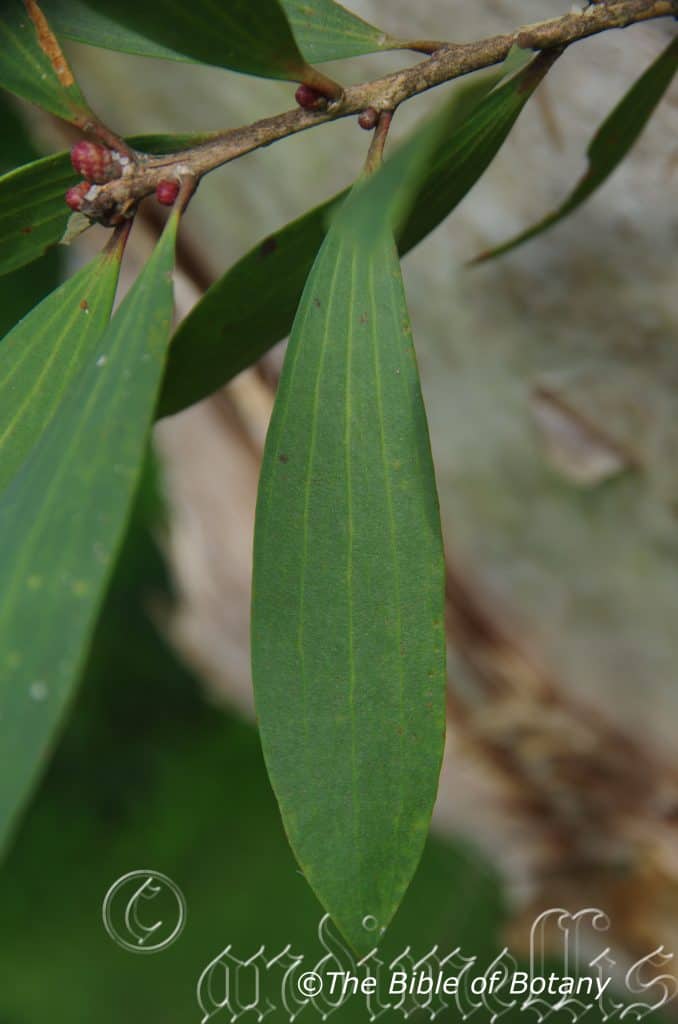
Grafton NSW
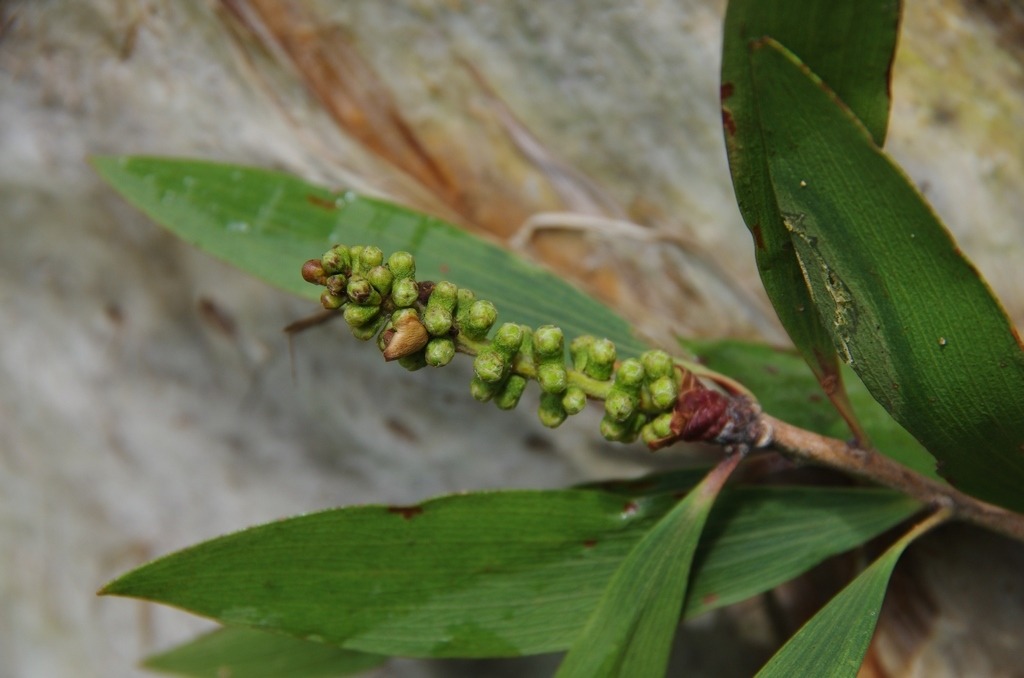
Grafton NSW
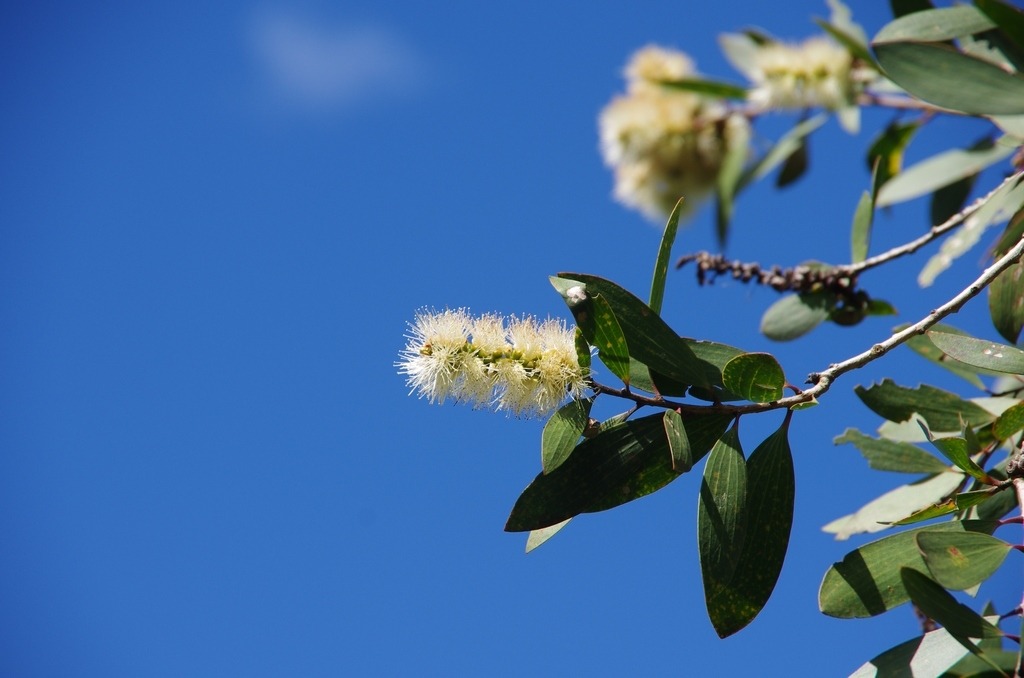
Grafton NSW
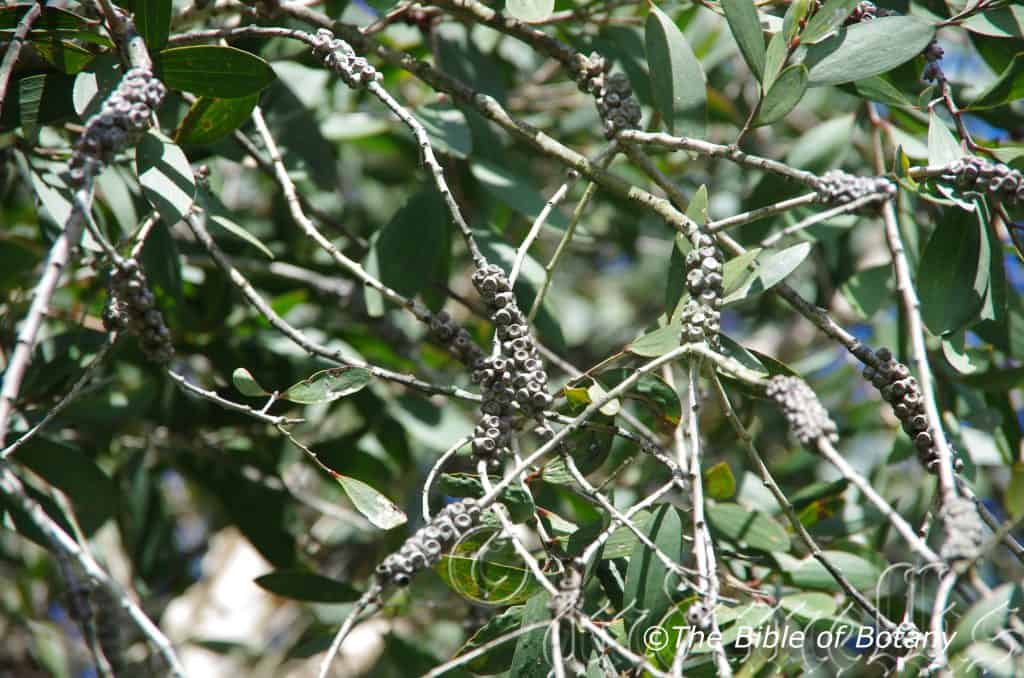
Grafton NSW
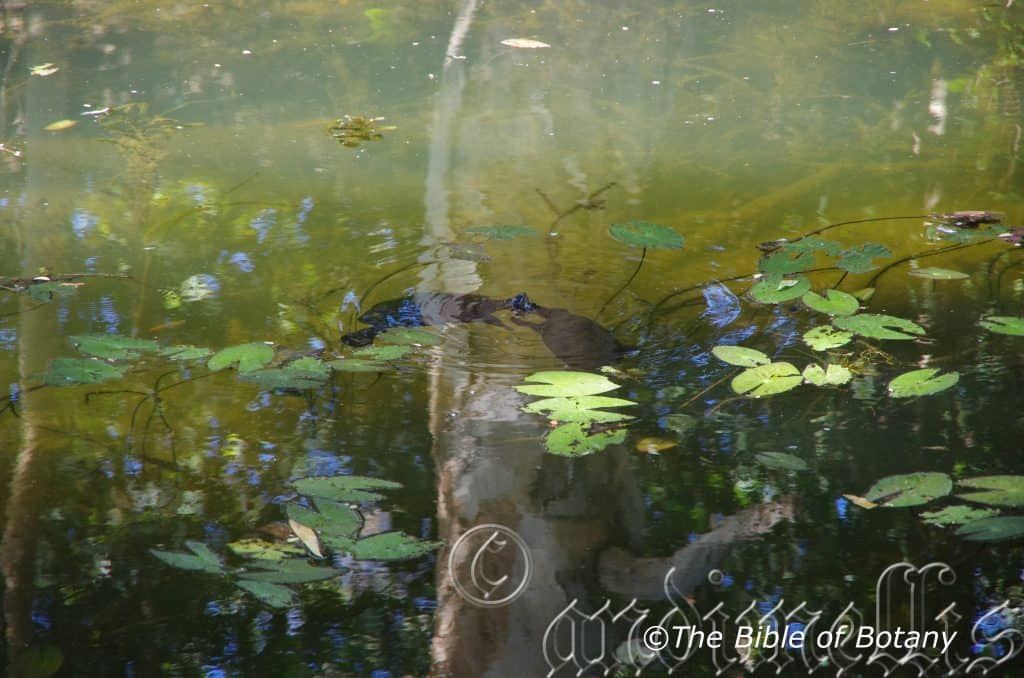
Kreft’s Tortoises, Emydura krefftii Kissing & Courting prior to mating with Melaleuca quinquenervia reflection in water Ross River back water Townsville Qld. They were totally oblivious to me watching.
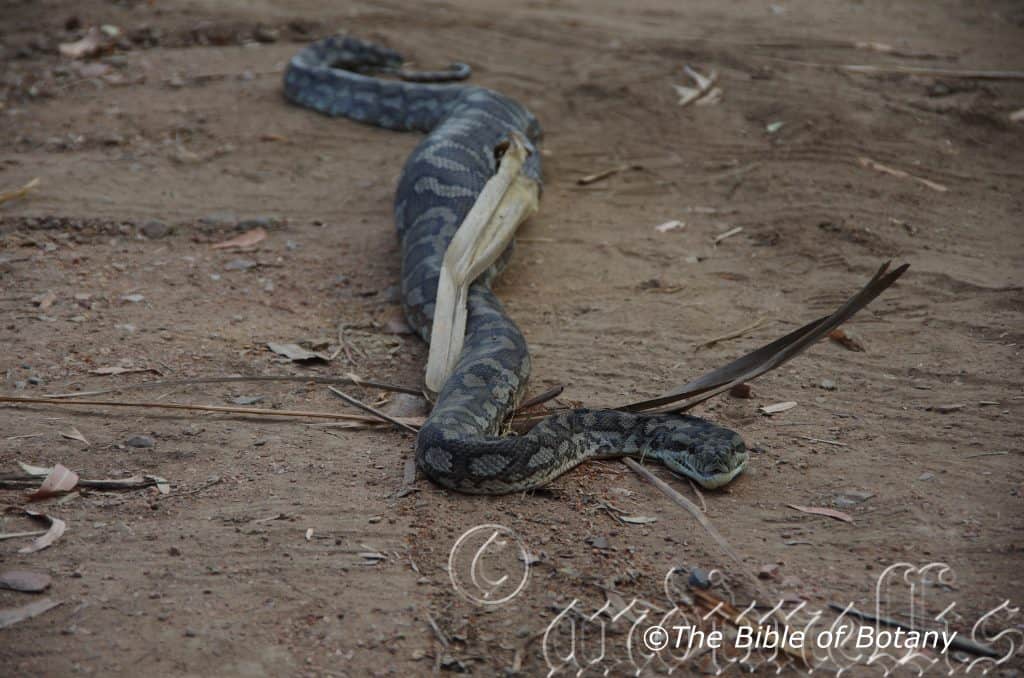
Morelia spilota Ross River 3.3 meters with Ibis, Threskiornis molucca in gut in swampland adjacent to the Ross River.


Crocodylus porosus Townsville are often found in Melaleuca quinquenervia swamps close to the coast.

Melaleuca quinquenervia and Tristaniopsis suaveolens Capalaba Qld. Credit to the landowners in preserving this area.

Grafton NSW
Melaleuca quinquenervia
Classification:
Division: Magnoliophyta
Class: Magnoliopsida
Superorder: Rosane
Order: Myrtales
Family: Myrtaceae
Subfamily: Myrtoideae
Tribe: Melaleuceae
Genus: From Melas, which is Ancient Greek for black and Leukos, which is Ancient Greek for white. It refers to plants, which usually have white papery barks that are often charred by fire thus the bark is black and white.
Specie: From Quin, which is Latin for five, Que, which is Latin for times and Neuron, which is Ancient Greek or Vena, which is Latin for nerves or veins. It refers to veins in the leaves which number five.
Sub species:
Common Name: Broad leaf Paper Bark or Swamp Paper Bark.
Distribution:
Melaleuca quinquenervia is found east of the Great Dividing Range from the tip of Cape York Peninsula and the Torres Strait Islands in far north Queensland south to Botany Bay in central New South Wales. There is an outlying population on Cobourg Peninsula in the Northern Territory.
It is also found in New Caledonia, southern New Guinea, and adjacent islands in Indonesia.
https://avh.ala.org.au/occurrences/search?taxa=Melaleuca+quinquenervia#tab_mapView
Habitat Aspect Climate:
Melaleuca quinquenervia prefers full sun to light dappled shade. It grows in coastal swamps, wallums, around lakes or along brackish water ways close to the coast. The altitude ranges from 5 meter ASL to 150 meters ASL.
The temperatures range from minus 2 degree in August to 36 degrees in January.
The rainfalls range from lows of 900mm to an average of 4200mm.
Soil Requirements:
Melaleuca quinquenervia prefers to grow on light silts to heavy silts, light clays to medium clays. The soils are usually derived from most decomposed rocks that are usually laid down in alluvial deposits in swamps or on accumulated swampy beach sands. The soils pH. ranges from 4.5pH to 7pH. It tolerates waterlogged soils and high water tables as well as stagnant water. Non saline soils to very saline soils are tolerated.
Height & Spread:
Wild Plants: 10m to 16m by 5m to 9m.
Characteristics:
Melaleuca quinquenervia grows as a medium to tall erect tree with thick creamy white or pale creamy grey bark. When the bark is exposed the under lying bark is a rich creamy pink to creamy salmon colour. The thick paper bark peels as the trunk expands to reveal a salmon layer that is corky and spongy to touch. The branches are creamy grey to creamy white. The branchlets are pale creamy fawn and tightly wrapped around the stems, while the newest shoots are pale lime green and are densely covered in short white sericeous hairs. The branches have an upright habit and the plants vary considerably from having an open straggly habit where it is in the shade to open upright and densely foliaged where it is in full sun.
Melaleuca quinquenervia‘s alternate leaves are lanceolate to elliptical and measure 35mm to 75mm in length by 10mm to 25mm in width. The base is slightly oblique and cuneate while the apex is broadly acute. The concolourous laminas are pale dull lime green to olive green, dull, glabrous and coriaceous. Immature leaves are silvery pink before turning a paler green, dull and are densely covered in white caduceus sericeous hairs. The mid vein with the 4 longitudinal veins is all slightly prominent on both laminas. The margins are entire. The deep pink to purple-pink petiole measures 5mm to 10mm in length. The leaves are aromatic when crushed.
The inflorescence of Melaleuca quinquenervia has multi spikes born from the terminals. The flower terminal shoots do not grow out before the stamens bloom. The rachis is sparsely to densely covered in white sericeous hairs and measures 25mm to 50mm in length by 18mm to 25mm in diameter. The flowers are born in threes with in each bract. There are 28 to 36 individual flowers along the spike. The 5 triangular sepals measure 1 to 1.5mm in length by 3.5mm to 5mm in width. The hypanthium and sepals are lime green and moderately covered in short white sericeous hairs. The 5 obtuse petals are creamy green and measure 2mm to 4mm in length. It is persistent while the stamens fully develop. The tips grow out prior to anthesis.
The cream to pale lemon stamens are the most prominent part of the flowers. The claws are opposite the petals and measure 1.5mm to 2mm in length. There are 6 to 10 stamens on each of the 5 claw. The filaments measure 8mm to 12mm in length. The anthers are cream.
The white, cream or creamy green style measures 10mm to 14mm in length, while ovary divides into 3 locules. The base of the style is surrounded by the nectaries. The arrowroot to strongly honey scented flowers, appear over a long period of time. The flowers appear from early late march to late July however a lesser flowering often occurs in late spring.
Melaleuca quinquenervia‘s fruit is a broad globose, glabrous capsule. The capsules measure 3mm to 3.5mm in length by 4mm to 5mm in diameter. The orifice is enclosed and measures 2.3mm to 3mm in diameter. The woody capsule is dull creamy-brown and glabrous. The capsules contain seeds and chaff mixed together. The seeds are brown. They measure 0.6 to 0.8mm in length and look swollen compared to the chaff. The calyx lobes are not persistent on the hypanthia.
Wildlife:
Melaleuca quinquenervia supports myriads of native bees, native flies, native beetles and butterflies when in flower.
It also supports all honeyeaters and many insectivorous birds when in flower within its range.
The marshes in far north Western Australia, Northern Territory and Queensland are often habitats for the salt water crocodile Crocodylus porosus, so venturing into such habitats should be done with precaution.
Back waters are also habitats for tortoises. Like the Kreft’s tortoise, Emydura krefftii caught here in courtship.
The 3 meter plus Carpet snake photographed was retrieved from an adjacent Melaleuca marshland, which was a habitat for white Ibis, Threskiornis moluccus photographed and returned back to the marsh.
Cultivation:
Melaleuca quinquenervia is an excellent pyramid shaped bushy medium size tree for native gardens when grown in the open. It is suitable on all types of sandy loams to medium clays and are most suitable for medium and large gardens close to the coast in warm temperate, sub tropical or tropical gardens or semi-arid gardens. As garden subjects they will grow from 10 meters to 12 meters in height by 6 meter to 8 meters in diameter when grown in the open otherwise they have a tendency to grow upright without any lower branches. It is cold tolerant to temperatures to minus 4 degrees once established but are very slow to establish themselves and will suffer from tip burning. It is quite drought tolerant provided deep watering is maintained once or twice a year during the dry season. They will commence flowering from an early age even from seed. I have seen well grown trees with good flowers at only 3 years of age.
It is very fast growing especially with a good fertilizing program and with a little moisture growing more than 1 meter a year. They will drop some of their foliage when stressed during drought times so should not be allowed to dry out. To avoid this, give the plants a double dose of our recommended fertilizer following flowering and a good deep soaking in dry season if good rains are not forthcoming. This will prevent further loss and hold them over for several more months.
They can be used for light dappled shade when grown as a small tree. It is an excellent tree for areas that have drainage problems on sandy to heavy clay soils. When planting the trees in a heath scene scatter them using at least one in the background so the shapes can silhouette against the back ground or sky and you can fully enjoy their natural bushy pyramid shape. They can be used as wind swept heath shrubs where they will grow 2 meters tall by up to 6 meters across however they will try to send up lead shoots and these must continually be pruned off.
Try using them in an informal or formal manner in front of the house. Placed in from the corner they will breaking up rigid lines and soften the structures overall appearance. At the same time they can be used to highlight the contrasts between the two. On high set homes this can be achieved by planting 1 as a tree with 2 or 3 shrubs like melaleuca citrinus near the base as shrubs. Plant them together with unequal gaps and free flowing curves to accentuate height and depth in front of large factories can really bring a park like scenario, peace and serenity to the work place. Use wider spacing where the building in the background is seen as dappled specks will soften it and where it is planted closer together will give a bolder contrast between the two. The dwarf golden form of Melaleuca bracteata is particularly good where the buildings have a dark exterior and a strong contrast is required between the plants for most of the year or Melaleuca citrina can be used where a bold flowering contrast is warranted for many months of the year. The red flowers of citrinus during spring and summer will complement the cream to yellow flowering in early autumn to winter. Coupled with the thick bark will give all year pleasure.
Melaleuca quinquenervia make ideal plants for Bonsai collectors as I have seen some very twisted gnarled specimens where the parent rock is close to the surface in heaths or it is growing on wind swept headlands.
Propagation:
Seeds: Melaleuca quinquenervia seeds can be sown directly into a seed raising mix. Do not cover the seeds. Press them into the mix. Place the tray in a warm sunny position. When the seedlings are 15mm to 20mm tall, prick them out and plant them into 20mm native tubes using a good organic mix.
When the seedlings are 70mm to 90mm tall, prick them out and plant them into 50mm native tubes using a good organic mix or plant them out into their permanent positions.
Once the seedlings reach 150mm to 200mm in height they can be planted out into their permanent position.
Fertilize using Seaweed, fish emulsion or a half strength solution of organic chicken pellets soaked in water on an alternate basis. Fertilize every few months.
Cuttings:
Cuttings must be used if flowering in the following season are required.
Use 100mm to 150mm long half ripened material when growing from cuttings from the present season’s growth. Take them in warmer months of the year. Remove half the leaves from the bottom section being careful not to tear the bark.
1 Prepare the cutting mix by adding one third sharp clean river sand, one third peat and one third perlite. These ingredients are sterilize,
2 Select good material from non diseased plants,
3 Select semi green stems for cuttings. Look for a stem with two or three nodes,
4 Place the cutting on a flat, hard surface, and make a clean cut down one side of the cutting at the base for 10mm with a sharp sterile knife or razor blade. – This scarification of the node will increase the chances of roots emerging from this spot. Now remove all but one or two the leaves, leaving the apex leaves in tact. If the leaves are very large in proportion to the stem, cut off the apical halves.
5 Fill a saucer with water, and place a little medium strength rooting hormone into another container like a milk bottle top. Dip the node end of the cutting into the water and then into the rooting hormone. Tap off any excess hormone,
6 Use a small dipple stick or old pencil to poke a hole into the soilless potting mix. Ensure the hole is slightly larger than the stem diameter and be careful not to wipe the rooting hormone off the cuttings base, place the cuttings in a pattern ensuring the cuttings are not touching each other,
7 I like to place the pots in Plastic bags to help maintain temperature and moisture. Place in a semi shaded place like under 50mm shade cloth.
8 When the cuttings have struck, open the bag to allow air circulation for a few days to a week,
9 Once hardened off remove the cuttings from the bag and allow to further hardening for a few more days,
10 Transplant into a good potting mix to grow on.
Fertilize using seaweed, fish emulsion or organic chicken pellets soaked in water on an alternate basis. Fertilize every two months until the plants are established then twice annually in early September or March to maintain health, vitality and better flowering.
Further Comments from Readers:
Hi reader, it seems you use The Bible of Botany a lot. That’s great as we have great pleasure in bringing it to you! It’s a little awkward for us to ask, but our first aim is to purchase land approximately 1,600 hectares to link several parcels of N.P. into one at The Pinnacles NSW Australia, but we need your help. We’re not salespeople. We’re amateur botanists who have dedicated over 30 years to saving the environment in a practical way. We depend on donations to reach our goal. If you donate just $5, the price of your coffee this Sunday, We can help to keep the planet alive in a real way and continue to bring you regular updates and features on Australian plants all in one Botanical Bible. Any support is greatly appreciated. Thank you.
In the spirit of reconciliation we acknowledge the Bundjalung, Gumbaynggirr and Yaegl and all aboriginal nations throughout Australia and their connections to land, sea and community. We pay our respect to their Elders past, present and future for the pleasures we have gained.
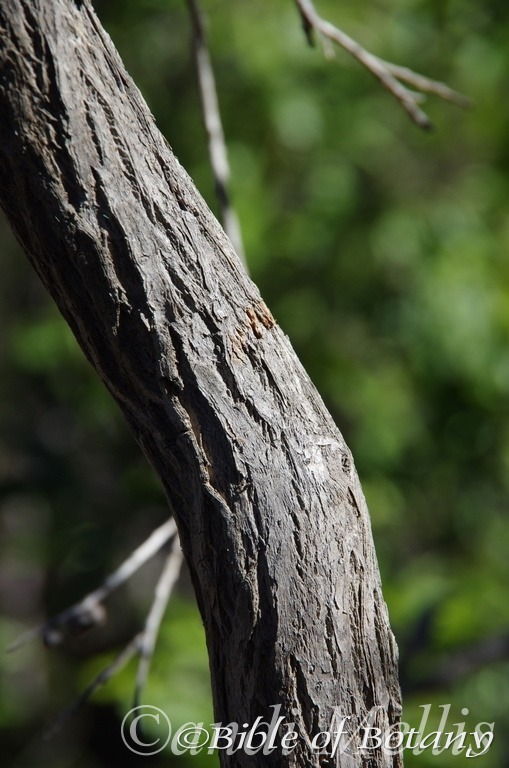
Hidden Valley Paluma Range National Park Qld.

Hidden Valley Paluma Range National Park Qld.
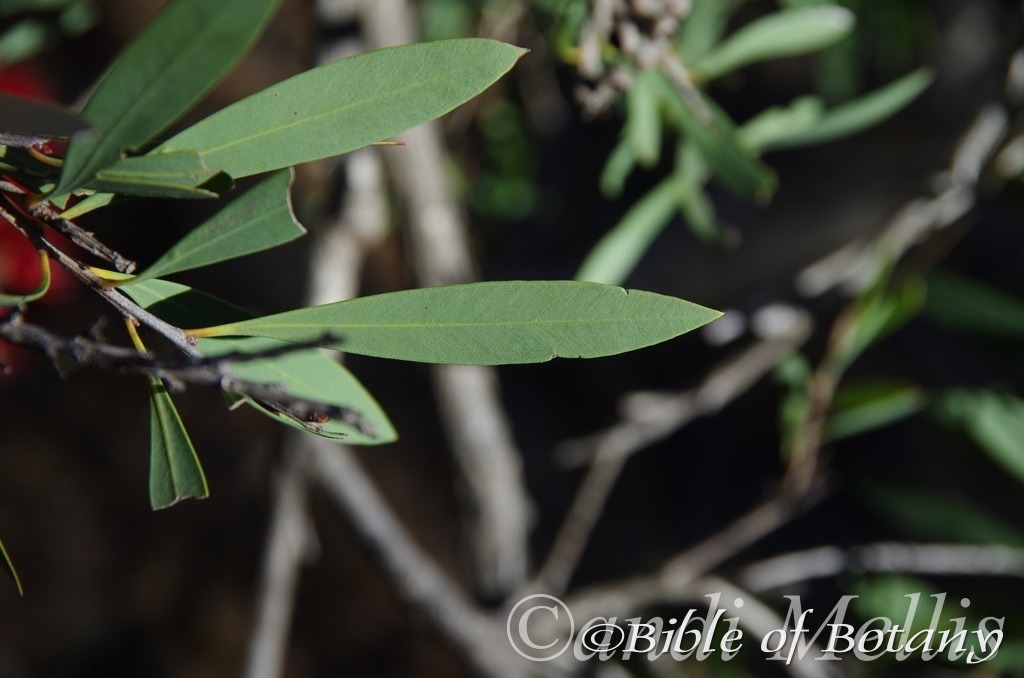
Hidden Valley Paluma Range National Park Qld.
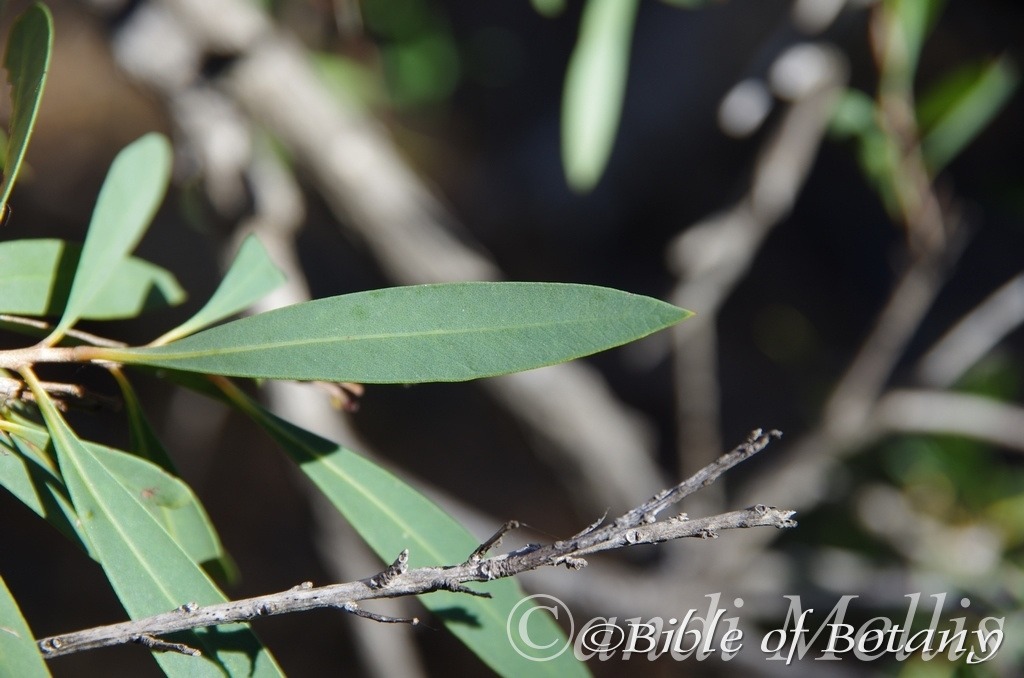
Hidden Valley Paluma Range National Park Qld.

Hidden Valley Paluma Range National Park Qld.
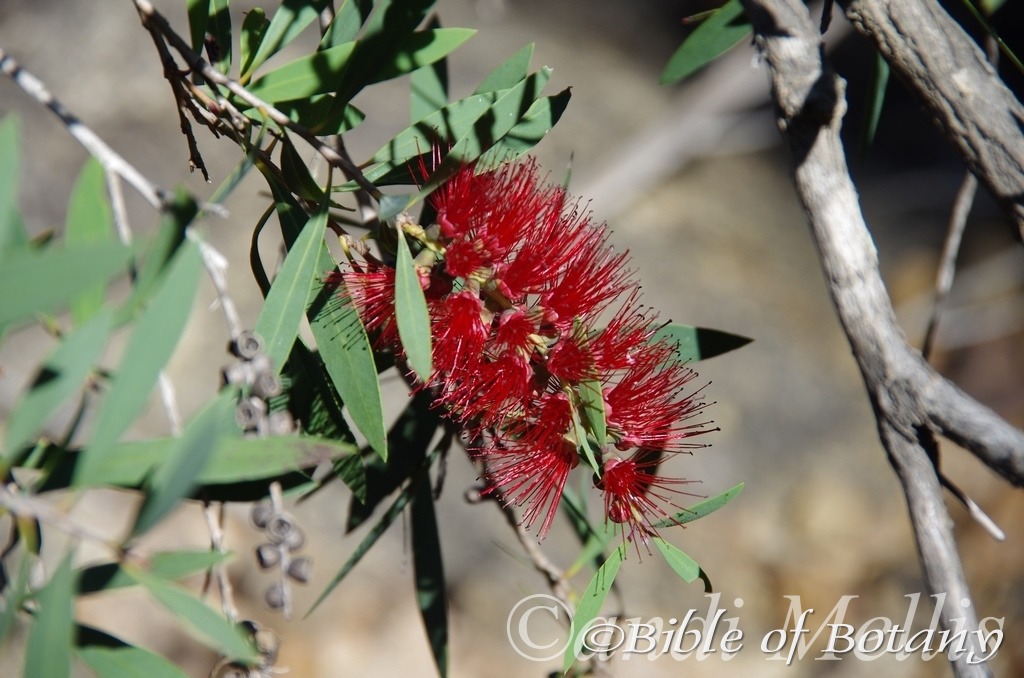
Hidden Valley Paluma Range National Park Qld.
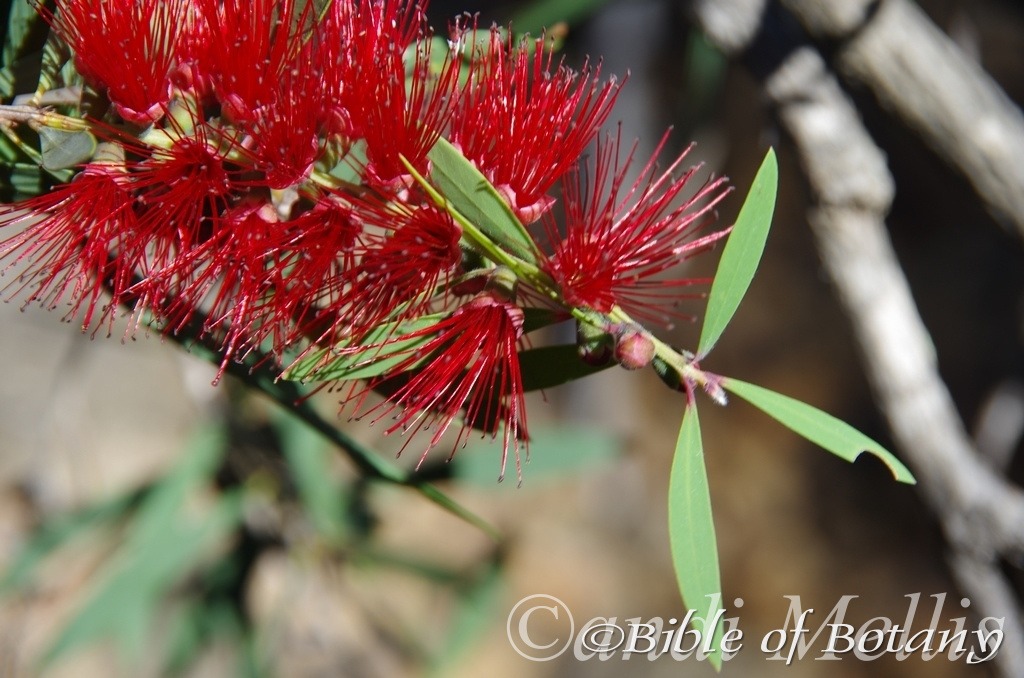
Hidden Valley Paluma Range National Park Qld.
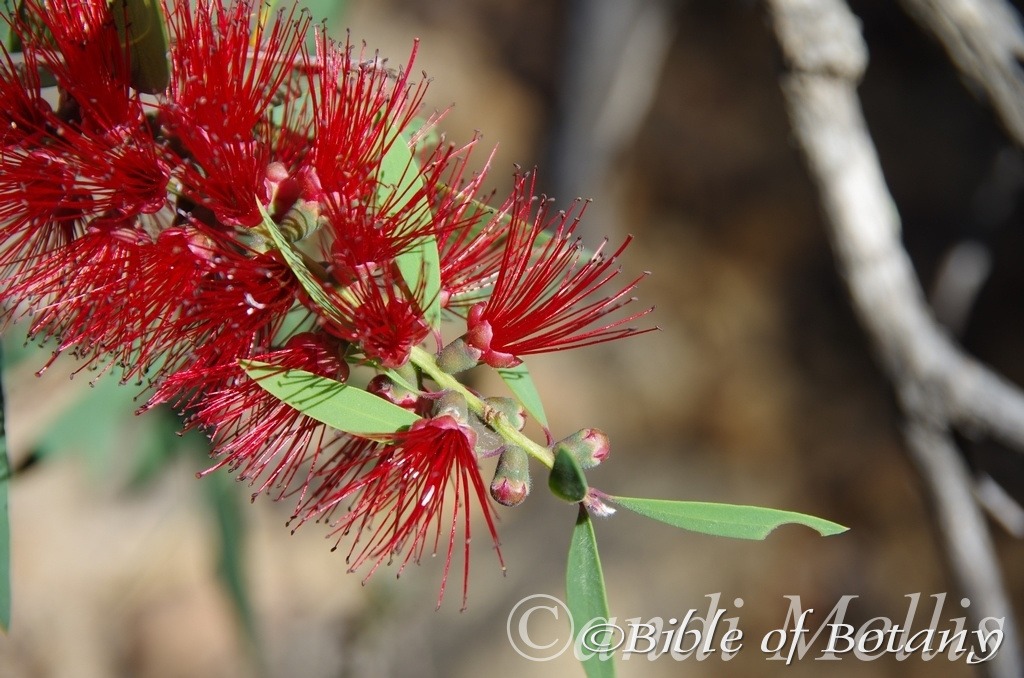
Hidden Valley Paluma Range National Park Qld.
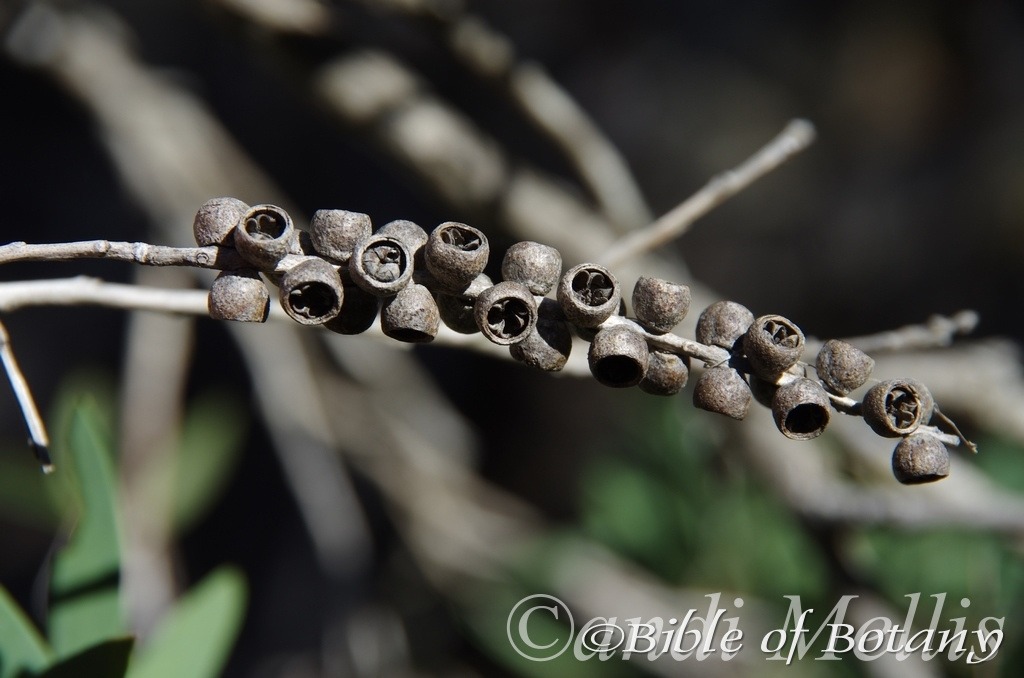
Hidden Valley Paluma Range National Park Qld.
Melaleuca recurva
Classification:
Division: Magnoliophyta
Class: Magnoliopsida
Superorder: Rosane
Order: Myrtales
Family: Myrtaceae
Subfamily: Myrtoideae
Tribe: Melaleuceae
Genus: From Melas, which is Ancient Greek for black and Leukos, which is Ancient Greek for white. It refers to plants, which usually have white papery barks that are often charred by fire thus the bark is black and white. (Presently still widely known as Callistemon rigidus.)
Specie: From Recurva, which is Latin for referring to the leaves, which are slightly bent backwards.
Sub species:
Common Name: Tinaroo or Tinaroo Bottlebrush.
Distribution:
Melaleuca recurva is found south from Mount Donovan in Cape Tribulation to Mount Stewart west of Townsville with a few disjunct populations further south to Mount Abbott west of Bowen in north eastern Queensland.
https://avh.ala.org.au/occurrences/search?q=taxa%3A%22Melaleuca+recurvus%22#tab_mapView
Habitat Aspect Climate:
Melaleuca recurva prefers full sun to light dappled shade. It grows higher altitudes. It is usually found growing in moist sclerophyll forests, moist open woodlands or adjacent to moist rainforests. The altitude ranges from 380 meter ASL to 820 meters ASL.
The temperatures range from minus 2 degree in August to 38 degrees in January.
The rainfalls range from lows of 1550mm to an average of 2550mm.
Soil Requirements:
Melaleuca recurva prefers light skeletal sandy soils over rock. The soils are derived from semi decomposed sandstone, granite or at times basalt. The soils pH. ranges from 4.5pH to 6pH. It tolerates waterlogged soils for short periods. Non saline soils to moderately saline soils are tolerated.
Height & Spread:
Wild Plants: 2m to 7m by 2m to 3m.
Characteristics:
Melaleuca recurva usually grows as a small dense shrub or a taller straggly medium shrub with deep grey, hard slightly furrowed bark on the trunk and main stems. The branchlets are grey, while the youngest shoots are deep pink to maroon-red and sparsely covered in white appressed or spreading hairs. The branches have an upright or spreading habit. The branches and branchlets are rather supple.
Melaleuca recurva’s alternate leaves are broad linear to narrow oblanceolate and measure 15mm to 36mm in length by 5mm to 6mm in width. The base is tapering while the apex is narrow obtuse with a short, sharp mucronate point. The concolourous laminas are deep sea-green. Immature leaves are similar to the mature leaf except they are reddish and sparsely covered in soft white appressed hairs. The margins are entire, flat and thicken towards the edges. The yellow-green petiole is from almost sessile to 1mm in length. The leaves are aromatic when crushed.
The inflorescence of Melaleuca recurva is a single spike born from the terminals. The flower terminal shoots grow out before the stamens begin to open. The rachis and hypanthia are covered in white puberulent hairs and measures 30mm to 55mm long. The flowers are born singly from each bract and measure 30mm to 55mm in diameter. There are 16 to 30 individual flowers along the spike. The individual flowers measure 12mm to 15mm in diameter. The 5 broad semi ovate calyx lobes measure 1mm to 1.5mm in length. The calyx tube is grass-green to emerald green while the calyx is pale green and glabrous. The 5 broad ovate petals are pale translucent creamy-green and measure 3mm to 4mm in length.
The brick red to red stamens are the most prominent part of the flowers. The 20 to 28 stamens are free forming a ring around the hypanthia. The filaments measure 12mm to 15mm in length. The anthers are mid yellow and measures 0.6mm to 0.8mm in length.
The long, slender, red style measures 10mm to 15mm in length. The base of the style is surrounded by the nectaries. The flowers appear throughout the year with a peak in the cooler months of July to early September.
Melaleuca recurva‘s fruit is a sessile, urn capsule. The capsules measure 3mm to 5mm in length by 3.5mm to 5mm in diameter. The orifice is flat, only slightly enclosed. The woody capsules are dull pale grey to dull grey. The capsules contain seeds and chaff mixed together. The seeds are deep rusty-brown and are longer and thicker than the chaff and measure 1mm to 1.5mm in length. The calyx lobes are not persistent on the hypanthia.
Wildlife:
Melaleuca recurva supports myriads of native bees, native flies, native beetles and butterflies when in flower. It also supports small and medium size honeyeaters which scurry over the flowers and seek protection amongst the bushy foliage.
Cultivation:
Melaleuca recurva is a beautiful bushy shrub for native gardens. It is suitable on all types of soils from sandy loams to heavy clays and are most suitable for small, medium and large gardens close to the coast in temperate, sub tropical gardens or semi-arid gardens. As garden subjects they will grow from 1.5 meters to 3 meters tall by 2 meters to 3.5 meters in diameter when grown in the open. It is cold tolerant to temperatures to minus 2 degrees once established but are very slow to establish themselves and will suffer some tip burning and discolouration of the foliage. It is quite drought tolerant. It will commence flowering from an early age even from seed. I have seen well grown shrubs with good flowers at only 3 years of age.
It is very fast growing especially with a good fertilizing program and with a little moisture growing nearly 1 meter in the first year and a half. To avoid stress and increase flowering the following season, give the plants a double dose of our recommended fertilizer following flowering and a good deep soaking mid-way through the dry season if good rains have not fallen. This will prevent further stress and hold them over for several more months. Fertilizing after the finish flower seems to enhance the flowering for the following season.
It is an excellent shrub for areas that have drainage problems or where there is a seasonal problem with the water tables coming to the surface. When mass or group planting Melaleuca recurva, use curves and irregular patterns in the garden beds so they can be viewed from different angles around the garden. It is best used in a bush garden where bushier plants can help cover the open habit when it is not in flower. There greatest potential in the garden is in attracting small and medium size honeyeaters and their prolonged flowering season of large brick red flowers.
Propagation:
Seeds: Melaleuca recurva seeds can be sown directly into a seed raising mix. Do not cover the seeds. Press them into the mix. Place the tray in a warm sunny position. When the seedlings are 15mm to 20mm tall, prick them out and plant them into 20mm native tubes using a good organic mix.
When the seedlings are 70mm to 90mm tall, prick them out and plant them into 50mm native tubes using a good organic mix or plant them out into their permanent positions.
Once the seedlings reach 150mm to 200mm in height they can be planted out into their permanent position.
Cuttings: Cuttings must be used if flowering in the following season are required.
Use 100mm to 150mm long half ripened material when growing from cuttings from the present season’s growth. Take them in warmer months of the year. Remove half the leaves from the bottom section being careful not to tear the bark.
1 Prepare the cutting mix by adding one third sharp clean river sand, one third peat and one third perlite. These ingredients are sterilize,
2 Select good material from non diseased plants,
3 Select semi green stems for cuttings. Look for a stem with two or three nodes,
4 Place the cutting on a flat, hard surface, and make a clean cut down one side of the cutting at the base for 10mm with a sharp sterile knife or razor blade. – This scarification of the node will increase the chances of roots emerging from this spot. Now remove all but one or two the leaves, leaving the apex leaves in tact. If the leaves are very large in proportion to the stem, cut off the apical halves.
5 Fill a saucer with water, and place a little medium strength rooting hormone into another container like a milk bottle top. Dip the node end of the cutting into the water and then into the rooting hormone. Tap off any excess hormone,
6 Use a small dipple stick or old pencil to poke a hole into the soilless potting mix. Ensure the hole is slightly larger than the stem diameter and be careful not to wipe the rooting hormone off the cuttings base, place the cuttings in a pattern ensuring the cuttings are not touching each other,
7 I like to place the pots in Plastic bags to help maintain temperature and moisture. Place in a semi shaded place like under 50% shade cloth.
8 When the cuttings have struck, open the bag to allow air circulation for a few days to a week,
9 Once hardened off remove the cuttings from the bag and allow to further hardening for a few more days,
10 Transplant into a good potting mix to grow on.
Fertilize using seaweed, fish emulsion or organic chicken pellets soaked in water on an alternate basis. Fertilize every two months until the plants are established then twice annually in early September or March to maintain health, vitality and better flowering.
Further Comments from Readers:
Hi reader, it seems you use The Bible of Botany a lot. That’s great as we have great pleasure in bringing it to you! It’s a little awkward for us to ask, but our first aim is to purchase land approximately 1,600 hectares to link several parcels of N.P. into one at The Pinnacles NSW Australia, but we need your help. We’re not salespeople. We’re amateur botanists who have dedicated over 30 years to saving the environment in a practical way. We depend on donations to reach our goal. If you donate just $5, the price of your coffee this Sunday, We can help to keep the planet alive in a real way and continue to bring you regular updates and features on Australian plants all in one Botanical Bible. Any support is greatly appreciated. Thank you.
In the spirit of reconciliation we acknowledge the Bundjalung, Gumbaynggirr and Yaegl and all aboriginal nations throughout Australia and their connections to land, sea and community. We pay our respect to their Elders past, present and future for the pleasures we have gained.
xxxxxxxxxxxxxxxxxxxxxxxxxxxxxxxxxxxxxxxxxxxxxxxMelaleuca rigidus
Classification:
Division: Magnoliophyta
Class: Magnoliopsida
Superorder: Rosane
Order: Myrtales
Family: Myrtaceae
Subfamily: Myrtoideae
Tribe: Melaleuceae
Genus: From Melas, which is Ancient Greek for black and Leukos, which is Ancient Greek for white. It refers to plants, which usually have white papery barks that are often charred by fire thus the bark is black and white. (Presently still widely known as Callistemon rigidus.)
Specie: From Rigins, which is Latin for stiff, unbending or unyielding. It refers to an organs, usually the stems which have somewhat stiffer and more unyielding to movement than other species in the genus.
Sub species:
Common Name: Stiff Bottlebrush or Stiff leaf Bottlebrush.
Distribution:
Melaleuca rigidus is found in several disjunct populations south from the Queensland, New South Wales border south to near Ulladulla. There are also a few outlying populations in the Barren and the Piliga districts.
https://avh.ala.org.au/occurrences/search?taxa=Melaleuca+rigidus#tab_mapView
Habitat Aspect Climate:
Melaleuca rigidus prefers full sun to light dappled shade. It grows in low lying heaths or dry schlerophyll forests in damp situations in depressions or where the water tables are close to the surface. The altitude ranges from 5 meter ASL to 750 meters ASL.
The temperatures range from minus 2 degree in August to 36 degrees in January.
The rainfalls range from lows of 440mm to an average of 1550mm.
Soil Requirements:
Melaleuca rigidus prefers light silts to medium silts, light clays to medium clays. The soils are derived from most decomposed rocks that are usually laid down as alluvial swamps or on accumulated beach sands. It also grows on soils that have partially decomposed parent rocks. The soils pH. ranges from 4.5pH to 6pH. It tolerates waterlogged soils for short periods. Non saline soils to very saline soils are tolerated.
Height & Spread:
Wild Plants: 2m to 3m by 2m to 3m.
Characteristics:
Melaleuca rigidus grows as medium shrub with pale grey, hard slightly furrowed bark on the trunk and main stems. The branchlets are rusty-grey while the youngest shoots are olive green and covered in white hirtellous hairs. The branches have an upright habit. The branches and branchlets are rather supple.
Melaleuca rigidus‘s alternate leaves are linear to narrow oblanceolate and measure 50mm to 70mm in length by 3mm to 4mm in width. The base is tapering while the apex is acute with a sharp mucronate point. The concolourous laminas are deep sea-green. Immature leaves are similar to the mature leaf except that it is sparsely covered in white tomentose hairs. The margins are entire, flat and thicken towards the edges sometimes forming a channel. The orange-green petiole is from almost sessile to 1.5mm in length. The leaves are not aromatic when crushed.
The inflorescence of Melaleuca rigidus is a single spike born from the terminals. The flower terminal shoots grow out before the stamens begin to open. The rachis and hypanthia are covered in white puberulent hairs and measures 75mm to 100mm long. The flowers are born singly from each bract and measure 40mm to 60mm in diameter. There are 40 to 60 individual flowers along the spike. The individual flowers measure 12mm to 15mm in diameter. The 5 broad semi ovate calyx lobes measure 0.8mm to 1mm in length. The calyx tube is grass-green to emerald green while the calyx is grass green to emerald green with a red tinge and is glabrous. The 5 broad semi obtuse petals are grass green turning pink or creamy yellow towards the apex and measure 3.5mm to 4mm in length.
The brick red to red stamens are the most prominent part of the flowers. The 16 to 24 stamens are free forming a ring around the hypanthia. The filaments measure 20mm to 25mm in length. The anthers are a deeper shade of the stamens and measures 0.8mm to 1mm in length.
The long, slender, red, brick red or yellow-green style measures 24mm to 28mm in length, while the ovary has 3 locules. The base of the style is surrounded by the nectaries. The flowers appear from early mid-November to early March.
Melaleuca rigidus‘s fruit is a sessile, urn capsule. The capsules measure 7.5mm to 9mm in length by 7mm to 9mm in diameter. The orifice is flat, only slightly enclosed and measures 5mm to 5.5mm in diameter. The woody capsule is dull pale grey to dull grey and resinous. The capsules contain seeds and chaff mixed together. The seeds are rusty-brown and are longer and thicker than the chaff. The calyx lobes are not persistent on the hypanthia.
Wildlife:
Melaleuca rigidus supports myriads of native bees, native flies, native beetles and butterflies when in flower. It also supports small and medium size honeyeaters which scurry over the flowers and seek protection amongst the bushy foliage.
Cultivation:
Melaleuca rigidus is a beautiful open bushy shrub for native gardens. It is suitable on all types of sandy loams to medium clays and are most suitable for small, medium and large gardens close to the coast in temperate, sub tropical gardens or semi-arid gardens. As garden subjects they will grow from 2 meters to 3 meters tall by 2.5 meter to 3.5 meters in diameter when grown in the open. It is cold tolerant to temperatures to minus 6 degrees once established but are very slow to establish themselves and will suffer some tip burning and discolouration of the foliage. It is quite drought tolerant. They will commence flowering from an early age even from seed. I have seen well grown shrubs with good flowers at only 4 and 5 years of age.
It is very fast growing especially with a good fertilizing program and with a little moisture growing nearly 1 meter a year. To avoid stress and increase flowering the following season, give the plants a double dose of our recommended fertilizer following flowering and a good deep soaking mid-way through the dry season if good rains have not fallen. This will prevent further stress and hold them over for several more months. Fertilizing after the finish flower seems to enhance the flowering for the following season.
They can be used for light dappled shade when grown as a small tree. It is an excellent shrub for areas that have drainage problems or where there is a seasonal problem with the water tables coming to the surface. When mass or group planting Melaleuca rigidus, use curves and irregular patterns in the garden beds so they can be viewed from different angles around the garden. It is best used in a bush garden where bushier plants can help cover the open habit when it is not in flower. There greatest potential in the garden is in attracting small and medium size honeyeaters and their prolonged flowering season of large brick red flowers.
Propagation:
Seeds: Melaleuca rigidus seeds can be sown directly into a seed raising mix. Do not cover the seeds. Press them into the mix. Place the tray in a warm sunny position. When the seedlings are 15mm to 20mm tall, prick them out and plant them into 20mm native tubes using a good organic mix.
When the seedlings are 70mm to 90mm tall, prick them out and plant them into 50mm native tubes using a good organic mix or plant them out into their permanent positions.
Once the seedlings reach 150mm to 200mm in height they can be planted out into their permanent position.
Cuttings: Cuttings must be used if flowering in the following season are required.
Use 100mm to 150mm long half ripened material when growing from cuttings from the present season’s growth. Take them in warmer months of the year. Remove half the leaves from the bottom section being careful not to tear the bark.
1 Prepare the cutting mix by adding one third sharp clean river sand, one third peat and one third perlite. These ingredients are sterilize,
2 Select good material from non diseased plants,
3 Select semi green stems for cuttings. Look for a stem with two or three nodes,
4 Place the cutting on a flat, hard surface, and make a clean cut down one side of the cutting at the base for 10mm with a sharp sterile knife or razor blade. – This scarification of the node will increase the chances of roots emerging from this spot. Now remove all but one or two the leaves, leaving the apex leaves in tact. If the leaves are very large in proportion to the stem, cut off the apical halves.
5 Fill a saucer with water, and place a little medium strength rooting hormone into another container like a milk bottle top. Dip the node end of the cutting into the water and then into the rooting hormone. Tap off any excess hormone,
6 Use a small dipple stick or old pencil to poke a hole into the soilless potting mix. Ensure the hole is slightly larger than the stem diameter and be careful not to wipe the rooting hormone off the cuttings base, place the cuttings in a pattern ensuring the cuttings are not touching each other,
7 I like to place the pots in Plastic bags to help maintain temperature and moisture. Place in a semi shaded place like under 50% shade cloth.
8 When the cuttings have struck, open the bag to allow air circulation for a few days to a week,
9 Once hardened off remove the cuttings from the bag and allow to further hardening for a few more days,
10 Transplant into a good potting mix to grow on.
Fertilize using seaweed, fish emulsion or organic chicken pellets soaked in water on an alternate basis. Fertilize every two months until the plants are established then twice annually in early September or March to maintain health, vitality and better flowering.
Further Comments from Readers:
Hi reader, it seems you use The Bible of Botany a lot. That’s great as we have great pleasure in bringing it to you! It’s a little awkward for us to ask, but our first aim is to purchase land approximately 1,600 hectares to link several parcels of N.P. into one at The Pinnacles NSW Australia, but we need your help. We’re not salespeople. We’re amateur botanists who have dedicated over 30 years to saving the environment in a practical way. We depend on donations to reach our goal. If you donate just $5, the price of your coffee this Sunday, We can help to keep the planet alive in a real way and continue to bring you regular updates and features on Australian plants all in one Botanical Bible. Any support is greatly appreciated. Thank you.
In the spirit of reconciliation we acknowledge the Bundjalung, Gumbaynggirr and Yaegl and all aboriginal nations throughout Australia and their connections to land, sea and community. We pay our respect to their Elders past, present and future for the pleasures we have gained.

Mount Cootha Botanical Gardens Qld.
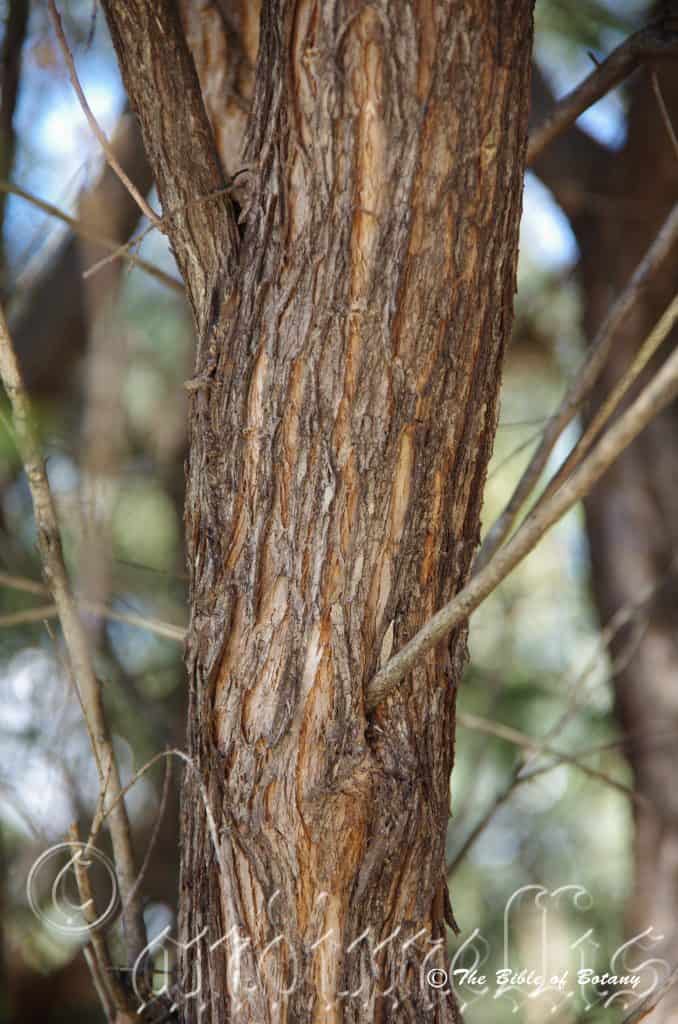
Kedron Brook Qld.

Mount Cootha Botanical Gardens Qld.
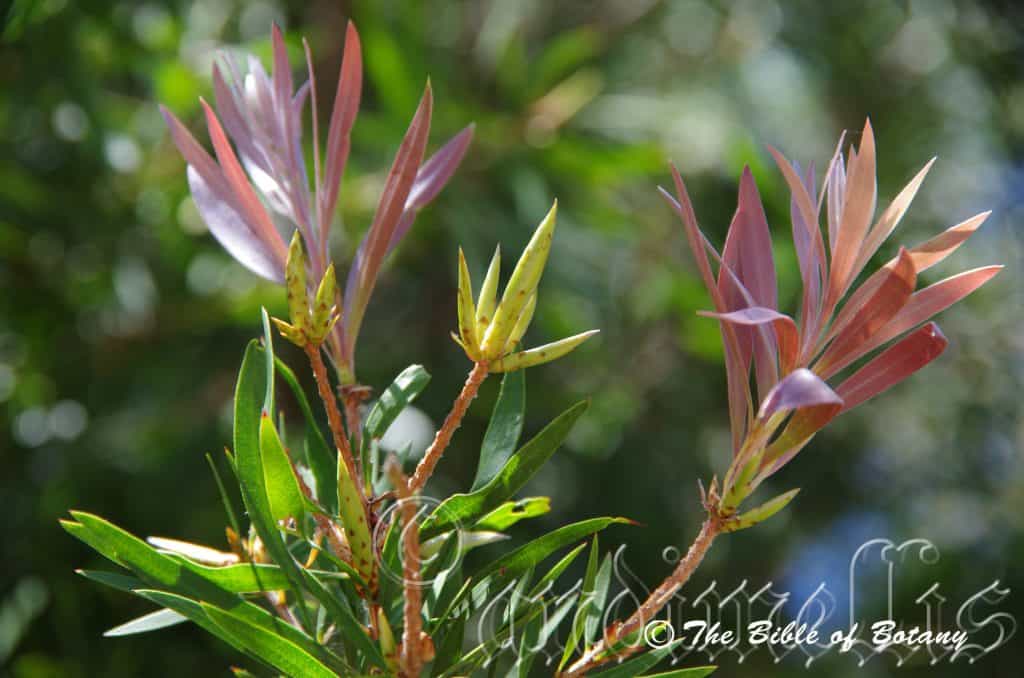
Mount Cootha Botanical Gardens Qld.
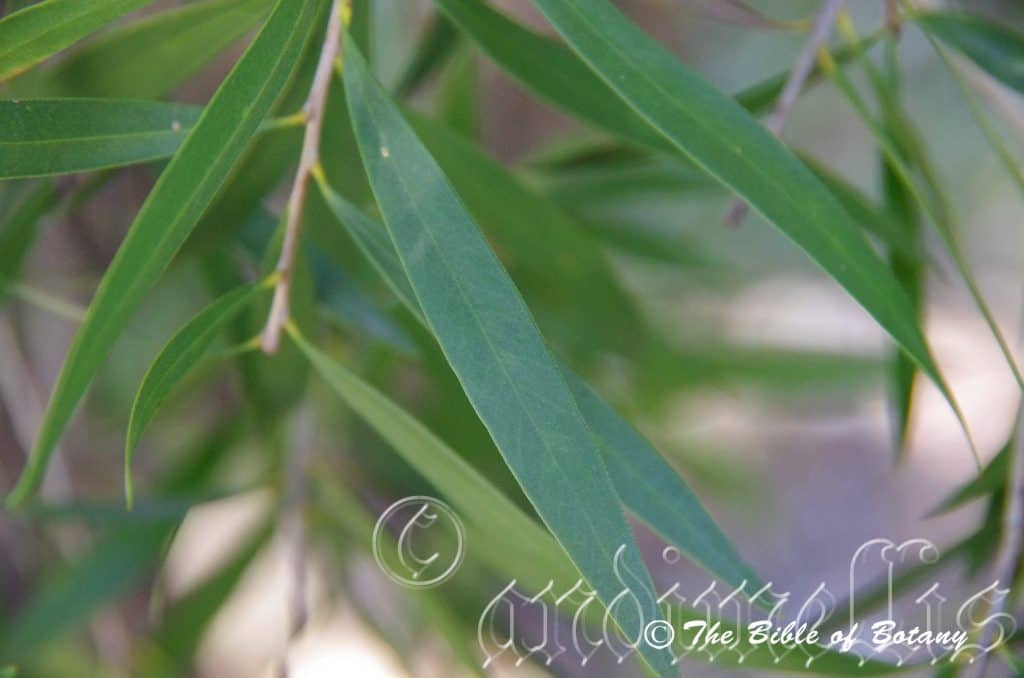
Mount Cootha Botanical Gardens Qld.
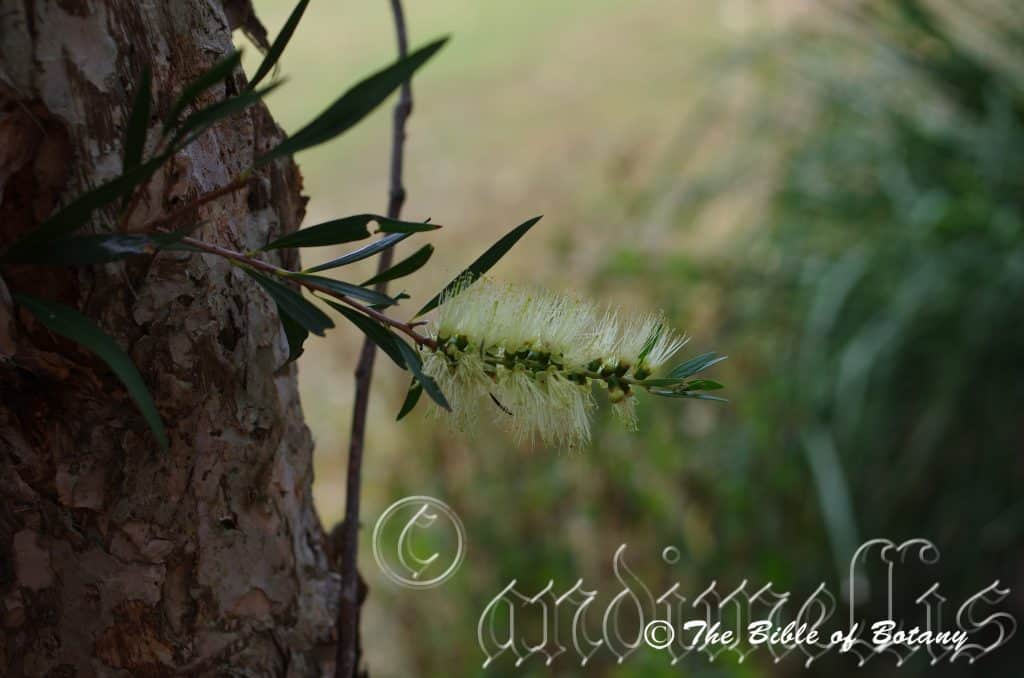
Kedron Brook Qld.
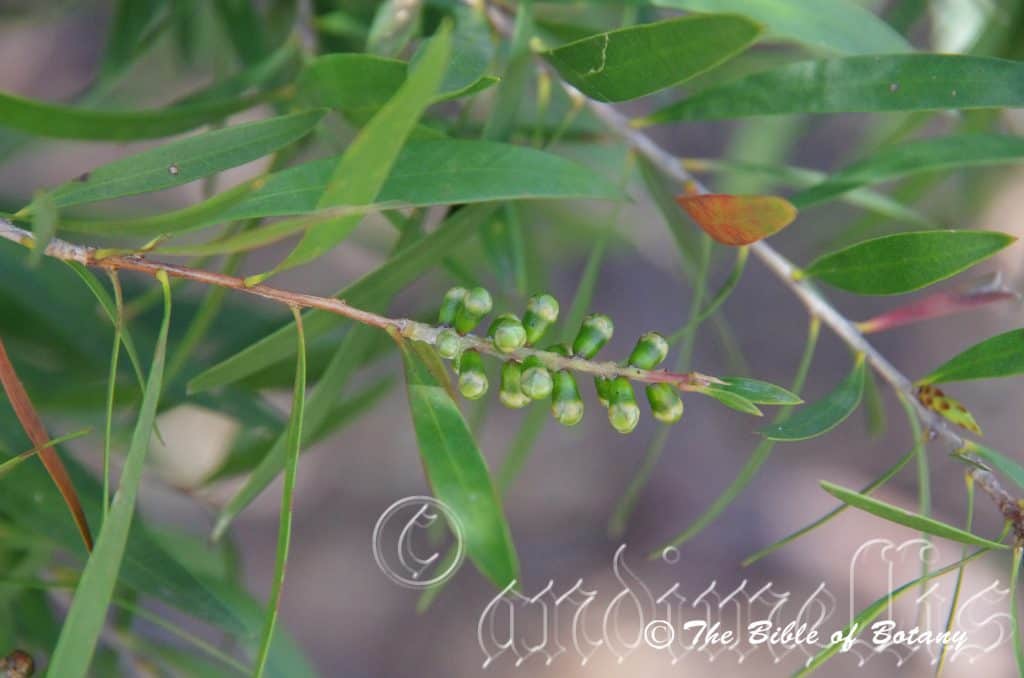
Mount Cootha Botanical Gardens Qld.

Mount Cootha Botanical Gardens Qld.

Mount Cootha Botanical Gardens Qld.
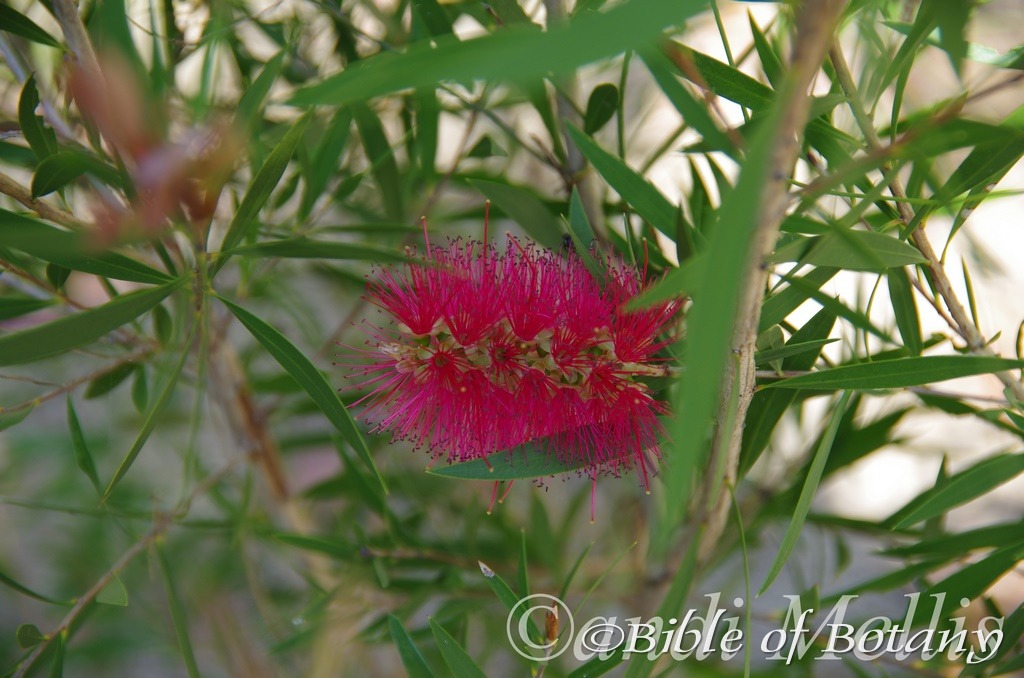
Author’s Garden The Pinnacles NSW
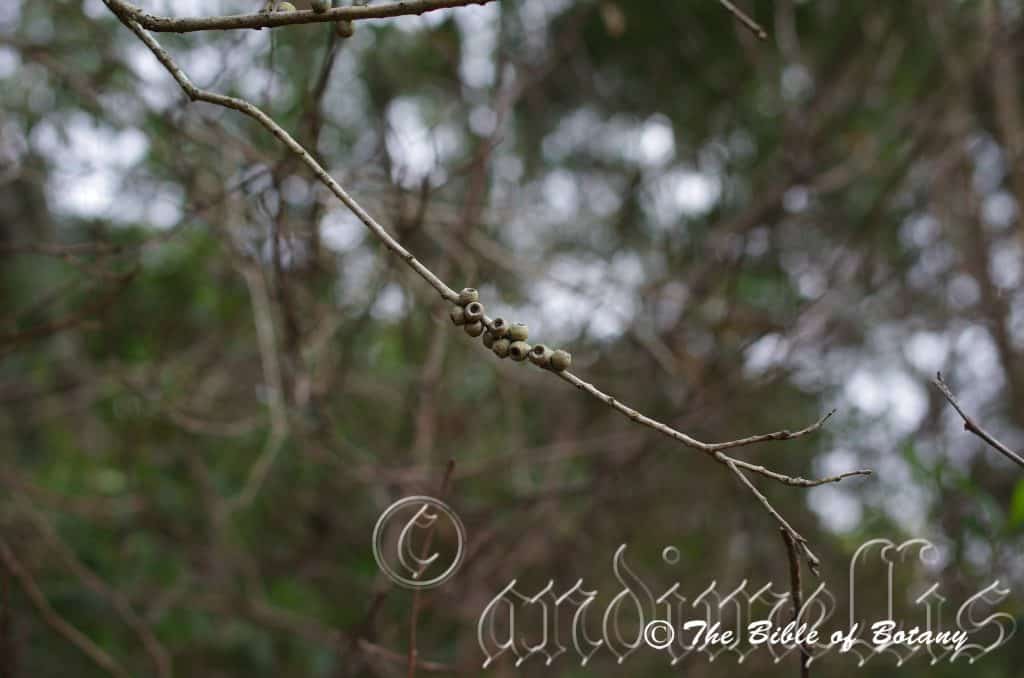
Kedron Brook Qld.
Melaleuca salicina
Classification:
Division: Magnoliophyta
Class: Magnoliopsida
Superorder: Rosane
Order: Myrtales
Family: Myrtaceae
Subfamily: Myrtoideae
Tribe: Melaleuceae
Genus: From Melas, which is Ancient Greek for black and Leukos, which is Ancient Greek for white. It refers to plants, which usually have white papery barks that are often charred by fire thus the bark is black and white. (Presently still widely known as Callistemon salignus.)
Specie: From Salix, which is Latin for the weeping willow. It refers to the overall appearance being similar to that of the weeping willow.
Sub species:
Common Name: Willow Bottle Brush.
Distribution:
Melaleuca salicina is found on and east of the Great Dividing Range from Gladstone in central eastern Queensland, south to the Blue Mountains in central New South Wales. There are several disjunct and outlying populations in central Victoria along inland rivers. There is also an outlying population near Seaforth north of Mackay in central coastal Queensland.
https://avh.ala.org.au/occurrences/search?taxa=Melaleuca+salicina#tab_mapView
Habitat Aspect Climate:
Melaleuca salicina prefers full sun to light dappled shade. It usually grows on low lying river flats, along creeks, streams and seasonally dry creeks. The altitude ranges from 10 meter ASL to 650 meters ASL.
The temperatures range from minus 5 degree in August to 36 degrees in January.
The rainfalls range from lows of 500mm to an average of 2000mm.
Soil Requirements:
Melaleuca salicina prefers to grow on light silts, light clays to heavy clays. The soils are derived from most decomposed rocks that are usually laid down as alluvial deposits including podsolic soils. The soils pH. ranges from 4.5pH to 6.5pH. It tolerates waterlogged soils. Non saline soils to very saline soils are tolerated.
Height & Spread:
Wild Plants: 5m to 10m by 4m to 6m.
Characteristics:
Melaleuca salicina grows as a multi trunked tree with creamy white or pale creamy grey bark. The thick paper bark peels off in large flakes as the trunk expands to reveal a salmon layer that is corky and spongy to touch. The bark on the branches is creamy grey to creamy white and peels off regularly throughout the year. The branchlets are pale creamy fawn to creamy pink and tightly wrapped around the stems, while the newest shoots are grass-green and glabrous or are sparsely covered in short white puberulent hairs. The branches have an upright habit and the plants vary considerably from having an open straggly habit where it is in the shade to open upright and densely foliaged where it is in full sun. Branches and branchlets are very flexuosus and resist breaking.
Melaleuca salicina‘s alternate and often decastate leaves are narrow elliptical and measure 55mm to 100mm in length by 5mm to 15mm in width. The base is slightly oblique and tapering to narrowly cuneate or attenuate while the apex is acute to narrowly acute. The discolourous laminas are olive green, dull and glabrous on the upper lamina while the lower lamina is slightly paler. Immature leaves are bright pink at first turning salmon before turning a paler green then to the olive green of the mature leaves. The new foliage is semi glossy and glabrous to being covered in white puberulent hairs. The mid vein is prominent on the lower lamina and is faintly visible on the upper lamina. The marginal and lateral veins are faintly visible. The margins are entire and flat sometimes slightly undulating and sometimes slightly twisting. The green, deep red to burgundy petioles measure 2mm to 3mm in length. The leaves are not aromatic when crushed.
The inflorescence of Melaleuca salicina is born singularly on spikes born from the terminals. The flower terminal shoots grow out by the time the stamens have fully opened. These leaves lack the deep pinks and reds of foliage flushes at other times of the year. The terminal shoots are shorter than the non-flowering flushes. The rachis is glabrous to slightly covered in white puberulent hairs and measures 40mm to 55mm in length by 30mm to 35mm in diameter. The flowers are born singularly with in each bract. There are 33 to 48 individual flowers along the spike. The individual flowers measure 12mm to 15mm in diameter. The 5 broad ovate sepals measure 0.7mm to 1mm in length by 3.5mm to 5mm in width. The sepals are grass-green while the hypanthia are cream or pale green turning deep red-brown at the apex. It is glabrous. The 5 semi translucent, ovate, cupular petals are pastel creamy green and measure 3mm to 3.5mm in length by 2.5mm to 3mm in width. It is persistent while the stamens fully develop.
The flowers are usually cream, creamy green, pale lemon or at times pale pink to deep pink or purple with variable coloured stamens. The stamens are the most prominent part of the flowers. The 30 to 40 stamens are free and form a ring around the hypanthia. The filaments measure 12mm to 15mm in length. The anthers which are white, cream, pale pink to deep pink or purple and measure less than 0.5mm in length.
The long, slender, cream, creamy green, pale pink to deep pink or purple style measures 14mm to 17mm in length, while the ovary divides into 3 locules. The base of the style is surrounded by the nectaries. The arrowroot to strongly honey scented flowers, appear over a long period of time. The flowers appear from early late September to late November however a lesser flowering can often occur in autumn with the odd flower appearing throughout the warmer months.
Melaleuca salicina‘s fruit is a broad globose, glabrous capsule. The capsules measure 2mm to 2.2mm in length by 4mm to 5mm in diameter. The orifice is enclosed and measures 3mm to 4mm in diameter. The coriaceous capsule is dull creamy-fawn and glabrous. The capsules may contain hundreds of seeds and chaff. The seeds are brown. The calyx lobes are not persistent on the hypanthia.
Wildlife:
Melaleuca salicina supports myriads of native bees, native flies, native beetles and butterflies when in flower. It also supports small, medium and large honeyeaters which scurry over the flowers and seek protection from the bushy foliage. The sap sucking bug Chionaspis inday is often seen on the leaves but causes very little damage.
Cultivation:
Melaleuca salicina is an excellent broad columular shaped bushy medium size tree for native gardens. It is suitable on all types of sandy loams to medium clays and are most suitable for small, medium and large gardens close to the coast or inland in warm temperate, sub tropical or tropical gardens or semi-arid gardens. As garden subjects they will grow from 8 meters to 10 meters in height by 5 meter to 6 meters in diameter when grown in the open.
It is cold tolerant to temperatures to minus 6 degrees once established but are very slow to establish themselves and will suffer some tip burning. It is quite drought tolerant. This is another Melaleuca that is worth while trying on the west coast which originates from the east. They will commence flowering from an early age even from seed. I have seen well grown trees with good flowers at only 3 or 4 years of age.
It is very fast growing especially with a good fertilizing program and with a little moisture growing more than 1 meter a year. They will drop some of their foliage when stressed during drought times so should not be allowed to dry out. To avoid this, give the plants a double dose of our recommended fertilizer following flowering and a good deep soaking in the dry season if good rains are not forthcoming. This will prevent further loss and hold them over for several more months.
They can be used for light dappled shade when grown as a small tree. It is an excellent tree for areas that have drainage problems on sandy to heavy clay soils.
Try using them in an informal or formal manner in front of the house, commercial or industrial buildings. Placed in from the corner they will breaking up rigid lines and soften the structures overall appearance giving a very formal look. Randomly planted with curves they give an informal look that exhibit striking contrasts between pink flushes and cream to lemon yellow flowers. Add to this if Melaleuca citrina are used as a small shrub the red to crimson coloured flowering period can be extended into early January.
Use taller narrow type of trees with finer or broader leaves and plant them together with unequal gaps and free flowing curves to accentuate height and depth in front of large factories can really bring a park like scenario, peace and serenity to the work place. Use wider spacing where the building in the background is seen as dappled specks will soften it and where it is planted closer together will give a bolder contrast between the two. The dwarf golden form of Melaleuca bracteata is particularly good where the buildings have a dark exterior and a strong contrast is required between the plants for most of the year or Melaleuca citrina can be used where a bold flowering contrast is warranted for many months of the year. The red flowers of citrinus during spring and summer will complement the cream to yellow flowering in early autumn to winter. Coupled with the thick bark will give all year pleasure.
On high set homes this can be achieved by planting 1 as a tree with 2 or 3 shrubs like Melaleuca citrina or Hibertia scandens near the base as shrubs or ground covers to give extra height and width to the garden.
They can be regularly tip pruned if a tall hedge is required. This can be maintained with regular pruning and planting closer together with spacing of 2.5 meters. They respond very well to tip pruning. When used as a hedge row they will give startling flushes of bright pink young immature leaves, cream flowers and deep green mature leaves.
Place 3 or 4 of them off center of a large rockery with other large or finer leaf ground covers and very small shrubs in the front. Plants with white or yellow flowers can be used where the pink flowering forms are used and use pink, red or purple flowers where the white or cream flowering forms are used in fore ground and background. This will lead your eyes directly to the array of red flowers and the beautiful deep pink to salmon coloured leaves on the new growth and the pendulous branchlets for a longer period.
Ensure that the whole plant or at least most of it is on display from most sections of the garden as the flowers and bark are both very attractive.
When mass or group planting Melaleuca salicina, use curves and irregular patterns so they can be viewed from different angles around the garden. Plant them at 9 meters to 10 meters so that their silhouette is can fully appreciate. The flowers are really highlighted against the deep green leathery leaves so place them where it is highly visible.
Propagation:
Seeds: Melaleuca salicina seeds can be sown directly into a seed raising mix. Do not cover the seeds. Press them into the mix. Place the tray in a warm sunny position. When the seedlings are 15mm to 20mm tall, prick them out and plant them into 20mm native tubes using a good organic mix.
When the seedlings are 70mm to 90mm tall, prick them out and plant them into 50mm native tubes using a good organic mix or plant them out into their permanent positions.
Once the seedlings reach 150mm to 200mm in height they can be planted out into their permanent position.
Cuttings:
Cuttings must be used if flowering in the following season are required.
Use 100mm to 150mm long half ripened material when growing from cuttings from the present season’s growth. Take them in warmer months of the year. Remove half the leaves from the bottom section being careful not to tear the bark.
1 Prepare the cutting mix by adding one third sharp clean river sand, one third peat and one third perlite. These ingredients are sterilize,
2 Select good material from non diseased plants,
3 Select semi green stems for cuttings. Look for a stem with two or three nodes,
4 Place the cutting on a flat, hard surface, and make a clean cut down one side of the cutting at the base for 10mm with a sharp sterile knife or razor blade. – This scarification of the node will increase the chances of roots emerging from this spot. Now remove all but one or two the leaves, leaving the apex leaves in tact. If the leaves are very large in proportion to the stem, cut off the apical halves.
5 Fill a saucer with water, and place a little medium strength rooting hormone into another container like a milk bottle top. Dip the node end of the cutting into the water and then into the rooting hormone. Tap off any excess hormone,
6 Use a small dipple stick or old pencil to poke a hole into the soilless potting mix. Ensure the hole is slightly larger than the stem diameter and be careful not to wipe the rooting hormone off the cuttings base, place the cuttings in a pattern ensuring the cuttings are not touching each other,
7 I like to place the pots in Plastic bags to help maintain temperature and moisture. Place in a semi shaded place like under 50mm shade cloth.
8 When the cuttings have struck, open the bag to allow air circulation for a few days to a week,
9 Once hardened off remove the cuttings from the bag and allow to further hardening for a few more days,
10 Transplant into a good potting mix to grow on.
Fertilize using seaweed, fish emulsion or organic chicken pellets soaked in water on an alternate basis. Fertilize every two months until the plants are established then twice annually in early September or March to maintain health, vitality and better flowering.
Further Comments from Readers:
Hi reader, it seems you use The Bible of Botany a lot. That’s great as we have great pleasure in bringing it to you! It’s a little awkward for us to ask, but our first aim is to purchase land approximately 1,600 hectares to link several parcels of N.P. into one at The Pinnacles NSW Australia, but we need your help. We’re not salespeople. We’re amateur botanists who have dedicated over 30 years to saving the environment in a practical way. We depend on donations to reach our goal. If you donate just $5, the price of your coffee this Sunday, We can help to keep the planet alive in a real way and continue to bring you regular updates and features on Australian plants all in one Botanical Bible. Any support is greatly appreciated. Thank you.
In the spirit of reconciliation we acknowledge the Bundjalung, Gumbaynggirr and Yaegl and all aboriginal nations throughout Australia and their connections to land, sea and community. We pay our respect to their Elders past, present and future for the pleasures we have gained.

The Pinnacle NSW

The Pinnacle NSW
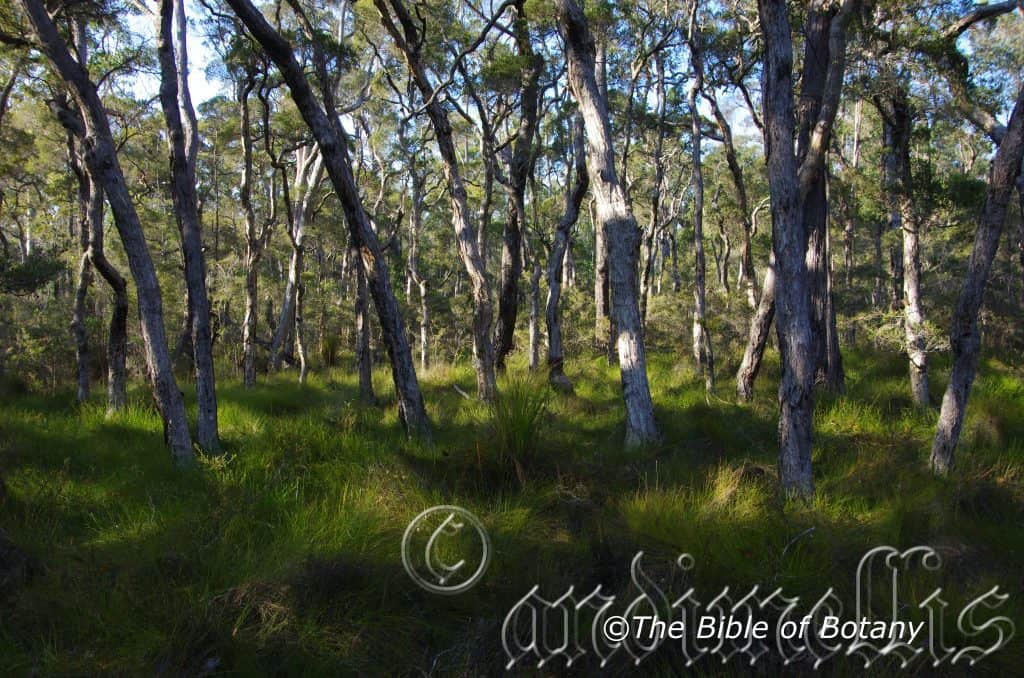
The Pinnacle NSW

The Pinnacle NSW

The Pinnacle NSW
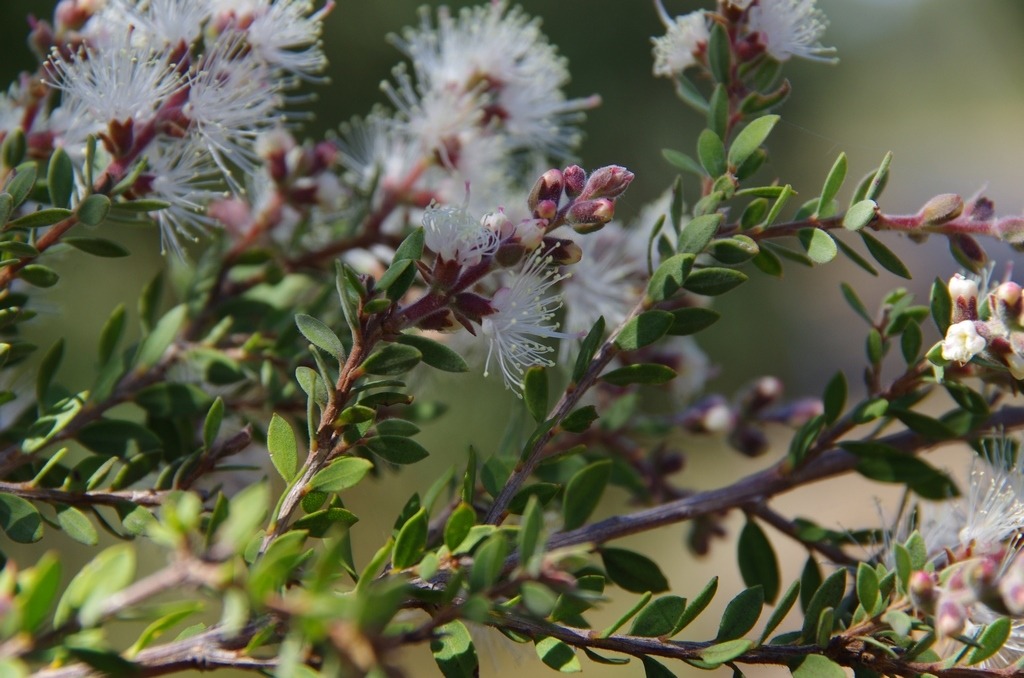
The Pinnacle NSW

The Pinnacle NSW
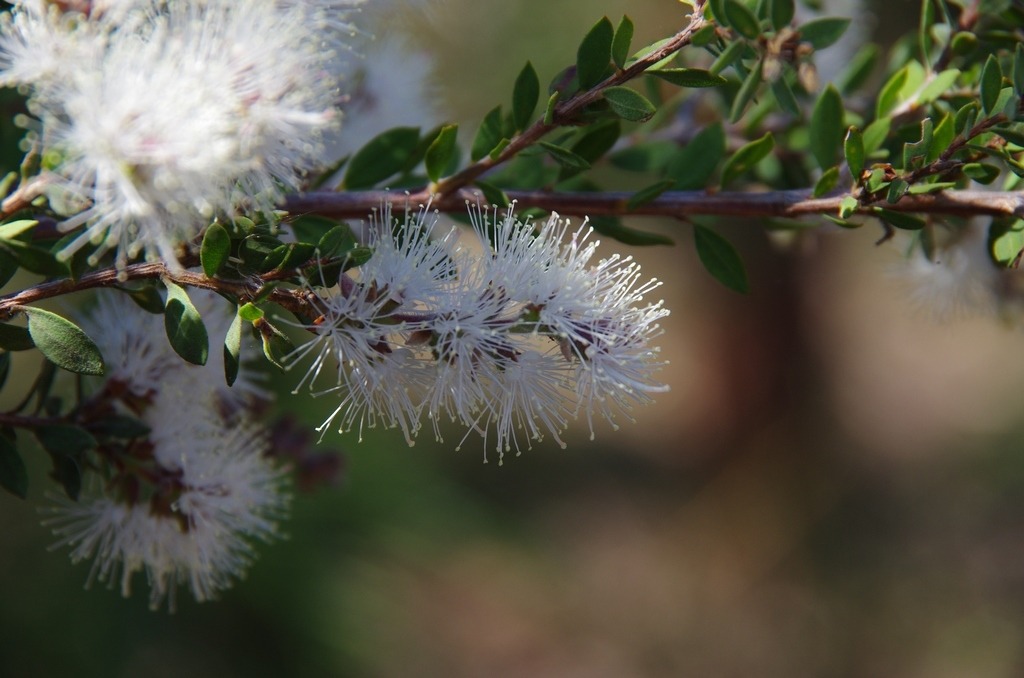
The Pinnacle NSW
Melaleuca sieberi
Classification:
Division: Magnoliophyta
Class: Magnoliopsida
Superorder: Rosane
Order: Myrtales
Family: Myrtaceae
Subfamily: Myrtoideae
Tribe: Melaleuceae
Genus: From Melas, which is Ancient Greek for black and Leukos, which is Ancient Greek for white. It refers to plants, which usually have white papery barks that are often charred by fire thus the bark is black and white. (Presently still widely known as Callistemon sieberi.)
Specie: Is named in honour of Franz Wilhelm Sieber; 1789-1844, who was a Prague botanist who travelled around the world collecting plants, which included venturing into New South Wales in 1823.
Sub species:
Common Name:
Distribution:
Melaleuca sieberi is mainly found east of the Great Dividing Range south from Woodgate on the Burrum coast in central coastal Queensland to Bankstown in Sydney in central coastal New South Wales. There are several disjunct populations west of the Great Dividing Range near Widbury, Warwick, and Mount Yaven in the Ellerslie Nature Reserve with an isolated population in far north Queensland at Mareeba.
https://avh.ala.org.au/occurrences/search?taxa=Melaleuca+sieberi#tab_mapView
Habitat Aspect Climate:
Melaleuca sieberi prefers full sun to light dappled shade. It usually grows in wet coastal woodland heaths. The altitude ranges from 5 meter ASL to 400 meters ASL.
The temperatures range from minus 2 degree in August to 38 degrees in January.
The rainfalls range from lows of 800mm to an average of 2600mm.
Soil Requirements:
Melaleuca sieberi prefers light silts to light fatty clays. The soils are usually derived from accumulated sands or at times decomposed sandstones. The soils pH. ranges from 5pH to 6.6pH. It tolerates waterlogged soils especially those soils that have seasonally high water tables. Non saline soils to moderately saline soils are tolerated.
Height & Spread:
Wild Plants: 2m to 5m by 2m to 3m.
Characteristics:
Melaleuca sieberi grows as a small multi trunked tree with pale grey to mid-drab grey bark. The thick outer paper bark peels in flakes as the trunk expands to reveal an off white to pale grey inner layer that is corky and spongy to touch. The branchlets are pale creamy fawn to creamy pink and tightly wrapped around the stems, while the newest shoots are grass-green and glabrous or are sparsely covered in short white puberulent hairs. The branches are often beautifully twisted and gnarled, flexuosus and resist breaking.
Melaleuca sieberi‘s alternate leaves are narrow elliptical to narrow lanceolate and measure 4mm to 15mm in length by 1mm to 4mm in width. The petioles measure 0.5mm to 1.5mm in length. The bases are cuneate while the apexes are acute. The concolourous laminas are blue-green, dull and glabrous. The immature leaves are semi glossy. The laminas are flat and slightly twisted while the margins are entire. The mid vein and lateral veins are obscure on both laminas. The leaves are not aromatic when crushed.
The conflorescences of Melaleuca sieberi are born from the terminals. The flower terminal shoots do not grow out by the time the stamens have fully opened. The rachis is densely covered in white pulverulent hairs and measures 10mm to 60mm in length by 20mm to 40mm in diameter. The flowers are usually born singularly with in each bract. There are 5 to 15 individual flowers along the spike, which measure 10mm to 18mm in length. The 5 deltoid, maroon sepals are sparsely covered in short and long, soft, white hirsute hairs and measure 1.5mm to 2.5mm in length. The hypanthia and sepals are grass-green tinged red and are glabrous. The 5 obtuse petals are usually white or at times pastel pink with a hyaline margin and measure 2mm to 3mm in length by 2mm to 3mm in width.
The pastel pink to pale pink stamens are the most prominent part of the flowers. The 11 to 25 stamens on each claw which measures 2mm to 3mm in length. The filaments measure 12mm to 15mm in length. The anthers which are white, cream, pale pink to deep pink or purple and measure less than 0.5mm in length.
The pastel green measures 8mm to 10mm in length, while the ovary divides into 3 locules. The base of the style is surrounded by the nectaries. The arrowroot to strongly honey scented flowers, appear over a long period of time. The flowers appear from November to February.
Melaleuca sieberi‘s fruits are cupular capsules. The capsules measure 3mm to 5mm in length by 3mm to 5mm in diameter. The enclosed orifice measures 2mm to 3mm in diameter. The coriaceous capsule is dull creamy-fawn and glabrous. The capsules may contain hundreds of seeds and chaff. The seeds are brown and look swollen compared to the chaff. The sepals are usually persistent on the ripe capsules.
Wildlife:
Melaleuca sieberi supports myriads of native bees, native flies, native beetles and butterflies when in flower. It also supports small and medium honeyeaters which scurry over the flowers and seek protection from the bushy foliage. The sap sucking bug Chionaspis inday is often seen on the leaves but causes very little damage.
Cultivation:
Melaleuca sieberi is an excellent gnarled branched small tree with a dense crown for native gardens. It is suitable on all types of sandy loams to light clays and is most suitable for small, medium and large gardens close to the coast or inland in warm temperate, sub tropical or tropical gardens or semi-arid gardens. As garden subjects they will grow from 4 meters to 5 meters in height by 4 meter to 5 meters in diameter when grown in the open.
It is cold tolerant to temperatures to minus 1 degree once established but are very slow to establish themselves and will suffer some tip burning. It is quite drought tolerant once established but have a tendency to drop leaf in the early and middle stages of growth if dry periods are prolonged. It will commence flowering from an early age even from seed. I have seen well grown trees with good flowers at only 3 or 4 years of age. Melaleuca sieberi reacts favourably to a good fertilizing regime producing a lot more flowers than trees that are not fertilized.
It is very fast growing especially with a good fertilizing program and with a little moisture growing more than 1 meter a year.
Try using them in an informal or formal manner in front of the house, commercial or industrial buildings. Placed in from the corner they will breaking up rigid lines and soften the structures overall appearance giving a very formal look. Randomly planted with curves they give an informal look that exhibit striking twists in the branches.
Use taller narrow type of trees with finer or broader leaves and plant them together with unequal gaps and free flowing curves to accentuate height and depth in front of large factories can really bring a park like scenario, peace and serenity to the work place. Use wider spacing where the building in the background is seen as dappled specks will soften it and where it is planted closer together will give a bolder contrast between the two. The dwarf golden form of Melaleuca bracteata is particularly good where the buildings have a dark exterior and a strong contrast is required between the plants for most of the year or Melaleuca citrina can be used where a bold flowering contrast is warranted for many months of the year. The red flowers of citrinus during spring and early summer will be prolonged when planted beneath Melaleuca sieberi. Coupled with the thick bark will give all year pleasure.
On high set homes this can be achieved by planting 1 as a tree either in the center of the yard or to one corner with 2 or 3 shrubs like Melaleuca citrinus, Melaleuca bracteata golden gem and Melaleuca pearsonii near the base as shrubs or ground covers to give extra height and width to the garden a lot of colour when in flower and contrasting foliages for the rest of the season.
It can be regularly tip pruned if a tall hedge is required. This can be maintained with regular pruning and planting closer together with spacing at 2.5 meters. They respond very well to tip pruning.
Melaleuca sieberi would make ideal bonsai plants. It would also make very interesting specimens if planted in large white or deep coloured pats and urns.
Melaleuca sieberi would make ideal bonsai plants.
Propagation:
Seeds: Melaleuca sieberi seeds can be sown directly into a seed raising mix. Do not cover the seeds. Press them into the mix. Place the tray in a warm sunny position. When the seedlings are 15mm to 20mm tall, prick them out and plant them into 20mm native tubes using a good organic mix.
When the seedlings are 70mm to 90mm tall, prick them out and plant them into 50mm native tubes using a good organic mix or plant them out into their permanent positions.
Once the seedlings reach 150mm to 200mm in height they can be planted out into their permanent position.
Cuttings: Cuttings must be used if flowering in the following season are required.
Use 100mm to 150mm long half ripened material when growing from cuttings from the present season’s mature growth. Take them in warmer months of the year. Remove half the leaves from the bottom section being careful not to tear the bark.
1 Prepare the cutting mix by adding one third sharp clean river sand, one third peat and one third perlite. These ingredients are sterilize,
2 Select good material from non diseased plants,
3 Select semi green stems for cuttings. Look for a stem with two or three nodes,
4 Place the cutting on a flat, hard surface, and make a clean cut down one side of the cutting at the base for 10mm with a sharp sterile knife or razor blade. – This scarification of the node will increase the chances of roots emerging from this spot. Now remove all but one or two the leaves, leaving the apex leaves in tact. If the leaves are very large in proportion to the stem, cut off the apical halves.
5 Fill a saucer with water, and place a little medium strength rooting hormone into another container like a milk bottle top. Dip the node end of the cutting into the water and then into the rooting hormone. Tap off any excess hormone,
6 Use a small dipple stick or old pencil to poke a hole into the soilless potting mix. Ensure the hole is slightly larger than the stem diameter and be careful not to wipe the rooting hormone off the cuttings base, place the cuttings in a pattern ensuring the cuttings are not touching each other,
7 I like to place the pots in Plastic bags to help maintain temperature and moisture. Place in a semi shaded place like under 50mm shade cloth.
8 When the cuttings have struck, open the bag to allow air circulation for a few days to a week,
9 Once hardened off remove the cuttings from the bag and allow to further hardening for a few more days,
10 Transplant into a good potting mix to grow on.
Fertilize using seaweed, fish emulsion or organic chicken pellets soaked in water on an alternate basis. Fertilize every two months until the plants are established then twice annually in early September or March to maintain health, vitality and better flowering.
Further Comments from Readers:
Hi reader, it seems you use The Bible of Botany a lot. That’s great as we have great pleasure in bringing it to you! It’s a little awkward for us to ask, but our first aim is to purchase land approximately 1,600 hectares to link several parcels of N.P. into one at The Pinnacles NSW Australia, but we need your help. We’re not salespeople. We’re amateur botanists who have dedicated over 30 years to saving the environment in a practical way. We depend on donations to reach our goal. If you donate just $5, the price of your coffee this Sunday, We can help to keep the planet alive in a real way and continue to bring you regular updates and features on Australian plants all in one Botanical Bible. Any support is greatly appreciated. Thank you.
In the spirit of reconciliation we acknowledge the Bundjalung, Gumbaynggirr and Yaegl and all aboriginal nations throughout Australia and their connections to land, sea and community. We pay our respect to their Elders past, present and future for the pleasures we have gained.
Melaleuca spathulata
Classification:
Division: Magnoliophyta
Class: Magnoliopsida
Superorder: Rosane
Order: Myrtales
Family: Myrtaceae
Subfamily: Myrtoideae
Tribe: Melaleuceae
Genus: From Melas, which is Ancient Greek for black and Leukos, which is Ancient Greek for white. It refers to plants, which usually have white papery barks that are often charred by fire thus the bark is black and white.
Specie: From Spatula, which is Latin to have the shape of a spoon. It refers to leaves or phyllodes, which somewhat resembles a spoon or ladle.
Sub species:
Common Name:
Distribution:
Melaleuca spathulata is found from the Stirling Range to the Eyre districts in the far south west corner of Western Australia.
https://avh.ala.org.au/occurrences/search?taxa=Melaleuca+spathulata#tab_mapView
Habitat Aspect Climate:
Melaleuca spathulata prefers full sun to light dappled shade. It grows on low lying seasonal moist to wet alluvial flats to depressions on low ridges and hills. The altitude ranges from 5 meter ASL to 350 meters ASL.
Temperatures range from 3 degree in August to 40 degrees in January.
Rainfalls range from lows of 400mm to an average of 1000mm.
Soil Requirements:
Melaleuca spathulata prefes light silts to light fatty clays. The soils are usually derived from accumulated sands or at times decomposed sandstones. The soils pH. ranges from 5pH to 6.6pH. It tolerates waterlogged soils especially those soils that have seasonally high water tables. Non saline soils to moderately saline soils are tolerated.
Height & Spread:
Wild Plants: 1m to 2m by 1m to 2.2m.
Characteristics:
Melaleuca spathulata grows as a small variable shrub with creamy pink to pinkish paper bark. The bark on the stems and branchlets are thick and tightly appressed. The newest shoots are crimson-red and are covered in short white puberulent to hirtellous hairs. The branches have a twisted contorted habit and the plants vary considerably from having an open habit where it is in the dappled light to densely foliaged where it is in full sun.
Melaleuca spathulata’s clustered whorls of leaves are spathulate to obovate and measure 6mm to 9mm in length by 3.5mm to 5.5mm in width. The base is attenuate to cuneate while the apex is broad acute to obtuse with a mucronate point. The coriaceous concolourous laminas are deep blue-green to deep sea-green, dull and glabrous. It is sparsely covered in white pulverulent to hirtellous hairs. The mid vein is slightly prominent on the lower lamina and is not visible on the upper lamina. The margins are entire and flat. The deep red to burgundy petiole measures 0.5mm to 1mm in length.
The immature leaves are bright pale green to mid grass-green and moderately covered in white appressed pulverulent hairs.
The inflorescences of Melaleuca spathulata are born singularly from the terminals. The flower terminal shoots do not grow out before all the stamens have bloomed. The rachis is glabrous to covered in white puberulent to hirtellous hairs and measures 20mm to 24mm in diameter. The flowers are born singularly with in each bract. There are 24 to 28 individual flowers. The individual flowers measure 3mm to 5mm in diameter. The 5 triangular calyx lobes measure 1 to 1.2mm in length by 2.5mm to 3mm in width. The glabrous calyx tube or hypanthium is deep green while the calyx lobes are cream or pale green turning deep red-brown at the apex. The 5 obtuse to oblong petals are creamy green and measure 1.5mm to 2.2mm in length by 2mm to 2.2mm in width. It is persistent while the stamens fully develop. The tips do not grow out prior to anthesis.
The mauve, pale pink to deep pink or purple stamens are the most prominent part of the flowers. The filaments measure 9mm to 11mm in length. The anthers which are creamy yellow, measure less than 0.4mm in length.
The long, slender, mauve, pale pink to deep pink or purple style measures 8mm to 10mm in length. The base of the style is surrounded by the nectaries. The arrowroot to strongly honey scented flowers, appear from early late October to early December.
Melaleuca spathulata‘s fruits are broad globose, glabrous capsules. The tightly packed capsules measure 2.5mm to 3.5mm in length by 3mm to 3.2mm in diameter. The deeply enclosed orifice measures about 1mm in diameter. The dull, coriaceous capsules turn creamy-fawn and glabrous when ripe. The capsules may contain hundreds of seeds and chaff. The brown seeds measure 0.6 to 0.8mm in length and look swollen compared to the chaff. The calyx lobes are not persistent on the hypanthia.
Wildlife:
Melaleuca spathulata supports myriads of native bees, native flies, native beetles and butterflies when in flower. It also supports small honeyeaters which scurry over the flowers and seek protection from the bushy foliage.
Cultivation:
Melaleuca spathulata is an excellent bushy medium size shrub for native gardens. It is suitable on all types of sandy loams to medium clays and are most suitable for small, medium and large gardens close to the coast in warm temperate or sub tropical or semi-arid gardens. As garden subjects they will grow from 2.2 meters to 2.5 meters in height by 1.2 meter to 2 meters in diameter when grown in the open. It is cold tolerant to temperatures to minus 4 degrees once established. It is quite drought tolerant. This is another Melaleuca that is worth while trying on the east coast which originates from the west. They will commence flowering from an early age even from seed.
It is very fast growing especially with a good fertilizing program which should be applied shortly after flowering. They can be regularly tip pruned if a small hedge is required or if a small gnarled tree is the appearance wanted in a garden around a swimming pool, sunny courtyard small rockeries, heaths or wallum scenarios. This can be maintained with regular pruning and planting closer together with spacing of 1 meter for a hedge or sparsely planted for the gnarled tree affect. They respond very well to tip pruning, recovering quickly and increasing the number of terminal points for flowers in the following season.
They can be used for light dappled shade when grown as a small tree. It is an excellent tree for areas that have good drainage on sandy to heavy clay soils. When planting the plants in a heath scene scatter them using at least one in the foreground so the flowers can be fully enjoyed.
When you design a miniature heath garden, use contours to display the plants to their best. Plant some as small shrubs in the fore ground with scattered plants in the mid ground and back ground as trees. Flat plains give a feeling of expansive flatness with the hills in the distance. Another method would be to cover the hills in the distance with annuals that have soft grey foliage. This again would effectively represent the haze experienced in real life. Use small tussock grasses or Lomandra species adjacent to Melaleuca spathulata to give them height while at the same time making the appearance of a stream or rill. Prune some of the plants so they remain very shorter and others so that they have height in order to give the scene depth and height.
Another idea would be to prune them as trees to give a real scene of harshness and windswept plains. This can be achieved easily by pruning harder on one side to imitate prevailing winds from one direction. Another tree that could be incorporated would be Leptospermum polygalifolium. The leaves are different in shape, colour and size. The barks are different as are the flower colours and flowering time. Clumped Hibbertia species, viola species, and smaller Anigozanthus species with smaller Plectranthus species give contrast to foliage with a small or medium size would make a great scene.
Place them near old stumps and roots to make the stumps or roots look larger. Select an area of ground and let your hair down and be imaginative and this is the plant that may just change your life. Remember this plant is rather large for this type of garden so be sparingly with the other plants when planting and remember that deserts and heaths are rolling flat plains not steep hills so it is best to use a gentle slope or a basin with a small pool at the bottom. A billabong affect is the go, not a waterfall or cascades.
A single specimen planted in a warm sunny courtyard with a large rock or stump can break up hard lines and add a lot of interest. Try using 2 different plants of similar size like Melaleuca spathulata and Leptospermum polygalifolium planted close together and have their branches intermingle together. Another method would be to plant them a meter apart and have them grow into each other.
They make good bonsai plants and are easy to work. They also make very good tub plants for the patio or around the pool and B.B.Que area.
Propagation:
Seeds: Melaleuca spathulata seeds can be sown directly into a seed raising mix. Do not cover the seeds. Press them into the mix. Place the tray in a warm sunny position. When the seedlings are 15mm to 20mm tall, prick them out and plant them into 20mm native tubes using a good organic mix.
When the seedlings are 70mm to 90mm tall, prick them out and plant them into 50mm native tubes using a good organic mix or plant them out into their permanent positions.
Once the seedlings reach 150mm to 200mm in height they can be planted out into their permanent position.
Cuttings: Cuttings must be used if flowering in the following season are required.
Use 100mm to 150mm long half ripened material when growing from cuttings from the present season’s growth. Take them in warmer months of the year. Remove half the leaves from the bottom section being careful not to tear the bark.
1 Prepare the cutting mix by adding one third sharp clean river sand, one third peat and one third perlite. These ingredients are sterilize,
2 Select good material from non diseased plants,
3 Select semi green stems for cuttings. Look for a stem with two or three nodes,
4 Place the cutting on a flat, hard surface, and make a clean cut down one side of the cutting at the base for 10mm with a sharp sterile knife or razor blade. – This scarification of the node will increase the chances of roots emerging from this spot. Now remove all but one or two the leaves, leaving the apex leaves in tact. If the leaves are very large in proportion to the stem, cut off the apical halves.
5 Fill a saucer with water, and place a little medium strength rooting hormone into another container like a milk bottle top. Dip the node end of the cutting into the water and then into the rooting hormone. Tap off any excess hormone,
6 Use a small dipple stick or old pencil to poke a hole into the soilless potting mix. Ensure the hole is slightly larger than the stem diameter and be careful not to wipe the rooting hormone off the cuttings base, place the cuttings in a pattern ensuring the cuttings are not touching each other,
7 I like to place the pots in Plastic bags to help maintain temperature and moisture. Place in a semi shaded place like under 50mm shade cloth.
8 When the cuttings have struck, open the bag to allow air circulation for a few days to a week,
9 Once hardened off remove the cuttings from the bag and allow to further hardening for a few more days,
10 Transplant into a good potting mix to grow on.
Fertilize using seaweed, fish emulsion or organic chicken pellets soaked in water on an alternate basis. Fertilize every two months until the plants are established then twice annually in early September or March to maintain health, vitality and better flowering.
Further Comments from Readers:
Hi reader, it seems you use The Bible of Botany a lot. That’s great as we have great pleasure in bringing it to you! It’s a little awkward for us to ask, but our first aim is to purchase land approximately 1,600 hectares to link several parcels of N.P. into one at The Pinnacles NSW Australia, but we need your help. We’re not salespeople. We’re amateur botanists who have dedicated over 30 years to saving the environment in a practical way. We depend on donations to reach our goal. If you donate just $5, the price of your coffee this Sunday, We can help to keep the planet alive in a real way and continue to bring you regular updates and features on Australian plants all in one Botanical Bible. Any support is greatly appreciated. Thank you.
In the spirit of reconciliation we acknowledge the Bundjalung, Gumbaynggirr and Yaegl and all aboriginal nations throughout Australia and their connections to land, sea and community. We pay our respect to their Elders past, present and future for the pleasures we have gained.
Melaleuca squamea
Classification:
Division: Magnoliophyta
Class: Magnoliopsida
Superorder: Rosane
Order: Myrtales
Family: Myrtaceae
Subfamily: Myrtoideae
Tribe: Melaleuceae
Genus: From Meas, which is Ancient Greek for black and Leukes, which is Ancient Greek for white. It refers to plants, which usually have white papery barks that are often charred by fire thus the bark is black and white.
Specie: From Squarrosus, which is Latin for a scale or to be scale like. It probably refers to the small leaves, which appear somewhat like scales along the stems.
Sub species:
Common Name: Scented Paper Bark.
Distribution:
Melaleuca squamea is found east of the Great Dividing Range south from Sydney to western Sydney in New South Wales South. There are also a few outlying populations on the far north coast on the Tweed River and inland in the Barren and the Piliga district.
In Victoria it is found south and west from Geelong along the coast to near Kingston in coastal South Australia. It is also found in the Grampians and near Stawell in far south west Victoria. There is another population south of Adelaide down to Innes National Park and Kangaroo Island in South Australia.
https://avh.ala.org.au/occurrences/search?taxa=Melaleuca+squamea#tab_mapView
Habitat Aspect Climate:
Melaleuca squamea prefers full sun to light dappled shade. It grows on low lying heaths, wet open sclerophyll forests in shallow depressions or where the water tables are close to the surface. The altitude ranges from 5 meter ASL to 1750 meters ASL.
The temperatures range from minus 5 degree in August to 38 degrees in January.
The rainfalls range from lows of 440mm to an average of 1200mm.
Soil Requirements:
Melaleuca squamea prefers to grow on light silts to light fatty clays. The soils are usually derived from decomposed sandstones, shales or granites. The soils pH. ranges from 4.5pH to 6.6pH. It tolerates seasonal waterlogged soils. Non saline soils to moderately saline soils are tolerated.
Height & Spread:
Wild Plants: 2m to 3m by 1.5m to 2m.
Characteristics:
Melaleuca squamea grows as a small erect shrub with pale pinkish to reddish tightly appressed spongy to corky bark. The branchlets are rusty brown to rusty grey while the youngest shoots are rusty-brown and densely covered in white villous hairs. The branches have an upright habit. The branches and branchlets are rather supple.
Melaleuca squamea‘s alternate crowded leaves are lanceolate and measure 5mm to 12mm in length by 1.5mm to 3mm in width. The base is rounded while the apex is broadly acute. The concolourous laminas are deep grass-green and covered in white to pale grey villose hairs. Immature leaves are lime green. There are 3 to 5 very faint longitudinal veins. The margins are entire and flat. The orange to red petiole measures 1mm to 2mm in length. The leaves are not aromatic when crushed.
The inflorescence of Melaleuca squamea is a single spike born from the terminals or special lateral shoots. The flower terminal shoots grow out immediately after the stamens die. The rachis is covered in white villose hairs and measures 18mm to 24mm long by 28mm to 36mm in diameter. The flowers are born singly from each bract. There are 10 to 14 individual flowers in a globular head. They measure 17mm to 20mm in diameter. The broad obtuse calyx has a mucronate point and is pale creamy green. They measure 6mm in length by 7mm in width and have 3 to 5 distinctly visible veins. The 5 obtuse petals are pale pink, mauve to deep purple and measure 2.5mm to 3mm in length by 3mm to 3.2mm in width. The petals are persistent while the stamens fully develop only falling after the last stamens are rejected.
The pale pink, mauve to deep purple stamens are the most prominent part of the flowers. The 7 to 9 pale pink, mauve to deep purple stamens are on each of the 5 claws. The claws measure 0.5 to 1.2mm in length while the filaments measure 8mm to 10mm in length. The anther’s measures 1mm to 0.5mm to 1mm in length while the pollen is white.
The long, slender, pale pink, mauve to deep purple style measures 10mm to 12.5mm in length, while the stigma has 5 locules. The base of the style is surrounded by the nectaries. The scent varies considerably from honey scented to arrowroot or sweetly perfumed. The flowers appear from early mid-September to mid-November.
Melaleuca squamea‘s fruit is a sessile ovoid capsule. The capsules measure 4.5mm to 5.5mm in length by 5mm to 7mm in diameter. The orifice is enclosed and measures 2.5mm to 3mm in diameter. The woody capsule is dull pale grey to dull grey and glabrous. The capsules contain seeds and chaff mixed together. The seeds are brown and are longer and thicker than the chaff. The calyx lobes are not persistent on the hypanthia.
Wildlife:
Melaleuca squamea supports myriads of native bees, native flies, native beetles and butterflies when in flower.
It also supports small honeyeaters which include the brown Honeyeater Lichmera indistincta and the Eastern spinebill Acanthorhynchus tenuirostris which are often seen scurrying over the flowers and seeking protection amongst the dense foliage from larger more aggressive nectar eaters.
Cultivation:
Melaleuca squamea is a beautiful upright bushy shrub for native gardens. It is suitable on all types of sandy loams to medium clays and are most suitable for small, medium and large gardens close to the coast or high in the mountains in cool temperate or cool sub tropical gardens. As garden subjects they will grow from 2.5 meters to 3 meters in height by 1.5 meters to 2 meters in diameter as a shrub when grown in the open.
It can be regularly tip pruned if a smaller hedge is required. This can be maintained with regular pruning in the early years and planting closer together with spacing of 1.5 meters. They respond very well to tip pruning, recovering quickly and increasing the number of terminal points for flowers in the following season.
It is cold tolerant to temperatures to minus 6 degrees once established. They will commence flowering from an early age even from seed. I have seen well grown shrubs with good flowers at only 3 and 4 years of age from seed.
It is very fast growing especially with a good fertilizing program and with a little moisture growing nearly 1 meter in their first year. To avoid stress, give the plants a double dose of our recommended fertilizer following flowering and a good deep soaking mid-way through the dry season if good rains have not fallen. This will prevent further stress and hold them over for several more months.
Place 3 or 4 of them off center of a large rockery with other large or finer leaf ground covers and very small shrubs in the front. Plants with white or yellow flowers can be used where the pink flowering forms are used. This will lead yours eyes directly to the array of vivid pink and purple flowers.
Ensure that the whole plant or at least most of it is on display from most sections of the garden as the flowers and bark are both very attractive.
When mass or group planting Melaleuca squamea, use curves and irregular patterns in the garden beds so they can be viewed from different angles around the garden. Plant them at 12 meters to 15 meters so that their silhouette is fully appreciate. The scent from the flowers is a real highlight of this plant so plant them so the scent wafts through the house or around your favourite place in the garden.
Propagation:
Seeds: Melaleuca squamea seeds can be sown directly into a seed raising mix. Do not cover the seeds. Press them into the mix. Place the tray in a warm sunny position. When the seedlings are 15mm to 20mm tall, prick them out and plant them into 20mm native tubes using a good organic mix.
When the seedlings are 70mm to 90mm tall, prick them out and plant them into 50mm native tubes using a good organic mix or plant them out into their permanent positions.
Once the seedlings reach 150mm to 200mm in height they can be planted out into their permanent position.
Fertilize using Seaweed, fish emulsion or a half strength solution of organic chicken pellets soaked in water on an alternate basis. Fertilize every few months.
Cuttings: Cuttings must be used if flower scent is important, form or flowering in the following season is required. Cuttings must be used if flowering in the following season are required.
Use 100mm to 150mm long half ripened material when growing from cuttings from the present season’s growth. Take them in warmer months of the year. Remove half the leaves from the bottom section being careful not to tear the bark.
1 Prepare the cutting mix by adding one third sharp clean river sand, one third peat and one third perlite. These ingredients are sterilize,
2 Select good material from non diseased plants,
3 Select semi green stems for cuttings. Look for a stem with two or three nodes,
4 Place the cutting on a flat, hard surface, and make a clean cut down one side of the cutting at the base for 10mm with a sharp sterile knife or razor blade. – This scarification of the node will increase the chances of roots emerging from this spot. Now remove all but one or two the leaves, leaving the apex leaves in tact. If the leaves are very large in proportion to the stem, cut off the apical halves.
5 Fill a saucer with water, and place a little medium strength rooting hormone into another container like a milk bottle top. Dip the node end of the cutting into the water and then into the rooting hormone. Tap off any excess hormone,
6 Use a small dipple stick or old pencil to poke a hole into the soilless potting mix. Ensure the hole is slightly larger than the stem diameter and be careful not to wipe the rooting hormone off the cuttings base, place the cuttings in a pattern ensuring the cuttings are not touching each other,
7 I like to place the pots in Plastic bags to help maintain temperature and moisture. Place in a semi shaded place like under 50mm shade cloth.
8 When the cuttings have struck, open the bag to allow air circulation for a few days to a week,
9 Once hardened off remove the cuttings from the bag and allow to further hardening for a few more days,
10 Transplant into a good potting mix to grow on.
Fertilize using seaweed, fish emulsion or organic chicken pellets soaked in water on an alternate basis. Fertilize every two months until the plants are established then twice annually in early September or March to maintain health, vitality and better flowering.
Further Comments from Readers:
Hi reader, it seems you use The Bible of Botany a lot. That’s great as we have great pleasure in bringing it to you! It’s a little awkward for us to ask, but our first aim is to purchase land approximately 1,600 hectares to link several parcels of N.P. into one at The Pinnacles NSW Australia, but we need your help. We’re not salespeople. We’re amateur botanists who have dedicated over 30 years to saving the environment in a practical way. We depend on donations to reach our goal. If you donate just $5, the price of your coffee this Sunday, We can help to keep the planet alive in a real way and continue to bring you regular updates and features on Australian plants all in one Botanical Bible. Any support is greatly appreciated. Thank you.
In the spirit of reconciliation we acknowledge the Bundjalung, Gumbaynggirr and Yaegl and all aboriginal nations throughout Australia and their connections to land, sea and community. We pay our respect to their Elders past, present and future for the pleasures we have gained.
Melaleuca squarrosa
Classification:
Division: Magnoliophyta
Class: Magnoliopsida
Superorder: Rosane
Order: Myrtales
Family: Myrtaceae
Subfamily: Myrtoideae
Tribe: Melaleuceae
Genus: From Melas, which is Ancient Greek for black and Leukos, which is Ancient Greek for white. It refers to plants, which usually have white papery barks that are often charred by fire thus the bark is black and white.
Specie: From Squarrosus, which is Latin for scurfy or scaly. It refers to structures or organs, which is covered in scurfy like scales.
Sub species:
Common Name: Square leaf Paper Bark Scented Paperbark.
Distribution:
Melaleuca squarrosa is found on and east of the Great Dividing Range from south of Sydney in New South Wales to Nowa Nowa in Victoria. In Victoria it is found in several disjunct populations to the north east near Mansfield and west to the Grampians, on the Naracoote Coastal plains to Kingston in south eastern South Australia.
It is found south from Wilsons Promontory on all the major Islands in Bass Strait and northern Tasmania down the west coast and back across the south west and east to Hobart.
https://avh.ala.org.au/occurrences/search?taxa=Melaleuca+squarrosa#tab_mapView
Habitat Aspect Climate:
Melaleuca squarrosa prefers full sun to light dappled shade. It grows on low lying heaths, in dry sclerophyll forests in wet situations along creeks, streams, rivers or permanently wet drainage lines. The altitude ranges from 5 meter ASL to 850 meters ASL.
The temperatures range from minus 6 degree in August to 32 degrees in January.
The rainfalls range from lows of 440mm to an average of 3200mm.
Soil Requirements:
Melaleuca squarrosa prefers sandy loams to gravelly medium clays. The soils are usually derived from decomposed basalts, sandstone, shale, laterites or granites. The soils pH. ranges from 4.5pH to 6.6pH. It tolerates seasonal waterlogged soils and high water tables. Non saline soils to very saline soils are tolerated as are salt laden winds.
Height & Spread:
Wild Plants: 5m to 12m by 6m to 12m.
Characteristics:
Melaleuca squarrosa grows as a small spreading tree with white to pale grey. The bark on the branches is white to pale creamy grey. The branchlets are white to pale creamy grey and tightly wrapped around the stems and spongy. The newest shoots are grey-green and glabrous to sparsely covered in white hispid hairs. The branches have an upright habit and the plants vary considerably from being large bushy erect shrubs to small trees with a gnarled trunked tree. The trunk is heavily pitted and furrowed. Branches and branchlets are rather supple.
Melaleuca squarrosa‘s opposite or nearly opposite leaves are ovate to broad ovate and measure 5mm to 15mm in length by 4mm to 7mm in width. They verge on being decussate. The base is truncate to slightly cordate on some specimens while the apex is broadly acute to pungently acuminate. The leaves are appressed at the base and become more decurve as they approach the apex. The concolourous laminas are deep lime green to grass-green, semi glossy, coriaceous, glabrous or sparsely covered in white hispid hairs more so near the apex of new stems. Immature leaves are bright pale green. It is dull. There are 5 to 7 longitudinal veins which are faintly visible on the lower lamina and are not visible on the upper lamina. The margins are entire and flat. The petiole is sessile to 1 mm in length. The leaves are not aromatic when crushed.
The inflorescence of Melaleuca squarrosa is a single compact cylindrical spike born from the terminals. The flower terminal shoots grow out prior to the last flowers opening. The rachis is densely covered in white villose hairs and measures 18mm to 40mm in length. The flowers are born in threes with in each bract. There are 30 to 54 individual flowers along the spike which measure 18mm to 22mm in diameter. The individual flowers measure 16mm to 20mm in diameter. The 5 lanceolate calyx lobes measure 0.6 to 0.8mm in length. The calyx tube is grass-green to emerald green while the calyx is pale green and glabrous. The 5 semi ovate to circular petals are white to creamy white sometimes tinged pink and measure 1.8mm to 2mm in length. It is persistent while the stamens fully developed.
The white, cream or pale lemon yellow stamens are the most prominent part of the flowers. The 6 to 12 white to cream stamens are on each of the 5 claws and are sparsely covered in white hirtellous hairs. The claws measure 1.5mm to 2mm in length. The filaments measure 8mm to 10mm in length. The anthers measure 0.4mm to 0.6mm in length while the pollen is creamy white.
The short, stout, slender, white to cream style measures 6mm to 8mm in length, while the stigma has 5 locules. The base of the style is surrounded by the nectaries. The highly fragrantly scented flowers appear over a long period of time. The sweetly scented flowers appear from early December to early February.
There is also a form around with deep lime green flowers. The flowers are 30mm in length by 22mm in diameter. I am not aware of the plants growth habits but the flowers differ apart from the colour in that they have deep lime green, obtuse petals and that there are 4 to 5 stamens per bundle. The style is deep green and measures 1mm to 2mm in length.
Melaleuca squarrosa‘s fruit is a sessile ovoid capsule. The capsules measure 3.6mm to 4mm in length by 4mm to 4.4mm in diameter. The orifice is inserted and measures 3mm in diameter. The coriaceous capsule is dull creamy-fawn to dull pale grey and glabrous. The capsules contain seeds and chaff mixed together. The seeds are grey-brown and are longer and thicker than the chaff. The calyx lobes are not persistent on the hypanthia.
Wildlife:
Melaleuca squarrosa supports myriads of native bees, native flies, native beetles and butterflies when in flower.
It also supports small honeyeaters which include the brown Honeyeater Lichmera indistincta and the Eastern spinebill Acanthorhynchus tenuirostris which are often seen scurrying over the flowers and seeking protection amongst the dense foliage from larger more aggressive nectar eaters.
Cultivation:
Melaleuca squarrosa is a beautiful but very variable broad spreading bushy medium size tree or large spreading shrub for native gardens. It is suitable on all types of sandy loams to medium clays and are most suitable for small, medium and large gardens close to the coast in cool temperate to cool sub tropical gardens. As garden subjects they will grow from 4 meters to 5 meters tall by 6 meters to 8 meters wide as a shrub or 8 meters to 10 meters tall by 14 meters to 18 meters wide as a tree. It is cold tolerant to temperatures to minus 8 degrees once established. It will commence flowering from an early age even from seed. I have plants in Nana Glen at 3 years of age and 2 meters high in flower.
It is very fast growing especially with a good fertilizing program and with a little moisture growing more than 1 meter a year. To avoid stress, give the plants a double dose of our recommended fertilizer following flowering and a good deep soaking mid-way through the dry season if good rains have not fallen. This will prevent further stress and hold them over for several more months.
It can be used for light dappled shade when grown as a small tree. It is an excellent tree for areas that have drainage problems on sandy soils to heavy clay soils where there are seasonal problems with the water tables coming to the surface.
This tree in full spread will give a very formal look to the front garden of the house. Placed to one side they will breaking up rigid lines and soften the structures overall appearance. At the same time it can be used to highlight the contrasts between the two. Plant 1 as a tree with several shrubs like Melaleuca citrinus and Melaleuca bracteata dwarf forms with golden foliage near the base as shrubs will give a contrasting display for many years until Melaleuca squarrosa achieves a reasonable dimension.
Plant it together with unequal gaps and free flowing curves to accentuate height and depth in front of large factories can really bring a park like scenario, peace and serenity to the work place. Use wider spacing where the building in the background is seen as dappled specks will soften it and where it is planted closer together will give a bolder contrast between the two. The dwarf golden form of Melaleuca bracteata is particularly good where the buildings have a dark exterior and a strong contrast is required between the plants for most of the year or Melaleuca citrina can be used where a bold flowering contrast is warranted for many months of the year. The red flowers of citrinus during spring and summer will complement the cream to yellow flowering. Coupled with the thick white to pale grey bark protruding from the large deep green leaves of Melaleuca citrina will give a strong contrast throughout the year.
Place 3 or 4 of them off center of a very large rockery with other large or finer leaf ground covers and very small shrubs in the front. Plants with pink or red flowers can be used to contrast the cream flowers.
When mass or group planting Melaleuca squarrosa, use curves and irregular patterns in the garden beds so they can be viewed from different angles around the garden. Plant them at 12 meters to 15 meters so that their silhouette is fully appreciate.
Melaleuca squarrosa is a very good subject for bonsai enthusiasts as it is easy to work with and the small deep green rhomboid leaves help add to the age affect.
Propagation:
Seeds: Melaleuca squarrosa seeds can be sown directly into a seed raising mix. Do not cover the seeds. Press them into the mix. Place the tray in a warm sunny position. When the seedlings are 15mm to 20mm tall, prick them out and plant them into 20mm native tubes using a good organic mix.
When the seedlings are 70mm to 90mm tall, prick them out and plant them into 50mm native tubes using a good organic mix or plant them out into their permanent positions.
Once the seedlings reach 150mm to 200mm in height they can be planted out into their permanent position.
Cuttings: Cuttings must be used if flower scent, form or flowering in the following season is required. Cuttings must be used if flower scent is important, form or flowering in the following season is required. Cuttings must be used if flowering in the following season are required.
Use 100mm to 150mm long half ripened material when growing from cuttings from the present season’s growth. Take them in warmer months of the year. Remove half the leaves from the bottom section being careful not to tear the bark.
1 Prepare the cutting mix by adding one third sharp clean river sand, one third peat and one third perlite. These ingredients are sterilize,
2 Select good material from non diseased plants,
3 Select semi green stems for cuttings. Look for a stem with two or three nodes,
4 Place the cutting on a flat, hard surface, and make a clean cut down one side of the cutting at the base for 10mm with a sharp sterile knife or razor blade. – This scarification of the node will increase the chances of roots emerging from this spot. Now remove all but one or two the leaves, leaving the apex leaves in tact. If the leaves are very large in proportion to the stem, cut off the apical halves.
5 Fill a saucer with water, and place a little medium strength rooting hormone into another container like a milk bottle top. Dip the node end of the cutting into the water and then into the rooting hormone. Tap off any excess hormone,
6 Use a small dipple stick or old pencil to poke a hole into the soilless potting mix. Ensure the hole is slightly larger than the stem diameter and be careful not to wipe the rooting hormone off the cuttings base, place the cuttings in a pattern ensuring the cuttings are not touching each other,
7 I like to place the pots in Plastic bags to help maintain temperature and moisture. Place in a semi shaded place like under 50mm shade cloth.
8 When the cuttings have struck, open the bag to allow air circulation for a few days to a week,
9 Once hardened off remove the cuttings from the bag and allow to further hardening for a few more days,
10 Transplant into a good potting mix to grow on.
Fertilize using seaweed, fish emulsion or organic chicken pellets soaked in water on an alternate basis. Fertilize every two months until the plants are established then twice annually in early September or March to maintain health, vitality and better flowering.
Further Comments from Readers:
Hi reader, it seems you use The Bible of Botany a lot. That’s great as we have great pleasure in bringing it to you! It’s a little awkward for us to ask, but our first aim is to purchase land approximately 1,600 hectares to link several parcels of N.P. into one at The Pinnacles NSW Australia, but we need your help. We’re not salespeople. We’re amateur botanists who have dedicated over 30 years to saving the environment in a practical way. We depend on donations to reach our goal. If you donate just $5, the price of your coffee this Sunday, We can help to keep the planet alive in a real way and continue to bring you regular updates and features on Australian plants all in one Botanical Bible. Any support is greatly appreciated. Thank you.
In the spirit of reconciliation we acknowledge the Bundjalung, Gumbaynggirr and Yaegl and all aboriginal nations throughout Australia and their connections to land, sea and community. We pay our respect to their Elders past, present and future for the pleasures we have gained.
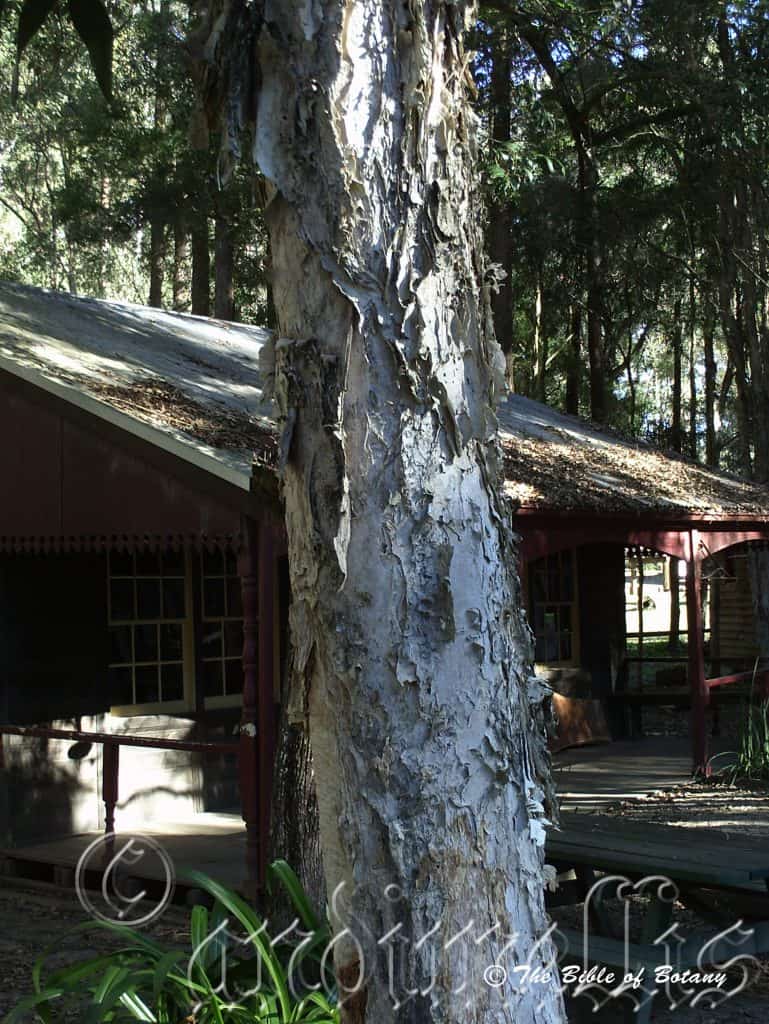
Wauchope NSW
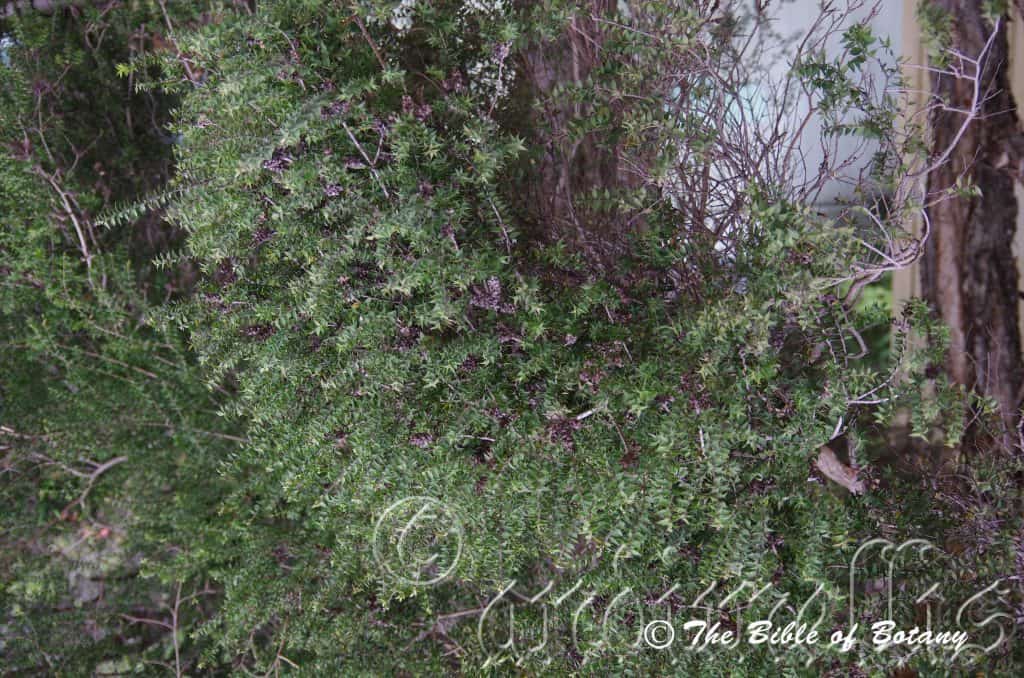
Sunnybank Qld.
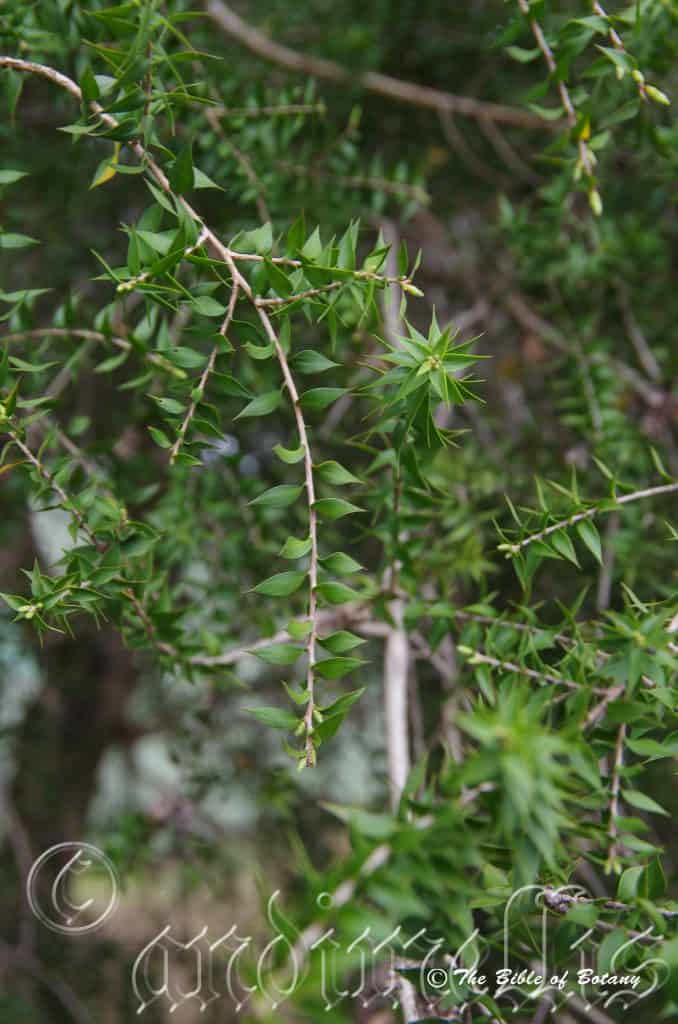
Sunnybank Qld.
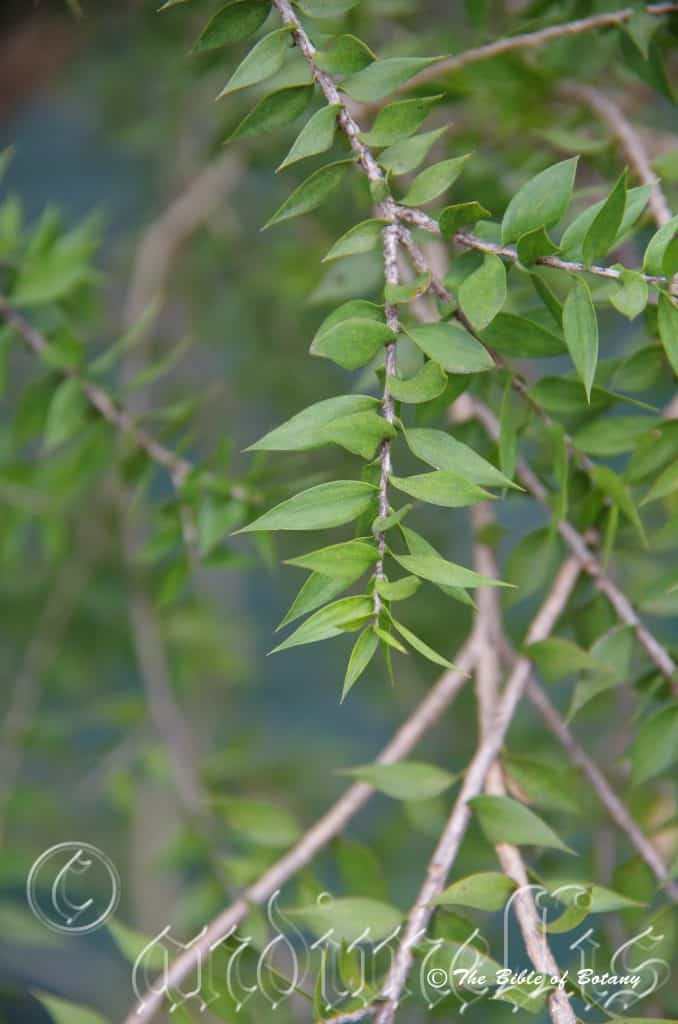
Sunnybank Qld.

Sunnybank Qld.
Melaleuca styphelioides
Classification:
Division: Magnoliophyta
Class: Magnoliopsida
Superorder: Rosane
Order: Myrtales
Family: Myrtaceae
Subfamily: Myrtoideae
Tribe: Melaleuceae
Genus: From Melas, which is Ancient Greek for black and Leukos, which is Ancient Greek for white. It refers to plants, which usually have white papery barks that are often charred by fire thus the bark is black and white.
Specie: From Styphelos, which is Ancient Greek for dense and Eidos/Oides, which is Ancient Greek for alike or similar to. It refers to plants, which have a dense habit of growth and which resembles the Styphelia genus.
Sub species:
Common Name: Prickly Leaf Bottle Brush or Prickly Leaf Paper Bark.
Distribution:
Melaleuca styphelioides is found on and east of the Great Dividing Range to the coast, south from Bundaberg in central Queensland south to Sanctuary Point on the New South Wales South coast. There are several isolated populations north-east of Melbourne in Victoria and south-east of Hobart in Tasmania.
https://avh.ala.org.au/occurrences/search?taxa=Melaleuca+styphelioides#tab_mapView
Habitat Aspect Climate:
Melaleuca styphelioides prefers full sun to light dappled shade. It usually grows on low lying seasonal moist to wet alluvial flats to depressions where it is close to streams, creeks, along permanent water ways and flood plains or at times along dry creeks and riparian zones. The altitude ranges from 5 meter ASL to 650 meters ASL.
The temperatures range from minus 3 degree in August to 36 degrees in January.
The rainfalls range from lows of 800mm to an average of 2000mm.
Soil Requirements:
Melaleuca styphelioides prefers sandy loams to gravelly medium clays and medium clays. The soils are usually derived from decomposed basalts, sandstone, shale, laterites or granites. The soils pH. ranges from 4.5pH to 6.6pH. It tolerates seasonal waterlogged soils. Non saline soils to very saline soils are tolerated as are salt laden winds.
Height & Spread:
Wild Plants: 6 meters to 10 meters but has been known to reach 20 meters by 7 meters to 10 meters.
Characteristics:
Melaleuca styphelioides’s trunk and main stems are pale creamy-grey. When the bark is exposed the under lying bark is a rich creamy yellow to creamy orange. The thick paper bark peels as the trunk expands. It is corky and spongy to touch. The bark on the branches is creamy yellow to creamy orange and peels off regularly throughout the year. The branchlets are pale creamy to creamy yellow with the papery bark being tightly wrapped around the stems, while the newest shoots are grey-green and glabrous to being sparsely covered in white caduceus tomentose hairs. The branches have an upright habit and the plants vary considerably from having an open straggly habit where it is in the shade to open upright and densely foliaged where it is in full sun. The branches and branchlets are rather supple.
Melaleuca styphelioides’s alternate leaves are ovate to broad ovate and measure 7mm to 15mm in length by 2.5mm to 6mm in width. The base is broad rounded to truncate while the apex is broad acute with a pungent mucronate point. The concolourous laminas are deep olive-green to deep sea-green and glabrous or sparsely covered in white caduceus tomentose hairs. It is semi glossy and coriaceous. Immature leaves are bright pale green, dull and glabrous. The mid vein is prominent on the lower lamina and is not visible on the upper lamina. There are 15 to 30 very fine longitudinal veins. The margins are entire and flat. The petiole is sessile. The leaves are not aromatic when crushed.
The inflorescence of Melaleuca styphelioides are multiple spikes born from the terminals. The flower terminal shoots grow out before all the stamens have bloomed. The rachis is covered in white tomentose hairs and measure 18mm to 20mm in length. The flowers are born in threes with in each bract. There are 18 to 27 individual flowers along the spike in the globular head. The individual flowers measure 8mm to 10mm in diameter. The 5 lanceolate calyx lobes measure 1.5mm to 2mm in length. The calyx tube is pale green while the calyx is pale green and glabrous. The 5 obtuse petals are white to pale pink and measure 1.5mm to 2mm in length. The petals drop by the time the stamens have fully developed.
The white stamens are the most prominent part of the flowers. The 12 to 26 stamens are on each of the 5 claws. The claws measure 3mm to 4mm in length. The filaments measure 8mm to 10mm in length. The anthers measure less than 0.5mm in length while it is white.
The long, slender, white style measures 8mm to 10mm in length, while the stigma divides into 5 locules. The base of the style is surrounded by the nectaries. The arrowroot to strongly honey scented flowers, appear over a long period of time. The honey scented flowers appear from early late December to early February.
Melaleuca styphelioides‘s fruit is a variable small, elongated-ovoid, glabrous capsule. The capsules measure 3mm to 4mm in length by 2mm to 3mm in diameter. The orifice is level with the hypanthia and measures 1.5mm in diameter. The coriaceous capsule is dull creamy-fawn to dull pale grey and glabrous. The capsules contain seeds and chaff mixed together. The seeds are grey-brown and are longer and thicker than the chaff. The calyx lobes are persistent on the hypanthia.
Wildlife:
Melaleuca styphelioides supports myriads of native bees, native flies, native beetles and butterflies when in flower.
It also supports small honeyeaters which include the brown Honeyeater Lichmera indistincta and the Eastern spinebill Acanthorhynchus tenuirostris which are often seen scurrying over the flowers and seeking protection amongst the dense foliage from larger more aggressive nectar eaters.
Cultivation:
Melaleuca styphelioides is an excellent broad columular to pyramid shaped bushy medium size tree for native gardens. It is suitable on all types of sandy loams to medium clays and are most suitable for small, medium and large gardens close to the coast in warm temperate, subtropical, tropical or semi-arid gardens. As a garden subject it will grow from 8 meters to 12 meters in height by 4 meter to 8 meters in diameter when grown in the open. It is cold tolerant to temperatures to minus 5 degrees once established but are very slow to establish themselves and will suffer some tip burning and discolouration of the foliage. It is quite drought tolerant. This is one Melaleuca that is worth while trying on the west coast which originates from the east. It will commence flowering from an early age even from seed. I have seen well grown trees with good flowers at only 3 and 4 years of age.
It is fast growing especially with a good fertile soils and with a little moisture growing more than 1 meter a year. To avoid stress, give the plants a double dose of our recommended fertilizer following flowering and a good deep soaking mid-way through the dry season if good rains have not fallen. This will prevent further stress and hold them over for several more months.
It can be used for light dappled shade when grown as a small tree. It is an excellent tree for areas that have drainage problems on sandy to heavy clay soils. When planting the trees in a heath scene scatter them using at least one in the foreground so the flowers can be fully enjoyed and their natural bushy broad columnar-pyramid shape is not interfered with.
Try using it in an informal or formal manner in front of the house. Placed in from the corner it will breaking up rigid lines and soften the structures overall appearance. At the same time they can be used to highlight the contrasts between the two. On high set homes this can be achieved by planting 1 as a tree with 2 or 3 shrubs like Melaleuca citrinus near the base as shrubs. Using these smaller plants between the taller Melaleuca stypheloides makes a very strong statement with contrasting foliages and flower colour. Plant it together with unequal gaps and free flowing curves to accentuate height and depth in front of large factories can really bring a park like scenario, peace and serenity to the work place. Use wider spacing where the building in the background is seen as dappled specks will soften it and where it is planted closer together will give a bolder contrast between the two. The dwarf golden form of Melaleuca bracteata is particularly good where the buildings have a dark exterior and a strong contrast is required between the plants for most of the year.
Use Melaleuca styphelioides and the dwarf golden form of Melaleuca bracteata and Melaleuca pachyphyllus or another small red flowering form with large leaves as a base for a larger style wallum heath setting. These three plants will give a great contrast in colour and leaf shape. Scatter plant the area with other prostrate and vertical leaf plants in between to cover the ground in a mass of contrasting foliages. The flower colours will not be important and will be a fantastic bonus to be enjoyed for years to come.
It looks great and very natural next to water. Surrounding dams and mixed with other tall growing Melaleucas can make a very pleasing back drop or silhouette against the water.
It can be regularly tip pruned if a tall windbreak is required. This can be maintained with regular pruning in the early years and planting closer together with spacing of 6 meters. It responds very well to tip pruning, recovering quickly and increasing the number of terminal points for flowers in the following season.
Place 3 or 4 off center of a large rockery with other large or finer leaf ground covers and very small shrubs in the front. Plants with white or yellow flowers can be used where the pink flowering forms are used and use pink, red or purple flowers where the white or cream flowering forms are used in foreground and background. This will lead your eyes directly to the array of white flowers and the beautiful deep pink to salmon coloured leaves on the new growth and the pendulous branchlets for a longer period.
Ensure that the whole plant or at least most of it is on display from most sections of the garden as the flowers and bark are both very attractive.
When mass or group planting Melaleuca styphelioides, plant it at 10 meters to 12 meters so that its silhouette can be fully appreciate. Mass plant below with Goodenia species, Hibbertia species, Scaevola species or Plectranthus species or use two contrasting foliages to give depth and height. Melaleuca styphelioides looks very pleasing when the lower branches are trimmed to head height or slightly lower. The flowers are really highlighted against the small deep green leathery leaves so place them where it is highly visible.
Melaleuca styphelioides is a good subject for bonsai enthusiasts as it is easy to work with and the fine deep green triangular leaves help add to the affect.
Propagation:
Seeds: Melaleuca styphelioides seeds can be sown directly into a seed raising mix. Do not cover the seeds. Press them into the mix. Place the tray in a warm sunny position. When the seedlings are 15mm to 20mm tall, prick them out and plant them into 20mm native tubes using a good organic mix.
When the seedlings are 70mm to 90mm tall, prick them out and plant them into 50mm native tubes using a good organic mix or plant them out into their permanent positions.
Once the seedlings reach 150mm to 200mm in height they can be planted out into their permanent position.
Cuttings:
Cuttings must be used if flower scent, form or flowering in the following season is required. Cuttings must be used if flower scent is important, form or flowering in the following season is required. Cuttings must be used if flowering in the following season are required.
Use 80mm to 150mm long half ripened material when growing from cuttings from the present season?s growth. Take them in warmer months of the year. Remove half the leaves from the bottom section being careful not to tear the bark.
1 Prepare the cutting mix by adding one third sharp clean river sand, one third peat and one third perlite. These ingredients are sterilize,
2 Select good material from non diseased plants,
3 Select semi green stems for cuttings. Look for a stem with two or three nodes,
4 Place the cutting on a flat, hard surface, and make a clean cut down one side of the cutting at the base for 10mm with a sharp sterile knife or razor blade. – This scarification of the node will increase the chances of roots emerging from this spot. Now remove all but one or two the leaves, leaving the apex leaves in tact. If the leaves are very large in proportion to the stem, cut off the apical halves.
5 Fill a saucer with water, and place a little medium strength rooting hormone into another container like a milk bottle top. Dip the node end of the cutting into the water and then into the rooting hormone. Tap off any excess hormone,
6 Use a small dipple stick or old pencil to poke a hole into the soilless potting mix. Ensure the hole is slightly larger than the stem diameter and be careful not to wipe the rooting hormone off the cuttings base, place the cuttings in a pattern ensuring the cuttings are not touching each other,
7 I like to place the pots in Plastic bags to help maintain temperature and moisture. Place in a semi shaded place like under 50mm shade cloth.
8 When the cuttings have struck, open the bag to allow air circulation for a few days to a week,
9 Once hardened off remove the cuttings from the bag and allow to further hardening for a few more days,
10 Transplant into a good potting mix to grow on.
Fertilize using seaweed, fish emulsion or organic chicken pellets soaked in water on an alternate basis. Fertilize every two months until the plants are established then twice annually in early September or March to maintain health, vitality and better flowering.
Further Comments from Readers:
Hi reader, it seems you use The Bible of Botany a lot. That’s great as we have great pleasure in bringing it to you! It’s a little awkward for us to ask, but our first aim is to purchase land approximately 1,600 hectares to link several parcels of N.P. into one at The Pinnacles NSW Australia, but we need your help. We’re not salespeople. We’re amateur botanists who have dedicated over 30 years to saving the environment in a practical way. We depend on donations to reach our goal. If you donate just $5, the price of your coffee this Sunday, We can help to keep the planet alive in a real way and continue to bring you regular updates and features on Australian plants all in one Botanical Bible. Any support is greatly appreciated. Thank you.
In the spirit of reconciliation we acknowledge the Bundjalung, Gumbaynggirr and Yaegl and all aboriginal nations throughout Australia and their connections to land, sea and community. We pay our respect to their Elders past, present and future for the pleasures we have gained.
Melaleuca subulatus
Classification:
Division: Magnoliophyta
Class: Magnoliopsida
Superorder: Rosane
Order: Myrtales
Family: Myrtaceae
Subfamily: Myrtoideae
Tribe: Melaleuceae
Genus: From Melas, which is Ancient Greek for black and Leukos, which is Ancient Greek for white. It refers to plants, which usually have white papery barks that are often charred by fire thus the bark is black and white. (Presently still widely known as Callistemon subulatus.)
Specie: From Subulatus, which is Latin for an awl or awl shape. It refers to structures or organs, which resemble a spindle in form.
Sub species:
Common Name: Highlands Bottle Brush.
Distribution:
Melaleuca subulatus is mainly found from the Nattai River in coastal southern New South Wales south to Croajingolong National Park and west to Suggan Buggan in Victoria. It is found on the on and east of the Great Dividing Range.
https://avh.ala.org.au/occurrences/search?taxa=Melaleuca+subulatus#tab_mapView
Habitat Aspect Climate:
Melaleuca subulatus prefers full sun to dappled shade. It grows along creeks and streams. The altitude ranges from 50 meter ASL to 850 meters ASL.
The temperatures range from minus 7 degrees in August to 32 degrees in January.
The rainfalls range from lows of 800mm to an average of 1200mm. It is drought hardy.
Soil Requirements:
Melaleuca subulatus prefers sandy loams to medium clays, gravelly medium clays or river rocks which are close to the parent rock. The soils are usually derived from decomposed basalts, granites or at times metamorphic rocks. The soils pH. ranges from 5pH to 6pH. It tolerates seasonal waterlogged soils. Non saline soils to moderately saline soils are tolerated.
Height & Spread:
Wild Plants: 1m to 1.2m by 0.8m to 1m.
Characteristics:
Melaleuca subulatus grows as a dense small shrub with pale grey to grey hard tightly appressed bark. Branchlets are grey and glabrous. The bark is slightly furrowed on older trees and has a twisted, spiral or abrupt furrows. The bark is grey to grey-brown on the branches and is scabrous while the branchlets are tawny to red-brown and glabrous to slightly scabrous. The branches and branchlets are flexuous.
Melaleuca subulatus’s alternate to almost opposite leaves are densely packed along the stems. The linear leaves measure 25mm to 40mm in length by 2mm to 3mm in width. The base is tapering while the apex is tapering to a short mucronate point. The concolourous laminas are grass-green to deep grass-green, dull, glabrous and coriaceous to rigid. The leaves are flat to subulate in cross section. Immature leaves are similar to the mature leaves. It is dull and glabrous. The margins are entire and flat. The leaf petiole is yellow to lime green and measures 1mm to 2.2mm in length. The leaves are not aromatic when crushed.
The inflorescence of Melaleuca subulatus is a dense single spike born from the terminals. The terminal shoots grow out as the stamens begin to die. The rachis is glabrous to sparsely covered in white hirtellous hairs. The spikes measures 50mm to 80mm in length by 40mm to 45mm in diameter. The flowers are born singularly with in each bract. There are 28 to 42 individual flowers along the spike. The individual flowers measure 10mm to 14mm in diameter. The 5 ovate sepals measure 0.5 to 1mm in length by 2mm to 2.5mm in width. The sepals are blue-green while the hypanthium is blue-green with patches of cream tinges. The 5 ovate petals are creamy green with a pink tinge and measure 2.5mm to 3mm in length. It is persistent while the stamens fully develop.
The scarlet red to deep crimson stamens are the most prominent part of the flowers. The 4 to 8 stamens are free around the hypanthia. The filaments measure 15mm to 20mm while the scarlet red anthers measure less than 0.7mm to 1mm in diameter.
The long scarlet red to deep crimson style measures 18mm to 23mm in length while the red to crimson stigma has 5 locules. The base of the style is surrounded by the nectaries. The arrowroot-honey scented flowers, appear from early November to late February however some flowers will appear in most months of the year especially when rainfall is consistent and the winters are mild.
Melaleuca subulatus‘s fruit is a sessile squat, globular and glabrous capsule with a slightly constricted neck. The capsules measure 3.5mm to 4mm in length by 4mm to 5mm in diameter. The orifice is enclosed and measures 2.4mm to 2.9mm in diameter. The woody capsule is dull grey, glabrous and resinous. The capsules contain seeds and chaff mixed together. It is brown and look swollen compared to the chaff. The calyx lobes are not persistent on the hypanthia.
Wildlife:
Melaleuca subulatus supports myriads of native bees, native flies, native beetles and butterflies when in flower.
It also supports small honeyeaters which include the brown Honeyeater Lichmera indistincta and the Eastern spinebill Acanthorhynchus tenuirostris which are often seen scurrying over the flowers and seeking protection amongst the dense foliage from larger more aggressive nectar eaters.
Cultivation:
Melaleuca subulatus is an excellent small bushy or open medium shrub for native gardens. It is suitable on all types of sandy loams to medium clays and are most suitable for small, medium and large gardens in cool temperate to cool sub tropical gardens from the coast to higher altitudes. As garden subjects they will grow from 1 meters to 1.5 meters in height by 0.8 meter to 1.2 meters in diameter when grown in the open.
It is cold tolerant to temperatures to at least minus 7 degree once established but are very slow to establish themselves and will suffer some tip burning. It is drought tolerant. They will commence flowering from an early age even from seed.
It is very fast growing especially with a good fertilizing program and require little or no watering to grow nearly 1 meter a year. They will drop some of their foliage when stressed during drought times so should not be allowed to dry out. To avoid this and to increase flowering give the plants a double dose of our recommended fertilizer following the autumn flowering as it starts to rain and a good deep soaking in the dry season if good rainfalls do not eventuate . This will prevent further loss and hold them over for several more months.
They can be regularly tip pruned if a small hedge is required. This can be maintained with regular pruning and planting closer together with spacings of 1 meter. They respond very well to tip pruning, recovering quickly and increasing the number of terminal points for flowers in the following season.
It is best used adjacent to small areas of bush close to paths or the house so their flowers can be viewed regularly. It is great in small rockeries as the main feature. Here they can be planted in small groups of 2 or 3 or as a standalone plant to create a real native bush garden affect. If it is surrounded by shorter plants with fine foliages and white cream or pink flowers they will dominate at the center giving an expansive look to the bed especially when it is in flower. This is one plant that benefits highly from being mass planted or planted in scattered clumps. There small size enables this to be achieved even in small and medium size gardens.
Melaleuca subulatus would make outstanding contribution to a moist heath garden. Here it can be used as the taller growing plant scattered throughout the heath scene. Plants must be planted close together and be short so you can see over the tallest ones with the exception of one or two plants at the most. These will be feature plants. The idea is to achieve a feeling of expansive flatness. This can be achieved with using the Melaleuca subulatus‘s green linear leaves and having them contrasting with finer pale green or soft grey to glaucous coloured foliages. Use a lot of procumbent plants like Carpobrotus edulis or Hibbertia species. Mix them with other smaller shrubs so none of them dominate the scene but blend in to give a mosaic of foliage colours that you oversee. Here I immediately think of Actinotis helianthi or Grevillea thelemanniana for two great contrasting foliage’s.
Propagation:
Seeds: Melaleuca subulatus seeds need to be taken from capsules that are at least 12months old. Once the seeds have been released from the capsules; by placing them into a dry paper bag for a week to 10 days, they can be sown directly into a seed raising mix. Do not cover the seeds. Press them into the mix. Place the tray in a warm sunny position. When the seedlings are 15mm to 20mm tall, prick them out and plant them into 20mm native tubes using a good organic mix.
When the seedlings are 70mm to 90mm tall, prick them out and plant them into 50mm native tubes using a good organic mix or plant them out into their permanent positions.
Once the seedlings reach 150mm to 200mm in height they can be planted out into their permanent position.
Fertilize using Seaweed, fish emulsion or a half strength solution of organic chicken pellets soaked in water on an alternate basis. Fertilize every few months.
Cuttings: Cuttings must be used if flowering in the following season are required.
Use 100mm to 150mm long half ripened material when growing from cuttings from the present season’s growth. Take them in warmer months of the year. Remove half the leaves from the bottom section being careful not to tear the bark.
1 Prepare the cutting mix by adding one third sharp clean river sand, one third peat and one third perlite. These ingredients are sterilize,
2 Select good material from non diseased plants,
3 Select semi green stems for cuttings. Look for a stem with two or three nodes,
4 Place the cutting on a flat, hard surface, and make a clean cut down one side of the cutting at the base for 10mm with a sharp sterile knife or razor blade. – This scarification of the node will increase the chances of roots emerging from this spot. Now remove all but one or two the leaves, leaving the apex leaves in tact. If the leaves are very large in proportion to the stem, cut off the apical halves.
5 Fill a saucer with water, and place a little medium strength rooting hormone into another container like a milk bottle top. Dip the node end of the cutting into the water and then into the rooting hormone. Tap off any excess hormone,
6 Use a small dipple stick or old pencil to poke a hole into the soilless potting mix. Ensure the hole is slightly larger than the stem diameter and be careful not to wipe the rooting hormone off the cuttings base, place the cuttings in a pattern ensuring the cuttings are not touching each other,
7 I like to place the pots in Plastic bags to help maintain temperature and moisture. Place in a semi shaded place like under 50mm shade cloth.
8 When the cuttings have struck, open the bag to allow air circulation for a few days to a week,
9 Once hardened off remove the cuttings from the bag and allow to further hardening for a few more days,
10 Transplant into a good potting mix to grow on.
Fertilize using seaweed, fish emulsion or organic chicken pellets soaked in water on an alternate basis. Fertilize every two months until the plants are established then twice annually in early September or March to maintain health, vitality and better flowering.
Further Comments from Readers:
Hi reader, it seems you use The Bible of Botany a lot. That’s great as we have great pleasure in bringing it to you! It’s a little awkward for us to ask, but our first aim is to purchase land approximately 1,600 hectares to link several parcels of N.P. into one at The Pinnacles NSW Australia, but we need your help. We’re not salespeople. We’re amateur botanists who have dedicated over 30 years to saving the environment in a practical way. We depend on donations to reach our goal. If you donate just $5, the price of your coffee this Sunday, We can help to keep the planet alive in a real way and continue to bring you regular updates and features on Australian plants all in one Botanical Bible. Any support is greatly appreciated. Thank you.
In the spirit of reconciliation we acknowledge the Bundjalung, Gumbaynggirr and Yaegl and all aboriginal nations throughout Australia and their connections to land, sea and community. We pay our respect to their Elders past, present and future for the pleasures we have gained.

Mount Cootha Botanical Gardens Qld.
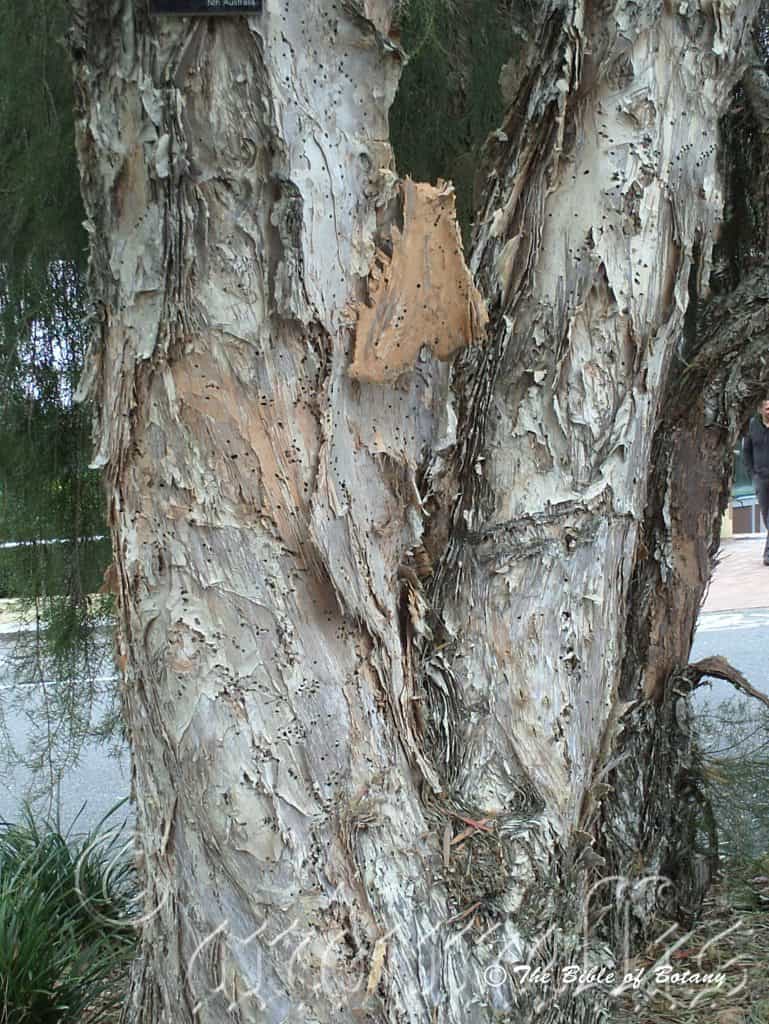
Mount Cootha Botanical Gardens Qld.
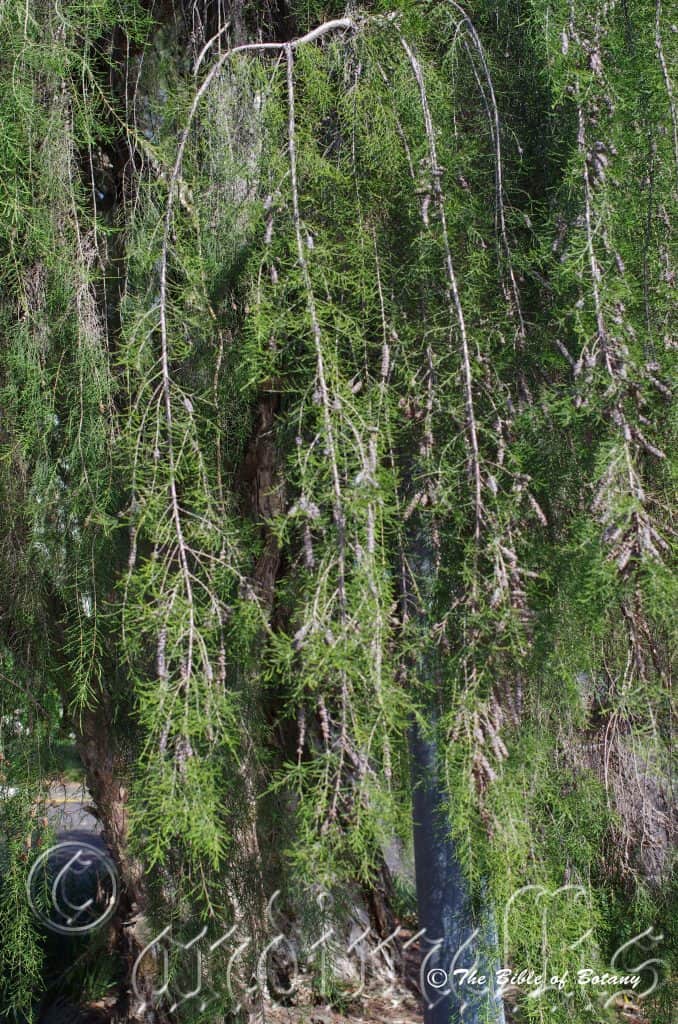
Mount Cootha Botanical Gardens Qld.
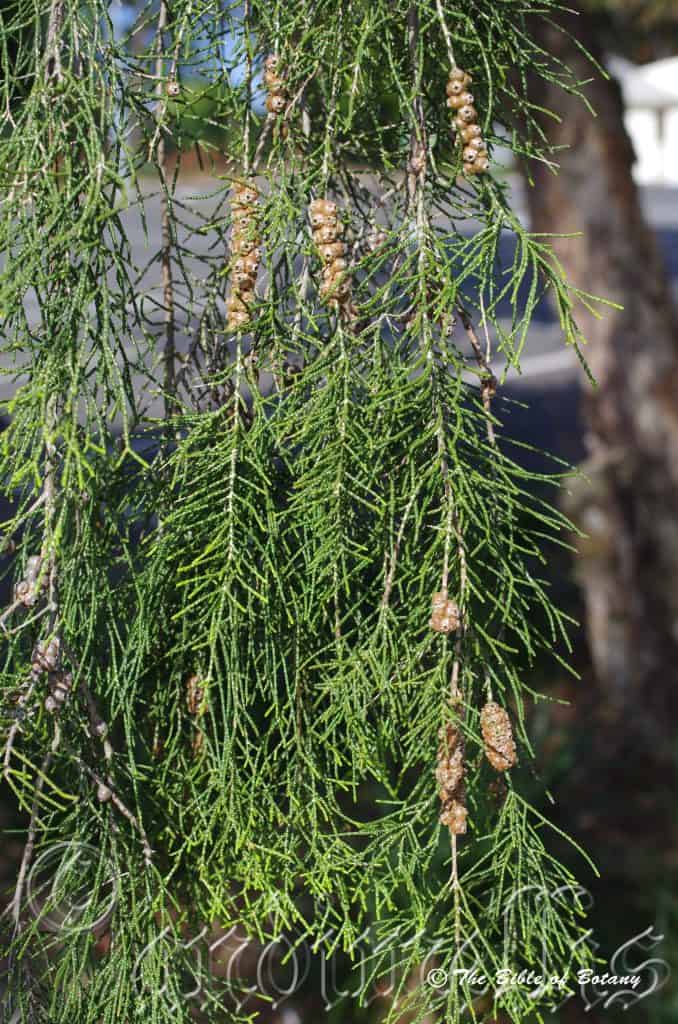
Mount Cootha Botanical Gardens Qld.

Mount Cootha Botanical Gardens Qld.
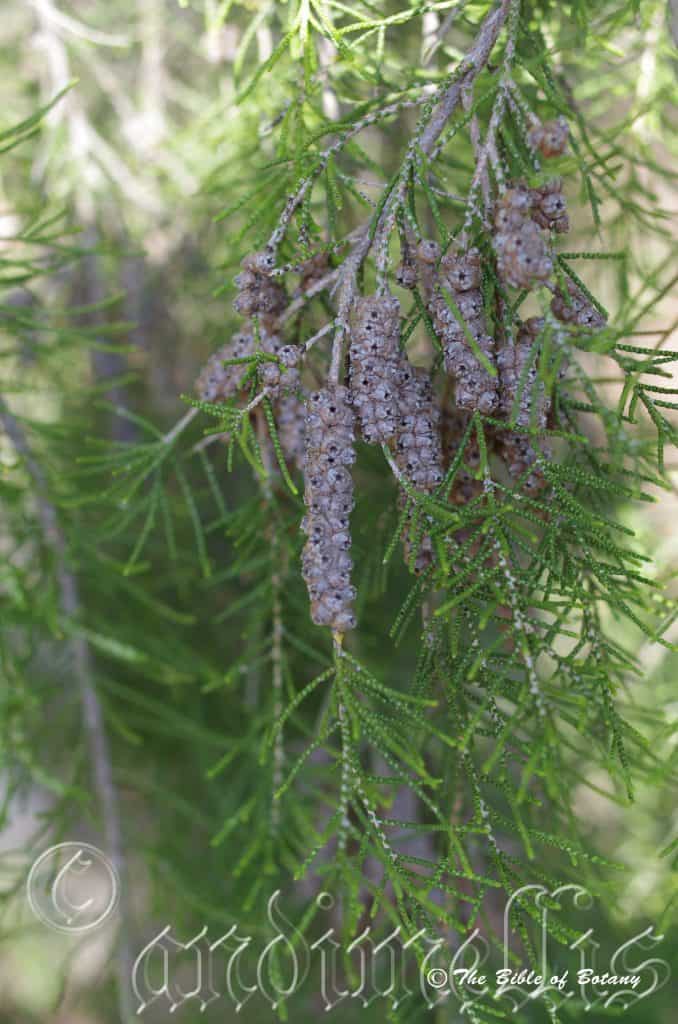
Mount Cootha Botanical Gardens Qld.
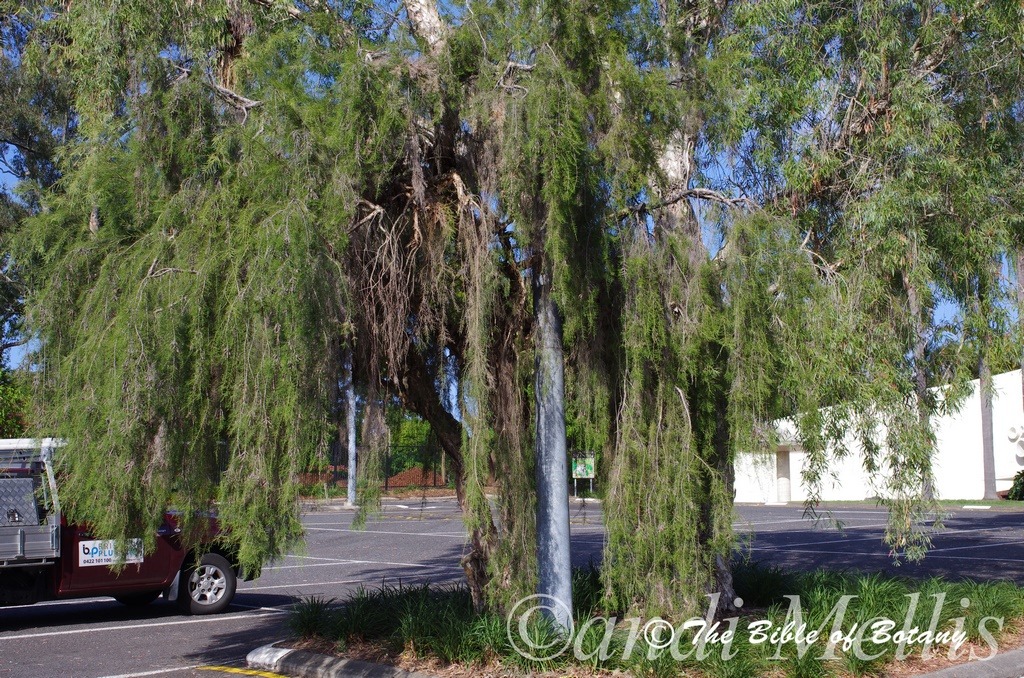
Mount Cootha Botanical Gardens Qld
Melaleuca tamariscina
Classification:
Division: Magnoliophyta
Class: Magnoliopsida
Superorder: Rosane
Order: Myrtales
Family: Myrtaceae
Subfamily: Myrtoideae
Tribe: Melaleuceae
Genus: From Melas, which is Ancient Greek for black and Leukos, which is Ancient Greek for white. It refers to plants, which usually have white papery barks that are often charred by fire thus the bark is black and white.
Specie: From Tamarix, which is Latinized for a plant found in arid to semi-arid places in northern Africa. It refers to trees or shrubs, which resemble the Tamarix genus.
Sub specie: Melaleuca tamariscina subsp. pallescens. From Tamarix, which is Latinized for a plant found in arid to semi-arid places in northern Africa. It refers to trees or shrubs, which resemble the Tamarix genus.
Sub specie: Melaleuca tamariscina subsp. tamariscina. From Tamarix, which is Latinized for a plant found in arid to semi-arid places in northern Africa. It refers to trees or shrubs, which resemble the Tamarix genus.
Common Name: Weeping Paper Bark.
Distribution:
Melaleuca tamariscina subsp. pallescens is found south from The White Mountains National Park to Inglewood in southern Queensland with a few isolated populations further south to Ipswich. It is found on the Western Plains but further west than the other sub species.
Melaleuca tamariscina subsp. tamariscina is found south from Greenvale to Comet/Rolleston in central Queensland with a few isolated populations further south to Ipswich. It is mainly found on the Western Plains close to the Great Dividing Range.
https://avh.ala.org.au/occurrences/search?taxa=Melaleuca+tamariscina#tab_mapView
Habitat Aspect Climate:
Melaleuca tamariscina prefers full sun to light dappled shade. It grows in wet Eucalyptus forests on very poorly drained flat terraines particularly along semi dry and seasonal waterways. The altitude ranges from 184 meter ASL to 324 meters ASL.
The temperatures range from minus 3 degrees in August to 40 degrees in January.
The rainfalls range from lows of 300mm to an average of 650mm.
Soil Requirements:
Melaleuca tamariscina prefers poorly drained medium sandy silts to heavy podsolic clays. The soils are usually derived from decomposed sandstones, basalts, metamorphic rocks, shales or alluvial flats. The soils pH. ranges from 4.5pH to 5.5pH. It tolerates waterlogged soils and prefers sites that suffer from seasonal inundation and flooding. Non saline soils to moderately saline soils are tolerated.
Height & Spread:
Wild Plants: 3m to 8m by 4m to 5m.
Characteristics:
Melaleuca tamariscina trunk is thick, corky and papery. The outer bark is pale creamy fawn while the inner bark is pale creamy orange and pale purple. It is thick and tightly wrapped around the trunk and larger branches. The bark splits and peels back in large flakes throughout the year. The smaller stems are creamy white to pale creamy yellow and spongy to the touch. The branchlets are pale creamy white to pale creamy yellow or creamy fawn, while the new growth is green and glabrous. The branches have a strong weeping habit.
Melaleuca tamariscina‘s alternate strongly appressed leaves are elliptical to ovate and measure 2mm to 4mm in length by 2mm to 3.5mm in width on lateral shoots or 3mm to 5mm in length by 1mm to 1.8mm on the main stems. The bases are truncate while the apex is acuminate. The concolourous laminas are deep olive green semi glossy, glabrous and coriaceous. Immature leaves are paler green to bronze-green, semi glossy and glabrous. The mid vein is obscure to slightly prominent on the lower lamina. The margins are entire. The leaves are sessile.
The inflorescence of Melaleuca tamariscina is many spikes born from the special lateral shoots from the terminals. The flower terminal shoots grow out before the flowers finish blooming. The glabrous rachises measure 12mm to 60mm in length by 10mm to 12mm in diameter. The flowers are born three with in each bract. There are 5 to 40 individual flowers on a spike. They measure 4.5mm to 6mm in diameter. The 5 broad ovate petals are pale green and measure 1.5mm to 1.7mm in length by 1.4mm to 1.5mm in width. It is persistent while the stamens fully develop.
The white, creamy or pale pink stamens are the most prominent part of the flowers. There are 6 to 12 stamens on each of 5 claws. The claws measure 3mm to 4mm in length while the filaments measure 4 mm to 6mm in length. The anthers are white with white pollen.
The short, slender, white to pale cream style measures 8mm to 11mm in length, while the ovary has 4 locules. The base of the style is surrounded by the nectaries. The flowers appear from late mid-August to early February.
Melaleuca tamariscina‘s fruits are globose, glabrous capsules. The capsules measure 4mm to 5mm long by 4mm to 5mm in diameter while the enclosed orifices measure 1mm to 1.5mm in diameter. The woody capsule is dull pale creamy fawn. The capsules contain seeds mixed with chaff. The seeds are deep brown and swollen compared to the chaff. The calyx lobes are persistent and erect at the apex of the capsules.
Confusing Species:
Melaleuca tamariscina‘s leaves measure 2mm to 4mm in length. The flowers spikes measure 12mm to 60mm in length. The capsules measure 4mm to 5mm in diameter.
Melaleuca irbyana‘s leaves measure 1.5mm to 2mm in length. The flowers spikes measure 10mm to 25mm in length. The capsules measure 3.5mm to 4mm in diameter.
Subspecie Differences:
Melaleuca tamariscina subsp. tamariscina‘s leaves are tightly appressed to the stems and the flowers are white. The deeply enclosed orifices measure 1.5mm to 2mm in diameter.
Melaleuca tamariscina subsp. pallescens‘s leaves are angled to the stems and the flowers are pink. The orifices are level with the hypanthia and measure 1mm to 1.4mm in diameter.
Wildlife:
Melaleuca tamariscina supports many native bees, native flies, native beetles and butterflies when in flower.
Cultivation:
Melaleuca tamariscina makes an excellent medium size dense canopy tree for native gardens. It is suitable on wet drainage problem soils from light clays to heavy clays and are most suitable for small, medium and large gardens close to the coast in warm temperate and sub tropical gardens or semi-arid gardens. As a garden subject it will grow from 6 meters to 8 meters in height by 3.5 meters to 4.5 meters in diameter as a small tree or 2.5 meters to 3 meters in height by 2.5 meters to 3.5 meters in diameter as a large shrub when grown in the open.
It is cold tolerant to temperatures at least as low as minus 4 degrees once established and are surprisingly drought tolerant. It is very fast growing especially with a good fertilizing program and with a little moisture will grow more than 1 meter a year. They will drop a lot of the foliage when stressed during drought times but recover as soon as good rains fall. To avoid this, give the plants a double dose of our recommended fertilizer and a good deep soaking during a prolonged drought and keep the soil well mulched to prevent any water loss to the atmosphere. This will prevent further loss and hold them over for several more months.
It can be used for light dappled shade. It is an excellent tree for areas that have drainage problems and slightly saline soils. When planting the trees for a forest try to place them near the edge so the weeping foliage and flowers can be fully appreciated and their natural bushy canopy is not interfered with.
It is useful as a backdrop small tree contrasting with smaller broader leaf shrubs that are planted in the foreground. The bark is a strong character for wanting to plant this tree. Avoid strong wind areas as it may prematurely strip the trees of their bark or at the best make them look ragged.
Plant them together with shorter broad leaf plants using unequal gaps and free flowing curves to accentuate height and depth. Use wider spacings to give a softer horizontal affect or place them closer together for a more vertical look, to the background. Melaleuca citrina could be used where a bold flowering contrast is warranted for a couple of months of the year. The dwarf golden form of Melaleuca bracteata is particularly good where a strong contrast is required between the plants for most of the year. Here you would need a mid-size plant with larger pale green leaves to break up the fine leaves of the other two Melaleucas. Some good companion plants would be the medium size hybrids from Melaleuca viminalis in the background as you do not want to lose the beautiful affect from the papery bark.
Place 2 or 3 of them in the center of a large rockery with other large or finer leaf ground covers and very small shrubs in the front. Plant them off center to give the strongest affect. Plants with pink, red or purple flowers can be used in both the fore ground and mid ground. This will lead the viewer?s eyes directly to the proliferation of cream to white flowers and the beautiful pendulous branchlets for a longer period.
Ensure that the whole plant or at least most of it is on display from most sections of the garden as the flowers are a real bonus.
When it is in flower these plants will catch your attention and the viewer will be transfixed on the display rather than watching the path. Plant them with 7 meter to 9 meter centers or scatter them through the bush for patches of white during the flowering season.
They make ideal plants for Bonsai collectors due to the fine leaves, their hardiness and supple pendulous branchlets.
Propagation:
Seeds: Melaleuca tamariscina seeds can be sown directly into a seed raising mix. Cover the seeds with 1mm to 2mm of fine weed free mulch and keep moist. Place the tray in a warm sunny position. When the seedlings are 15mm to 20mm tall, prick them out and plant them into 20mm native tubes using a good organic mix.
When the seedlings are 70mm to 90mm tall, prick them out and plant them into 50mm native tubes using a good organic mix or plant them out into their permanent positions.
Once the seedlings reach 150mm to 200mm in height they can be planted out into their permanent position.
Cuttings: Cuttings must be used if flowering in the following season are required.
Use 100mm to 150mm long half ripened material when growing from cuttings from the present season?s growth. Take them in warmer months of the year. Remove half the leaves from the bottom section being careful not to tear the bark.
1 Prepare the cutting mix by adding one third sharp clean river sand, one third peat and one third perlite. These ingredients are sterilize,
2 Select good material from non diseased plants,
3 Select semi green stems for cuttings. Look for a stem with two or three nodes,
4 Place the cutting on a flat, hard surface, and make a clean cut down one side of the cutting at the base for 10mm with a sharp sterile knife or razor blade. – This scarification of the node will increase the chances of roots emerging from this spot. Now remove all but one or two the leaves, leaving the apex leaves in tact. If the leaves are very large in proportion to the stem, cut off the apical halves.
5 Fill a saucer with water, and place a little medium strength rooting hormone into another container like a milk bottle top. Dip the node end of the cutting into the water and then into the rooting hormone. Tap off any excess hormone,
6 Use a small dipple stick or old pencil to poke a hole into the soilless potting mix. Ensure the hole is slightly larger than the stem diameter and be careful not to wipe the rooting hormone off the cuttings base, place the cuttings in a pattern ensuring the cuttings are not touching each other,
7 I like to place the pots in Plastic bags to help maintain temperature and moisture. Place in a semi shaded place like under 50mm shade cloth.
8 When the cuttings have struck, open the bag to allow air circulation for a few days to a week,
9 Once hardened off remove the cuttings from the bag and allow to further hardening for a few more days,
10 Transplant into a good potting mix to grow on.
Fertilize using seaweed, fish emulsion or organic chicken pellets soaked in water on an alternate basis. Fertilize every two months until the plants are established then twice annually in early September or March to maintain health, vitality and better flowering.
Further Comments from Readers:
Hi reader, it seems you use The Bible of Botany a lot. That’s great as we have great pleasure in bringing it to you! It’s a little awkward for us to ask, but our first aim is to purchase land approximately 1,600 hectares to link several parcels of N.P. into one at The Pinnacles NSW Australia, but we need your help. We’re not salespeople. We’re amateur botanists who have dedicated over 30 years to saving the environment in a practical way. We depend on donations to reach our goal. If you donate just $5, the price of your coffee this Sunday, We can help to keep the planet alive in a real way and continue to bring you regular updates and features on Australian plants all in one Botanical Bible. Any support is greatly appreciated. Thank you.
In the spirit of reconciliation we acknowledge the Bundjalung, Gumbaynggirr and Yaegl and all aboriginal nations throughout Australia and their connections to land, sea and community. We pay our respect to their Elders past, present and future for the pleasures we have gained.
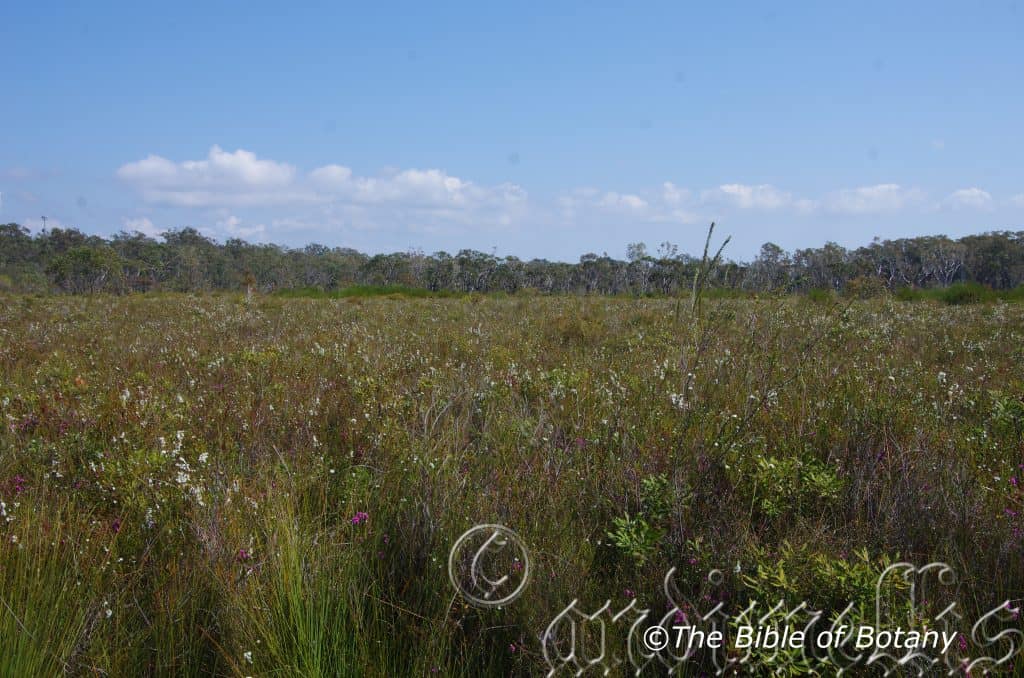
Yuraygir National Park NSW

Yuraygir National Park NSW
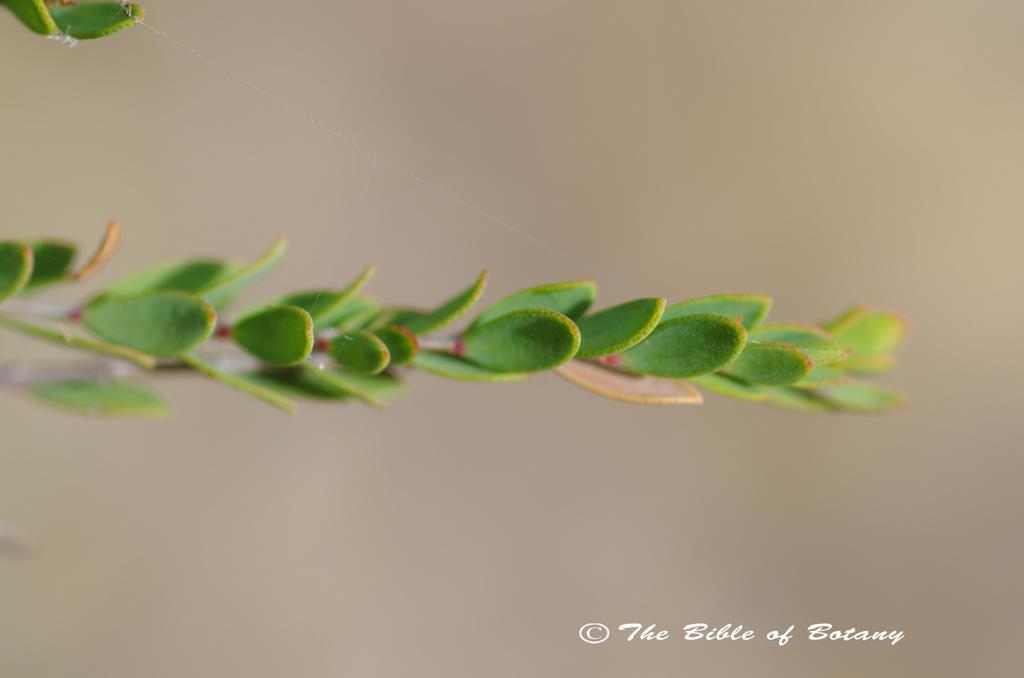
Yuraygir National Park NSW.
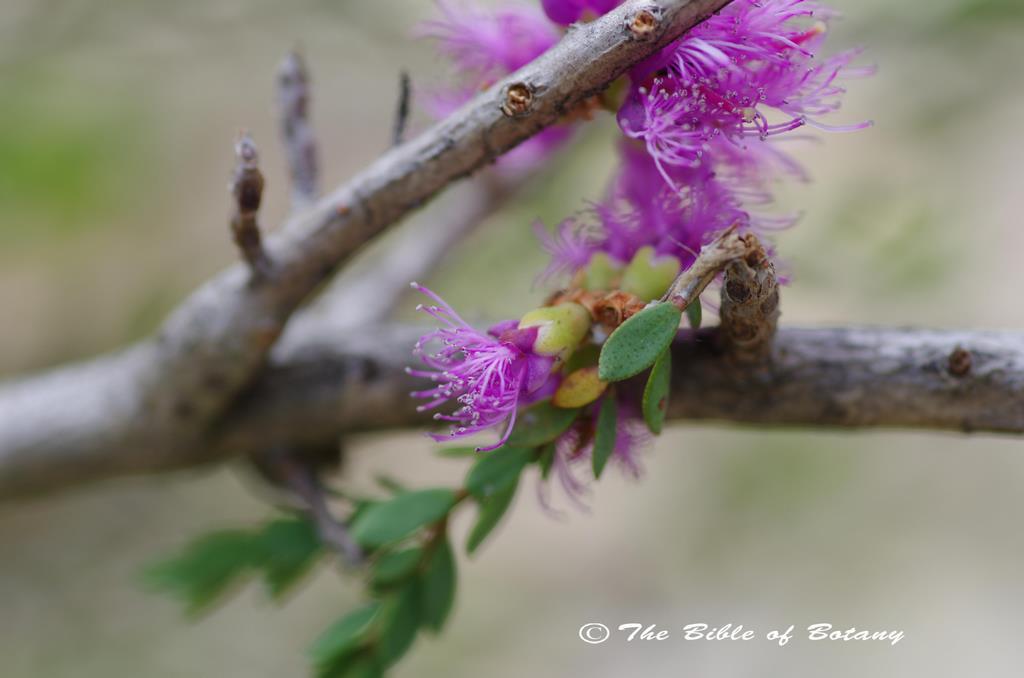
Yuraygir National Park NSW.

Yuraygir National Park NSW.
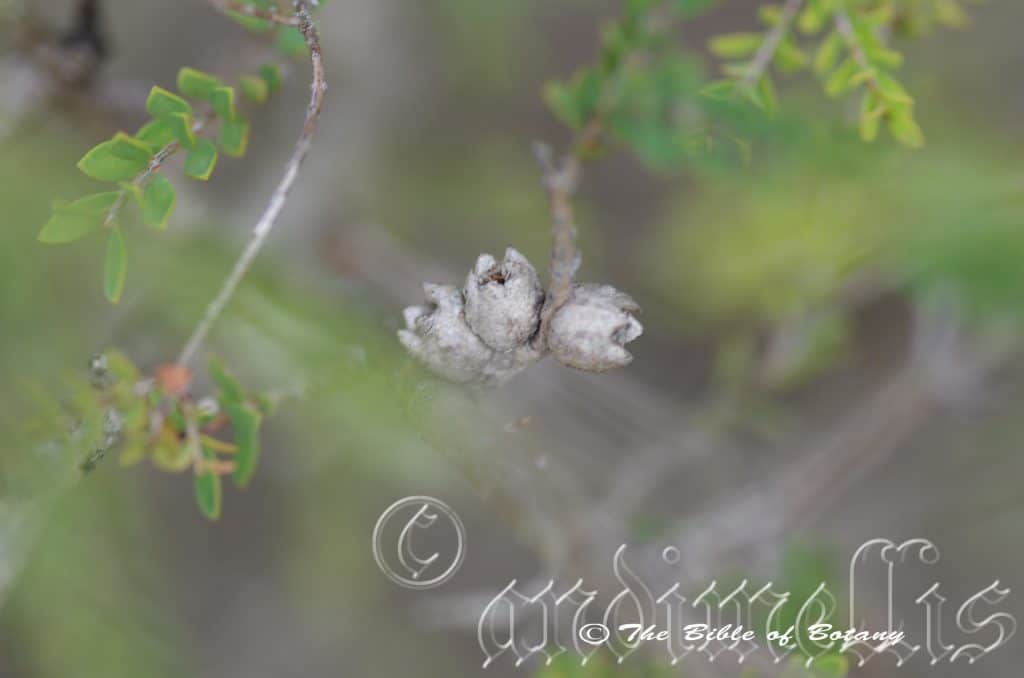
Yuraygir National Park NSW
Melaleuca thymifolia
Classification:
Division: Magnoliophyta
Class: Magnoliopsida
Superorder: Rosane
Order: Myrtales
Family: Myrtaceae
Subfamily: Myrtoideae
Tribe: Melaleuceae
Genus: From Melas, which is Ancient Greek for black and Leukos, which is Ancient Greek for white. It refers to plants, which usually have white papery barks that are often charred by fire thus the bark is black and white.
Specie: From Thymom, which is Ancient Greek or Thymum, which is Latin for the herb mint and Folium, which is Latin for foliage. It refers to leaves, which resemble the Mediterranean Thyme.
Sub species:
Common Name: Thyme Honey Myrtle.
Distribution:
Melaleuca thymifolia is found south from Bundaberg in central eastern Queensland to Pigeon House Range on the New South Wales South coast. It is mainly found on the eastern side of the Western Plains, Western Slopes, on and east of the Great Dividing Range to the coast.
https://avh.ala.org.au/occurrences/search?taxa=Melaleuca+subulatus#tab_mapView
Habitat Aspect Climate:
Melaleuca thymifolia prefers full sun to light dappled shade. It grows in low lying seasonally moist to wet alluvial flats, shallow depressions along creeks on swampy meanders or in coastal wallums.
The temperatures range from minus 2 degrees in August to 36 degrees in January.
The rainfalls range from lows of 400mm to an average of 2000mm however this is not as important as the plants habitat swamps, wallums and seepages where permanent water can be found.
Soil Requirements:
Melaleuca thymifolia prefers poorly drained to well drained light sandy silts, light fatty clays heavy silts or podzolic soils. The soils are usually derived from decomposed sandstones or accumulated peaty beach sands. The soils pH. ranges from 4.5pH to 6.5pH. It tolerates waterlogged soils and prefers sites that suffer from seasonal inundation and flooding. Non saline soils to moderately saline soils are tolerated.
Height & Spread:
Wild Plants: 1m to 1.5m by 1m to 1.5m.
Characteristics:
Melaleuca thymifolia grows as a small open shrub with grey, spongy to touch. The branchlets are creamy-grey with the bark being tightly wrapped around the stems, while the newest shoots are blue-green and glabrous. Branches and branchlets are rather supple with many rising from an underground lignotuber.
Melaleuca thymifolia‘s opposite leaves are narrowly elliptical and measure 10mm to 15mm in length by 1.5mm to 3mm in width. The base is cuneate while the apex is acute. The concolourous laminas are pale grey-green to pale blue-green, dull, glabrous and coriaceous. Immature leaves are pale lemon-green to pale blue-green, semi dull and glabrous. The mid vein is not prominent on the either lamina and is faintly visible on both laminas. The margins are entire and thickened. The much swollen petiole measures 0.6mm to 1mm in length by 0.6mm to 1mm in diameter. The leaves are not aromatic when crushed.
The inflorescence of Melaleuca thymifolia has multi spikes born from special lateral growths on the previous season’s growth. The flower terminal shoots do not grow out before all the stamens have bloomed. The rachis is glabrous and measures 16mm to 22mm in length by 16mm to 22mm in diameter. The flowers are born singularly with in each bract. There are 2 to 10 individual flowers in the globular head. The 5 elliptical calyx lobes measure 2.5 to 3.5mm in length. The calyx tube is green while the calyx is green turning yellow at the apex. It is glabrous. The 5 semi ovate petals are pale lemon yellow and measure 4mm to 5mm in length. It is persistent while the stamens fully develop.
The white, lilac, mauve, pale to deep pink, purple or a reddish-purple stamens are the most prominent part of the flowers. There are 8 to 12 stamens on each of the 5 claws. The claw measures 4mm to 6.5mm in length while the filaments measure 3mm to 4mm in length and arise from the sides and apex of the claws. The anthers which are creamy pale pink measure less than 0.5mm to 0.6 in diameter.
The short, stout, lilac, mauve, pale to deep pink, purple or a reddish purple style measures 7mm to 8mm in length, while the white ovary has 5 locules. The base of the style is surrounded by the nectaries. The honey scented flowers, appear over a long period of time. The flowers appear from early late November to late February however some flowers usually appear during the warmer months especially in years of good rainfall.
Melaleuca thymifolia‘s fruit is an oblong, glabrous capsule. The capsules measure 5mm to 7mm in length by 3.5mm to 5mm in diameter. The orifice is inserted and measures 2mm to 2.2mm in diameter. The coriaceous capsule is dull creamy-fawn and glabrous. The capsules contain seeds and chaff mixed together. The seeds are brown. It is deep brown and look swollen compared to the chaff. The calyx lobes thicken and are persistent on the hypanthia as the capsules ripen.
Wildlife:
Melaleuca thymifolia supports myriads of native bees, native flies, native beetles and butterflies when in flower.
Cultivation:
Melaleuca thymifolia is an excellent small open to very bushy medium size shrub for native gardens. It is suitable on all types of sandy loams to medium clays and are most suitable for small, medium and large gardens in warm temperate, sub tropical or tropical gardens. As garden subjects they will grow from .05 meters to 1 meter in height by 0.8 meter to 1 meter in diameter when grown in the open.
It is extremely variable in the garden with some plants being almost prostrate to 1.5 meters across and others become small bushy shrubs 1 meter by 1 meter and yet others can become quite straggly large at nearly 2 meters in height when grown in partial shade. The flowers vary greatly in colour therefore the only way to ensure you get what you want is to take cuttings from known plants from garden situations. Plants from the wild can act totally different under cultivation which means environmental factors can also play a big part in the plants overall development. The beauty of seed grown plants is that you will receive a pleasant surprise once the plants begin to take shape and flower.
It is cold tolerant to temperatures to minus 4 degrees once established but are very slow to establish themselves and will suffer some tip burning and discolouration of the foliage. It is quite drought tolerant. This is another Melaleuca that is worth while trying on the west coast which originates from the east. They will commence flowering from an early age even from seed. I have seen well grown shrubs with good flowers at only 2 or 3 years of age.
It is very fast growing especially with a good fertilizing program and with plenty of moisture and do better on well drained sites with additional watering. To avoid stress give the plants a double dose of our recommended fertilizer immediately following the main flowering in late summer or early autumn and a good deep soaking in the dry season if good rain falls have not occurred. This will prevent loss of foliage and ensure good flowering in the following season.
They can be tip pruned immediately following the last flowers to increase bushiness and better flowering the following season. They respond very well to tip pruning, recovering quickly and increasing the number of terminal points for flowers in the following season. When used as a small hedge row they will give magnificent displays of flowers over a very long period.
Melaleuca thymifolia is perfect for that heath garden. The height is right, the flowers are strong and the foliage offers a pale blue hue amongst the various greens. This makes Melaleuca thymifolia a great addition to a moist heath garden. Here they can be used as part of the heath, scattered and blending into the scene with summer colour. When you design a flat heath garden which this Melaleuca is well suited. Plants must be planted close together and be short so you can see over the tallest ones with the exception of one or two plants at the most. These will be feature plants. The idea is to achieve a feeling of expansive flatness. This can be achieved with using Melaleuca thymifolia’s green linear leaves and height as the feature plant while Melaleuca thymifolia makes a good foliage contrasts with finer pale blue-green, soft grey to glaucous coloured foliages. Use a lot of procumbent plants like Carpobrotus edulis or Hibbertia species for early winter colour and yellow summer colour. Mix them with other smaller shrubs so none of them dominate the scene but blend in to give a mosaic of foliage colours that you oversee. Here I immediately think of Actinotis helianthi or Grevillea thelemanniana for two great contrasting foliages.
When it is used with stronger, deep red flowering plants with large bright green leaves like Melaleuca viridiflora var. canescens as a central feature the bark on a strong trunk willensure it is the centre of attention.
Propagation:
Seeds: Melaleuca thymifolia seeds can be sown directly into a seed raising mix. Do not cover the seeds. Press them into the mix. Place the tray in a warm sunny position. When the seedlings are 15mm to 20mm tall, prick them out and plant them into 20mm native tubes using a good organic mix.
When the seedlings are 70mm to 90mm tall, prick them out and plant them into 50mm native tubes using a good organic mix or plant them out into their permanent positions.
Once the seedlings reach 150mm to 200mm in height they can be planted out into their permanent position.
Cuttings: Cuttings must be used if flowering in the following season are required.
Use 100mm to 150mm long half ripened material when growing from cuttings from the present season’s growth. Take them in warmer months of the year. Remove half the leaves from the bottom section being careful not to tear the bark.
1 Prepare the cutting mix by adding one third sharp clean river sand, one third peat and one third perlite. These ingredients are sterilize,
2 Select good material from non diseased plants,
3 Select semi green stems for cuttings. Look for a stem with two or three nodes,
4 Place the cutting on a flat, hard surface, and make a clean cut down one side of the cutting at the base for 10mm with a sharp sterile knife or razor blade. – This scarification of the node will increase the chances of roots emerging from this spot. Now remove all but one or two the leaves, leaving the apex leaves in tact. If the leaves are very large in proportion to the stem, cut off the apical halves.
5 Fill a saucer with water, and place a little medium strength rooting hormone into another container like a milk bottle top. Dip the node end of the cutting into the water and then into the rooting hormone. Tap off any excess hormone,
6 Use a small dipple stick or old pencil to poke a hole into the soilless potting mix. Ensure the hole is slightly larger than the stem diameter and be careful not to wipe the rooting hormone off the cuttings base, place the cuttings in a pattern ensuring the cuttings are not touching each other,
7 I like to place the pots in Plastic bags to help maintain temperature and moisture. Place in a semi shaded place like under 50mm shade cloth.
8 When the cuttings have struck, open the bag to allow air circulation for a few days to a week,
9 Once hardened off remove the cuttings from the bag and allow to further hardening for a few more days,
10 Transplant into a good potting mix to grow on.
Fertilize using seaweed, fish emulsion or organic chicken pellets soaked in water on an alternate basis. Fertilize every two months until the plants are established then twice annually in early September or March to maintain health, vitality and better flowering.
Further Comments from Readers:
Hi reader, it seems you use The Bible of Botany a lot. That’s great as we have great pleasure in bringing it to you! It’s a little awkward for us to ask, but our first aim is to purchase land approximately 1,600 hectares to link several parcels of N.P. into one at The Pinnacles NSW Australia, but we need your help. We’re not salespeople. We’re amateur botanists who have dedicated over 30 years to saving the environment in a practical way. We depend on donations to reach our goal. If you donate just $5, the price of your coffee this Sunday, We can help to keep the planet alive in a real way and continue to bring you regular updates and features on Australian plants all in one Botanical Bible. Any support is greatly appreciated. Thank you.
In the spirit of reconciliation we acknowledge the Bundjalung, Gumbaynggirr and Yaegl and all aboriginal nations throughout Australia and their connections to land, sea and community. We pay our respect to their Elders past, present and future for the pleasures we have gained.
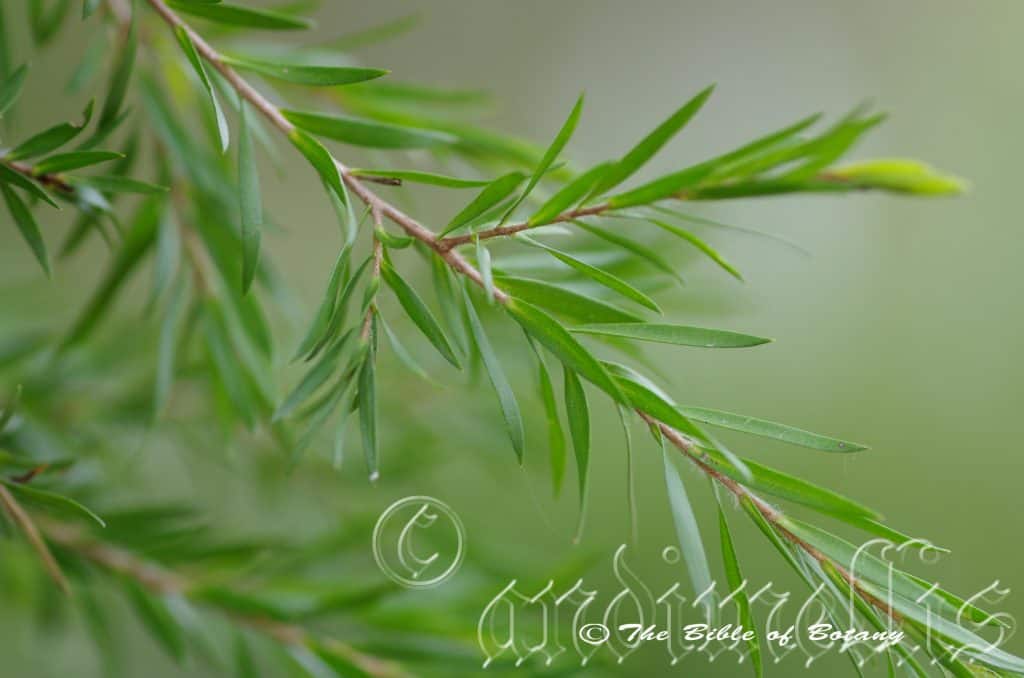
Rosser Gardens Benowa Qld.
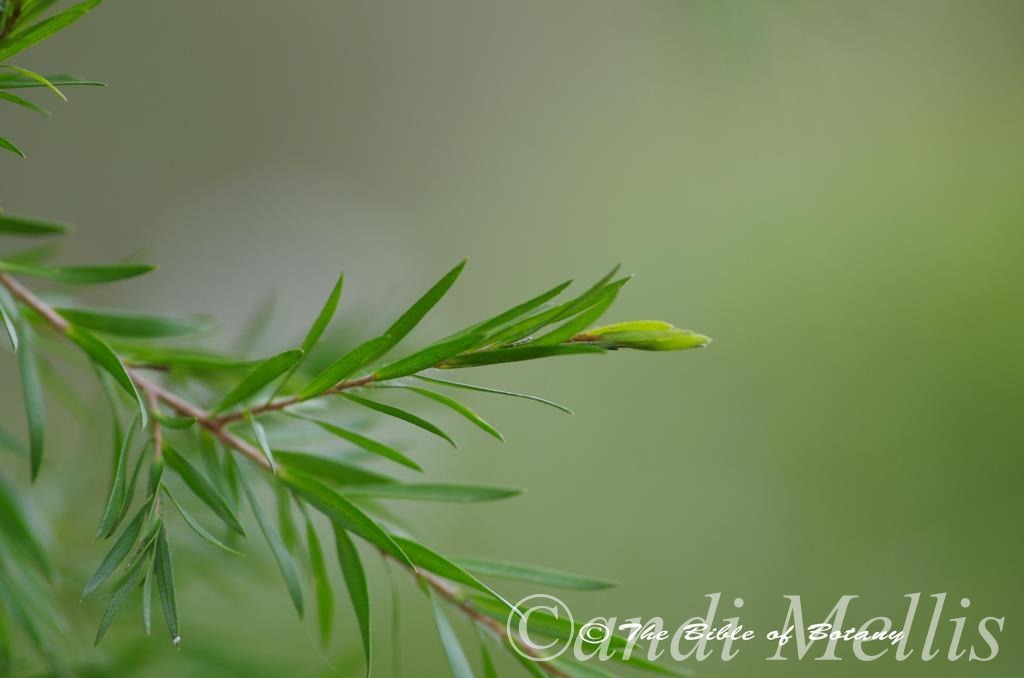
Rosser Gardens Benowa Qld.
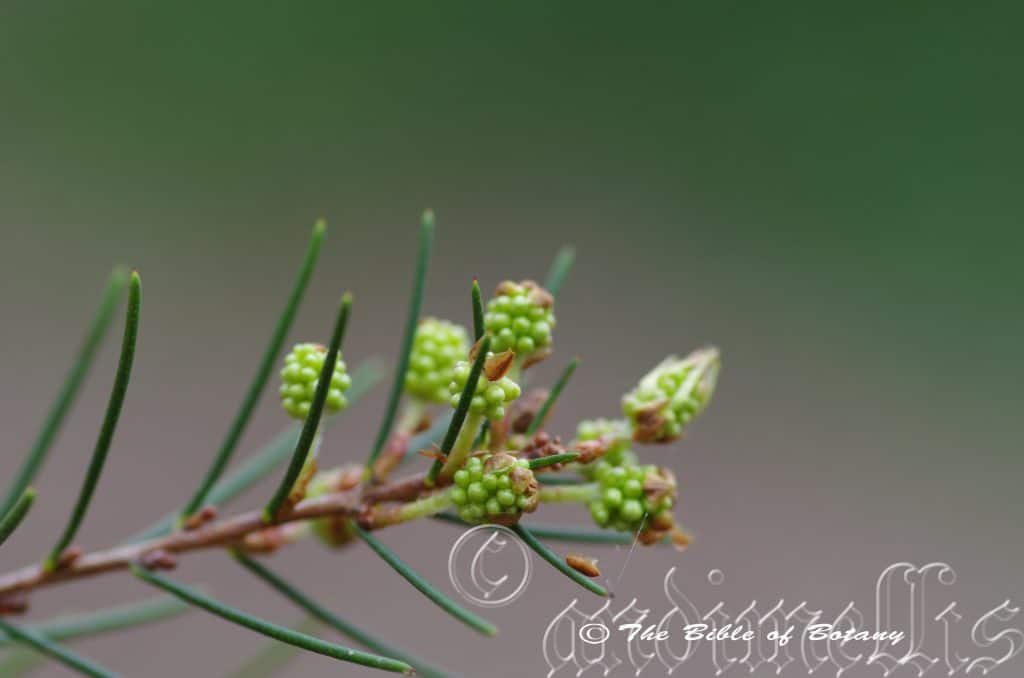
Rosser Gardens Benowa Qld.
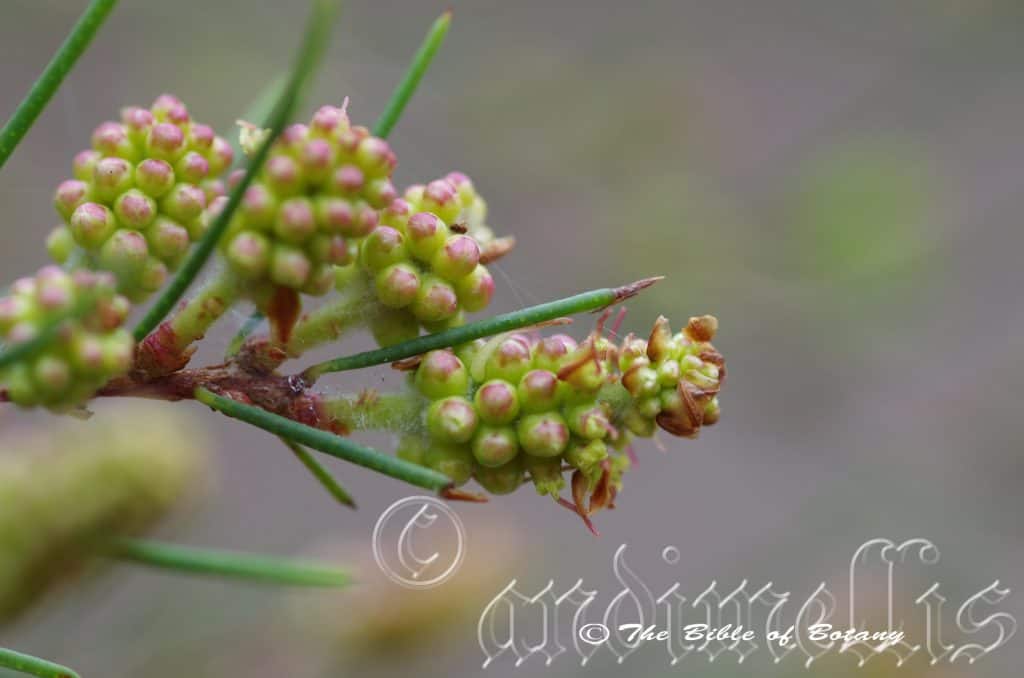
Rosser Gardens Benowa Qld.
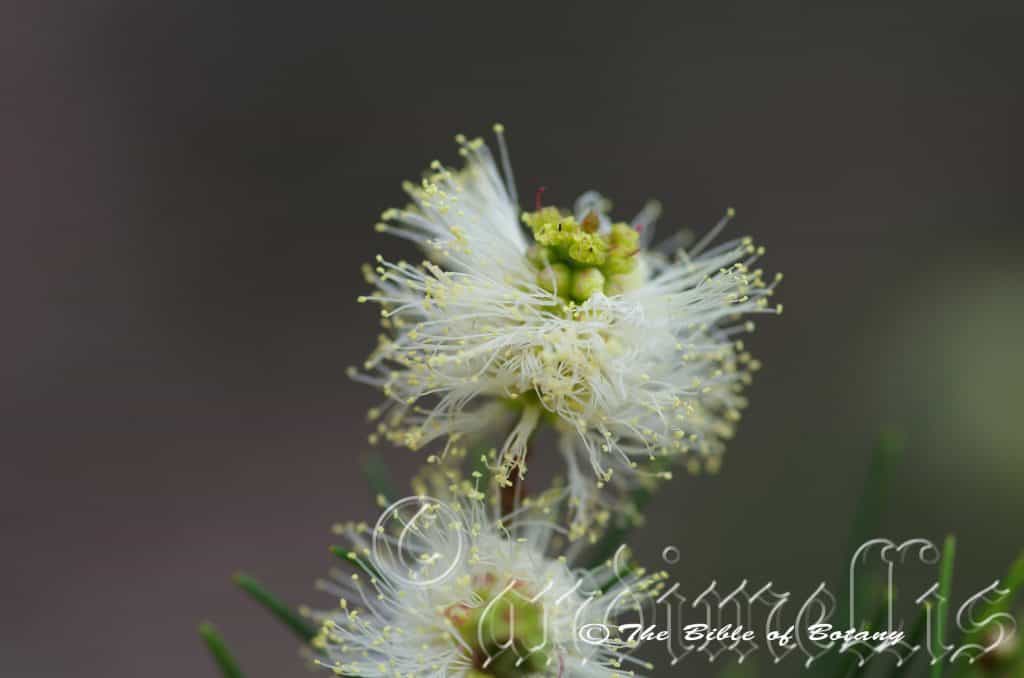
Rosser Gardens Benowa Qld.
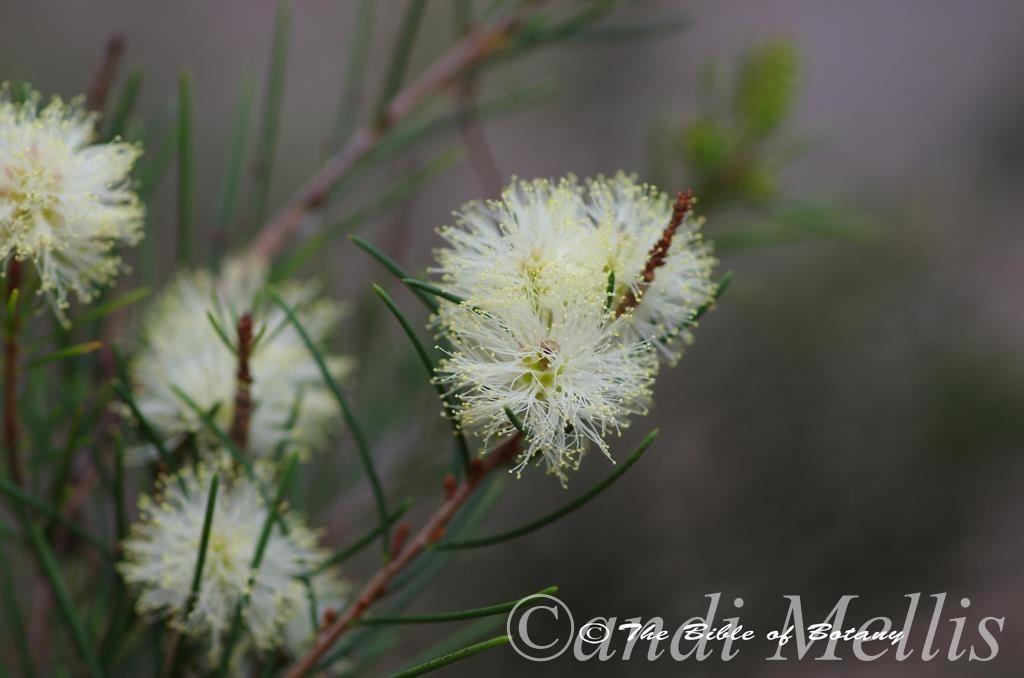
Rosser Gardens Benowa Qld.
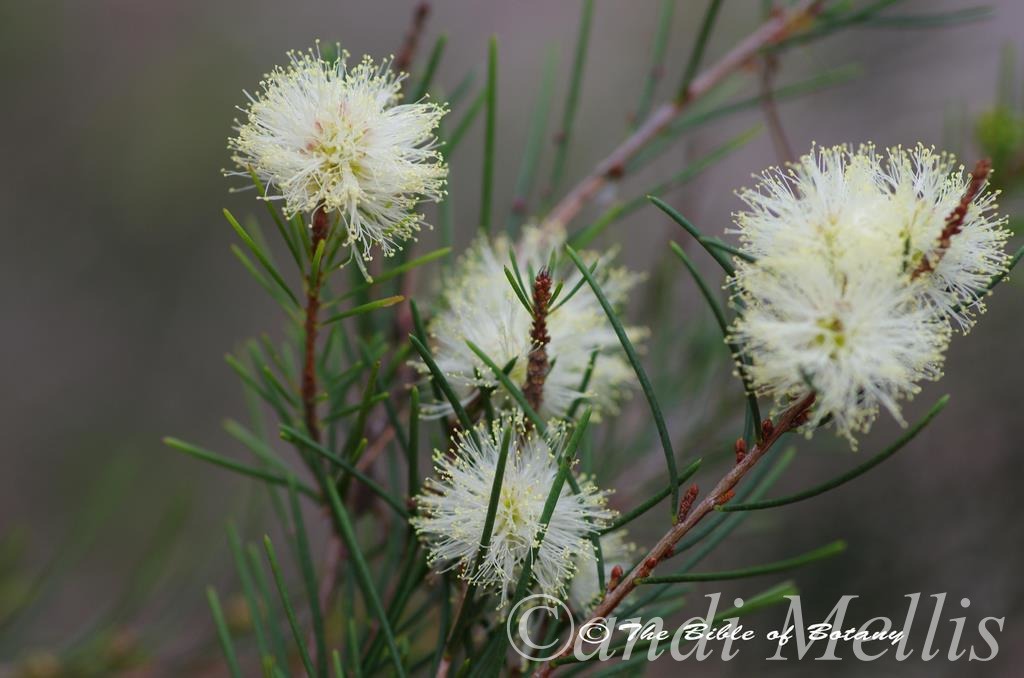
Rosser Gardens Benowa Qld.
Melaleuca uncinata
Classification:
Division: Magnoliophyta
Class: Magnoliopsida
Superorder: Rosane
Order: Myrtales
Family: Myrtaceae
Subfamily: Myrtoideae
Tribe: Melaleuceae
Genus: From Melas, which is Ancient Greek for black and Leukos, which is Ancient Greek for white. It refers to plants, which usually have white papery barks that are often charred by fire thus the bark is black and white.
Specie: From Uncinata, which is Latin for a hook or to bear hooks. It refers to structures or organs, which are covered in hooks.
Sub species:
Common Name: Broom Bottle Brush or Broom Bush or Brush fence Bottle Brush.
Distribution:
Melaleuca uncinata is found in the southern half of Australia extending from Kalbarri to Kiwirrkurra in southern coastal Western Australia then south east to Lake Pinaroo in far south west Queensland then north-north east to Atherton and the coast in north east Queensland.
It is mainly found west of the Great Dividing Range.
https://avh.ala.org.au/occurrences/search?taxa=Melaleuca+uncinata#tab_mapView
Habitat Aspect Climate:
Melaleuca uncinata prefers full sun. It grows in dry schlerophyll woodlands and mallee country. It quite often forms dense communities. The altitude ranges from 15 meter ASL to 400 meters ASL.
The temperatures range from minus 3 degrees in August to 40 degrees in January.
The rainfalls range from lows of 160mm to an average of 750mm. it is drought hardy.
Soil Requirements:
Melaleuca uncinata prefers sandy loams, gravelly or stoney soils to light gravelly clays which are close to the parent rock, deposited silts along rivers and streams, alluvial covering old rivers or sandstone plains. The plain soils are usually on shallow depressions which may hold water for short periods during winter rainfalls. The soils are usually derived from decomposed sandstones or granites or lateritic sands. The soils pH. ranges from 4.5pH to 6.5pH. It tolerates seasonal waterlogged soils. Non saline soils to extremely saline soils are tolerated as it is often found growing on saline flats and adjacent to clay salt pans.
Height & Spread:
Wild Plants: 1m to 4.5m by 1m to 3m.
Characteristics:
Melaleuca uncinata grows as a medium shrub with pale grey to grey, hard to touch bark. Branchlets are grey and glabrous. The trunk is poorly formed and is often gnarled and twisted. The bark is furrowed on older trees and has a twisted, spiral or abrupt furrows. The bark turns grey-brown on the branches and is scabrous while the branchlets are tawny to red-brown and slightly scabrous or yellow-green glabrous and smooth.
Melaleuca uncinata‘s alternate leaves are broadly acicular to terete in cross section and measure 15mm to 40mm in length by 1mm to 2mm in width. The base is yellow tapering to subsessile while the apex is acute with a fine recurved hook or spine. The concolourous laminas are deep sea green to deep olive-green. It is dull to semi glossy, glabrous and rigid. Immature leaves are pale lemon-green to pale olive-green. It is dull and glabrous. The leaves are not aromatic when crushed.
The inflorescence of Melaleuca uncinata is a dense single globular spike born from the leaf axils. The terminal shoots do not grow out as the stamens bloom. The rachis is densely covered in white puberulent hairs and measure 22mm to 28mm diameter. There are 5 to 25 individual flowers in the globular head. They measure 10mm to 14mm in length and in diameter. The 5 ovate sepals measure 0.6mm to 1mm in length by 3mm in width. The hypanthium is lemon-green with a red tinge while the sepals are pale lemon-green tinged red. It is glabrous. The 5 obtuse petals are cream to pastel yellow tinged pink and measure 1mm to 1.5mm in length by 2mm to 2.5mm in width. It is persistent while the stamens fully develop.
The white to creamy yellow stamens are the most prominent part of the flowers. There are 4 to 8 white to creamy yellow stamens on each of the 5 claws. The white claws measure 2mm to 3mm in length while the white filaments measure 2.5mm to 3mm in length. The anthers are pastel yellow.
The long white style often turns pale cream below the stigma. The style measures 6mm to 7mm in length while the e ovary has 3 locules. The base of the style is surrounded by the nectaries. The honey scented flowers appear sporadically throughout the year when local weather conditions are favourable with a peak from late September to November.
Melaleuca uncinata‘s fruit is a sessile squat globose, glabrous capsule which measure 7mm to 12mm in diameter when ripe. The capsules measure 3mm to 4mm in length by 3mm to 3.5mm in diameter. The orifice is enclosed and measures 1mm to 1.5mm in diameter. The woody capsule is dull grey and glabrous. The capsules contain seeds and chaff mixed together. It is brown and look swollen compared to the chaff. The calyx lobes are not persistent on the hypanthia.
Wildlife:
Melaleuca uncinata supports myriads of native bees, native flies, native beetles and butterflies when in flower. It also supports small medium and large honeyeaters which scurry over the flowers and seek protection from the bushy foliage.
Cultivation:
Melaleuca uncinata is an excellent small bushy medium upright shrub for native gardens. It is suitable on all types of sandy loams to medium clays and are most suitable for small, medium and large gardens close to the coast in temperate areas or semi-arid gardens well into the center of Australia. As garden subjects they will grow from 1.5 meters to 3 meters in height by 1.5 meter to 2meters in diameter when grown in the open.
It is cold tolerant to temperatures to at least minus 3 degree once established. It is drought tolerant. This is one Melaleuca that is worth while trying on the east coast in sub-tropical coastal gardens especially where saline soils are the problem. They will commence flowering from an early age even from seed. I have seen well grown shrubs with good flowers at only 3 years of age.
They can be regularly tip pruned if a tall hedge is required. This can be maintained with regular pruning and planting closer together with spacings of 2.5 meter. They respond very well to tip pruning, recovering quickly and increasing the number of auxiliary points for flowers in the following season. When used as a hedge row they will give startling flushes cream flowers and deep green mature leaves.
It is very fast growing especially with a good fertilizing program and require little or no watering to grow more than 1 meter a year. To increase flowering give the plants a dose of our recommended fertilizer following the autumn flowering as it starts to rain. This will ensure good flowering over the next 12 months.
It is an excellent shrub for areas that have drainage problems on sandy to heavy clay soils. When planting the trees in a heath scene scatter them using at least one in the foreground so the flowers can be fully enjoyed and their natural bushy shape is not interfered with.
It is at home in the desert so use them to accentuate a desert garden. Desert gardens are easy to maintain and require very little water. When you design a miniature desert garden, use contours to display the plants to their best. Plant a row of small shrubs on the top to represent the hills or a ridge or use them on the plains to give a feeling of expansive flatness with the hills in the distance.
Another method would be to cover the hills in the distance with annuals or perennials that have soft grey foliage. This again would effectively represent the haze experienced in real life. It would have to be taller than those planted in valleys or on plains to give depth and height. Don’t make the ridge straight curve it and wind it around. At the same time ensure that the ridges are only slightly higher than the plains as deserts are very flat places. Use small tussock grasses or Lomandra species adjacent to Melaleuca uncinata to give them height. Prune plants up the valleys and background so they remain shorter than those in the foreground to give greater depth. Place 2, 3 or 4 of the melaleuca uncinata in the fore ground and in the front section of the mid ground. Prune these plants as they grow so that they develop into small trees. Pull them over all facing the same direction so that they give the impression of a sandy heath with strong winds. Scatter plant the remaining area sparsly with small
Lomandra species and other tussock grasses or prostrate Plectranthus species like Plectranthus graveolens or Plectranthus parviflora. Use as we have already mentioned pale grey and blue foliages in the background on the mounds or dunes. This will give great depth to the scene. The barren spaces between can be planted with annuals to give splashes of colour at different times of the year. Use single primary colour plants at different times for the best results. For example use Hibbertia species, Helichrysum species for an all yellow display or Heiliopterum species for a pink or white display. Carpobrotus species give a good display with Lechenaultia biloba for striking purples and blue or Mazus pumilio for a softer look on moist ground.
Use old stumps and roots to make the stumps or roots look larger and the trunks look longer and more spindly.
Propagation:
Seeds: Melaleuca uncinata seeds can be sown directly into a seed raising mix. Do not cover the seeds. Press them into the mix. Place the tray in a warm sunny position. When the seedlings are 15mm to 20mm tall, prick them out and plant them into 20mm native tubes using a good organic mix.
When the seedlings are 70mm to 90mm tall, prick them out and plant them into 50mm native tubes using a good organic mix or plant them out into their permanent positions.
Once the seedlings reach 150mm to 200mm in height they can be planted out into their permanent position.
Cuttings:
Cuttings must be used if flowering in the following season are required or a particular flower colour of form is required. Melaleuca uncinata strikes easy from cuttings. Use 100mm to 150mm long half ripened material when growing from cuttings from the present season’s growth. Take them in warmer months of the year. Remove half the leaves from the bottom section being careful not to tear the bark.
1 Prepare the cutting mix by adding one third sharp clean river sand, one third peat and one third perlite. These ingredients are sterilize,
2 Select good material from non diseased plants,
3 Select semi green stems for cuttings. Look for a stem with two or three nodes,
4 Place the cutting on a flat, hard surface, and make a clean cut down one side of the cutting at the base for 10mm with a sharp sterile knife or razor blade. – This scarification of the node will increase the chances of roots emerging from this spot. Now remove all but one or two the leaves, leaving the apex leaves in tact. If the leaves are very large in proportion to the stem, cut off the apical halves.
5 Fill a saucer with water, and place a little medium strength rooting hormone into another container like a milk bottle top. Dip the node end of the cutting into the water and then into the rooting hormone. Tap off any excess hormone,
6 Use a small dipple stick or old pencil to poke a hole into the soilless potting mix. Ensure the hole is slightly larger than the stem diameter and be careful not to wipe the rooting hormone off the cuttings base, place the cuttings in a pattern ensuring the cuttings are not touching each other,
7 I like to place the pots in Plastic bags to help maintain temperature and moisture. Place in a semi shaded place like under 50mm shade cloth.
8 When the cuttings have struck, open the bag to allow air circulation for a few days to a week,
9 Once hardened off remove the cuttings from the bag and allow to further hardening for a few more days,
10 Transplant into a good potting mix to grow on.
Fertilize using seaweed, fish emulsion or organic chicken pellets soaked in water on an alternate basis. Fertilize every two months until the plants are established then twice annually in early September or March to maintain health, vitality and better flowering.
Further Comments from Readers:
Hi reader, it seems you use The Bible of Botany a lot. That’s great as we have great pleasure in bringing it to you! It’s a little awkward for us to ask, but our first aim is to purchase land approximately 1,600 hectares to link several parcels of N.P. into one at The Pinnacles NSW Australia, but we need your help. We’re not salespeople. We’re amateur botanists who have dedicated over 30 years to saving the environment in a practical way. We depend on donations to reach our goal. If you donate just $5, the price of your coffee this Sunday, We can help to keep the planet alive in a real way and continue to bring you regular updates and features on Australian plants all in one Botanical Bible. Any support is greatly appreciated. Thank you.
In the spirit of reconciliation we acknowledge the Bundjalung, Gumbaynggirr and Yaegl and all aboriginal nations throughout Australia and their connections to land, sea and community. We pay our respect to their Elders past, present and future for the pleasures we have gained.

Clarence River NSW
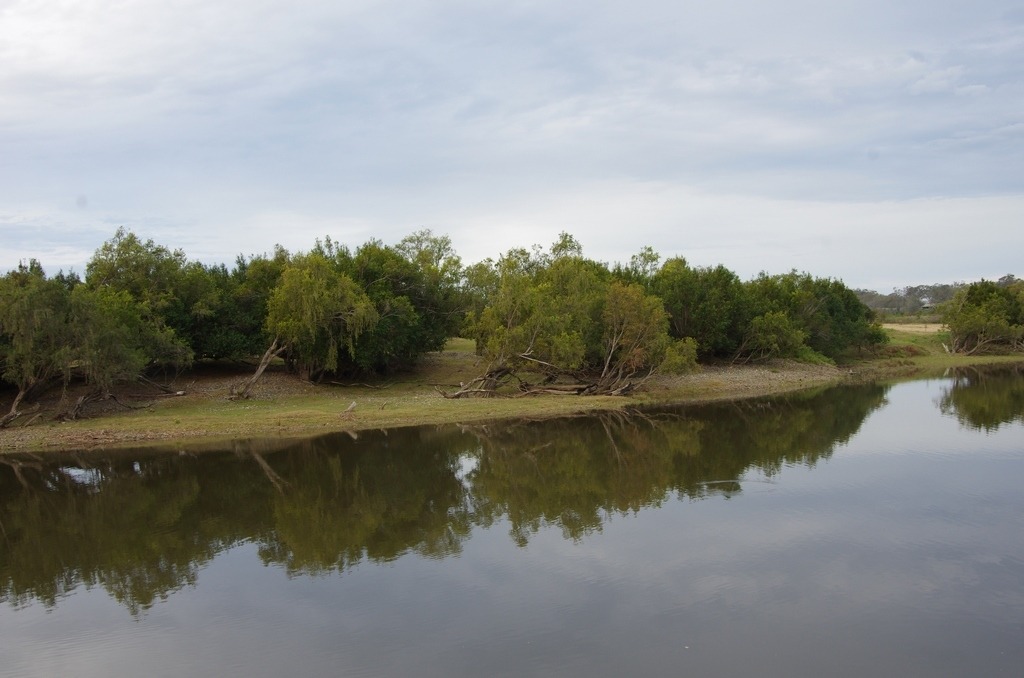
South Bank Clarence River Whitemans Creek NSW

Clarence River NSW
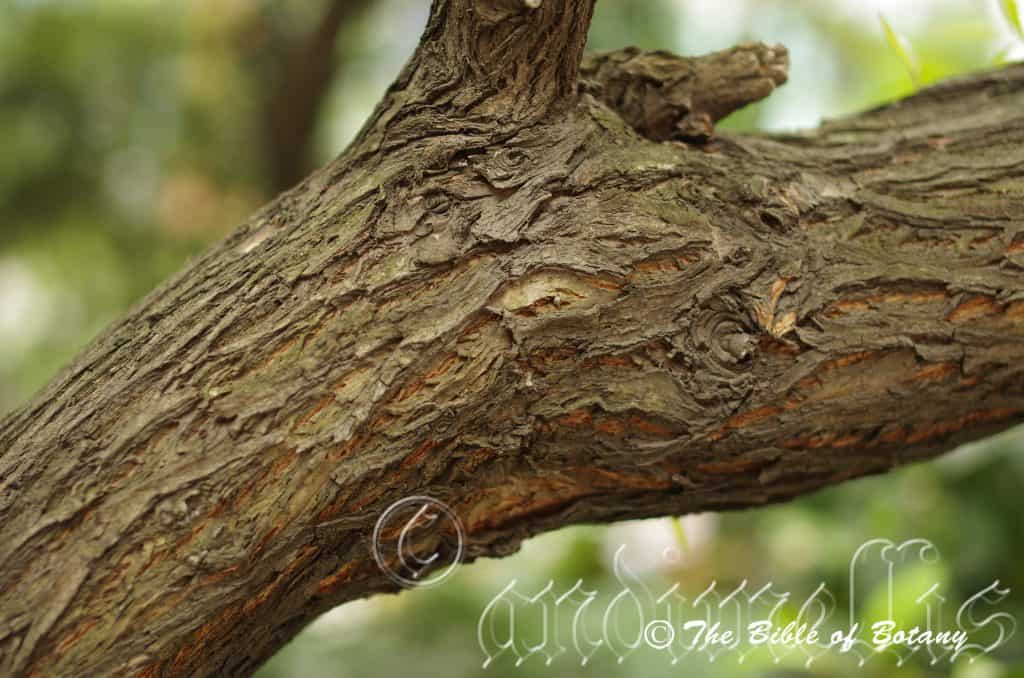
Sha Ping Ba China
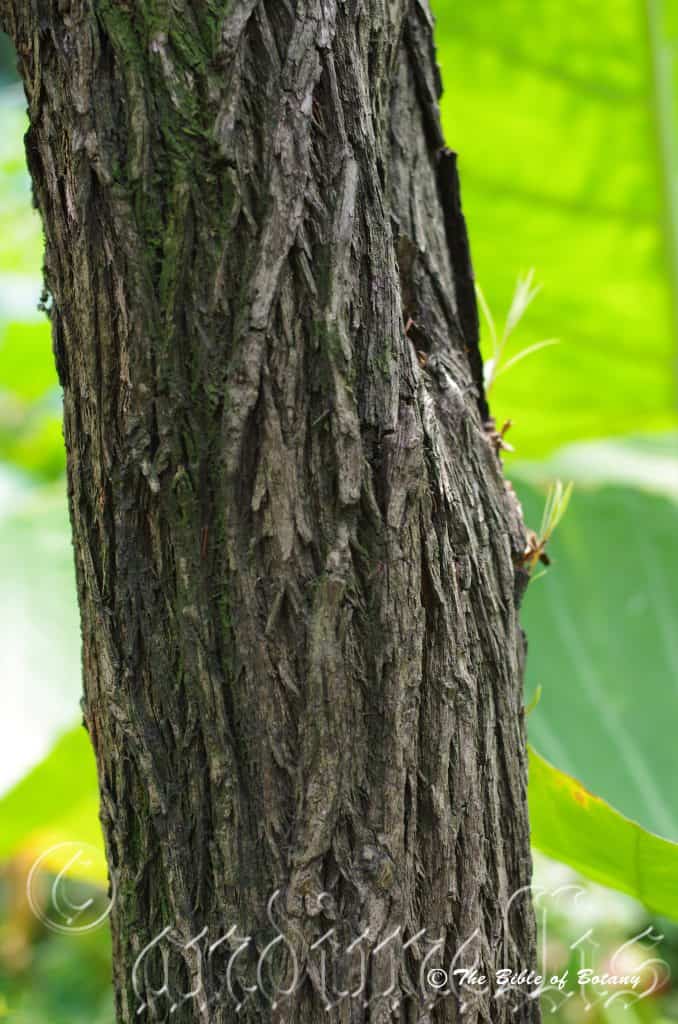
Sha Ping Ba China
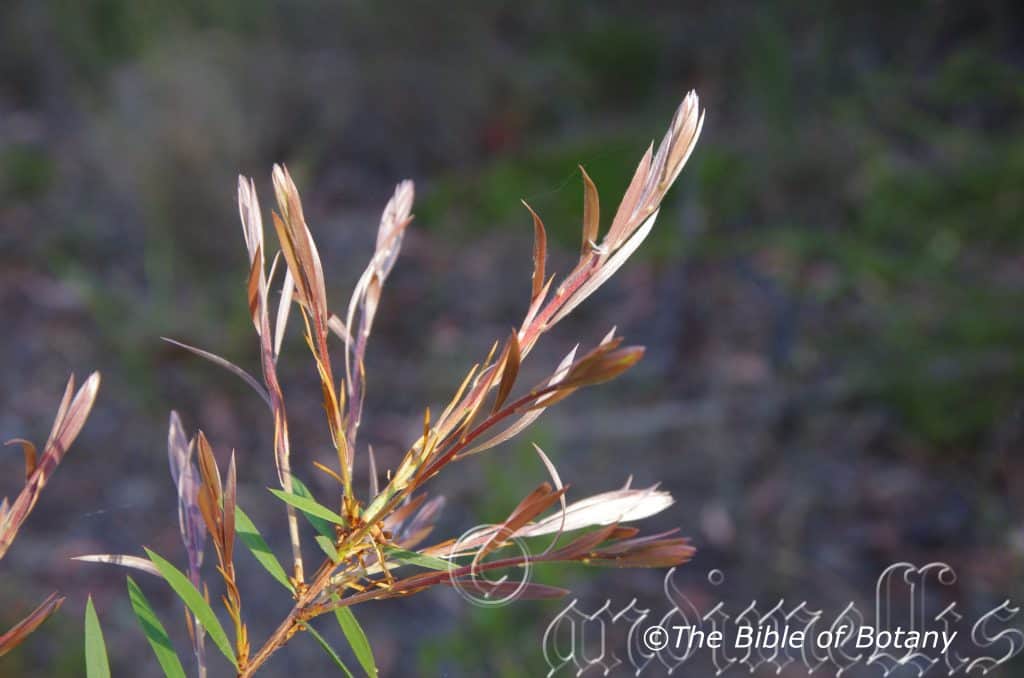
Author’s Garden The Pinnacles NSW
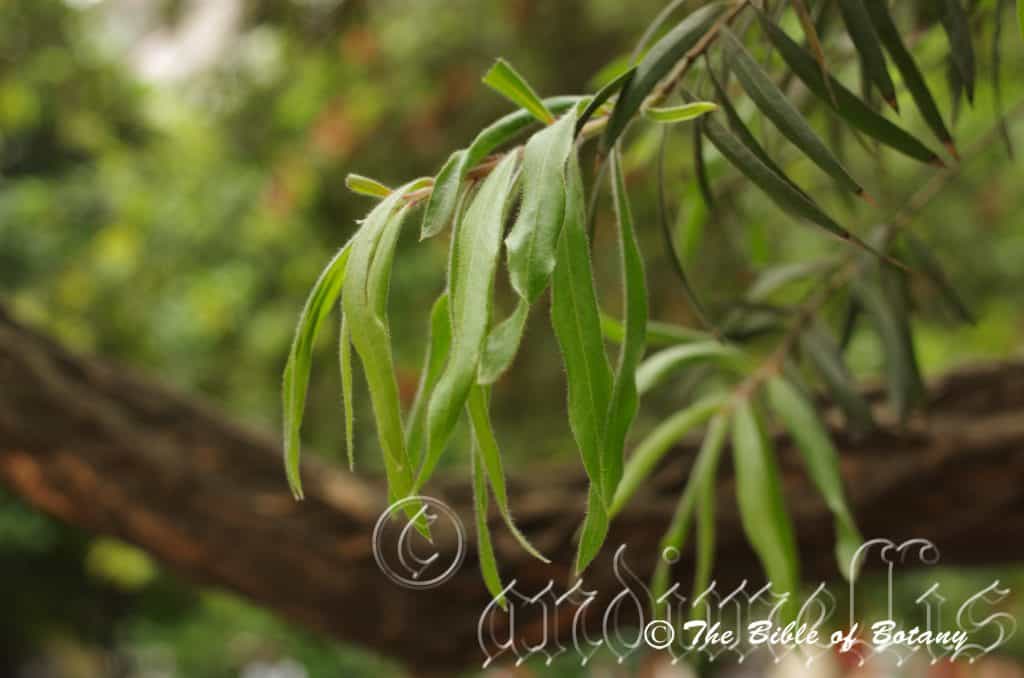
Sha Ping Ba China
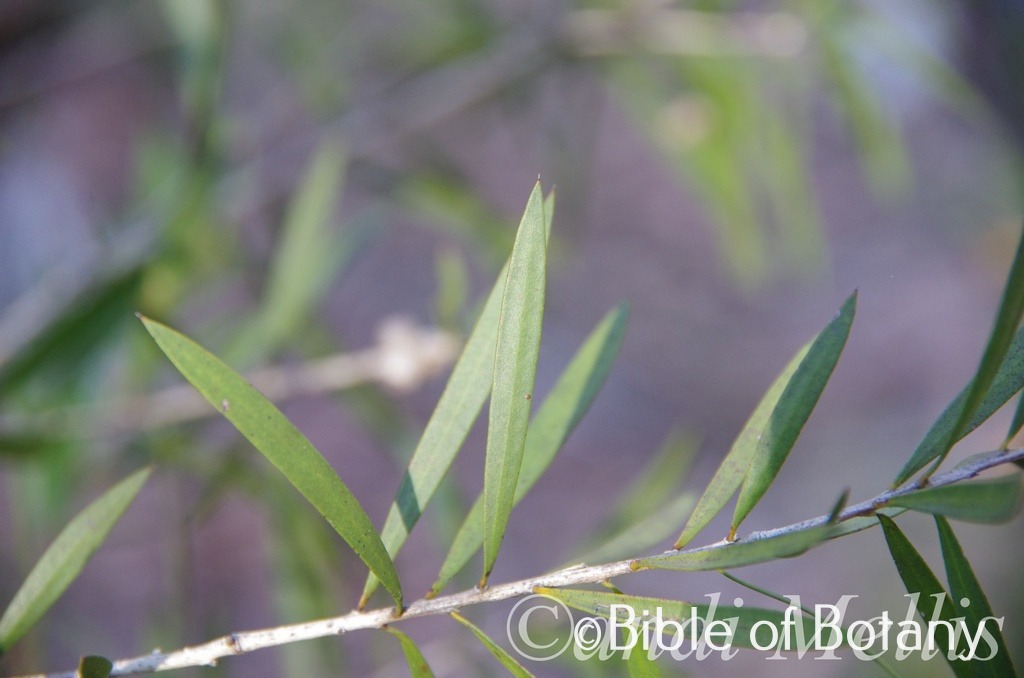
Sha Ping Ba China
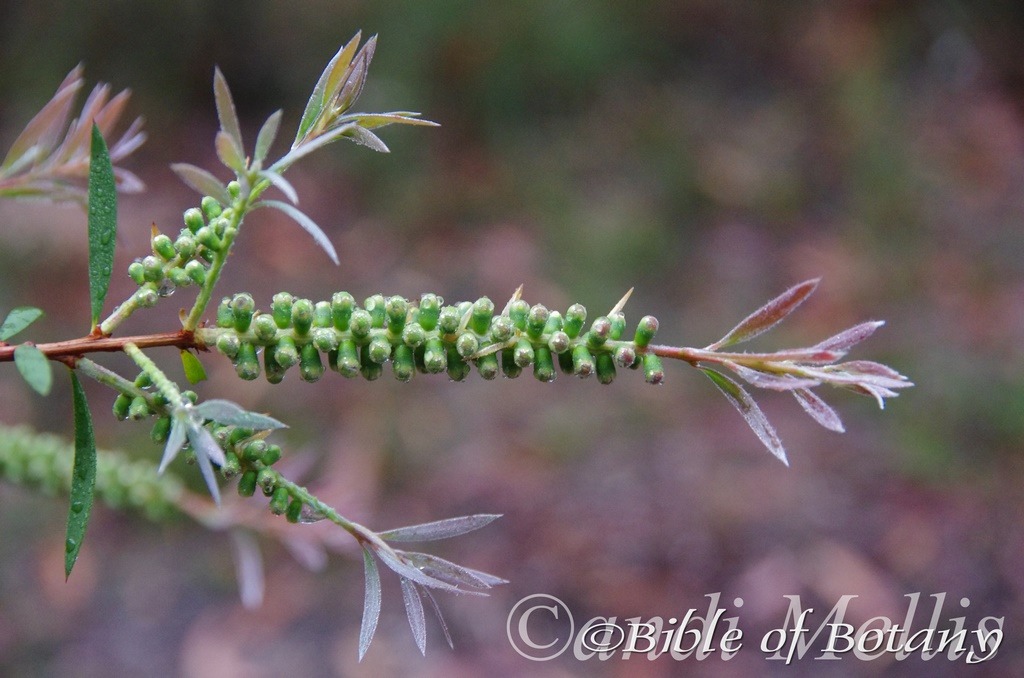
Author’s Garden The Pinnacles NSW
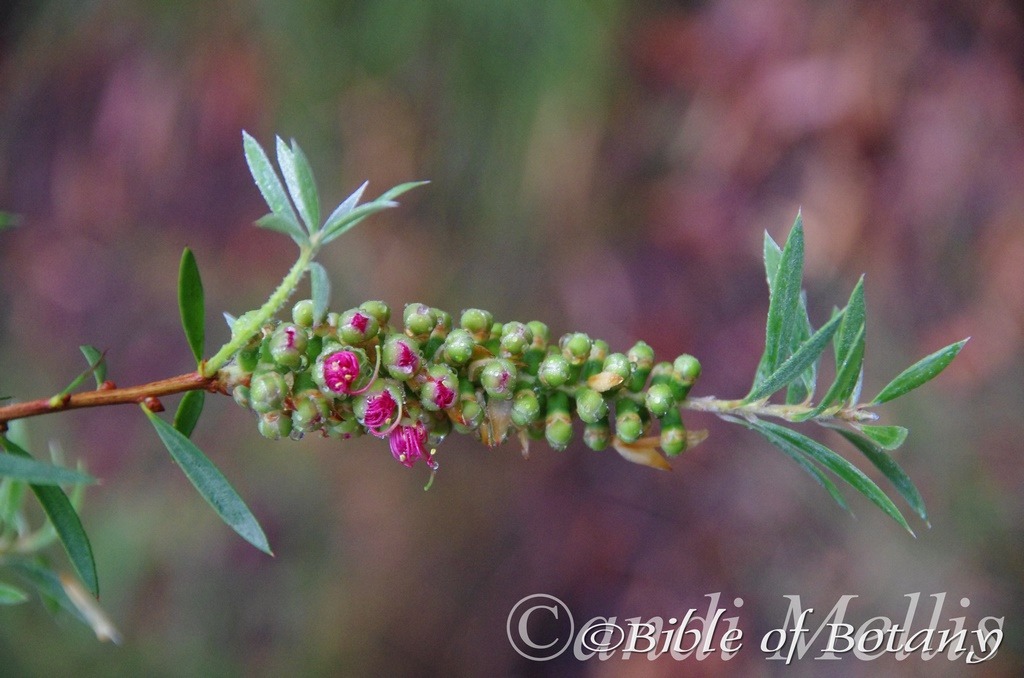
Author’s Garden The Pinnacles NSW
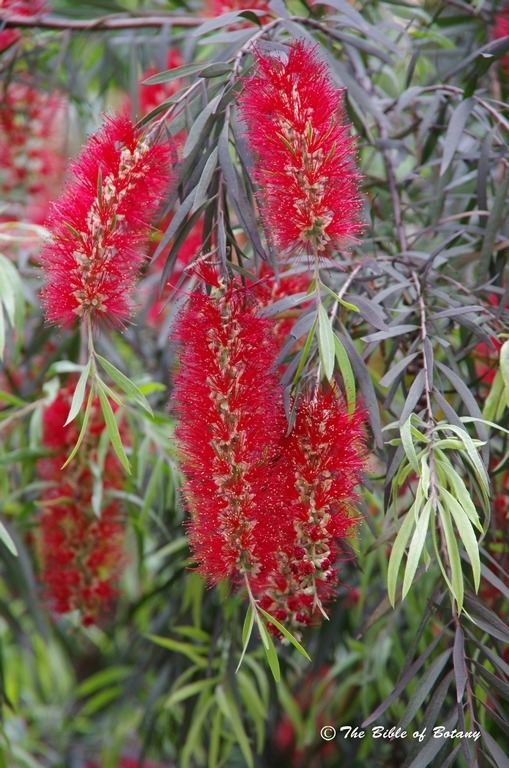
Clarence River NSW
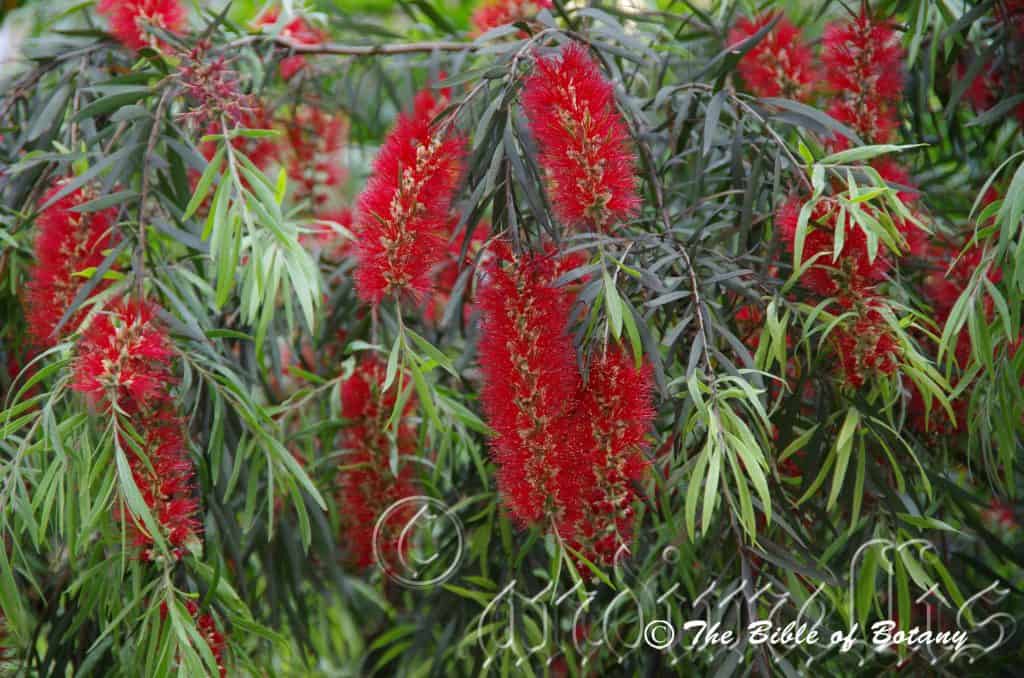
Clarence River NSW
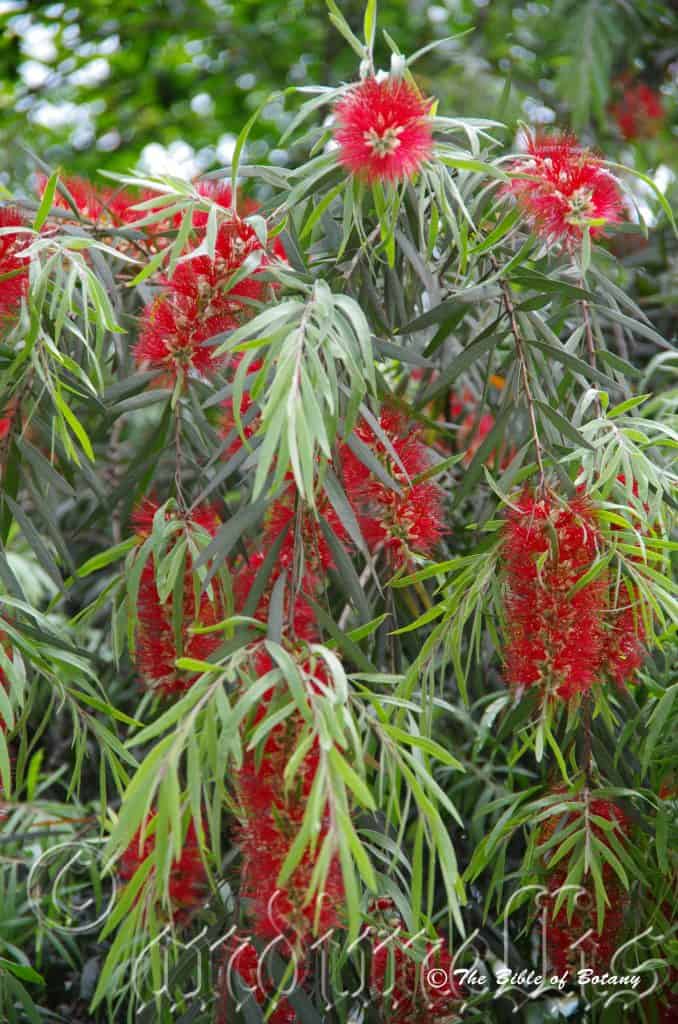
Clarence River NSW

Sha PIng Ba China
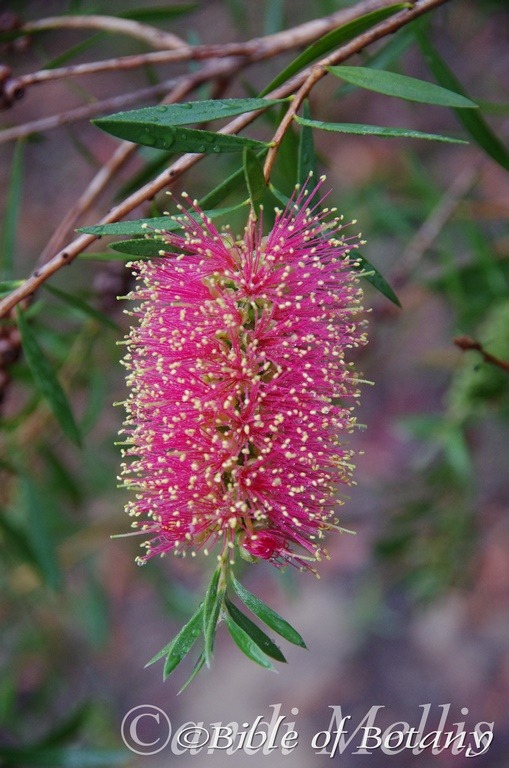
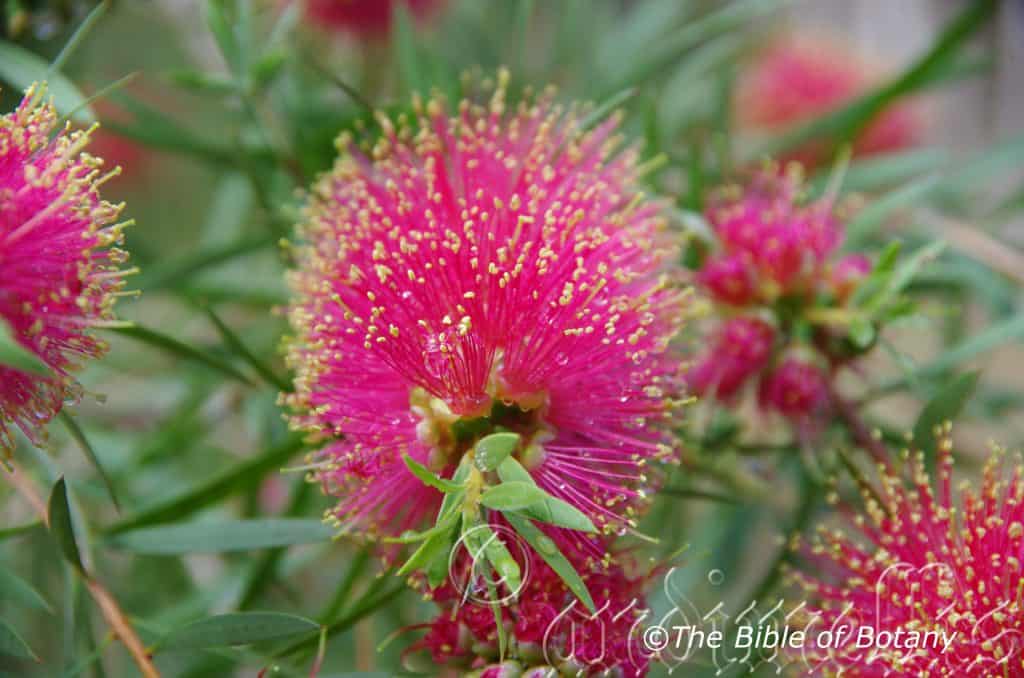
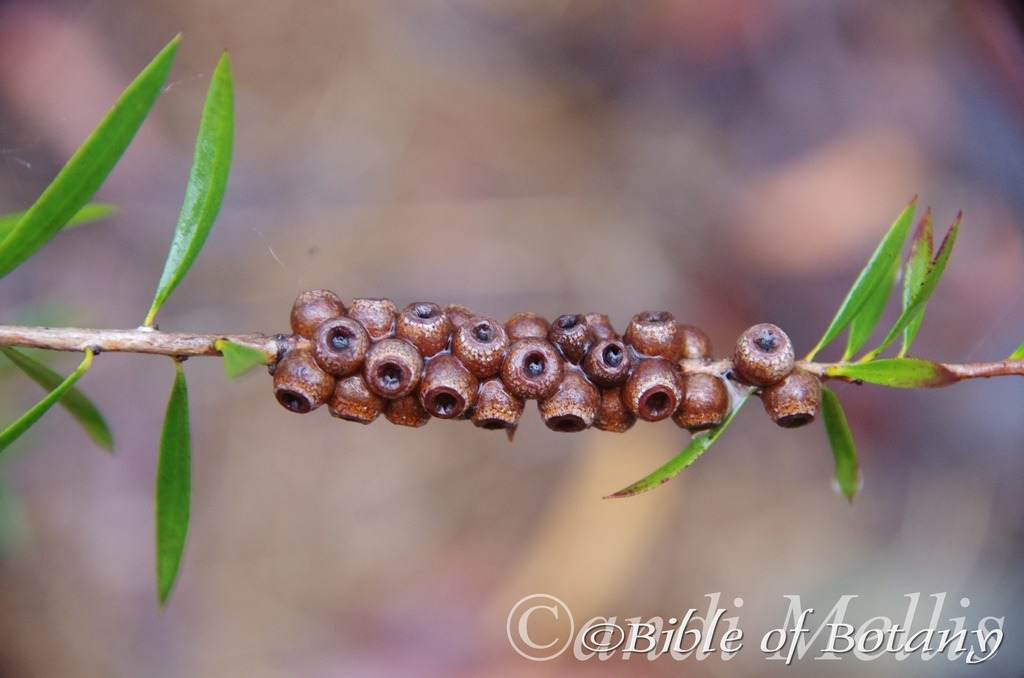
Author’s Garden The Pinnacles NSW
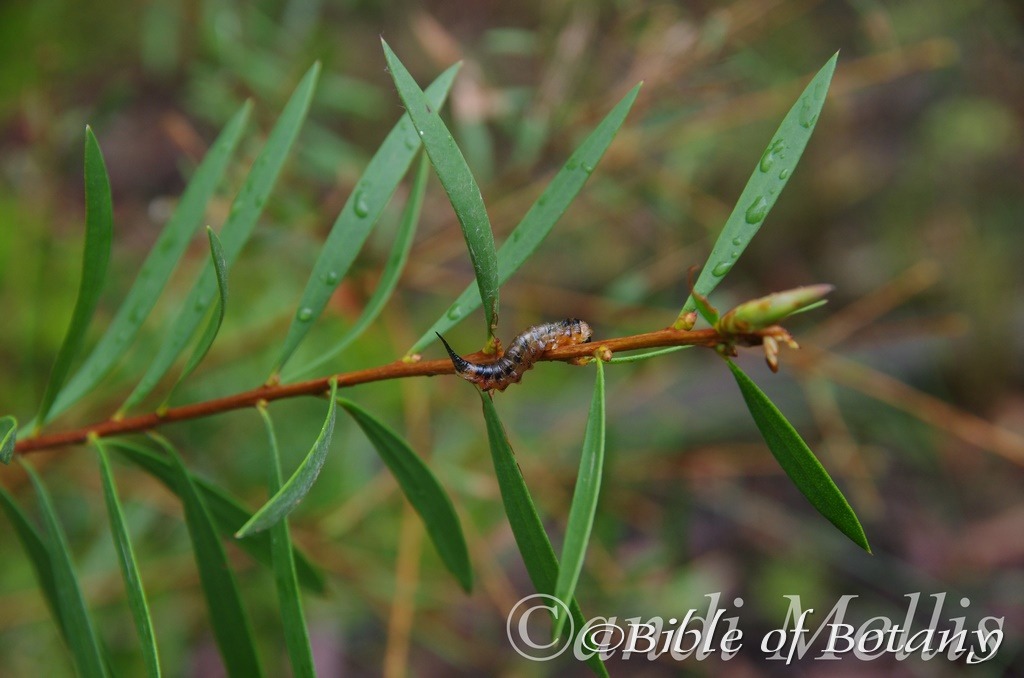
Author’s Garden The Pinnacles NSW
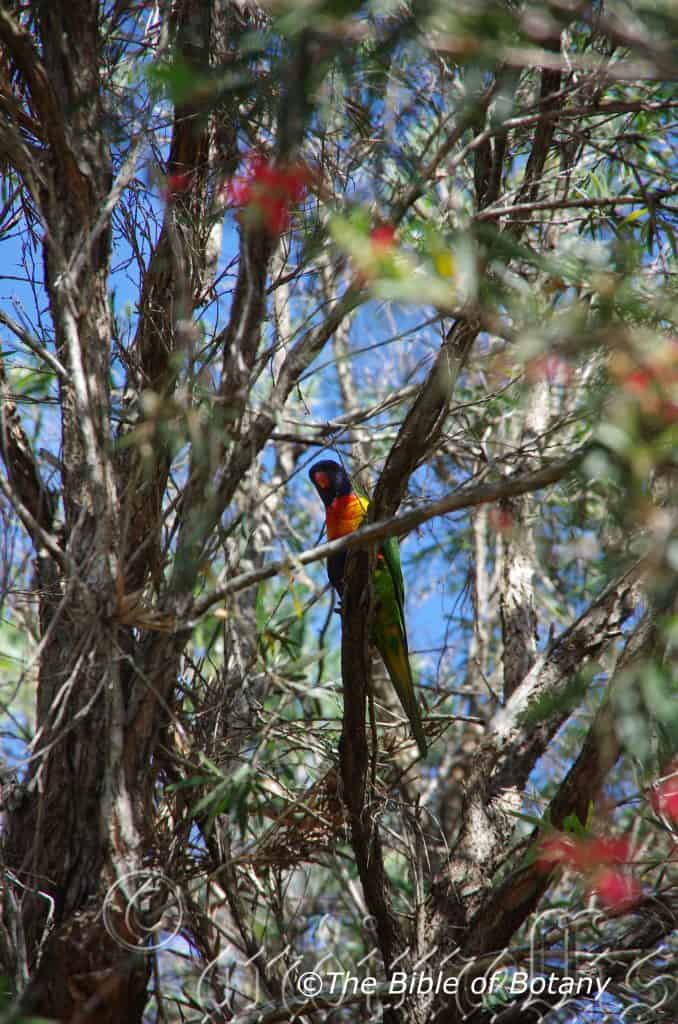
Author’s Garden The Pinnacles NSW

Mount Cootha Botanic Gardens Qld.
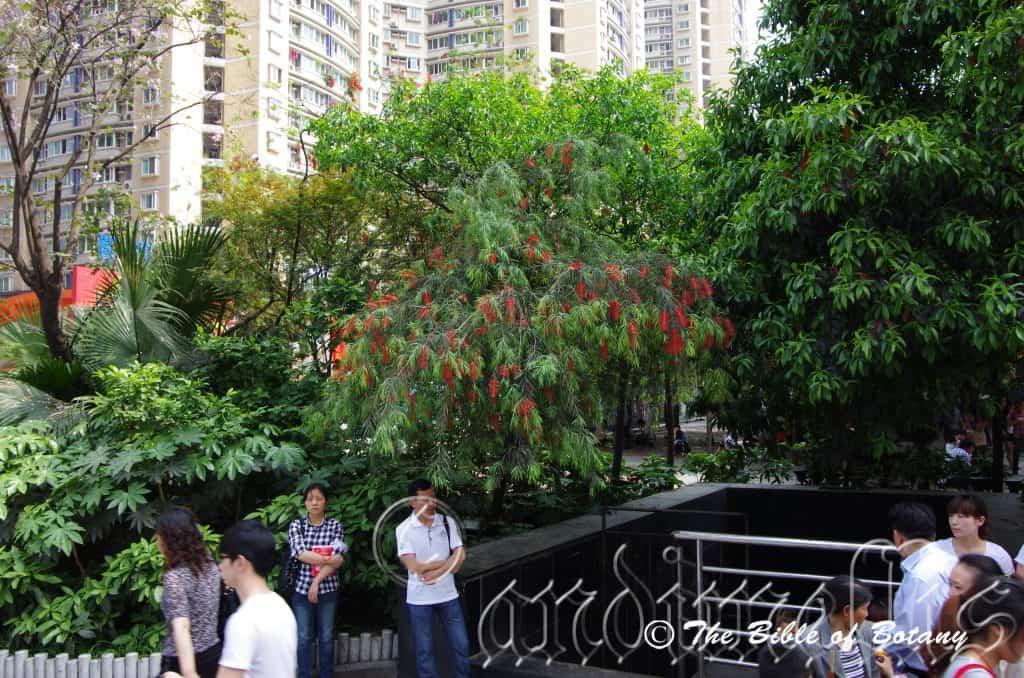
Sha Ping Ba Chong Qing China
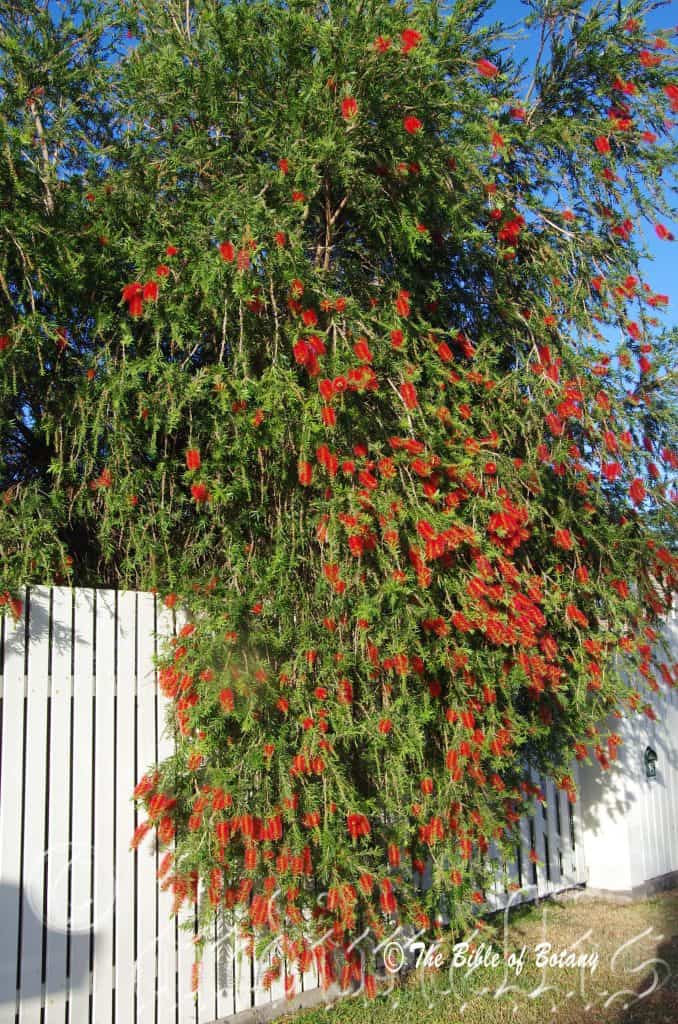
Condon Qld.
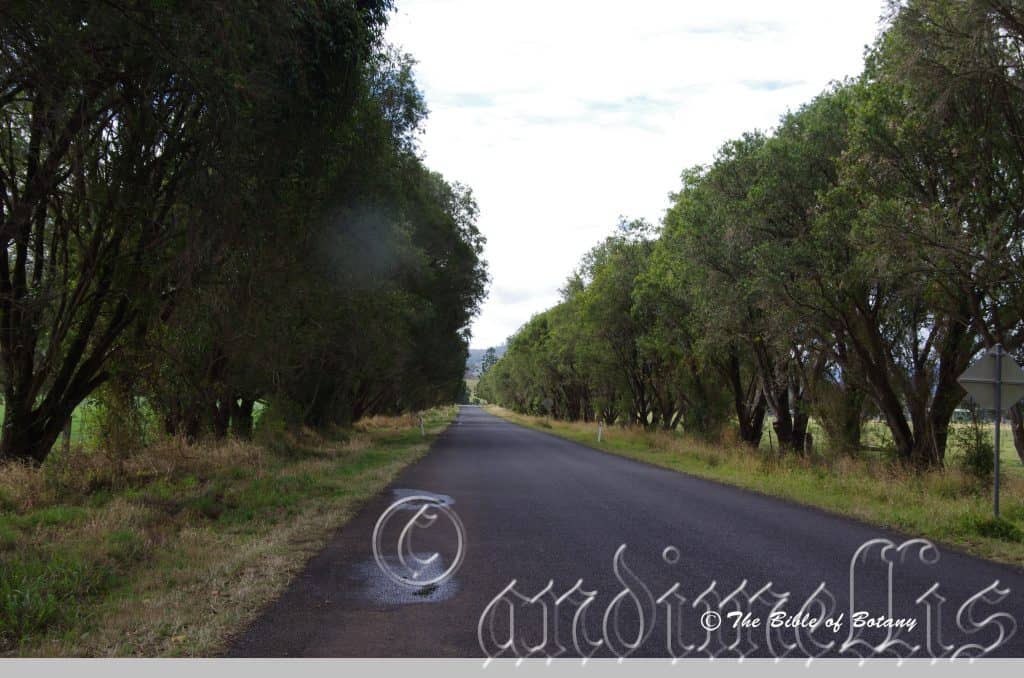
Wiangaree NSW
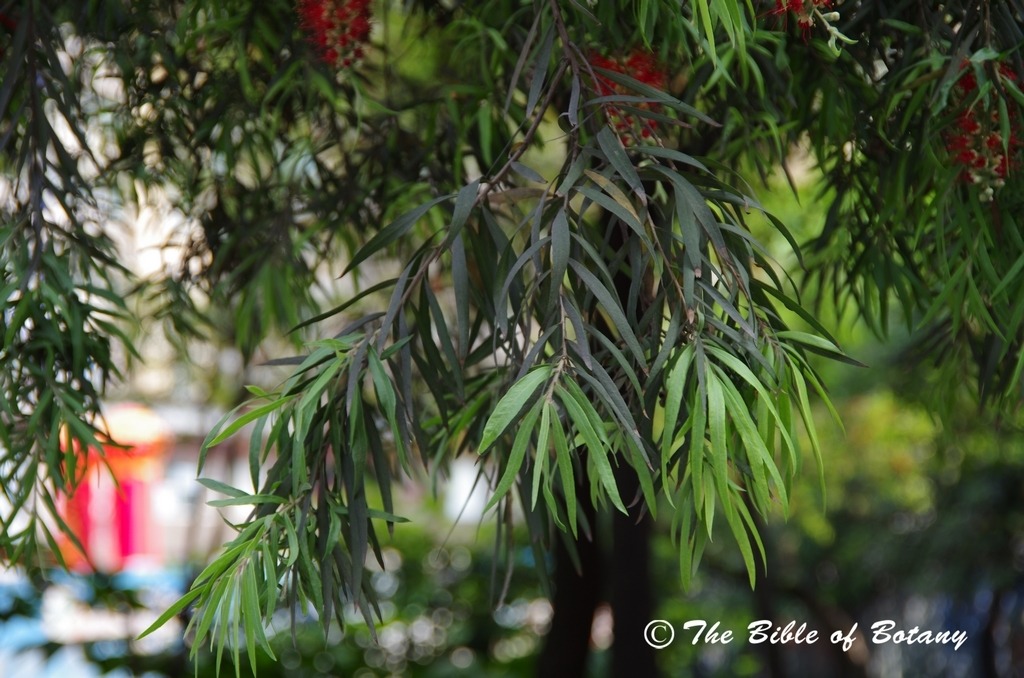
Sha Ping Ba China
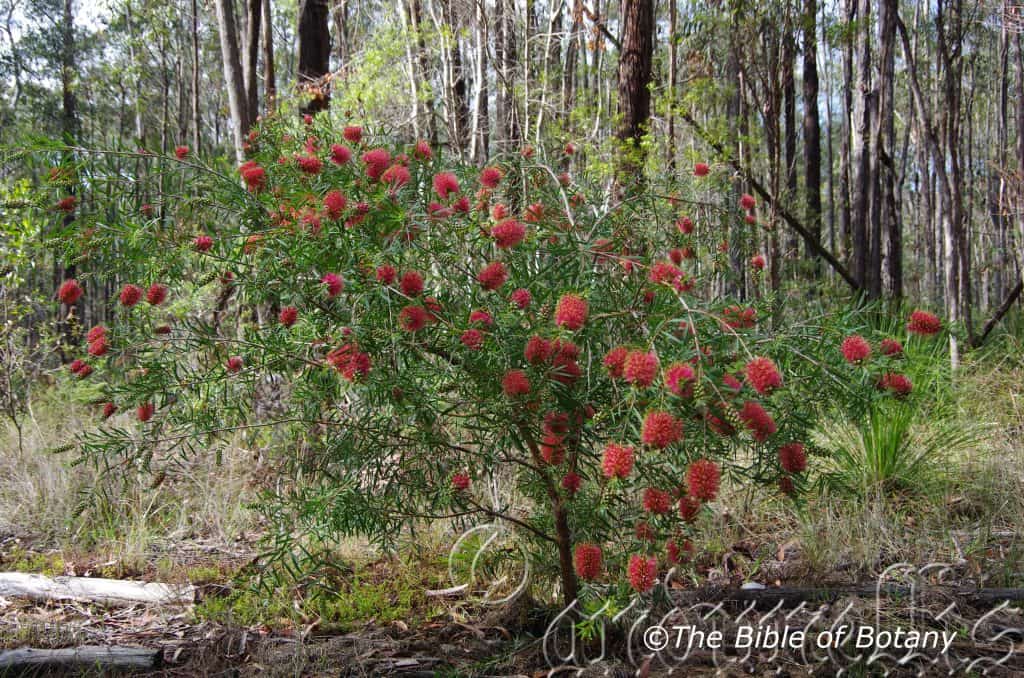
Author’s Garden The Pinnacles NSW
Melaleuca viminalis
Classification:
Division: Magnoliophyta
Class: Magnoliopsida
Superorder: Rosane
Order: Myrtales
Family: Myrtaceae
Subfamily: Myrtoideae
Tribe: Melaleuceae
Genus: From Melas, which is Ancient Greek for black and Leukos, which is Ancient Greek for white. It refers to plants, which usually have white papery barks that are often charred by fire thus the bark is black and white.
Specie: From Viminale, which is Latin for long, slender, flexible stems. It refers to stems which somewhat wispy resembling those of the weeping willow. (Still widely known as Callistemon viminalis).
Sub species:
Common Name: Weeping Bottle Brush or River Bottle Brush.
Distribution:
Melaleuca viminalis is found on the Kimberley Ranges and the Ord River in northern Western Australia. Southern Populations are garden escapees.
In the center it is found in the Tallaputta Gorge and King Canyon in the Mac Donald ranges west of Alice Springs in the Northern Territory.
In the east it is found south from the Jardine River National Park on Cape York Peninsula in far north east Queensland to Mount Loftis in central coastal New South Wales. There is also 2 disjunct populations in western Queensland in Boonjanulla National Park (Lawn Hill) and at Boulia. It is mainly found on the Western Plains, the Western Slopes, on and east of the Great Dividing Range to the coast.
https://avh.ala.org.au/occurrences/search?taxa=Melaleuca+viminalis#tab_mapView
Habitat Aspect Climate:
Melaleuca viminalis prefers full sun to light dappled shade. It usually grows on the banks of creeks, streams or rivers or at times around billabongs or lakes. The altitude ranges from 5 meter ASL to 900 meters ASL.
The temperatures range from minus 3 degrees in August on the Gibraltar Range to 40 degrees in January in the Ord River Catchment.
The rainfalls usually range from lows of 700mm to an average of 3200mm however in central Australia it can be as low as 150mm per year.
Soil Requirements:
Melaleuca viminalis prefer to grow on sandy loams, gravelly or stony soils to light gravelly clays which are close to the parent rock, deposited silts along rivers and streams or alluvials covering old rivers. The soils are usually derived from decomposed brown basalts, black basalts, sandstones, sandstone laterites, granites, metamorphic rock, alluvial deposits or at times accumulated sands. The soils pH. ranges from 5.5pH to 7.2pH. It tolerates waterlogged soils and high water tables or seasonal high water tables. Non saline soils to very saline soils are tolerated.
Height & Spread:
Wild Plants: 4m to 10m by 2m to 6m.
Characteristics:
Melaleuca viminalis‘s grows as a small tree with a grey to deep grey-brown, main trunk and branches. The trunk is hard to the touch with irregular, longitudinal furrows. The trunk is poorly formed and is often gnarled or twisted. The branches are grey and glabrous. The branchlets and new growth are erect or pendulant, pale green to grass-green and moderately covered in soft, white pulverulent hairs.
Melaleuca viminalis‘s alternate, narrow lanceolate to narrow elliptical leaves measure 45mm to 95mm in length by 3mm to 12mm in width. The symmetrical to slightly asymmetrical leaves are straight to slightly falcate on the broader side of the mid vein while the narrower side has a straighter margin. The petioles measure 1mm to 7mm in length. The bases are cuneate while the apexes are acute. The concolourous laminas are grass-green to deep green, dull, glabrous and coriaceous. The laminas are densely covered in minute oil dots. The laminas are flat and straight while the margins are entire and slightly thickened. The mid vein is slightly prominent on the lower lamina and is distinctly visible on the upper lamina while the lateral veins are obscure. The leaves are slightly aromatic when crushed.
The immature straight to slightly undulating leaves are pale grass-green to pale blue-green, moderately to densely covered in soft white pulverulent hairs.
The inflorescence of Melaleuca viminalis is a single spike born from terminals. The terminal shoot grows out to a new bud or leafy shoot prior to the last stamens blooming. The rachises, hypanthia and stipules are all densely covered in short, long, soft, white, pulverulent hairs. The flowers are born singularly within each bract. The linear to narrow elliptical, caduceous bracts measure 12mm to 14mm in length by 2.5mm to 3mm in width. The hypanthia are pale grass-green and measure 3.5mm to 5.5mm in length by 4.5mm to 6.5mm in diameter. There are 20 to 48 individual sessile flowers on each raceme. The spikes measure 45mm to 100mm in length by 35mm to 60mm in diameter. The individual flowers measure 16mm to 26mm in length. The 5 pale, cream broad obtuse sepals’ margins are fawnish and hyaline. The sepals measure 2.2mm to 3mm in length by 3mm to 4mm in width. The 5 pale, creamy oblong, cupular petals have hyaline margins and measure 3.5mm to 6mm in length by 3mm to 4mm in width. The sepals and petals are sparsely to moderately covered in long, soft, white pulverulent hairs. It is persistent while the stamens fully develop.
The scarlet red stamens are the most prominent part of the flowers. The 40 to 50 stamens are united and form a ring around the base and are discarded as a single unit after anthesis. The scarlet red to deep crimson red filaments measure 12mm to 21mm in length. The white, cream or pale yellow anthers turn deep purple after anthesis and measure 0.8mm to 1mm in length and diameter.
The scarlet red to crimson red pistils measure 12mm to 20mm in length by 3mm in diameter, while the green ovary has 3 locules. The base of the style is surrounded by the nectaries. The flowers appear over a long period of time from early August to September and again in late March to early May however some flowers usually appear during the warmer months between these 2 periods.
Melaleuca viminalis‘s fruits are oblong-globose, glabrous capsules. The capsules measure 6mm to 7mm in length by 5mm to 6mm in diameter. The orifice is enclosed and measures 4mm to 5mm in diameter. The greenish coriaceous capsules turn dull grey to dull grey-brown and glabrous when ripe. The capsules contain seeds and chaff mixed together. The brown to rusty brown or rusty tan seeds measure 1mm to 1.5mm in length. The calyx lobes and petals are not persistent on the hypanthia.
Wildlife:
Melaleuca viminalis supports myriads of native bees, native flies, native beetles and butterflies when in flower.
It also supports small, medium and large honeyeaters which includes the Silver eye, Zosterops lateralis the Yellow face Honeyeater Lichenostomus chrysops the Brown honeyeater Lichmera indistincta, Red headed honeyeater, Myzomela erythrocephala in the north, the Eastern spinebill, Acanthorhynchus tenuirostris the Blue face Honeyeater Entomyzon cyanotis and Rainbow lorikeet, Trichoglossus moluccanus and the Scaly Breasted lorikeet, Trichoglossus chlorolepidotus just to mention a few we have seen scurrying over the flowers and seeking protection amongst the bushy canopy.
It is an important food source for many migratory honeyeaters that follow this tree from north to south in Spring and south to north each Autumn when migrating. The two flowering seasons coincide with the north south and south north migration patterns of the beautiful little red headed honeyeater, Myzomela sanguinolenta.
Cultivation:
Melaleuca viminalis is an excellent small open to very bushy medium shrub to small tree for native gardens, parks or nature strips. It is suitable on all types of sandy loams to medium clays and are most suitable for small, medium and large gardens close to the coast in warm temperate, sub-tropical, tropical gardens or semi-arid gardens. As garden subjects it grows from 6 meters to 12 meters in height by 4 meter to 6 meters in diameter when grown in the open.
There are many hybrids and cultivars on the market with heights varying from 0.6 meters to 12 meters. It varys from being erect branchlets while others have weeping branches. Small trees low growing border plants. The flowers vary greatly amongst the various forms from 30mm in length by 30mm in diameter to nearly 200mm in length by 60mm in diameter. The colours of these flowers also vary considerably from being pale scarlet red, deep crimson red to deep red with purple tinges and burgundy. With the recently discovered specie on the Clarence River there maybe a rare mid vibrant pink form available.
It is cold tolerant to temperatures to minus 4 degrees once established but are very slow to establish itself and will suffer some tip burning and discolouration of the foliage. It is quite drought tolerant once established but performs far better if adequate moisture is provided throughout the year. I have seen well grown shrubs with good flowers at only 3 and 4 years of age from seed.
It is reasonably fast growing especially with a good fertilizing program and with plenty of moisture growing nearly 1 meter a year in the early years of establishment. To avoid stress give the plants a double dose of our recommended fertilizer following the main flowering in early spring and again in autumn and a good deep soaking in the dry season if good rain falls have not occurred. This will prevent loss of foliage and ensure excellent flowering in the following season.
It can be used for light dappled shade when grown as a small tree. It is excellent shrubs for areas that have drainage problems on sandy to heavy clay soils. When planting the shrubs in a heath scene scatter them using at least one in the foreground near so the flowers can be fully enjoyed and their natural bushy broad columnar shape is not interfered with.
The smaller dwarf forms can be regularly tip pruned to make small to medium size hedge if required. This can be maintained with regular pruning and planting closer together with spacing of 1 meter to 2.5 meters. It responds very well to tip pruning, recovering quickly and increasing the number of terminal points for flowers in the following season. When used as a hedge row, some of the new varieties have deep pink new growth will give startling flushes of colour with the scarlet red flowers and deep green mature leaves.
Place 3 or 4 off center in a large rockery or at the edge of a bush garden scene with white or yellow flowers in the foreground for striking affect. Imagine a row of Melaleuca viminalis in the background with Eriostemon australasius or Philotheca verrucosus in the mid ground and Melaleuca pearsonii in the foreground. Yes Sydney Swan supporters would fall in love with your garden.
Ensure that the whole plant or at least most of it is on display from most sections of the garden as the flowers and bark are both very attractive.
Melaleuca viminalis has been used successfully as a bonsai plant with plants over 30 years old in gardens in central China.
It is also suitable for small epiphytic orchids and ferns when the right micro climate has been established.
Propagation:
Seeds: Melaleuca viminalis seeds can be sown directly into a seed raising mix. Do not cover the seeds. Press them into the mix. Place the tray in a warm sunny position or beneath 30mm shade cloth and keep wet. When the seedlings are 15mm to 20mm tall, prick them out and plant them into 50mm native tubes using a good organic mix.
When the seedlings are 70mm to 90mm tall, nip the tips out if it is to be used as shrubs or the side shoots if a tree is required and plant them out into their permanent positions.
Cuttings: Cuttings must be used if flowering in the following season are required or a particular flower colour of form is required. Melaleuca viminalis strikes easy from cuttings. Use 100mm to 150mm long half ripened material when growing from cuttings from the present season’s growth. Take them in warmer months of the year. Remove half the leaves from the bottom section being careful not to tear the bark.
1 Prepare the cutting mix by adding one third sharp clean river sand, one third peat and one third perlite. These ingredients are sterilize,
2 Select good material from non diseased plants,
3 Select semi green stems for cuttings. Look for a stem with two or three nodes,
4 Place the cutting on a flat, hard surface, and make a clean cut down one side of the cutting at the base for 10mm with a sharp sterile knife or razor blade. – This scarification of the node will increase the chances of roots emerging from this spot. Now remove all but one or two the leaves, leaving the apex leaves in tact. If the leaves are very large in proportion to the stem, cut off the apical halves.
5 Fill a saucer with water, and place a little medium strength rooting hormone into another container like a milk bottle top. Dip the node end of the cutting into the water and then into the rooting hormone. Tap off any excess hormone,
6 Use a small dipple stick or old pencil to poke a hole into the soilless potting mix. Ensure the hole is slightly larger than the stem diameter and be careful not to wipe the rooting hormone off the cuttings base, place the cuttings in a pattern ensuring the cuttings are not touching each other,
7 I like to place the pots in Plastic bags to help maintain temperature and moisture. Place in a semi shaded place like under 50mm shade cloth.
8 When the cuttings have struck, open the bag to allow air circulation for a few days to a week,
9 Once hardened off remove the cuttings from the bag and allow to further hardening for a few more days,
10 Transplant into a good potting mix to grow on.
Fertilize using seaweed, fish emulsion or organic chicken pellets soaked in water on an alternate basis. Fertilize every two months until the plants are established then twice annually in early September or March to maintain health, vitality and better flowering.
Further Comments from Readers:
Hi reader, it seems you use The Bible of Botany a lot. That’s great as we have great pleasure in bringing it to you! It’s a little awkward for us to ask, but our first aim is to purchase land approximately 1,600 hectares to link several parcels of N.P. into one at The Pinnacles NSW Australia, but we need your help. We’re not salespeople. We’re amateur botanists who have dedicated over 30 years to saving the environment in a practical way. We depend on donations to reach our goal. If you donate just $5, the price of your coffee this Sunday, We can help to keep the planet alive in a real way and continue to bring you regular updates and features on Australian plants all in one Botanical Bible. Any support is greatly appreciated. Thank you.
In the spirit of reconciliation we acknowledge the Bundjalung, Gumbaynggirr and Yaegl and all aboriginal nations throughout Australia and their connections to land, sea and community. We pay our respect to their Elders past, present and future for the pleasures we have gained.
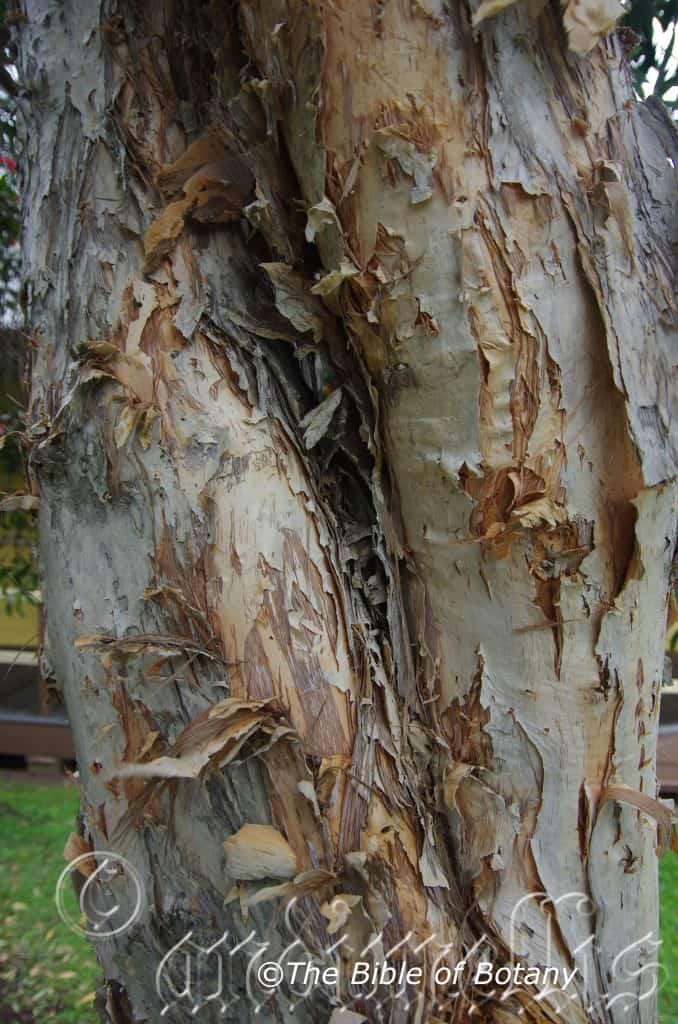
South Grafton NSW
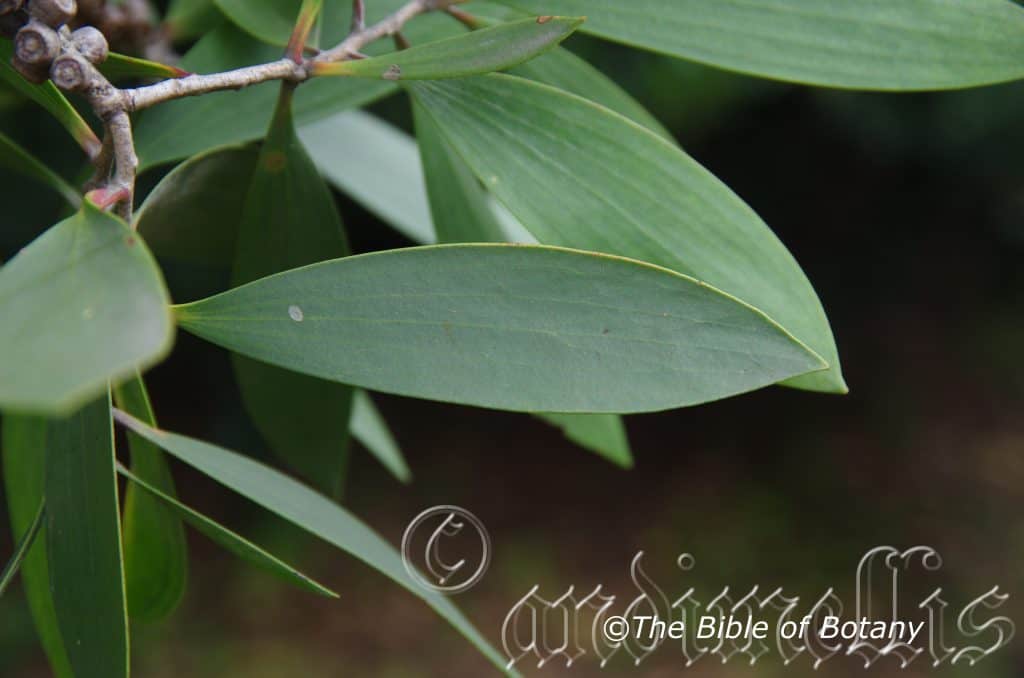
Melaleuca viridiflora subsp. canescens South Grafton NSW
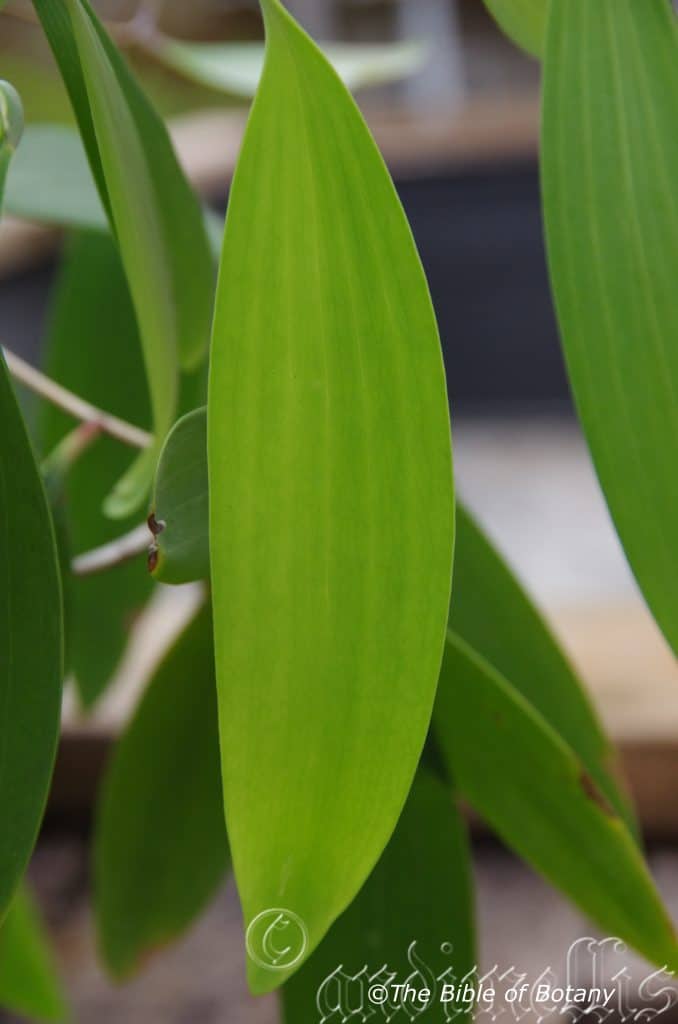
National Botanic Gardens ACT
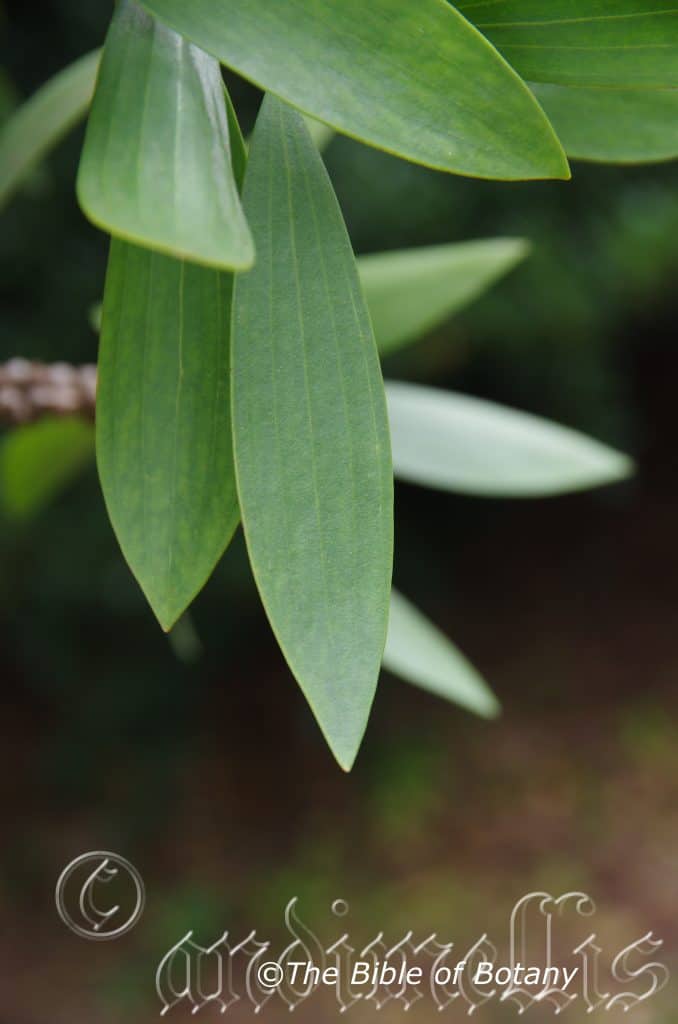
Melaleuca viridiflora subsp. canescens South Grafton NSW

Melaleuca viridiflora subsp. angustifolia South Grafton NSW
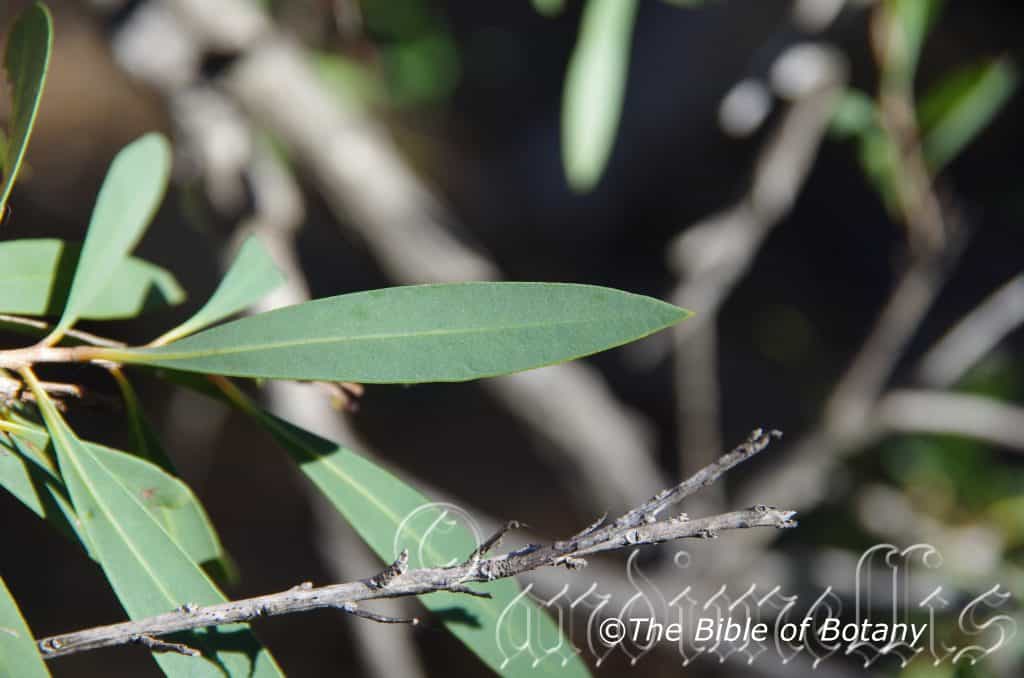
Melaleuca viridiflora subsp. angustifolia South Grafton NSW
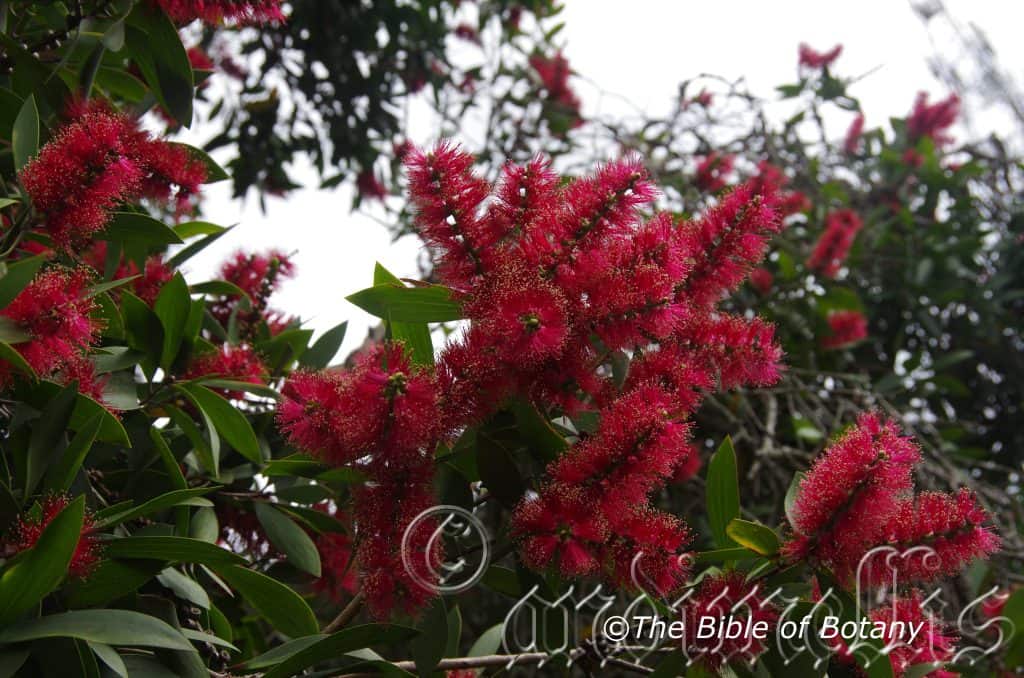
Melaleuca viridiflora subsp. canescens South Grafton NSW
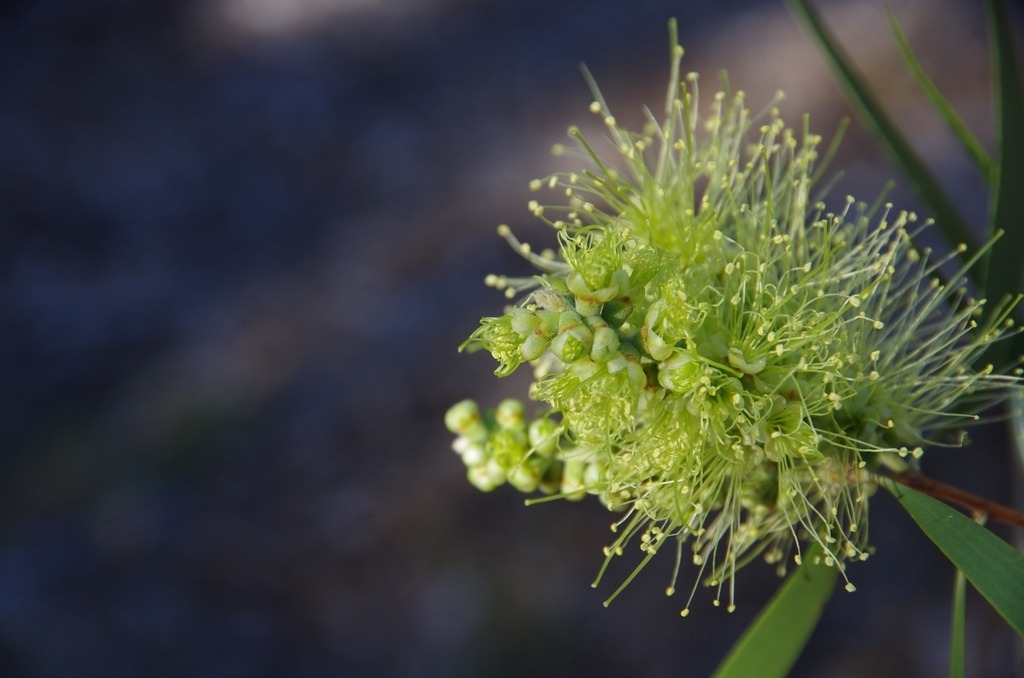
Melaleuca viridiflora subsp. angustifolia South Grafton NSW
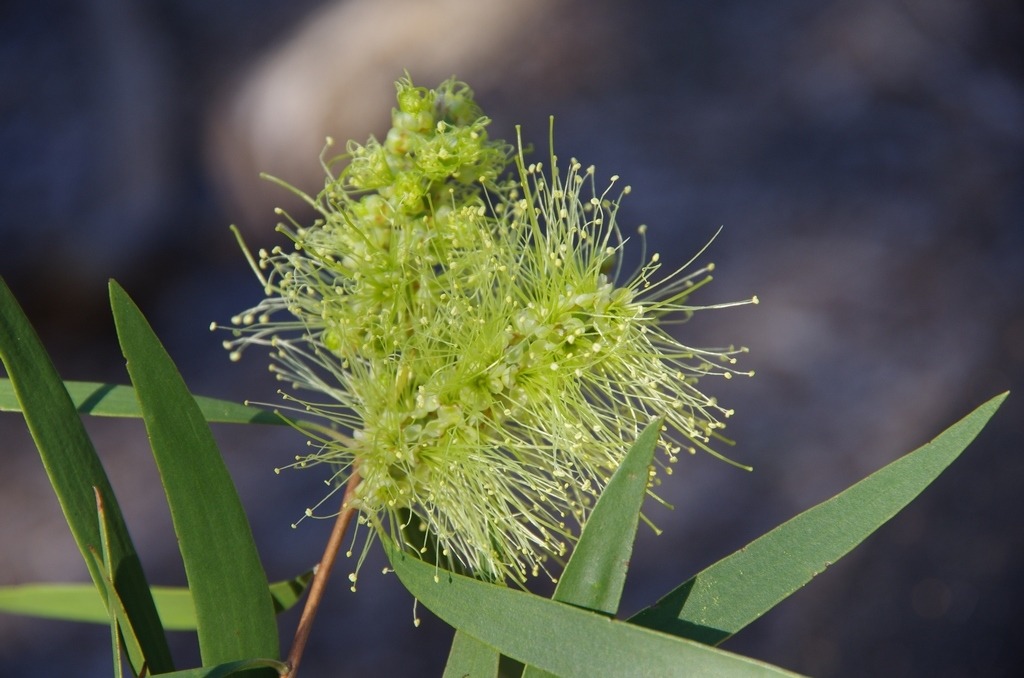
Melaleuca viridiflora subsp. angustifolia South Grafton NSW

Melaleuca viridiflora subsp. canescens South Grafton NSW

Melaleuca viridiflora subsp. canescens South Grafton NSW
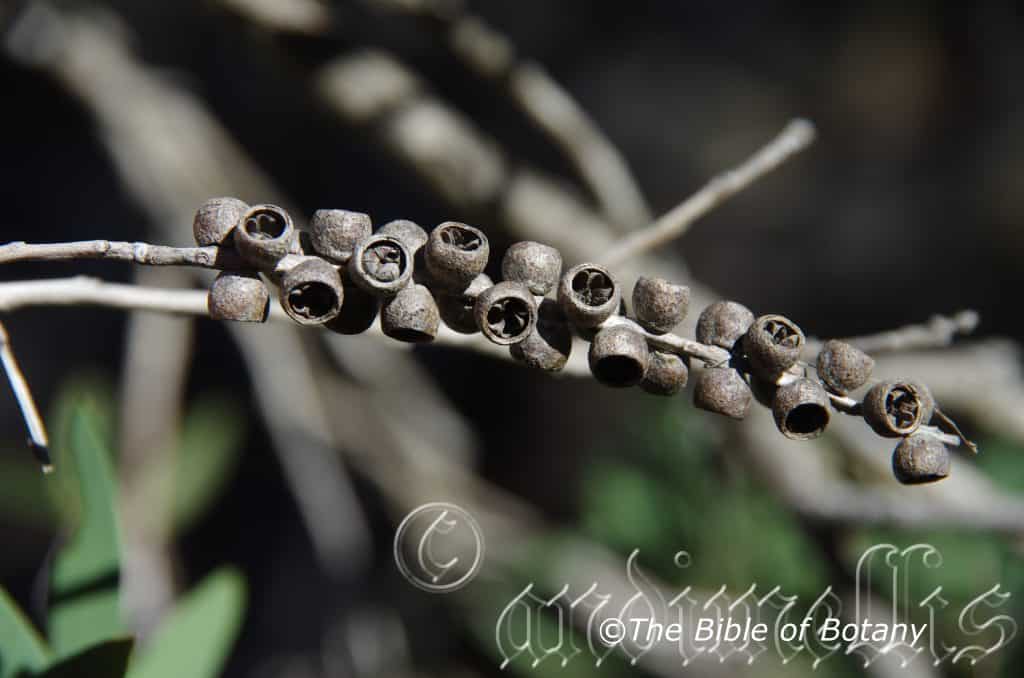
South Grafton NSW
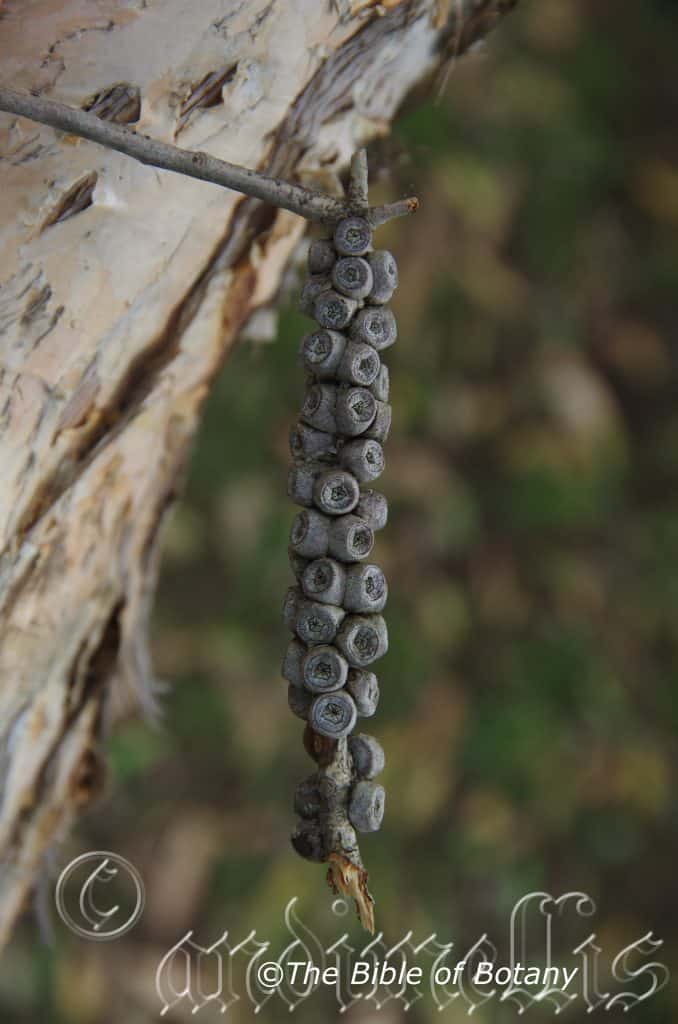
South Grafton NSW
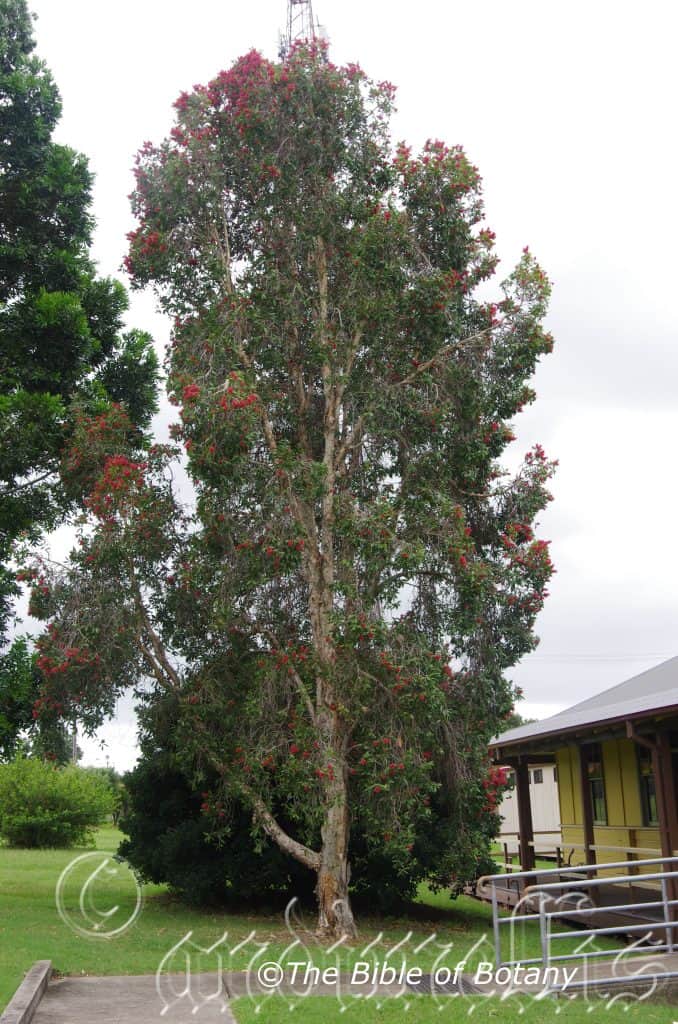
Grafton Railway Station NSW
Melaleuca viridiflora
Classification:
Division: Magnoliophyta
Class: Magnoliopsida
Superorder: Rosane
Order: Myrtales
Family: Myrtaceae
Subfamily: Myrtoideae
Tribe: Melaleuceae
Genus: From Melas, which is Ancient Greek for black and Leukos, which is Ancient Greek for white. It refers to plants, which usually have white papery barks that are often charred by fire thus the bark is black and white.
Specie: From Virens, which is Latin for green and Floris, which is Latin for a flower or Flos, which is the Roman goddess for spring and flowers. It refers to flowers, which are usually pale to deep lime-green.
Variety: Melaleuca viridiflora var. angustata. From Angusta, which is Latin for narrow. It refers to leaves, which are narrower than the other sub species.
Variety: Melaleuca viridiflora var. angustifolia. From Angusta, which is Latin for narrow and Folium, which is Latin for foliage. It usually refers to leaves, which are narrower than other species in the genus.
Variety: Melaleuca viridiflora var. attenuata. From Attenuatum, which is Latin for thin, slender or weak. It refers to structures or organs, which are thinner, slender or weaker looking than other the other sub species.
Variety: Melaleuca viridiflora var. canescens. From Cascus, which old Latin or Canum, which is Latin for grey and hoary, to become old and grey.
Variety: Melaleuca viridiflora var. glabra. From Glabra, which is Latin for glabrous or smooth. It refers to structures or organs, which have no hairs or scales.
Variety: Melaleuca viridiflora var. viridiflora. From Virens, which is Latin for green and Floris, which is Latin for a flower or Flos, which is the Roman goddess for spring and flowers. It refers to flowers, which are usually pale to deep lime-green.
Common Name: Broad Leaf Paper Bark.
Distribution:
Melaleuca viridiflora var. angustata is found in the Northern third of the Australian mainland.
Melaleuca viridiflora var. angustifolia is found from Broome in far north western Western Australia around the coast to Paluma National Park in far north eastern Queensland. It is found within 200 kilometres from the coast.
Melaleuca viridiflora var. attenuata is found in the Northern third of the Australian mainland.
Melaleuca viridiflora var. canescens is found in the Northern third of the Australian mainland and down as far as Poona National Park on the Fraser Coast in coastal eastern Queensland.
Melaleuca viridiflora var. glabra is found in the Northern third of the Australian mainland and down as far as Poona National Park on the Fraser Coast in coastal eastern Queensland.
Melaleuca viridiflora var. viridiflora is found in the Northern third of the Australian mainland and down as far as Poona National Park on the Fraser Coast in coastal eastern Queensland.
https://avh.ala.org.au/occurrences/search?taxa=Melaleuca+viridiflora#tab_mapView
Habitat Aspect Climate:
Melaleuca viridiflora prefers full sun to light dappled shade. It grows along creeks, streams, rivers, swamps, shallow depressions or in particular on wet podsolic flats. The altitude ranges from 5 meter ASL to 450 meters ASL.
The temperatures range from 5 degrees in August to 36 degrees in January.
The rainfalls range from lows of 260mm to an average of 3200mm however this is not as important as the plants habitat where it has its roots down into water tables, seasonally dry creeks, streams and rivers, around billabongs, swamps and low depressions where water accumulates.
Soil Requirements:
Melaleuca viridiflora prefers sandy loams, gravelly or stony soils to heavy gravelly clays which are close to the parent rock, alluvial deposits on river meanders. The soils are usually derived from decomposed brown basalts, black basalts, sandstones, sandstone laterites, metamorphic rocks or granites. The soils pH. ranges from 4.5pH to 6.5pH. It tolerates waterlogged soils, seasonal monsoonal waterlogged soils or seasonal high water tables. Non saline soils to very saline soils are tolerated.
Height & Spread:
Wild Plants: 5m to 20m by 5m to 8m.
Characteristics:
Melaleuca viridiflora grows as a medium erect tree with thick white to pale grey or cream papery bark. When the bark is exposed the under lying bark is a rich orange-brown. The thick paper bark peels as the trunk expands. It is corky and spongy to touch. The bark on the branches is white to pale grey and peels off regularly throughout the year similar to the trunk. The branchlets are pale creamy with the bark being tightly wrapped around the stems, while the newest shoots are pale green with pink to pale red-brown and covered in short, white sericeous hairs. The branches have an upright habit and the plants vary considerably from having an open habit. Branches and branchlets are rather supple.
Melaleuca viridiflora‘s alternate leaves are broad elliptical to ovate and measure 70mm to 190mm in length by 15mm to 55mm in width. The laminas have a ratio of from 4:1 to 5:1.The base is cuneate while the apex is acute. The concolourous laminas are deep green, dull, coriaceous and densely covered in white or silvery-white sericeous hairs except for Melaleuca viridiflora sub sp. glabra. Immature leaves are pale lemon-green to pale blue-green and sparsely covered in white to silvery sericeous hairs. There are 5 to 7 slightly prominent longitudinal veins on both laminas. The margins are entire and flat. The red petiole measures 9mm to 13mm in length. The leaves are aromatic when crushed having a slight ripe mango smell.
The inflorescence of Melaleuca viridiflora has 4 spikes born from terminals. The terminal shoots do not grow out as the stamens bloom. The rachis is glabrous and measures 50mm to 80mm in length. The sessile flowers are born singularly with in each bract. There are 20 to 40 individual flowers along the spike which measures 35mm to 40mm in diameter. The individual flowers measure 10mm to 15mm in diameter. The 5 ovate sepals measure 0.5 to 1mm in length. The hypanthium is lemon-green to sea-green while the sepals are pale lemon-green to grass green turning yellow towards the hyaline apexes. It is glabrous. The 5 semi obtuse petals are creamy yellow or deep crimson and measure 3mm to 4mm in length. It is persistent while the stamens fully develop.
The creamy green, deep pink or crimson-red stamens are the most prominent part of the flowers. There are 6 to 8 stamens are on each of the 5 claws. The claws are opposite the petals and measures 1mm to 1.5mm in length while the filaments measure 14mm to 20mm in length. The anthers which are pale yellow to pale lime green on the green and yellow flowers and white on the pink and crimson red flowers measure 0.4mm to 0.6mm in diameter.
The long, creamy green deep pink or crimson red style measures 25mm to 32mm in length, while creamy green deep pink or crimson red ovary has 3 locules. The base of the style is surrounded by the nectaries. The honey scented flowers, appear over a long period of time from early late August to early February however some flowers usually appear during the warmer months especially in years of good rainfall.
Melaleuca viridiflora‘s fruit is a sessile cup shape, glabrous capsule. The capsules measure 4mm to 5mm in length by 4mm to 5mm in diameter. The orifice is enclosed and measures 2.5mm to 3.5mm in diameter. The woody capsule is dull grey and glabrous. The capsules may contain chaff mixed with the seeds. The seeds are brown and measure 1mm in length by 0.2mm to 0.25mm in diameter. The calyx lobes are not persistent.
Confusing Subspecies Varieties:
Melaleuca viridiflora var. angustata has rather slender foliage. Flowers are brilliant lemon-green.
Melaleuca viridiflora var. angustifolia has very slender foliage.
Melaleuca viridiflora var. attenuata has attenuate or is sparsely foliated.
Melaleuca viridiflora var. canescens leaves and stems are densely covered in canescent hairs and has deep crimson-red flowers.
Melaleuca viridiflora subsp. glabra‘s leaves and stems are glabrous.
Melaleuca viridiflora subsp. viridiflora‘s flowers are green.
Wildlife:
Melaleuca viridiflora supports myriads of native bees, native flies, native beetles and butterflies when in flower.
It also supports small, medium and large honeyeaters which includes the Silver eye, Zosterops lateralis the Yellow face Honeyeater Lichenostomus chrysops the Brown honeyeater Lichmera indistincta, Red headed honeyeater, Myzomela erythrocephala in the north, the Eastern spinebill, Acanthorhynchus tenuirostris the Blue face Honeyeater Entomyzon cyanotis and Rainbow lorikeet, Trichoglossus moluccanus and the Scaly Breasted lorikeet, Trichoglossus chlorolepidotus just to mention a few we have seen scurrying over the flowers and seeking protection amongst the bushy canopy.
Cultivation:
Melaleuca viridiflora is an excellent broad columular shaped bushy or open medium size tree for native gardens. It is suitable on all types of sandy loams to medium clays and are most suitable for small, medium and large gardens close to the coast in warm temperate, sub-tropical, tropical gardens or semi-arid gardens. As garden subjects it is very variable in height and width. They will grow from 4 meters to 12 meters in height by 2 meter to 8 meters in diameter when grown in the open.
It is cold tolerant to temperatures to 1 degree. It is not drought tolerant.
It is very fast growing especially with a good fertilizing program and with a little moisture growing more than 1 meter a year in the early years. They will drop some of their foliage when stressed during drought times so should not be allowed to dry out. This will also affect flowering in the following flowering season. To avoid this, give the plants a double dose of our recommended fertilizer following flowering and a good deep soaking in the dry season if good rainfalls do not eventuate. This will prevent loss of leaf and hold them over for several more months.
They can be used for light dappled shade when grown as a small tree. It is an excellent tree for areas that have drainage problems on sandy to heavy clay soils. When planting the trees in a heath scene scatter them using at least one in the foreground near so the flowers can be fully enjoyed and their natural bushy broad columnar shape is not interfered with.
Try using them in an informal or formal manner in front of the house. Placed in from the corner they will breaking up rigid lines and soften the structures overall appearance. At the same time they can be used to highlight the contrasts between the two. On high set homes this can be achieved by planting 1 as a tree with 2 or 3 shrubs like melaleuca citrinus near the base as shrubs. Using between taller narrow type of trees with finer or broader leaves. Plant them together with unequal gaps and free flowing curves to accentuate height and depth in front of large factories can really bring a park like scenario, peace and serenity to the work place. Use wider spacing where the building in the background is seen as dappled specks will soften it and where it is planted closer together will give a bolder contrast between the two. The dwarf golden form of Melaleuca bracteata is particularly good where the buildings have a dark exterior and a strong contrast is required between the plants for most of the year or Melaleuca citrina can be used where a bold flowering contrast is warranted for many months of the year. The red flowers of citrinus during spring and summer will complement the cream to yellow flowering in early autumn to winter. Coupled with the thick bark will give all year pleasure.
Place 3 or 4 of them off center of a large rockery with other large or finer leaf ground covers and very small shrubs in the front. Plants with white or yellow flowers can be used where the pink flowering forms are used and use pink, red or purple flowers where the cream or green flowering forms are used in fore ground and background. This will lead your eyes directly to the array of red flowers.
Ensure that the upper sections of plant are on display from most sections of the garden as the flowers and bark are both very attractive.
When mass or group planting Melaleuca viridiflora, use curves and irregular patterns so they can be viewed from different angles around the garden. Plant them at 9 meters to 10 meters so that their silhouette is can fully appreciate. The flowers are really highlighted against the deep green leathery leaves so place them where it is highly visible.
Propagation:
Seeds: Melaleuca viridiflora seeds can be sown directly into a seed raising mix. Do not cover the seeds. Press them into the mix. Place the tray in a warm sunny position. When the seedlings are 15mm to 20mm tall, prick them out and plant them into 20mm native tubes using a good organic mix.
When the seedlings are 70mm to 90mm tall, prick them out and plant them into 50mm native tubes using a good organic mix or plant them out into their permanent positions.
Once the seedlings reach 150mm to 200mm in height they can be planted out into their permanent position.
Cuttings:
Cuttings must be used if flowering in the following season are required or a particular flower colour of form is required. Fortunately Melaleuca viridiflora strikes easy from cuttings. Use 100mm to 150mm long half ripened material when growing from cuttings from the present season’s growth. Take them in warmer months of the year. Remove half the leaves from the bottom section being careful not to tear the bark.
1 Prepare the cutting mix by adding one third sharp clean river sand, one third peat and one third perlite. These ingredients are sterilize,
2 Select good material from non diseased plants,
3 Select semi green stems for cuttings. Look for a stem with two or three nodes,
4 Place the cutting on a flat, hard surface, and make a clean cut down one side of the cutting at the base for 10mm with a sharp sterile knife or razor blade. – This scarification of the node will increase the chances of roots emerging from this spot. Now remove all but one or two the leaves, leaving the apex leaves in tact. If the leaves are very large in proportion to the stem, cut off the apical halves.
5 Fill a saucer with water, and place a little medium strength rooting hormone into another container like a milk bottle top. Dip the node end of the cutting into the water and then into the rooting hormone. Tap off any excess hormone,
6 Use a small dipple stick or old pencil to poke a hole into the soilless potting mix. Ensure the hole is slightly larger than the stem diameter and be careful not to wipe the rooting hormone off the cuttings base, place the cuttings in a pattern ensuring the cuttings are not touching each other,
7 I like to place the pots in Plastic bags to help maintain temperature and moisture. Place
8 When the cuttings have struck, open the bag to allow air circulation for a few days to a week,
9 Once hardened off remove the cuttings from the bag and allow to further hardening for a few more days,
10 Transplant into a good potting mix to grow on.
Fertilize using seaweed, fish emulsion or organic chicken pellets soaked in water on an alternate basis. Fertilize every two months until the plants are established then twice annually in early September or March to maintain health, vitality and better flowering.
Further Comments from Readers:
Hi reader, it seems you use The Bible of Botany a lot. That’s great as we have great pleasure in bringing it to you! It’s a little awkward for us to ask, but our first aim is to purchase land approximately 1,600 hectares to link several parcels of N.P. into one at The Pinnacles NSW Australia, but we need your help. We’re not salespeople. We’re amateur botanists who have dedicated over 30 years to saving the environment in a practical way. We depend on donations to reach our goal. If you donate just $5, the price of your coffee this Sunday, We can help to keep the planet alive in a real way and continue to bring you regular updates and features on Australian plants all in one Botanical Bible. Any support is greatly appreciated. Thank you.
In the spirit of reconciliation we acknowledge the Bundjalung, Gumbaynggirr and Yaegl and all aboriginal nations throughout Australia and their connections to land, sea and community. We pay our respect to their Elders past, present and future for the pleasures we have gained.
Melaleuca williamsii
(Presently still widely known as Callistemon pungens. However as there is already a plant existing with the name Melaleuca pungens from Western Australia this Callistemon had to be given a new specific name.)
Classification:
Division: Magnoliophyta
Class: Magnoliopsida
Superorder: Rosane
Order: Myrtales
Family: Myrtaceae
Subfamily: Myrtoideae
Tribe: Melaleuceae
Genus: From Melas, which is Ancient Greek for black and Leukos, which is Ancient Greek for white. It refers to plants, which usually have white papery barks that are often charred by fire thus the bark is black and white.
Specie: Is named in honour of Keith Albert Walter Williams; 1916-2003, who was an Australian who had a broad interest in Queensland wildlife from marine to freshwater fishes, insects, birds and plants as well as photography. (Presently still widely known as Callistemon pungens. However as there is already a plant existing with the name Melaleuca pungens from Western Australia this Callistemon had to be given a new specific name.)
Sub species:
Common Name: Tablelands Bottle Brush.
Distribution:
Melaleuca williamsii is restricted to a few localities on the Western Slopes south from Mount Mee in southern Queensland to Guyra in north eastern New South Wales.
https://avh.ala.org.au/occurrences/search?taxa=Melaleuca+williamsii#tab_mapView
Habitat Aspect Climate:
Melaleuca williamsii prefers full sun to light dappled shade. It grows in or along rocky creeks and streams or close to the streams on rocky sites. The altitude ranges from 530 meter ASL to 1400 meters ASL.
The temperatures range from minus 6 degree in August to 32 degrees in January.
The rainfalls range from lows of 680mm to an average of 1000mm.
Soil Requirements:
Melaleuca williamsii prefers pure course sand to sandy loams or gravelly sandy loams close to the parent rocks. The soils are usually derived from partially decomposed or decomposed granites or occasionally basalts or metagranites. The soils pH ranges from 6pH to 7pH. It tolerates waterlogged soils as it is often found growing with their roots below the water line along creeks and streams. Non saline soils to slightly saline soils are tolerated.
Height & Spread:
Wild Plants: 2m to 5m by 1.5m to 2.5m.
Characteristics:
Melaleuca williamsii grows as a small tree with grey or deep grey-brown, hard scabrous and slightly fissured bark near the base. The branches are pale grey and scabrous and slightly spongy to the touch. The branchlets are cream, while the newest shoots are green and densely covered in white to silvery sericeous hairs.
Melaleuca williamsii‘s alternate leaves are oblanceolate to narrow elliptical and measure 20mm to 30mm in length by 3.5mm to 5.5mm in width. The base is cuneate while the apex is acute with a long 1mm to 2mm pungent mucronate tip. The concolourous laminas are blue-green, glabrous and are sparsely covered in small oil glands. Immature leaves are silver and densely covered in white to silvery caduceous sericeous hairs. The main vein is not prominent on either lamina. The orange-green petioles measure 3mm to 4.5mm in length. The leaves are not aromatic when crushed.
The inflorescence of Melaleuca williamsii has multiple spikes born from the terminals. The flower terminal shoots begin to grow out before the last of the stamens bloom. The rachises are glabrous and measure 50mm to 65mm long by 35mm to 45mm in diameter. The flowers are born singly from each bract. There are 33 to 48 individual flowers along the spike. They measure 12mm to 15mm in diameter. The 5 broad, obtuse, pale creamy green calyx lobes measure 0.4mm to 0.6.The calyx tube is blue-green to and glabrous. The 5 broad obtuse petals are pale creamy green internally and pale purple externally and measure 1.2mm to 1.8mm in length. It is persistent.
The deep pink-purple stamens are the most prominent part of the flowers. The 30 to 48 stamens are free forming a ring around the hypanthia. The filaments measure 12mm to 15mm in length. The lateral anther’s pollen is pink while the anthers measures 0.8mm to 1.6mm in length.
The long, slender, pink-purple to purple-red style turns to a creamy or white as it approaches the stigma. The pistil measures 18mm to 21mm in length, while the ovary has 5 locules. The base of the style is surrounded by the nectaries. The arrowroot to honey scented flowers, appear from early late October to early December.
Melaleuca williamsii‘s fruit is a sessile, urn capsule. The capsules measure 5mm to 7mm in length by 5mm to 7mm in diameter. The inserted orifice measures 3mm to 5mm in diameter. The woody capsule is dull pale grey to dull grey and resinous. The capsules contain seeds and chaff mixed together. The seeds are rusty-brown and are longer and thicker than the chaff. The calyx lobes are persistent on the hypanthia.
Wildlife:
Melaleuca williamsii wildlife is unknown to the author.
Cultivation:
Melaleuca williamsii is a beautiful upright bushy shrub for native gardens. It is suitable on all types of sandy loams to medium clays and are most suitable for small, medium and large gardens close to the coast in temperate, sub-tropical gardens or semi-arid gardens. As garden subjects they will grow from 3 meters to 5 meters in height by 2 meters to 3 meters in diameter when grown in the open. It is cold tolerant to temperatures to minus 6 degrees once established.
Melaleuca williamsii should become very popular as horticultural plants because of their size, unusual coloured flowers and ease of growing. This is another beautiful Melaleuca that is worth while trying on the west coast which originates from the east. They will commence flowering from an early age even from seed.
It is very fast growing especially with a good fertilizing program and with a plenty of moisture growing nearly 1 meter a year. To avoid stress and increase flowering the following season, give the plants a double dose of our recommended fertilizer following flowering and a good deep soaking mid-way through the dry season if good rains have not fallen. This will prevent further stress and hold them over for several more months.
Try using them in an informal or formal manner in front of the house. Placed in from the corner they will breaking up rigid lines and soften the structures overall appearance. At the same time they can be used to highlight the contrasts between the two. On high set homes this can be achieved by planting 1 as a tree with 2 to 5 shrubs like melaleuca bracteata gold leaf form and Melaleuca pungens mixed together near the base as shrubs.
For a bush garden start with Melaleuca williamsii and the dwarf golden form of Melalaeuca bracteata and Melaleuca pachyphyllus green flowering form or a small white or pink flowering Leptospermum species with larger leaves as a base for a larger style wallum heath setting. These four plants will give a great contrast in colour and leaf shape. Scatter plant the area with other prostrate and vertical leaf plants in between to cover the ground in a mass of contrasting foliages. The flower colours will not be important and will be a fantastic bonus to be enjoyed for years to come.
When mass or group planting Melaleuca pungens, use curves and irregular patterns in the garden beds so they can be viewed from different angles around the garden. There greatest potential in the garden is in attracting small and medium size honeyeaters and their prolonged flowering season.
Propagation:
Seeds: Melaleuca williamsii seeds can be sown directly into a seed raising mix. Do not cover the seeds. Press them into the mix. Place the tray in a warm sunny position. When the seedlings are 15mm to 20mm tall, prick them out and plant them into 20mm native tubes using a good organic mix.
When the seedlings are 70mm to 90mm tall, prick them out and plant them into 50mm native tubes using a good organic mix or plant them out into their permanent positions.
Once the seedlings reach 150mm to 200mm in height they can be planted out into their permanent position.
Cuttings: Cuttings must be used if flowering in the following season are required or a particular flower colour of form is required. Fortunately Melaleuca viridiflora strikes easy fromcuttings. Use 100mm to 150mm long half ripened material when growing from cuttings from the present season’s growth. Take them in warmer months of the year. Remove half the leaves from the bottom section being careful not to tear the bark.
1 Prepare the cutting mix by adding one third sharp clean river sand, one third peat and one third perlite. These ingredients are sterilize,
2 Select good material from non diseased plants,
3 Select semi green stems for cuttings. Look for a stem with two or three nodes,
4 Place the cutting on a flat, hard surface, and make a clean cut down one side of the cutting at the base for 10mm with a sharp sterile knife or razor blade. – This scarification of the node will increase the chances of roots emerging from this spot. Now remove all but one or two the leaves, leaving the apex leaves in tact. If the leaves are very large in proportion to the stem, cut off the apical halves.
5 Fill a saucer with water, and place a little medium strength rooting hormone into another container like a milk bottle top. Dip the node end of the cutting into the water and then into the rooting hormone. Tap off any excess hormone,
6 Use a small dipple stick or old pencil to poke a hole into the soilless potting mix. Ensure the hole is slightly larger than the stem diameter and be careful not to wipe the rooting hormone off the cuttings base, place the cuttings in a pattern ensuring the cuttings are not touching each other,
7 I like to place the pots in Plastic bags to help maintain temperature and moisture. Place in a semi shaded place like under 50mm shade cloth.
8 When the cuttings have struck, open the bag to allow air circulation for a few days to a week,
9 Once hardened off remove the cuttings from the bag and allow to further hardening for a few more days,
10 Transplant into a good potting mix to grow on.
Fertilize using seaweed, fish emulsion or organic chicken pellets soaked in water on an alternate basis. Fertilize every two months until the plants are established then twice annually in early September or March to maintain health, vitality and better flowering.
Further Comments from Readers:
Hi reader, it seems you use The Bible of Botany a lot. That’s great as we have great pleasure in bringing it to you! It’s a little awkward for us to ask, but our first aim is to purchase land approximately 1,600 hectares to link several parcels of N.P. into one at The Pinnacles NSW Australia, but we need your help. We’re not salespeople. We’re amateur botanists who have dedicated over 30 years to saving the environment in a practical way. We depend on donations to reach our goal. If you donate just $5, the price of your coffee this Sunday, We can help to keep the planet alive in a real way and continue to bring you regular updates and features on Australian plants all in one Botanical Bible. Any support is greatly appreciated. Thank you.
In the spirit of reconciliation we acknowledge the Bundjalung, Gumbaynggirr and Yaegl and all aboriginal nations throughout Australia and their connections to land, sea and community. We pay our respect to their Elders past, present and future for the pleasures we have gained.
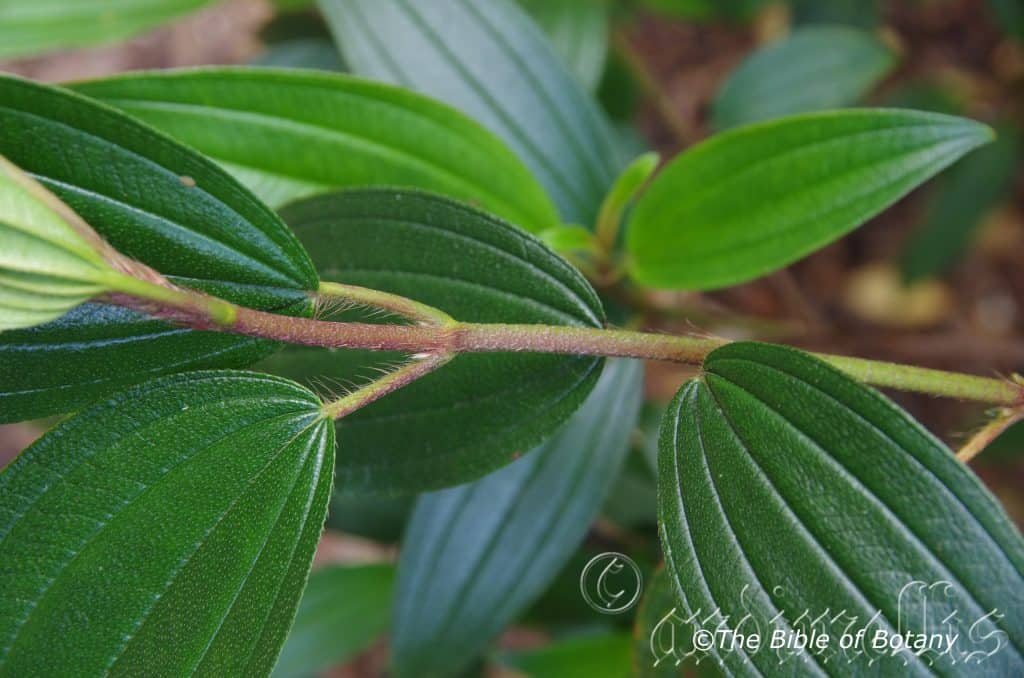
Camp Hill Qld.
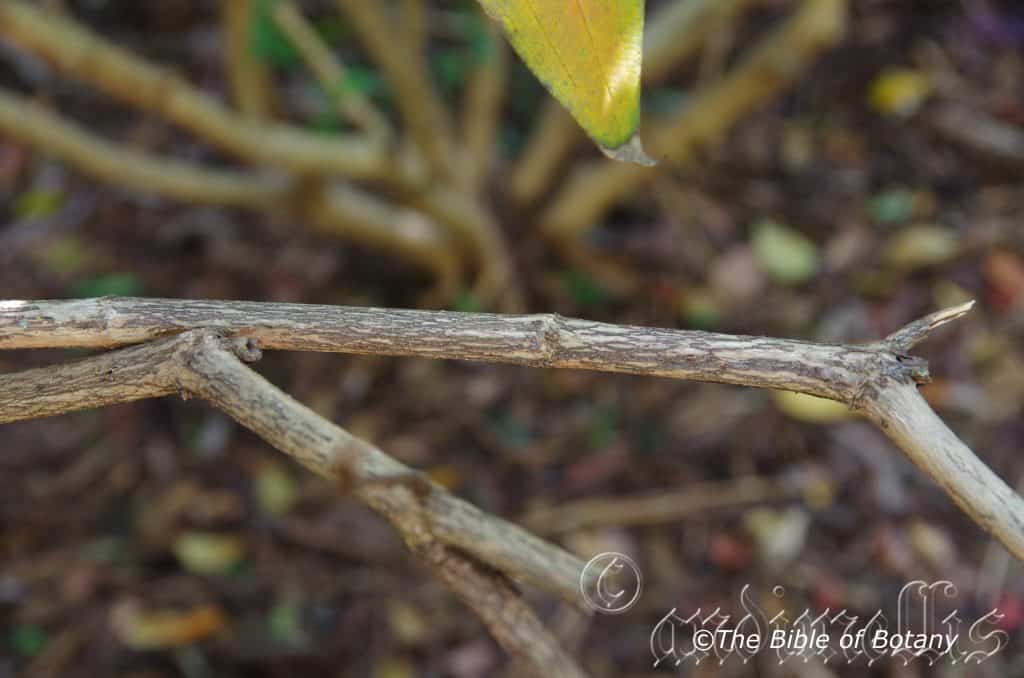
Camp Hill Qld.
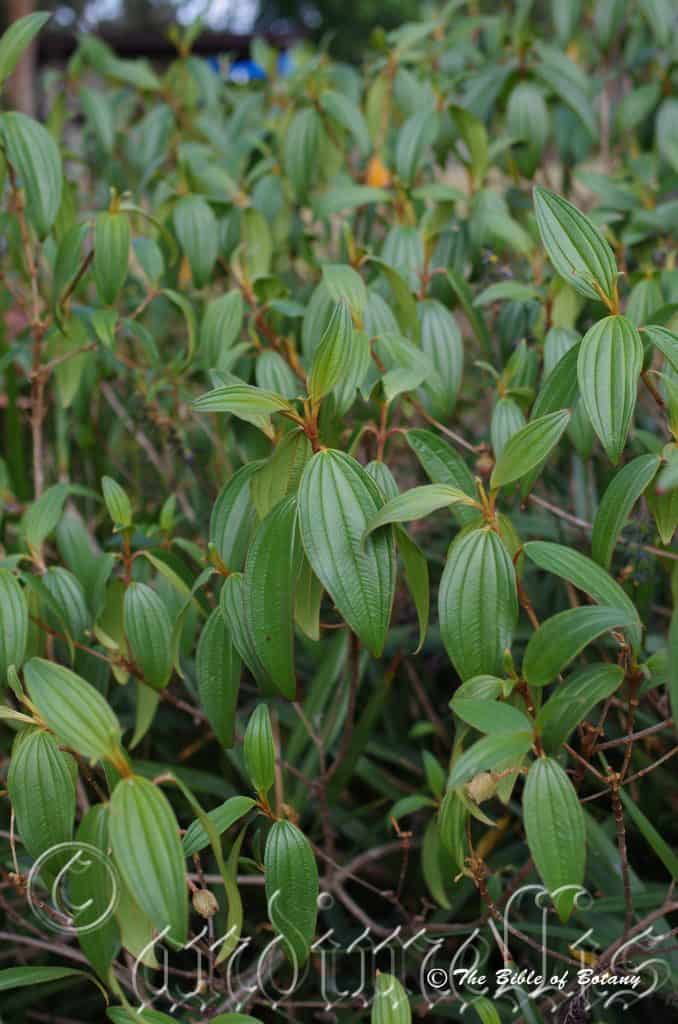
Camp Hill Qld.
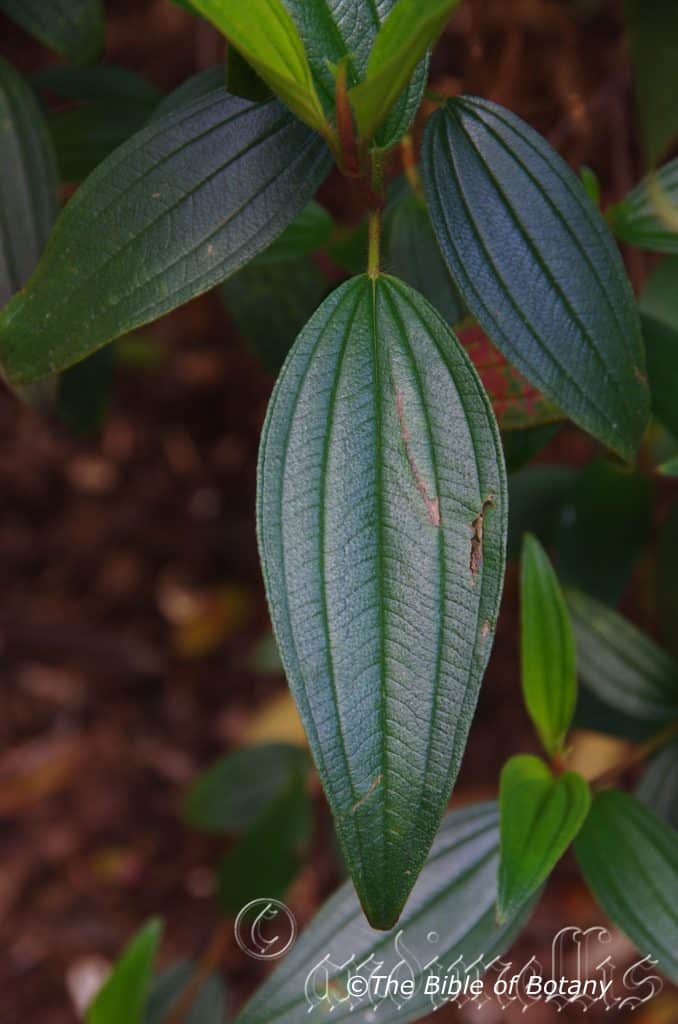
Author’s Garden The Pinnacles NSW
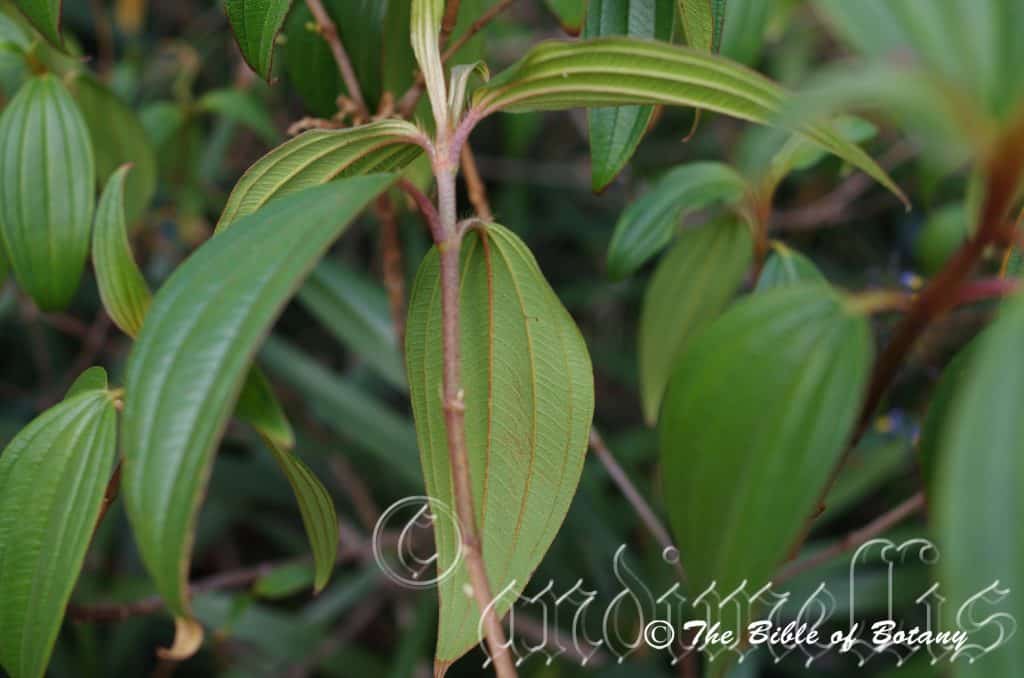
Camp Hill Qld.

Camp Hill Qld.
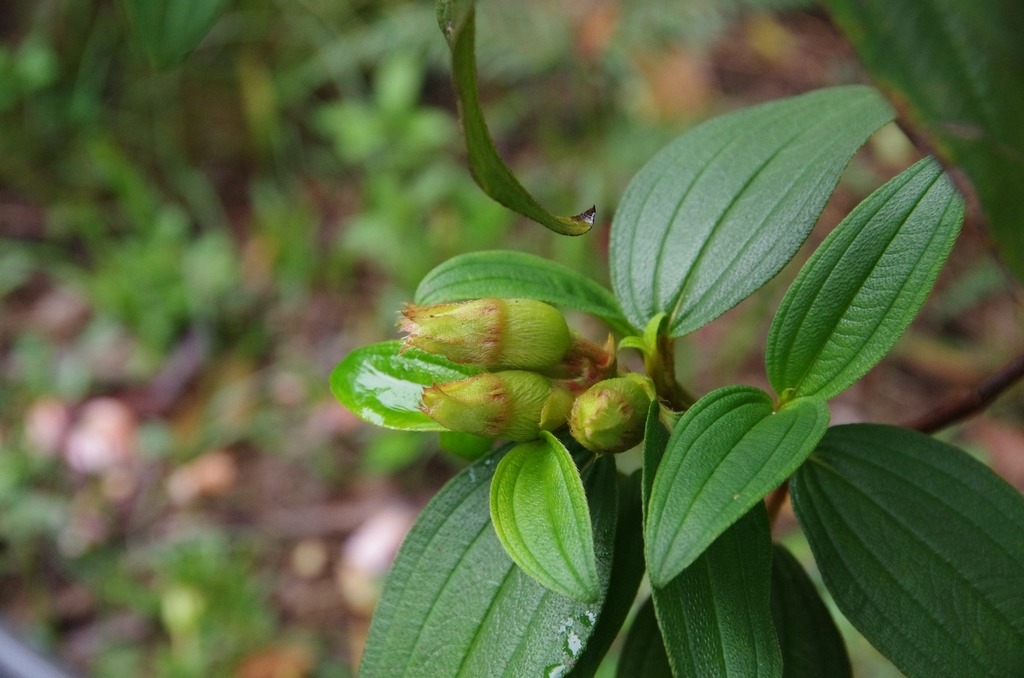
Author’s Garden The Pinnacles NSW

Author’s Garden The Pinnacles NSW
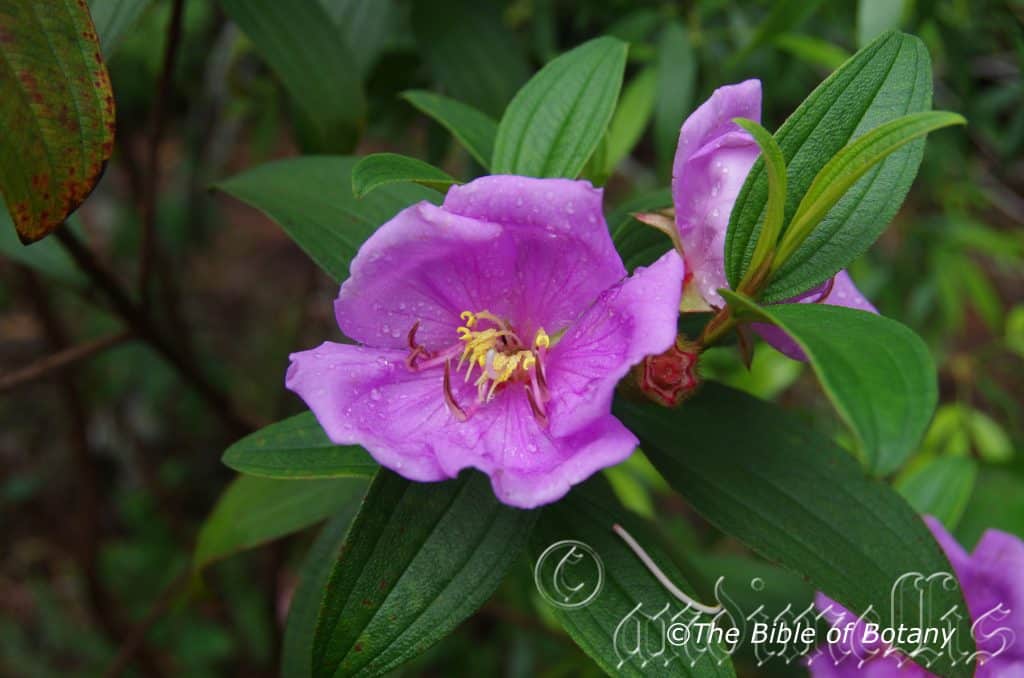
Author’s Garden The Pinnacles NSW
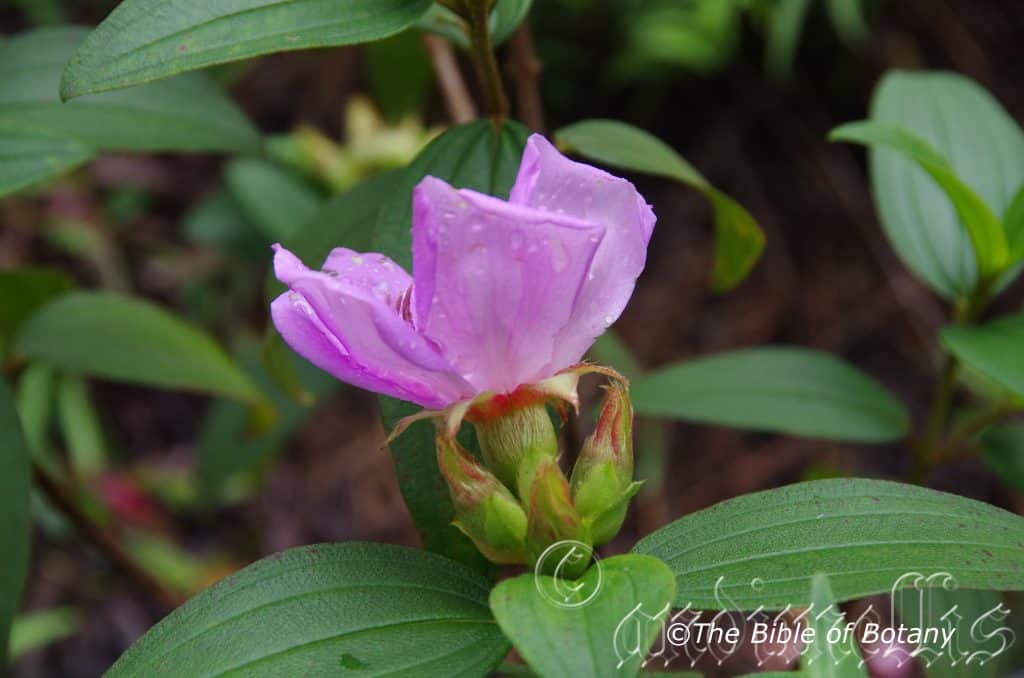
Author’s Garden The Pinnacles NSW
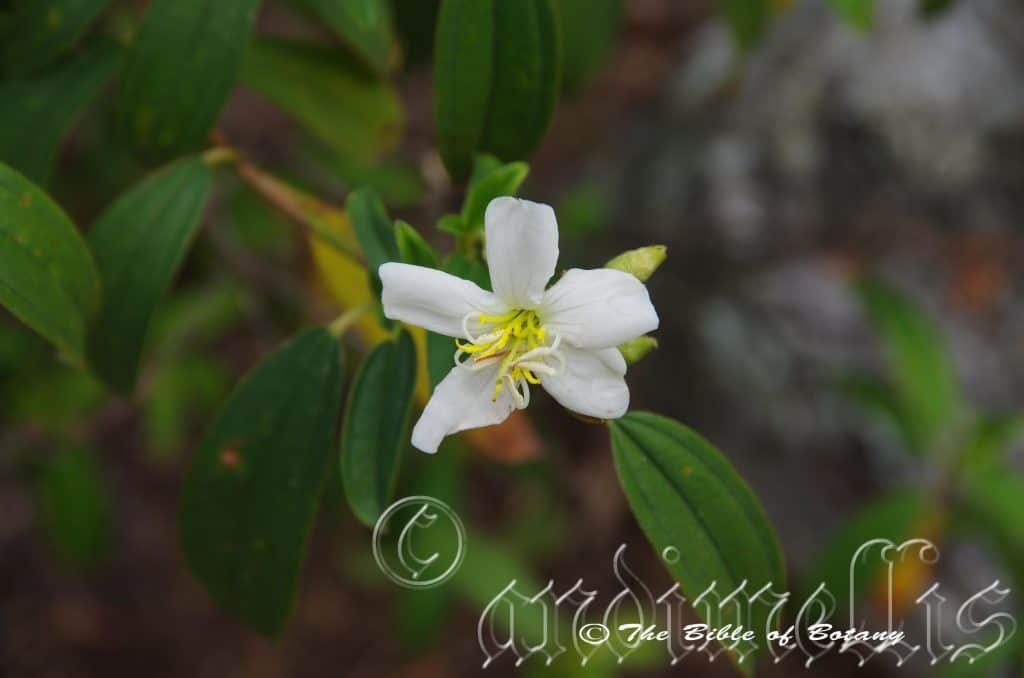
Brisbane Qld.
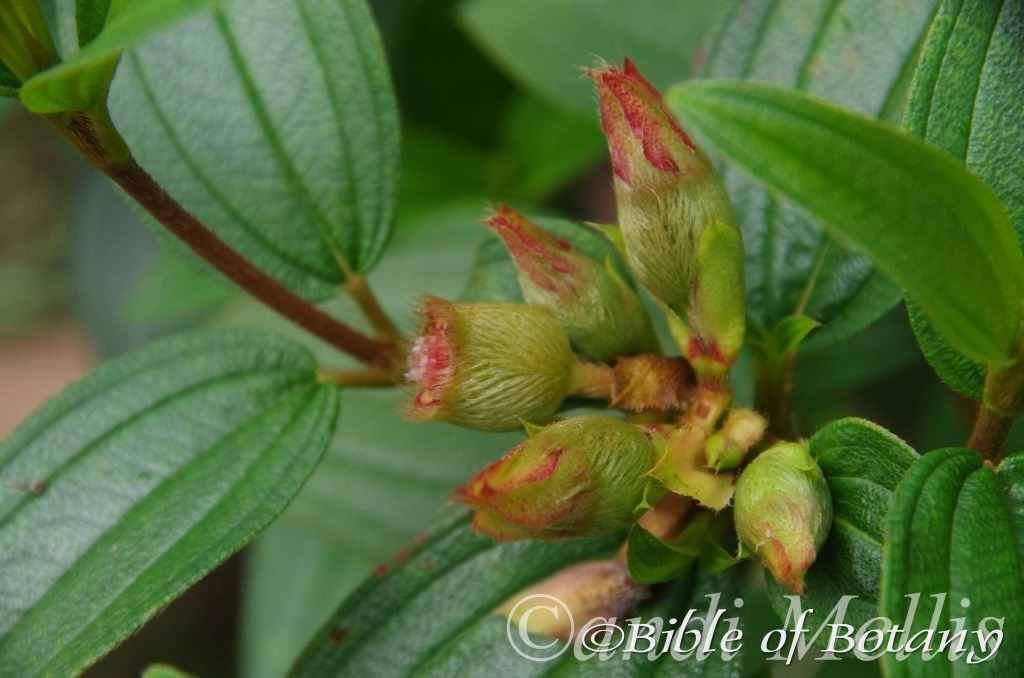
Author’s Garden The Pinnacles NSW
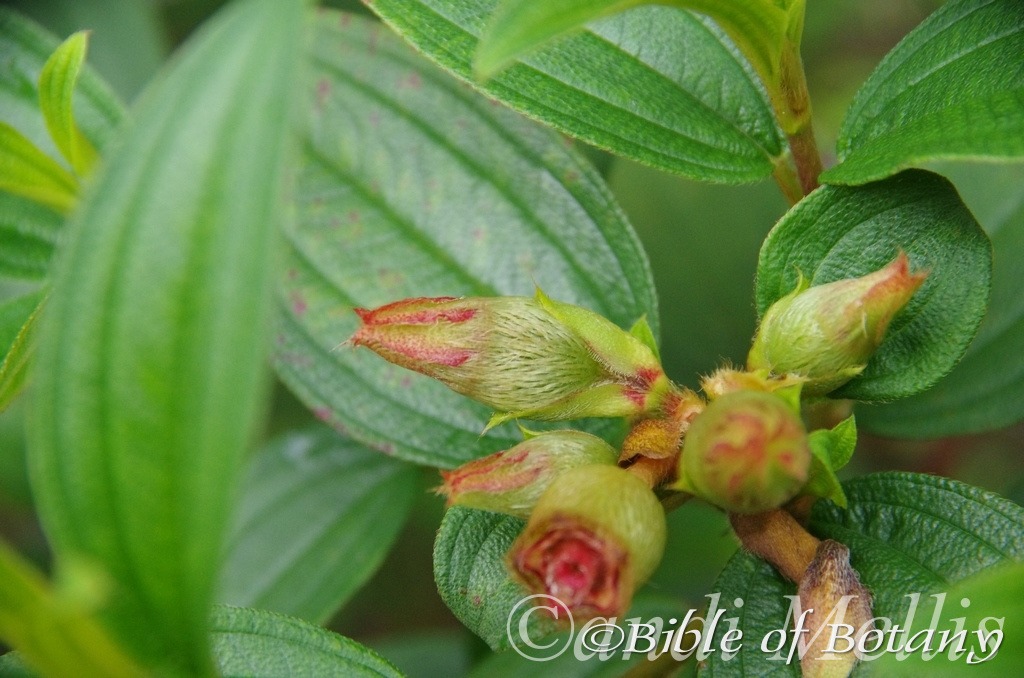
Author’s Garden The Pinnacles NSW
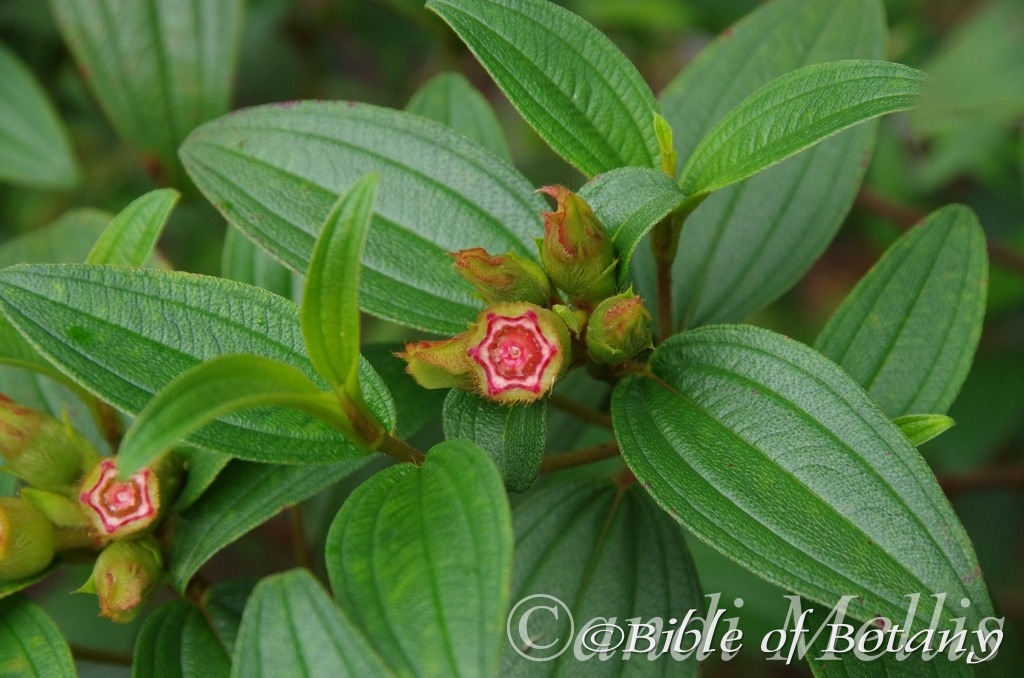
Author’s Garden The Pinnacles NSW
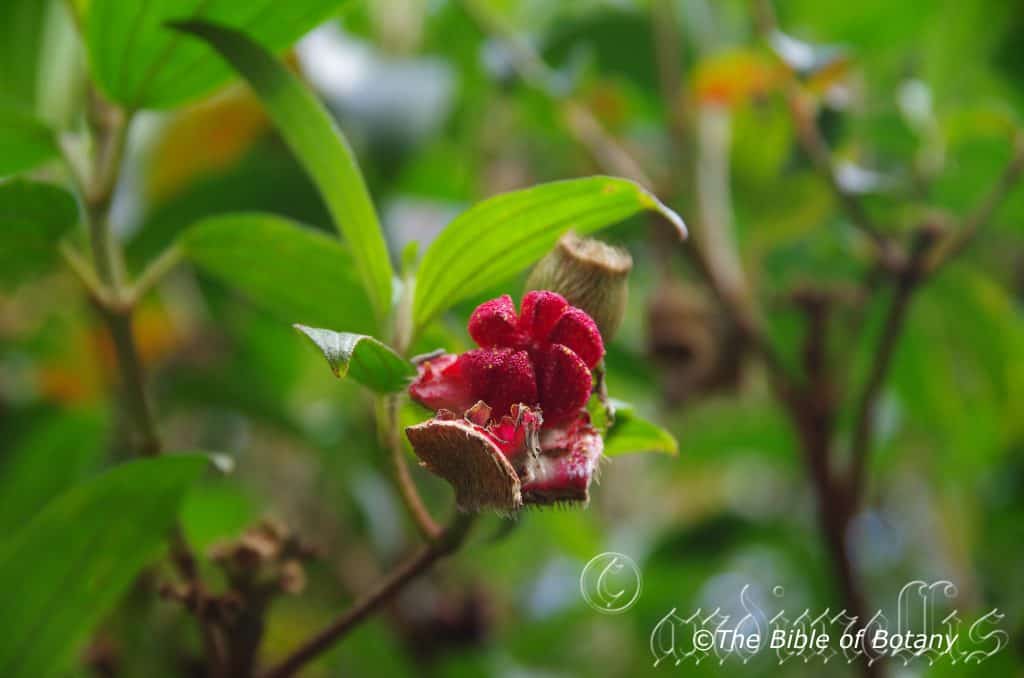
Author’s Garden The Pinnacles NSW

Author’s Garden The Pinnacles NSW

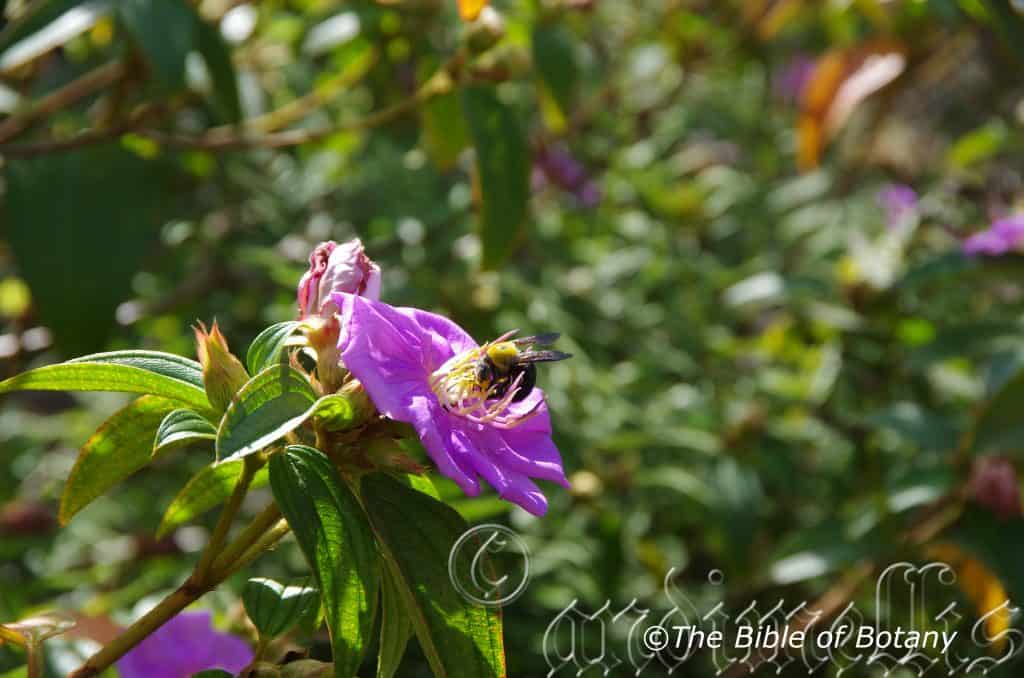
Author’s Garden the Pinnacles NSW
Melastoma affine
Classification:
Unranked: Eudicots
Unranked: Rosids
Order: Myrtales
Family: Melastomataceae
Genus: From Melas, which is Ancient Greek for black and Stoma, which is Ancient Greek for a mouth or tongue. It refers to the inner parts of the mouth like the inner cheeks, bridge and tongue, which turn black when the fruits are eaten.
Specie: From Affine, which is Latin for a boundary. It refers to plants, which grow in transitional zones. Here it refers to a plant that grows in very wet wallum areas but not in permanent water and the areas adjacent that are above the flood zones or high water table areas.
Sub species:
Common Name: Blue Tongue, Black Tongue or Native Lasiandra.
Note: The taxonomy of the genus Melastoma is presently undergoing a complete revision using DNA. Presently most names used in Australia are grouped under Melastoma malabathricum.
Distribution:
Melastoma affine is found north and east from the Fitzroy River in far north east Western Australia to the Roper River and Groote Eyelandt in north eastern Northern Territory.
In the east it is found south from the Torres Strait Islands and Cape York Peninsula in far north eastern Queensland then along the coast and adjacent ranges to Kempsey in New South Wales. It is also found in Boodjamulla National Park (Lawn Hill) North West of Mount Isa.
https://avh.ala.org.au/occurrences/search?taxa=Melastoma+malabathricum#tab_mapView
Habitat Aspect Climate:
Melastoma affine prefers light dappled shade to full shade. It grows along creeks alluvial plains in wet shallow depressions in forests, in swamps, wallums and areas where there is a continual seepage. The altitude ranges from 5 meter ASL to 500 meters ASL.
The temperatures range from minus 1 degree in August to 40 degrees in January.
The rainfall ranges from lows of 500mm to an average of 3200mm. This is not as important as the terrain where it gains most its water from seepages, swamps and wallums.
Soil Requirements:
Melastoma affine prefers coarse sands, fine sands, and light clays to heavy clays. The soils are usually derived from accumulated beach sands, accumulated coral sands, decomposed granites or sandstones. The soils pH. rangelogged soils. Non saline soils to very saline soils are tolerated
Height & Spread:
Wild Plants: 1.5m to 2m by 1.5m to 2m.
Characteristics:
Melastoma affine grows as a small shrub with scabrous, erect semi spreading stems. The branchlets stems are olive-green and densely covered in rusty hirsute to hispid hairs. Immature stems are red to red-green and are covered in rusty hirsute to hispid hairs. It is often open and straggly growing on, over or amongst other heath plants.
Melastoma malabathricum‘s opposite leaves are ovate to broad elliptical to ovate simple and measure 65mm to 120mm by 25mm to 40mm in width. The base is broad cuneate to round-cuneate while the apex is broad acute. The discolourous laminas are deep sea green, dull to semi glossy and covered in short rusty-red to rusty-brown hirsute to hispid hairs on the upper lamina while the lower lamina is much paler. The margins are entire and curve upwards from the mid vein. The mid vein with 2 longitudinal veins is strongly prominent on the lower lamina and is distinctly visible on the upper lamina. There are also 2 intramarginal veins which are also prominent on the lower lamina and distinctly visible from above. The red-green to deep purple-green petiole is covered in rusty hirsute to hispid hairs and measure 7mm to 10mm in length.
The inflorescence of Melastoma affine is a simple cyme born from the upper leaf axils or terminal. There are 5 to 11 flowers in a cyme. The pedicels measure 5 to 10 mm in length. The globular hypanthium is covered in long white appressed pannate hairs and measures 7mm to 11mm in length by 9mm to 13mm in diameter across the widest point and 6mm to 7mm in diameter across the rim. The 5 green, narrowly oblong sepals are covered in short white pannate hairs and measure 3.5mm to 4.5mm in length. The 5 obovate petals are pink, lilac, pale purple to deep purple or rarely white. They measure 20mm to 30mm in length by 17mm to 26mm in width. The apex is irregularly truncate to broad rounded and flat or undulating.
There are 10 dimorphic stamens. There are 5 long filaments have long linear anthers and measure 6mm to 8mm in length while the anthers measure 2mm to 3mm in length. The 5 shorter filaments measure 4mm to 6mm in length while their yellow anthers measure 1mm to 1.5 mm in length. The plants produce no nectar but the white pollen is quite profuse.
The single style is pink to deep purple with a green stigma or rarely white with a white stigma and measures 10mm to 16mm in length. The flowers appear from August right through to late February.
Melastoma affine‘s fruit is a small globose, dry to semi succulent berry. It is glaucous green red and covered in white pannate hairs and measure 9mm to 11mm in length by 11mm to 13mm in width. The flesh surrounding the seeds is red but turns navy blue or black on contact with saliva. The small ovoid seeds are white measure 0.5mm to 0.6mm in diameter.
Wildlife:
Melastoma affine relies on Bower Birds, Cat Birds and Fig Birds to spread its seeds. The shrub’s flowers are visited by a number of butterflies but as the plants do not produce nectar the reason for the visits is unknown. Native bees forage the flowers for the high quality and profuse quantity of pollen produced.
Melastoma affine is a phytoremediation plant. It is an aluminium phytoremediator meaning that it can take up large amounts of aluminium from the soil. They can be used very successfully in controlling very acid soils which are acidic due to high levels of aluminium. Phytoremediation now becoming more widely used to control chemical imbalances as it is a safer method for extrapolating chemicals than using chemicals, it is more cost effective on farms, it is far more environmentally friendly, it is non disruptive as opposed to physically digging the soil up, pumping water into the soil to leach the chemicals which in the case of aluminium cannot be done successfully done as it is inert and ties itself to other chemicals which are needed by most plants to be healthy. Some disadvantages are that the method is reliant on a long term soft commitment, it is dependent upon plant growth and the tolerance to toxicity and bioaccumulation capacity of the plants involved.
Cultivation:
Melastoma affine makes an excellent plant for light shaded areas and as an addition to the understory of some forest trees. They always look green and fresh especially where adequate ground moisture is retained whether it is grown in light shade or full sun. It is very suitable on sandy to heavy clay soils and are most suitable for small, medium and large gardens close to the coast in warm temperate, sub-tropical or tropical areas. As garden subjects they will grow from 1.5 meters to 2.5 meters in height by 1.5 meters to 2.5 meters diameter when grown in the open. It is cold tolerant to temperatures as low as minus 1 degree once established.
It is most suitable for use around semi shaded swimming pools, courtyards, besides pathways, shady rockeries, along sandy clay banks or along drive ways or adjacent to natural bush gardens. Mass plantings of 5 or more plants even in small areas; really do the plants justification especially when it is in flower and pruned annually to keep it shorter and bushier. If it is not pruned they will develop only a few stems and become somewhat lanky. Medium frog ponds will benefit from Melastoma malabathricum to give protection to frogs and add that tropical look on a small scale. When mass planted the pink to purple flowers are very attractive over a long period.
It is a good standalone plant for around pools and courtyards or if companion plants are sought then the choice of plants to use either side is limited by size of the area to be landscaped. Viola hederacea, Viola banksii and Hibbertia diffusa would all make good contrasting ground covers that won’t steal from each other’s features. Use plants that do not grow more than 150mm in height to emphasize scene and to make the section look larger, the flowers look larger and to give the area depth. If blue and purple is your thing, then try mass plantings of Viola betonicifolia, Viola sieberiana, Viola violaceae, Lechenaultia biloba, Ajuga australis or Wahlenbergia stricta if there is a little more sunlight. To contrast the scene plant out in yellow with clumps Hibbertia linearis, Xerochrysum bracteatum or mass plant with one of the many forms of Chrysocephalum apiculatum especially the forms found in your area.
Propagation:
Seeds:
Melastoma malabathricum seeds can be sown directly into a seed raising mix. Cover the seeds with 2mm to 3mm of fine weed free mulch and keep moist. Place the tray in a warm sunny position. When the seedlings are 30mm to 50mm tall, prick them out and plant them into 50mm native tubes using a good organic mix.
Once the seedlings reach 100mm to 150mm in height they can be planted out into their permanent position.
Cuttings:
Fortunately Melastoma affine strikes easy from cuttings. Use 100mm to 150mm long semi ripe or hardened cuttings from the present season or previous season’s growth. Take them in warmer months of the year. Remove half the leaves from the bottom section being careful not to tear the bark.
1 Prepare the cutting mix by adding one third sharp clean river sand, one third peat and one third perlite. These ingredients are sterilize,
2 Select good material from non diseased plants,
3 Select semi green stems for cuttings. Look for a stem with two or three nodes,
4 Place the cutting on a flat, hard surface, and make a clean cut down one side of the cutting at the base for 10mm with a sharp sterile knife or razor blade. – This scarification of the node will increase the chances of roots emerging from this spot. Now remove all but one or two the leaves, leaving the apex leaves in tact. If the leaves are very large in proportion to the stem, cut off the apical halves.
5 Fill a saucer with water, and place a little medium strength rooting hormone into another container like a milk bottle top. Dip the node end of the cutting into the water and then into the rooting hormone. Tap off any excess hormone,
6 Use a small dipple stick or old pencil to poke a hole into the soilless potting mix. Ensure the hole is slightly larger than the stem diameter and be careful not to wipe the rooting hormone off the cuttings base, place the cuttings in a pattern ensuring the cuttings are not touching each other,
7 I like to place the pots in Plastic bags to help maintain temperature and moisture. Place in a semi shaded place like under 50mm shade cloth.
8 When the cuttings have struck, open the bag to allow air circulation for a few days to a week,
9 Once hardened off remove the cuttings from the bag and allow to further hardening for a few more days,
10 Transplant into a good potting mix to grow on.
Fertilize using seaweed, fish emulsion or organic chicken pellets soaked in water on an alternate basis. Fertilize every two months until the plants are established then twice annually in early September or March to maintain health, vitality and better flowering.
Further Comments from Readers:
Hi reader, it seems you use The Bible of Botany a lot. That’s great as we have great pleasure in bringing it to you! It’s a little awkward for us to ask, but our first aim is to purchase land approximately 1,600 hectares to link several parcels of N.P. into one at The Pinnacles NSW Australia, but we need your help. We’re not salespeople. We’re amateur botanists who have dedicated over 30 years to saving the environment in a practical way. We depend on donations to reach our goal. If you donate just $5, the price of your coffee this Sunday, We can help to keep the planet alive in a real way and continue to bring you regular updates and features on Australian plants all in one Botanical Bible. Any support is greatly appreciated. Thank you.
In the spirit of reconciliation we acknowledge the Bundjalung, Gumbaynggirr and Yaegl and all aboriginal nations throughout Australia and their connections to land, sea and community. We pay our respect to their Elders past, present and future for the pleasures we have gained.

Sha Ping Ba Chong Qing China

Sha Ping Ba Chong Qing China
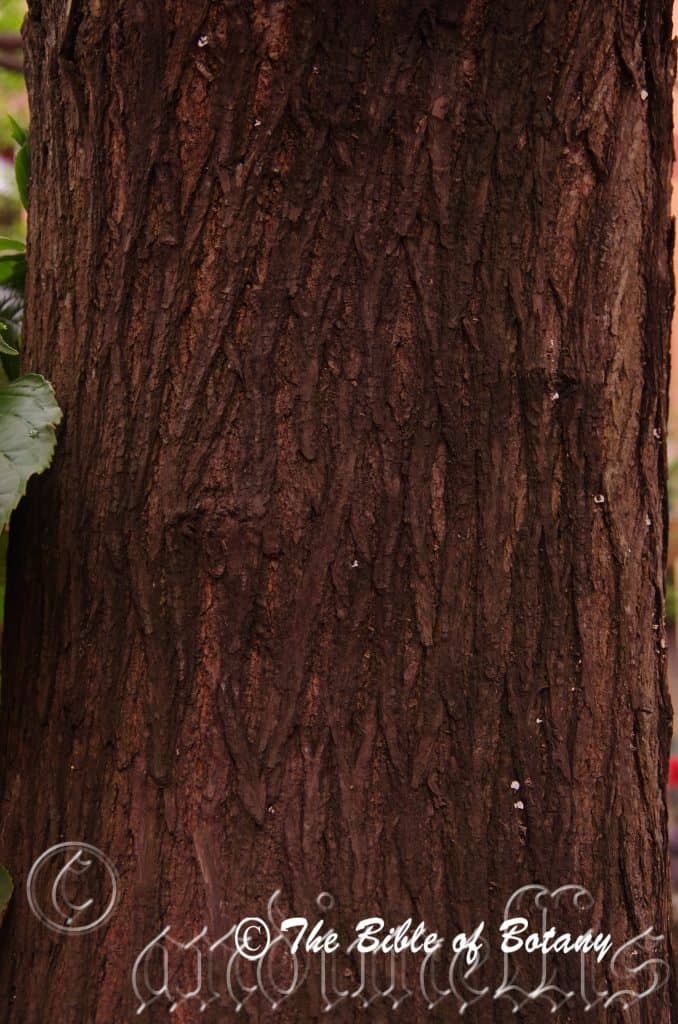
Sha Ping Ba Chong Qing China
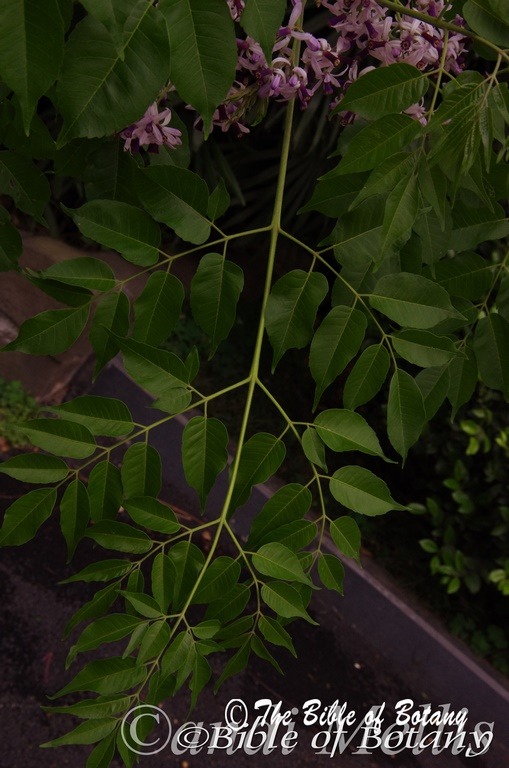
Sha Ping Ba Chong Qing China

Sha Ping Ba Chong Qing China
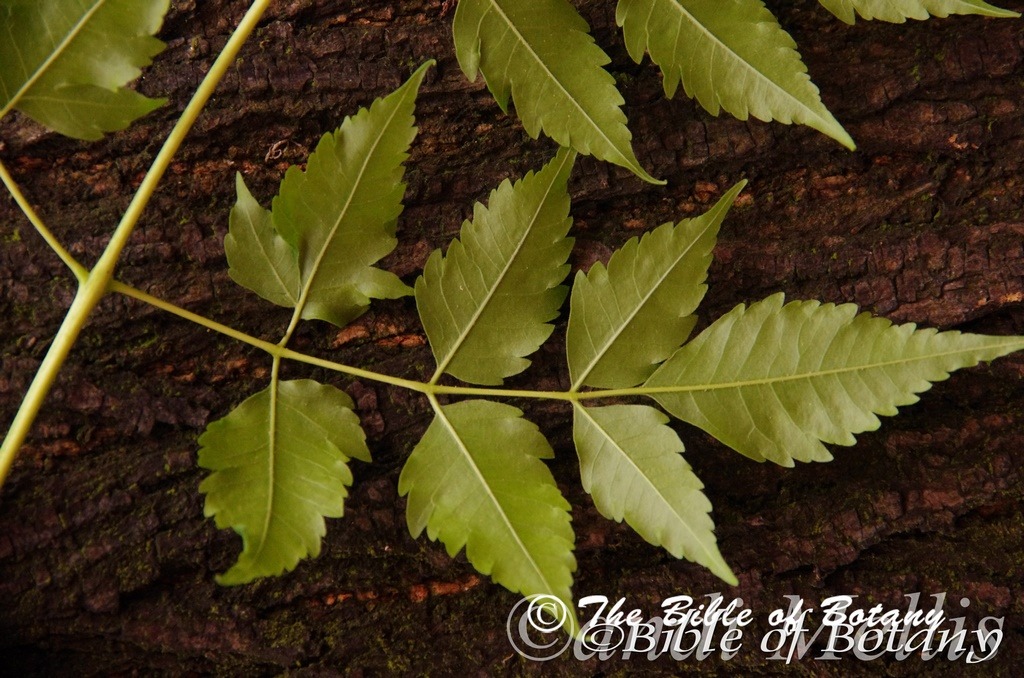
Sha Ping Ba Chong Qing China
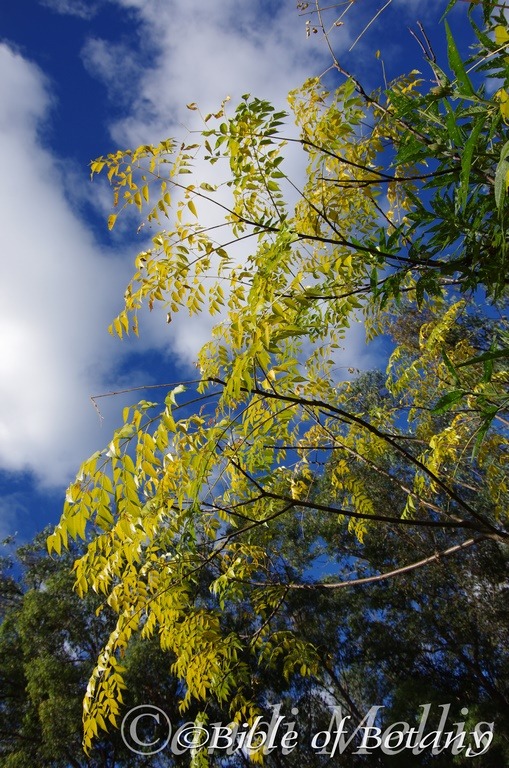
Author’s Garden The Pinnacles NSW

Author’s Garden The Pinnacles NSW

Kedron Brook Qld.
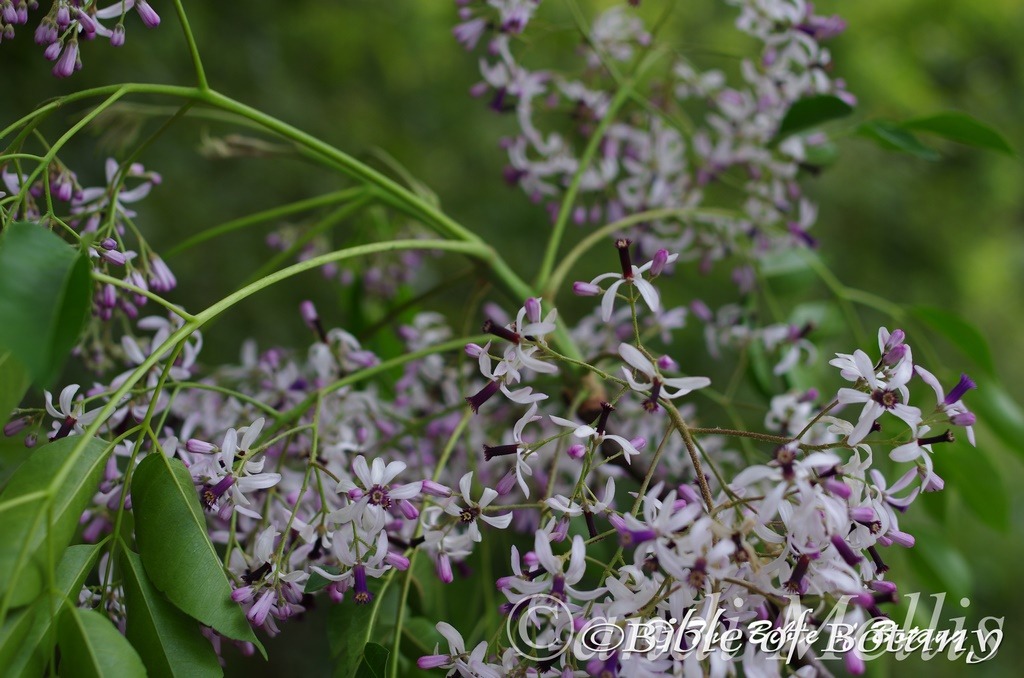
Kedron Brook Qld.
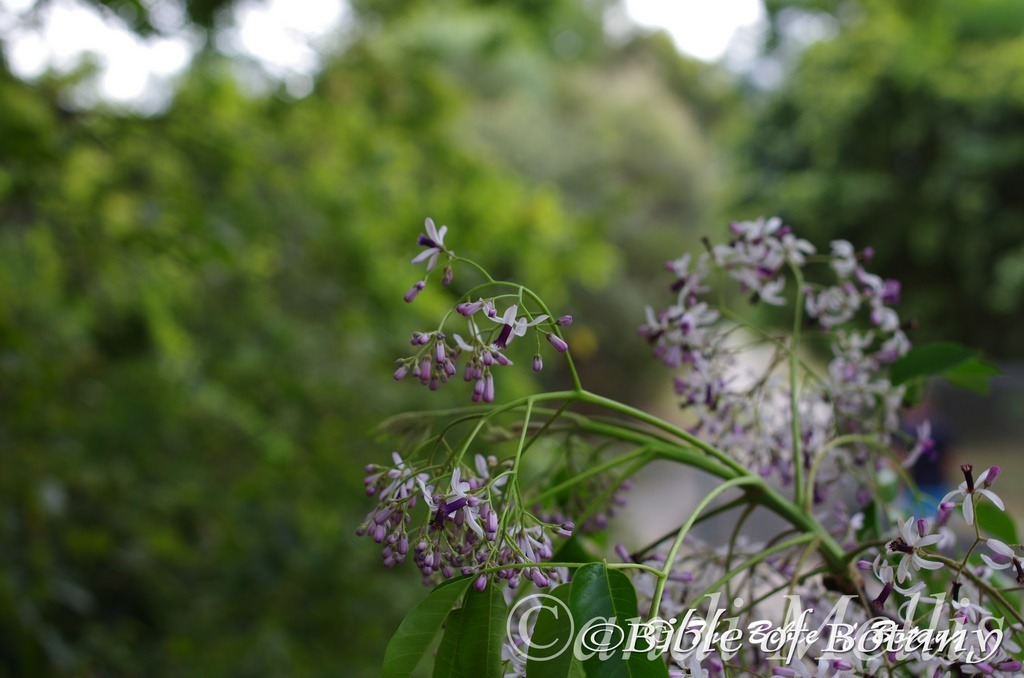
Kedron Brook Qld.
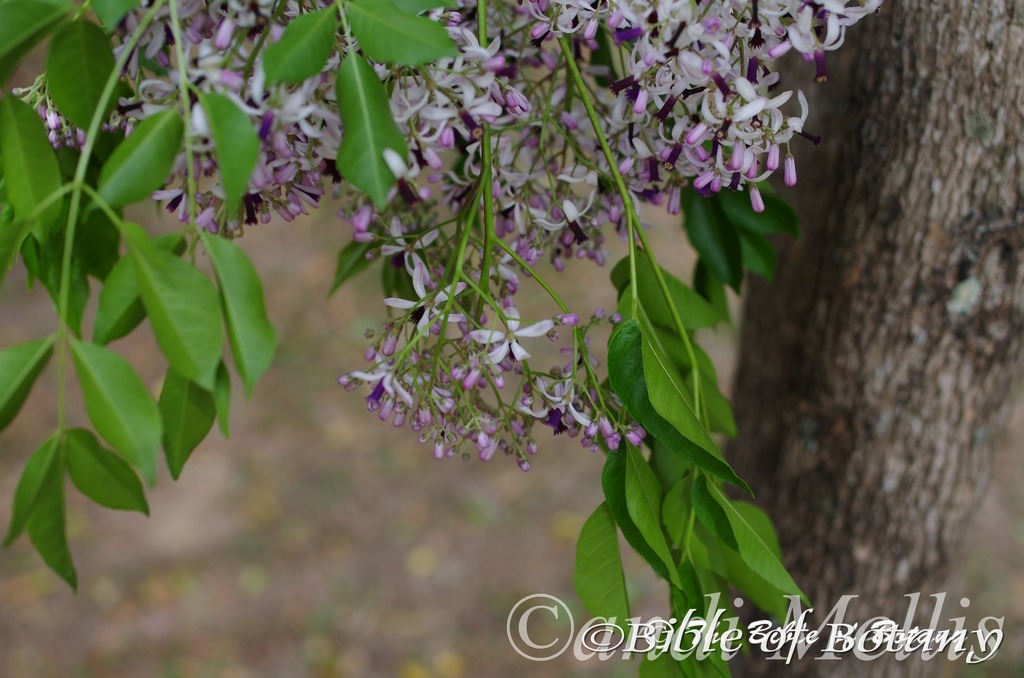
Kedron Brook Qld.

Nan Shan China
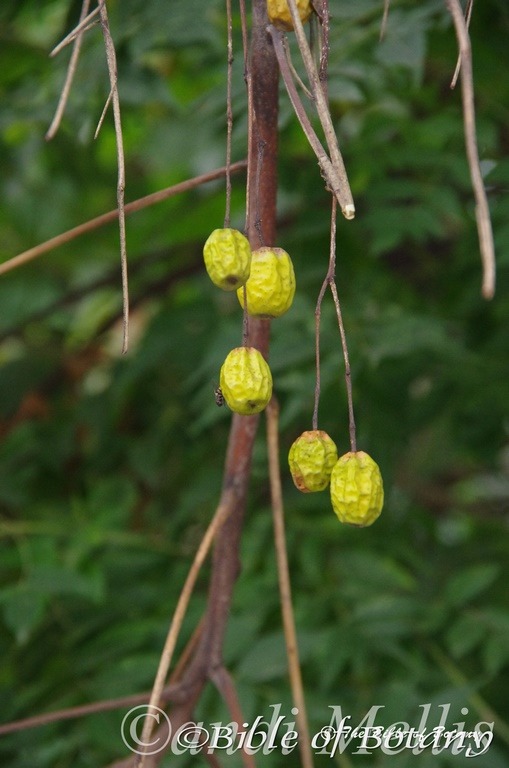
Nan Shan China
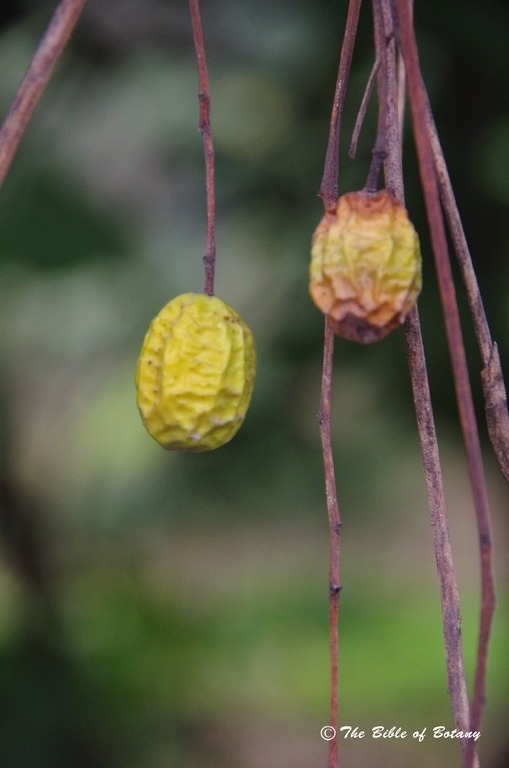
Nan Shan China
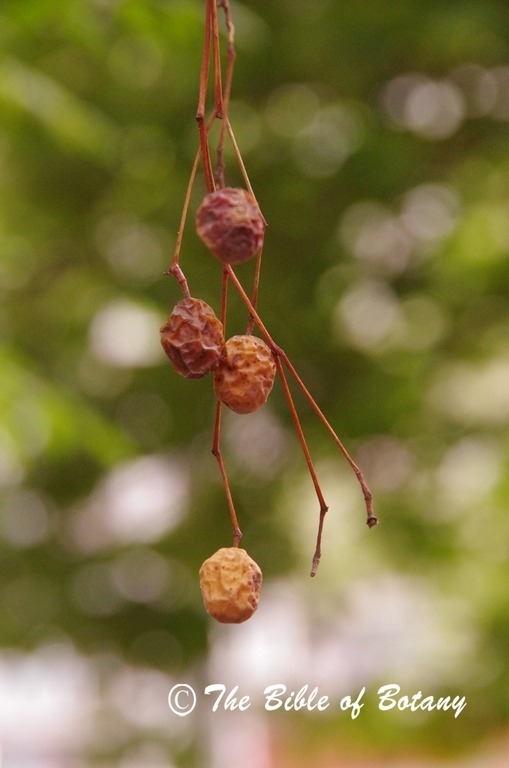
Nan Shan China
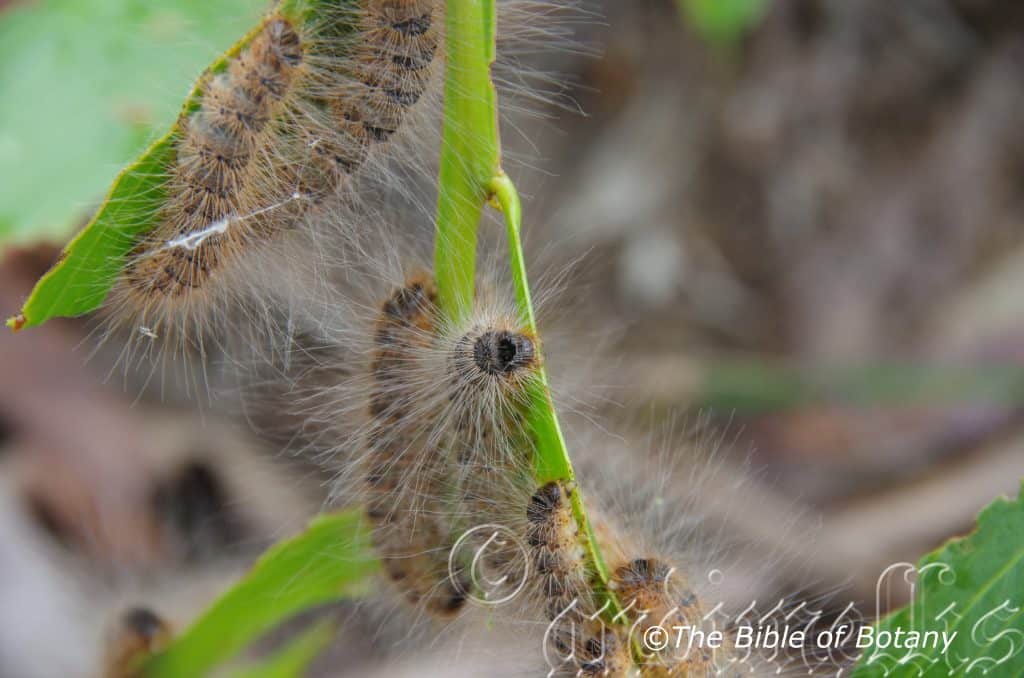

Author’s Garden The Pinnacles NSW
Melia azedarach
Classification:
Unranked: Manoliophyta
Class: Magnoliopsida
Order: Sapindales
Family: Meliaceae
Genus: From Méli/Méllis/Méllissa, which are Ancient Greek for honey, sweet or pleasant. It refers to the plants being very attractive to bees and small butterflies after the nectar or the honey colour of an organ.
Specie: From Azad, Darakht which is Latinized from the Persian word for the Neem Tree. It refers to the neem tree, which is found from Asia Minor to Australia with only slight differences.
Sub species:
Common Name: White Cedar or China Berry.
Distribution:
Melia azedarach is a widespread species which is found east from the southern Kimberley Range in far north eastern Western Australia to the Victoria River and Gregory National Parks.
In the east it is found south from the tip of Cape York Peninsula in Queensland along the coast, adjacent ranges and off coast Islands to Milton in New South Wales. It is also found in Boondjamulla National Park (Lawn Hill) North West of Mount Isa in Queensland.
It is also found east from the Persian Gulf, India, across southern and central China, Malaysia, Philippines, Indonesia and New Guinea.
https://avh.ala.org.au/occurrences/search?taxa=Melia+azedarach#tab_mapView
Habitat Aspect Climate:
Melia azedarach prefers light dappled shade to full shade. It grows in dry rainforests and sub-tropical Eucalyptus forests. The altitude ranges from 5 meter ASL to 900 meters ASL.
The temperatures range from minus 3 degrees in August to 40 degrees in January.
The rainfall ranges from lows of 280mm to an average of 2500mm. In the drier areas the tree is located along seasonal creeks where underground moisture is still available.
Soil Requirements:
Melia azedarach prefers sandy loams to medium clays. The soils are usually derived from decomposed sandstones, granites, brown basalts, black basalts, laterites, shales or alluvial deposits. The soils pH ranges from 5.5pH to 7.5pH. It does not tolerate waterlogged soils. Non saline soils to moderately saline soils are tolerated as are salt laden winds.
Height & Spread:
Wild Plants: 15m to 45m by 10m to 15m.
Characteristics:
Melia azedarach grows as a medium tree with olive-grey glabrous with scabrous patches on the trunk and larger branches. The bole of the trunk is about half the height on a mature tree. The branchlets stems are olive-green and covered in white oval lenticels. The leaf scars from old leaves are distinctly visible on the branchlets. Immature stems are yellow quickly turning rusty-red to rust-brown, glabrous and semi glossy.
Melia azedarach’s adjacent leaves are bipinnate and measure 120mm to 450mm by 100mm to 180mm in width. There are up to 11 pinnules on a secondary rachise. The 25 to 75 pinnules are ovate to elliptical and measure 25mm to 70mm in length by 10mm to 30mm in width. The pinnule’s base is asymmetrical broadly rounded while the apex is accuminate. The discolourous laminas are grass-green, dull to semi glossy and are glabrous to sparsely covered in short rusty stellate hairs on the upper lamina while the lower lamina is paler. The margins are irregularly toothed. The mid vein is strongly prominent on the lower lamina and is distinctly visible on the upper lamina. The mid vein is prominent on the upper lamina and visible from below. The petiole is covered in rusty stellate hairs and measure 50mm to 150mm in length. The petiolules measure 1mm to 8mm in length.
The inflorescence of Melia azedarach is a loose panicle born from the upper leaf axils. There are 28 to 76 flowers in a panicle which measure 100mm to 200mm in length by 65mm to 120mm in width. The peduncles measure 10mm to 30mm in length while the pedicels measure 10mm to 20mm in length. The 5 elliptical calyx lobes are covered in short white stellate hairs and measure 1.5mm to 2mm in length. The 5 narrow oblong petals are white to mauve and measure 8mm to 12mm in length by 2mm to 3.5mm in width. They curve upwards forming a longitudinal keel. The apex is obtuse.
The 8 to 10 deep purple stamens turn black as they age. It is fused together to form a tube and measure 4mm to 6mm in length. The yellow oblong anthers are situated on the inside of the anther tube near the opening.
The single, glabrous, green style has a green stigma and measures 4.5mm to 5.5mm in length. The disc is continuous but does not cover the glabrous ovary. The sweetly scented flowers appear from mid September right through to late November.
Melia azedarach‘s fruit is an obovoid to ellipsoidal drupe. The drupe is glaucous green and turns yellow and wrinkled on ripening. They measure 12mm to 18mm in length by 8mm to 15mm in diameter. The flesh surrounding the seed is creamy yellow to deep yellow. The ellipsoidal seed is pale fawn and is surrounded by a thick woody endocarp. The seed measures 6mm to 7mm in length by 5mm to 6mm in width. The fruits mature during the period when the trees are deciduous at the end of the dry season.
Wildlife:
Melia azedarach relies upon fruit eating birds to eat the fruits and thus distribute the seeds away from the parent plant.
The tree’s flowers are visited by a number of butterflies and native bees.
The leaves are an attractive food source for the bag-shelter moth or processionary caterpillar, Ochrogaster lunifer and the Cape Lilac Moth or White Cedar Moth known as Leptoceneria reducta.
(Caution all parts of this tree are poisonous.)
Cultivation:
I have seen children playing a game in southern China by seeing who can catch the most flowers in a given time period. The laughter was exhilarating with wonderful antics displayed by the children. It was far more difficult than seeing them at it. The purple and white flowers would offer the Clarence Valley a greater alternative than the foreign tree that is their present floral emblem while maintain the same colours of purple and white.
Melia azedarach makes an excellent light shade tree for understory shrubs that prefer some winter sun or where an opening is required to let winter warmth through. They always look green and fresh especially where adequate ground moisture is retained. It is very suitable on sandy to heavy clay soils and are most suitable for medium and large gardens close to the coast in warm temperate, sub-tropical or semi-arid gardens. As garden subjects they will grow from 10 meters to 12 meters in height by 7 meters to 10 meters diameter when grown in the open.
It is cold tolerant to temperatures as low as minus 4 degree once established. It is an excellent tree for semi-arid areas where shade is required around the home stead or along fence lines for stock.
It is best used as a small park tree, placed in the background or planted centrally as a small feature tree in smaller gardens. Placed at the rear of a bush garden their striking display of flowers and perfume will draw your attention so that you will want to investigate further. Plants with small white, pink or lavender flowers and large leaves can be used in the midground while small white, pink or mauve flowering prostrate shrubs are best in the front.
Placed on the edge of a rainforest garden they will develop quickly. The trees are suitable for many different orchids and epiphytic ferns in a rainforest situation. Here they will also support many different varieties of lichens and mosses.
The best method for preventing the trees from becoming defoliated by the Cape Lilac Moth is to be vigilant in late January and February and again in October for a lesser attack when the caterpillars are up and about. The caterpillars feed at night and return to a dark cool place out of the sun during the day away from the tree. When it is noticed, make a cloth skirt for the tree. After dark tie the bottom securely around the trunk so they cannot crawl out the bottom. With a row of pegs tie the top off 100mm out from the trunk and about 0.5 meter above the ground so a funnel is formed. Place some old black rags in the bottom so the caterpillars can hide beneath out of the sun. The following morning it is just a matter of picking them out with gloves and squashing them. If you are too squeamish, get the little lady to do it for you.
Propagation:
Seeds: Melia azedarach seeds can be sown directly into a seed raising mix. Cover the seeds with 2mm to 3mm of fine weed free mulch and keep moist. Place the tray in a warm sunny position. When the seedlings are 30mm to 50mm tall, prick them out and plant them into 50mm native tubes using a good organic mix.
Once the seedlings reach 100mm to 150mm in height they can be planted out into their permanent position.
Fertilize using seaweed, fish emulsion or organic chicken pellets soaked in water on an alternate basis. Fertilize every two months until the trees are established then twice annually in early September and March to maintain health, vitality and better flowering.
Further Comments from Readers:
Hi reader, it seems you use The Bible of Botany a lot. That’s great as we have great pleasure in bringing it to you! It’s a little awkward for us to ask, but our first aim is to purchase land approximately 1,600 hectares to link several parcels of N.P. into one at The Pinnacles NSW Australia, but we need your help. We’re not salespeople. We’re amateur botanists who have dedicated over 30 years to saving the environment in a practical way. We depend on donations to reach our goal. If you donate just $5, the price of your coffee this Sunday, We can help to keep the planet alive in a real way and continue to bring you regular updates and features on Australian plants all in one Botanical Bible. Any support is greatly appreciated. Thank you.
In the spirit of reconciliation we acknowledge the Bundjalung, Gumbaynggirr and Yaegl and all aboriginal nations throughout Australia and their connections to land, sea and community. We pay our respect to their Elders past, present and future for the pleasures we have gained.
Melichrus adpressus
Classification:
Unranked: Eudicots
Class: Asterids
Order: Ericales
Family: Ericaceae
Subfamily: Styphelioideae
Tribe: Styphelieae
Genus: From Méli/Méllis/Méllissa, which are Ancient Greek for honey, sweet or pleasant or Mellifluus, which is Latin for flowing with honey or the colour of honey and Chrus, which is Ancient Greek for bearing Christ or a cross. It refers to honey or a honey coloured stone, thus seeds that resemble honey coloured stones or marbles.
Specie: From Adpressa, which is Greek/Latin for sitting or fitting close to. It usually refers to leaves or hairs, which hug the stems or leaves or a plants habit of hugging the ground.
Sub species:
Common Name: Large Nectar Heath.
Distribution:
Melichrus adpressus is found in several disjunct populations south from Hells Gate, south of Laura to Princess Hill in Lumholtz National Park in far north eastern Queensland and bounded by Castle Tower to Miles and Inglewood in southern Queensland to Wilsons headland north of Wooli in north eastern coastal New South Wales.
It is also found in the Eungella National Park west of MacKay and Salvatore National Park and Coonabarbran.
https://avh.ala.org.au/occurrences/search?taxa=Melichrus+adpressus#tab_mapView
Habitat Aspect Climate:
Melichrus adpressus prefers light dappled shade to full shade. It usually grows in dry coastal scrubs or dry coastal woodland heaths. The altitude ranges from 5 meter ASL to 725 meters ASL.
The temperatures range from minus 3 degrees in August to 40 degrees in January.
The rainfall ranges from lows of 400mm to an average of 2800mm.
Soil Requirements:
Melichrus adpressus prefers to grow on fine sands to medium fatty clays. The soils are usually derived from decomposed sandstones, shale or accumulated peaty beach sands on the back dunes or alluvial deposits. The soils are light sandy clays often with copious quantities of leaf litter. The soils pH ranges from 4.5pH to 6pH. It does not tolerate waterlogged soils. Non saline soils to very saline soils are tolerated as are salt laden winds.
Height & Spread:
Wild Plants: 0.3m to 1.5m by 0.3m to 1.2m.
Characteristics:
Melichrus adpressus grows as an open straggly erect to semi erect small bush with grey-brown, scabrous stems. The immature stems are reddish-green and glabrous.
The crowded leaves are imbricate, apically appressed on the apical sections and often spreading to reflexed towards base on the basal sections. The broad elliptical to broad lanceolate leaves measure 15mm to 32mm by 2.5mm to 5.5mm in width. The bases are broad cuneate to tapering to the petiole while the apexes are acute ending in a sharp, pungent spine. The concolourous laminas are deep green to sea-green, dull and glabrous. The laminas recurve strongly upwards from the midvein to the margins and decurve slightly on the apical third. The hyaline margins are chartaceous, pale yellow to creamy-white and entire. The pale yellow to creamy-white mid vein prominent on the lower lamina and is distinctly visible on the upper lamina. There are also 12 to 14 prominent parallel veins on the lower laminas. The pale creamy white, pastel yellow or pinkish petioles measure 0.3mm to 1.5mm in length.
The inflorescences of are born singularly from the leaf axils. The globular, sessile flowers’ bracteoles, sepals and corolla are white, pale creamy-white to pastel greenish-yellow and glabrous. The ovate bracteoles measure 3.8mm to 4.8mm in length. The broad acute sepals are sparsely covered in soft white sericeous hairs and measure 5.1mm to 5.8mm in length. The corolla tube and lobes are sparsely covered in soft white sericeous hairs. The corolla is broadly cylindrical and measures 3.8mm to 4mm in length while the 5 erect lobes measure 2.6mm to 2.8mm in length.
The 5 stamens are inserted. The pastel yellow pistil is inserted. The flowers appear from July to September.
The fruits are small globose berries. The green berries are glabrous and finely ribbed near on the basal half and smooth on the apical half and measure 4mm to 6mm in length by 3mm to 5mm in diameter.
Wildlife:
Melichrus adpressus’s flowers are visited by a number of butterflies, native bees, wasps and pollen flies.
The flowers also attract the small Silver Eyes (Zosterops lateralis) as are the fruits. Other small honeyeaters probably also eat the fruits and visit the flowers.
Cultivation:
Melichrus adpressus is often a straggly small under shrub for sub-tropical to temperate gardens. It has a place in bush gardens and rockeries where the soil is dry and neglected. It needs to be mulched and the soil moisture needs to be kept at an even level to help improve bushiness.
It can be lightly tipped after a year to assist in a more compact plant.
Melichrus adpresus looks particularly stunning placed amongst large boulders and rocks or massed planted with other pink or red flowering Epacris specie.
Melichrus adpressus add interesting foliage and colour to a heath garden or semi arid moist rockery. When you design a flat heath garden which Melichrus adpressus is well suited but do not over crowd it. Don’t use contours to display the plants as heath lands are almost always flat or have a slight rise. Plants must be planted close together and be short so you can see over the tallest ones with the exception of one or two plants at the most. These will be feature plants. The idea is to achieve a feeling of expansive flatness. This can be achieved with using the Melichrus adpressus’s leaves and having them contrasting broad deep green or soft grey to glaucous coloured foliage.
Another method is to use a lot of procumbent plants like Carpobrotus edulis or Hibertia specie. Mix them with other smaller shrubs so none of them dominate the scene and none of them are over 300mm in height and blend to give a mosaic of foliage colours that you oversee. Here I immediately think of Actinotis helianthi, Grevillea masonii or Grevillea paradoxa for three great contrasting foliage. This allows the sparseness of the lower stems to be filled with colour and the upper stems of Melichrus adpressus will appear over the top through the mosaic of colour from below displaying off their stems and creamy flowers in winter.
Propagation:
Seeds: Melichrus adpressus seeds can be sown into a seed raising mix without treatment in spring or summer. Cover them in 2mm of fine sand. Place the trays in a sunny warm position and keep moist. When the seedlings are 25mm to 50mm tall, prick them out and plant them into 50mm native tubes using a good organic mix.
Once the seedlings reach 150mm to 200mm in height prick the growing tips out and plant them out into their permanent position. For mass plantings plant them at 0.5 meters to 1 meter centers.
Cuttings: As Melichrus adpressus seeds are difficult to collect cuttings maybe the best method for propagating. Select material from good flowering specimens or those with a better growth habit, plants with larger flowers, those that have the colour you desire or the leaves and habit you that you want to foster. It is not an easy plant to grow from cutting so be prepared for some failures.
Successful results are have been attained with using 30mm fine gravel, 30mm peat and 40mm coconut fibre however the results are still erratic and percentages still low. The usual method of propagating is by using cuttings of the current season’s growth. Like most Ericaceae, the roots are very fine and easily damaged during transplanting.
Cuttings are probably best placed into individual small pots or native tubes even resorting to small peat pots or paper cups to minimize root disturbance.
Use 100mm to 250mm cuttings. Remove half the leaves from the bottom section being careful not to tear the bark.
1 Prepare the cutting mix; if you are not using peat pots, by adding one third sharp clean river sand, one third peat and one third perlite. These ingredients are sterilize,
2 Select good material from non diseased plants,
3 Select semi green stems for cuttings. Look for a stem with two or three nodes,
4 Place the cutting on a flat, hard surface, and make a clean cut down one side of the cutting at the base for 10mm with a sharp sterile knife or razor blade. – This scarification of the node will increase the chances of roots emerging from this spot. Now remove all but one or two the leaves, leaving the apex leaves in tact. If the leaves are very large in proportion to the stem, cut off the apical halves.
5 Fill a saucer with water, and place a little medium strength rooting hormone into another container like a milk bottle top. Dip the node end of the cutting into the water and then into the rooting hormone. Tap off any excess hormone,
6 Use a small dipple stick or old pencil to poke a hole into the soilless potting mix. Ensure the hole is slightly larger than the stem diameter and be careful not to wipe the rooting hormone off the cuttings base, place the cuttings in a pattern ensuring the cuttings are not touching each other,
7 I like to place the pots in Plastic bags to help maintain temperature and moisture. Place in a semi shaded place like under 50mm shade cloth.
8 When the cuttings have struck, open the bag to allow air circulation for a few days to a week,
9 Once hardened off remove the cuttings from the bag and allow to further hardening for a few more days,
10 Transplant into a good potting mix to grow on.
Fertilize using seaweed, fish emulsion or organic chicken pellets soaked in water on an alternate basis. Fertilize every two months until the plants are established then twice annually in early September or March to maintain health, vitality and better flowering.
Further Comments from Readers:
Hi reader, it seems you use The Bible of Botany a lot. That’s great as we have great pleasure in bringing it to you! It’s a little awkward for us to ask, but our first aim is to purchase land approximately 1,600 hectares to link several parcels of N.P. into one at The Pinnacles NSW Australia, but we need your help. We’re not salespeople. We’re amateur botanists who have dedicated over 30 years to saving the environment in a practical way. We depend on donations to reach our goal. If you donate just $5, the price of your coffee this Sunday, We can help to keep the planet alive in a real way and continue to bring you regular updates and features on Australian plants all in one Botanical Bible. Any support is greatly appreciated. Thank you.
In the spirit of reconciliation we acknowledge the Bundjalung, Gumbaynggirr and Yaegl and all aboriginal nations throughout Australia and their connections to land, sea and community. We pay our respect to their Elders past, present and future for the pleasures we have gained.
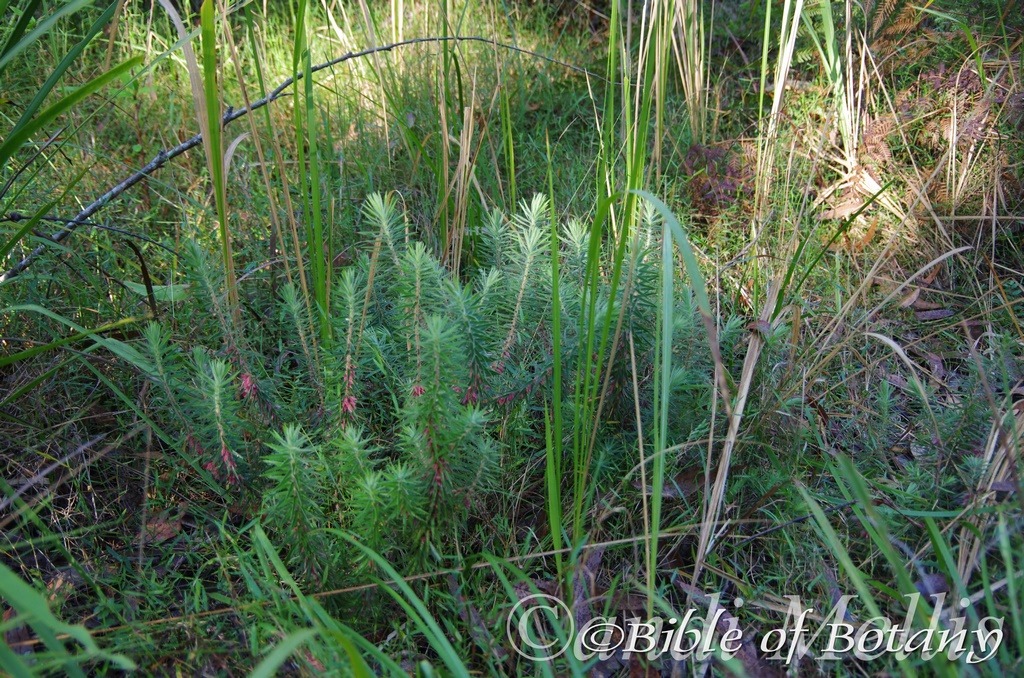
Pigeon Gully National Park NSW
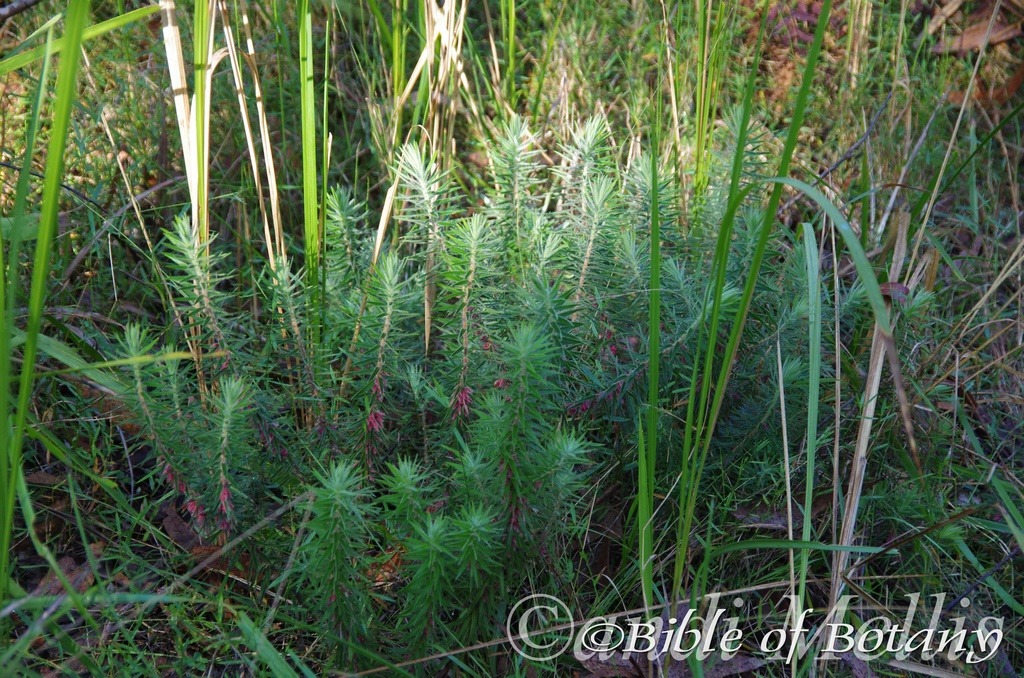
Pigeon Gully National Park NSW

Pigeon Gully National Park NSW
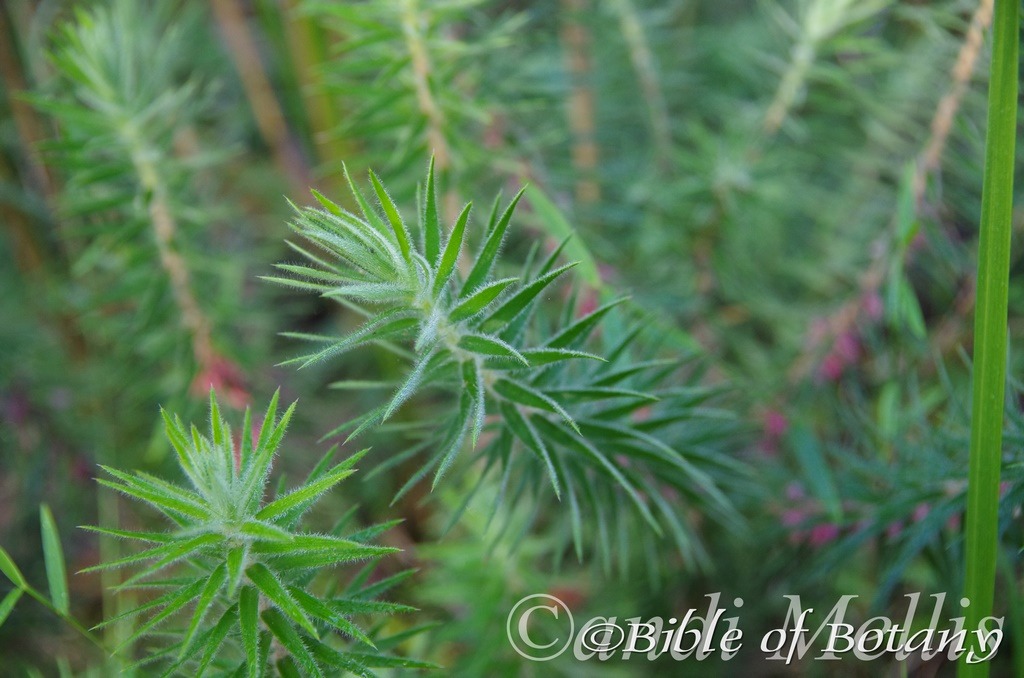
Pigeon Gully National Park NSW
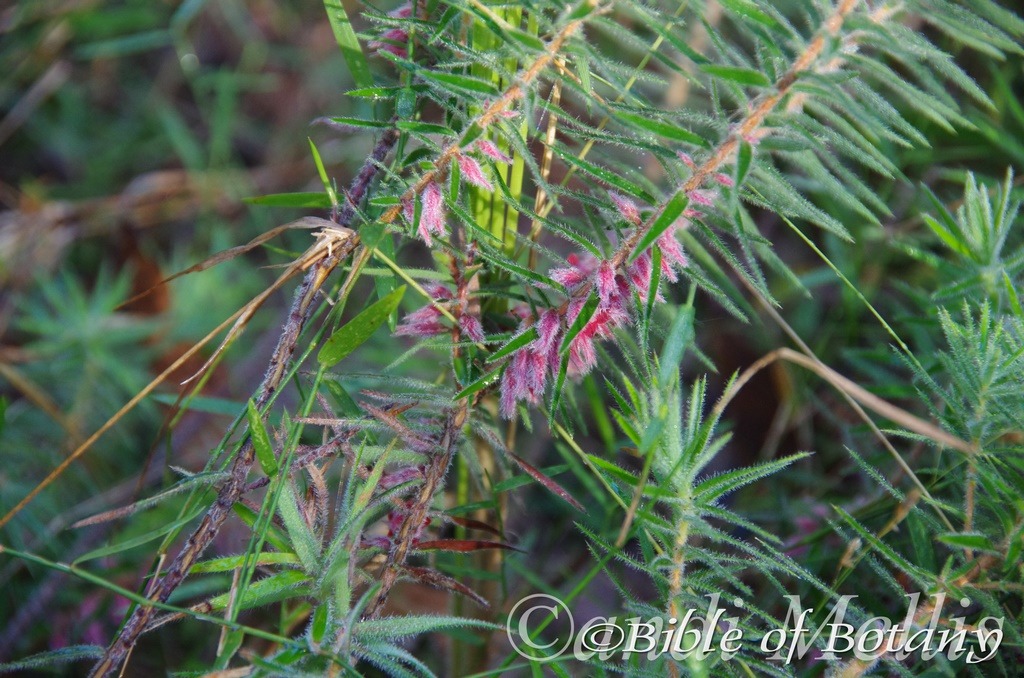
Pigeon Gully National Park NSW
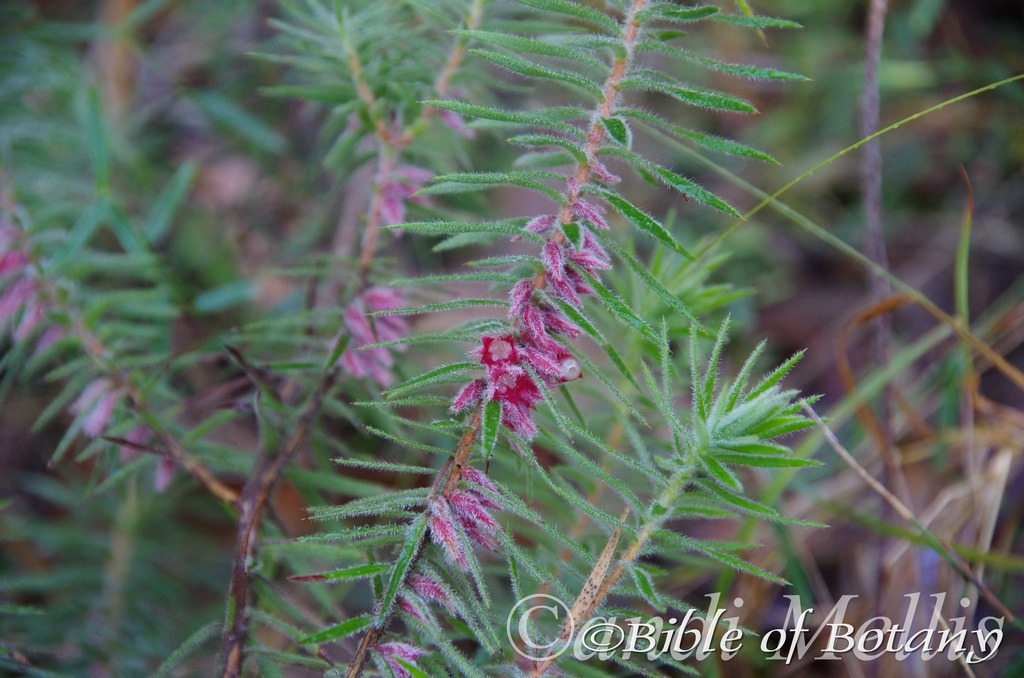
Pigeon Gully National Park NSW
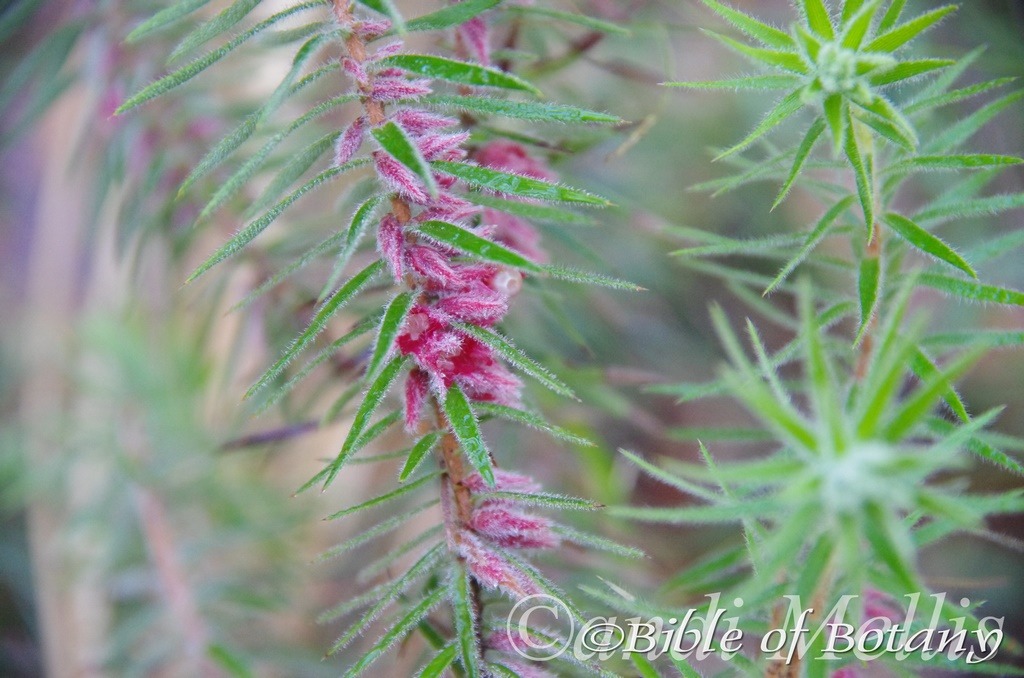
Pigeon Gully National Park NSW
Melichrus hirsutus
Classification:
Unranked: Eudicots
Class: Asterids
Order: Ericales
Family: Ericaceae
Subfamily: Styphelioideae
Tribe: Styphelieae
Genus: From Méli/Méllis/Méllissa, which are Ancient Greek for honey, sweet or pleasant or Mellifluus, which is Latin for flowing with honey or the colour of honey and Chrus, which is Ancient Greek for bearing Christ or a cross. It refers to honey or a honey coloured stone, thus seeds that resemble honey coloured stones or marbles.
Specie: From Hirsutus, which is Latin for a hairy and shaggy. It refers to plant structures or organs, which have very long, shaggy often coarse looking hairs.
Sub species:
Common Name:
Distribution:
Melichrus hirsutus is restricted to a small area and a few populations south from near Chambigne Nature Reserve, Bald Knob, and Flaggy creek near Glenreagh.
https://avh.ala.org.au/occurrences/search?taxa=Melichrus+hirsutus#tab_mapView
Habitat Aspect Climate:
Melichrus hirsutus prefers light dappled shade. It grows in dry sclerophyll forests. The altitude ranges from 55 meter ASL to 101 meters ASL.
The temperatures range from minus 3 degrees in August to 40 degrees in January.
The rainfall ranges from lows of 800mm to an average of 1150mm.
Soil Requirements:
Melichrus hirsutus prefers fine sands to course fatty clays. The soils are usually derived from decomposed sandstone over sandstone. The soils pH ranges from 4.5pH to 6pH. It does not tolerate waterlogged soils. Non saline soils to moderately saline soils are tolerated.
Height & Spread:
Wild Plants: 0.2m to 0.5m by 0.3m to 0.6m.
Characteristics:
It grows as a perennial herb with brownish-grey scabrous, erect stems. The Immature stems are green and covered in white hirsute to sericeous hairs.
The opposite leaves are crowded and usually erect or at times divaricate which is more evident on the lower part of the stems. The petioles measure 0mm to 0.3mm in length. The narrow ovate leaves measure 20mm to 33mm by 2.6mm to 5mm in width. The bases are truncate while the apexes are long tapering acute with a long pale grey 0.7mm to 0.9mm long spine. The discolourous laminas are deep sea green, semi glossy to glossy and glabrous on the upper laminas while the lower laminas are bluish-green and moderately covered in white hirsute to sericeous hairs. The laminas are flat and decurve slightly on the apical third while the margins are entire and covered in white ciliate hairs. There are also 5 to 9 paler, prominent parallel veins on the lower laminas.
The inflorescence are born singularly from the leaf axils. The globular, sessile flowers’ bracteoles, sepals and corolla are pink, pinkish-red to red and glabrous. The bracts and bracteoles are broadly ovate to acute and covered in white sericeous hairs. The bracteoles measure 4.5mm to 6mm in length. The sepals are narrow ovate with long acuminate to almost subulate apexes and measure 7.5mm to 9mm in length. The urceolate corolla tube measures 2.8mm to 3.4mm in length while the lobes measure 2.2mm to 3.2mm in length.
The 5 stamens are inserted. The filaments measure 0.5mm to 1mm in length while the anthers measure 1.5mm to 1.7mm in length. The 5 locular ovary is pale green and glabrous. The pastel pink pistil is inserted. The flowers appear from the beginning of July to early August.
The fruits are small globose berries. The green often tinged red berries are glabrous turn brownish-red when ripe. The berries measure 12mm to 18mm in length by 10mm to 14mm in width.
Wildlife:
Melichrus hirsutus’s flowers are visited by a number of butterflies, native bees, wasps and pollen flies. The fruits are probably distributed by birds or small mammals.
Cultivation:
Melichrus hirsutus is a straggly small shrub for sub-tropical to temperate gardens. It has a place in bush gardens and rockeries where the soil is dry and neglected. It needs to be mulched and the soil moisture needs to be kept at an even level to help improve bushiness.
It can be lightly tipped after a year to assist in a more compact plant.
It looks particularly stunning scattered amongst large boulders and rocks or massed planted with other pink or red flowering Epacris specie.
It adds interesting foliage and colour to a heath garden. When you design a flat heath garden which Melichrus hirsutus is well suited but do not over crowd it. Don’t use contours to display the plants as heath lands are almost always flat or have a slight rise. Plants must be planted close together and be short so you can see over the tallest ones with the exception of one or two plants at the most. These will be feature plants. The idea is to achieve a feeling of expansive flatness. This can be achieved with using the Melichrus hirsutus’s leaves and having them contrasting broad deep green or soft grey to glaucous coloured foliage.
Another method is to use a lot of procumbent plants like Carpobrotus edulis or Hibertia linearis. Mix them with other smaller perenials so none of them dominate the scene and none of them are over 300mm in height and blend to give a mosaic of foliage colours that you oversee. Here I immediately think of Actinotis helianthi, Grevillea masonii or Grevillea paradoxa for three great contrasting foliage.
Propagation:
Seeds: Melichrus hirsutus seeds can be sown into a seed raising mix without treatment in spring or summer. Cover them in 2mm of fine sand. Place the trays in a sunny warm position and keep moist. When the seedlings are 25mm to 50mm tall, prick them out and plant them into 50mm native tubes using a good organic mix.
Once the seedlings reach 150mm to 200mm in height prick the growing tips out and plant them out into their permanent position. For mass plantings plant them at 0.5 meters to 1 meter centers.
Cuttings: As Melichrus hirsutus seeds are difficult to collect cuttings maybe the best method for propagating. Select material from good flowering specimens or those with a better growth habit, plants with larger flowers, those that have the colour you desire or the leaves and habit you that you want to foster. It is not an easy plant to grow from cutting so be prepared for some failures.
Successful results are have been attained with using 30mm fine gravel, 30mm peat and 40mm coconut fibre however the results are still erratic and percentages still low. The usual method of propagating is by using cuttings of the current season’s growth. Like most Ericaceae, the roots are very fine and easily damaged during transplanting.
Cuttings are probably best placed into individual small pots or native tubes even resorting to small peat pots or paper cups to minimize root disturbance.
Use 100mm to 250mm cuttings. Remove half the leaves from the bottom section being careful not to tear the bark.
1 Prepare the cutting mix; if you are not using peat pots, by adding one third sharp clean river sand, one third peat and one third perlite. These ingredients are sterilize,
2 Select good material from non diseased plants,
3 Select semi green stems for cuttings. Look for a stem with two or three nodes,
4 Place the cutting on a flat, hard surface, and make a clean cut down one side of the cutting at the base for 10mm with a sharp sterile knife or razor blade. – This scarification of the node will increase the chances of roots emerging from this spot. Now remove all but one or two the leaves, leaving the apex leaves in tact. If the leaves are very large in proportion to the stem, cut off the apical halves.
5 Fill a saucer with water, and place a little medium strength rooting hormone into another container like a milk bottle top. Dip the node end of the cutting into the water and then into the rooting hormone. Tap off any excess hormone,
6 Use a small dipple stick or old pencil to poke a hole into the soilless potting mix. Ensure the hole is slightly larger than the stem diameter and be careful not to wipe the rooting hormone off the cuttings base, place the cuttings in a pattern ensuring the cuttings are not touching each other,
7 I like to place the pots in Plastic bags to help maintain temperature and moisture. Place in a semi shaded place like under 50mm shade cloth.
8 When the cuttings have struck, open the bag to allow air circulation for a few days to a week,
9 Once hardened off remove the cuttings from the bag and allow to further hardening for a few more days,
10 Transplant into a good potting mix to grow on.
Fertilize using seaweed, fish emulsion or organic chicken pellets soaked in water on an alternate basis. Fertilize every two months until the plants are established then twice annually in early September or March to maintain health, vitality and better flowering.
Further Comments from Readers:
Hi reader, it seems you use The Bible of Botany a lot. That’s great as we have great pleasure in bringing it to you! It’s a little awkward for us to ask, but our first aim is to purchase land approximately 1,600 hectares to link several parcels of N.P. into one at The Pinnacles NSW Australia, but we need your help. We’re not salespeople. We’re amateur botanists who have dedicated over 30 years to saving the environment in a practical way. We depend on donations to reach our goal. If you donate just $5, the price of your coffee this Sunday, We can help to keep the planet alive in a real way and continue to bring you regular updates and features on Australian plants all in one Botanical Bible. Any support is greatly appreciated. Thank you.
In the spirit of reconciliation we acknowledge the Bundjalung, Gumbaynggirr and Yaegl and all aboriginal nations throughout Australia and their connections to land, sea and community. We pay our respect to their Elders past, present and future for the pleasures we have gained.
Melichrus gibberagee
Classification:
Unranked: Eudicots
Class: Asterids
Order: Ericales
Family: Ericaceae
Subfamily: Styphelioideae
Tribe: Styphelieae
Genus: From Méli/Méllis/Méllissa, which are Ancient Greek for honey, sweet or pleasant or Mellifluus, which is Latin for flowing with honey or the colour of honey and Chrus, which is Ancient Greek for bearing Christ or a cross. It refers to honey or a honey coloured stone, thus seeds that resemble honey coloured stones or marbles.
Specie: From Gibberagee, which is Latinized from the local aboriginal word for the State Forest in north eastern NSW.
Sub species:
Common Name:
Distribution:
Melichrus gibberagee is restricted to a very small population in the Gibberagee State Forest north of Grafton.
https://avh.ala.org.au/occurrences/search?taxa=Melichrus+gibberagee#tab_mapView
Habitat Aspect Climate:
Melichrus gibberagee prefers light dappled shade to full sun. It grows in open Eucalyptus forests below Corymbia henryi and Eucalyptus siderophloia. The altitude ranges from 45 meter ASL to 60 meters ASL.
The temperatures range from minus 1 degree in August to 38 degrees in January.
The rainfall ranges from lows of 850mm to an average of 1200mm.
Soil Requirements:
Melichrus gibberagee prefers fine light podzolic clays to medium podzolic clays. The soils are usually derived from decomposed red fatty sandstones. The soils pH ranges from 4.5pH to 5pH. It does not tolerate waterlogged soils. Non saline soils to moderately saline soils are tolerated.
Height & Spread:
Wild Plants: 0.5m to 1m by 0.3m to 0.5m.
Characteristics:
It grows as a small single stemmed shrub with several grey, scabrous, erect apical branchlets. The immature stems are pale grass-green and densely covered in white hyaline hispid hairs. The branchlets are found radiating out on the apical section of the stem.
The opposite leaves are crowded and divaricate on the stems except for the growing tip where it is appressed. The petioles measure 0.4mm to 0.6mm in length. The narrow ovate to broad linear leaves measure 5.5mm to 16.5mm in length by 1.1mm to 1.9mm in width. The bases are cuneate while the apexes are narrow acuminate with a brittle brown 0.5mm to 0.6mm long spine. The concolourous laminas are deep grass-green, semi glossy to glossy and scabrous and sparsely covered in white, hirsute hairs along the margins on the upper laminas while the lower laminas are sparsely covered in white, hispid hairs along the veins and densely covered in white hispid hairs between the veins. The laminas are flat and straight while the margins are entire and covered in and long, soft, white, silky, hyaline hairs.
The inflorescence are born singularly from the leaf axils and measure 8mm to 12mm in length by 3mm to 5mm in diameter. The pale creamy-green bracts are broadly ovate to almost triangular. The apexes are obtuse to broad acute to mucronate. The bracts are glabrous or sparsely covered in white puberulent hairs distally. There are usually more inner bracts. The bracts measure 1mm in length by 0.9mm in width and 2.5mm to 2.8mm in length by 2mm to 2.2mm in width. The bracteoles are ovate and sparsely covered in white puberulent hairs distally. The bracteoles measure 4.5mm to 6mm in length by 2.9mm to 3.2mm in width.
The 5 pastel green, ovate sepals are pastel green to pastel creamy-green. The sepals are elliptical with acute to acuminate apexes. The sepals are sparsely covered in white sericeous hairs and white puberulent hairs on the apical quarter.
The sepals measure 6mm to 7mm in length by 2.5mm to 2.9mm in width. The corolla and lobes are pastel creamy-yellow to pastel creamy-green. The urceolate corolla tubes are glabrous to sparsely covered in white hirsute hairs externally and are papillose internally. The corolla tubes measure 2.8mm to 4mm in length while the erect lobes measure 3.8mm to 4.2mm in length.
The 5 stamens are inserted and measure 0.3mm to 0.5mm in length while the anthers measure 1.2mm to 1.5mm in length. The honey coloured 4 locular ovary is papillose. The pastel bluish-green style is inserted. The flowers appear from the beginning of July to September.
Melichrus gibberagee’s mature fruits are orbicular berries. The green berries turn reddish-brown when ripe. The berries measure 4mm to 4.5mm in length by 4mm to 4.5mm in diameter. The single seed is woody and measures 3mm to 3.2mm in diameter.
Wildlife:
Melichrus gibberagee flowers are visited by a number of ant species. The fruits are probably distributed by birds or small mammals. The flowers also attract the small Silver Eyes (Zosterops lateralis) as do the fruits. Other small honeyeaters probably also eat the fruits and visit the flowers.
Cultivation:
Melichrus gibberagee is a straggly small shrub for sub-tropical to temperate gardens. They have a place in bush gardens and rockeries where the soil is dry and neglected. It needs to be mulched and the soil moisture needs to be kept at an even level to help improve bushiness.
It can be lightly tipped after a year to assist in a more compact plant.
Melichrus gibberagee add interesting foliage and colour to a heath garden. When you design a flat heath garden which it is well suited but do not over crowd it. Don’t use contours to display the plants as heath lands are almost always flat or have a slight rise. Plants must be planted close together and be short so you can see over the tallest ones with the exception of one or two plants at the most. These will be feature plants. The idea is to achieve a feeling of expansive flatness. This can be achieved with using its leaves and having them contrasting broad deep green or soft grey to glaucous coloured foliages.
Another method is to use a lot of procumbent plants like Carpobrotus edulis or Hibertia linearis. Mix them with other smaller shrubs so none of them dominate the scene and none of them are over 300mm in height and blend to give a mosaic of foliage colours that you oversee. Here I immediately think of Actinotis helianthi Grevillea masonii or Grevillea paradoxa for three great contrasting foliages.
Propagation:
Seeds: Melichrus gibberagee seeds can be sown into a seed raising mix without treatment in spring or summer. Cover them in 2mm of fine sand. Place the trays in a sunny warm position and keep moist. When the seedlings are 25mm to 50mm tall, prick them out and plant them into 50mm native tubes using a good organic mix.
Once the seedlings reach 150mm to 200mm in height prick the growing tips out and plant them out into their permanent position. For mass plantings plant them at 0.5 meters to 1 meter centers.
Cuttings: As Melichrus gibberagee seeds are difficult to collect cuttings maybe the best method for propagating. Select material from good flowering specimens or those with a better growth habit, plants with larger flowers, those that have the colour you desire or the leaves and habit you that you want to foster. It is not an easy plant to grow from cutting so be prepared for some failures.
Successful results are have been attained with using 30mm fine gravel, 30mm peat and 40mm coconut fibre however the results are still erratic and percentages still low. The usual method of propagating is by using cuttings of the current season’s growth. Like most Ericaceae, the roots are very fine and easily damaged during transplanting.
Cuttings are probably best placed into individual small pots or native tubes even resorting to small peat pots or paper cups to minimize root disturbance.
Use 100mm to 250mm cuttings. Remove half the leaves from the bottom section being careful not to tear the bark.
1 Prepare the cutting mix; if you are not using peat pots, by adding one third sharp clean river sand, one third peat and one third perlite. These ingredients are sterilize,
2 Select good material from non diseased plants,
3 Select semi green stems for cuttings. Look for a stem with two or three nodes,
4 Place the cutting on a flat, hard surface, and make a clean cut down one side of the cutting at the base for 10mm with a sharp sterile knife or razor blade. – This scarification of the node will increase the chances of roots emerging from this spot. Now remove all but one or two the leaves, leaving the apex leaves in tact. If the leaves are very large in proportion to the stem, cut off the apical halves.
5 Fill a saucer with water, and place a little medium strength rooting hormone into another container like a milk bottle top. Dip the node end of the cutting into the water and then into the rooting hormone. Tap off any excess hormone,
6 Use a small dipple stick or old pencil to poke a hole into the soilless potting mix. Ensure the hole is slightly larger than the stem diameter and be careful not to wipe the rooting hormone off the cuttings base, place the cuttings in a pattern ensuring the cuttings are not touching each other,
7 I like to place the pots in Plastic bags to help maintain temperature and moisture. Place in a semi shaded place like under 50mm shade cloth.
8 When the cuttings have struck, open the bag to allow air circulation for a few days to a week,
9 Once hardened off remove the cuttings from the bag and allow to further hardening for a few more days,
10 Transplant into a good potting mix to grow on.
Fertilize using seaweed, fish emulsion or organic chicken pellets soaked in water on an alternate basis. Fertilize every two months until the plants are established then twice annually in early September or March to maintain health, vitality and better flowering.
Further Comments from Readers:
Hi reader, it seems you use The Bible of Botany a lot. That’s great as we have great pleasure in bringing it to you! It’s a little awkward for us to ask, but our first aim is to purchase land approximately 1,600 hectares to link several parcels of N.P. into one at The Pinnacles NSW Australia, but we need your help. We’re not salespeople. We’re amateur botanists who have dedicated over 30 years to saving the environment in a practical way. We depend on donations to reach our goal. If you donate just $5, the price of your coffee this Sunday, We can help to keep the planet alive in a real way and continue to bring you regular updates and features on Australian plants all in one Botanical Bible. Any support is greatly appreciated. Thank you.
In the spirit of reconciliation we acknowledge the Bundjalung, Gumbaynggirr and Yaegl and all aboriginal nations throughout Australia and their connections to land, sea and community. We pay our respect to their Elders past, present and future for the pleasures we have gained.
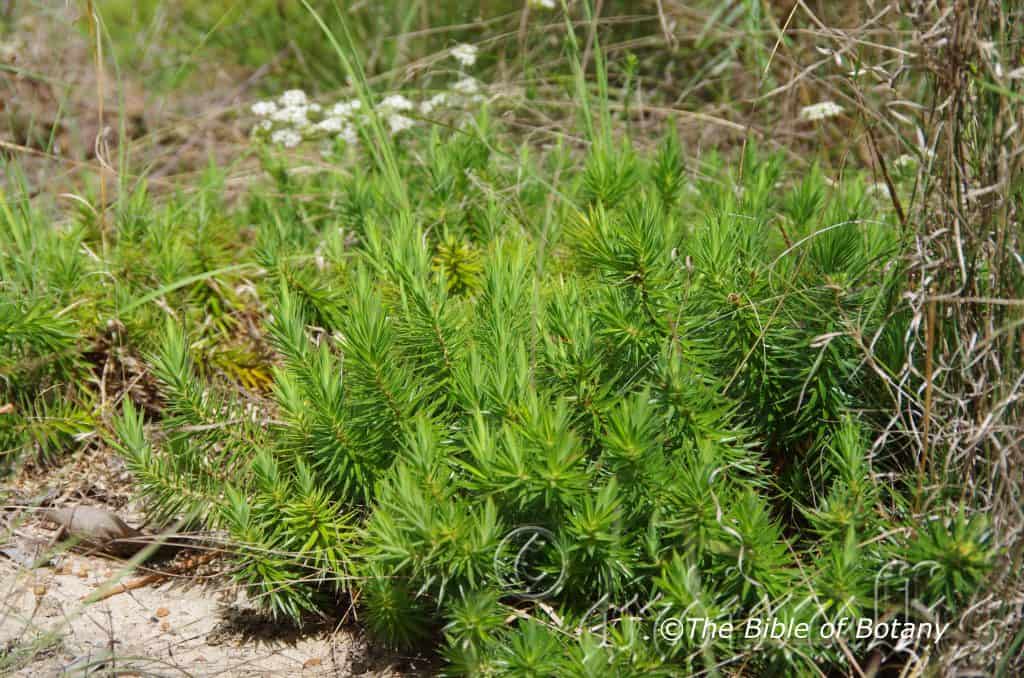
Author’s Garden The Pinnacles NSW

Author’s Garden The Pinnacles NSW
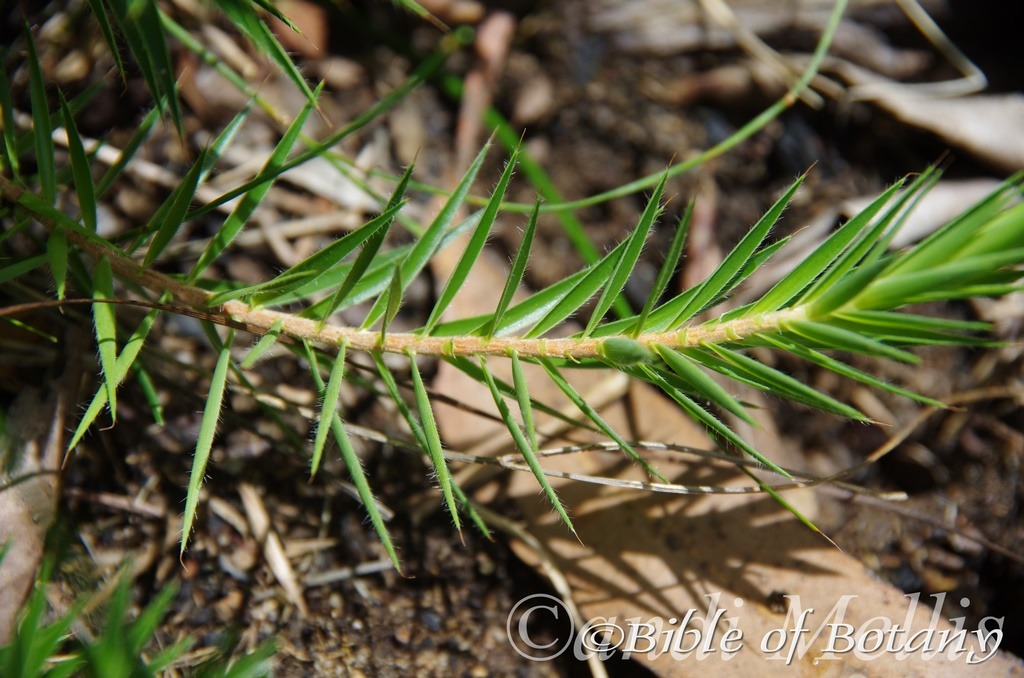
Author’s Garden The Pinnacles NSW
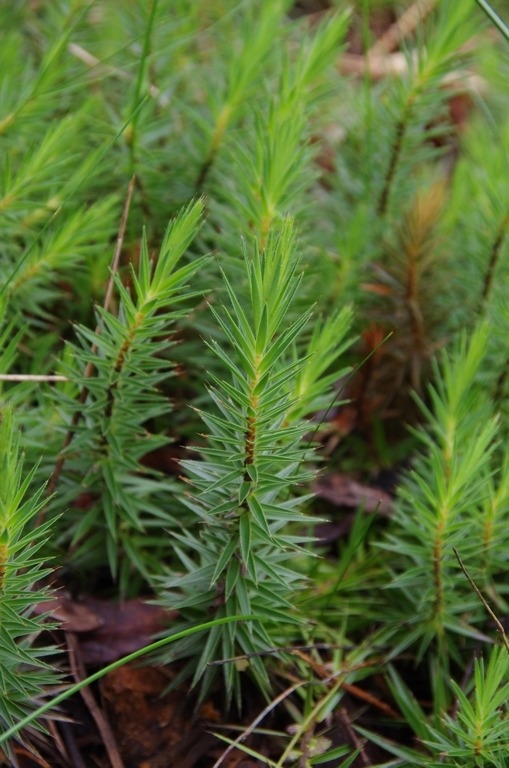
Author’s Garden The Pinnacles NSW
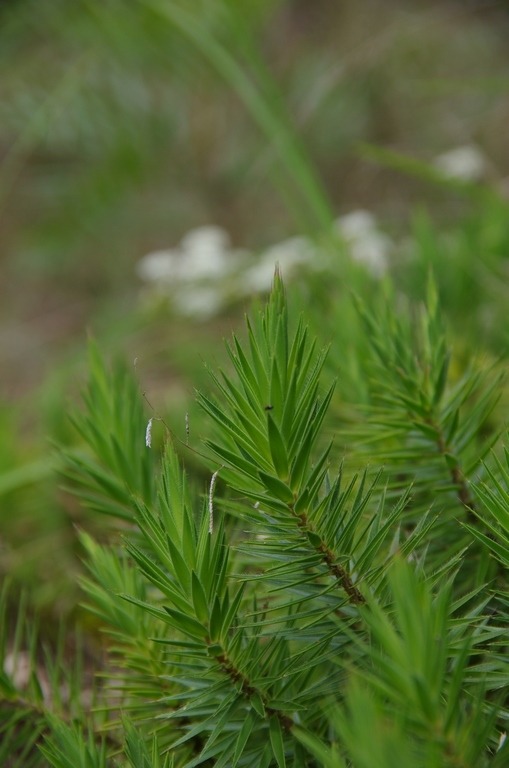
Author’s Garden The Pinnacles NSW
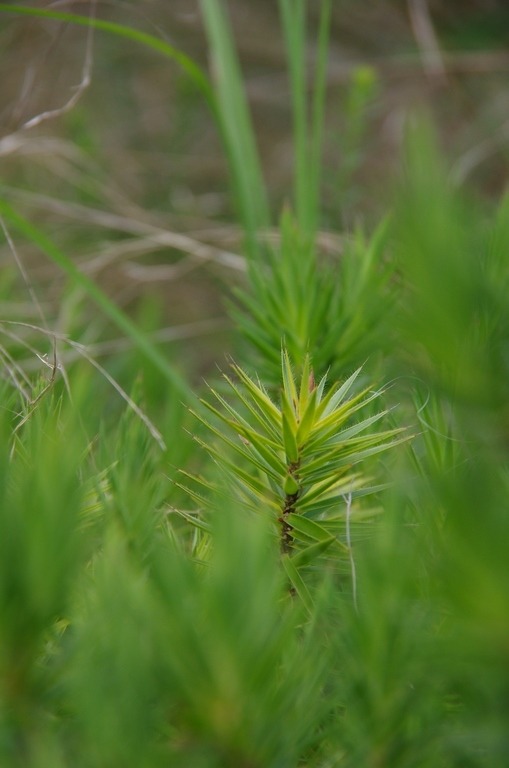
Author’s Garden The Pinnacles NSW
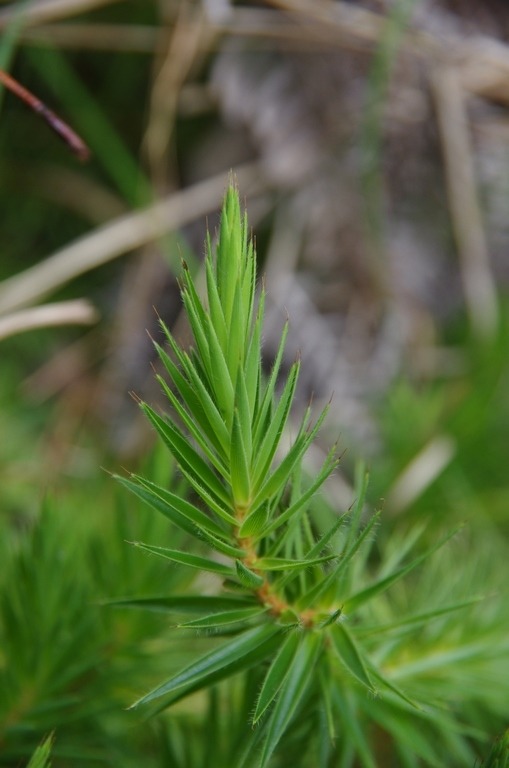
Author’s Garden The Pinnacles NSW
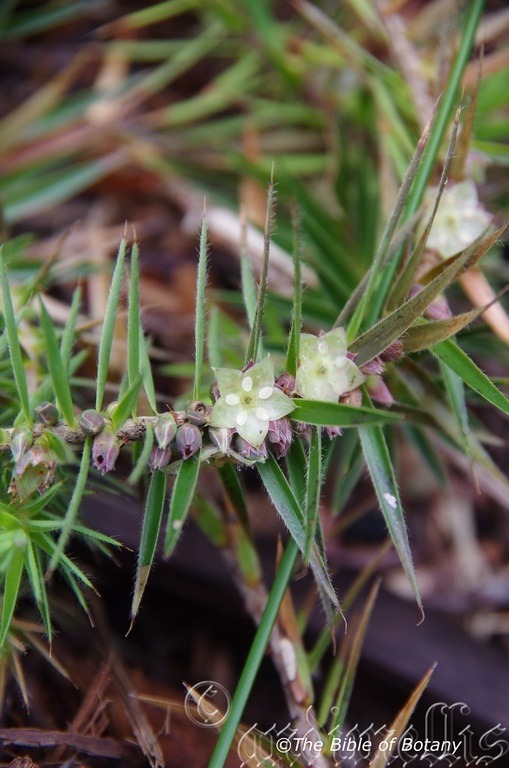
Author’s Garden The Pinnacles NSW
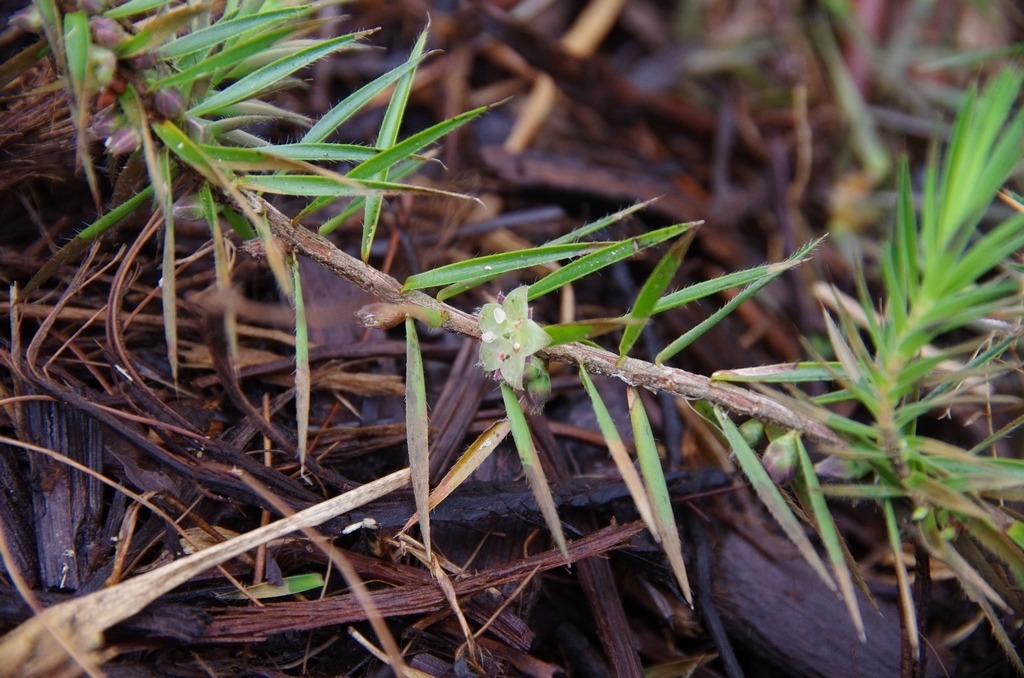
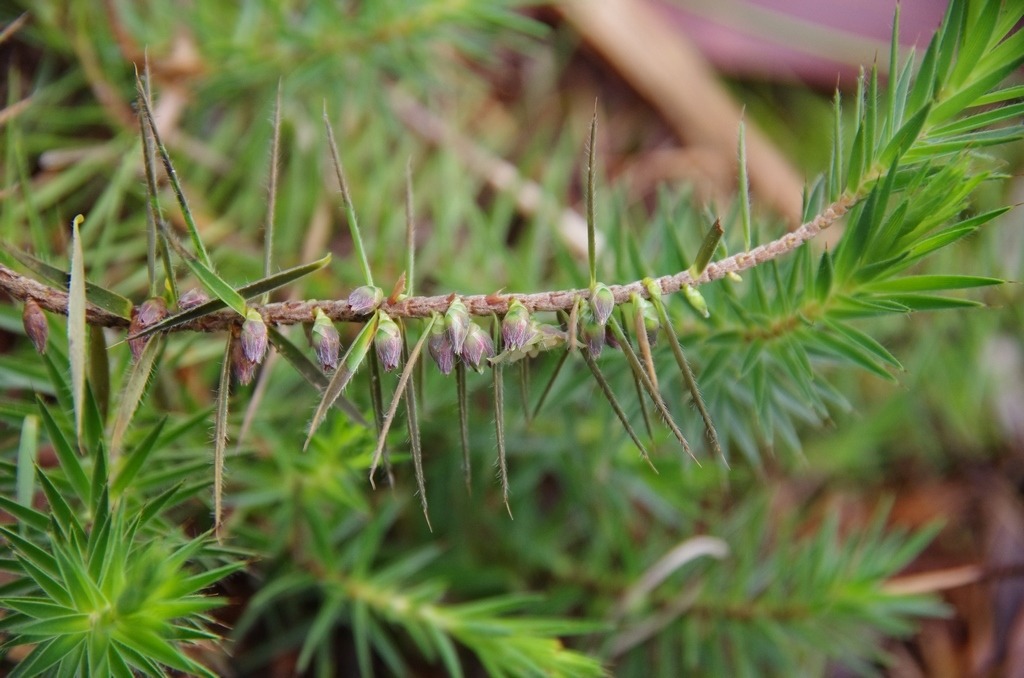
Author’s Garden The Pinnacles NSW
Melichrus procumbens
Classification:
Unranked: Eudicots
Class: Asterids
Order: Ericales
Family: Ericaceae
Subfamily: Styphelioideae
Tribe: Styphelieae
Genus: From Méli/Méllis/Méllissa, which are Ancient Greek for honey, sweet or pleasant or Mellifluus, which is Latin for flowing with honey or the colour of honey and Chrus, which is Ancient Greek for bearing Christ or a cross. It refers to honey or a honey coloured stone, thus seeds that resemble honey coloured stones or marbles.
Specie: From Procumbent, which is Latin for bending forward. It refers to plants, which lay across the ground but do not root easily at the nodes or axis.
Sub species:
Common Name: Jam Tarts.
Distribution:
Melichrus procumbens is found in several disjunct populations. The northern population is bounded by Blackdown Tableands, Carnarvon National Park and Injune. It is also found south from Burrum Heads in coastal southern Queensland to the Endrick Riverine in southern coastal New South Wales. It is found on the Western Slopes, on and east of the Great Dividing Range to the coast
https://avh.ala.org.au/occurrences/search?taxa=Melichrus+procumbens#tab_mapView
Habitat Aspect Climate:
Melichrus procumbens prefers light dappled shade to full shade. It grows dry coastal heaths, dry mountain heaths or dry sclerophyll forests. The altitude ranges from 5 meter ASL to 500 meters ASL.
The temperatures range from minus 4 degrees in August to 40 degrees in January.
The rainfall ranges from lows of 500mm to an average of 2200mm.
Soil Requirements:
Melichrus procumbens prefers to grow on fine sands to light fatty clays. The soils are usually derived from decomposed granites, sandstones or accumulated peaty beach sands. The soils pH ranges from 5pH to 6.5pH. It does not tolerate waterlogged soils. Non saline soils to moderately saline soils are tolerated.
Height & Spread:
Wild Plants: 0.1m to 0.2m by 1m to 1.5m.
Characteristics:
Melichrus procumbens grows as a small procumbent plant that forms dense mats often with ascending stems to 200mm in height. The grey main stems are scabrous. The immature stems are pale grass-green and sparsely covered in white hirsute hairs.
The opposite, appressed leaves are crowded and are usually erect on the apical parts of the stems and divaricate on the lower part of the stems. The petioles measure 0mm to 0.3mm in length. The narrow oblong to broad linear leaves measure 11mm to 28mm by 1.2mm to 4mm in width. The bases are truncate while the apexes are long tapering acute with a long brown 0.7mm to 1mm long spine. The discolourous laminas are deep grass-green, semi glossy to glossy and scabrous and sparsely covered in long and short, white, hirsute hairs on the upper laminas while the lower laminas are bluish-green or paler and moderately covered in white, long and short hirsute hairs. The laminas recurve upwards close to the margins and are straight or decurve slightly on the apical third. The hyaline margins are entire and covered in long and short white ciliate hairs. There are also 10 to 14 paler, prominent parallel veins on the lower laminas.
The inflorescence hirsutus are born singularly from the leaf axils on the underside of the stems. The pale grass-green bracts and bracteoles are broadly ovate to broad acute and measure 3mm to 5.5mm in length. The pastel green sepals are often brownish or pinkish at the apexes. The sepals are elliptical with acute apexes and glabrous or sparsely covered in white hirsute hairs. The sepals measure 5mm to 7.5mm in length. The corolla and lobes are pastel creamy-yellow to pastel green and tinged pink. The saucer shape corolla tubes measure 2mm to 2.5mm in length while the divaricate lobes measure 3mm to 3.5mm in length.
The 5 stamens are inserted. The filaments measure 0.5mm to 1mm in length while the anthers measure 1.5mm to 1.7mm in length. The honey coloured ovary is glabrous. The pastel bluish-grey style is inserted. The flowers appear from the beginning of July to September.
The fruits are small, depressed, globose berries. The green tinged red berries turn red and are smooth and glabrous. The berries measure 2mm to 4.5mm in length by 2.5mm to 5.5mm in diameter.
Wildlife:
Melichrus procumbens’s flowers are visited by a number of ant species. The fruits are probably distributed by birds or small mammals.
Cultivation:
Melichrus procumbens is a straggly small shrub for sub-tropical to temperate gardens. They have a place in bush gardens and rockeries where the soil is dry and neglected. It needs to be mulched and the soil moisture needs to be kept at an even level to help improve bushiness.
They can be lightly tipped after a year to assist in a more compact plant.
It looks particularly stunning placed amongst large boulders and rocks or massed planted with other pink or red flowering Epacris specie.
Melichrus adpressus add interesting foliage and colour to a heath garden or semi arid moist rockery. When you design a flat heath garden which Melichrus adpressus is well suited but do not over crowd it. Don’t use contours to display the plants as heath lands are almost always flat or have a slight rise. Plants must be planted close together and be short so you can see over the tallest ones with the exception of one or two plants at the most. These will be feature plants. The idea is to achieve a feeling of expansive flatness. This can be achieved with using the Melichrus adpressus’s leaves and having them contrasting broad deep green or soft grey to glaucous coloured foliage.
Another method is to use a lot of procumbent plants like Carpobrotus edulis or Hibertia specie. Mix them with other smaller shrubs so none of them dominate the scene and none of them are over 300mm in height and blend to give a mosaic of foliage colours that you oversee. Here I immediately think of Actinotis helianthi, Grevillea masonii or Grevillea paradoxa for three great contrasting foliage. This allows the sparseness of the lower stems to be filled with colour and the upper stems of Melichrus adpressus will appear over the top through the mosaic of colour from below displaying off their stems and creamy flowers in winter.
Propagation:
Seeds: Melichrus procumbens seeds can be sown into a seed raising mix without treatment in spring or summer. Cover them in 2mm of fine sand. Place the trays in a sunny warm position and keep moist. When the seedlings are 25mm to 50mm tall, prick them out and plant them into 50mm native tubes using a good organic mix.
Once the seedlings reach 150mm to 200mm in height prick the growing tips out and plant them out into their permanent position. For mass plantings plant them at 0.5 meters to 1 meter centers.
Cuttings:
The seeds are difficult to collect cuttings maybe the best method for propagating. Select material from good flowering specimens or those with a better growth habit, plants with larger flowers, those that have the colour you desire or the leaves and habit you that you want to foster. It is not an easy plant to grow from cutting so be prepared for some failures.
Successful results are have been attained with using 30mm fine gravel, 30mm peat and 40mm coconut fibre however the results are still erratic and percentages still low. The usual method of propagating is by using cuttings of the current season’s growth. Like most Ericaceae, the roots are very fine and easily damaged during transplanting.
Cuttings are probably best placed into individual small pots or native tubes even resorting to small peat pots or paper cups to minimize root disturbance.
Use 100mm to 250mm cuttings. Remove half the leaves from the bottom section being careful not to tear the bark.
1 Prepare the cutting mix; if you are not using peat pots, by adding one third sharp clean river sand, one third peat and one third perlite. These ingredients are sterilize,
2 Select good material from non diseased plants,
3 Select semi green stems for cuttings. Look for a stem with two or three nodes,
4 Place the cutting on a flat, hard surface, and make a clean cut down one side of the cutting at the base for 10mm with a sharp sterile knife or razor blade. – This scarification of the node will increase the chances of roots emerging from this spot. Now remove all but one or two the leaves, leaving the apex leaves in tact. If the leaves are very large in proportion to the stem, cut off the apical halves.
5 Fill a saucer with water, and place a little medium strength rooting hormone into another container like a milk bottle top. Dip the node end of the cutting into the water and then into the rooting hormone. Tap off any excess hormone,
6 Use a small dipple stick or old pencil to poke a hole into the soilless potting mix. Ensure the hole is slightly larger than the stem diameter and be careful not to wipe the rooting hormone off the cuttings base, place the cuttings in a pattern ensuring the cuttings are not touching each other,
7 I like to place the pots in Plastic bags to help maintain temperature and moisture. Place in a semi shaded place like under 50mm shade cloth.
8 When the cuttings have struck, open the bag to allow air circulation for a few days to a week,
9 Once hardened off remove the cuttings from the bag and allow to further hardening for a few more days,
10 Transplant into a good potting mix to grow on.
Fertilize using seaweed, fish emulsion or organic chicken pellets soaked in water on an alternate basis. Fertilize every two months until the plants are established then twice annually in early September or March to maintain health, vitality and better flowering.
Further Comments from Readers:
Hi reader, it seems you use The Bible of Botany a lot. That’s great as we have great pleasure in bringing it to you! It’s a little awkward for us to ask, but our first aim is to purchase land approximately 1,600 hectares to link several parcels of N.P. into one at The Pinnacles NSW Australia, but we need your help. We’re not salespeople. We’re amateur botanists who have dedicated over 30 years to saving the environment in a practical way. We depend on donations to reach our goal. If you donate just $5, the price of your coffee this Sunday, We can help to keep the planet alive in a real way and continue to bring you regular updates and features on Australian plants all in one Botanical Bible. Any support is greatly appreciated. Thank you.
In the spirit of reconciliation we acknowledge the Bundjalung, Gumbaynggirr and Yaegl and all aboriginal nations throughout Australia and their connections to land, sea and community. We pay our respect to their Elders past, present and future for the pleasures we have gained.
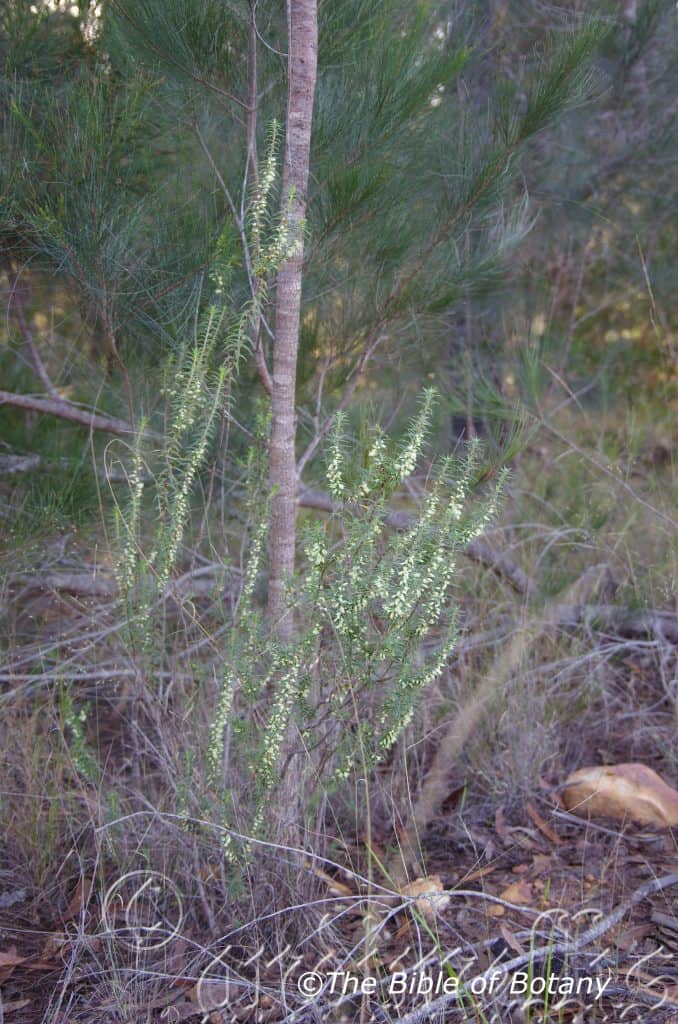
The Pinnacles NSW

The Pinnacles NSW

The Pinnacles NSW
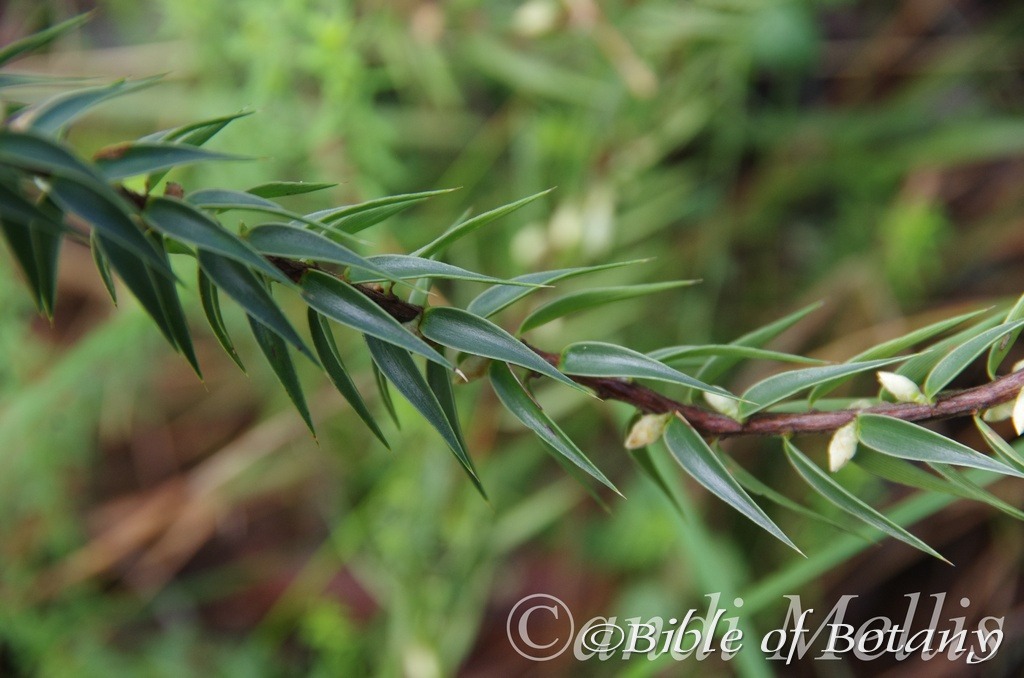
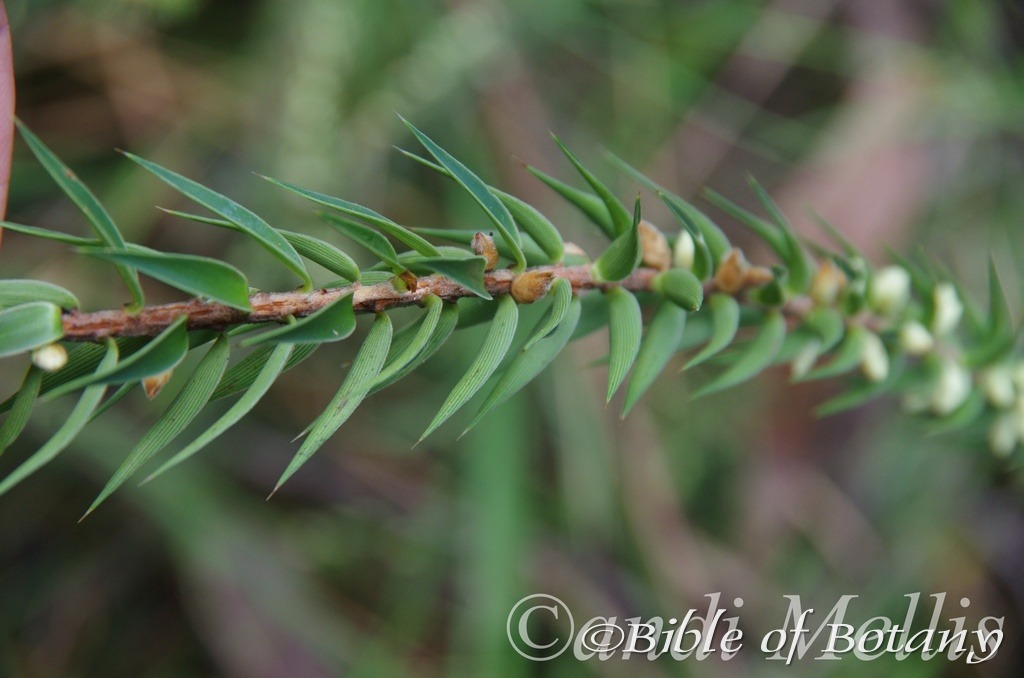
The Pinnacles NSW
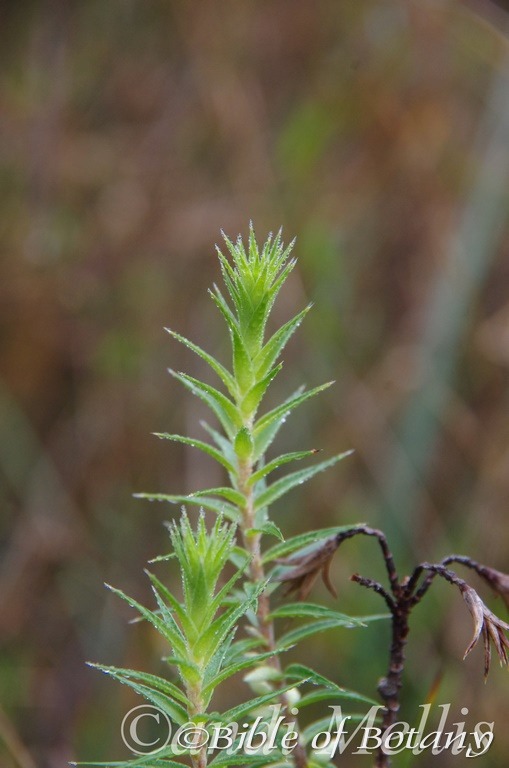
The Pinnacles NSW
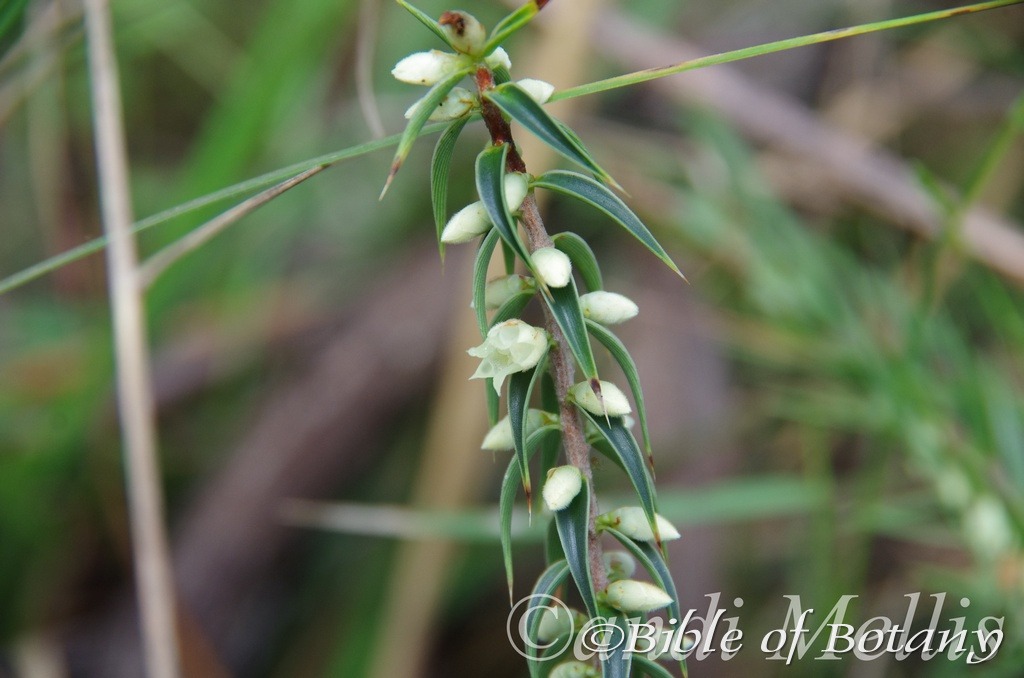
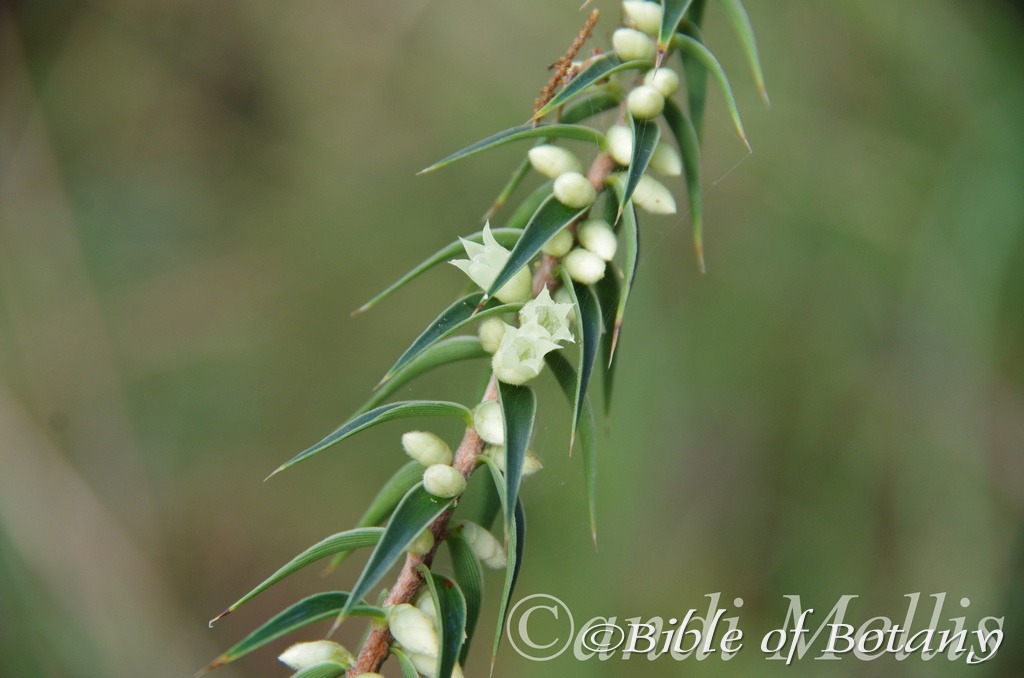
The Pinnacles NSW
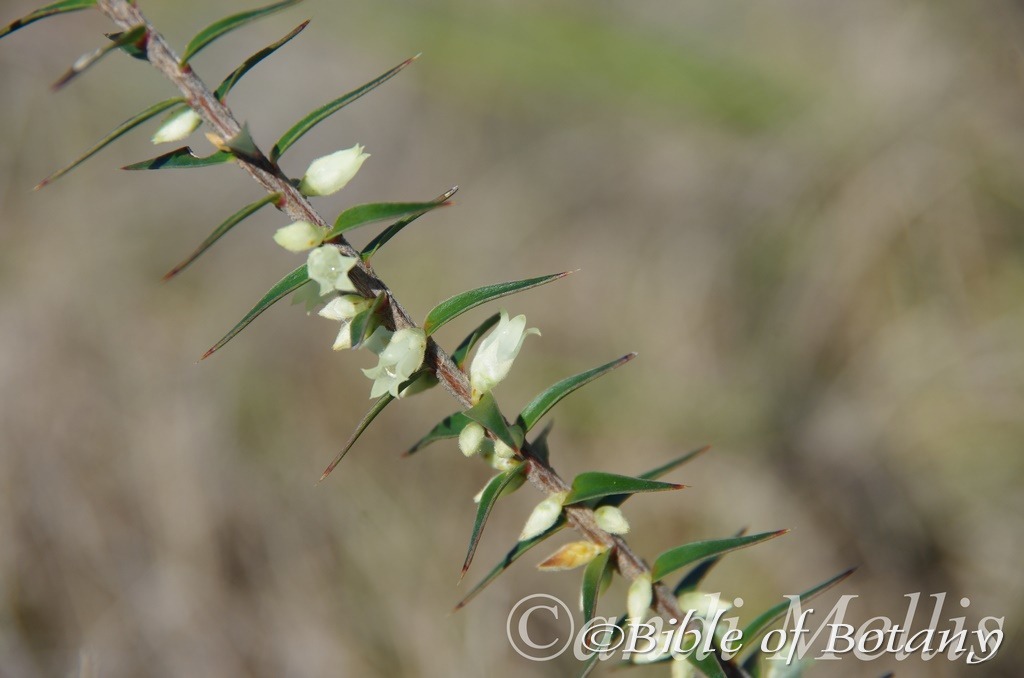
The Pinnacles NSW
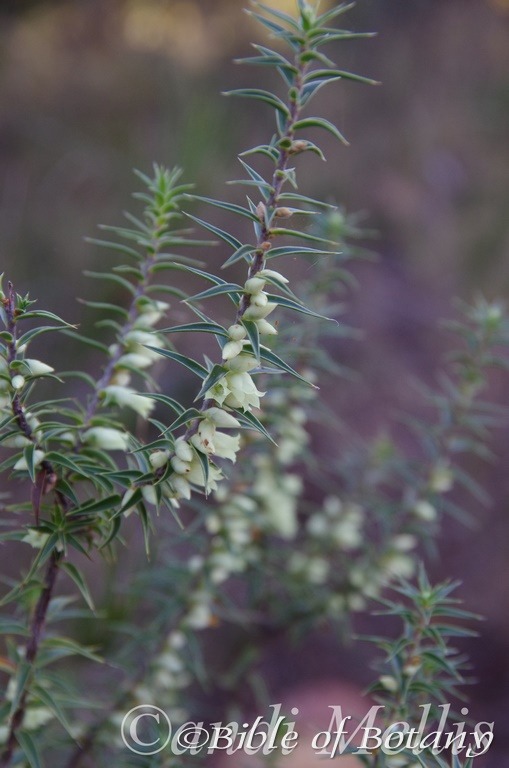
The Pinnacles NSW

The Pinnacles NSW
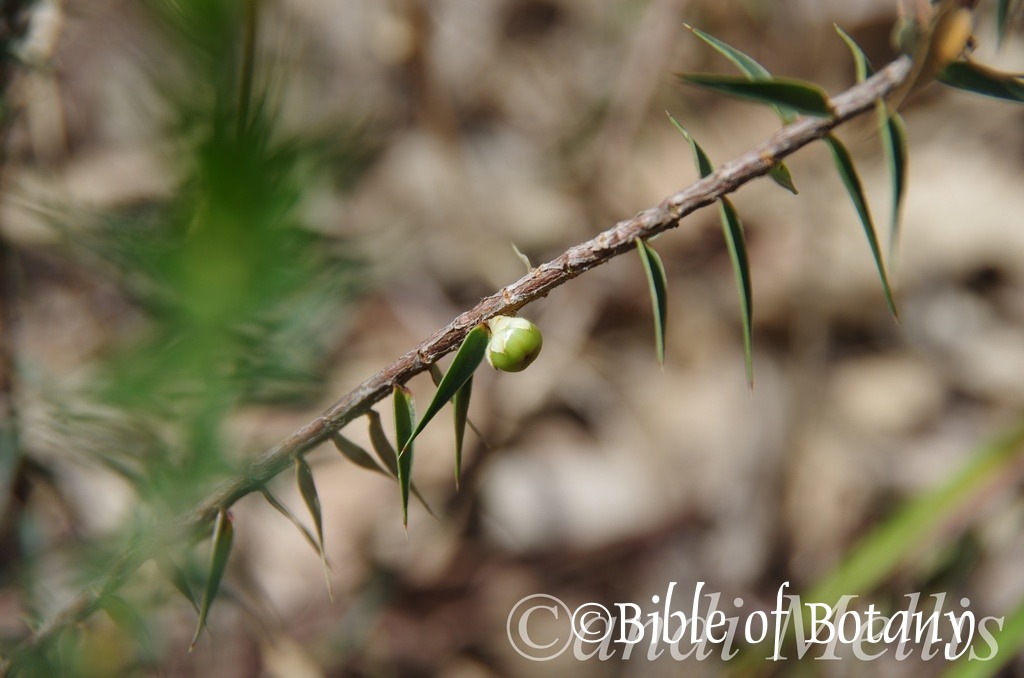
Ramournie National Park NSW
Melichrus urceolatus
Classification:
Unranked: Eudicots
Class: Asterids
Order: Ericales
Family: Ericaceae
Subfamily: Styphelioideae
Tribe: Styphelieae
Genus: From Meli, which is Ancient Greek for honey. It refers to a honey coloured stone, thus seeds that resemble honey coloured stones or marbles.
Specie: From Urceolus, which is Latin for a small pitcher or pot. It refers to flowers, or fruits which have a distinct urn shape.
Sub species:
Common Name: Urn Heath.
Distribution:
Melichrus urceolatus is found south from the Windsor Tablelands in far north eastern Queensland to Stalwell in southern western Victoria and Honeysuckle Range in southern eastern Victoria.
There is an isolated population further north on the Lockhart River.
https://avh.ala.org.au/occurrences/search?taxa=Melichrus+urceolatus#tab_mapView
Habitat Aspect Climate:
Melichrus urceolatus prefers light dappled shade to full shade. It grows in dry sclerophyll forest, in open Callitris woodlands or open Acacia scrub forests. The altitude ranges from 20 meters ASL to 950 meters ASL.
The temperatures range from minus 1degrees in August to 40 degrees in January.
The rainfall ranges from lows of 500mm to an average of 3200mm.
Soil Requirements:
Melichrus urceolatus prefers to grow on fine sands to medium clays including cluggy podzolic loams. The soils are usually derived from decomposed sandstones, granites, brown basalts, black basalts, metamorphic rocks conglomerates or shale. The soils pH ranges from 4.5pH to 7pH. It does not tolerate waterlogged soils. Non saline soils to moderately saline soils are tolerated.
Height & Spread:
Wild Plants: 0.2m to 1.5m by 0.3m to 1m.
Characteristics:
It grows as a multi stemmed, small shrub with grey, scabrous, erect stems. The immature stems are grass-green and glabrous. The plants produce an underground lignotuber.
The alternate leaves are crowded near the apex and are divaricate along the stems. The pale yellow-green, glabrous petioles measure 0.5mm to 1mm in length and at times are partially clasping. The broad linear to narrow lanceolate leaves measure 6mm to 25mm in length by 1.6mm to 6.2mm in width. The bases are truncate or taper slightly to the broad flattened petioles while the apexes are narrow acute with a brittle brown 0.5mm to 1mm long spine. The concolourous or discolourous laminas are deep green, semi glossy to glossy and glabrous to scabrous on the upper laminas while the lower laminas are similar or slightly paler. The laminas curve upwards 90 degrees from the midvein to the margins and gently decurve downwards from the base to the apex. The narrow, hyaline margins are densely covered in very fine teeth. There are 6 to 12 longitudinal ribs on the lower surface.
The inflorescence are born singularly from the leaf axils and measure 7mm to 9.5mm in length by 3mm to 4mm in diameter. The white, cream to pastel yellow-green bracts and bracteoles are broadly ovate to almost deltoid. The apexes are obtuse to broad acute. The glabrous bracts and bracteoles measure 2.5mm to 3mm in length.
The 5 white, cream to pastel yellow-green, ovate to broad lanceolate sepal’s apexes are acute. The sepals are glabrous or sparsely covered in soft, white sericeous hairs and measure 5mm to 7mm in length by 3.5mm to 4mm in width. The corolla and 5 lobes are white, cream to pastel yellow-green. The narrow urceolate corolla tubes are glabrous externally and are sparsely covered in soft, long, white hirsute hairs internally near the throat. The corolla tubes measure 4mm to 5mm in length while the erect lobes gently recurve near their apexes measure 2mm to 3.5mm in length.
The 5 stamens are inserted and measure 0.3mm to 0.5mm in length while the anthers measure 1.2mm to 1.5mm in length. The honey coloured 4 locular ovary is glabrous. The pastel yellow-green style is inserted. The flowers appear from March to November.
The fruits are depressed globose berries. The green berries turn white to pale purplish-brown when ripe. The berries measure 4mm to 6mm in length by 4.5mm to 7mm in diameter. The single spherical seed is pastel fawnish and measure 3mm to 5mm in diameter.
Wildlife:
Melichrus urceolatus flowers are visited by a number of butterflies, pollen flies and wasps. The flowers also attract the small Silver Eyes (Zosterops lateralis) as do the fruits. Other small honeyeaters probably also eat the fruits and visit the flowers.
Cultivation:
Melichrus urceolatus makes an attractive small shrub for sub-tropical to temperate gardens. It has a place in bush gardens and rockeries where the soil is dry and neglected. It needs to be mulched and the soil moisture needs to be kept at an even level to help improve bushiness. In cultivation it usually grows from 0.8 meters to 1.2 meters in height by 0.8 meters to 1.2 meters in diameter when grown in the open.
It can be lightly tipped after a year to assist in a more compact plant.
Melichrus urceolatus adds an interesting foliage and colour to a heath garden. When you design a flat heath garden which Melichrus urceolatus is well suited but do not over crowd it. Don’t use contours to display the plants as heath lands are almost always flat or have a slight rise. Plants must be planted close together and be short so you can see over the tallest ones with the exception of one or two plants at the most. These will be feature plants. The idea is to achieve a feeling of expansive flatness. This can be achieved with using the leaves and having them contrasting broad deep green or soft grey to glaucous coloured foliages.
Another method is to use a lot of procumbent plants like Carpobrotus edulis or Hibertia linearis. Mix them with other smaller shrubs so none of them dominate the scene and none of them are over 300mm in height and blend to give a mosaic of foliage colours that you oversee. Here I immediately think of Actinotis helianthi Grevillea masonii or Grevillea paradoxa for three great contrasting foliages.
Propagation:
Seeds: Melichrus urceolatus seeds can be sown into a seed raising mix without treatment in spring or summer. Cover them in 2mm of fine sand. Place the trays in a sunny warm position and keep moist. When the seedlings are 25mm to 50mm tall, prick them out and plant them into 50mm native tubes using a good organic mix.
Once the seedlings reach 150mm to 200mm in height prick the growing tips out and plant them out into their permanent position. For mass plantings plant them at 0.5 meters to 1 meter centers.
Cuttings: As Melichrus urceolatus seeds are difficult to collect cuttings maybe the best method for propagating. Select material from good flowering specimens or those with a better growth habit, plants with larger flowers, those that have the colour you desire or the leaves and habit you that you want to foster.
Successful results are have been attained with using 30mm fine gravel, 30mm peat and 40mm coconut fibre however the results are still erratic and percentages still low. The usual method of propagating is by using cuttings of the current season’s growth. Like most Epacriceae, the roots are very fine and easily damaged during transplanting.
Cuttings are probably best placed into individual small pots or tubes even resorting to peat pots to minimize root disturbance.
Use 70mm to 80mm long half ripened material from the present season’s growth when growing from cuttings. Take them in mid autumn where frosts are not a problem or early spring where the day temperatures do not exceed 28 degrees. Remove half the leaves from the bottom section being careful not to tear the bark. Take a 10mm slice off the bark from the bottom of the cutting on one side. Using a medium to strong rooting hormone, dip the cutting in and place it in a moist sterile seed raising mix using a dipple stick. Place 2 or 3 cuttings in 25mm tubes. When the cuttings have obviously struck and have developed good roots; which is about 8 months gently replant them into 150mm pots or place them into their permanent positions in the garden. The fewer times you repot the better as Epacris longiflora develop a very fine fragile root system and resent repotting and handling.
Fertilize using seaweed, fish emulsion or organic chicken pellets soaked in water on an alternate basis. Fertilize every two months until the plants are established then twice annually in early September or March to maintain health, vitality and better flowering.
Further Comments from Readers:
Hi reader, it seems you use The Bible of Botany a lot. That’s great as we have great pleasure in bringing it to you! It’s a little awkward for us to ask, but our first aim is to purchase land approximately 1,600 hectares to link several parcels of N.P. into one at The Pinnacles NSW Australia, but we need your help. We’re not salespeople. We’re amateur botanists who have dedicated over 30 years to saving the environment in a practical way. We depend on donations to reach our goal. If you donate just $5, the price of your coffee this Sunday, We can help to keep the planet alive in a real way and continue to bring you regular updates and features on Australian plants all in one Botanical Bible. Any support is greatly appreciated. Thank you.
In the spirit of reconciliation we acknowledge the Bundjalung, Gumbaynggirr and Yaegl and all aboriginal nations throughout Australia and their connections to land, sea and community. We pay our respect to their Elders past, present and future for the pleasures we have gained.
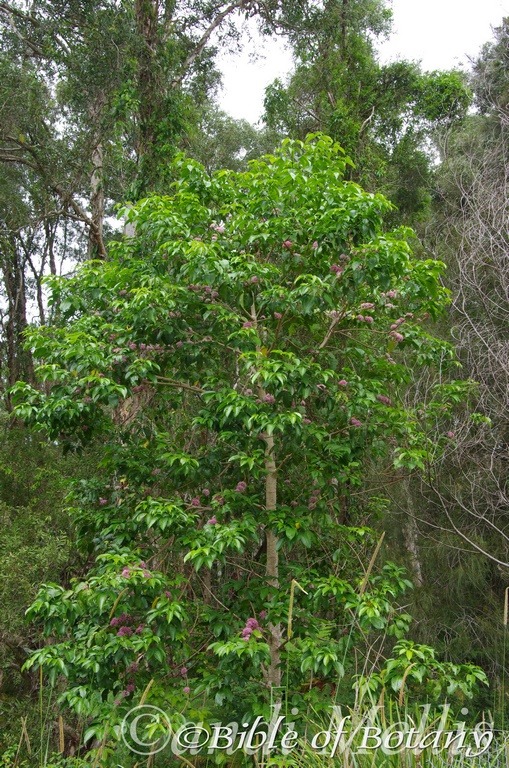
Ballina NSW

Ballina NSW
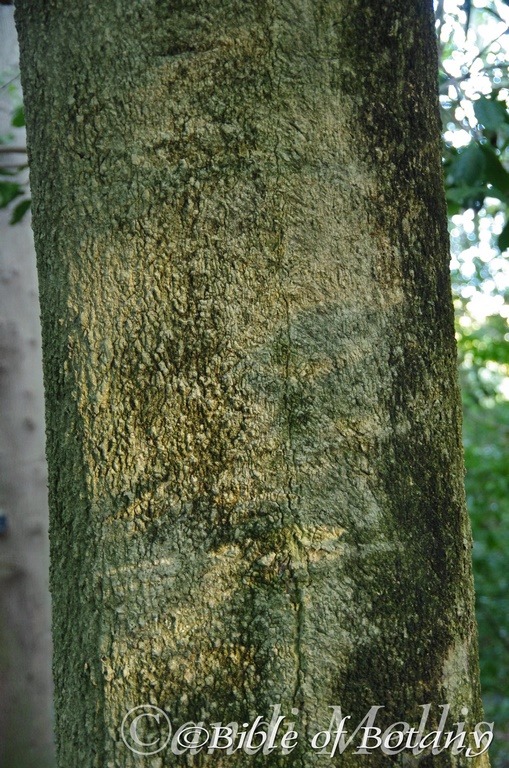
Mount Cootha Botanic Gardens Qld.
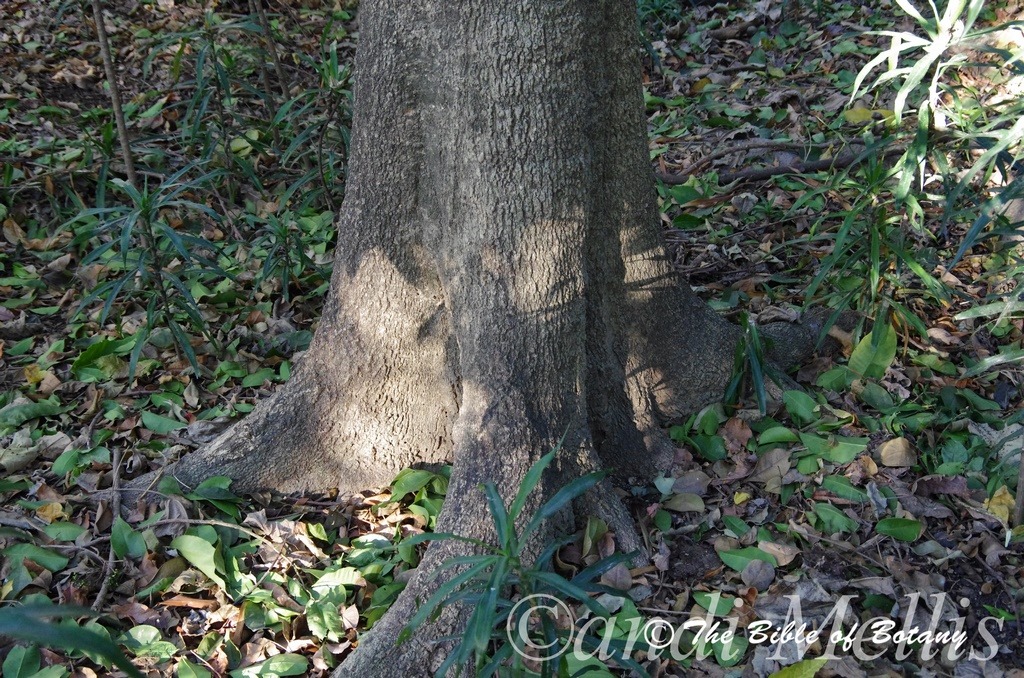
Mount Cootha Botanic Gardens Qld.
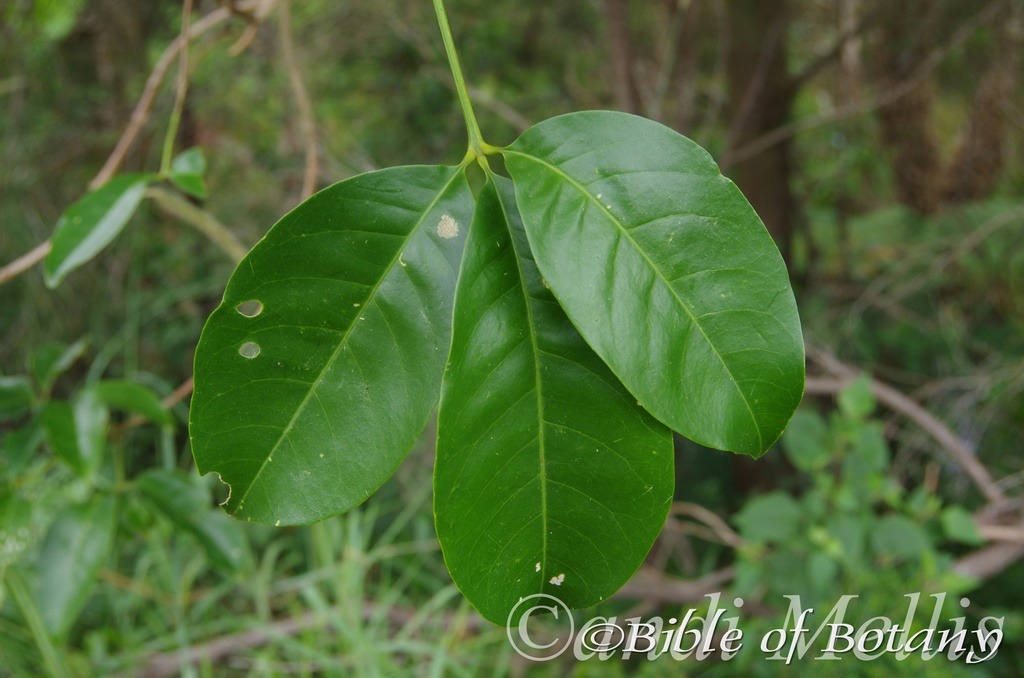
Ballina NSW
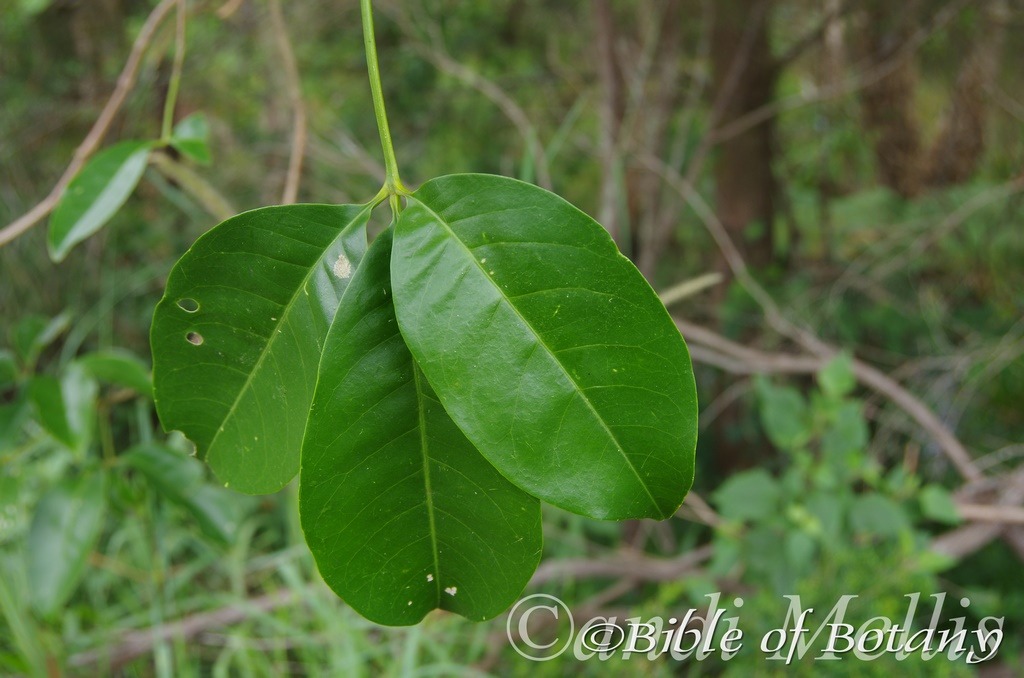
Ballina NSW
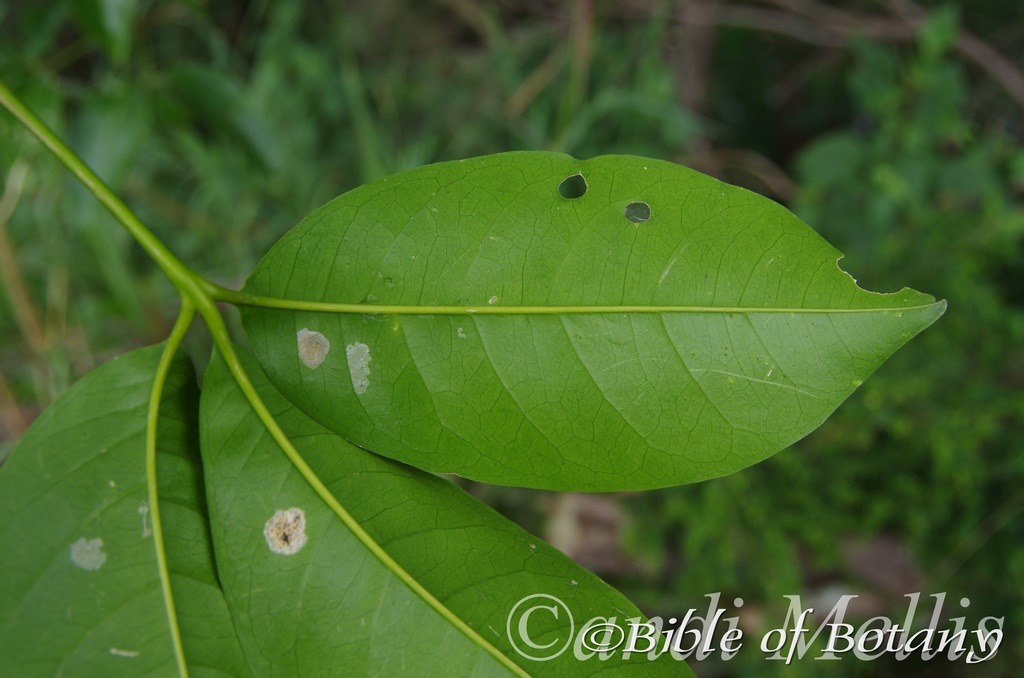
Ballina NSW
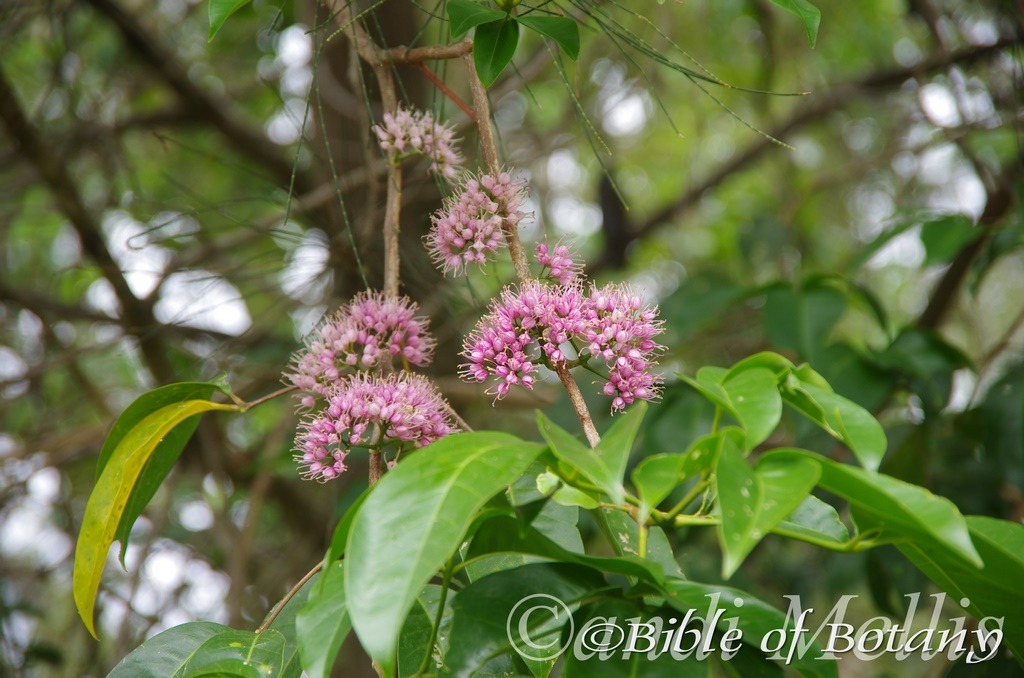
Ballina NSW
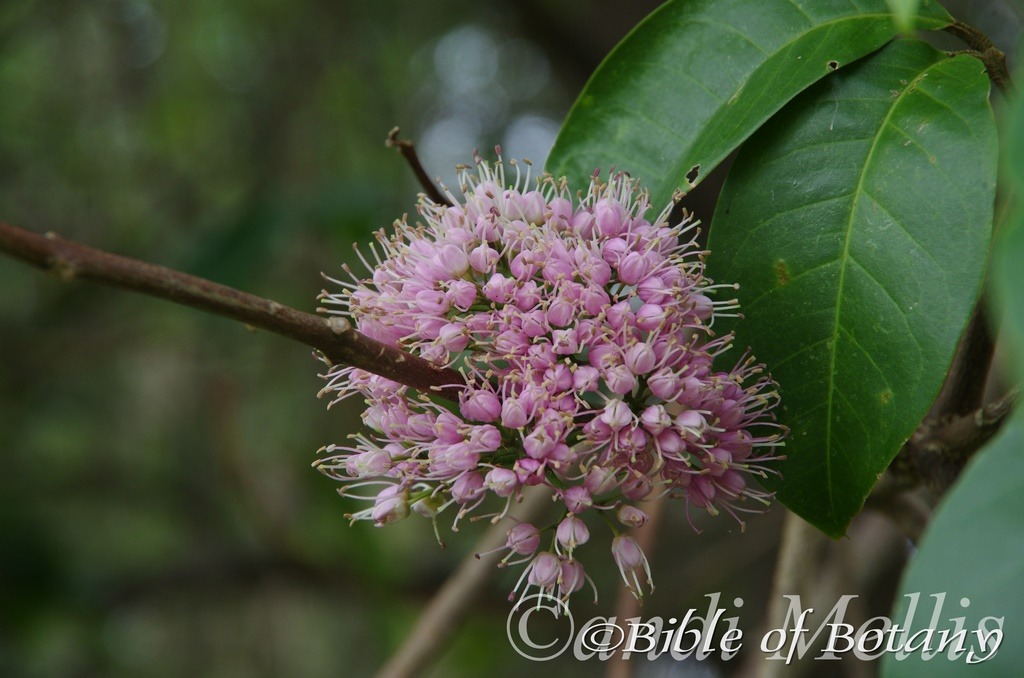
Ballina NSW
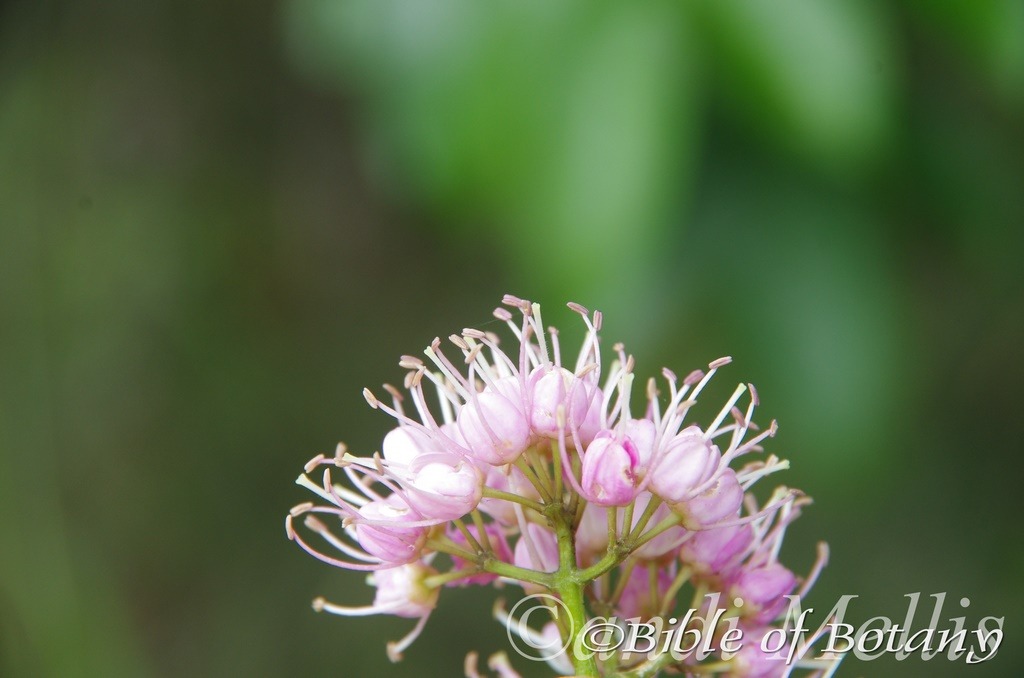
Ballina NSW
Melicope elleryana
Classification:
Unranked: Eudicots
Unranked: Rosids
Class: Sub Class
Order: Sapindales
Family: Rutaceae
Genus: From Méli/Méllis/Méllissa, which are Ancient Greek for honey, sweet or pleasant or Mellifluus, which is Latin for flowing with honey or the colour of honey and Kope which is Ancient Greek for a division. It refers to the four large glands, which divide the Ovaries into four sections.
Specie: Is named in honour of Robert Lewis John Ellery; 1827-1908, who was an English born Australian astronomer and public servant who served as Victorian government astronomer for 42 years.
Sub species:
Common Name: Pink Flowering Doughwood or Pink Flowering Evodia or Saruwa.
Distribution:
Melicope elleryana it is found across the northern fifth of the Northern Territory with a disjunct population on the Victoria River.
There is an outlying population around Broome in north eastern Western Australia.
In the east it is found south from the tip of Cape York Peninsula and the Torres Strait Islands in far north eastern Queensland along the coast, adjacent ranges and coastal Islands to the Clarence River in northern eastern New South Wales.
https://avh.ala.org.au/occurrences/search?taxa=Melicope+elleryana#tab_mapView
Habitat Aspect Climate:
Melicope elleryana prefers light dappled shade to full shade. It grows in well-developed rainforests, warm tropical, sub-tropical rainforests or monsoonal forests. The altitude ranges from 15 meter ASL to 800 meters ASL.
The temperatures range from 3 degrees in August to 40 degrees in January.
The rainfall ranges from lows of 800mm to an average of 3200mm. Near Broom the rainfall is 400mm to 800mm so I assume the plants are growing along the river where the soils are continually moist from capillary action.
Soil Requirements:
Melicope elleryana prefers better quality fine sands, heavy clays, light silts to heavy silts. The soils are usually derived from accumulated sandstone laterites or shale deposited as alluvial flats. The soils pH ranges from 5.5pH to 7pH. It does not tolerate waterlogged soils. Non saline soils to very saline soils are tolerated as are salt laden winds.
Height & Spread:
Wild Plants: 15m to 25m by 10m to 18m.
Characteristics:
Melicope elleryana’s main trunk and branches are white to pale grey, fluted, thick and corky. The bole of the trunk is about a third to a quarter the height on a mature tree. The branchlets stems are grey, corky and scabrous. The leaf scars from old leaves are distinctly visible towards the ends of the branchlets. Immature stems deep green, glabrous, semi glossy with a deep groove along the upper surface. The trunk and larger branches are often mottled in green and blue greens of mosses and lichens which will grow there. The trunk is flanged especially near the base even on small trees.
Melicope elleryana’s opposite leaves are tripinate and measure 90mm to 180mm by 100mm to 200mm in width. The leaflets are ovate-elliptical, elliptical to obovate and measure 80mm to 200mm in length by 35mm to 75mm in width. The middle leaflet is the longer than the 2 lateral leaflets. The base is cuneate while the apex is broadly acuminate to obtuse. The concolourous laminas are symmetrical to slightly asymmetrical, deep grass-green, semi glossy and glabrous or sparsely covered in short white hirtelleus hairs. The margins are entire, while the lamina curves upwards from the mid vein. The mid vein is strongly prominent on the lower lamina and is distinctly visible on the upper lamina being paler than the lamina. The petiole and petiolules are grooved above and are glabrous to sparsely covered in short white hirtellus hairs. The petioles measure 30mm to 110mm in length while the petiolules measure 3mm to 10mm in length. The middle petiole is longer than the 2 lateral petioles. Crushed leaves have a slightly sweet koala scent. The leaves turn bright yellow when they fall from the tree.
The inflorescence of Melicope elleryana is a dense pannicle born from the lower leaf axils and along the branches on the corky sections. There are 78 to 120 flowers in a pannicle. The panicles measure 40mm to 55mm in length by 80mm to 110mm diameter. The peduncle measures 20mm to 30mm in length while the peduncules measure 15mm to 20mm in length and the pedicels measure 4mm to 6mm in length. The 4 semi ovate calyx lobes are glabrous, green and measure 1.5mm to 2mm in length. The 4 pale pink to deep pink oblong petals have a broadly acute apex and measure 5mm to 6.5mm in length by 4mm to 5mm in width. The petals never fully open instead split and remain almost closed. It is glabrous externally and are sparsely covered in white pubescent hairs internally.
The 4 white stamens are glabrous and measure 10mm to 15mm in length. They emerge from the slits between the petals. The maroon or yellow oblong anthers measure 0.5mm to 1mm in length.
The single, glabrous, white style has a white stigma and measures 6mm to 8mm in length. The yellow-green disc is continuous and surrounds the glabrous ovary. The 4 locule ovary and disc are sparsely covered in white puberulent hairs. The sweetly scented flowers appear from mid November right through to early April.
Melicope elleryana’s fruit is 3 or 4 ovoid chambered cocci. The cocci are glaucous, green and turns creamy fawn on ripening. The individual cocci measure 5mm to 8mm in length by 3mm to 6mm in diameter. The 3 or 4 round seeds are black, glabrous and glossy measure 2mm to 3mm in diameter. The aril completely surrounds the small black seeds.
Wildlife:
Melicope elleryana’s flowers are visited by over 20 different specie of butterflies, plus beetles, wasps and native bees.
The leaves are the main food source for the Ulysses butterfly, Papilio ulysses in northern Queensland. Because the flowers attract so many insects the trees it is a favourite haunt for many small insectivorous birds like Robins, Thornbills, Warblers and even honeyeaters during the breeding season who feed their young mainly on insects for protein. The sticky seeds are spread by pigeons that eat the seeds. What seeds are not eaten stick to the bird’s feathers and are deposited away from the parent tree for germination.
Cultivation:
This is another beautiful native small tree which could be grown in any home garden. The deeper coloured flowers certainly would rival the floral emblems of many shire or city councils.
Melicope elleryana makes an excellent shade tree for understory shrubs that prefer light filtered light. It always looks green and fresh especially where adequate ground moisture is retained in the soil. It is very suitable on sandy to heavy clay soils and are most suitable for small medium and large gardens close to the coast in warm temperate, sub-tropical or tropical gardens. As a garden subject it will grow from 8 meters to 12 meters in height by 7 meters to 9 meters diameter when grown in the open.
It is cold tolerant to temperatures as low as minus 2 degrees once established.
Despite having an open habit of growth itis best used as a small park tree, placed in the background or planted centrally as a small feature tree in smaller gardens. Placed at the rear of a bush garden its striking display of flowers on the branches and stems with its perfume will draw your attention so that you will want to investigate further. Plants with small white, pink or lavender flowers and large leaves can be used in the midground while small white, pink or mauve flowering prostrate shrubs are best in the front. The various Coleus species all do very well beneath the trees including Coleus graveolens, Coleus torrenticola, Coleus habrophyllum and Coleus graniticus to mention a few.
Placed on the edge of a rainforest garden it will develop quickly. The trees are suitable for all orchids and epiphytic ferns especially those that prefer brighter conditions. In a rainforest situation it will also support many different varieties of lichens and mosses.
Placed adjacent to an outdoor BBQue; as a single feature tree, it will grow unobtrusively but will definitely be noticed when in flower.
Propagation:
Seeds: Melicope elleryana seeds need to be treated before sowing to assist in more even germination. Seeds need to be placed in a small calico bag or sock. Place this in with the weekly washing cycle. Allow to dry and repeat the following week. Now place the seeds in a glass of water which has had a pinch of bi carb of soda added. Let them soak for 24 hours. Change the water and add half a tea spoon of vinegar to the water and allow them to soak for 24 hours. Rinse the seeds. Now the seeds can be sown into a seed raising mix. Cover the seeds with 2mm to 3mm of fine weed free mulch and keep moist. Place the tray in a warm sunny position. When the seedlings are 30mm to 50mm tall, prick them out and plant them into 50mm native tubes using a good organic mix. Despite the above techniques germination is still erratic and slow.
Once the seedlings reach 100mm to 150mm in height they can be planted out into their permanent position.
Fertilize using seaweed, fish emulsion or organic chicken pellets soaked in water on an alternate basis. Fertilize every two months until the plants are established then twice annually in early September or March to maintain health, vitality and better flowering.
Further Comments from Readers:
Hi reader, it seems you use The Bible of Botany a lot. That’s great as we have great pleasure in bringing it to you! It’s a little awkward for us to ask, but our first aim is to purchase land approximately 1,600 hectares to link several parcels of N.P. into one at The Pinnacles NSW Australia, but we need your help. We’re not salespeople. We’re amateur botanists who have dedicated over 30 years to saving the environment in a practical way. We depend on donations to reach our goal. If you donate just $5, the price of your coffee this Sunday, We can help to keep the planet alive in a real way and continue to bring you regular updates and features on Australian plants all in one Botanical Bible. Any support is greatly appreciated. Thank you.
In the spirit of reconciliation we acknowledge the Bundjalung, Gumbaynggirr and Yaegl and all aboriginal nations throughout Australia and their connections to land, sea and community. We pay our respect to their Elders past, present and future for the pleasures we have gained
Melicope hayesii
Classification:
Unranked: Eudicots
Unranked: Rosids
Class: Sub Class
Order: Sapindales
Family: Rutaceae
Genus: From Méli/Méllis/Méllissa, which are Ancient Greek for honey, sweet or pleasant or Mellifluus, which is Latin for flowing with honey or the colour of honey and Kope which is Ancient Greek for a division. It refers to the four large glands, which divide the Ovaries into four sections.
Specie: Is named in honour of Harold C. Hayes, who was an Australian Forestry Commission botanist in New South Wales.
Sub species:
Common Name: Small leaved Doughwood.
Distribution:
Melicope hayesii is restricted to 2 small areas. The northern population is found south from south eastern Queensland from Beechmont in the MacPherson Ranges to Rocky Creek in the Whian Whian State Forest while the southern population occurs south from Coramba to Breretons Bluff in the New England National Park with 2 disjunct populations near Killarney and the Demon Nature Reserve near Tenterfield.
https://avh.ala.org.au/occurrences/search?taxa=Melicope+hayesii#tab_mapView
Habitat Aspect Climate:
Melicope hayesii prefers light dappled shade to full shade. It grows adjacent to warm temperate rainforests and in moist, warm temperate rainforests. The altitude ranges from 140 meters ASL to 920 meters ASL.
The temperatures range from minus 3 degrees in August to 40 degrees in January.
The rainfall ranges from lows of 700mm to an average of 2100mm.
Soil Requirements:
Melicope hayesii prefers to grow on better quality fine sands, heavy clays, light silts to heavy silts. The soils are usually derived from accumulated sandstone laterites or shale deposited as alluvial flats are also favoured. The soils pH ranges from 5.5pH to 7pH. It does not tolerate waterlogged soils. Non saline soils to moderately saline soils are tolerate.
Height & Spread:
Wild Plants: 15m to 18m by 8m to 12m.
Characteristics:
Melicope hayesii’s main trunk and branches are pale grey, fluted, thick and corky. The bole of the trunk is about a third to a quarter the height on a mature tree. The branchlets are grey, corky and scabrous. The leaf scars from old leaves are distinctly visible towards the ends of the branchlets. The terete immature stems are deep green, semi glossy and glabrous or sparsely covered in minute, white puberulent hairs. The trunk and larger branches are often mottled in green and blue-greens of mosses and lichens. The trunk is flanged especially near the base even on small trees.
Melicope hayesii’s alternate leaves are tripinate and measure 70mm to 100mm by 150mm to 200mm in width. The leaflets are ovate, elliptic or narrow elliptical and measure 32mm to 95mm in length by 12mm to 40mm in width. The terminal leaflet is the longer than the 2 lateral leaflets. The deep green glabrous petiole measures 12mm to 30mm in length while the terminal leaflet’s deep green glabrous petiolule measures 1mm to 9mm in length and the lateral leaflets are sessile. The bases are cuneate to attenuate while the apex is acuminate. The concolourous laminas are symmetrical to slightly asymmetrical, deep grass-green, semi glossy and glabrous with obvious oil dots. The laminas recurve slightly from the midvein to the margins and gently decurve from the base to the apexes while the margins are entire. The mid vein is strongly prominent on the lower lamina and is distinctly visible on the upper lamina being paler than the lamina. The crushed leaves have a slightly sweet koala scent. The leaves turn bright yellow prior to dropping from the trees.
The inflorescence of Melicope hayesii are dense panicles born from the leaf axils. There are 70 to 120 individual flowers in a panicle. The conical panicles measure 40mm to 60mm in length by 50mm to 70mm diameter. The peduncle, rachises and pedicels are glabrous or sparsely covered in minute, white puberulent hairs. The peduncles measures 12mm to 18mm in length while the rachises measure 25mm to 40mm in length and the pedicels measure 3mm to 4mm in length. The 4 semi ovate sepals are glabrous, green and measure 1mm to 1.5mm in length. The 4 white divaricate, oblong petals have a broad acuminate apex and are glabrous externally and are covered in minute white villous hairs internally on the apical third. The petals measure 3mm to 3.5mm in length by 1mm to 1.5mm in width. It is glabrous externally and are sparsely covered in white pubescent hairs internally.
The 4 white stamens are glabrous and measure 3.5mm to 4mm in length while the white, obloidal, dorsifixed anthers measure 1.5mm to 2mm in length. The white pistil measures 2mm to 3mm in length. The sweetly scented flowers appear from mid December to early April.
Melicope hayesii’s fruits are ellipsoidal, 4 chambered cocci. The cocci are glaucous, green and turn creamy fawn on ripening. The individual cocci measure 4.5mm to 7.5mm in length by 3mm to 5.5mm in diameter. The 4 spherical, black, glabrous, glossy seeds measure 2mm to 3mm in diameter. The aril completely surrounds the small black seeds.
Wildlife:
Melicope hayesii’s flowers are visited by over 20 different specie of butterflies, plus beetles, wasps and native bees. The leaves are the main food source for the Ulysses butterfly in northern Queensland. (Papilio ulysses). Because the flowers attract so many insects the trees are a favourite haunt for many small insectivorous birds like Robins, Thornbills, Warblers and even honeyeaters during the breeding season who feed their young mainly on insects for protein. The sticky seeds are spread by pigeons that eat the seeds. What seeds are not eaten stick to the bird’s feathers and are deposited far away from the parent tree for germination.
Cultivation:
Melicope hayesii makes an excellent small shade tree for understory shrubs that prefer light filtered light. They always look green and fresh especially where adequate ground moisture is retained in the soil. It is very suitable on sandy to heavy clay soils and are most suitable for small medium and large gardens close to the coast in warm temperate, sub-tropical or tropical gardens. As garden subjects they will grow from 10 meters to 12 meters in height by 7 meters to 9 meters diameter when grown in the open.
It is cold tolerant to temperatures as low as minus 2 degrees once established but must be protected in the early years until they reach 3 or 4 meters in height.
It is best used as a small park tree, placed in the background or planted centrally as a small feature tree in smaller gardens. Placed at the rear of a bush garden their striking display of flowers and perfume will draw your attention so that you will want to investigate further. Plants with small white, pink or lavender flowers and large leaves can be used in the midground while small white, pink or mauve flowering prostrate shrubs are best in the front.
Placed on the edge of a rainforest garden they will develop quickly. The trees are suitable for all orchids and epiphytic ferns especially those that prefer brighter conditions. In a rainforest situation they will also support many different varieties of lichens and mosses.
Propagation:
Seeds: Melicope hayesii seeds need to be treated before sowing to assist in more even germination. Seeds need to be placed in a small calico bag or sock. Place this in with the weekly washing cycle. Allow to dry and repeat the following week. Now place the seeds in a glass of water which has had a pinch of bi carb of soda added. Let them soak for 24 hours. Change the water and add half a tea spoon of vinegar to the water and allow them to soak for 24 hours. Rinse the seeds. Now the seeds can be sown into a seed raising mix. Cover the seeds with 2mm to 3mm of fine weed free mulch and keep moist. Place the tray in a warm sunny position. When the seedlings are 30mm to 50mm tall, prick them out and plant them into 50mm native tubes using a good organic mix. Despite the above techniques germination is still erratic and slow.
Once the seedlings reach 100mm to 150mm in height they can be planted out into their permanent position.
Fertilize using seaweed, fish emulsion or organic chicken pellets soaked in water on an alternate basis. Fertilize every two months until the plants are established then twice annually in early September or March to maintain health, vitality and better flowering.
Further Comments from Readers:
Hi reader, it seems you use The Bible of Botany a lot. That’s great as we have great pleasure in bringing it to you! It’s a little awkward for us to ask, but our first aim is to purchase land approximately 1,600 hectares to link several parcels of N.P. into one at The Pinnacles NSW Australia, but we need your help. We’re not salespeople. We’re amateur botanists who have dedicated over 30 years to saving the environment in a practical way. We depend on donations to reach our goal. If you donate just $5, the price of your coffee this Sunday, We can help to keep the planet alive in a real way and continue to bring you regular updates and features on Australian plants all in one Botanical Bible. Any support is greatly appreciated. Thank you.
In the spirit of reconciliation we acknowledge the Bundjalung, Gumbaynggirr and Yaegl and all aboriginal nations throughout Australia and their connections to land, sea and community. We pay our respect to their Elders past, present and future for the pleasures we have gained.
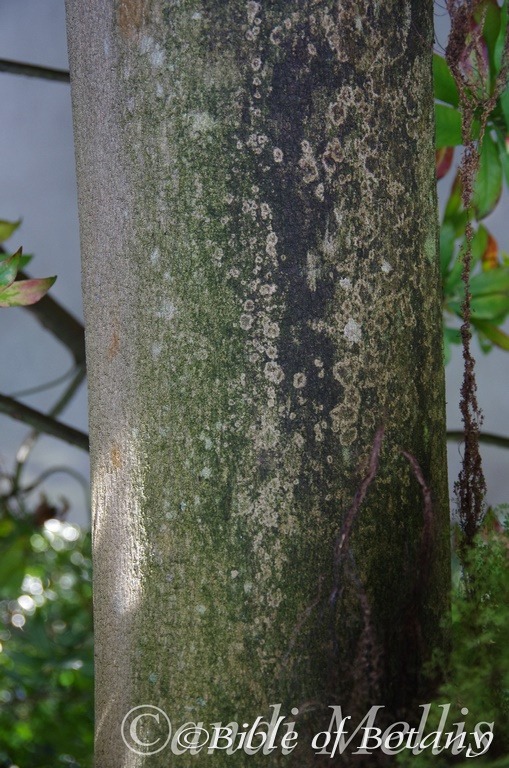
Mount Cootha Botanic Gardens Qld.
Melicope micrococca
Classification:
Unranked: Eudicots
Unranked: Rosids
Class: Sub Class
Order: Sapindales
Family: Rutaceae
Genus: From Méli/Méllis/Méllissa, which are Ancient Greek for honey, sweet or pleasant or Mellifluus, which is Latin for flowing with honey or the colour of honey and Kope which is Ancient Greek for a division. It refers to the four large glands, which divide the Ovaries into four sections.
Specie: From Mikros, which is Ancient Greek for small or very small and Kokkos, which is Ancient Greek for a berry. It refers to Cocca, the individual pods, which are smaller than other species in the genus.
Sub species:
Common Name: Hairy leaved Doughwood or White Evodia.
Distribution:
Melicope micrococca is found south from the Watalgin State Forest near Bundaberg in central eastern Queensland to the Shoalhaven River in central eastern New South Wales. It is found on the western side, on and east of the Great Dividing Range to the coast.
In Northern Queensland on Cape York Peninsula it is found on the Pascoe and Leichardt Rivers, Cape Melville National Park and Tolga on the Atherton Tableands.
https://avh.ala.org.au/occurrences/search?taxa=Melicope+micrococca#tab_mapView
Habitat Aspect Climate:
Melicope micrococca prefers light dappled shade to full shade. It grows adjacent to warm well-developed rainforests, warm tropical rainforests, sub-tropical rainforests or moist gallery forests. The altitude ranges from 20 meter ASL to 780 meters ASL.
The temperatures range from 3 degrees in August to 40 degrees in January.
The rainfall ranges from lows of 800mm to an average of 2800mm.
Soil Requirements:
Melicope micrococca prefers better quality fine sandy loams to medium clays. The soils are usually derived from accumulated sandstone laterites or shale deposited as alluvial deposits. The soils pH ranges from 5.5pH to 7pH. It does not tolerate waterlogged soils. Non saline soils to moderately saline soils are tolerated.
Height & Spread:
Wild Plants: 20m to 27m by 9m to 12m.
Characteristics:
Melicope micrococca’s main trunk and branches are pale grey-brown, thick and corky. The bole of the trunk is about a third to a quarter the height on a mature tree. The branchlets stems are grey, corky and scabrous. The leaf scars from old leaves are distinctly visible towards the ends of the branchlets. The terete immature stems are olive-green and sparsely to moderately covered in soft, white pulverulent hairs or at times glabrous. The trunk and larger branches are often mottled in green and blue greens of mosses and lichens which will grow there. The trunk is flanged especially near the base even on small trees.
Melicope micrococca’s opposite leaves are tripinate and measure 30mm to 130mm by 70mm to 220mm in width. The leaflets are obovate to oblong-obovate and measure 25mm to 130mm in length by 12mm to 50mm in width. The middle leaflet is the longer than the 2 lateral leaflets. The petiole and petiolules are olive-green and sparsely to moderately covered in soft, white pulverulent hairs or at times glabrous. The petioles 10mm to 95mm in length while the terminal petiolule measures 3mm to 13mm in length and the lateral petiolules are usually absent or at times measure 1mm to 2mm in length.The bases are cuneate to attenuate while the apexes are bluntly acuminate. The concolourous laminas are symmetrical to slightly asymmetrical, mid green, dull, glabrous and covered in small oil dots on the upper laminas while the lower laminas are sparsely to moderately covered in soft, white pulverulent hairs or at times glabrous. The laminas decurve downwards close to the margins and decurve gently downwards on the apical half. The laminas are slightly raised between the main vein and the lateral veins on the upper laminas while the margins are entire. The mid vein is strongly prominent on the lower lamina and is distinctly visible on the upper lamina being paler than the lamina. The crushed leaves have a slightly sweet aromatic scent. The leaves turn bright yellow when they fall from the tree.
The inflorescence of Melicope micrococca is a dense pannicle born from the lower leaf axils and along the branches on the corky sections. There are 9 to 45 individual flowers in a panicle. The panicles measure 30mm to 80mm in length by 40mm to 60mm diameter. The peduncle, rachises and pedicels are olive-green and sparsely to moderately covered in soft, white pulverulent hairs or at times glabrous. The peduncles measures 8mm to 12mm in length while the rachises measure 20mm to 28mm in length and the pedicels measure 3mm to 4mm in length. The 4 ovate sepals are green and sparsely covered in fine, soft, white puberulent hairs. The sepals measure 1mm to 1.5mm in length. The 4 white or white petals tinged pale pink near the broad acute apex measure 3mm to 4mm in length by 2mm to 3mm in width. The petals never fully open instead split and remain almost closed.
The 4 white stamens are adjacent to the petals and are glabrous. The filaments measure 4mm to 5mm in length. They emerge from the slits between the petals. The white spherical anthers measure 0.5mm to 1mm in length.
The glabrous, white style has a white stigma and measures 4mm to 5mm in length. The flowers appear from mid December to early April.
Melicope micrococca’s fruits are ovoidal, 4 chambered cocci. The cocci are deep green and turn fawn and are moderately covered in white pulverulent hairs. The petals are persistent at the base of the ripe cocci. The individual cocci measure 4mm to 6mm in length by 4mm to 6mm in diameter. The 3 or 4 round seeds are deep grey to black, glabrous and glossy measure 3mm to 4mm in diameter. The aril completely surrounds the small black shinny pitted seeds.
Wildlife:
Melicope micrococca’s flowers are visited by over 20 different specie of butterflies, plus beetles, wasps and native bees. The leaves are the main food source for the Ulysses butterfly in northern Queensland. (Papilio ulysses). Because the flowers attract so many insects the trees are a favourite haunt for many small insectivorous birds like Robins, Thornbills, Warblers and even honeyeaters during the breeding season who feed their young mainly on insects for protein. The sticky seeds are spread by pigeons that eat the seeds. What seeds are not eaten stick to the bird’s feathers and are deposited far away from the parent tree for germination.
Cultivation:
Melicope micrococca makes an excellent shade tree for understory shrubs that prefer light filtered light. They always look green and fresh especially where adequate ground moisture is retained in the soil. It is very suitable on sandy to heavy clay soils and are most suitable for small medium and large gardens close to the coast in warm temperate, sub-tropical or tropical gardens. As garden subjects they will grow from 12 meters to 15 meters in height by 7 meters to 9 meters diameter when grown in the open.
It is cold tolerant to temperatures as low as minus 2 degrees once established but should be protected from all frosts until they reach 3 meters or 4 meters in height.
It is best used as a small park tree, placed in the background or planted centrally as a small feature tree in smaller gardens. Placed at the rear of a bush garden their striking display of flowers and perfume will draw your attention so that you will want to investigate further. Plants with small white, pink or lavender flowers and large leaves can be used in the midground while small white, pink or mauve flowering prostrate shrubs are best in the front.
Placed on the edge of a rainforest garden they will develop quickly. The trees are suitable for all orchids and epiphytic ferns especially those that prefer brighter conditions. In a rainforest situation they will also support many different varieties of lichens and mosses.
Propagation:
Seeds: Melicope micrococca seeds need to be treated before sowing to assist in more even germination. Seeds need to be placed in a small calico bag or sock. Place this in with the weekly washing cycle. Allow to dry and repeat the following week. Now place the seeds in a glass of water which has had a pinch of bi carb of soda added. Let them soak for 24 hours. Change the water and add half a tea spoon of vinegar to the water and allow them to soak for 24 hours. Rinse the seeds. Now the seeds can be sown into a seed raising mix. Cover the seeds with 2mm to 3mm of fine weed free mulch and keep moist. Place the tray in a warm sunny position. When the seedlings are 30mm to 50mm tall, prick them out and plant them into 50mm native tubes using a good organic mix. Despite the above techniques germination is still erratic and slow.
Once the seedlings reach 100mm to 150mm in height they can be planted out into their permanent position.
Fertilize using seaweed, fish emulsion or organic chicken pellets soaked in water on an alternate basis. Fertilize every two months until the plants are established then twice annually in early September or March to maintain health, vitality and better flowering.
Further Comments from Readers:
Hi reader, it seems you use The Bible of Botany a lot. That’s great as we have great pleasure in bringing it to you! It’s a little awkward for us to ask, but our first aim is to purchase land approximately 1,600 hectares to link several parcels of N.P. into one at The Pinnacles NSW Australia, but we need your help. We’re not salespeople. We’re amateur botanists who have dedicated over 30 years to saving the environment in a practical way. We depend on donations to reach our goal. If you donate just $5, the price of your coffee this Sunday, We can help to keep the planet alive in a real way and continue to bring you regular updates and features on Australian plants all in one Botanical Bible. Any support is greatly appreciated. Thank you.
In the spirit of reconciliation we acknowledge the Bundjalung, Gumbaynggirr and Yaegl and all aboriginal nations throughout Australia and their connections to land, sea and community. We pay our respect to their Elders past, present and future for the pleasures we have gained.
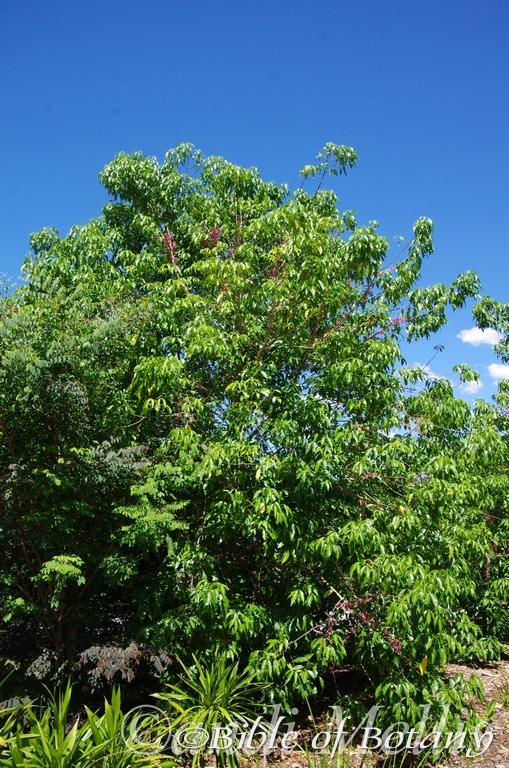
Mount Cootha Botanic Gardens Qld.
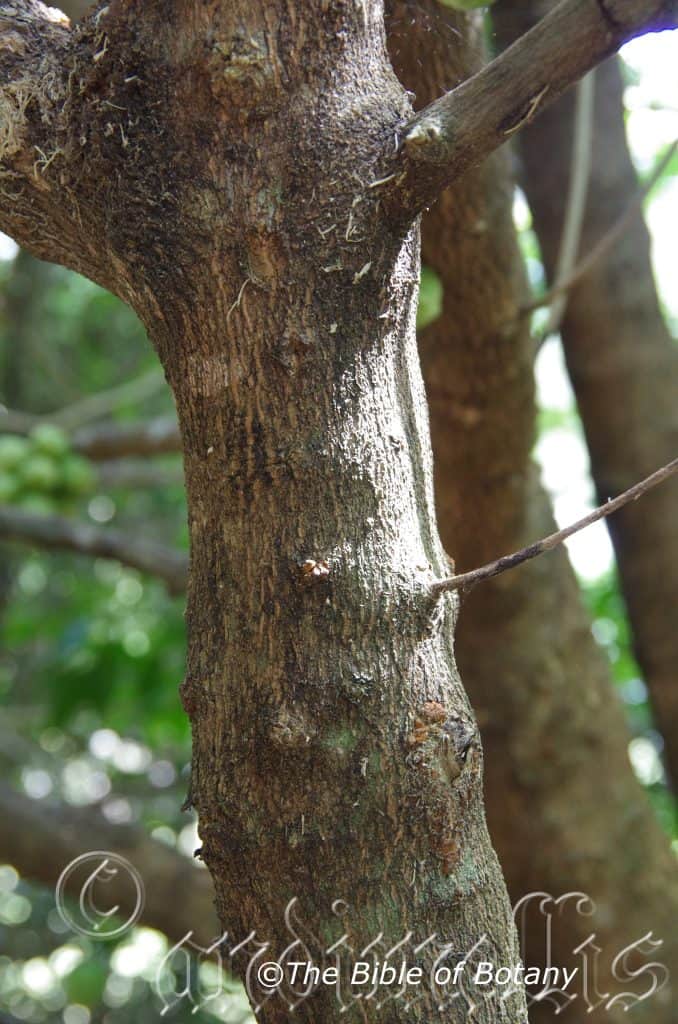
NCBG Coffs Harbour NSW
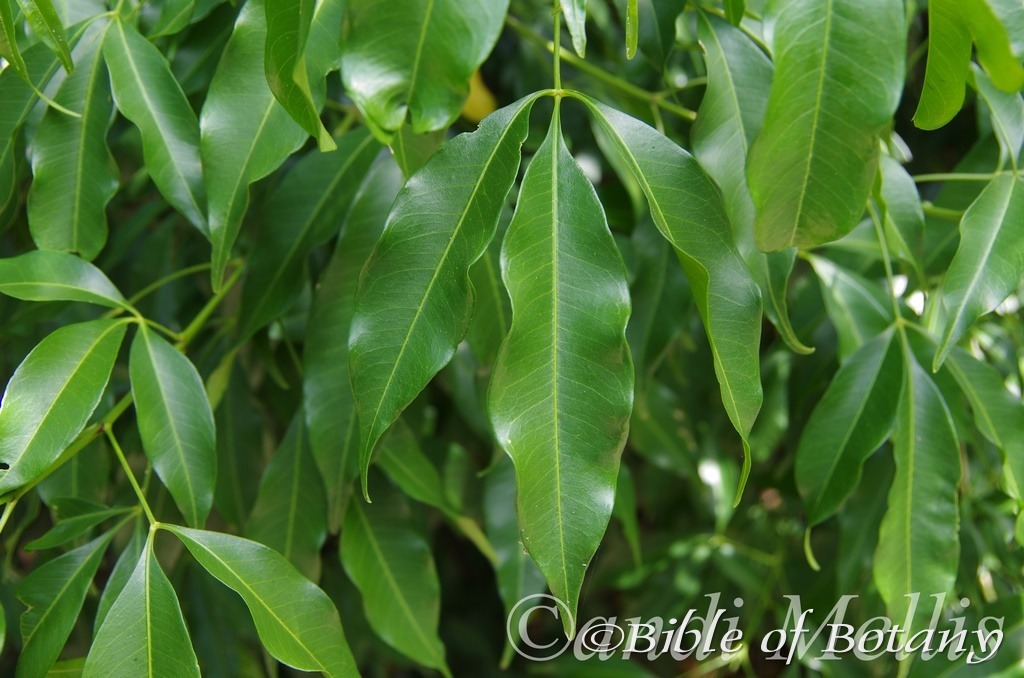
NCBG Coffs Harbour NSW
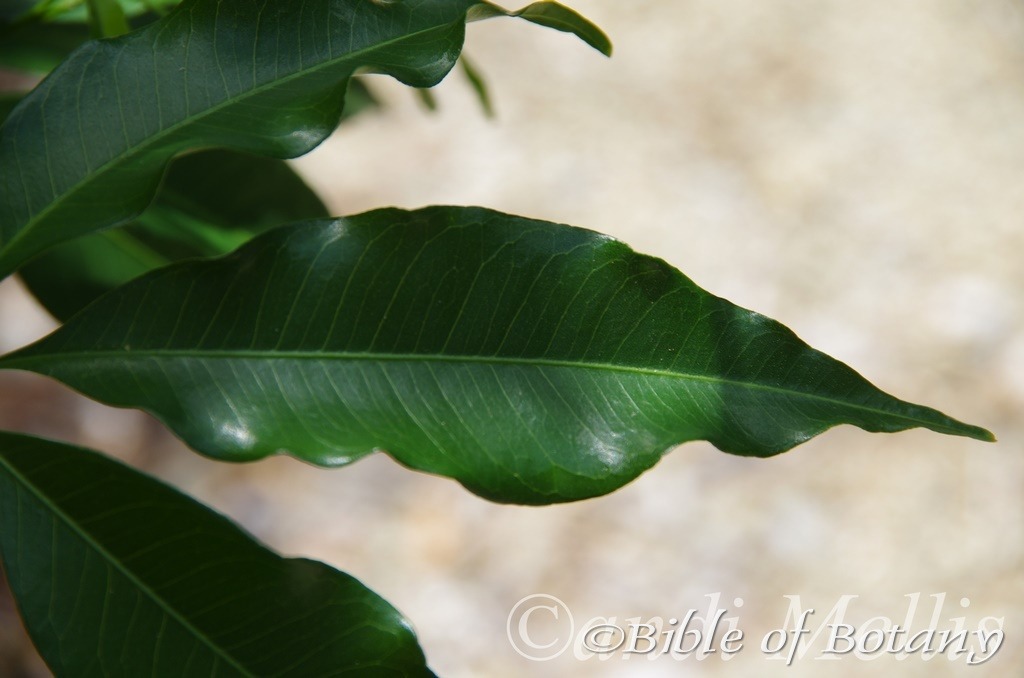
NCBG Coffs Harbour NSW
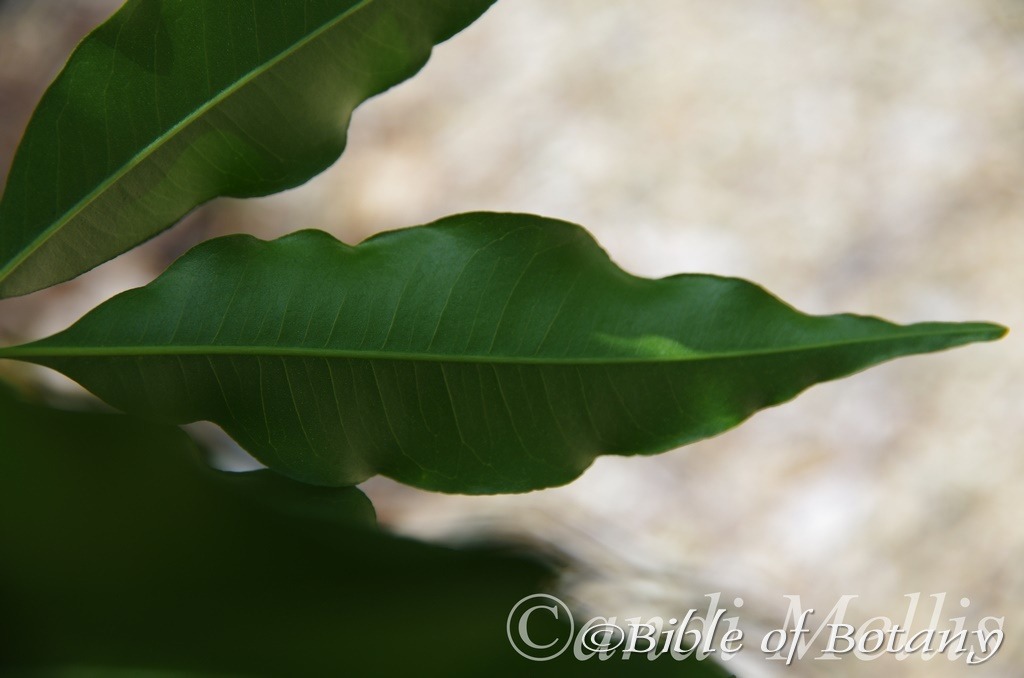
NCBG Coffs Harbour NSW
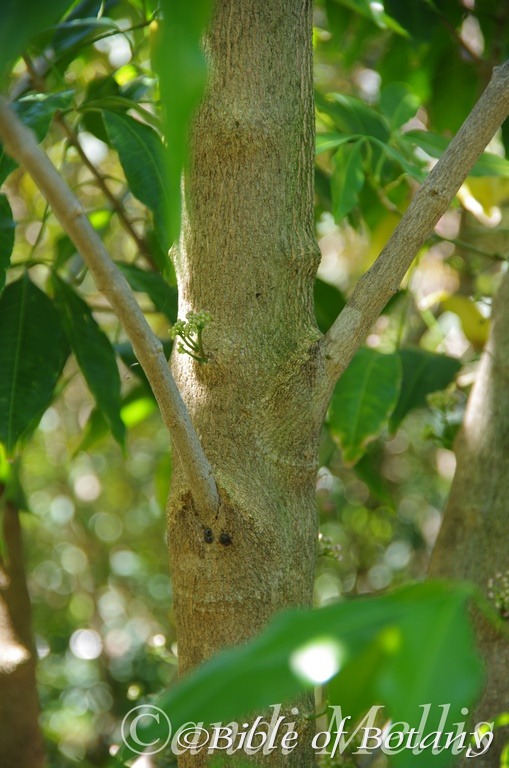
Mount Cootha Botanic Gardens Qld.

Mount Cootha Botanic Gardens Qld.
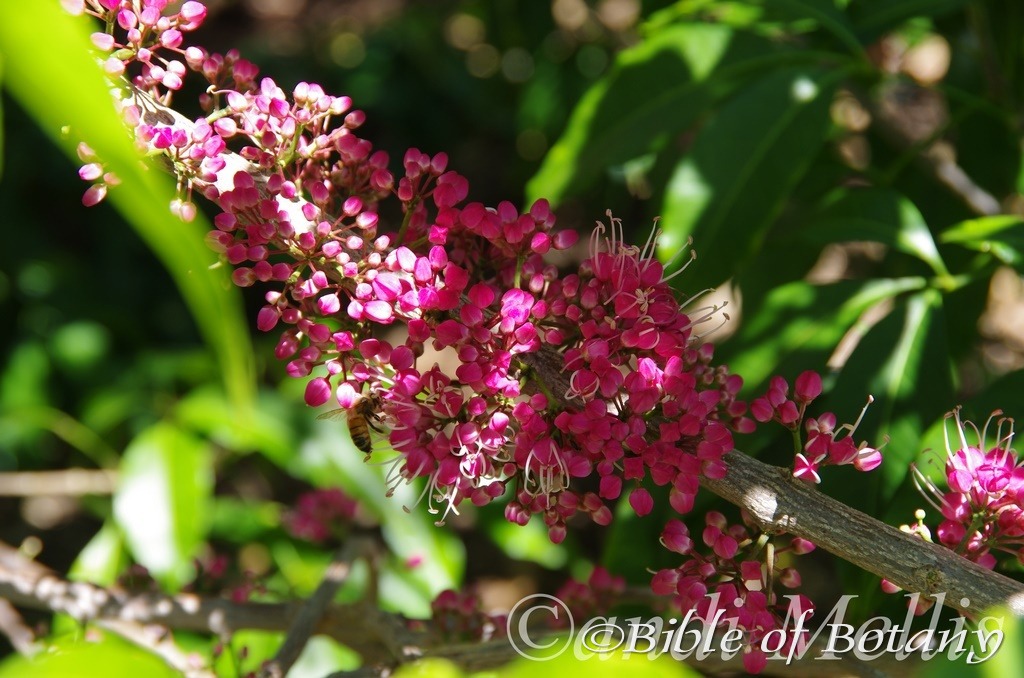
Mount Cootha Botanic Gardens Qld.
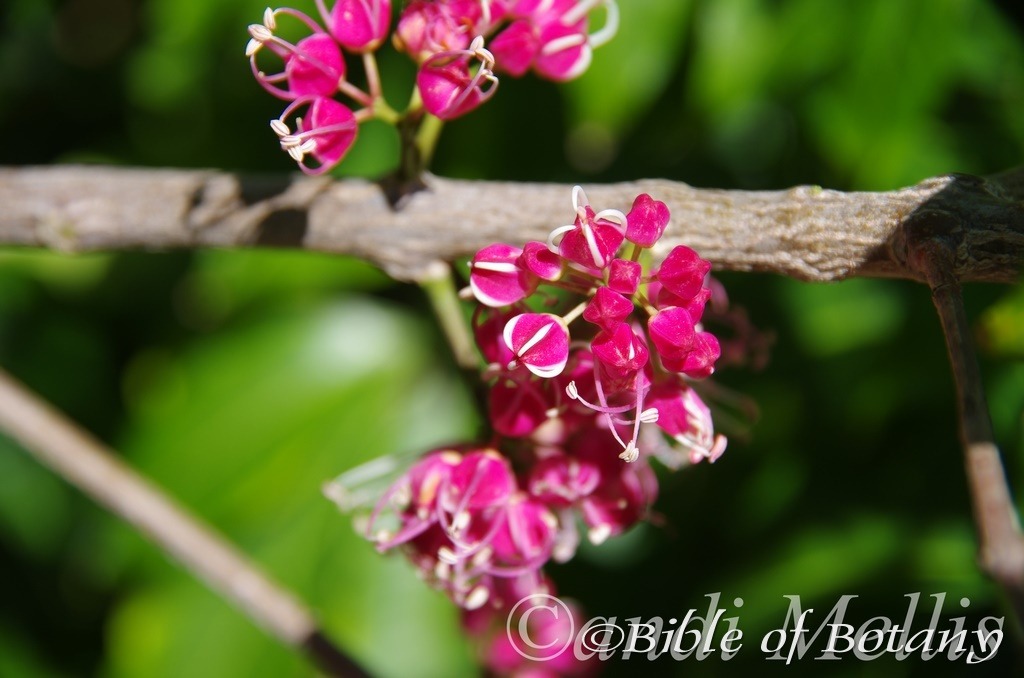
Mount Cootha Botanic Gardens Qld.
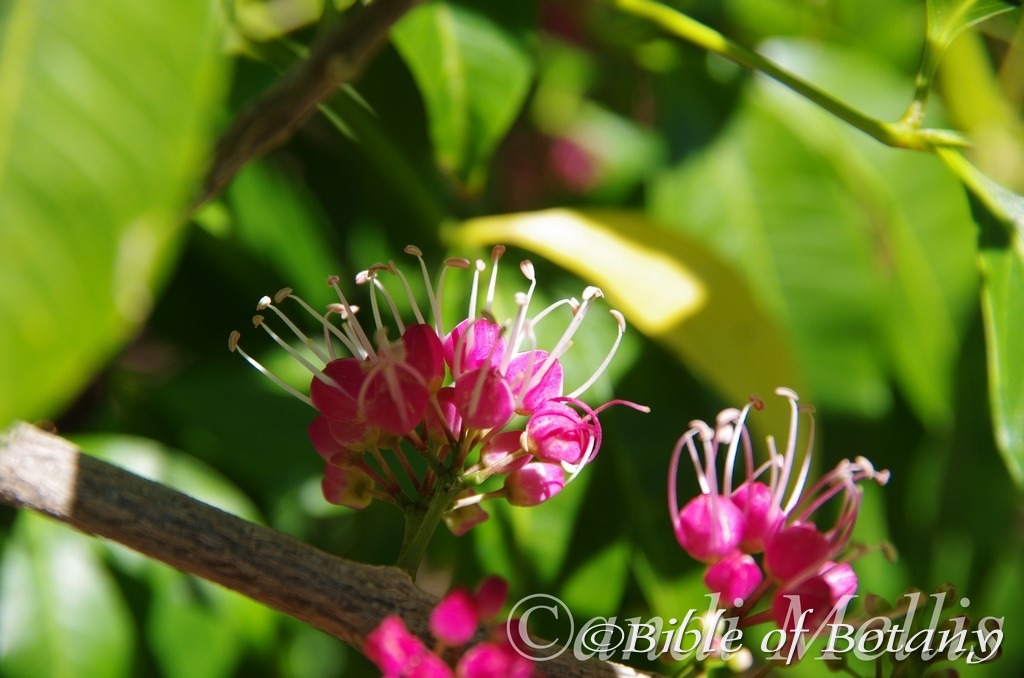
Mount Cootha Botanic Gardens Qld.
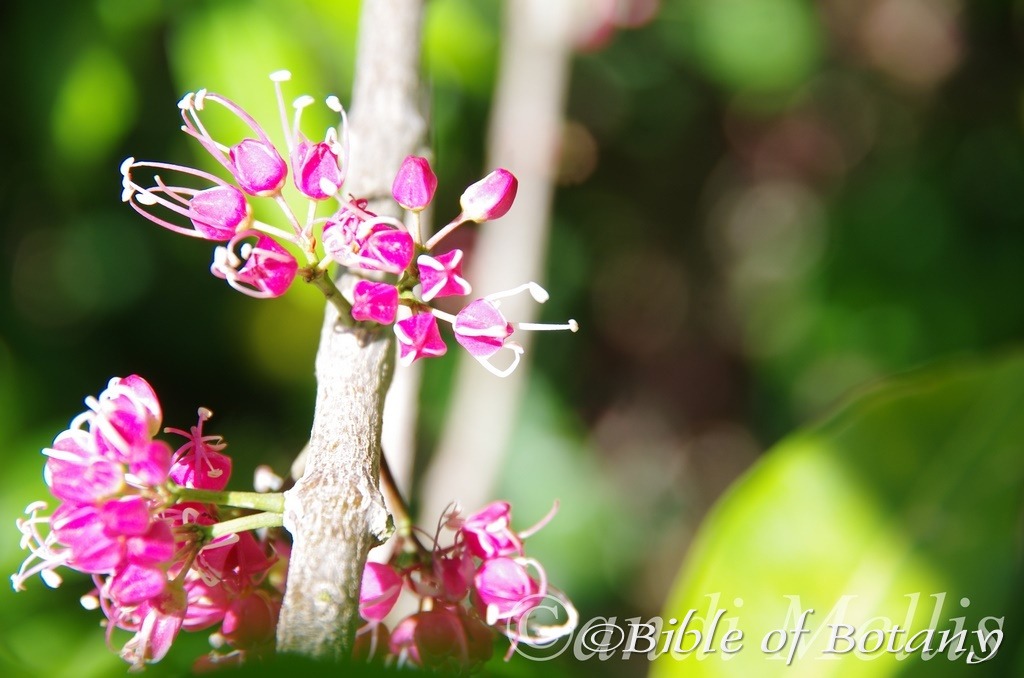
Mount Cootha Botanic Gardens Qld.
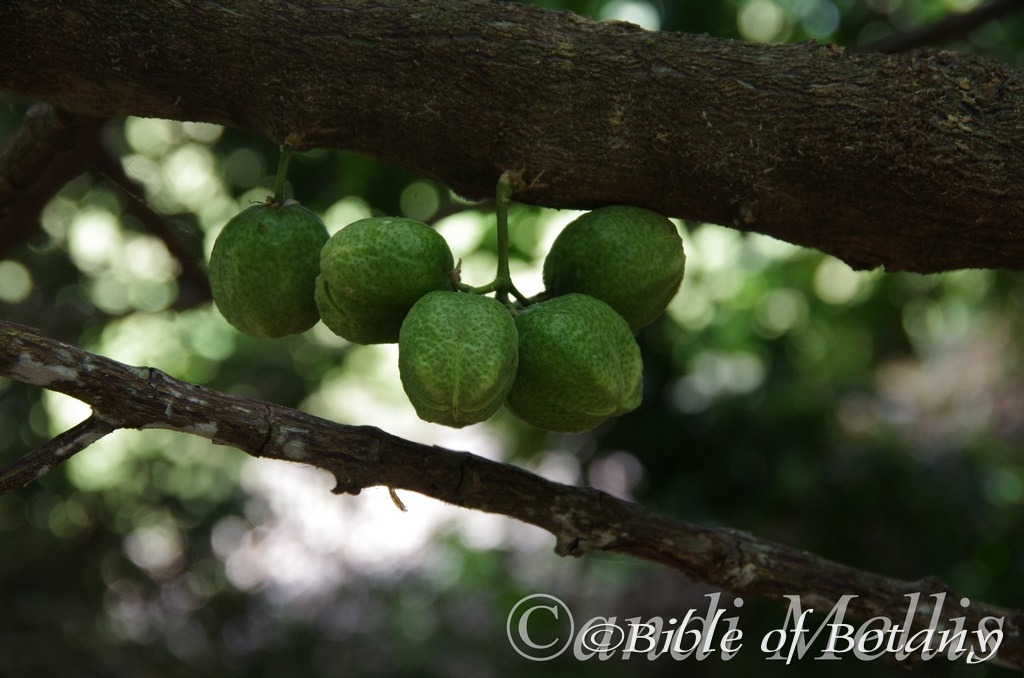
NCBG Coffs Harbour NSW
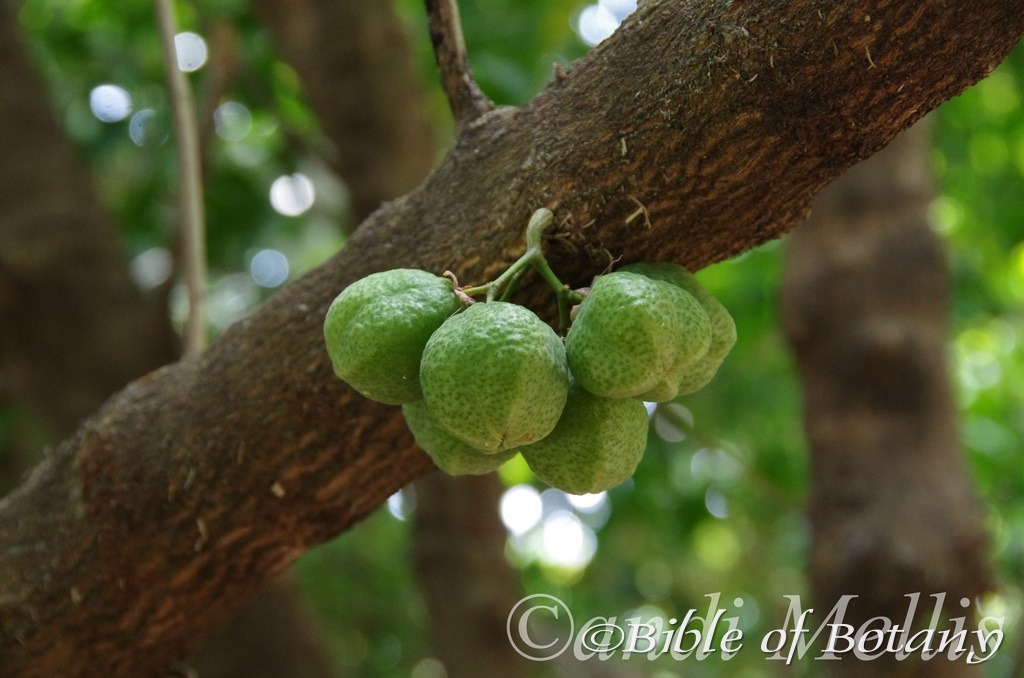
NCBG Coffs Harbour NSW
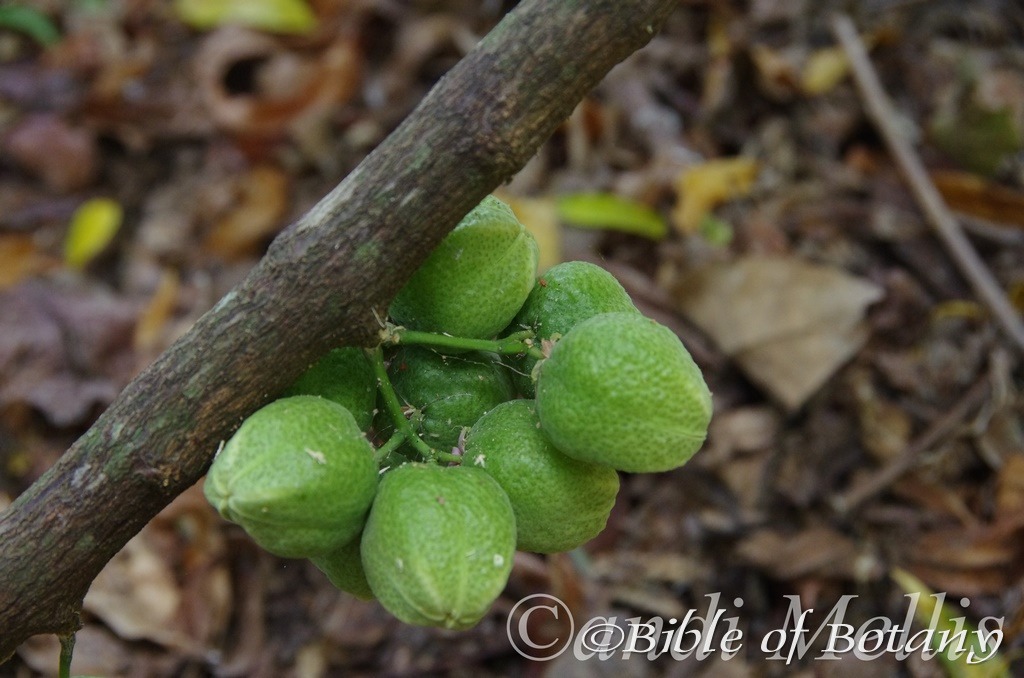
NCBG Coffs Harbour NSW
Melicope rubra
Classification:
Unranked: Eudicots
Unranked: Rosids
Class: Sub Class
Order: Sapindales
Family: Rutaceae
Genus: From Méli/Méllis/Méllissa, which are Ancient Greek for honey, sweet or pleasant or Mellifluus, which is Latin for flowing with honey or the colour of honey and Kope which is Ancient Greek for a division. It refers to the four large glands, which divide the Ovaries into four sections.
Specie: From Rubra, which is Latin for red, Ruddy or reddish. It usually refers to flowers, which are reddish in colour or are a deeper shade of pink than other species in the genus.
Common Name: Mueller’s Evodia; Little Evodia
Distribution:
Melicope rubra is found south from Lankelly Creek to the Herbert Range in far north eastern coastal Queensland. It is found on and east of the Great Dividing Range to the coast.
It is also found extensively in New Guinee.
https://avh.ala.org.au/occurrences/search?taxa=Melicope+micrococca#tab_mapView
Habitat Aspect Climate:
Melicope rubra prefers light dappled shade to full shade. It grows adjacent to warm well-developed rainforests, in dry rainforests, moist gallery forests or at times in vine forests. The altitude ranges from 5 meter ASL to 900 meters ASL.
The temperatures range from 8 degrees in August to 40 degrees in January.
The rainfall ranges from lows of 1600mm to an average of 3600mm.
Soil Requirements:
Melicope rubra prefers better quality fine sandy loams to medium clays. The soils are usually derived from decomposed black basalt, granite or at times accumulated peaty sandstone laterites or shale deposited as alluvial deposits. The soils pH ranges from 5.5pH to 7.5pH. It does not tolerate waterlogged soils but prefers soils which maintain soil moisture for prolonged periods. Non saline soils to moderately saline soils are tolerated.
Height & Spread:
Wild Plants: 20m to 33m by 9m to 12m but is most often much shorter.
Characteristics:
Melicope rubra’s main trunk and branches are pale grey-brown, thick and corky. The bole of the trunk is about a third to a quarter the height on a mature tree. The branchlets stems are grey, corky and scabrous. The leaf scars from old leaves are distinctly visible towards the ends of the stems. The terete immature stems are grass green and glabrous. The trunk and larger branches are often mottled in green and blue greens of mosses and lichens which will grow there. The trunk is flanged especially near the base even on small trees.
Melicope rubra’s opposite leaves are tripinnate. The obovate to oblong-obovate leaflets measure 55mm to 115mm by 15mm to 40mm in width. The terete petiole and petiolules are glabrous. The petiole has a channel on the upper side and measure 13mm to 28mm in length, the lateral petiolules measure 2mm to 5mm in length, while the terminal petiolule measures 3mm to 7mm in length. The bases are cuneate to attenuate while the apexes are acuminate. The concolourous laminas are symmetrical, mid grass green, semi glossy to glossy, glabrous and covered in minute oil dots. The laminas are undulating, while the margins are entire. The main vein is slightly prominent on the upper lamina and is more pronounced on the lower lamina, while the lateral veins are slightly prominent on the lower lamina and form loops well inside the margin. The crushed leaves have a slightly sweet aromatic scent.
The inflorescence of Melicope rubra is a dense panicle born cauliflorous along the branches on the corky sections. There are 9 to 25 individual flowers on a panicle. The panicles measure 30mm to 45mm in length by 30mm to 45mm diameter. The peduncle and rachises are olive-green and very sparsely covered in soft, white pubescent hairs or rarely glabrous, while the pedicels are pink to deep pinkish-red. The peduncles measures 5mm to 6mm in length while the rachises measure 2mm to 4mm in length and the pedicels measure 5mm to 6mm in length. The 4 orbicular sepals are deep pink and sparsely covered in fine, soft, white pubescent hairs. The sepals measure 1.5mm to 2mm in length. The 4 deep pink to crimson-pink petals are glabrous or very sparsely covered in white pubescent hairs external and are white and densely covered in white pubescent hairs internally. The broad acute petals remain almost closed even after anthesis and measure 5mm to 7.5mm in length.
The 4 white stamens are adjacent to the petals and are mainly glabrous though they become more crimson-pink and moderately covered in white pubescent hairs towards the base. The filaments measure 9mm to 15mm in length. They emerge from the slits between the petals. The white linear anthers measure 1.5mm to 2mm in length.
The white style is densely covered in white pubescent hairs on the basal half and measures 8mm to 10mm in length. The 8 lobed disc is continuous and densely covered in white, pubescent surrounding the base of the ovary, which is also densely covered in white, pubescent hairs. The flowers appear from early November to early December.
Melicope rubra’s fruits are ovoidal, 8 chambered cocci. The cocci are green and turn fawn and are profoundly rugose and covered in oil glands. The petals are persistent at the base of the ripe cocci. The individual cocci measure 25mm to 30mm in length by 20mm to 25mm in diameter. The 3 or 4 oblong, black, glabrous seeds are glossy and measure 5mm to 6mm in in length by 3mm to 4mm in diameter. The white aril completely surrounds the seeds.
Wildlife:
Melicope rubra’s flowers are visited by over 20 different specie of butterflies, plus beetles, wasps and native bees.
The leaves are the main food source for the Ulysses butterfly in northern Queensland. (Papilio ulysses). Because the flowers attract so many insects the trees are a favourite haunt for many small insectivorous birds like Robins, Thornbills, Warblers and even honeyeaters during the breeding season who feed their young mainly on insects for protein.
The sticky seeds are spread by pigeons that eat the seeds. What seeds are not eaten stick to the bird’s feathers and are deposited far away from the parent tree for germination.
Cultivation:
Melicope rubra makes an excellent shade tree for understory shrubs that prefer light filtered light. They always look green and fresh especially where adequate ground moisture is retained in the soil. It is very suitable on sandy to heavy clay soils and are most suitable for small medium and large gardens close to the coast in warm temperate, sub-tropical or tropical gardens. As garden subjects they will grow from 12 meters to 15 meters in height by 7 meters to 9 meters diameter when grown in the open.
It is cold tolerant to temperatures as low as minus 2 degrees once established but should be protected from all frosts until they reach 3 meters or 4 meters in height.
It is best used as a small park tree, placed in the background or planted centrally as a small feature tree in smaller gardens. Placed at the rear of a bush garden their striking display of flowers and perfume will draw your attention so that you will want to investigate further. Plants with small white, pink or lavender flowers and large leaves can be used in the midground while small white, pink or mauve flowering prostrate shrubs are best in the front.
Placed on the edge of a rainforest garden they will develop quickly. The trees are suitable for all orchids and epiphytic ferns especially those that prefer brighter conditions. In a rainforest situation they will also support many different varieties of lichens and mosses.
Propagation:
Seeds: Melicope rubra’s seeds need to be treated before sowing to assist in more even germination. Seeds need to be placed in a small calico bag or sock. Place this in with the weekly washing cycle. Allow to dry and repeat the following week. Now place the seeds in a glass of water which has had a pinch of bi carb of soda added. Let them soak for 24 hours. Change the water and add half a tea spoon of vinegar to the water and allow them to soak for 24 hours. Rinse the seeds. Now the seeds can be sown into a seed raising mix. Cover the seeds with 2mm to 3mm of fine weed free mulch and keep moist. Place the tray in a warm sunny position. When the seedlings are 30mm to 50mm tall, prick them out and plant them into 50mm native tubes using a good organic mix. Despite the above techniques germination is still erratic and slow.
Once the seedlings reach 100mm to 150mm in height they can be planted out into their permanent position.
Fertilize using seaweed, fish emulsion or organic chicken pellets soaked in water on an alternate basis. Fertilize every two months until the plants are established then twice annually in early September or March to maintain health, vitality and better flowering.
Further Comments from Readers:
Hi reader, it seems you use The Bible of Botany a lot. That’s great as we have great pleasure in bringing it to you! It’s a little awkward for us to ask, but our first aim is to purchase land approximately 1,600 hectares to link several parcels of N.P. into one at The Pinnacles NSW Australia, but we need your help. We’re not salespeople. We’re amateur botanists who have dedicated over 30 years to saving the environment in a practical way. We depend on donations to reach our goal. If you donate just $5, the price of your coffee this Sunday, We can help to keep the planet alive in a real way and continue to bring you regular updates and features on Australian plants all in one Botanical Bible. Any support is greatly appreciated. Thank you.
In the spirit of reconciliation we acknowledge the Bundjalung, Gumbaynggirr and Yaegl and all aboriginal nations throughout Australia and their connections to land, sea and community. We pay our respect to their Elders past, present and future for the pleasures we have gained.
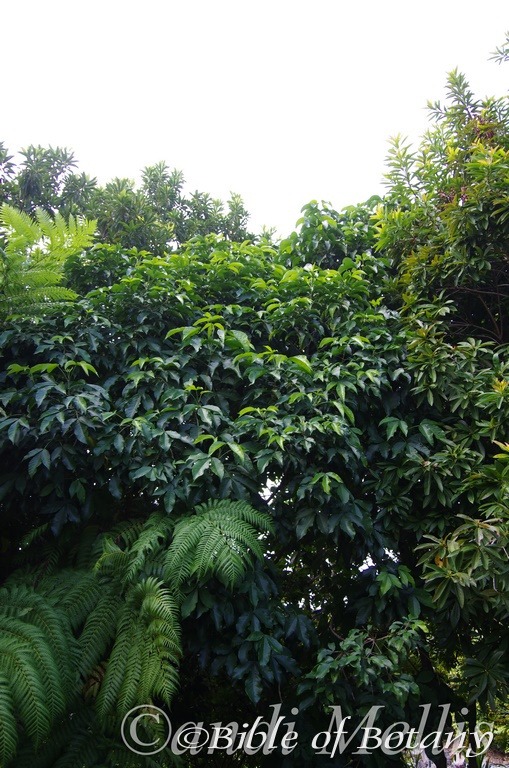
Mount Cootha Botanic Gardens Qld.

Mount Cootha Botanic Gardens Qld.
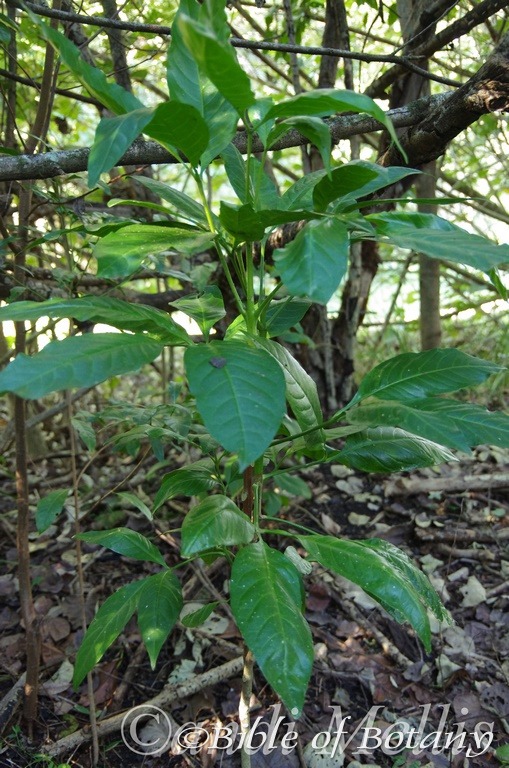
LBG Lismore NSW

LBG Lismore NSW
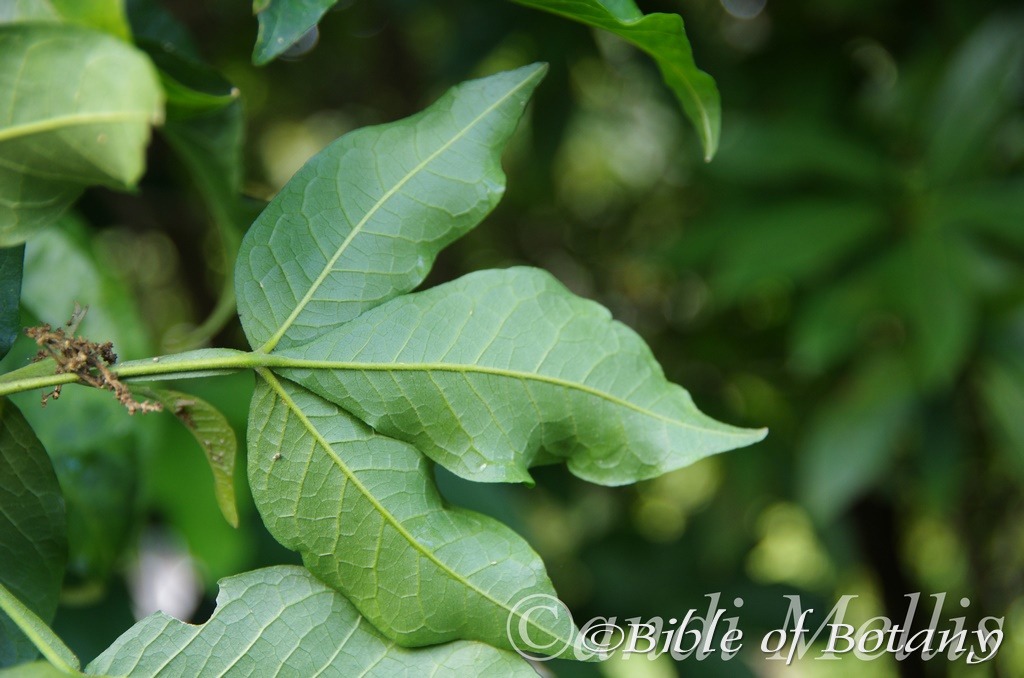
Mount Cootha Botanic Gardens Qld.
Melicope vitiflora
Classification:
Unranked: Eudicots
Unranked: Rosids
Class: Sub Class
Order: Sapindales
Family: Rutaceae
Genus: From Méli/Méllis/Méllissa, which are Ancient Greek for honey, sweet or pleasant or Mellifluus, which is Latin for flowing with honey or the colour of honey and Kope which is Ancient Greek for a division. It refers to the four large glands, which divide the Ovaries into four sections.
From Vitis, which is Latin for a vine, in particular a grape vine and From Floros, which is Ancient Greek for a flower or Flos, which is Roman for the Goddess of spring and flowers. It refers to plants that have larger or a more notable flower/s than other species in the genus and which somewhat can resemble a grape flower.
Common Name: Leatherwood, Toothache Tree, Northern Sperm-wood, Northern Evodia, Northern Doughwood; Fishpoison Wood; Fish Poison-wood, Coast Euodia, Doughwood, Northern, Leatherjacket, Northern Euodia.
Distribution:
Melicope vitiflora is found south from McIlwraith Range in far north eastern coastal Queensland to Broken Head in far north eastern New South Wales. It is found on and east of the Great Dividing Range to the coast.
It is also found in New Guinee.
https://avh.ala.org.au/occurrences/search?taxa=Melicope+vitiflora#tab_mapView
Habitat Aspect Climate:
Melicope vitiflora prefers light dappled shade to full shade. It grows adjacent to warm well-developed rainforests, in dry rainforests, moist gallery forests or at times in vine forests. The altitude ranges from 5 meters ASL to 1,100 meters ASL.
The temperatures range from 4 degrees in August to 36 degrees in January.
The rainfall ranges from lows of 800mm to an average of 3600mm.
Soil Requirements:
Melicope vitiflora prefers better quality fine sandy loams to medium clays. The soils are usually derived from decomposed black or red basalts. The soils pH ranges from 5.5pH to 7.5pH. It does not tolerate waterlogged soils but prefers soils which maintain soil moisture for prolonged periods. Non saline soils to moderately saline soils are tolerated.
Height & Spread:
Wild Plants: 20m to 40m by 10m to 18m but is most often much shorter.
Characteristics:
Melicope vitiflora’s main trunk and branches are pale grey, thick and corky. The bole of the trunk is about a third to a quarter the height on a mature tree. The branchlets stems are grey, corky and scabrous. The leaf scars from old leaves are distinctly visible towards the ends of the stems. The terete immature stems are grass green and glabrous. The trunk is flanged near the base.
Melicope vitiflora’s opposite leaves are tripinnate. The ovate to elliptical leaflets measure 90mm to 200mm by 35mm to 75mm in width, with the terminal leaflet being the longest. The terete petiole is winged and measures 20mm to 160mm in length, the lateral petiolules measure 2mm to 12mm in length, while the terminal petiolule measures 7mm to 25mm in length. The bases are narrow cuneate, while the apexes are long acute. The concolourous to slightly discolourous laminas are symmetrical, mid grass green, semi glossy to glossy, glabrous. The laminas are flat to undulating, while the margins are entire. The main vein strongly prominent on the lower lamina, while the lateral veins are strongly prominent on the lower lamina and form loops well inside the margin.
The inflorescence of Melicope vitiflora is a dense panicle born from the leaf axis and measure 60mm to 150mm in diameter. The flowers are bisexual, male or female, or the plants can be dioecious, with the male or females flowers on separate trees. The peduncle and rachises are olive-green and very sparsely covered in soft, white pubescent hairs or rarely glabrous, while the pedicels are pink to deep pinkish-red. The peduncles measures 5mm to 6mm in length while the rachises measure 2mm to 4mm in length and the pedicels measure 5mm to 6mm in length. The 4 pale green, ovate to triangular sepals measure 0.6mm to 1 mm in length and are united at the base. The ovate to broad linear petals have a broad acute apex and measure 1.5 to 3mm in length.
The 4 white, glabrous stamens are adjacent to the petals. The filaments measure 0.8mm to 2mm in length. The white globose anthers measure 0.3mm to 0.4mm in length.
The glabrous, green style measures 1.5mm to 2mm in length. The 4 lobed disc is continuous and is deep green and surrounds the base of style. The flowers appear from October to early January.
Melicope vitiflora'[s fruits are ovoidal, 4 chambered cocci. The cocci are green and turn fawn and are rugose. The individual cocci measure 5mm to 7mm in length.
Wildlife:
Melicope vitiflora’s wildlife is unknown to the author.
Cultivation:
Melicope vitiflora makes an excellent shade tree for understory shrubs that prefer light filtered light. It always looks green and fresh especially where adequate ground moisture is retained in the soil. It is very suitable on sandy loams to heavy clay soils and are most suitable for larger gardens close to the coast, to high in the mountains in warm temperate, sub-tropical or tropical gardens. As garden subjects they will grow from 15 meters to 20 meters in height by 10 meters to 15 meters in diameter when grown in the open.
It is best used as a medium park tree, placed in the background or planted centrally as a small feature tree in larger gardens.
Placed on the edge of a rainforest garden it will develop quickly. The trees are suitable for all orchids and epiphytic ferns especially those that prefer brighter conditions. In a rainforest situation it will also support many different varieties of lichens and mosses.
Propagation:
Seeds: Melicope vitiflora'[s seeds need to be treated before sowing to assist in more even germination. Seeds need to be placed in a small calico bag or sock. Place this in with the weekly washing cycle. Allow to dry and repeat the following week. Now place the seeds in a glass of water which has had a pinch of bi carb of soda added. Let them soak for 24 hours. Change the water and add half a tea spoon of vinegar to the water and allow them to soak for 24 hours. Rinse the seeds. Now the seeds can be sown into a seed raising mix. Cover the seeds with 2mm to 3mm of fine weed free mulch and keep moist. Place the tray in a warm sunny position. When the seedlings are 30mm to 50mm tall, prick them out and plant them into 50mm native tubes using a good organic mix. Despite the above techniques germination is still erratic and slow.
Once the seedlings reach 100mm to 150mm in height they can be planted out into their permanent position.
Fertilize using seaweed, fish emulsion or organic chicken pellets soaked in water on an alternate basis. Fertilize every two months until the plants are established then twice annually in early September or March to maintain health, vitality and better flowering.
Further Comments from Readers:
Hi reader, it seems you use The Bible of Botany a lot. That’s great as we have great pleasure in bringing it to you! It’s a little awkward for us to ask, but our first aim is to purchase land approximately 1,600 hectares to link several parcels of N.P. into one at The Pinnacles NSW Australia, but we need your help. We’re not salespeople. We’re amateur botanists who have dedicated over 30 years to saving the environment in a practical way. We depend on donations to reach our goal. If you donate just $5, the price of your coffee this Sunday, We can help to keep the planet alive in a real way and continue to bring you regular updates and features on Australian plants all in one Botanical Bible. Any support is greatly appreciated. Thank you.
In the spirit of reconciliation we acknowledge the Bundjalung, Gumbaynggirr and Yaegl and all aboriginal nations throughout Australia and their connections to land, sea and community. We pay our respect to their Elders past, present and future for the pleasures we have gained.